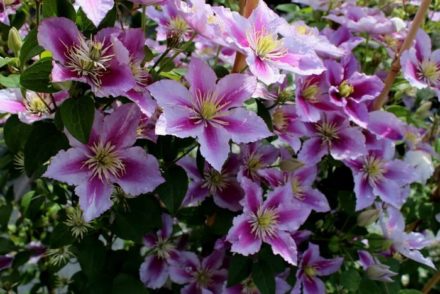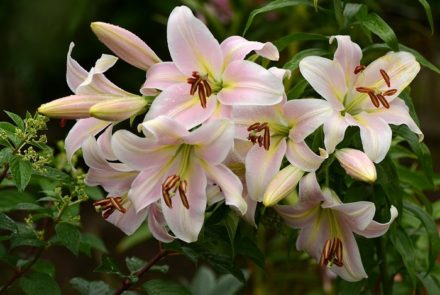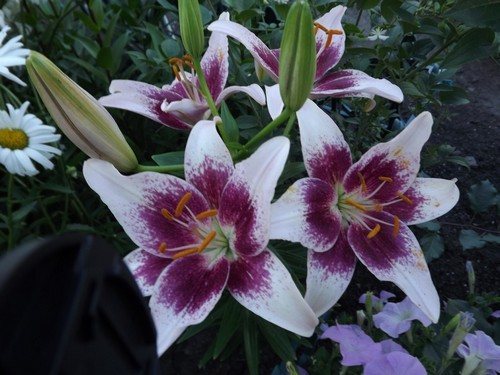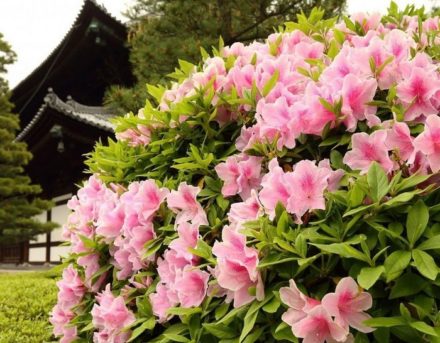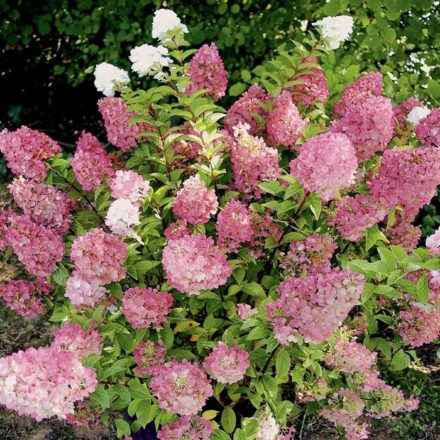Lily is a bulbous perennial that is deservedly popular among gardeners around the world. The high demand for the crop is due not only to its unpretentiousness, but also to the variety of species and varieties, differing in the shade and size of the flowers, and the height of the plant. This allows you to select the most optimal options, taking into account the characteristics of landscape design and climatic conditions of each region. The uniqueness of the lily is also that it can be grown not only in the garden, but also used for forcing at a certain date at home.
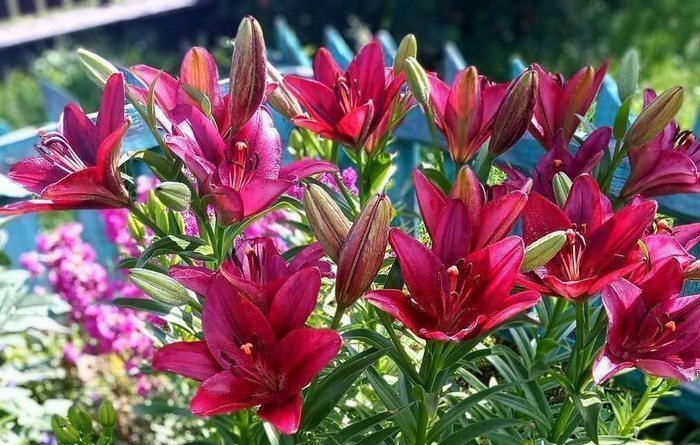
- Botanical description
- Types of Lilies
- The Asiatic Hybrids
- Marlene
- Tango
- Black
- Annamaria Dream
- Elodie
- Navona
- Martagon Hybrids, or Curly Lily Hybrids (The Martagon Hybrids)
- Saranka
- Guinea Gold
- Claude Shride
- Arabian Knight
- Album
- Candidum, or Euro-Caucasian lily hybrids (The Candidum Hybrids)
- White Elf
- Apollo
- Madonna
- White Falcon
- The American Hybrids
- Like Tulare
- Afterglow
- Shuksan
- Cherrywood
- Buttercup
- The Longiflorum Hybrids
- White Elegance
- White Haven
- White Fox
- The Trumpet & Aurelian Hybrids
- African Queen
- Regale
- Pink perfection
- White Planet
- Golden Splendor
- The Oriental Hybrids
- Brazil
- Muscadet
- Salmon star
- Casablanca
- Canberra
- Other hybrids
- LA (LA) - hybrids between long-flowered and Asian
- LO, or longipets - lily hybrids between longiflorum and oriental
- OA hybrids
- OT, orienpet
- MA (MA), (Martasiat Hybrids) - lily hybrids between martagon and asiatic
- AA - lily hybrids from crossing Orleans and asiatic hybrids
- Species lilies
- Henry
- Leopard
- Tiger
- Golden
- Daurian
- Water
- What colors are lilies
- White
- Red
- Yellow
- Pink
- Other
- What varieties are popular in Russia
- Growing lilies at home
- Preparing the soil
- Choosing a location
- Choosing bulbs and a pot
- How to plant a lily in a pot
- Caring for a lily at home
- Temperature
- Humidity
- Watering
- Fertilizer
- Pruning
- What to do when a potted lily has finished blooming
- Growing lilies in open ground
- Choosing a site for growing lilies
- Preparing the soil
- Planting times
- Spring planting
- Autumn planting
- Rules for caring for lilies in open ground
- Watering
- Fertilizer
- How to properly cut flowers
- Transplanting times
- Features of growing after forcing
- Wintering
- Spring processing
- Propagation methods
- Bulbs
- Dividing the nest
- Growing babies
- Storing bulbs
- Stem cuttings
- Air bulbs
- Scale
- Seeds
- What are lily pollen grains and how many of them are formed on a flower
- Growing and care of water lilies
- Planting water lilies
- Wintering and care difficulties
- Diseases
- Botrytis
- Fusarium
- Cercospora
- Anthracnose
- Rhizoctonia
- Phythium
- Blue mold
- Penicillosis
- Cucumber and tobacco mosaic viruses
- Tulip variegation virus
- Rust
- Rosette disease
- Pests
- Spider mite
- Squeaker beetle
- Lilium fly
- Mole cricket
- Maggot larva
- Onion hoverfly
- Wireworm
- Garden snails, slugs
- Preventive measures
- Planting schemes
- Secrets of abundant flowering of lilies
- Lily in landscape design
- Care errors
- Is there any harm
- Signs and superstitions
- Reviews from gardeners
Botanical description
Lily (lat. Lílium) is a genus of perennial herbaceous plants. It got its name from the ancient Greek word “Li-li”, which means white-white. The culture has a long history; images of the flower were discovered on Cypriot frescoes and vases from 1750 BC. e.
The perennial belongs to the Liliaceae family. In many representatives included in it, the underground part is represented by a bare or scaly bulb. And only in some plants growing in North America does it consist of small round tubers. The bulbs can be located deep in the soil or located closer to the surface. A bunch of absorbent root shoots is formed under and above them.
The lily has an erect, rigid stem, ranging from 30 to 180 cm in height. It is actually a continuation of the bottom of the bulb. The stem can be simple or slightly branched at the top, its surface is green or dark purple, covered with thin short light hairs. It contains mostly sessile leaves, and only two types of lilies have petioles.
The leaf blades are linear-lanceolate in shape, their width is 1.5-2 cm, and their length can reach 20 cm. The leaves have a rich green tint, their surface is shiny, from 5 to 7 veins can be seen on it. At the base of the plates at the bottom of the stem, some types of lilies form aerial bulbs that can be used for propagation.
Young seedlings form single flowers, and adult plants are capable of forming from 3 to 40 buds, which are collected in apical umbrella inflorescences.The lily blooms only when the bulb reaches a certain diameter, and before that it gains strength.
The perianths of the lily are funnel-shaped, consisting of 6 free petals with bent tips. At their base there are slits covered with glandular tissue that secretes sweet juice. This helps attract the attention of pollinating insects. In the center there is a pestle on a long column, curved at the top. Around it there are stamens that bear bright red anthers.
The fruit of the lily is an oblong-ovoid capsule, the valves of which open when ripe. Inside there are numerous flat oval seeds covered with a filmy or papery film. They have a brownish tint of varying intensity.
Types of Lilies
Thanks to selection based on species of wild lilies, hybrid forms of the plant were obtained. They are characterized by high decorative properties. But hybrids have differences in endurance and requirements for growing conditions.
In 1949, the English scientist Harold Comber, having studied the characteristics of each species, proposed his own classification of lilies, which made it possible to systematize them. However, it was subsequently revised several times and was finally edited in 2014.
But in order to understand what the difference is between hybrid and species forms of culture, you need to study their features in more detail. This will allow you to choose the most optimal options for growing on personal plots and in your country house.
The Asiatic Hybrids
The most numerous variety of lilies, obtained on the basis of perennials, comes from East Asia. It is characterized by high resistance to adverse external factors. Asian hybrids are adapted to harsh winters and hot summers; they have increased resistance to diseases and pests. Suitable for growing in northern and central regions.
Asian hybrids are considered the most unpretentious of all lily hybrids and require minimal care. A characteristic feature is the lack of aroma.
Let's look at the most popular varieties of Asian lily hybrids.
Marlene
The height of the bush reaches 80-100 cm. The flowers have an uneven color. In the center they are white, then the shade turns into soft pink, and near the edge of the petals it becomes bright pink. The diameter of the buds reaches 20 cm. Marlene blooms 75-80 days from the moment the sprouts appear. This bush lily has a tendency to fasciate, that is, to grow together several shoots at the exit of the bulb.
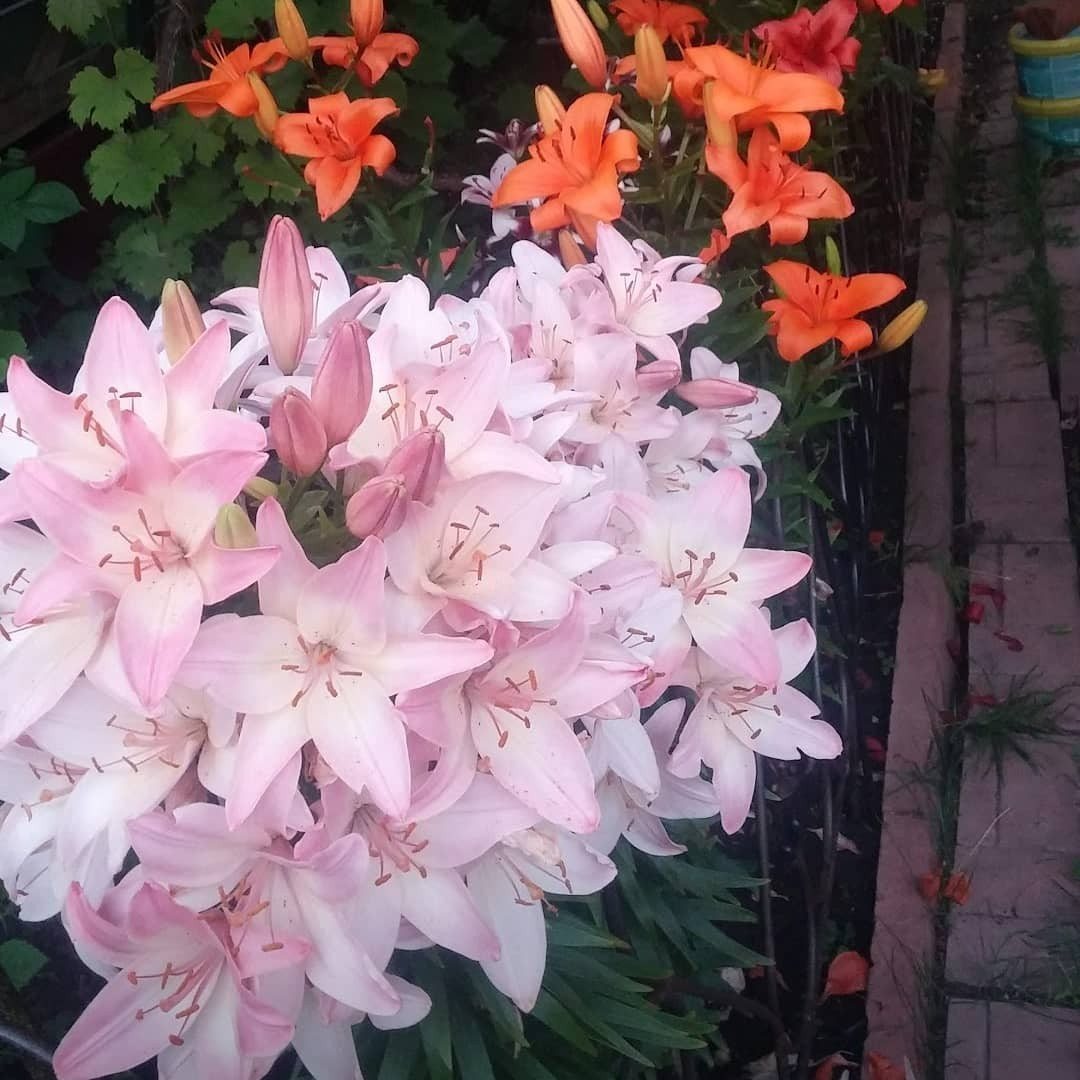
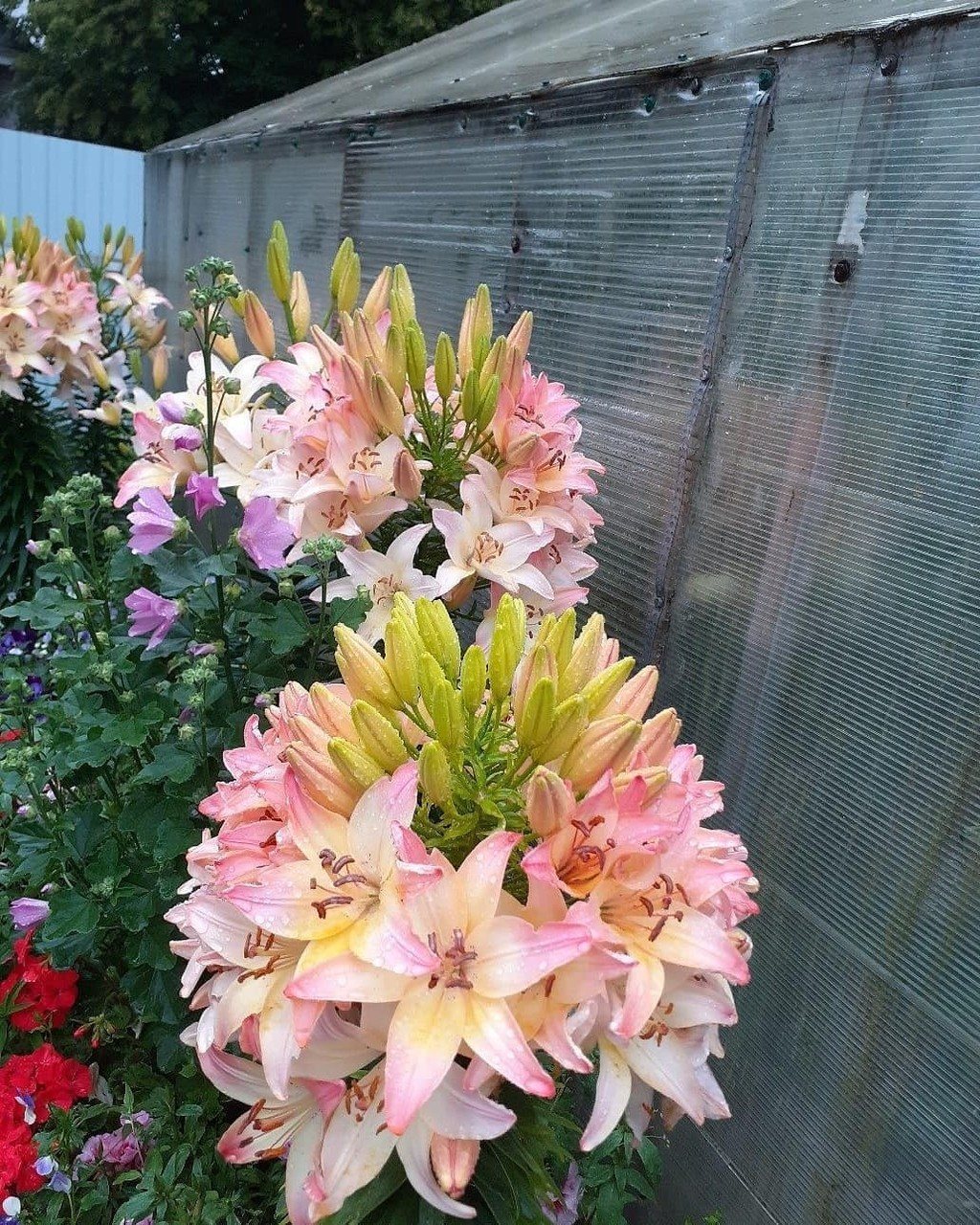
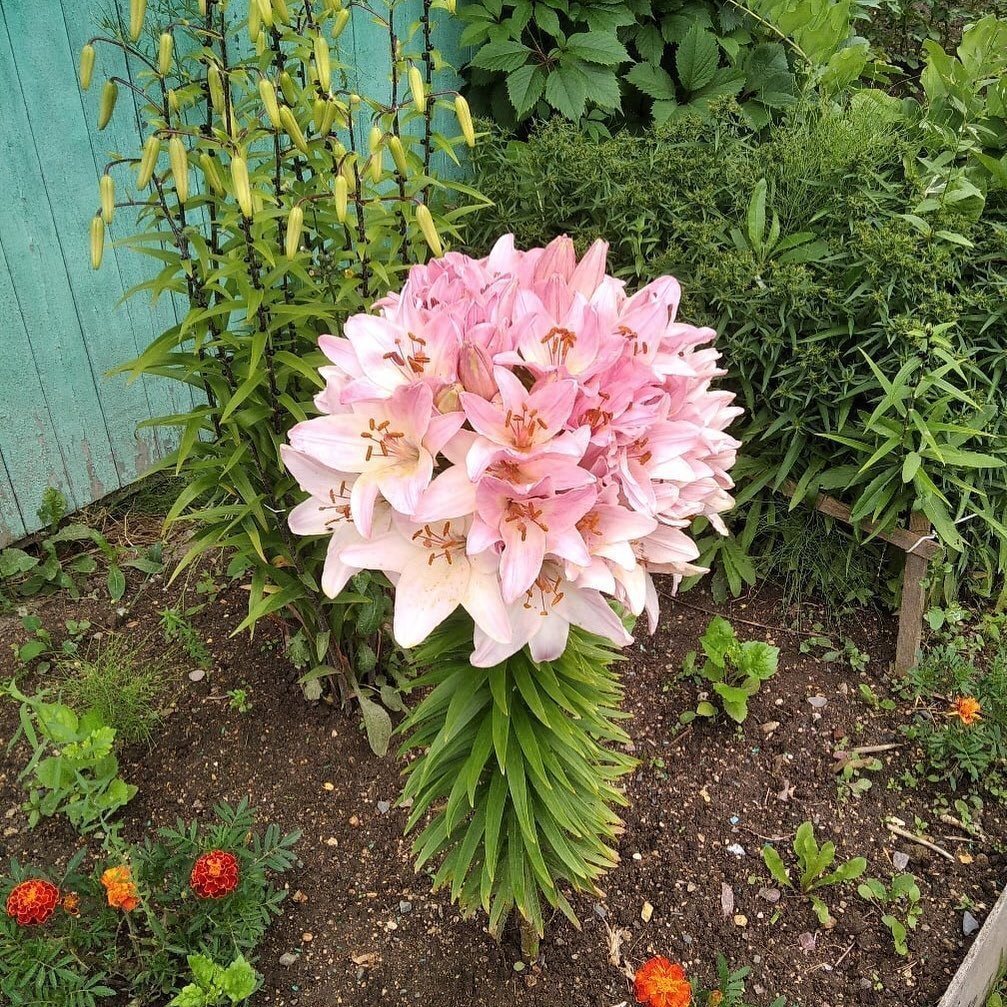
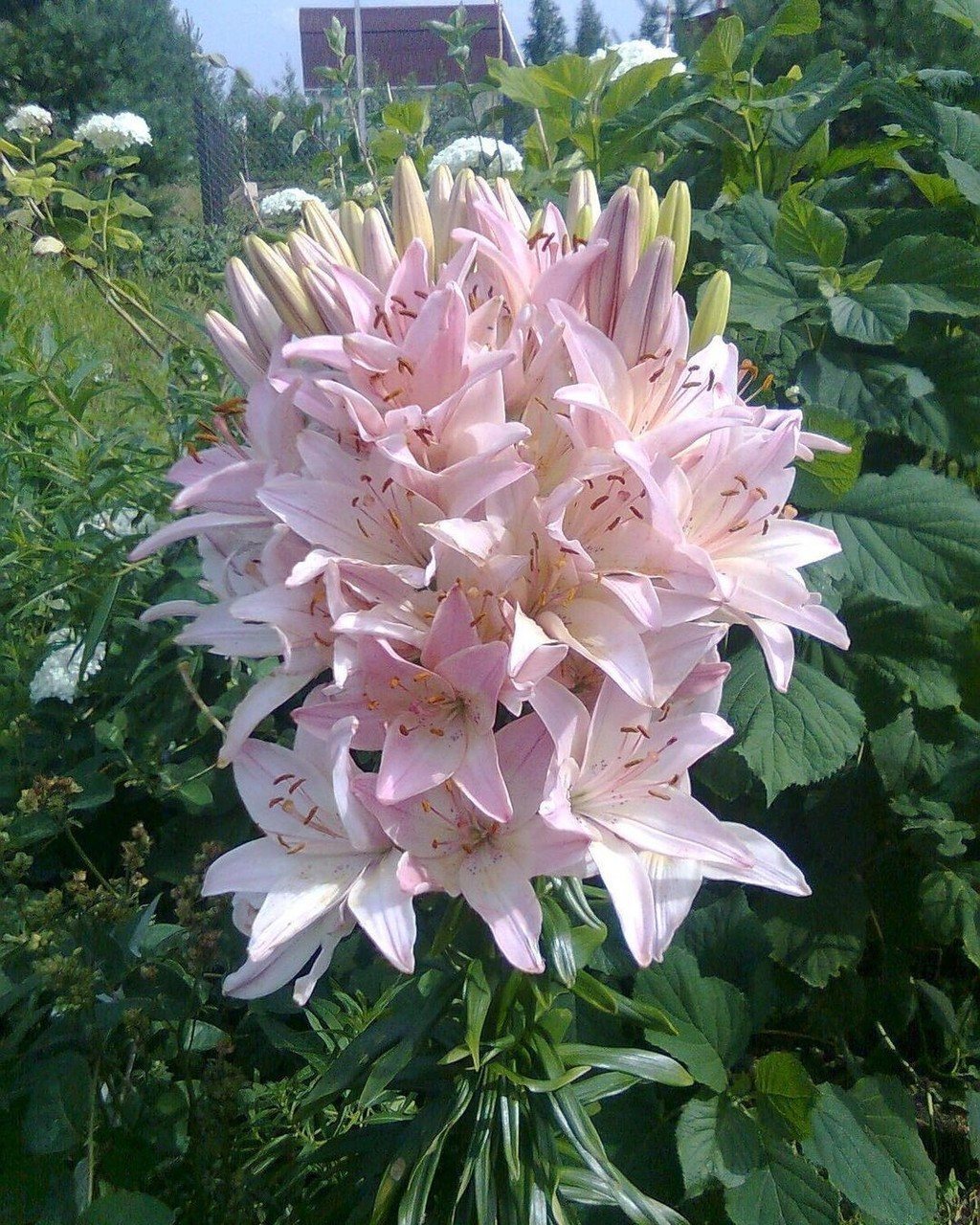
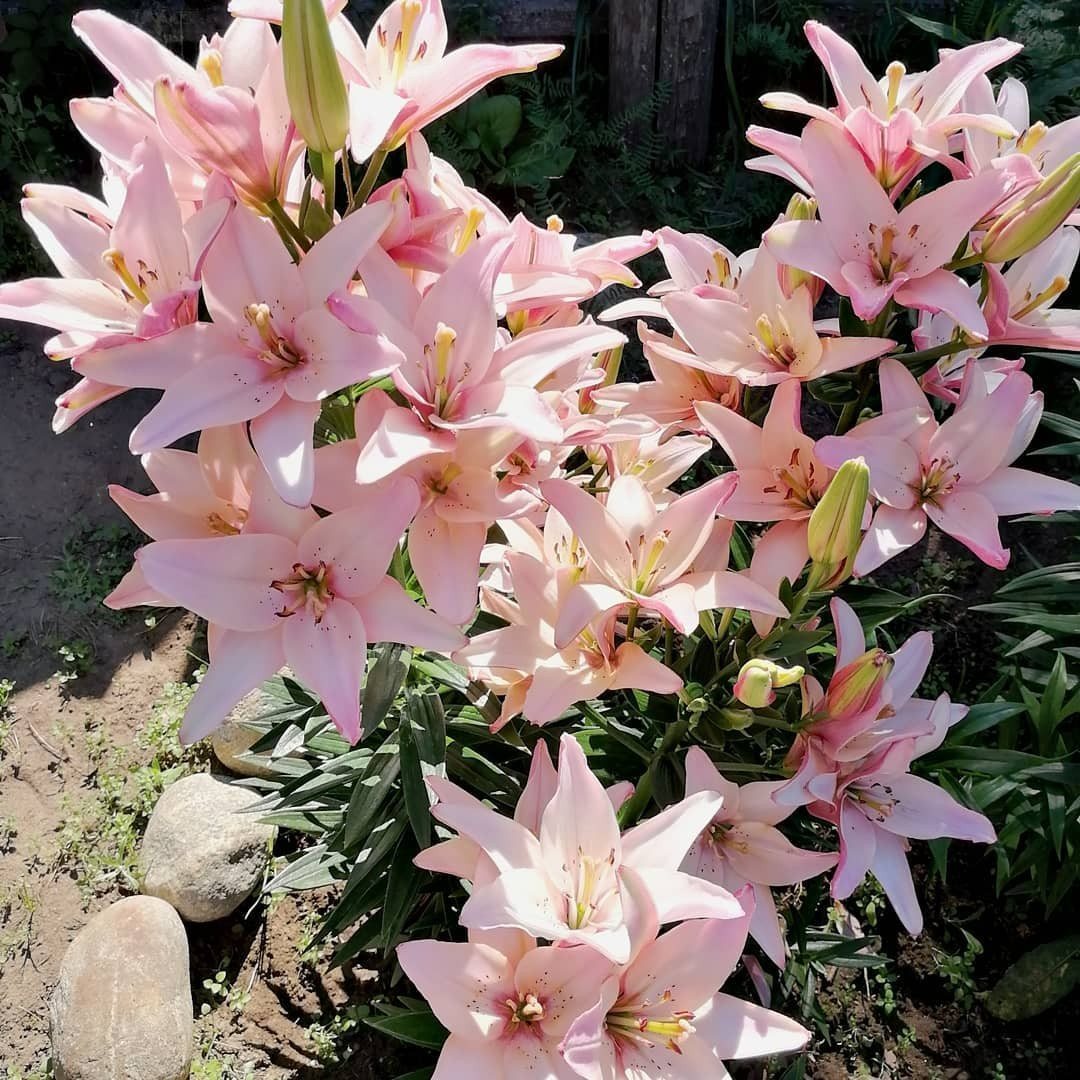





Tango
A characteristic feature is the presence of thick specks on the petals, which gives the flowers a resemblance to orchids. There are several subspecies of this variety. They differ from each other in color. The height of the stems reaches 110-120 cm. The shape of the flowers is star-shaped, with narrowed petals. Flowering occurs at the end of June. The vase resistance of the variety is 2 weeks. Replantation is recommended every 3-5 years.
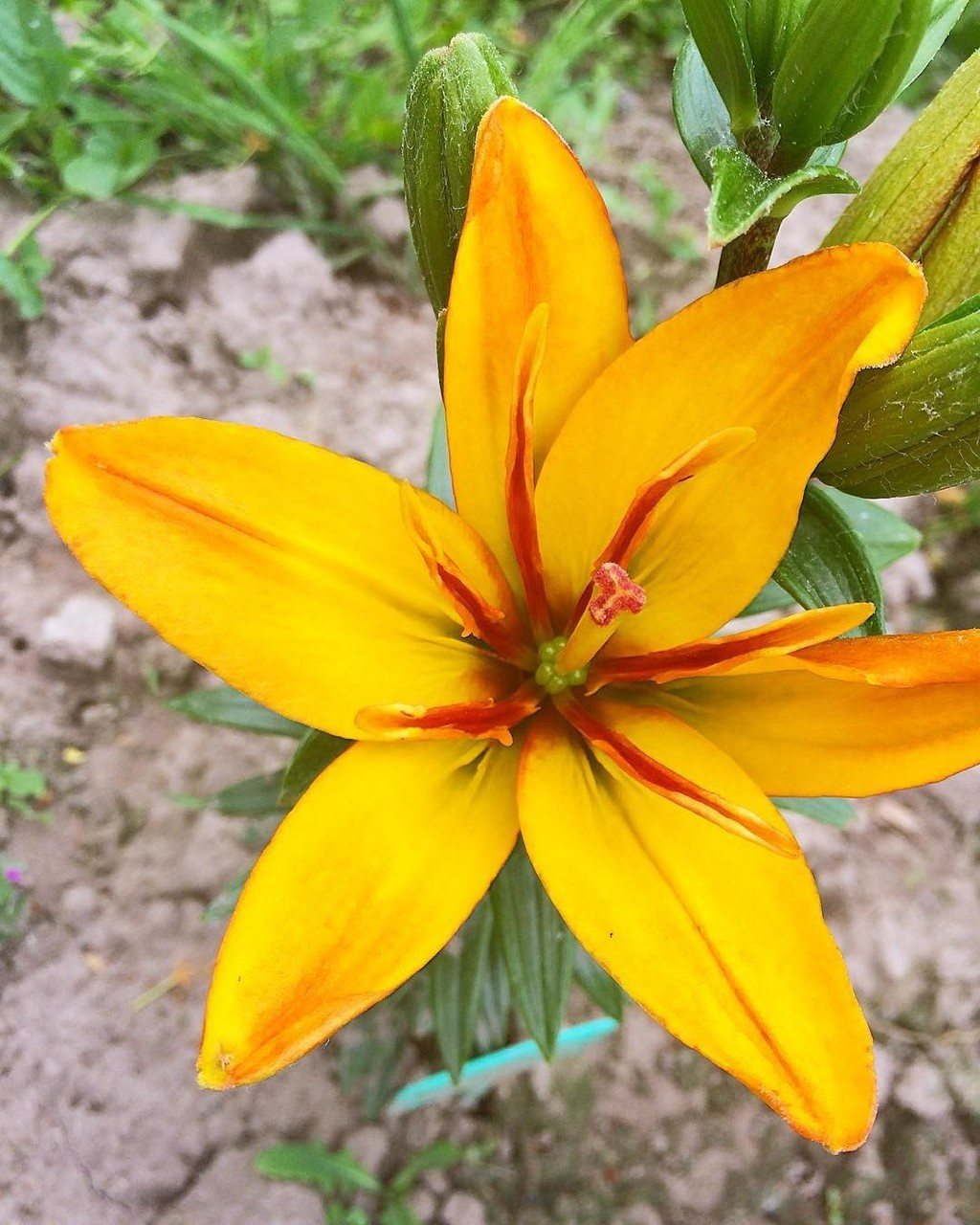
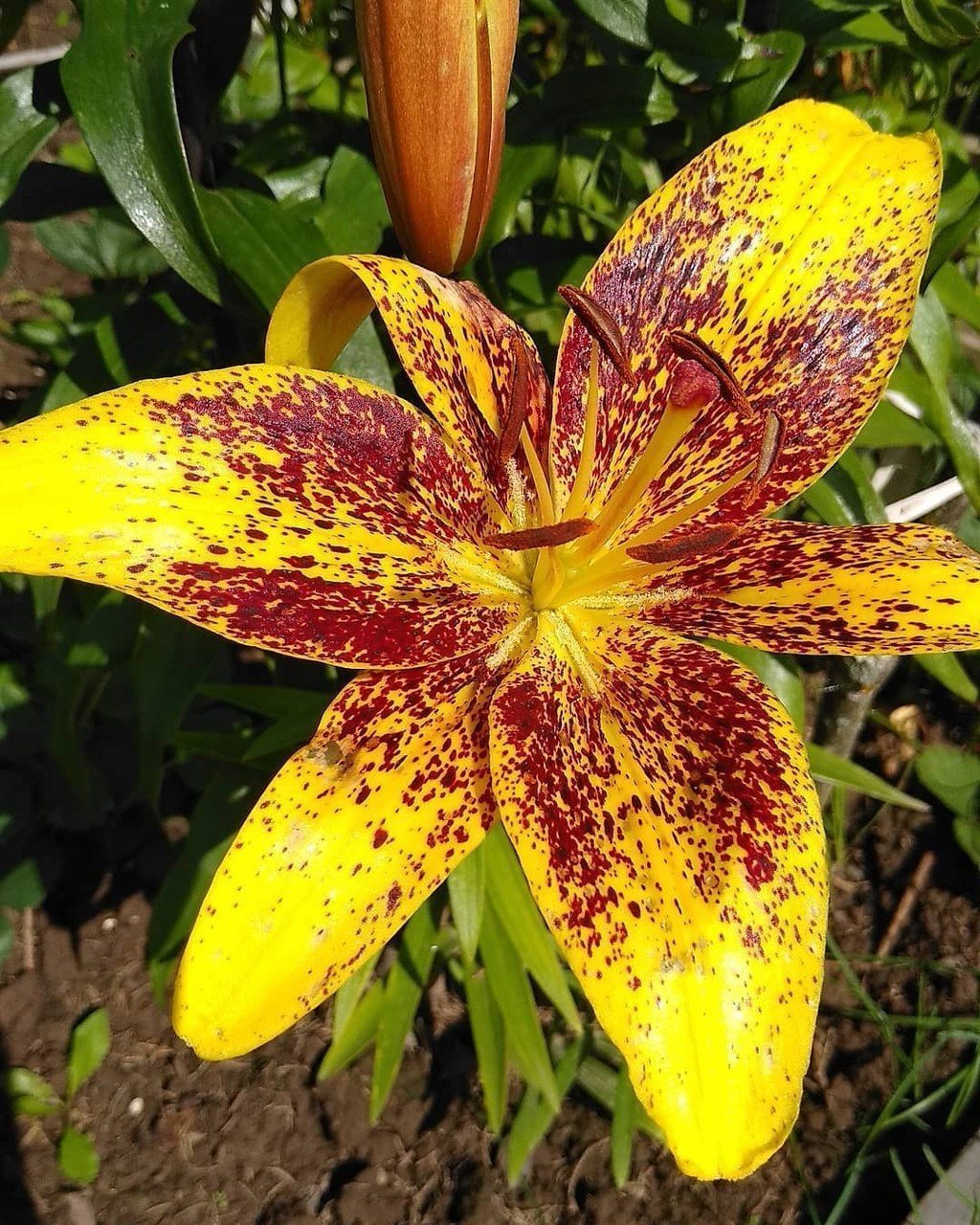
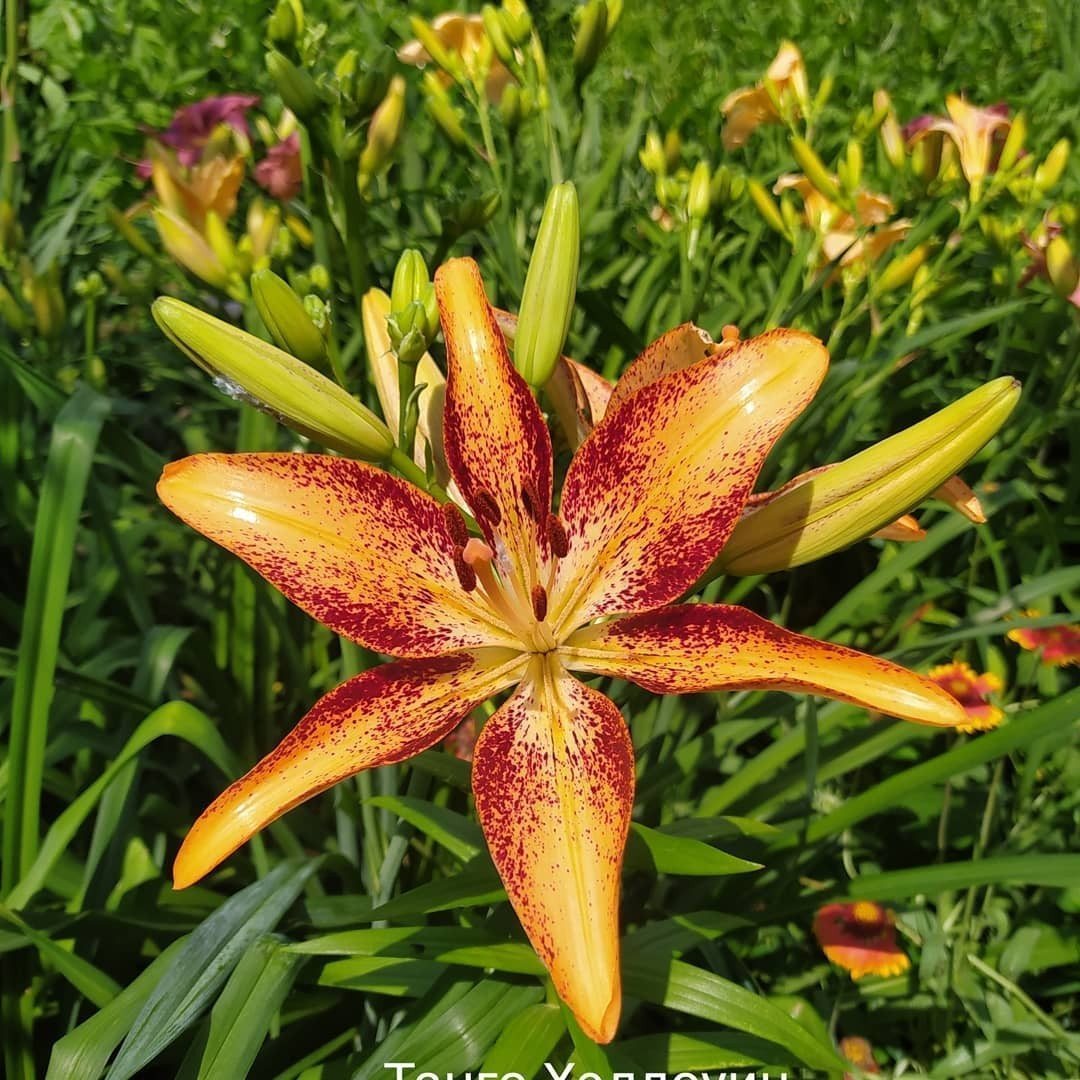
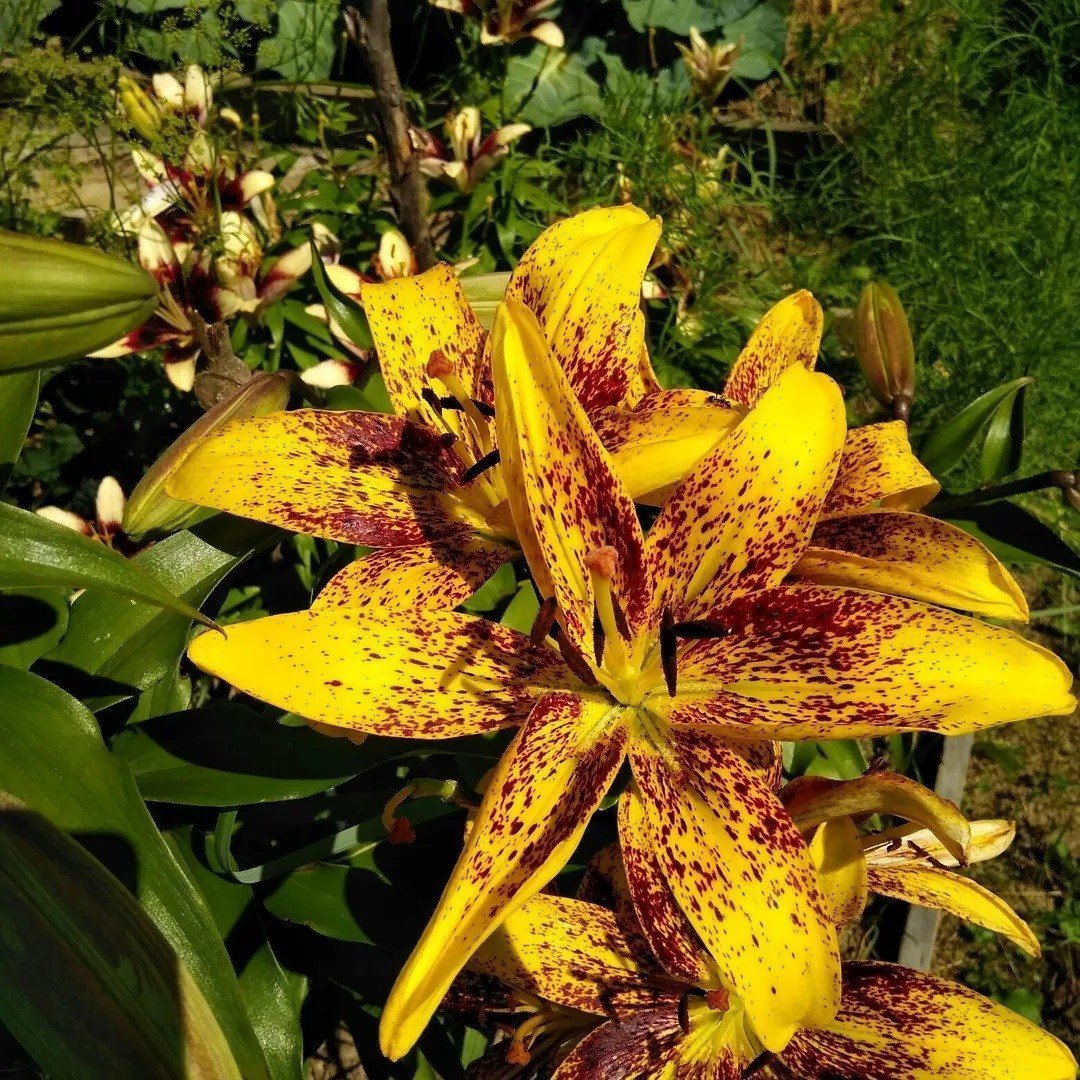
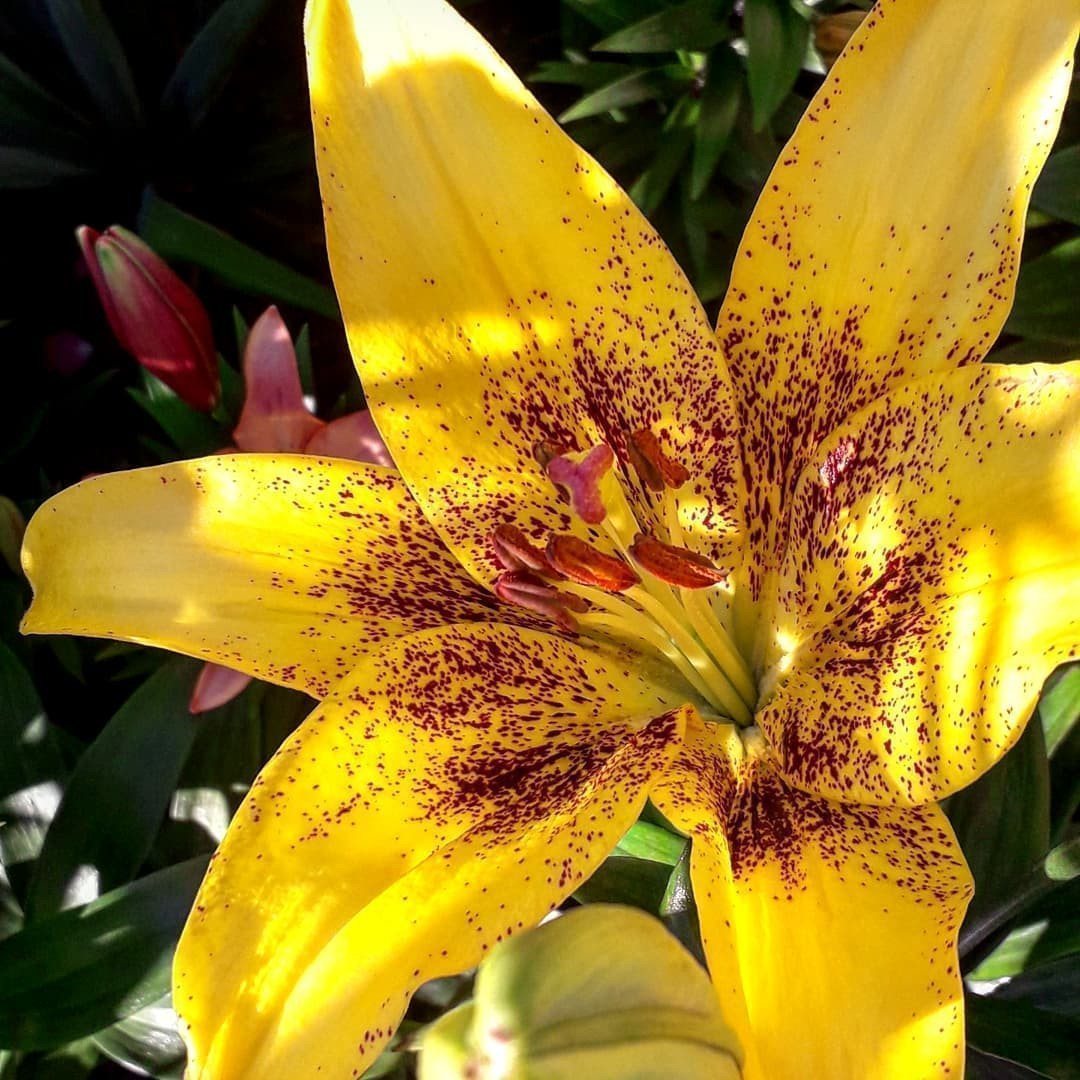





Black
Tall variety of Asian hybrids. The height of its shoot reaches 110-120 cm. A characteristic difference is the rich dark color of the petals with gloss. The diameter of the buds when fully opened is 20 cm.
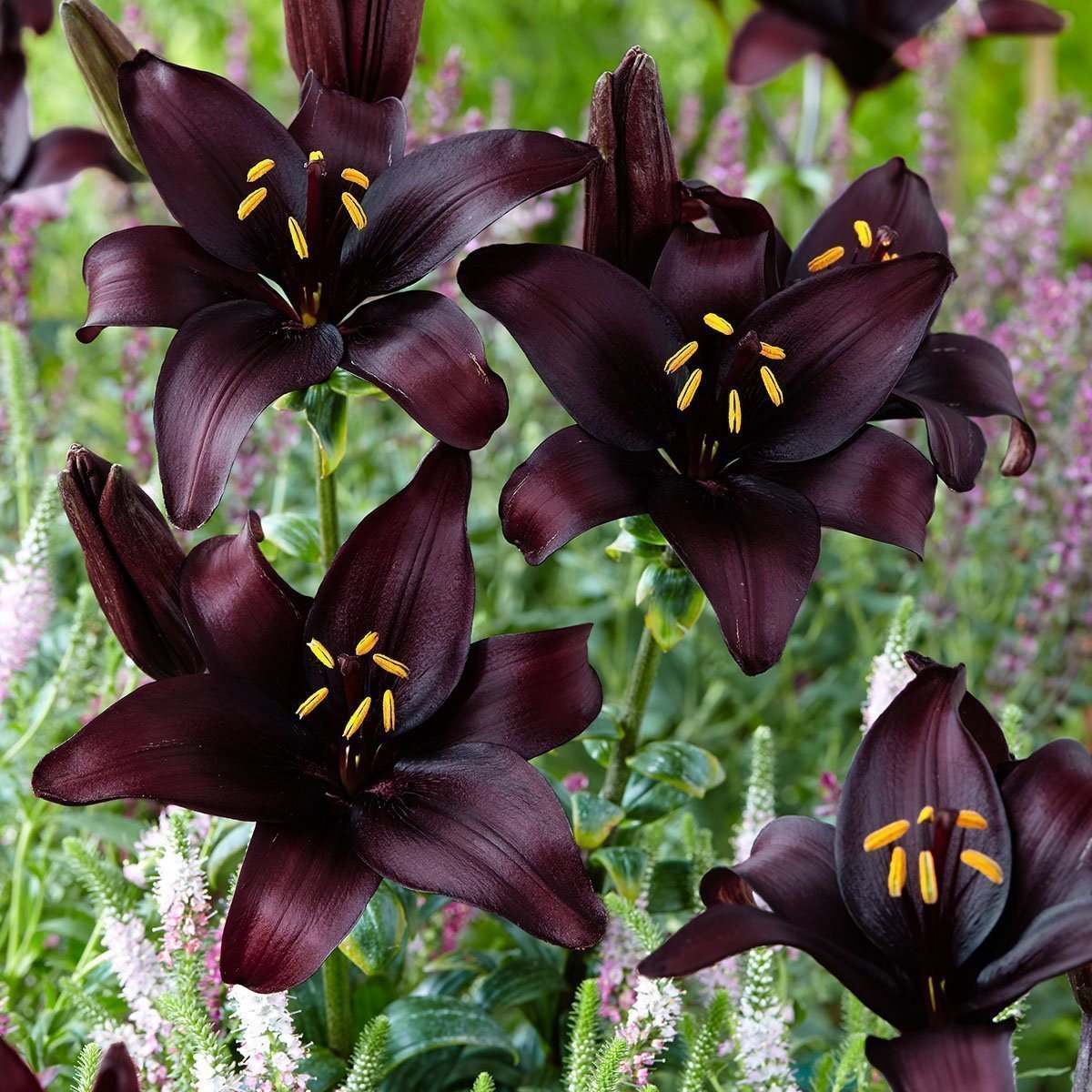
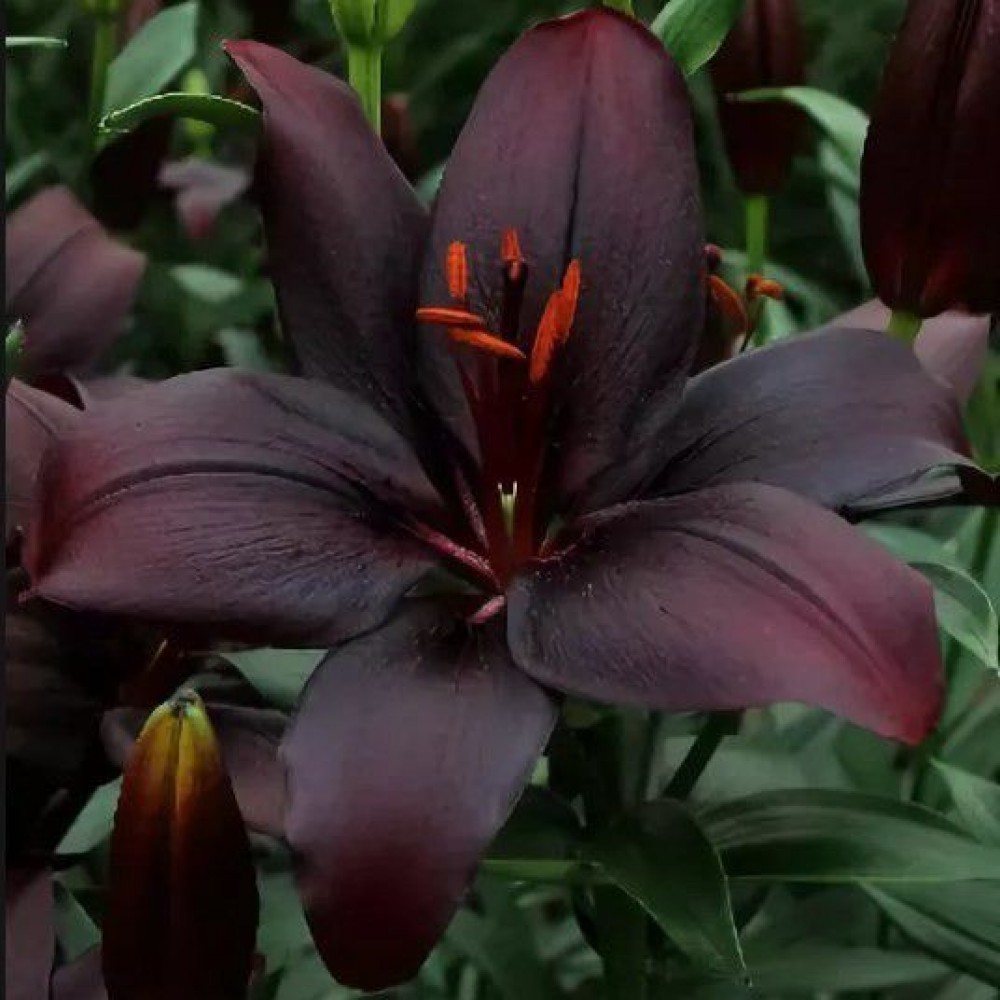
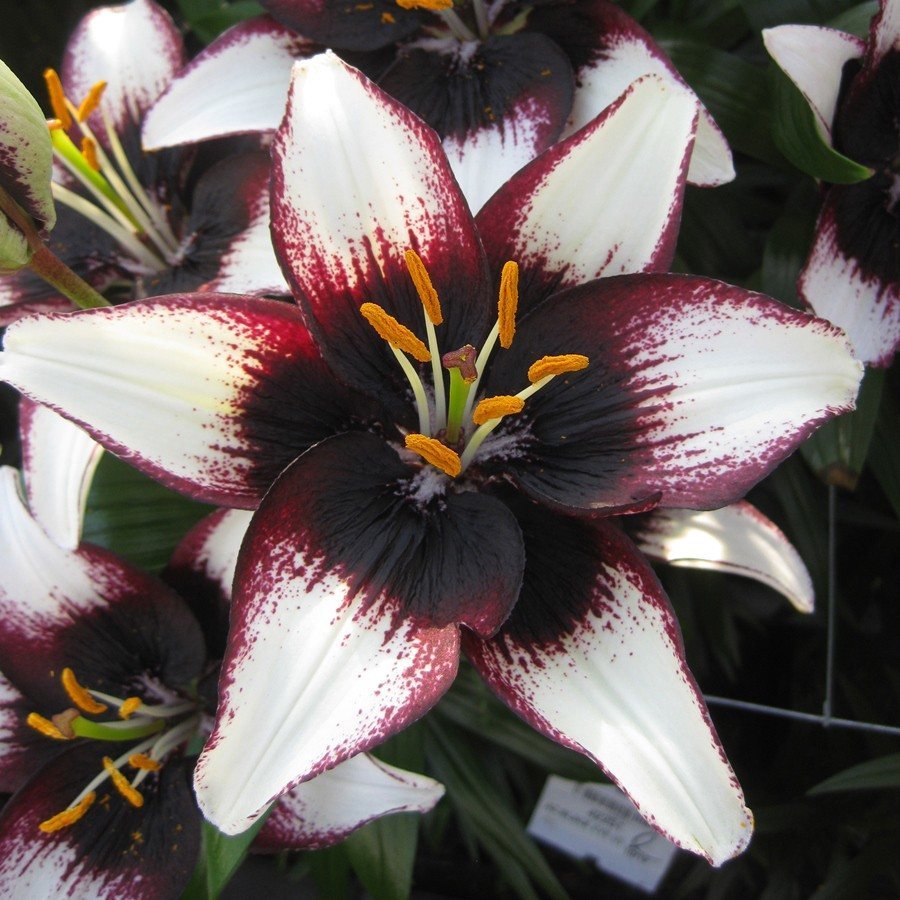

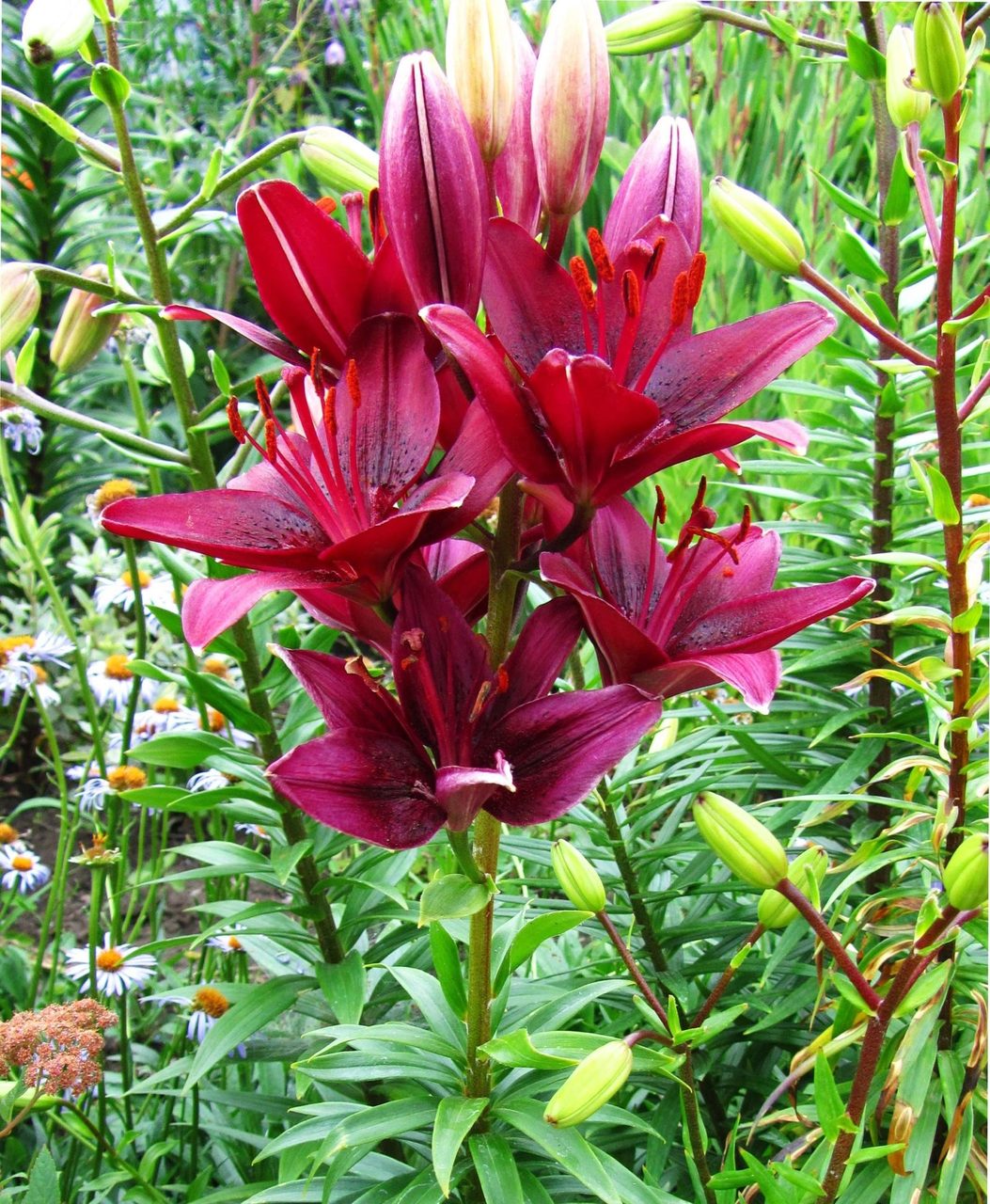





Annamaria Dream
A medium-sized variety, the shoot height of which reaches 60 cm. The flower is double, of a single color. Forms 7-9 buds.The anthers have a bright burgundy hue. The color of the petals is white or light beige.
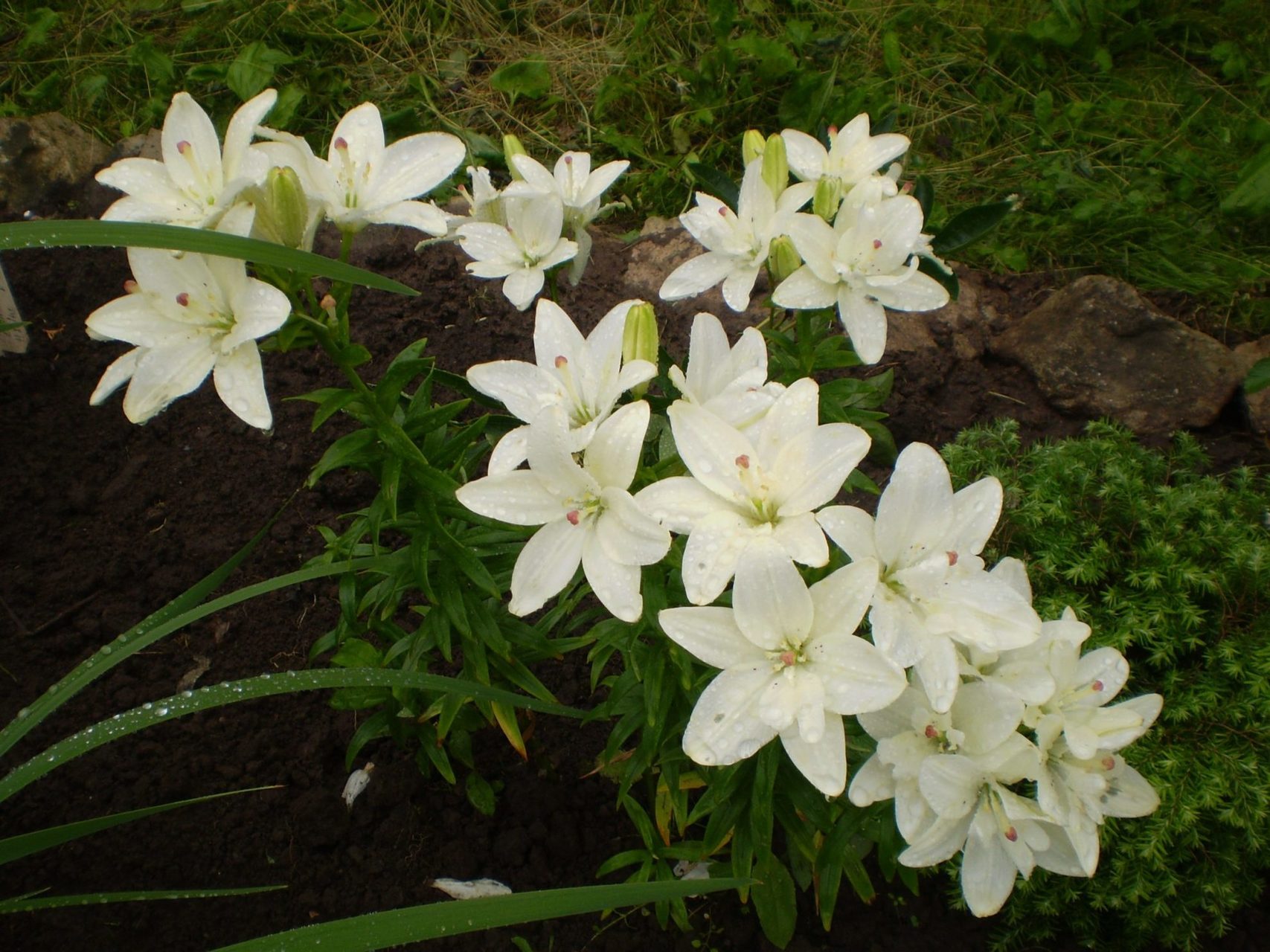
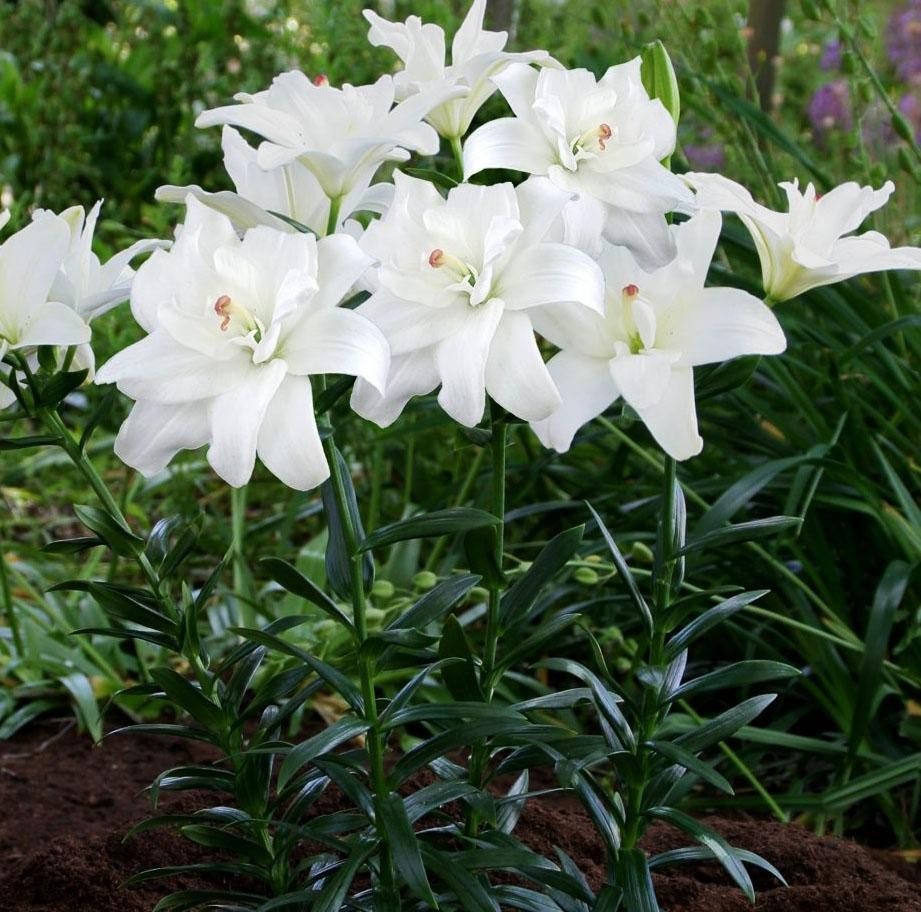
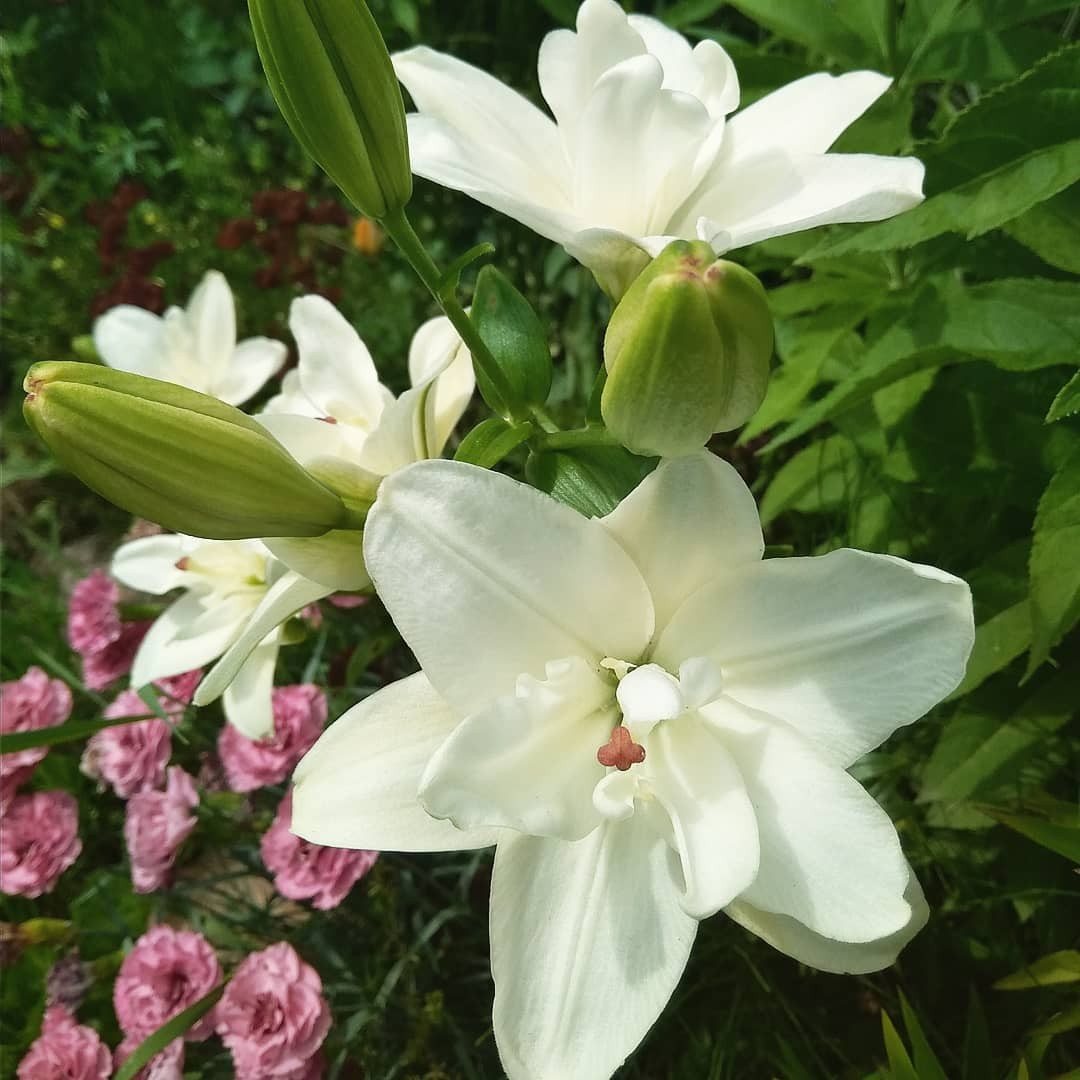
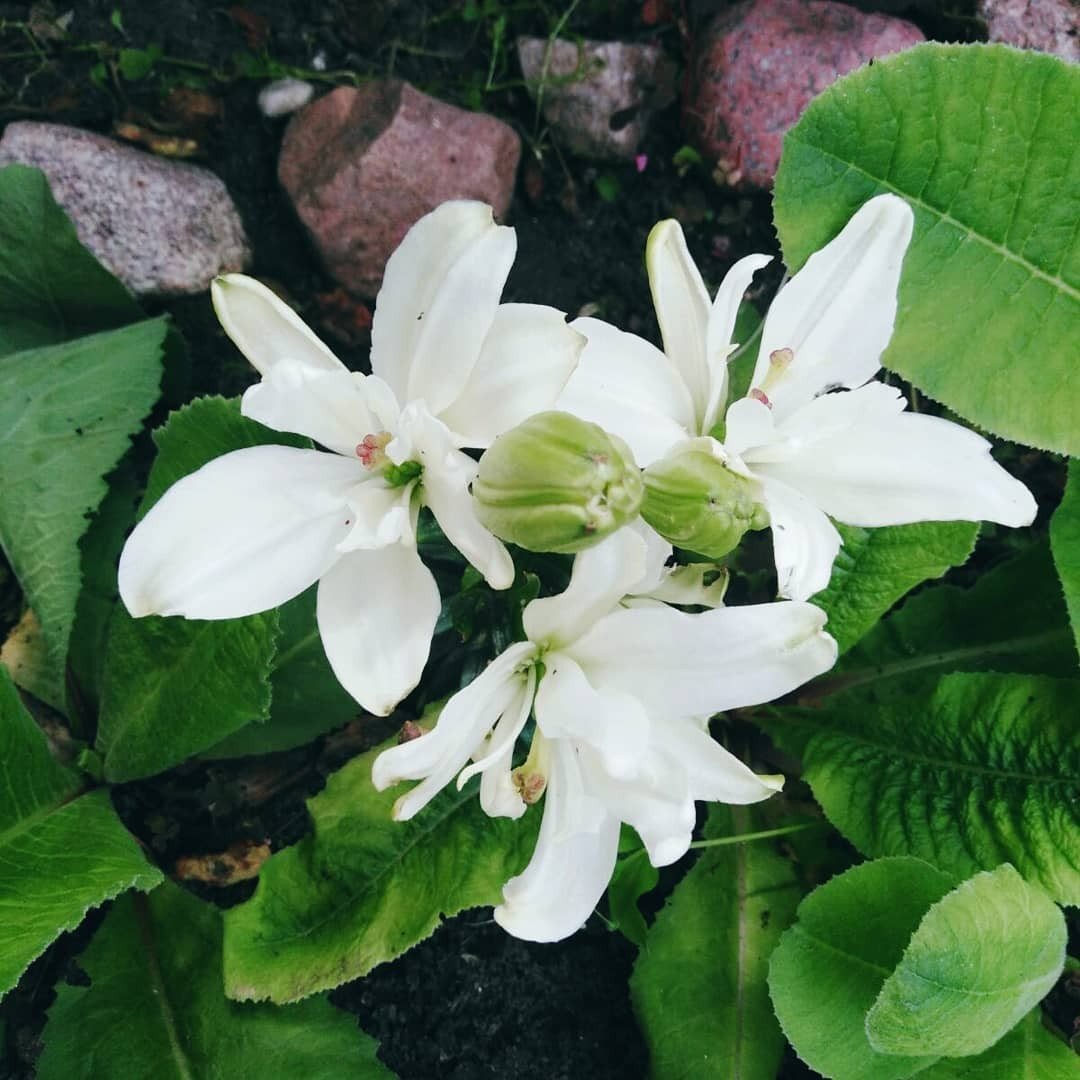
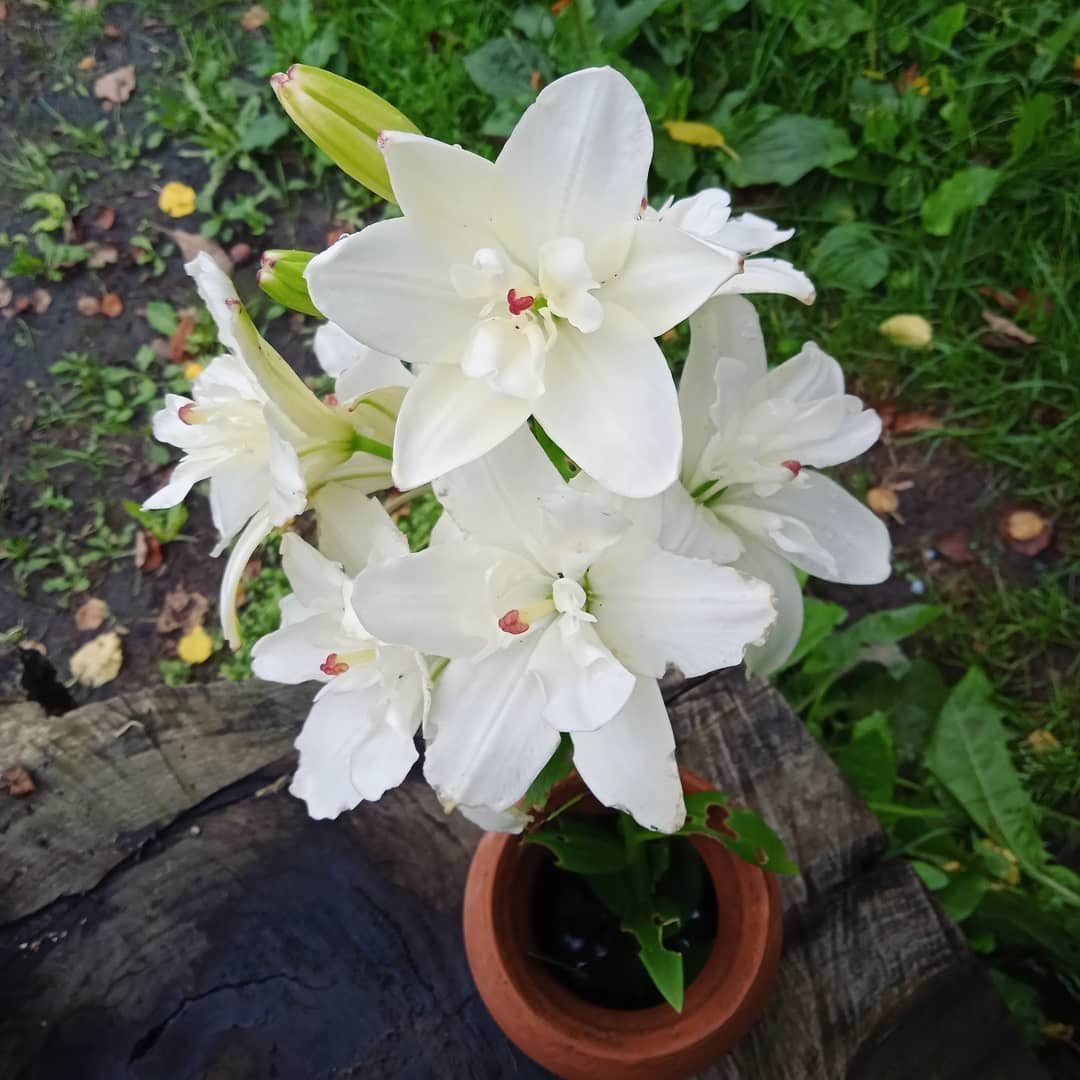





Elodie
Terry hybrid variety, the buds of which are directed upward. The height of the shoot reaches 40-50 cm. The diameter of the flowers is 17.5 cm. There is a slight waviness along the edge of the petals. Their color is dark pink with dark red spots. The stigma is purple-red, pollen is absent.
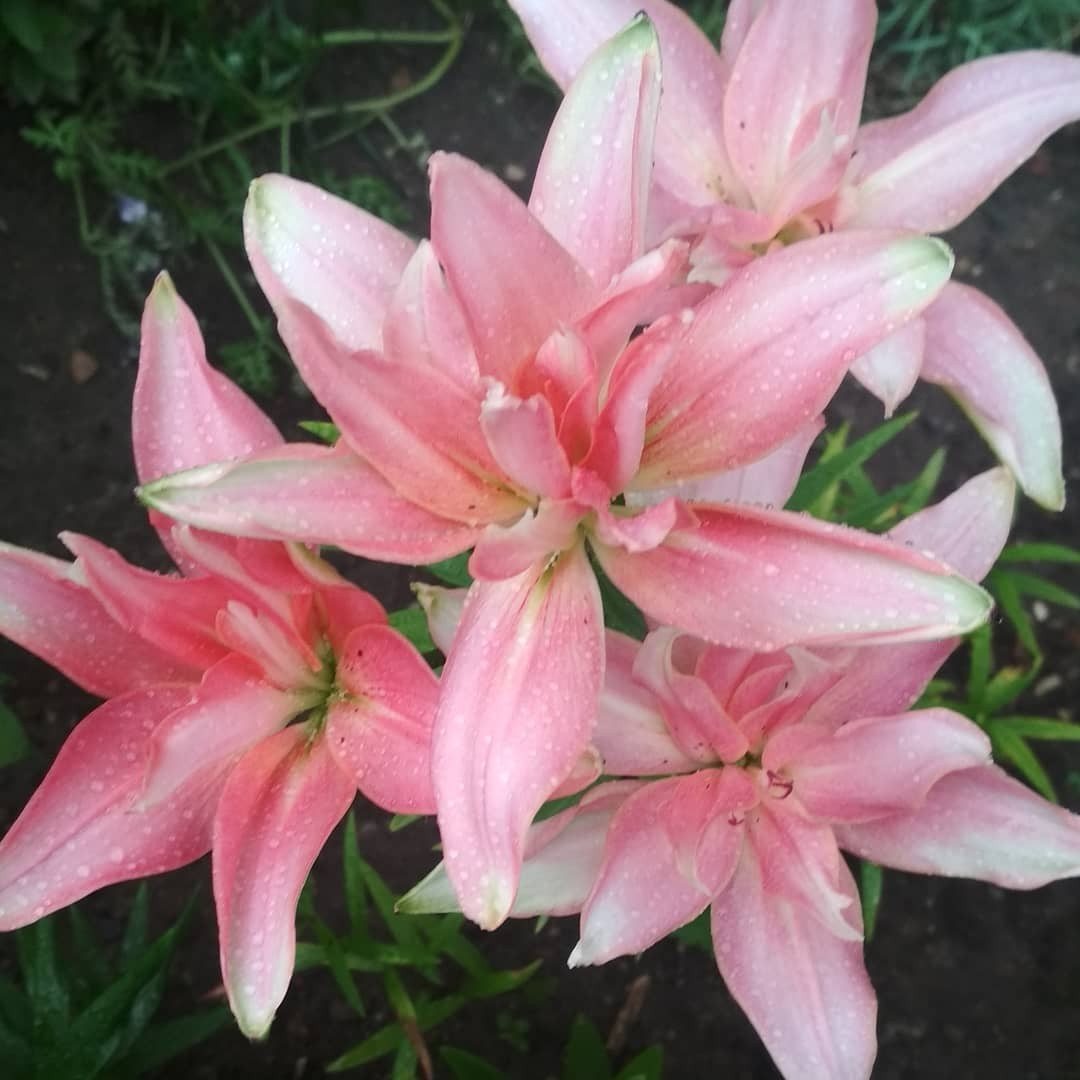
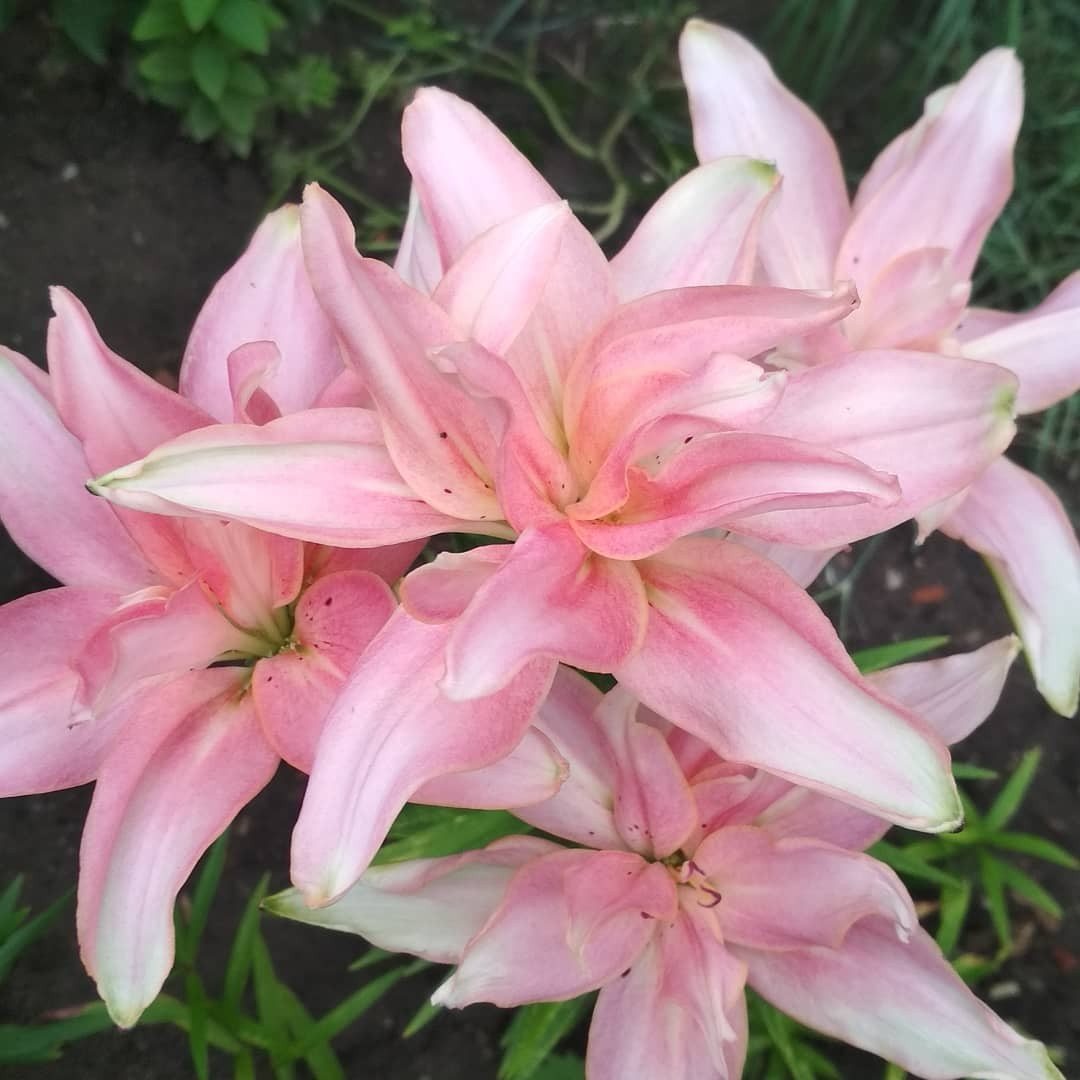
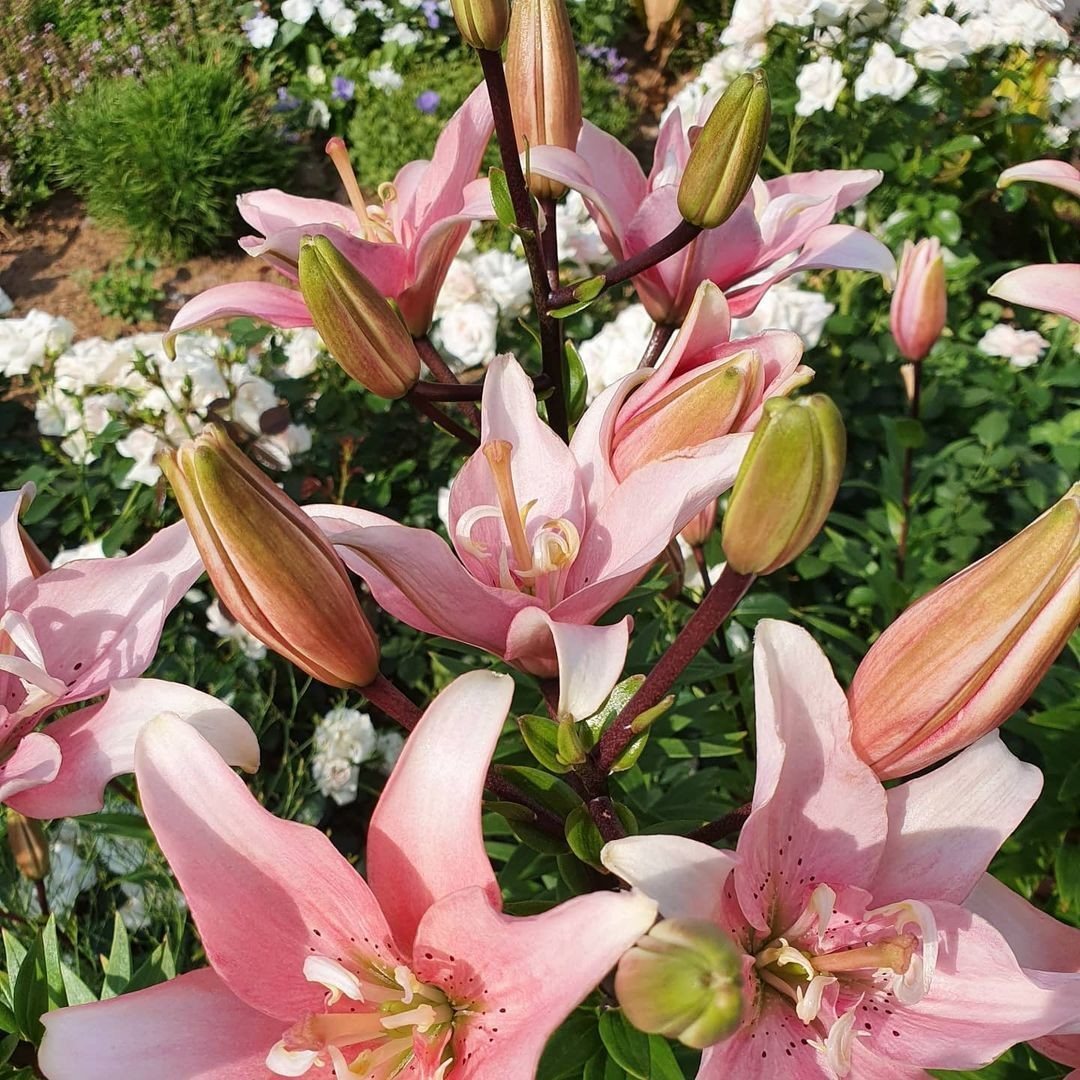

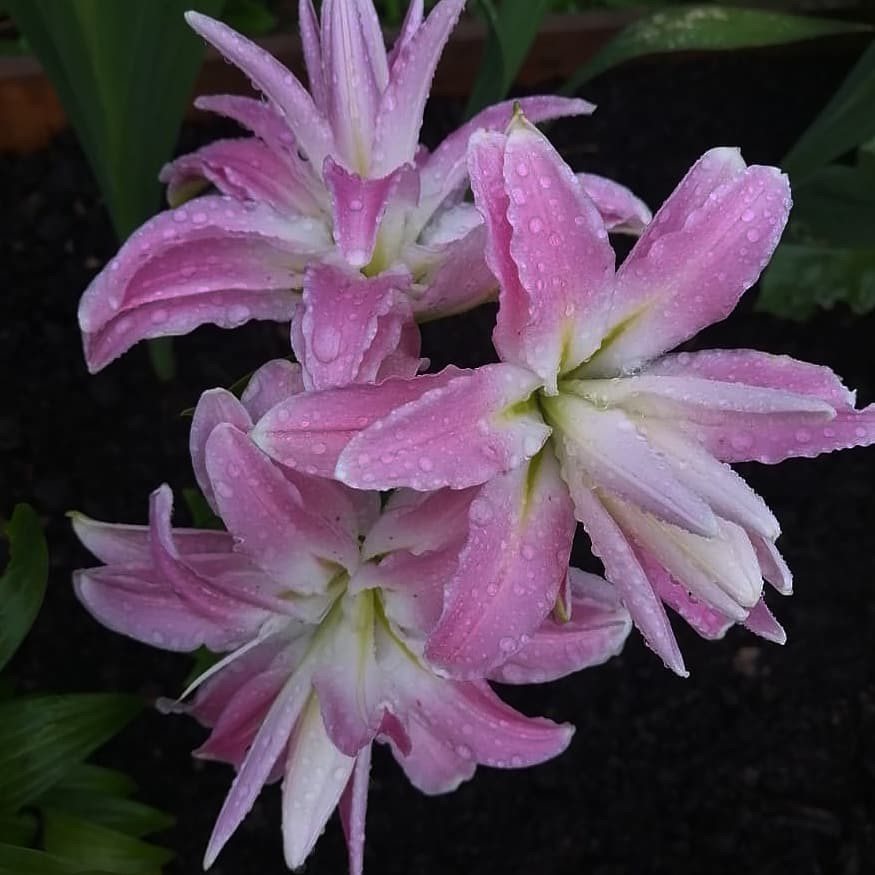





Navona
The height of the lily reaches 1 m. It is characterized by snow-white flowers with a soft greenish tint in the middle. The petals are large in size. The variety requires good lighting throughout the day. Blooms in the third decade of June.

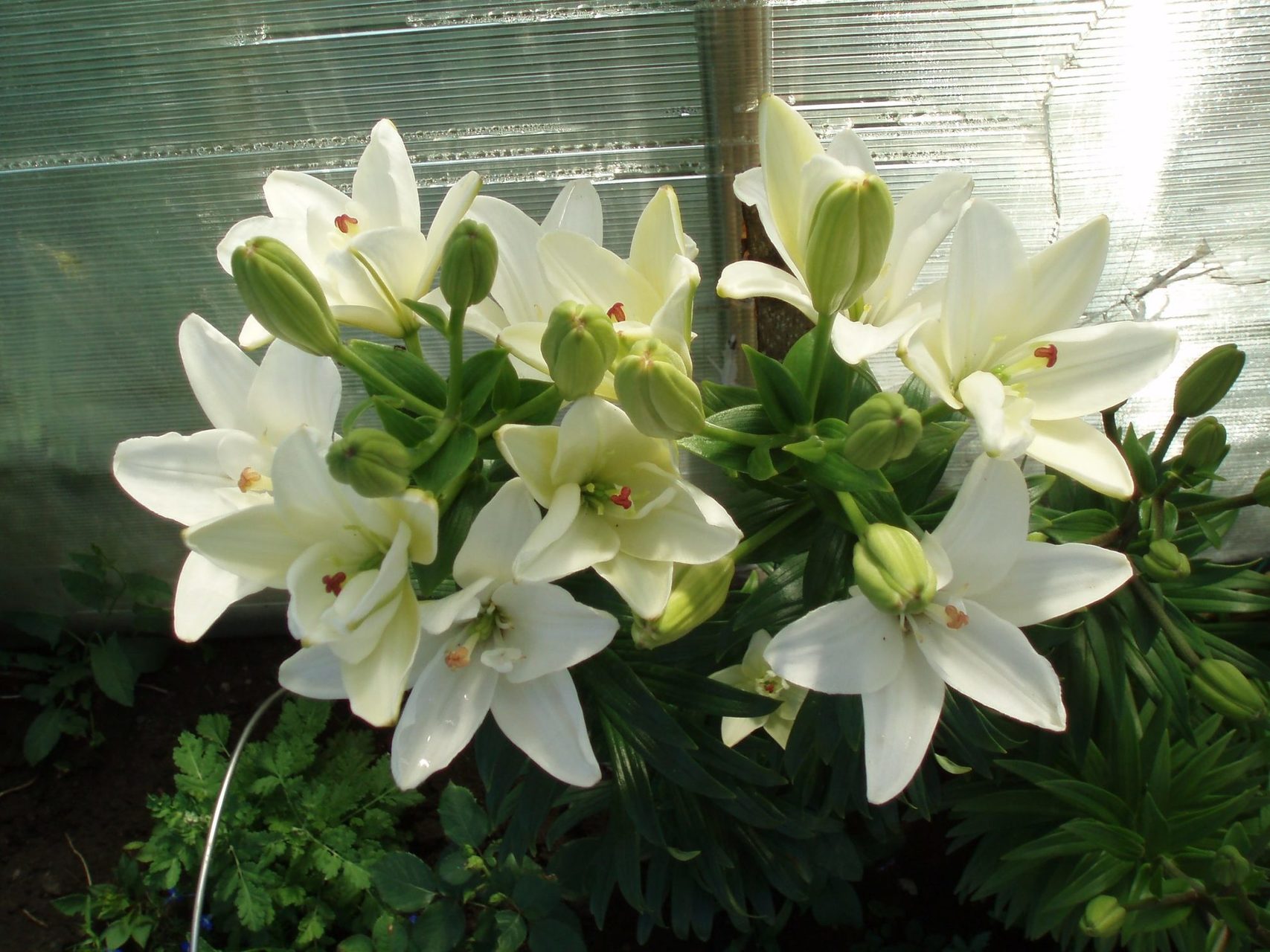
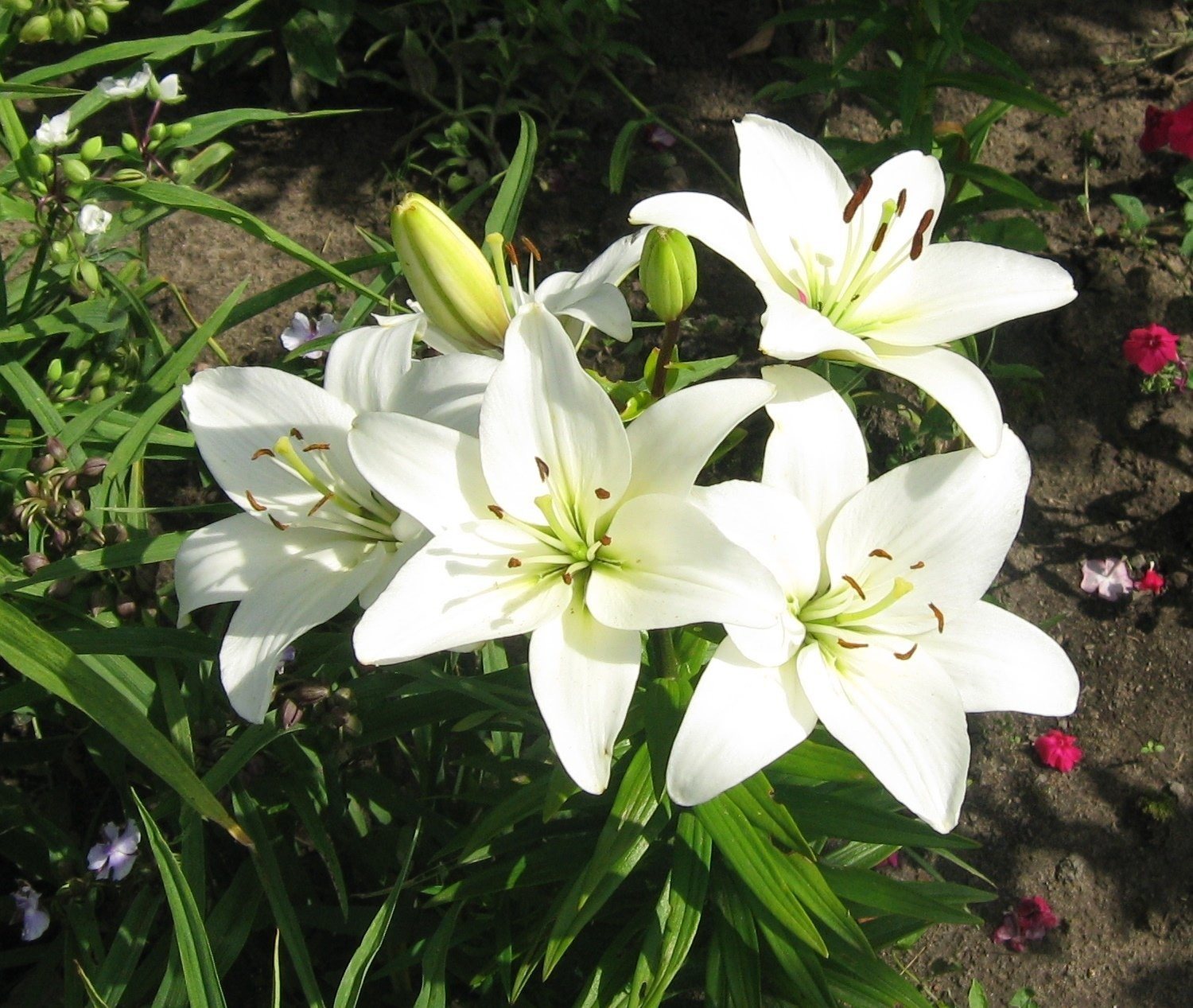
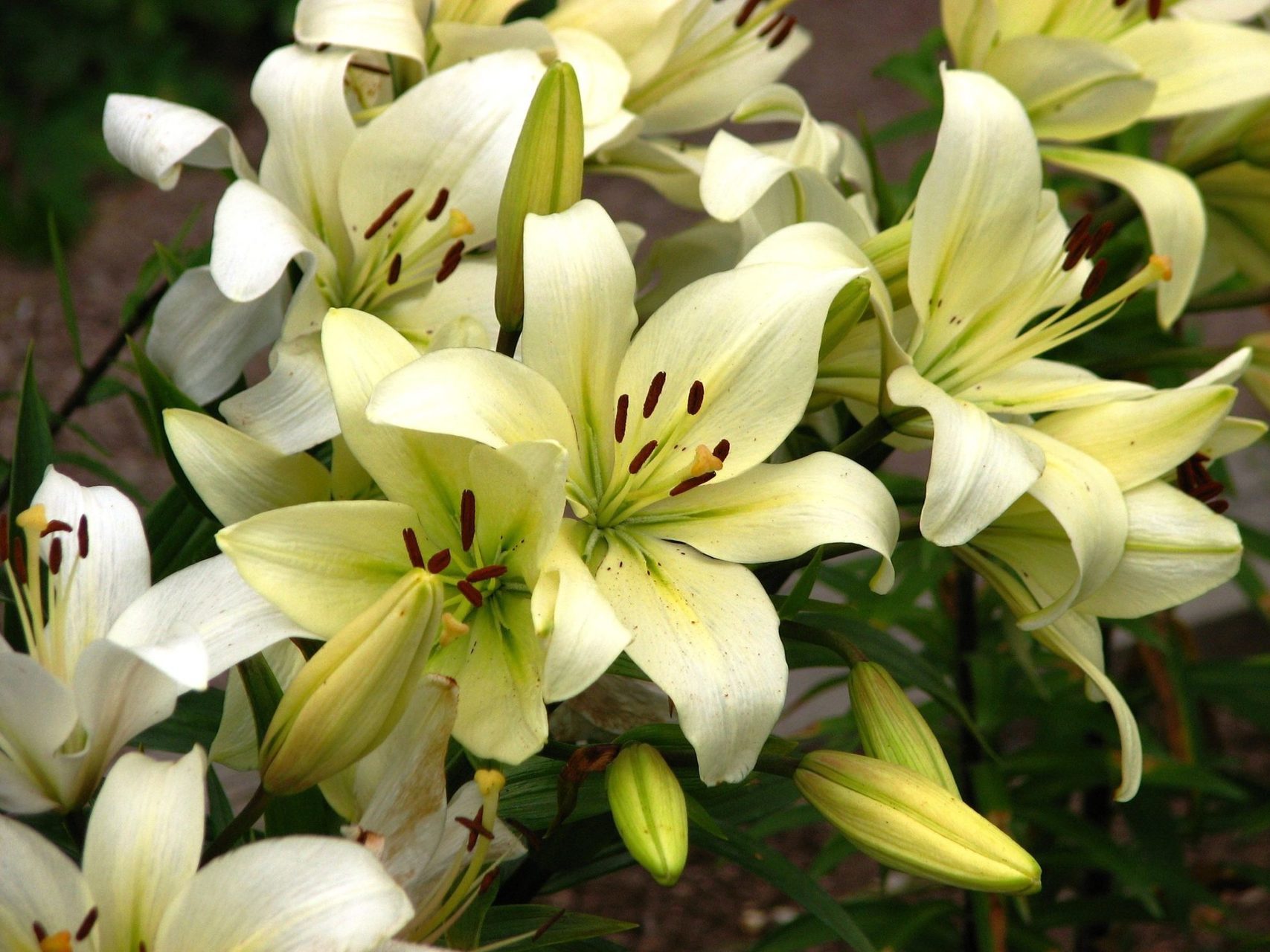
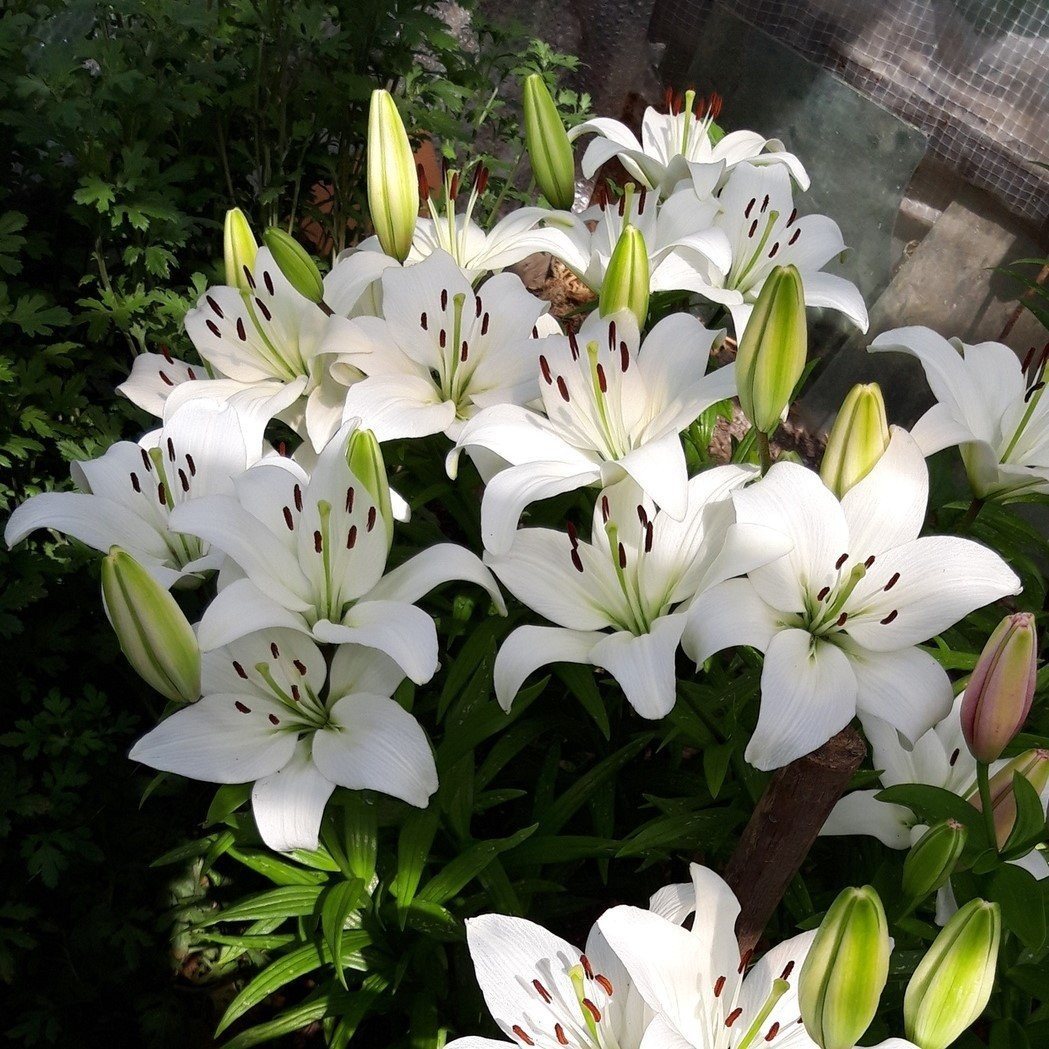





Martagon Hybrids, or Curly Lily Hybrids (The Martagon Hybrids)
This variety series has an unusual flower shape: the buds are lowered down, and the petals curl up when opening. When fully expanded, their size is 5-8 cm.
Such lilies have high frost resistance and viability, but do not respond well to transplantation. The color of the flowers is very diverse. The plants are medium-sized, the height of the shoots reaches 150-170 cm. Martagon hybrids prefer shaded areas, so the best option for such lilies is planting them in the garden.
Let's consider the popular varieties of martagon lily hybrids.
Saranka
A profusely flowering plant that can form up to 20 buds at a time. The shape of the flowers resembles a turban. The stem is 120-150 cm high and has reddish spots on its surface. The leaves are dark green. Flowering lasts a month, beginning at the end of June.
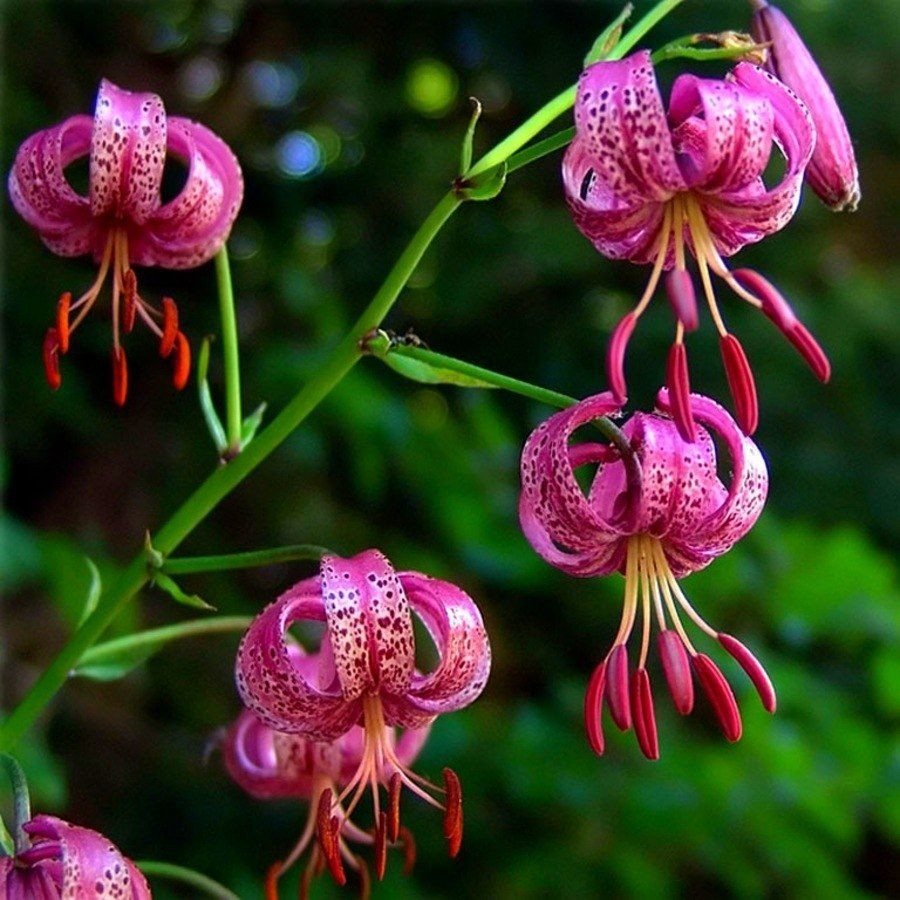
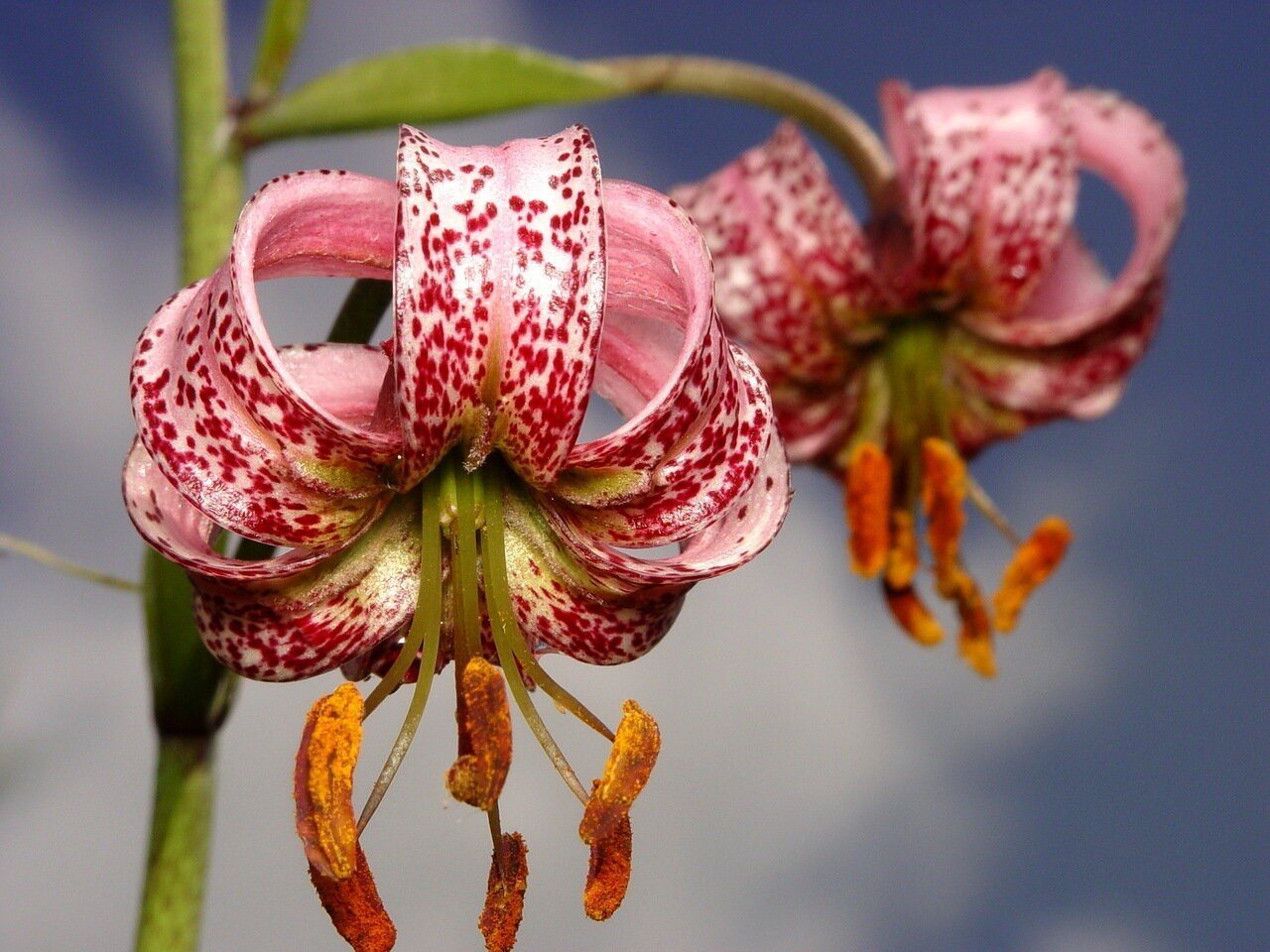
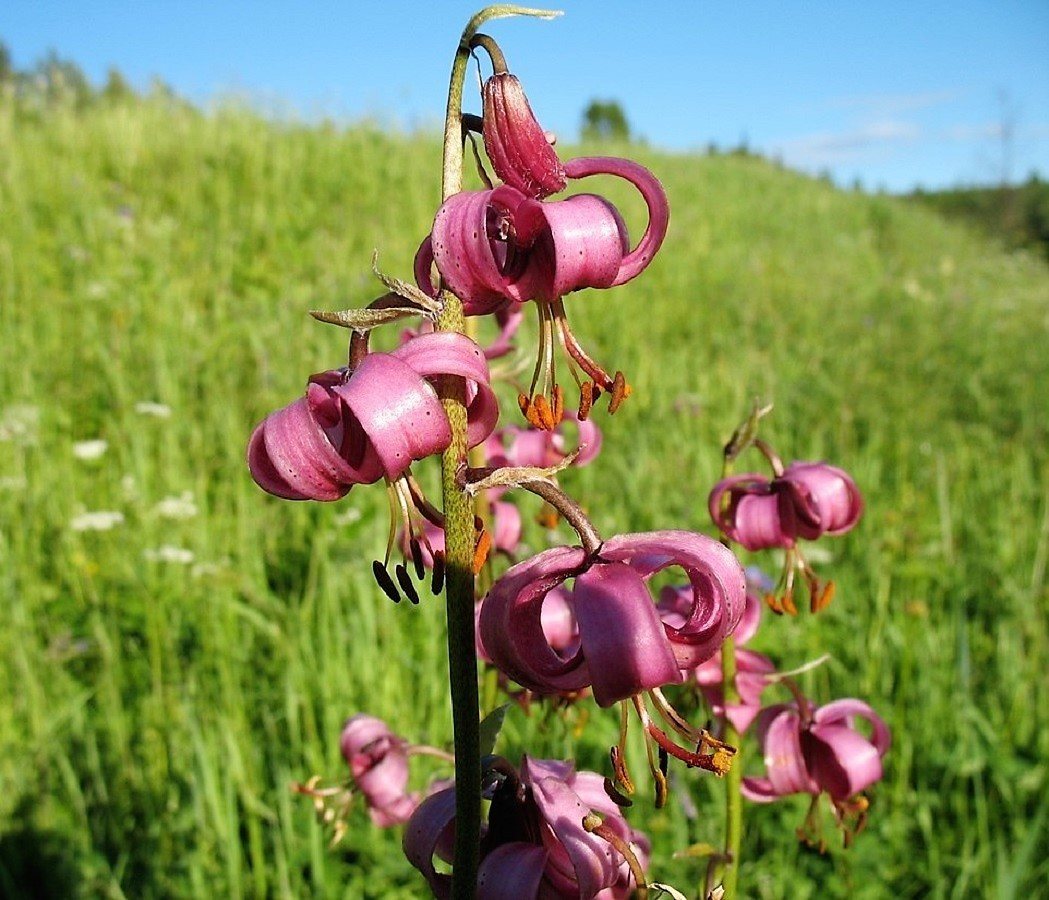







Guinea Gold
The variety is new, characterized by a bright yellow buds with brown spots. The shoot height reaches 120 cm. Frost resistance is high, the lily can withstand temperatures down to -45.5 degrees.It has a thin stem, so it needs support.
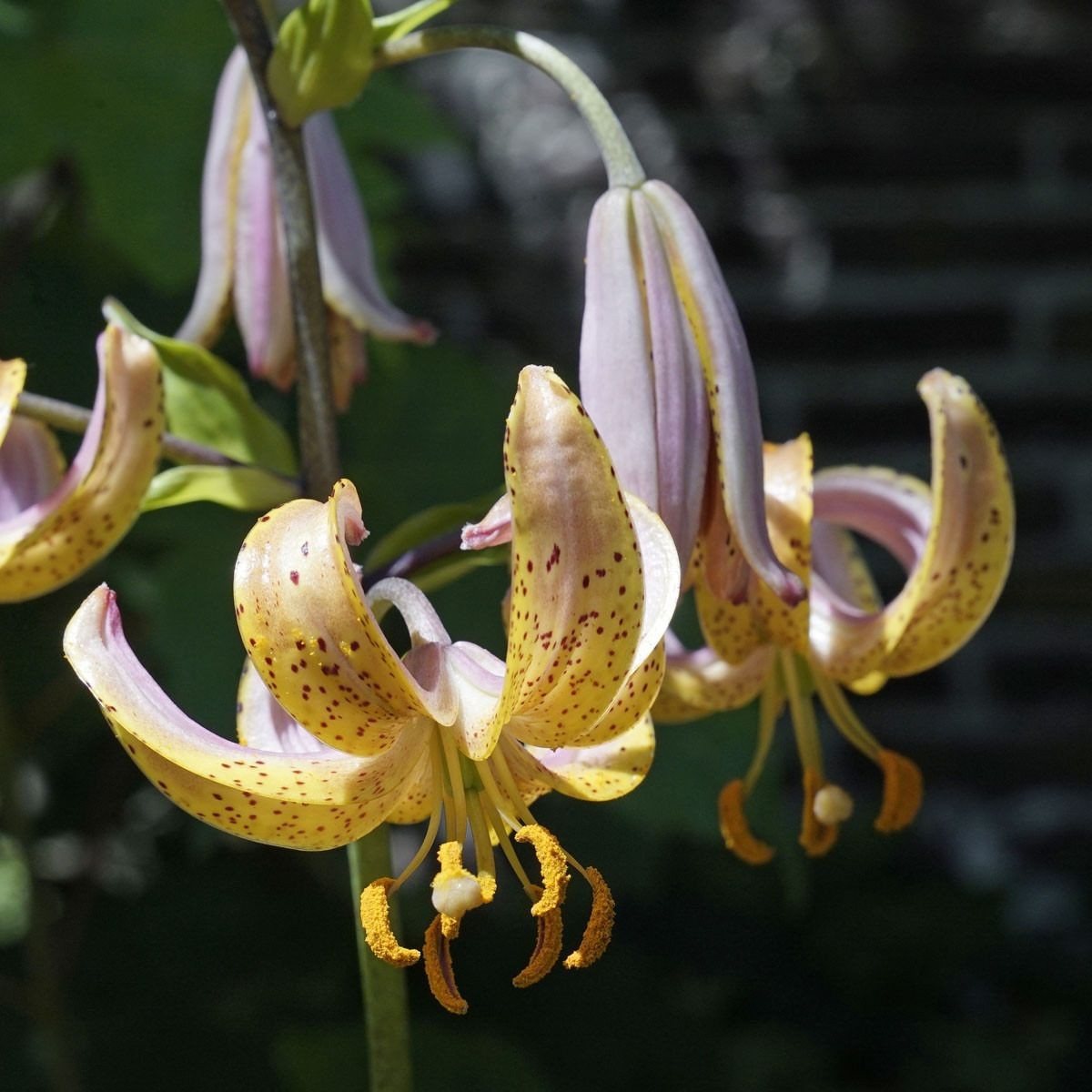
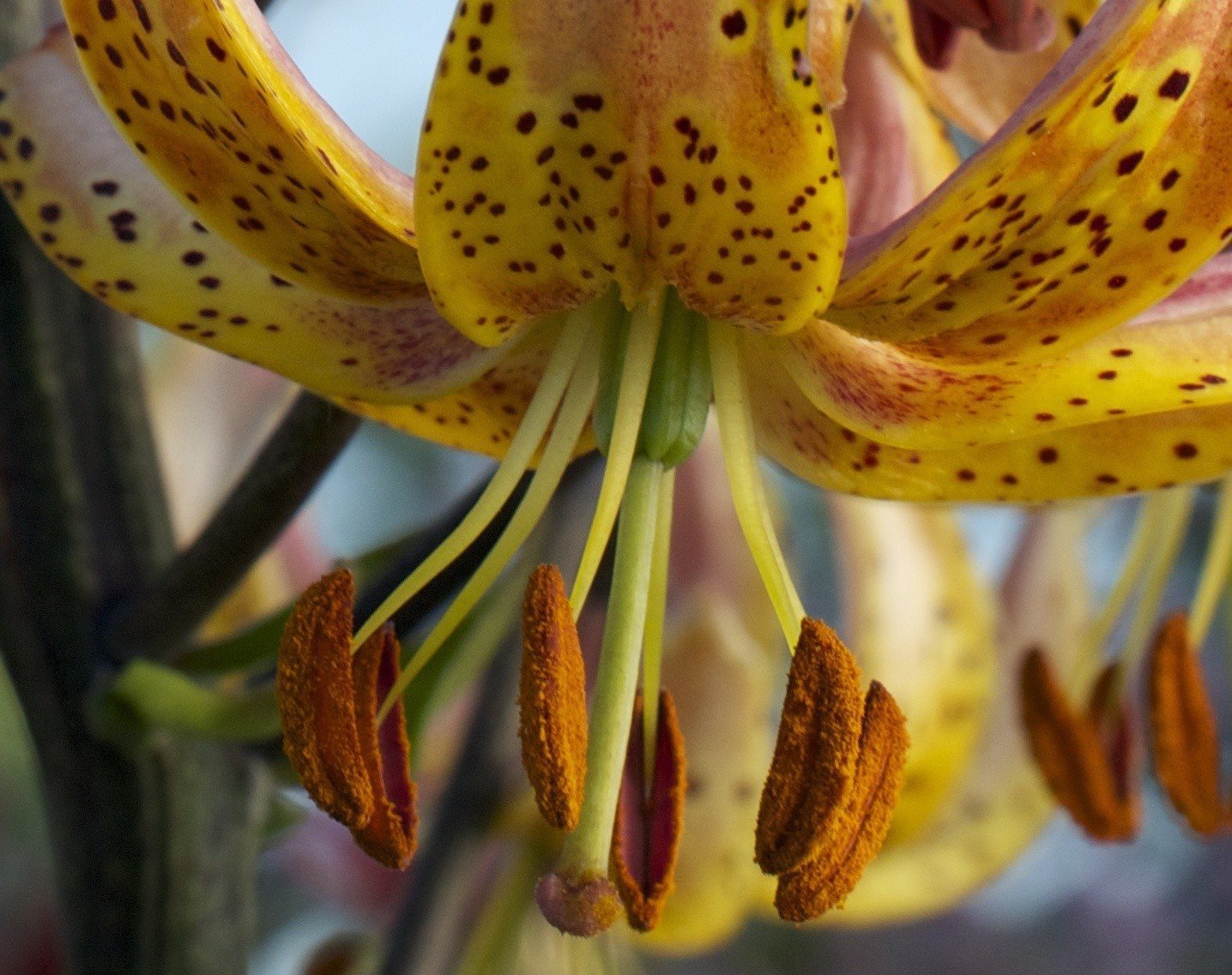
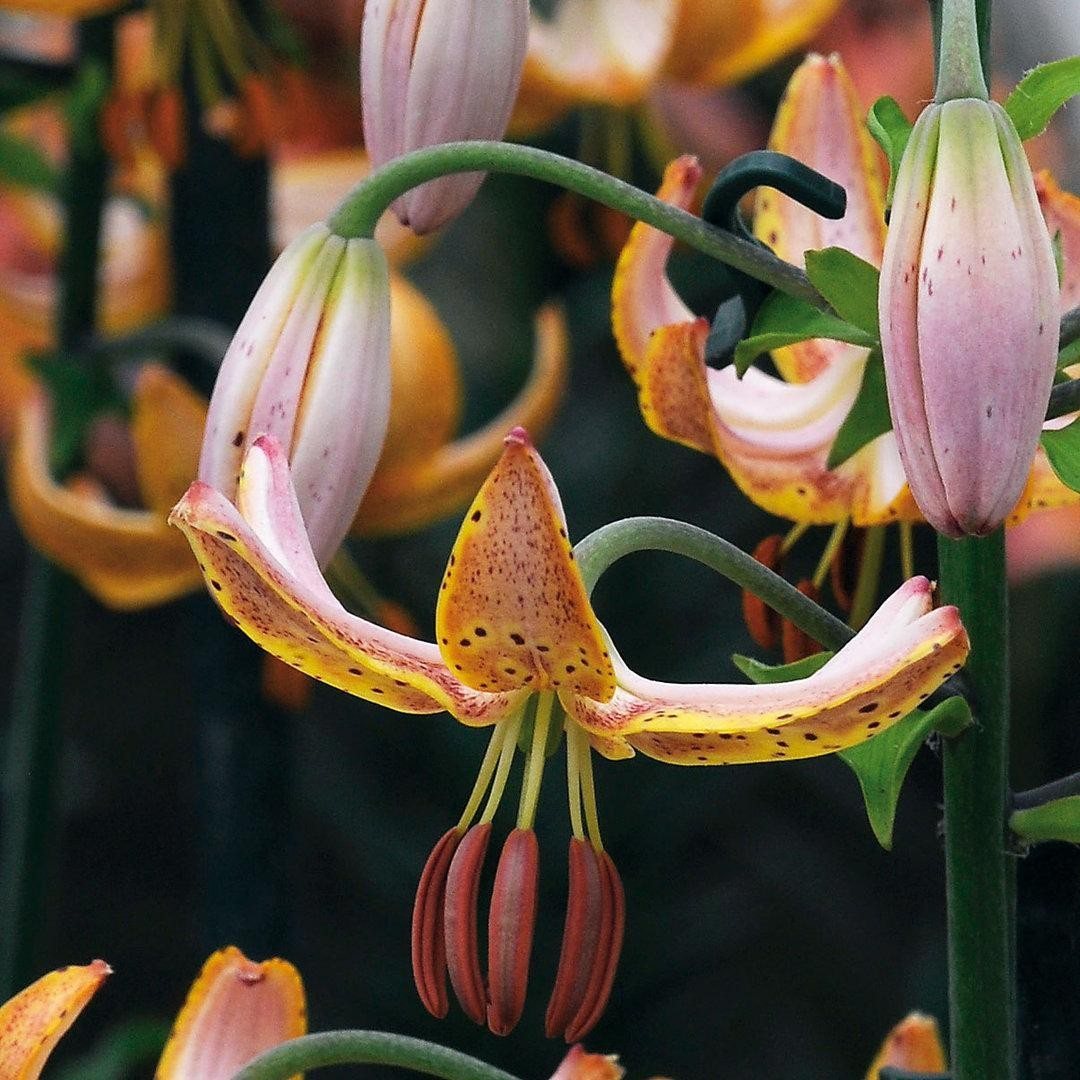
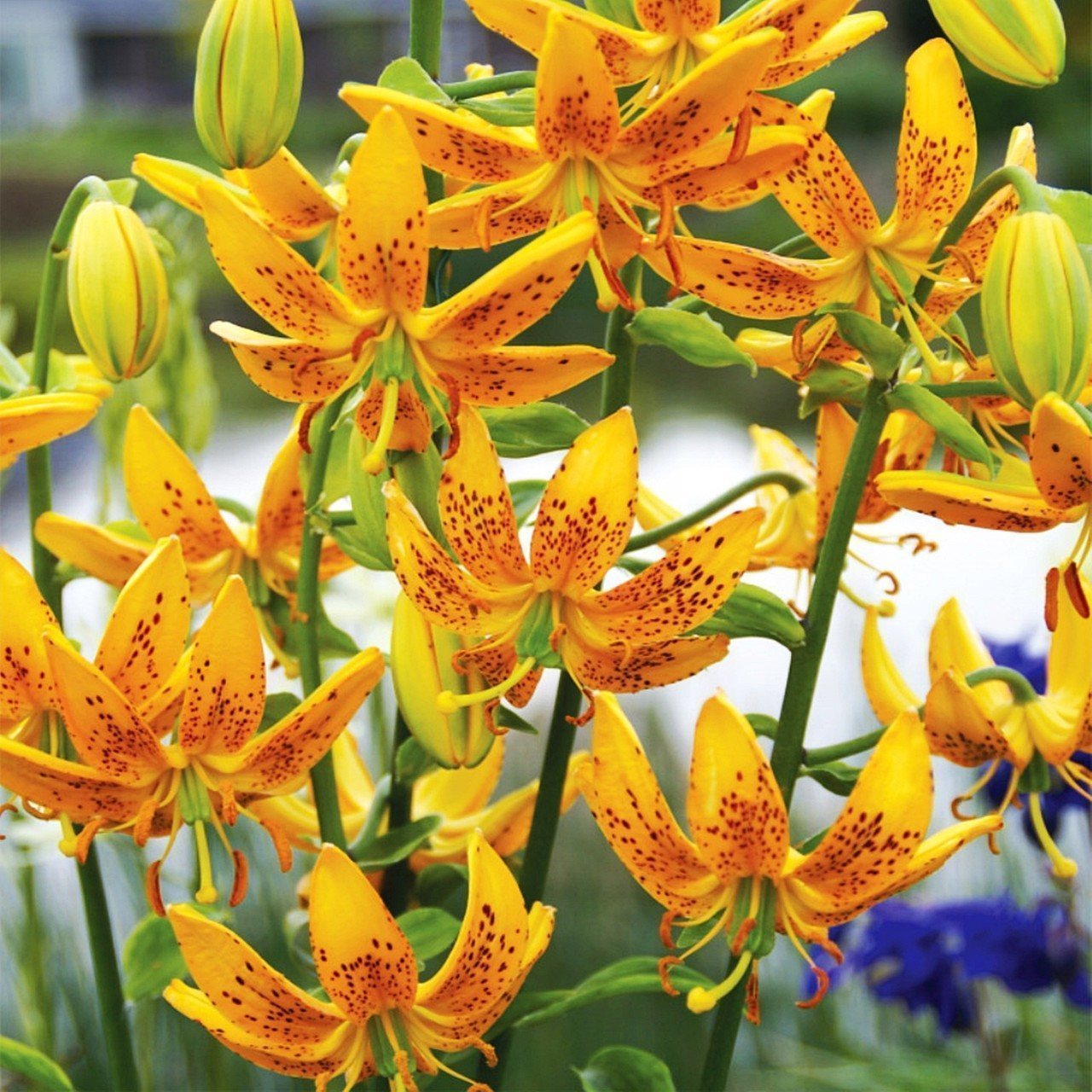
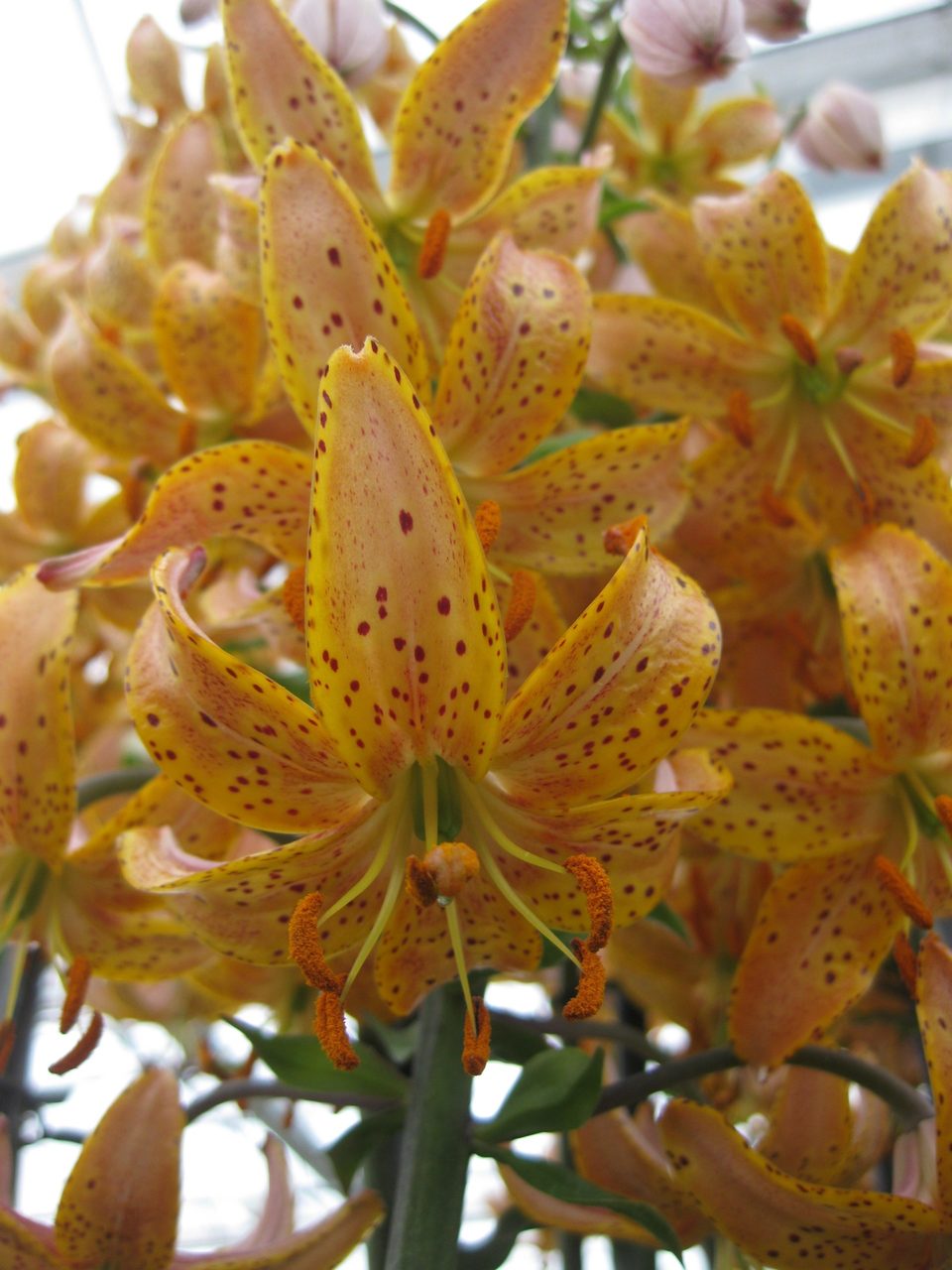





Claude Shride
The tallest variety of this series of lilies, the shoot height reaches 170 cm. The petals are red-violet with an orange spot in the center. The diameter of the flowers reaches 10 cm. This lily blooms in the second half of June.
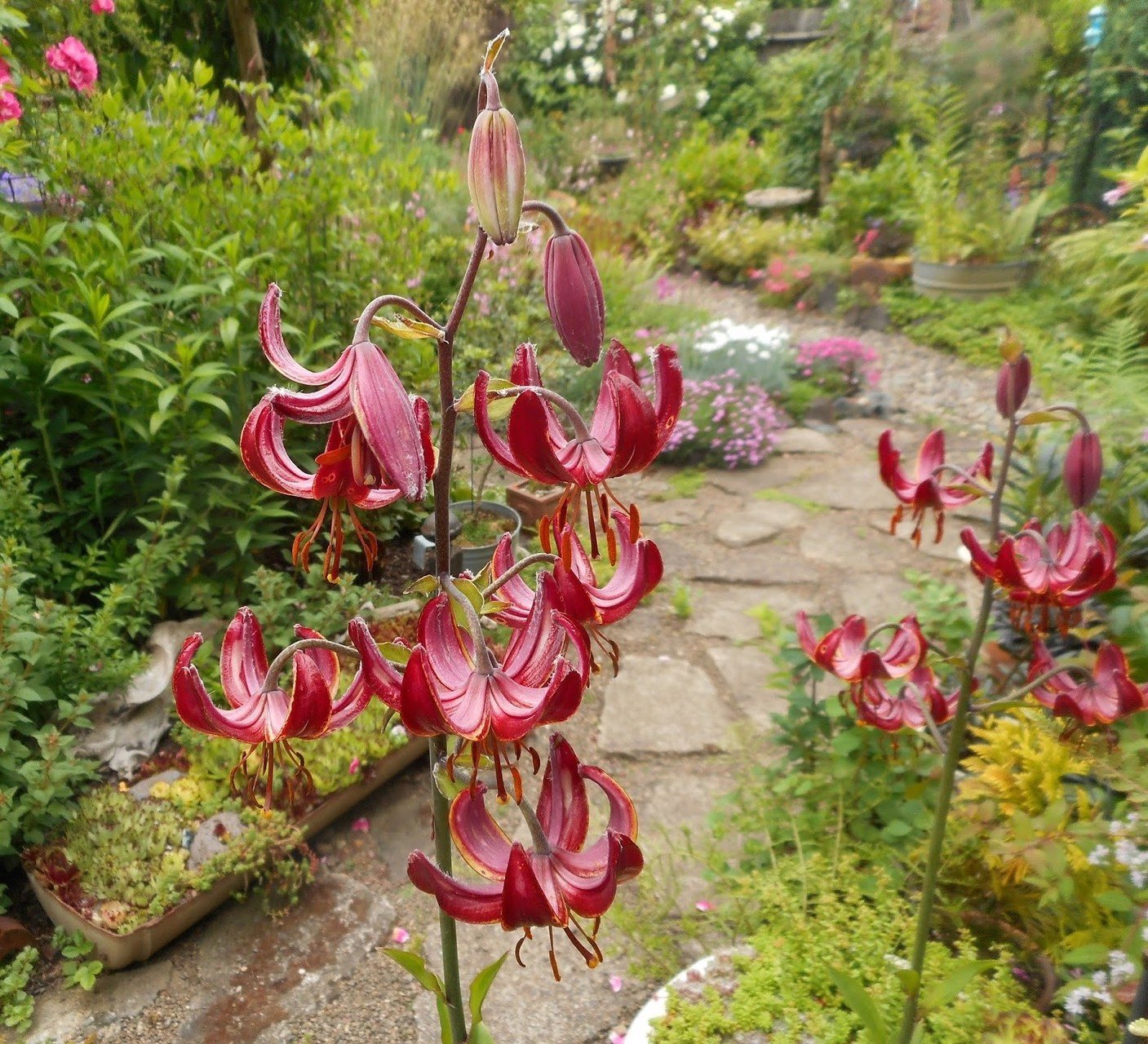
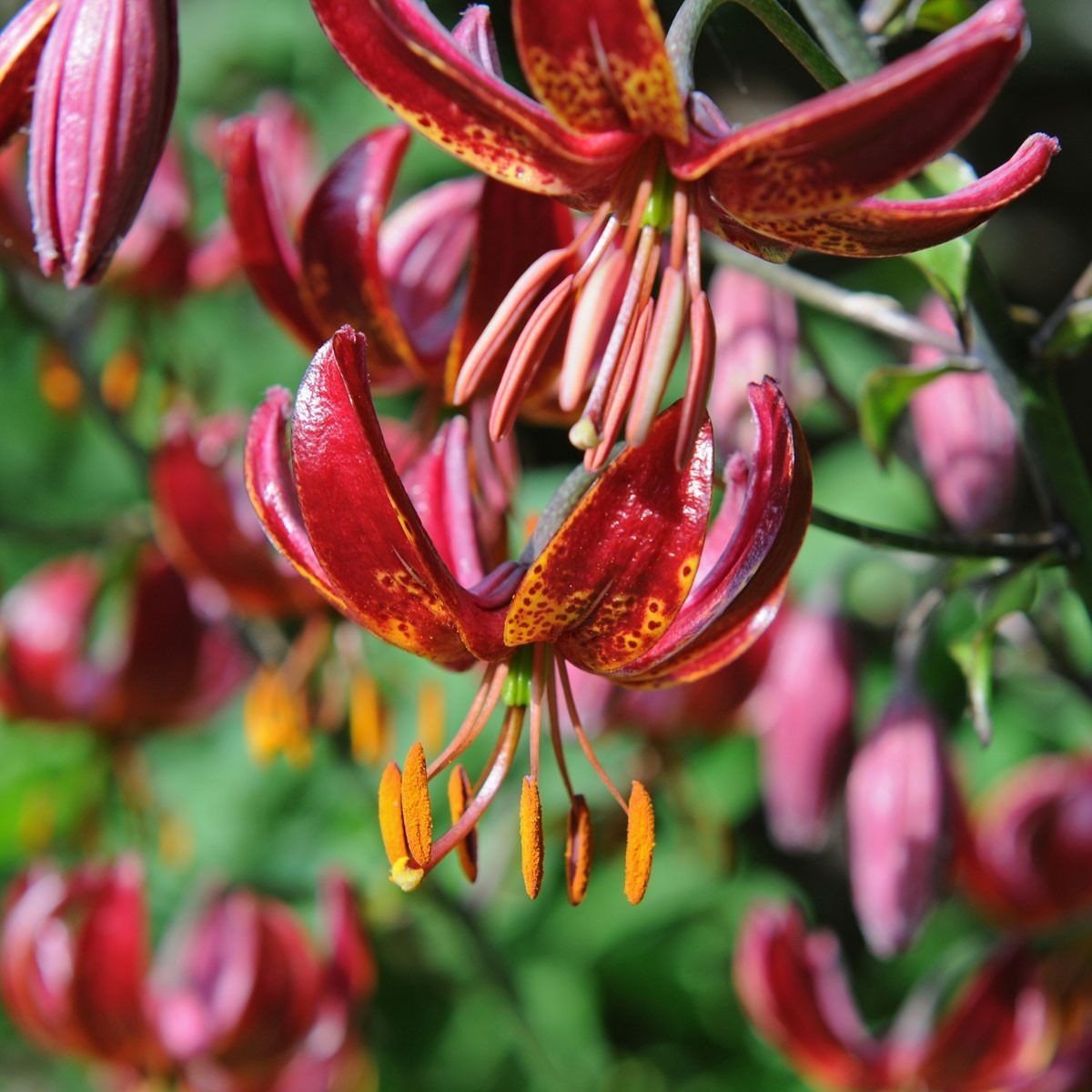
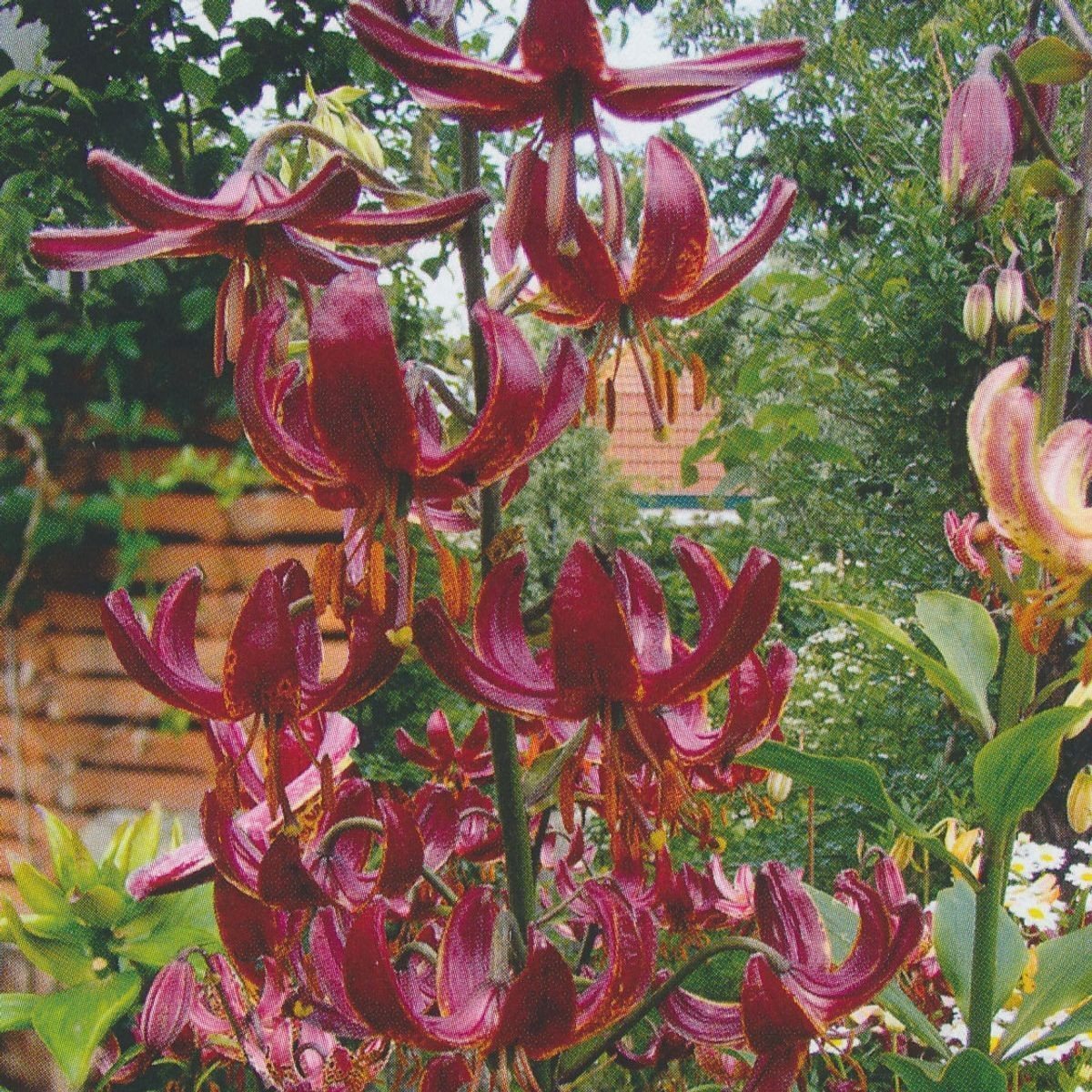
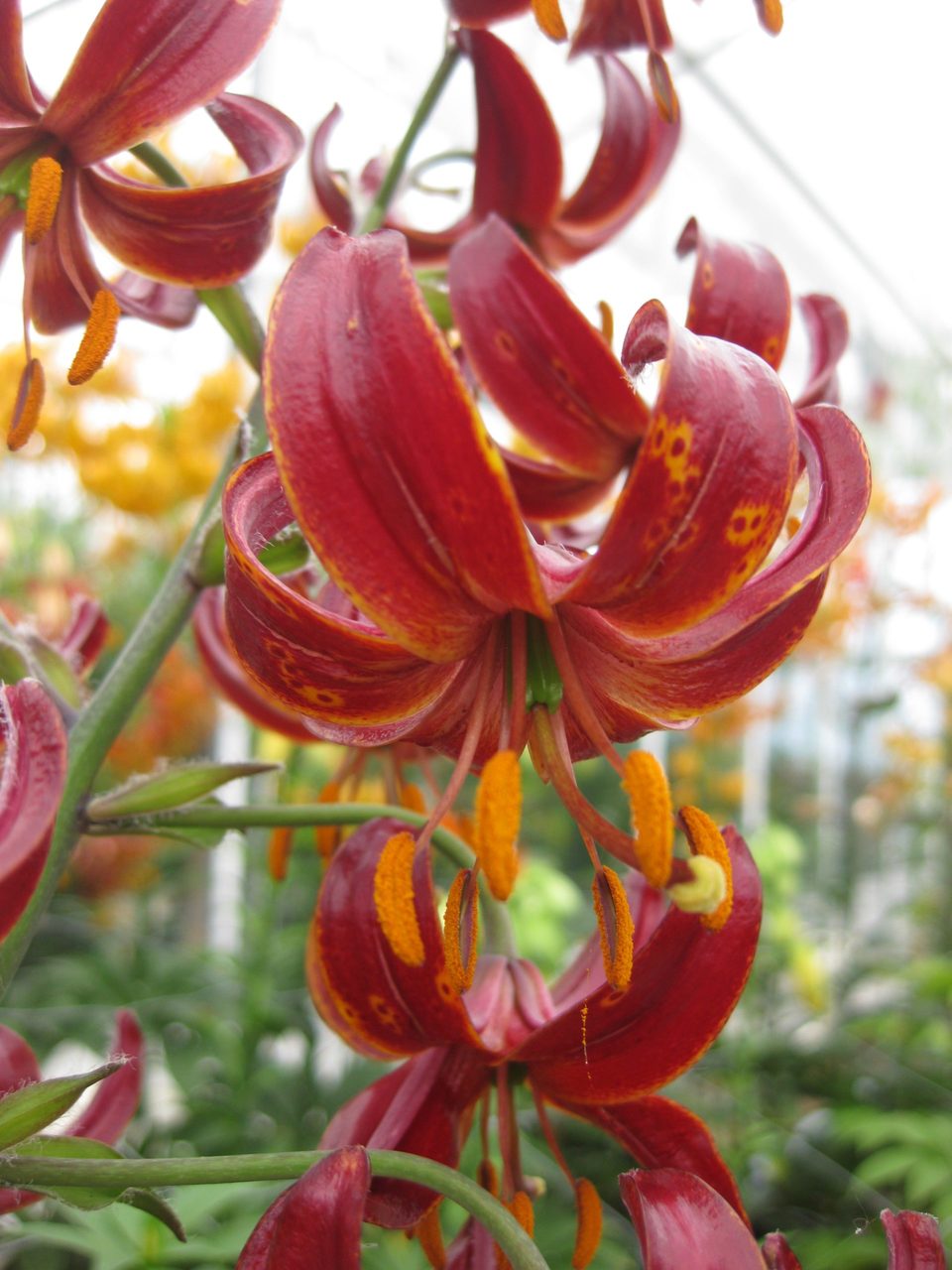
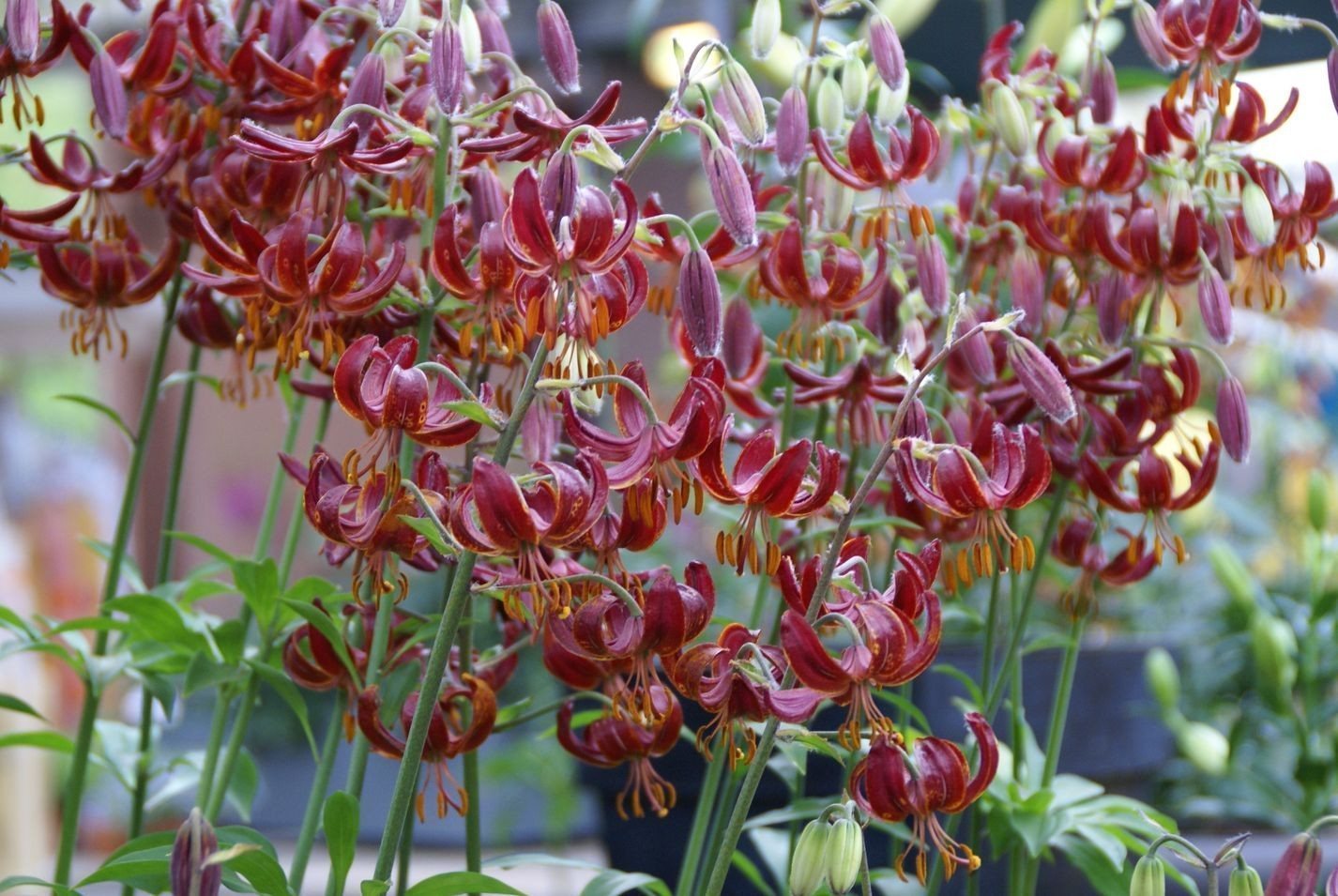





Arabian Knight
A distinctive feature of the variety are dark red petals with yellow markings and large purple specks. When opened, the buds emit a pleasant aroma. The stem is dense, 120-150 cm high.
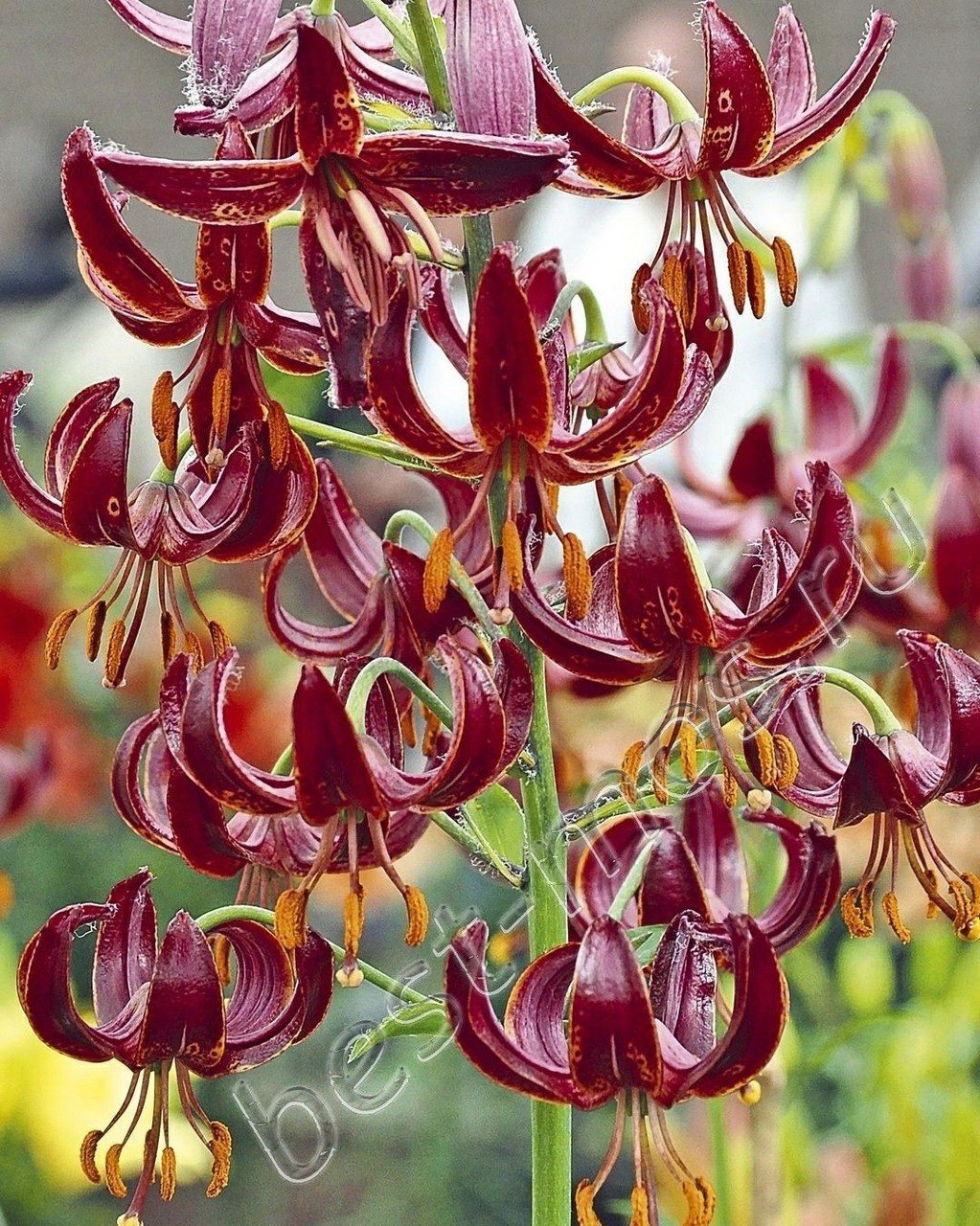
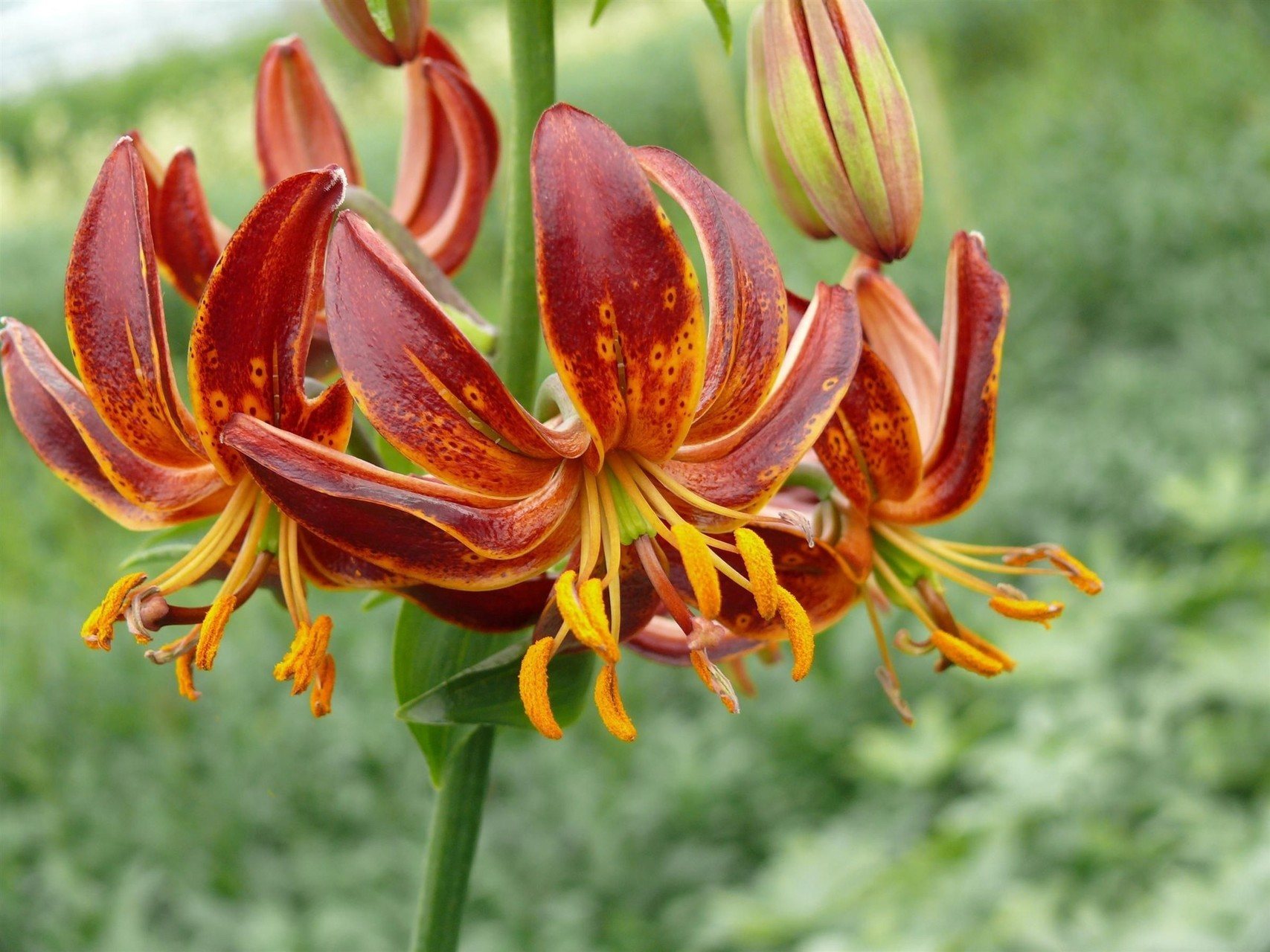
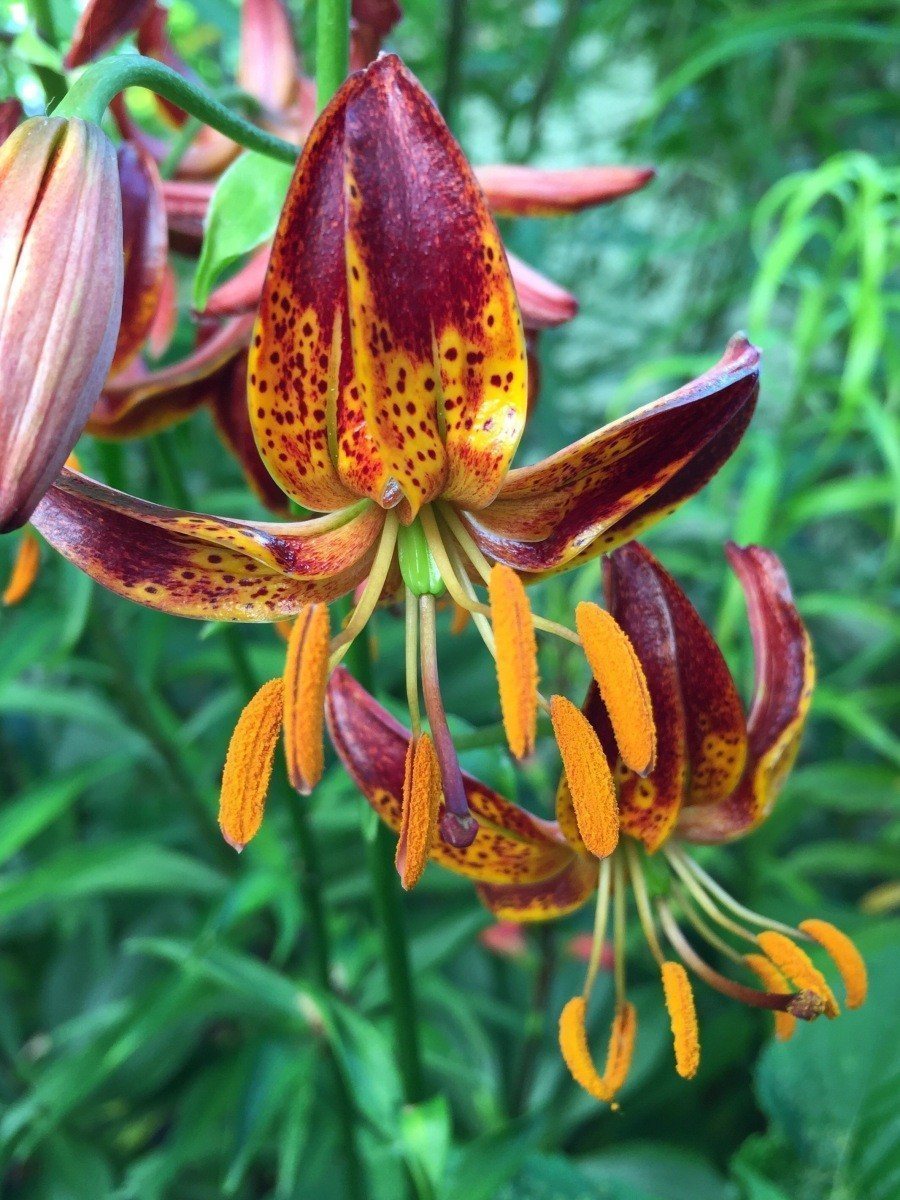
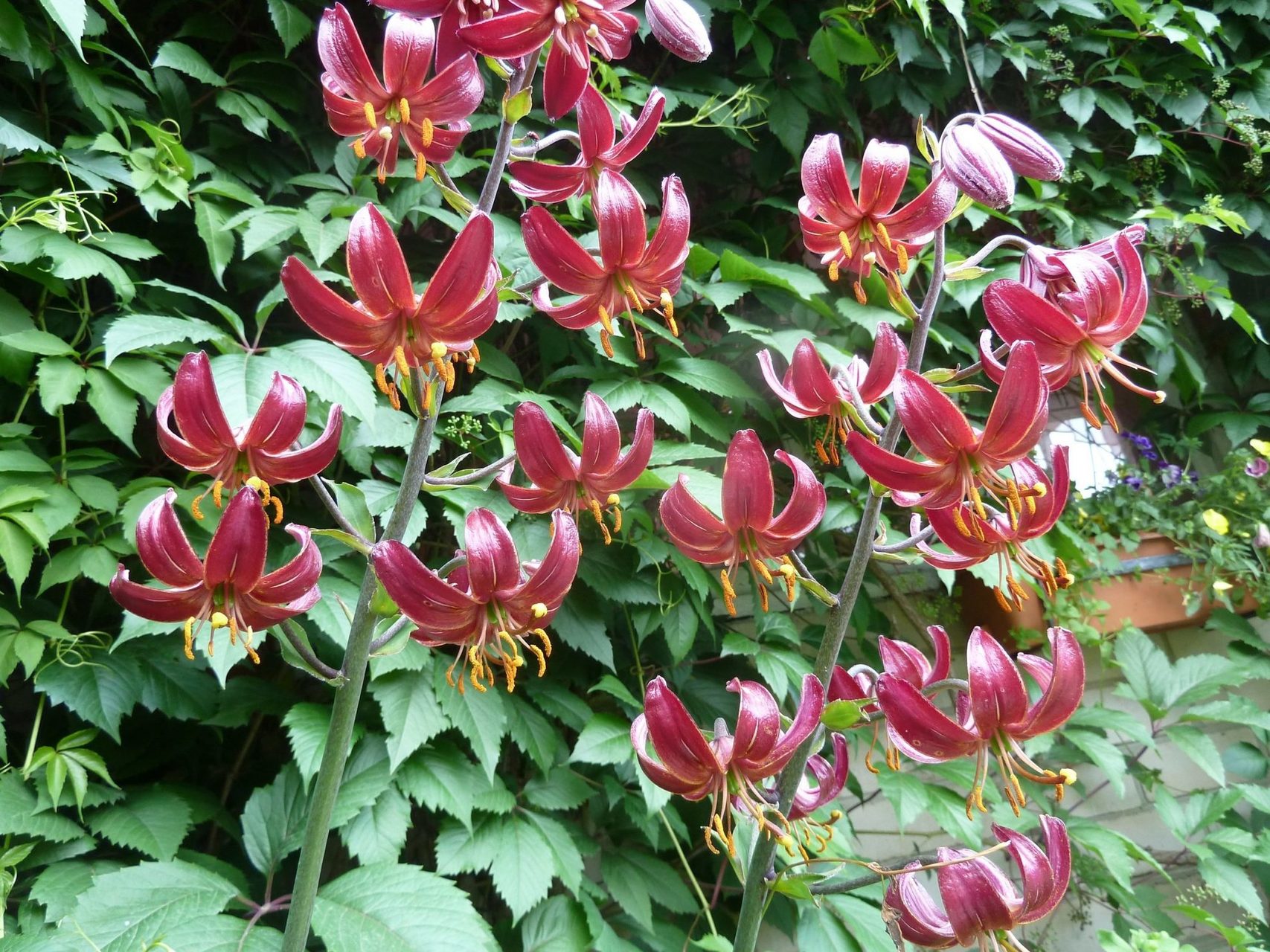
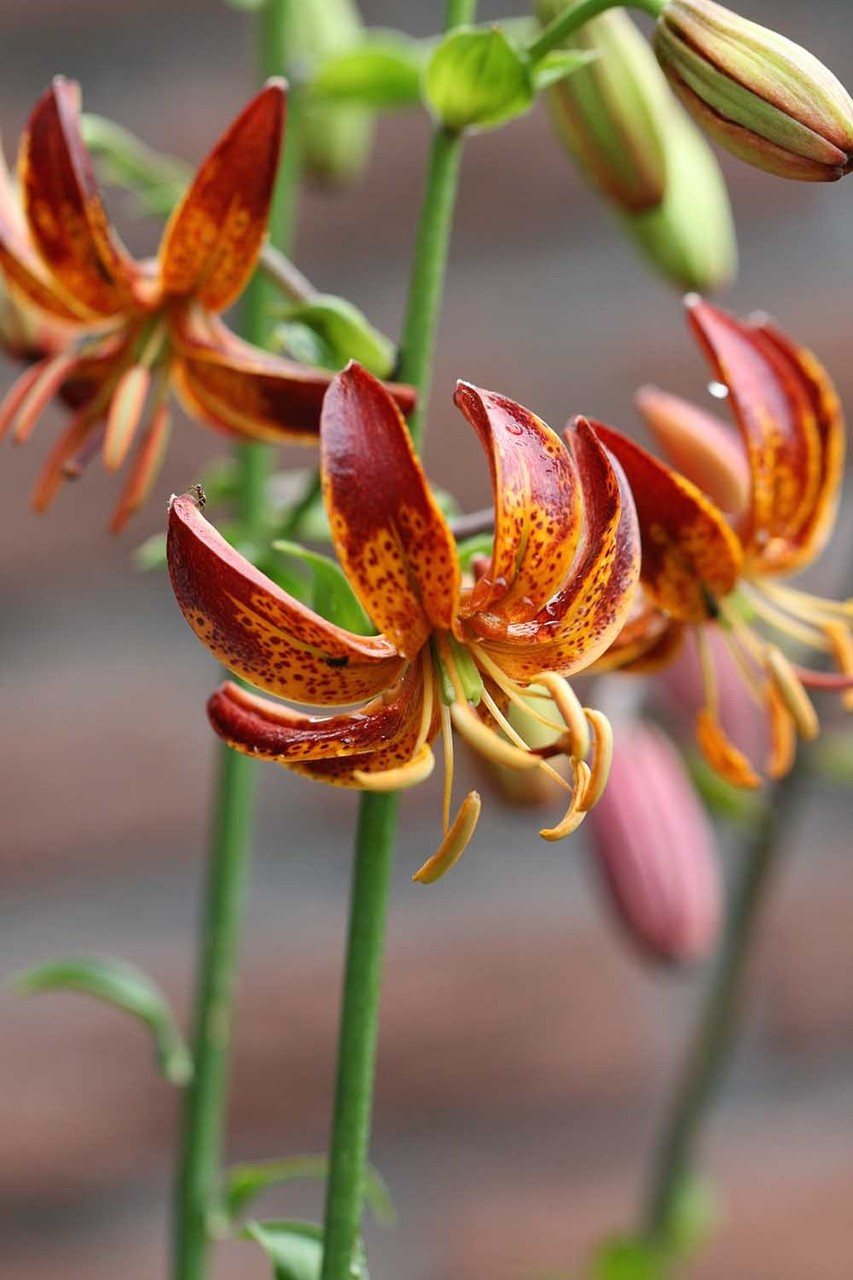





Album
This lily has turban-shaped flowers with a diameter of 14 cm. The petals are slightly corrugated and snow-white. Stamens with brown anthers are directed in different directions. The height of the shoot is 120 cm. The Album lily blooms in August. Winter hardiness is high up to -40 degrees.
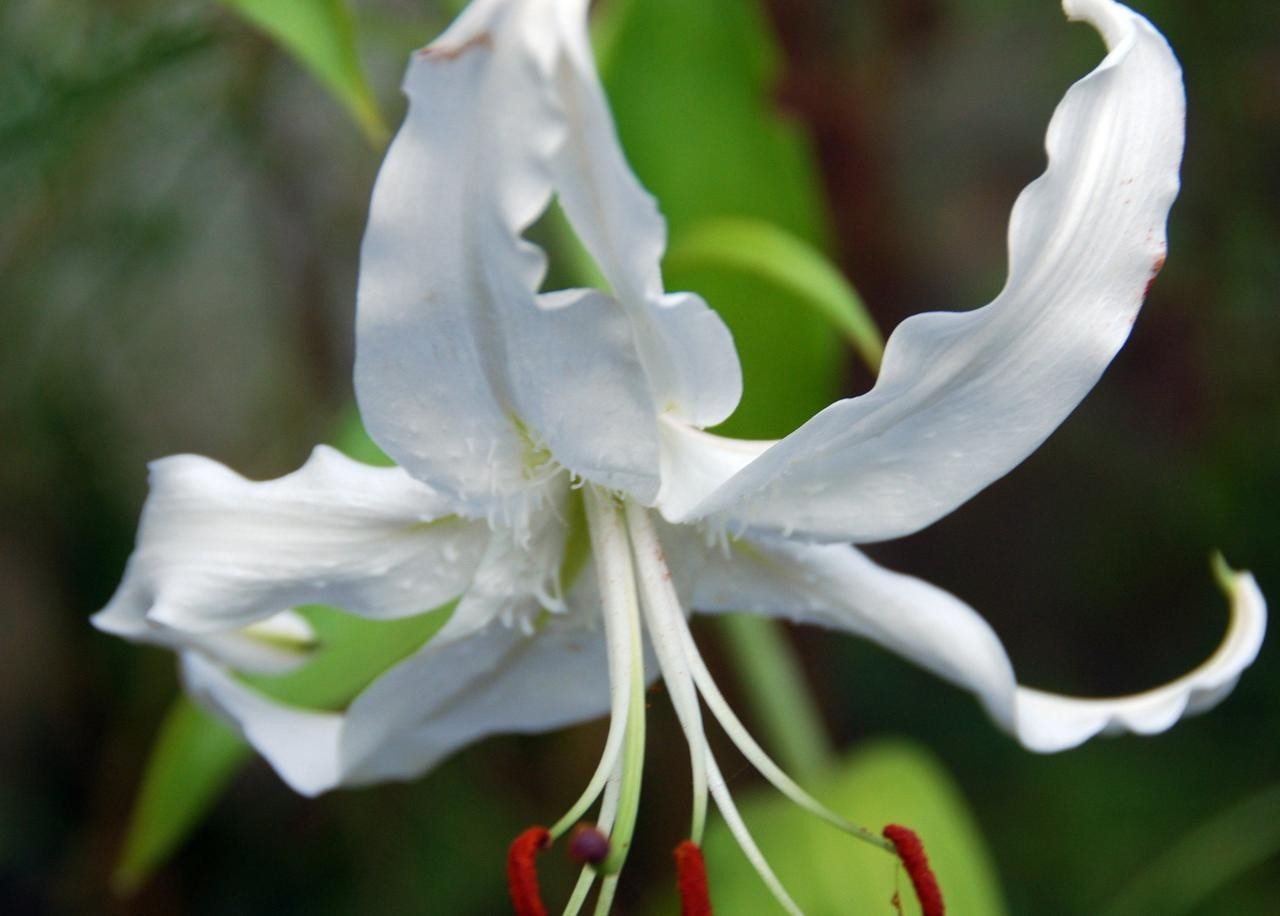
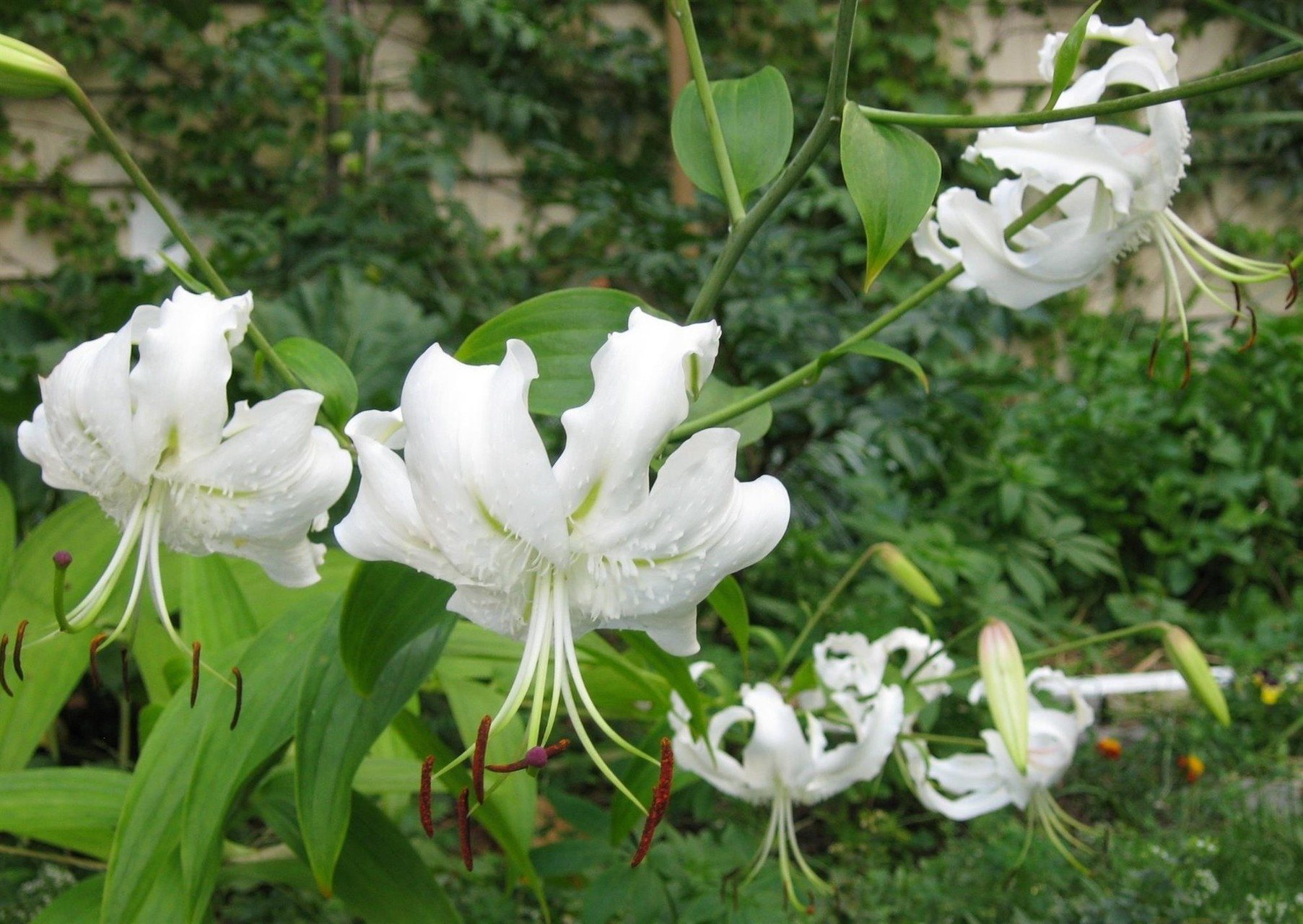
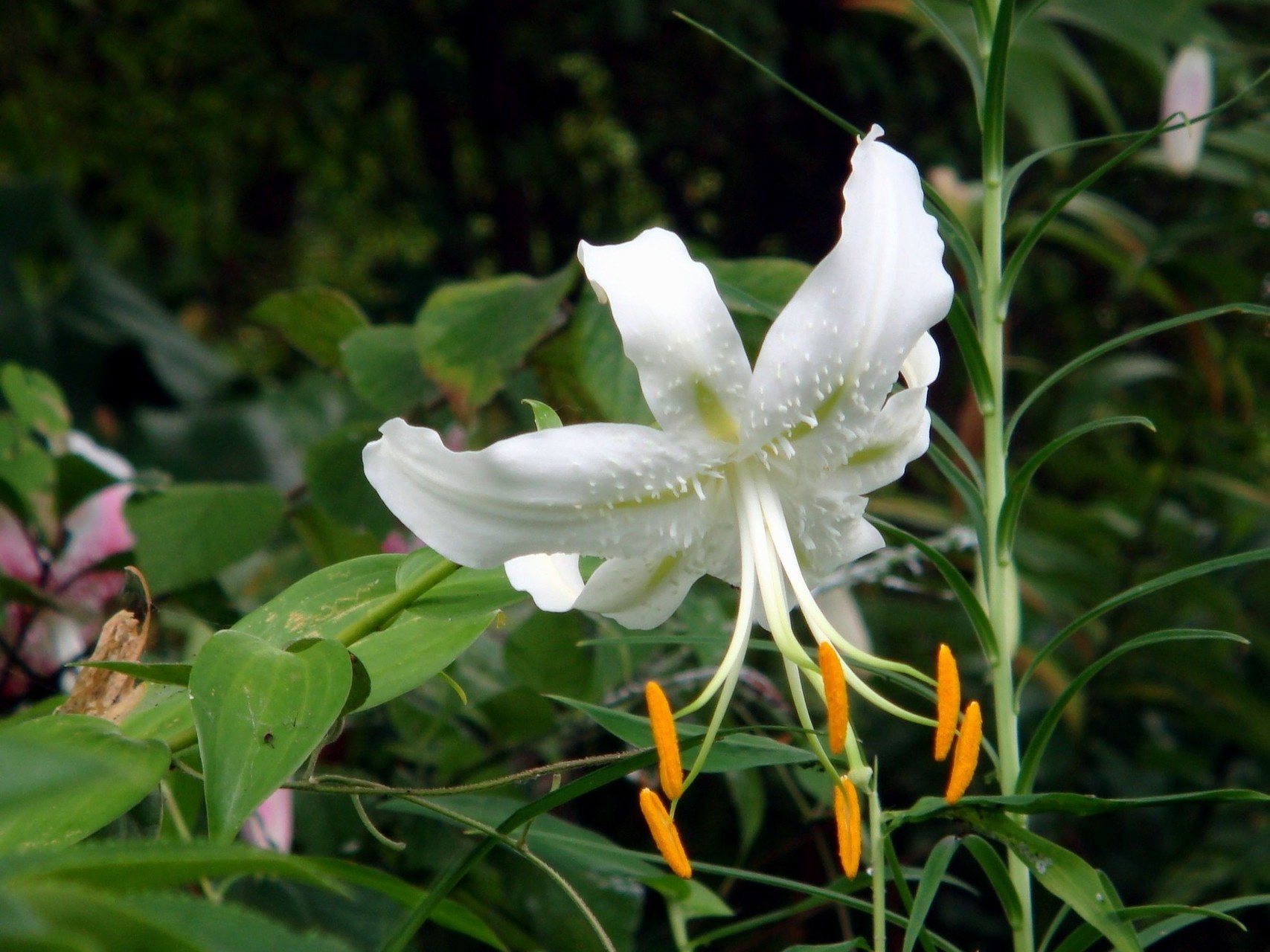
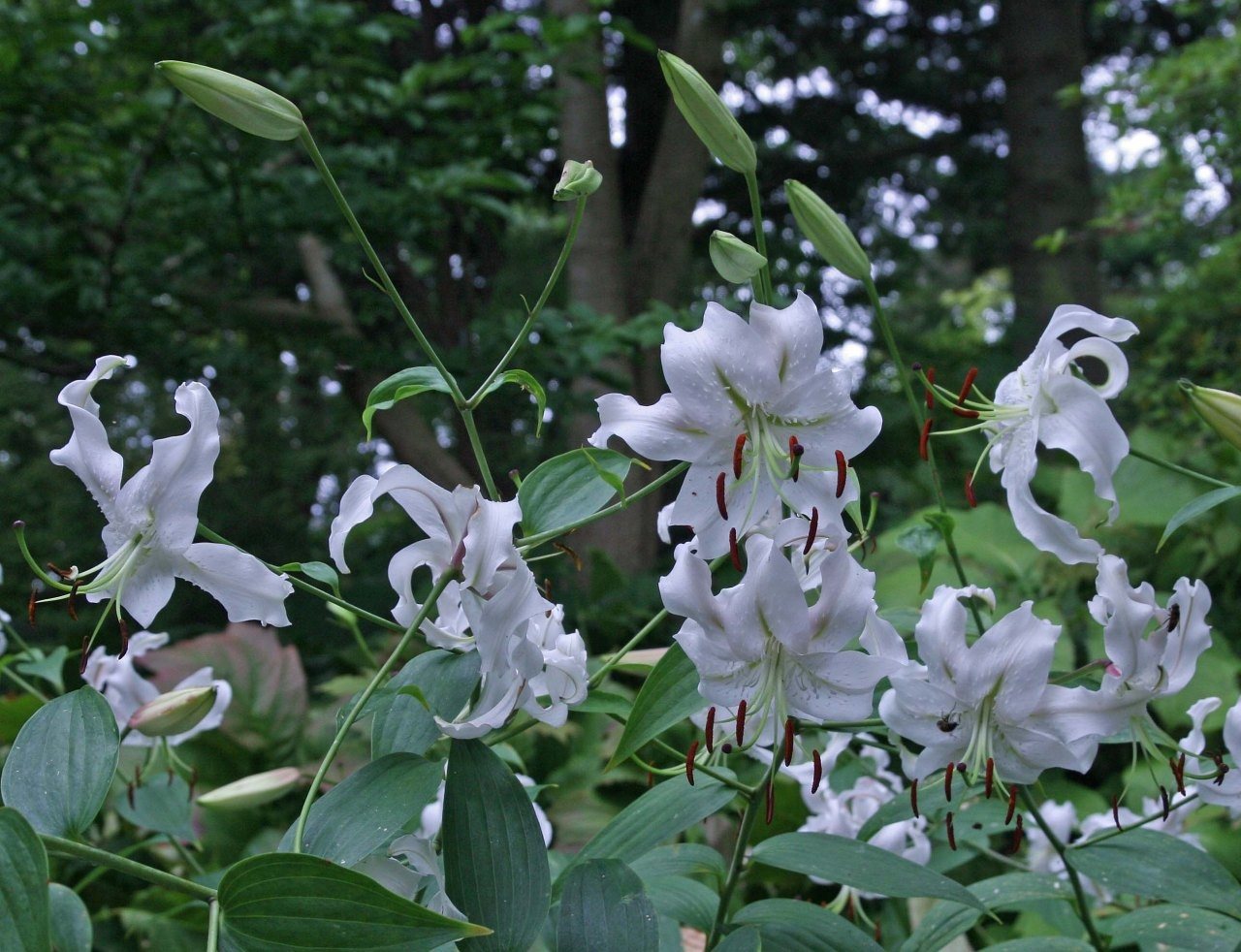
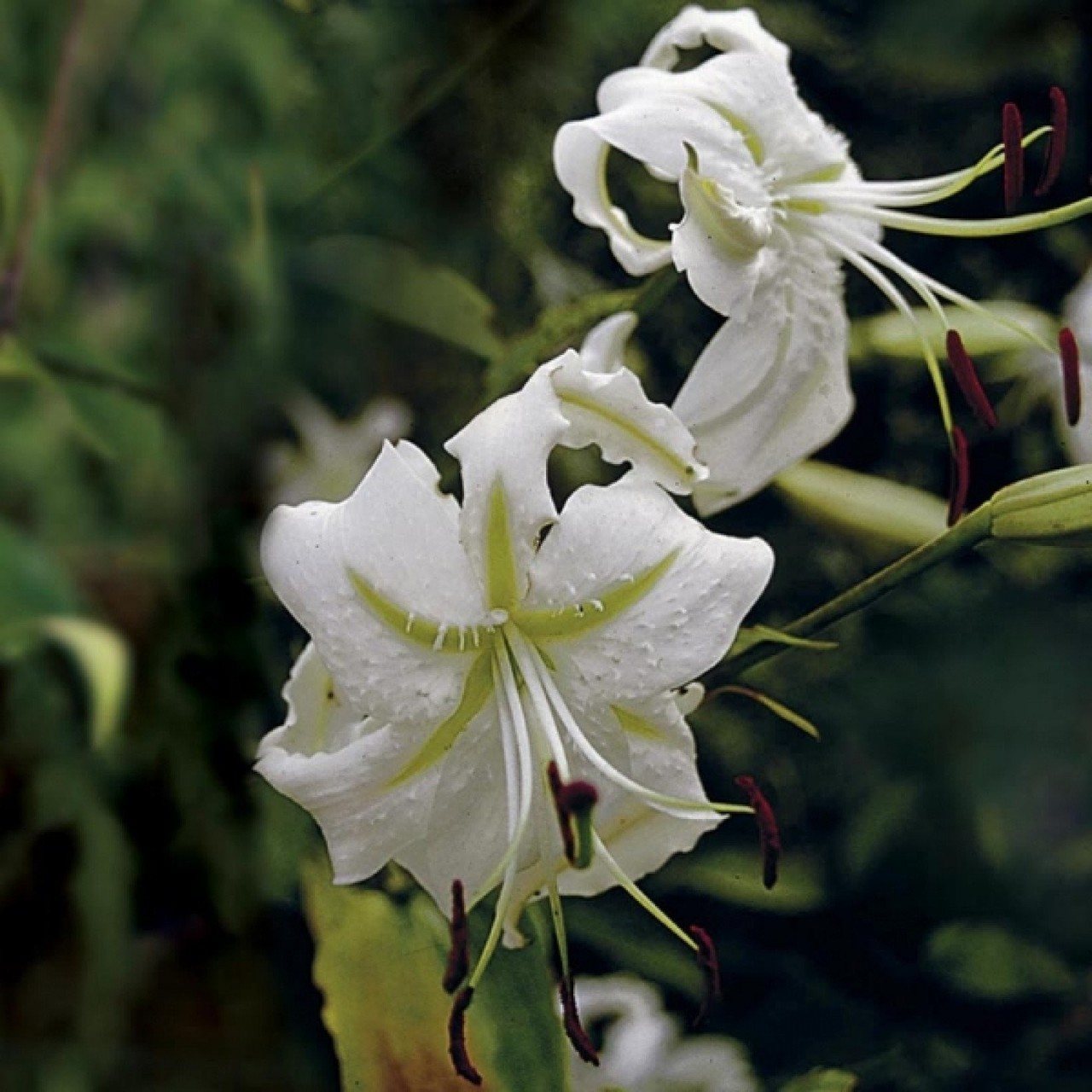





Candidum, or Euro-Caucasian lily hybrids (The Candidum Hybrids)
This lily is also called snow-white, since its species form, which served as the basis for breeding hybrids, has a white tint to the petals. The color range of hybrids of this variety series is more diverse. In addition to white, it also includes yellow shades of varying intensities.
Flowers can be wide-shaped or tubular. The height of the shoots reaches 2 m. Flowering later. Inflorescences consist of 8-30 buds.
Let's consider the popular garden varieties of candidum lilies.
White Elf
Miniature variety, 50 cm high. Flowers are small, funnel-shaped. The color of the petals is white. The buds begin to bloom in early June. The variety can be grown as a potted crop.
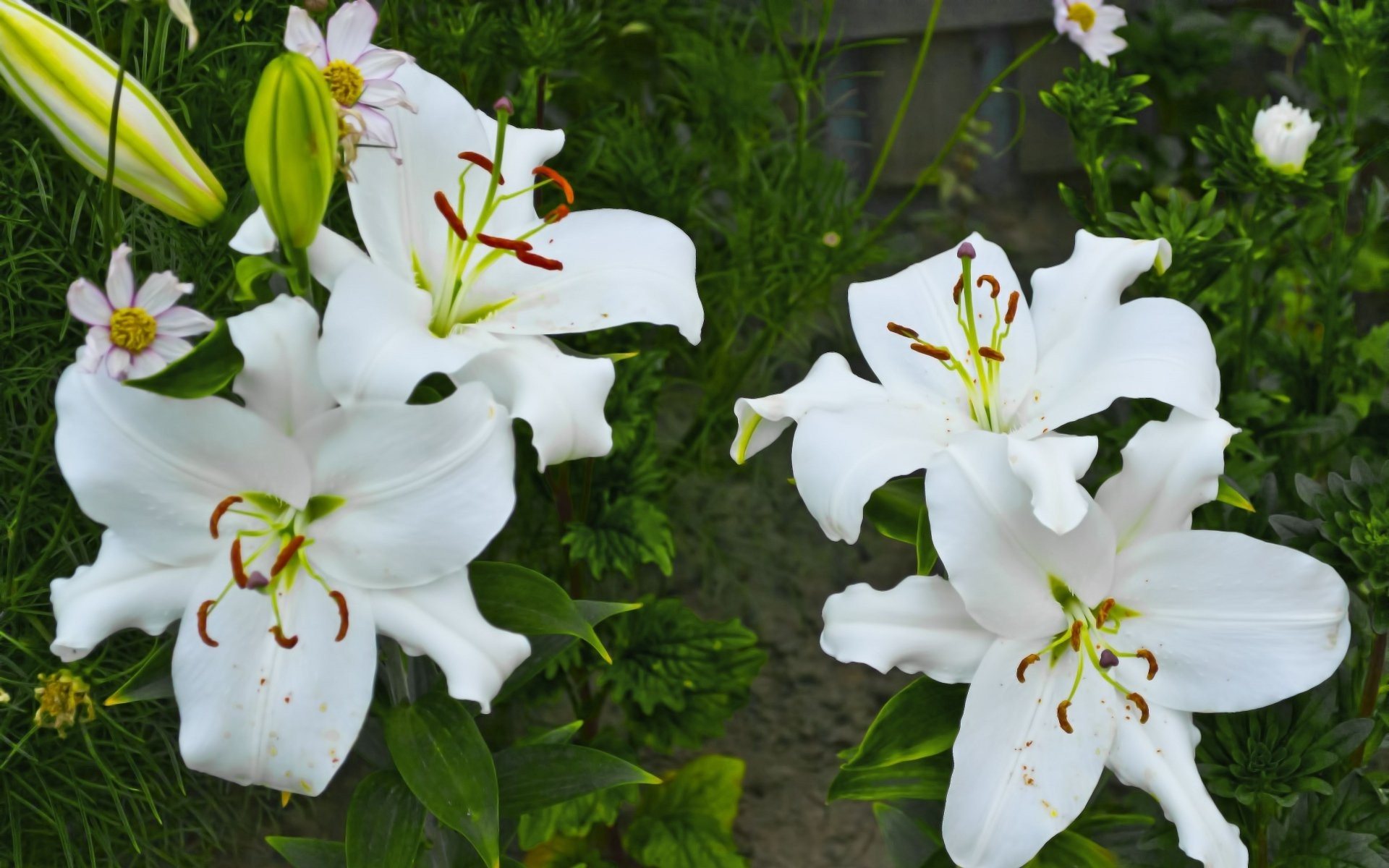
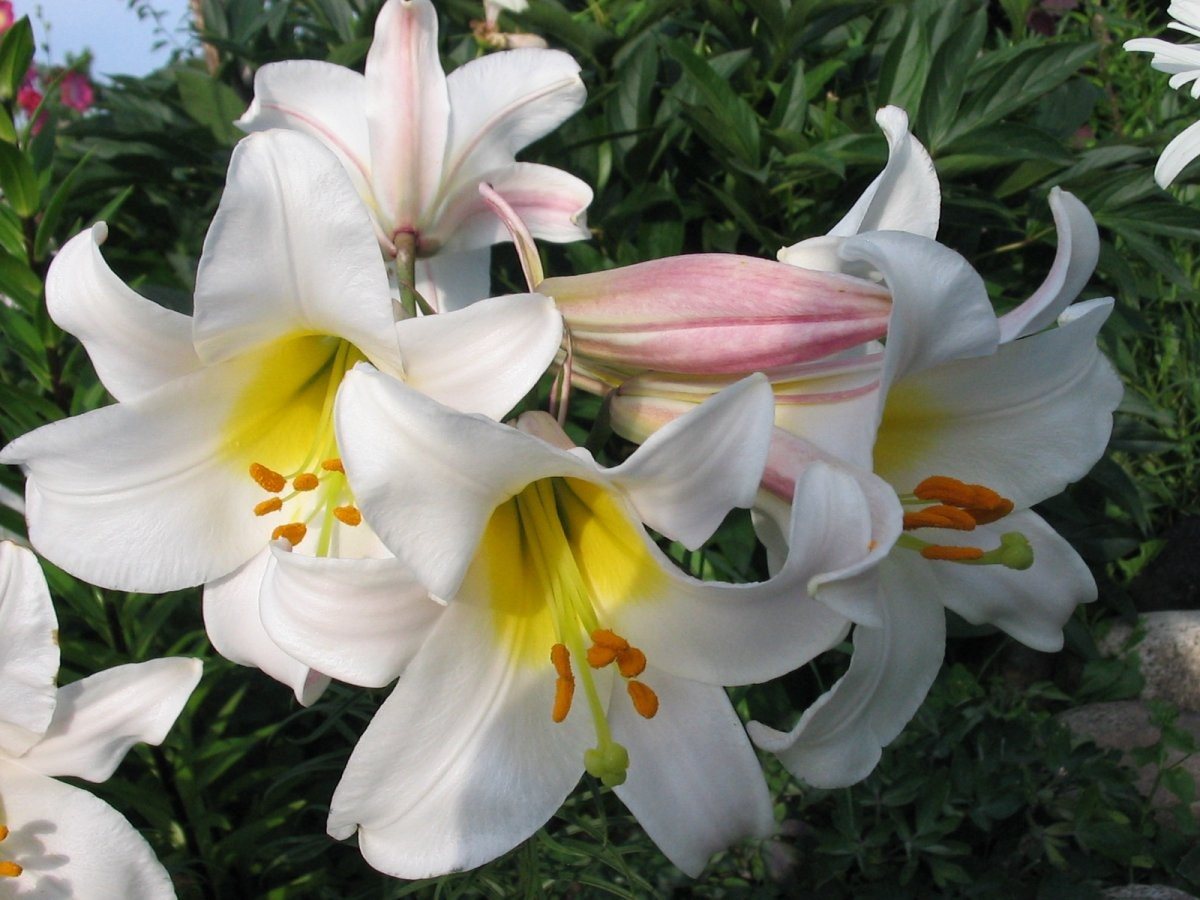
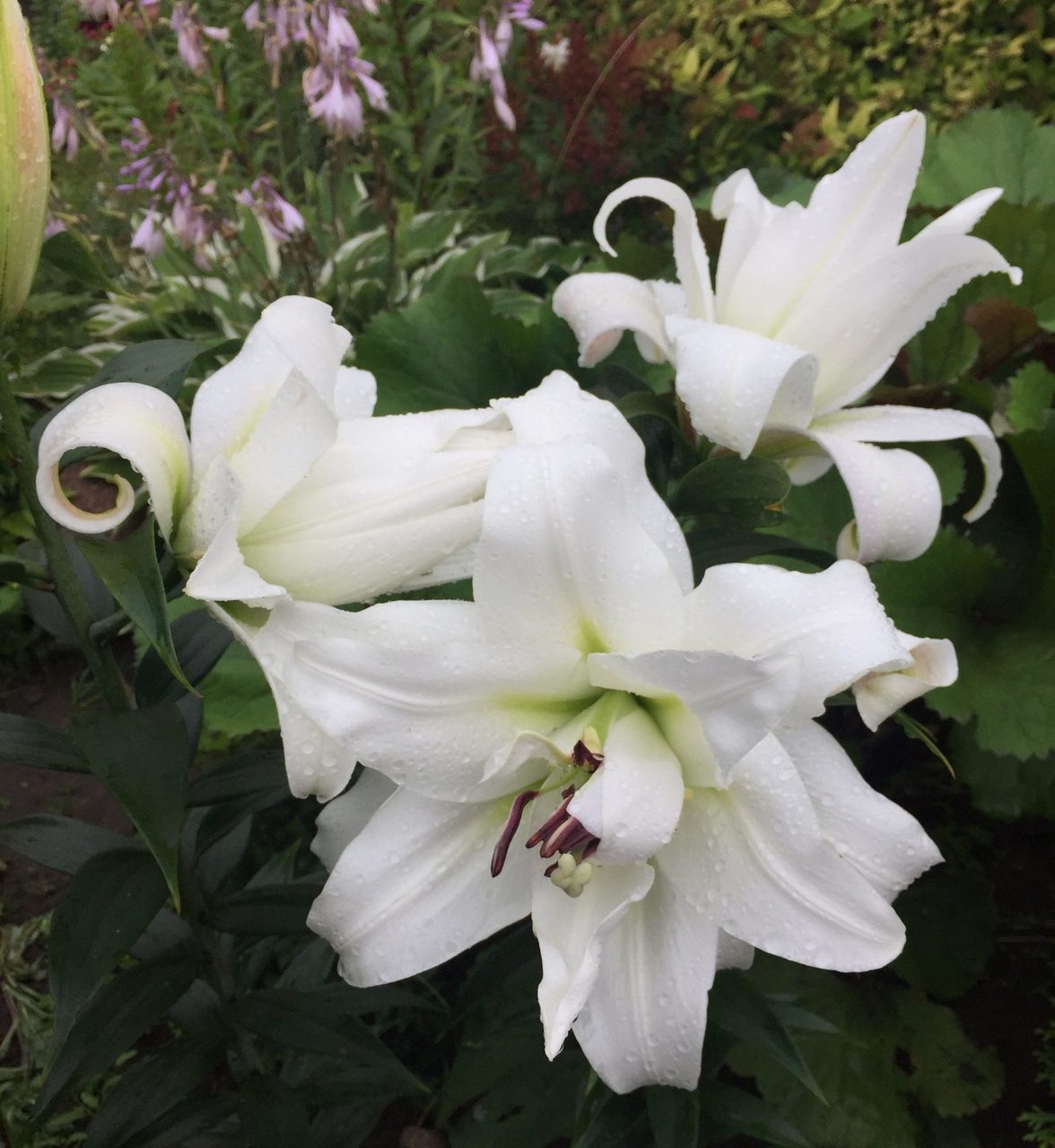
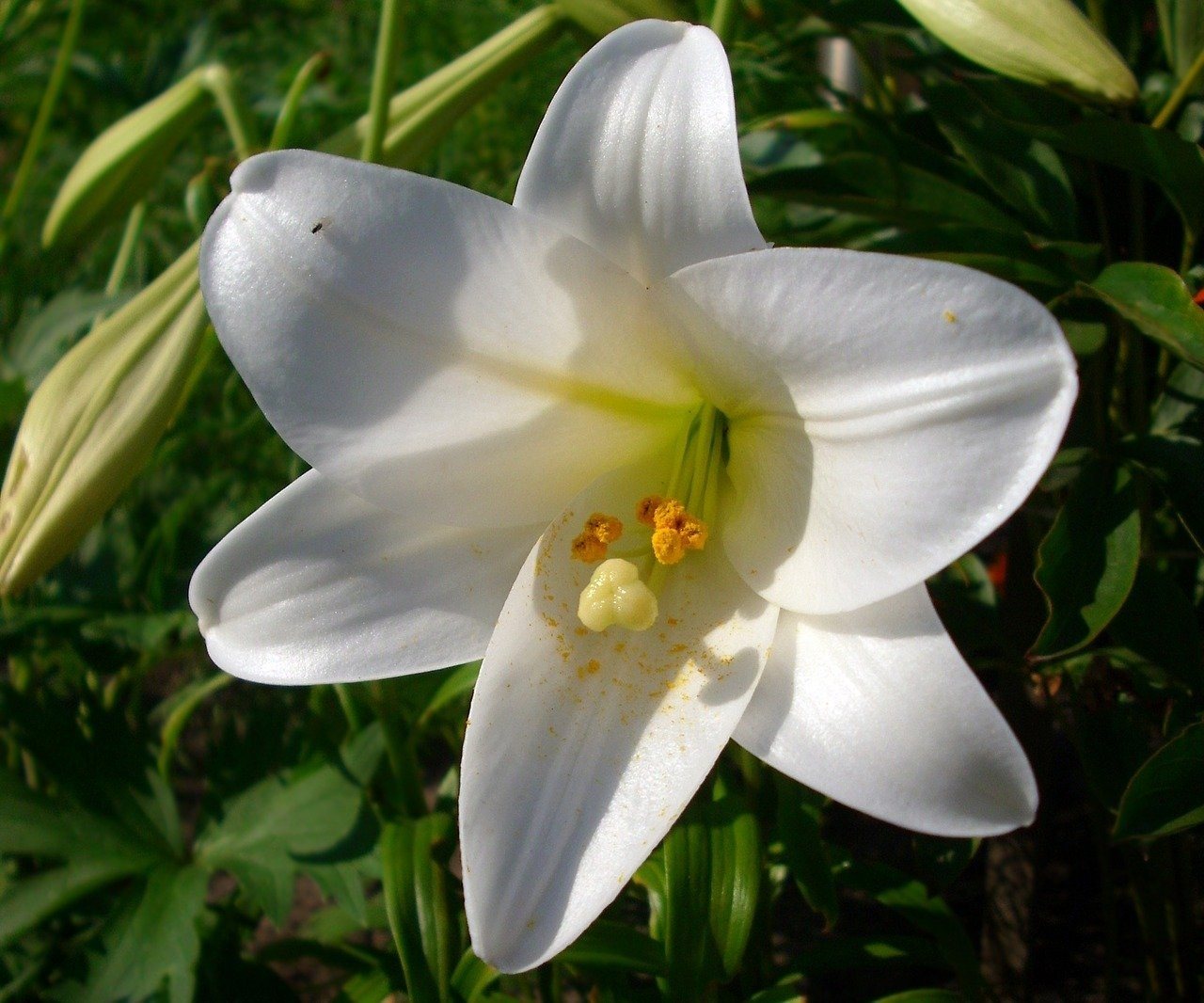
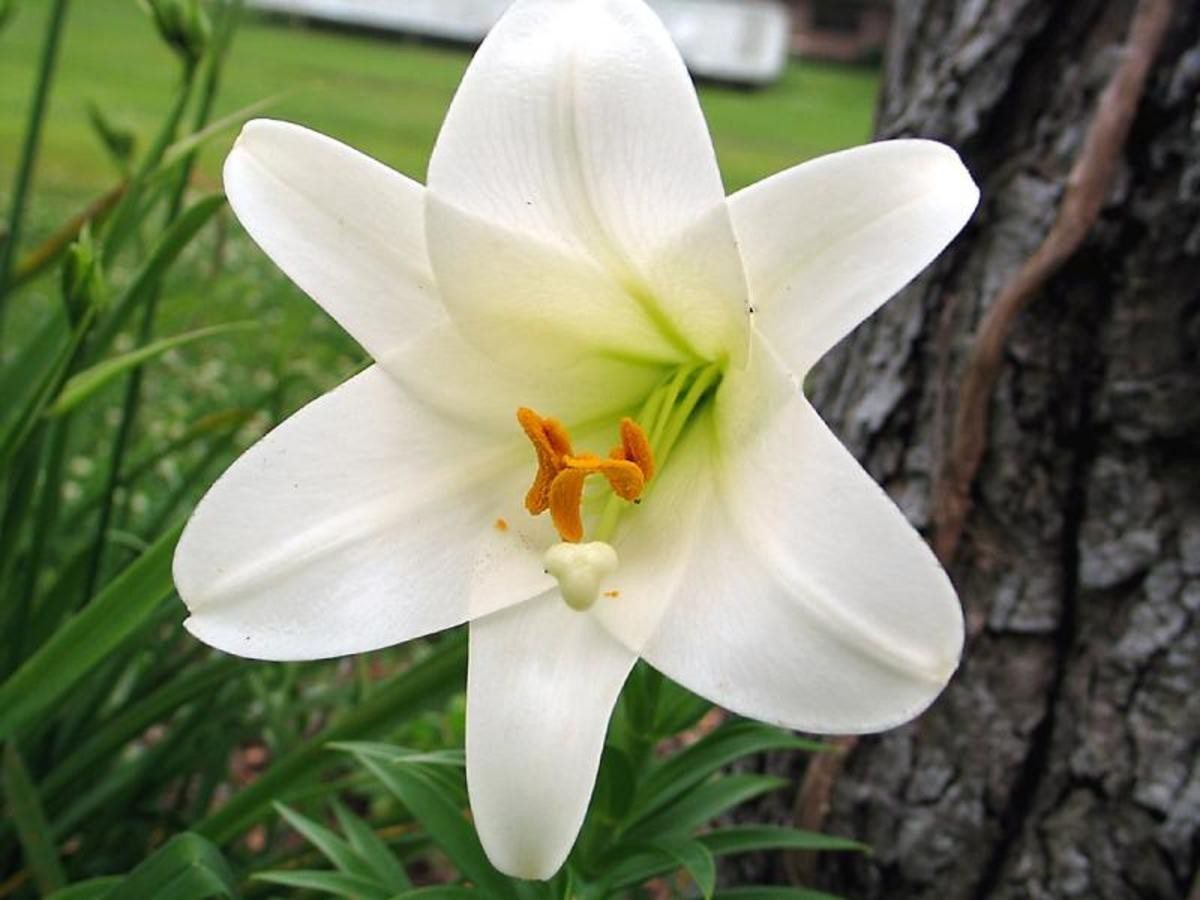





Apollo
It is characterized by a strong, erect stem, the height of which reaches 150 cm. The color of the flowers is white. Their diameter is 12-15 cm.When the buds open, they emit a pleasant, unobtrusive aroma.
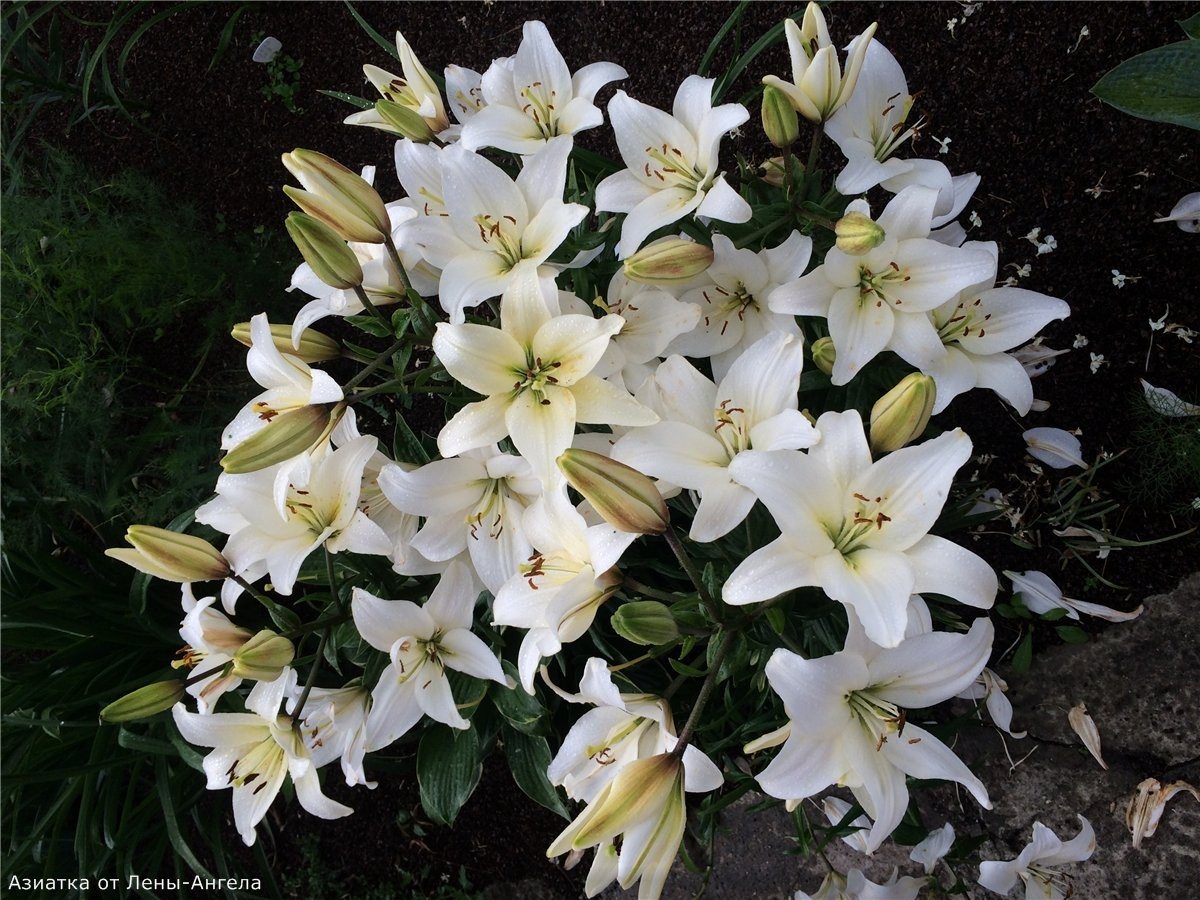
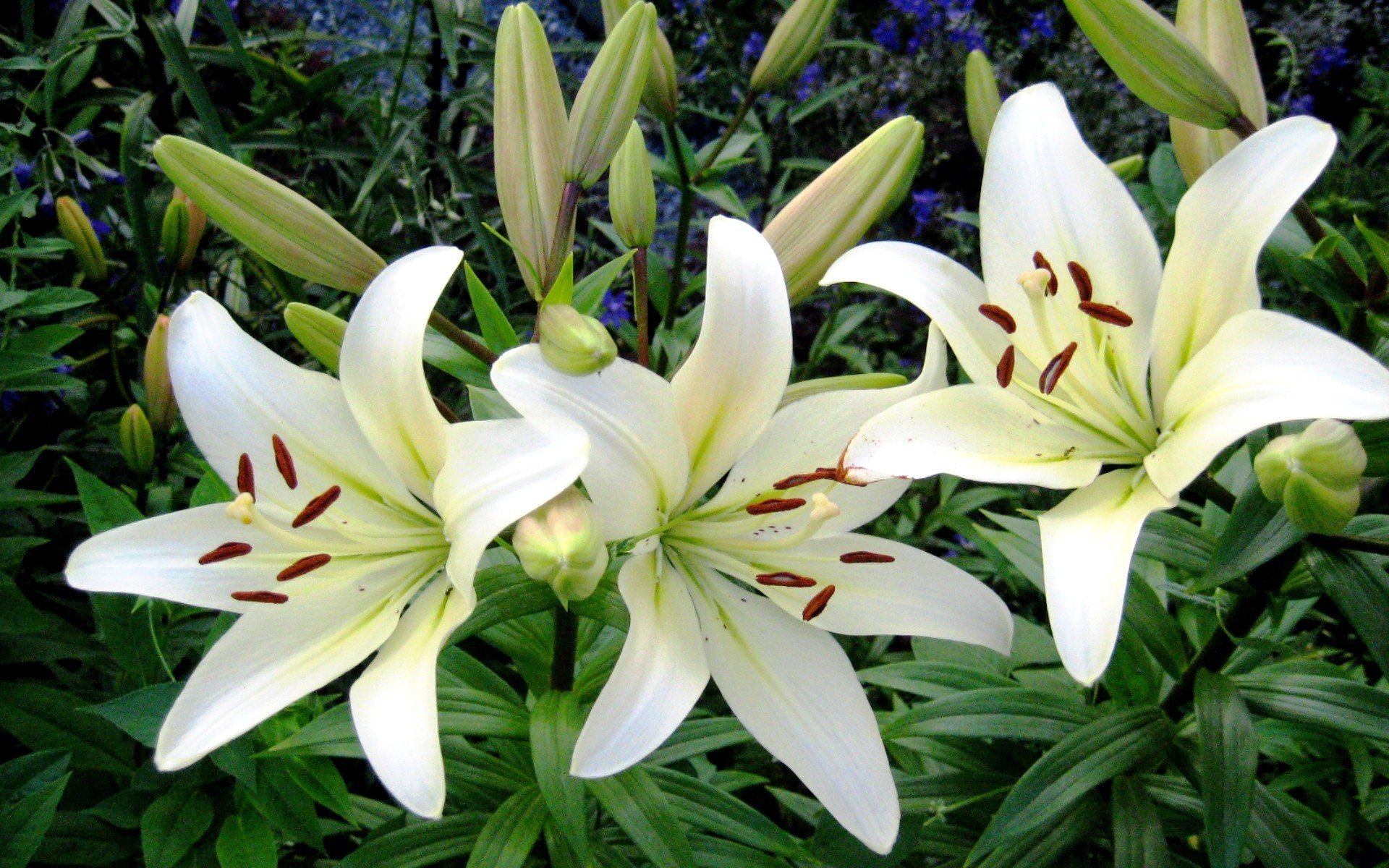
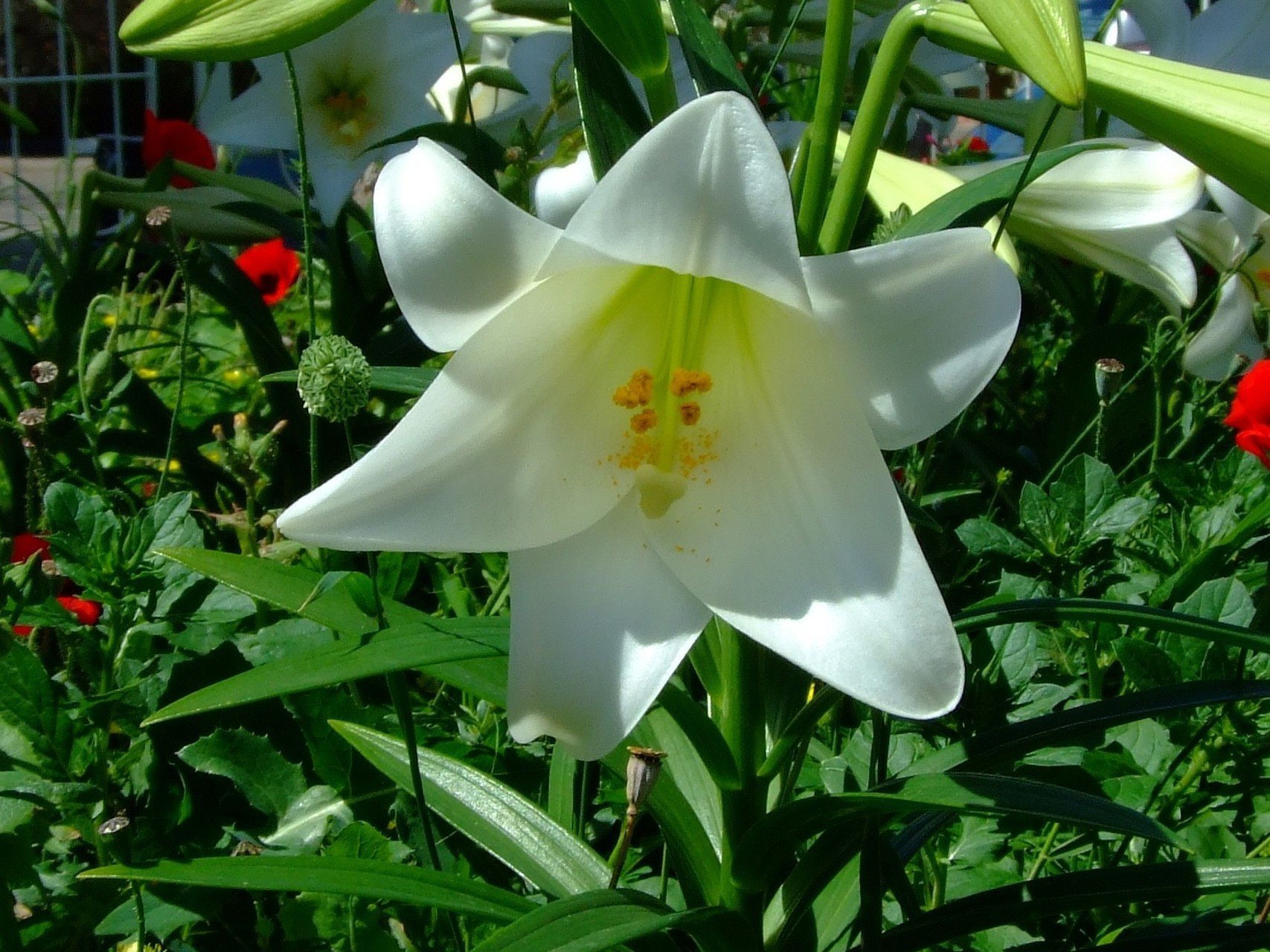
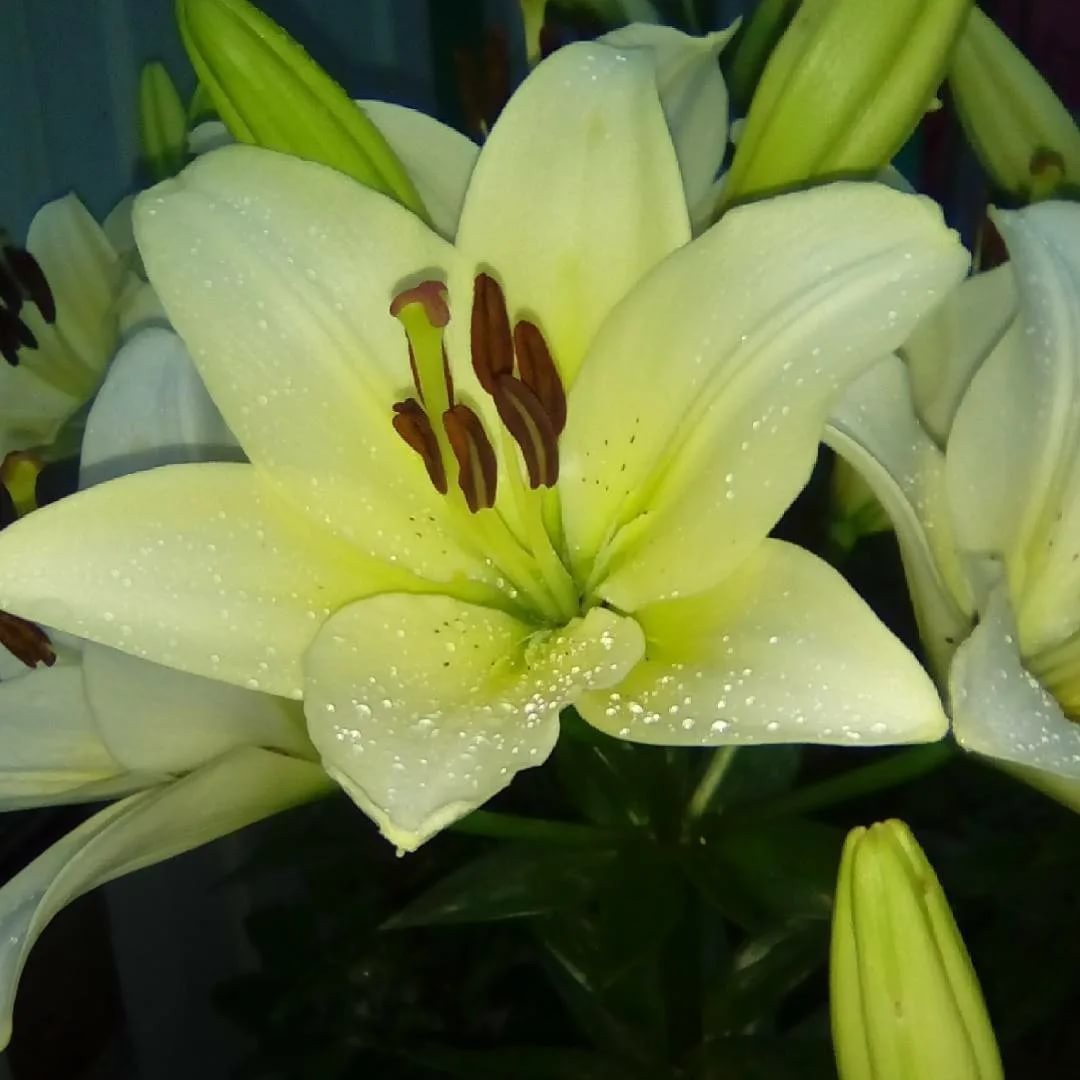






Madonna
This lily variety belongs to the early flowering category. Its buds are tubular and snow-white. The height of the plant reaches 140 cm. The flowers are directed to the sides.
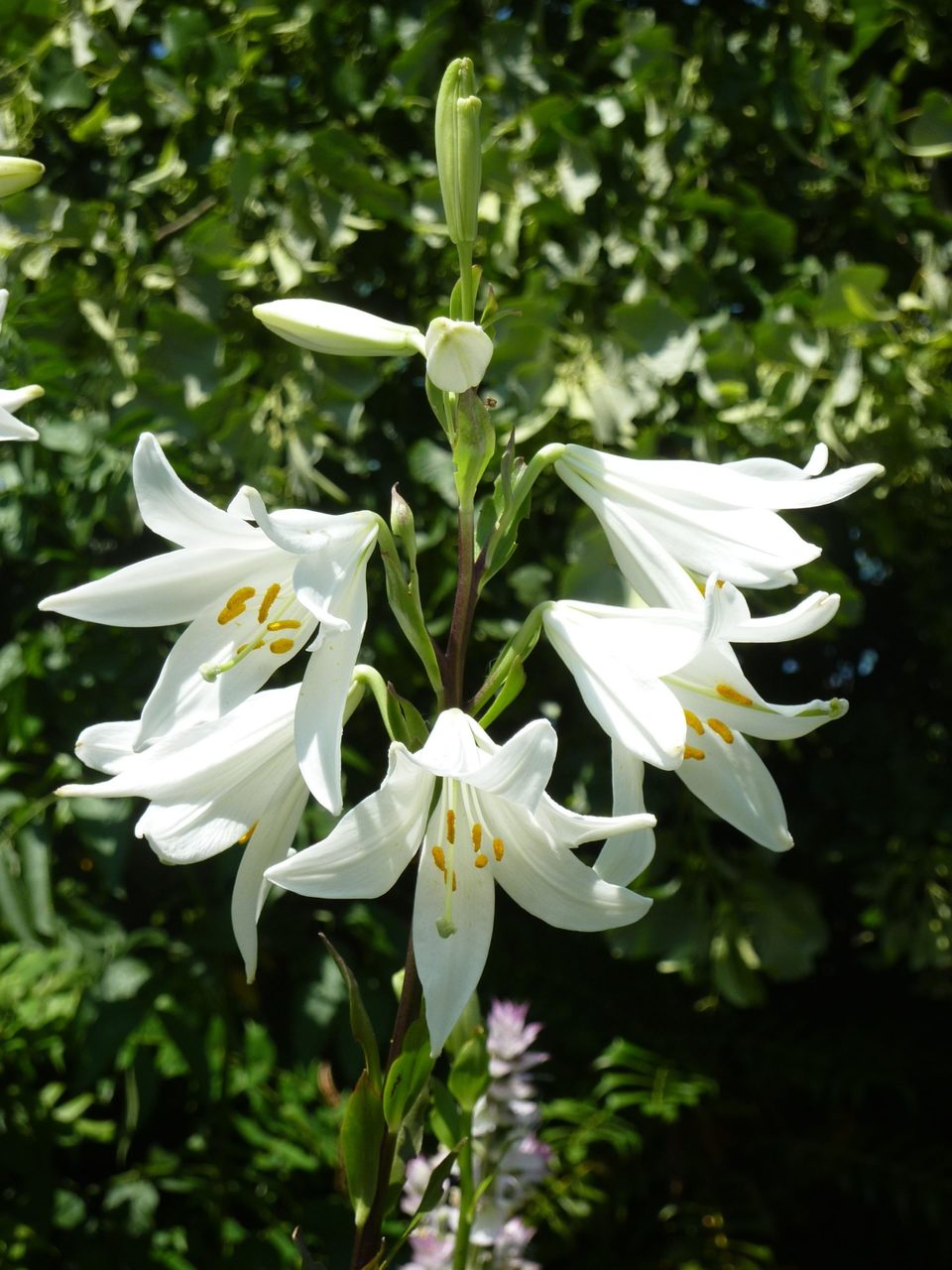
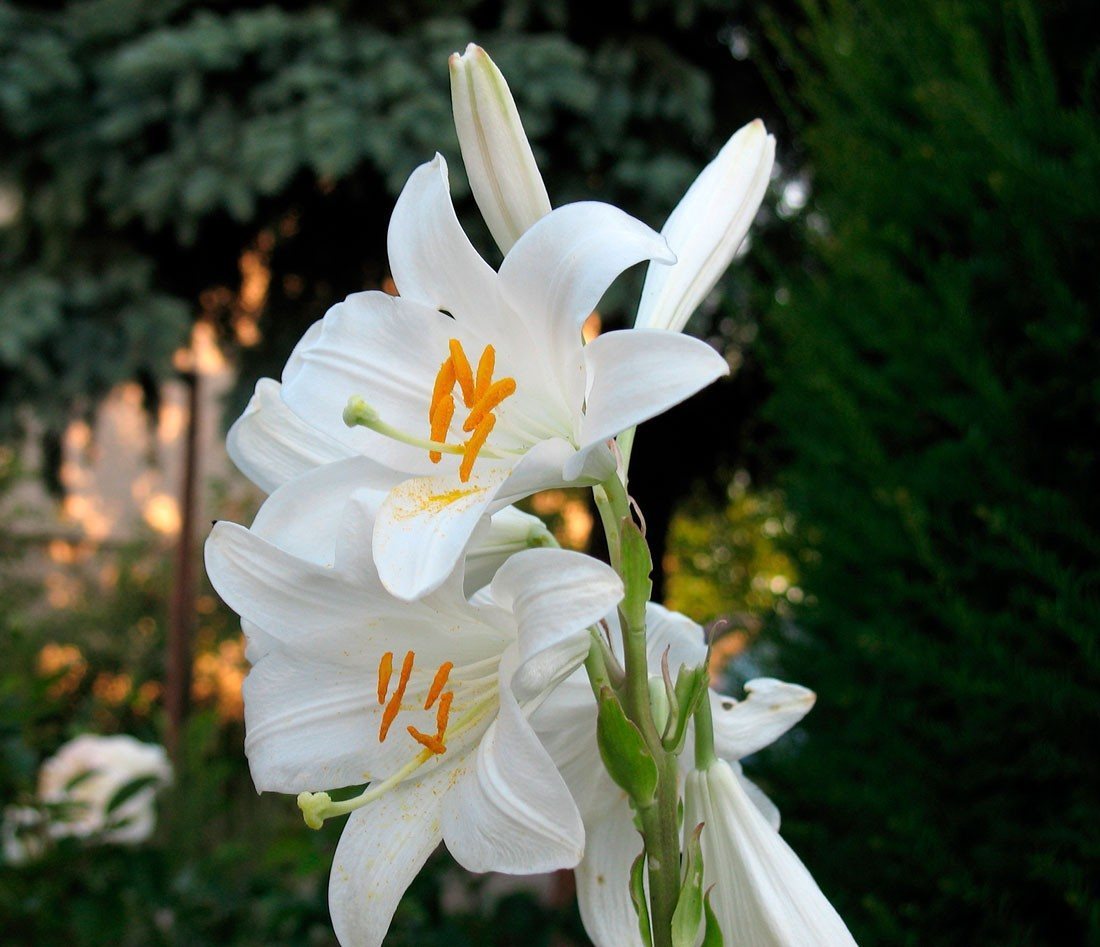
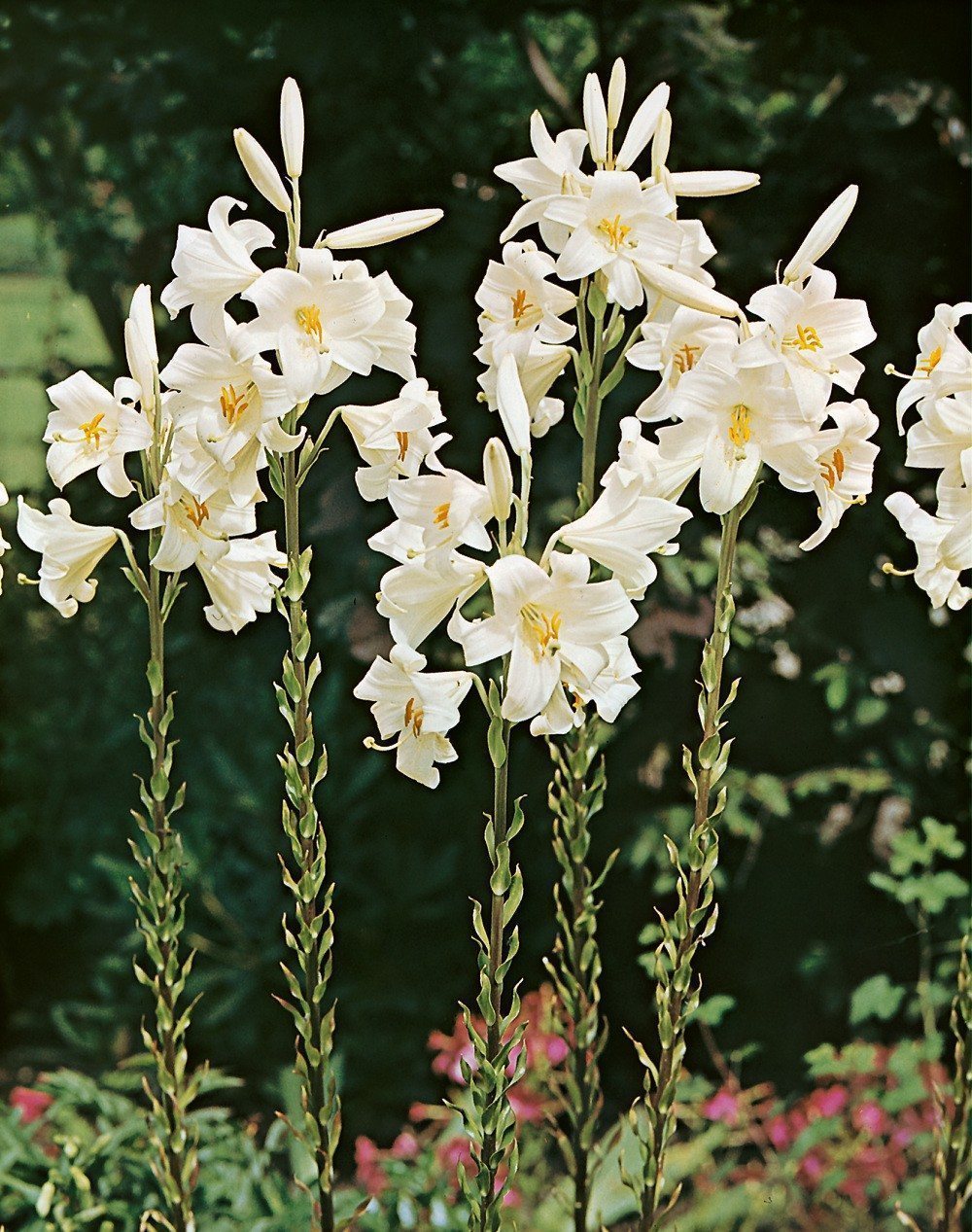
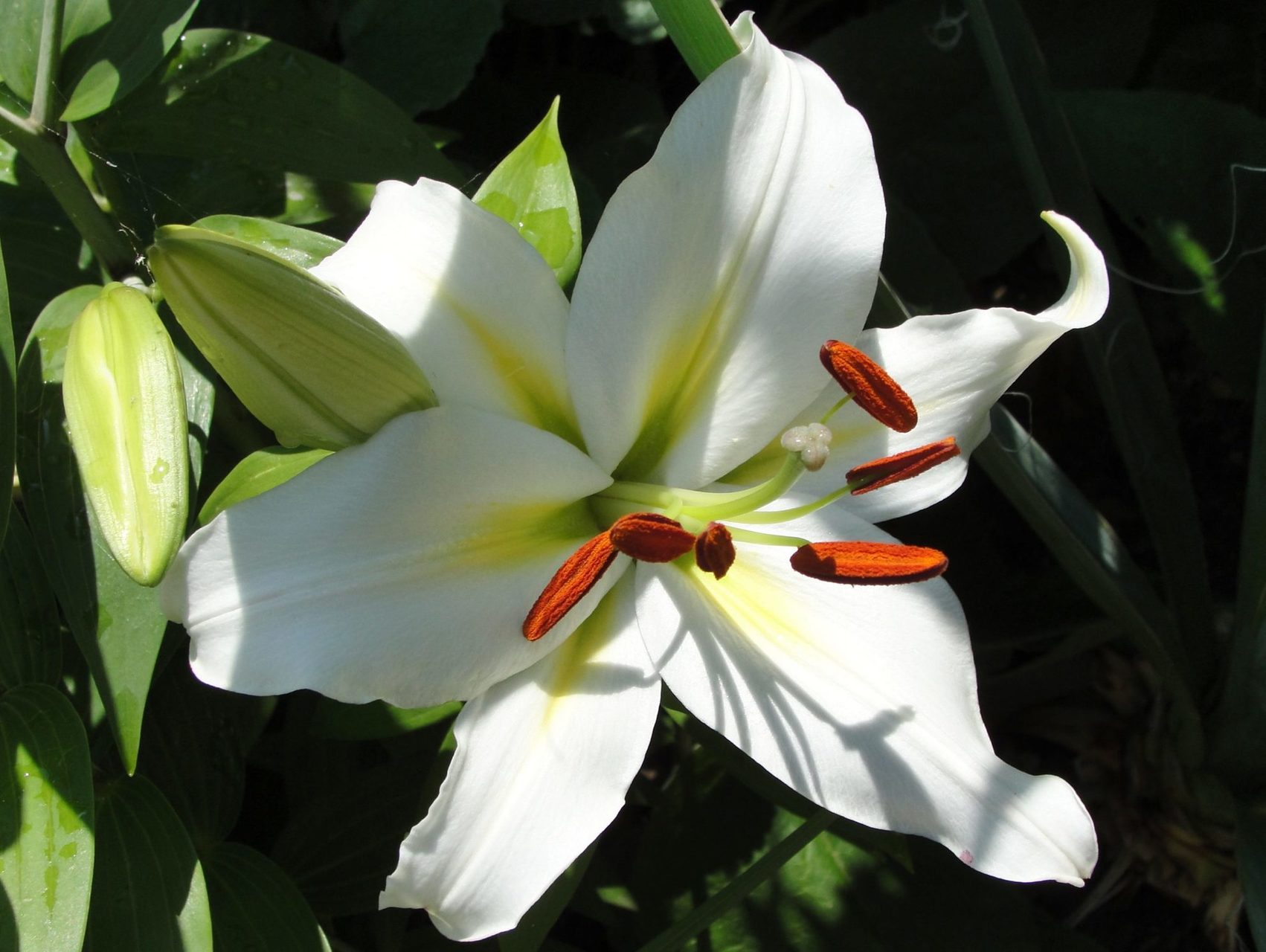
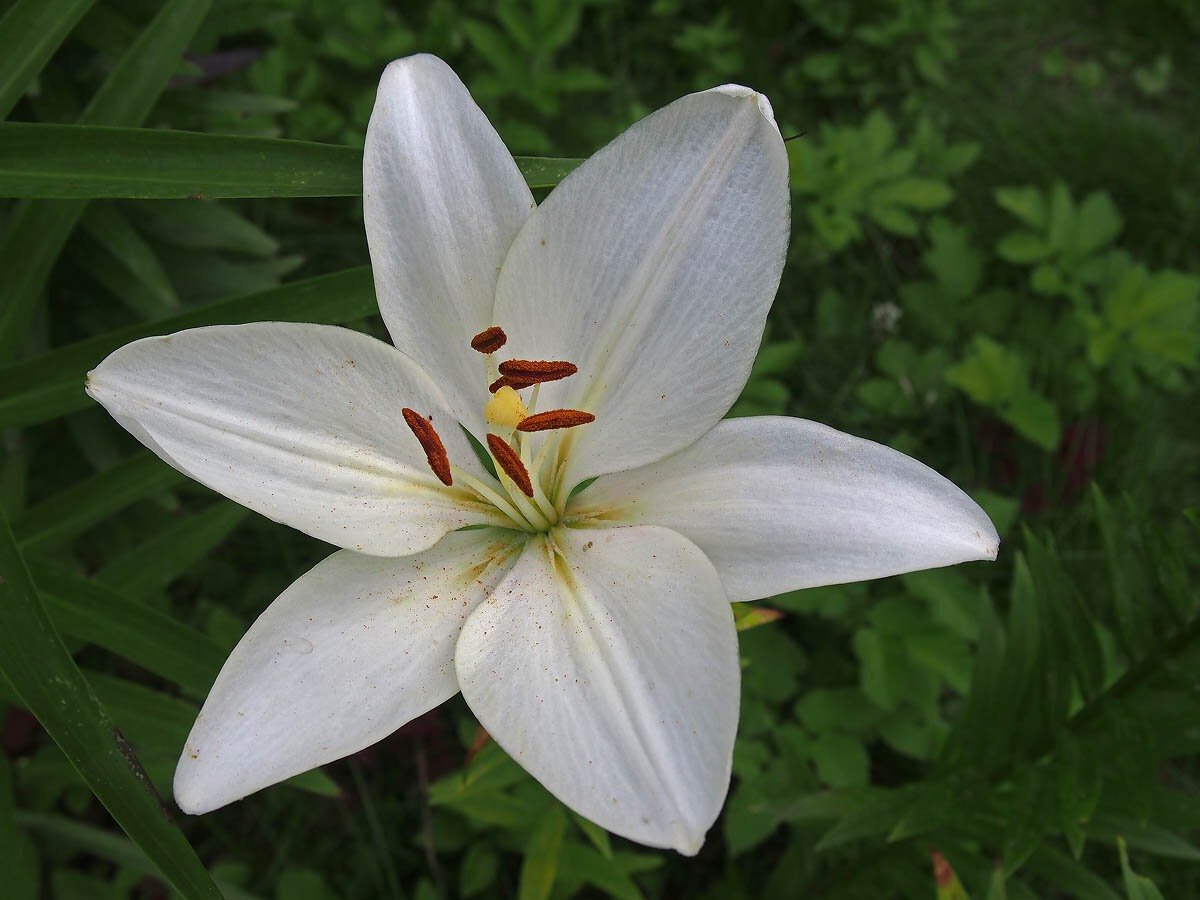





White Falcon
A two-meter lily with funnel-shaped flowers of a snow-white hue. There are large dark specks on the petals. There is undulation along their edges. The leaves have a dark green tint.
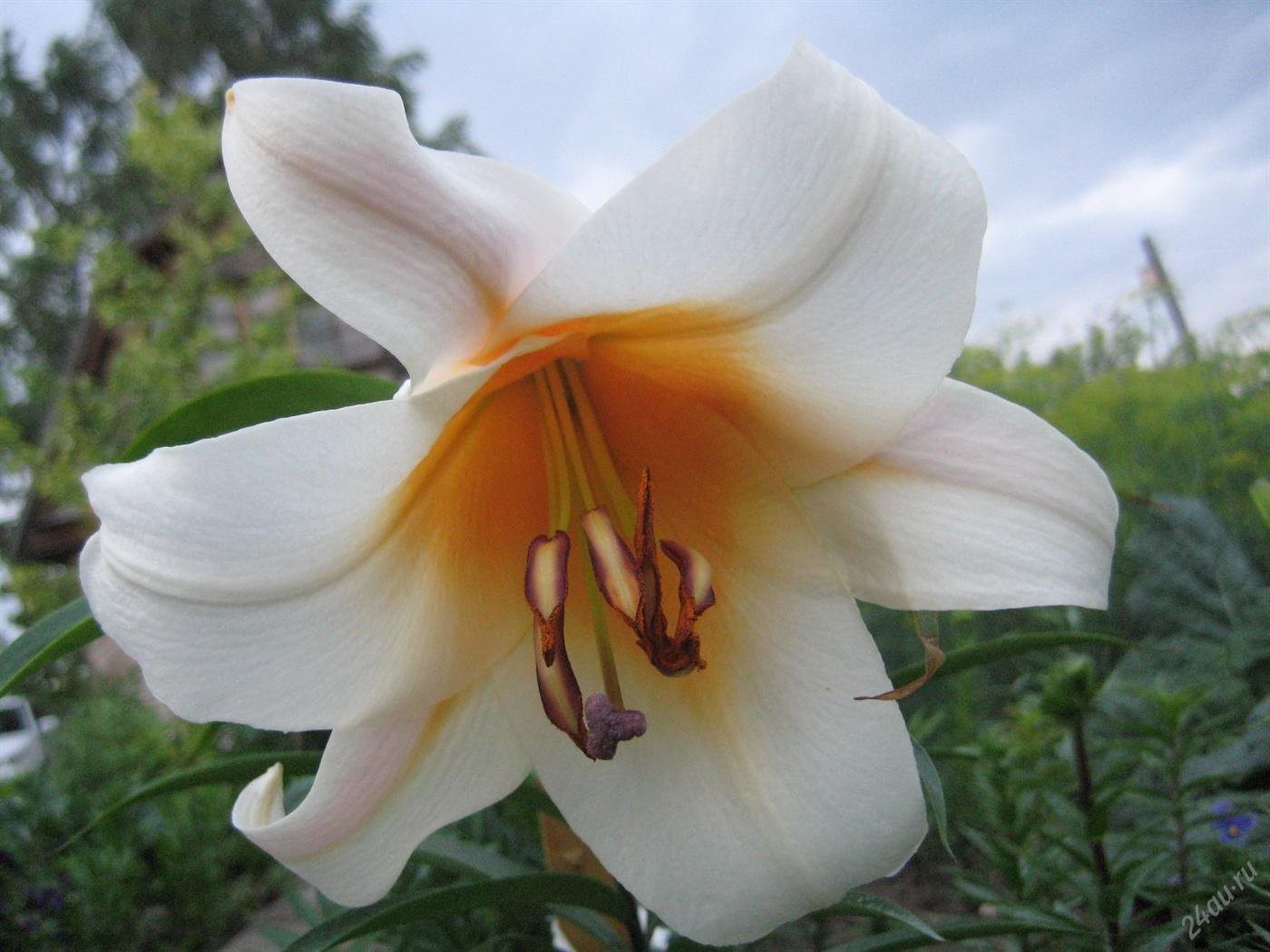
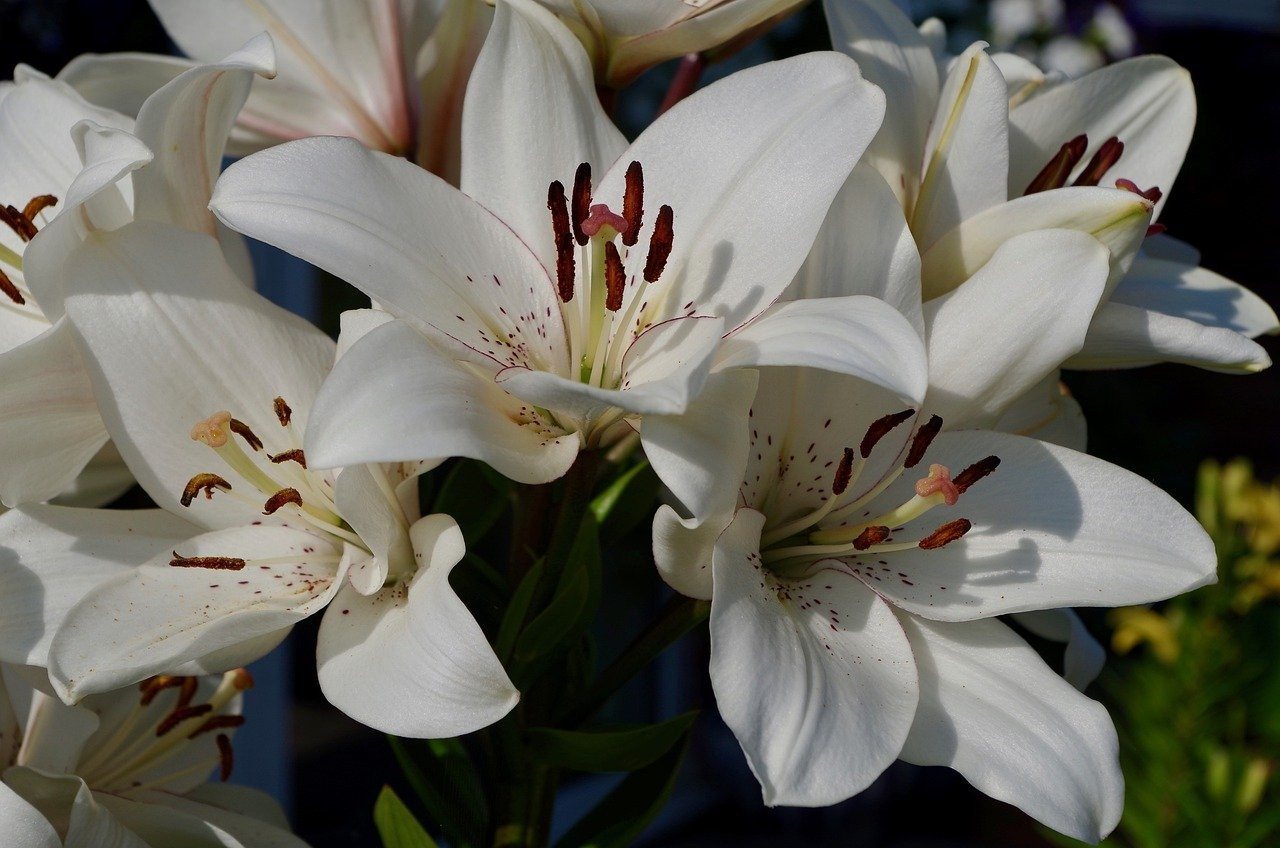

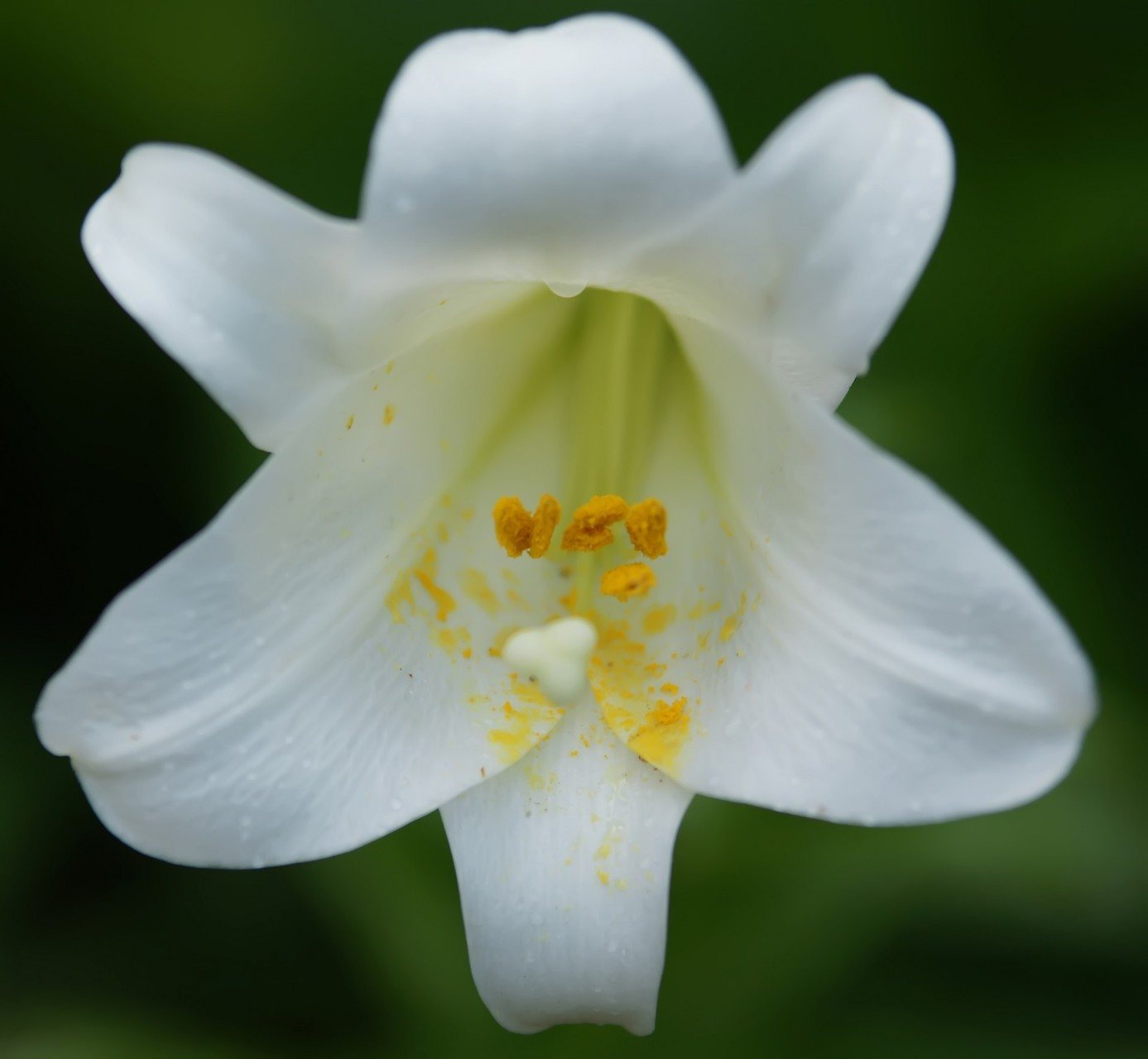
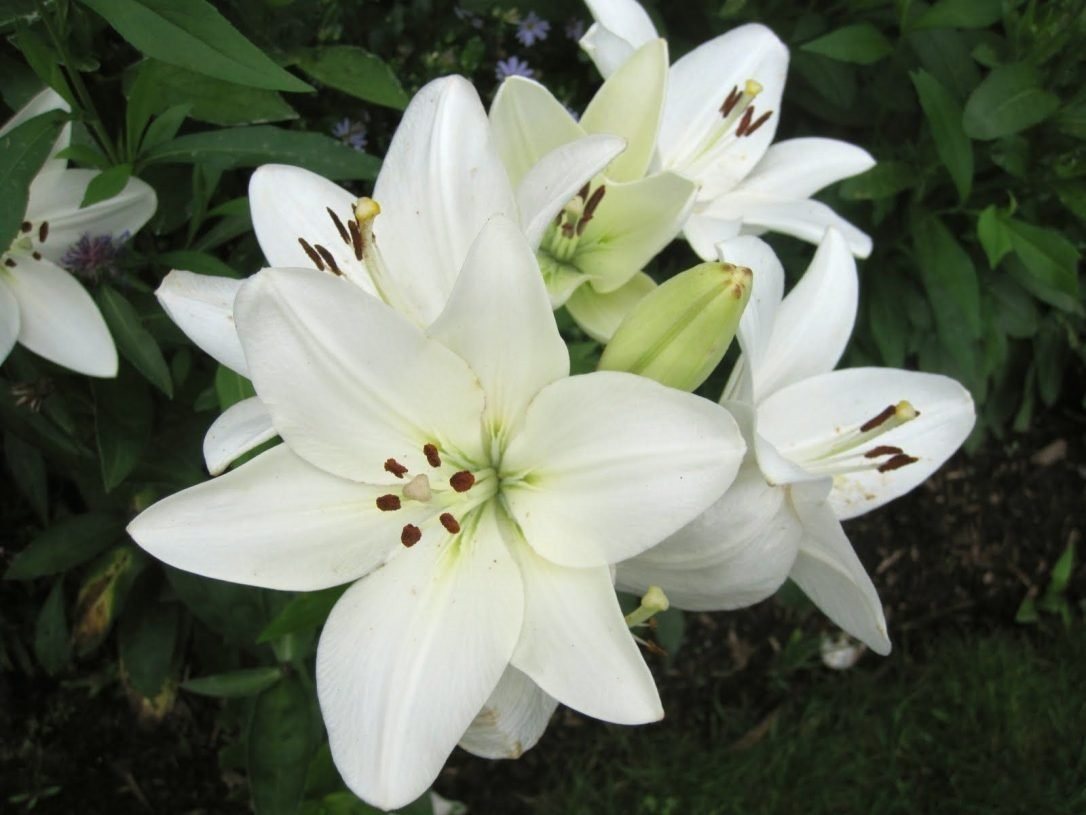





The American Hybrids
The variety series is based on species growing in North America. It includes about 140 lily hybrids. The height of the plants reaches 2 m. The flowers are of various colors, with a diameter of 10 cm. Many species have two-colored petals, and also have large specks. This series of lilies is not characterized by increased winter hardiness, therefore it is not recommended for northern regions.
Let's look at popular varieties of American lily hybrids.
Like Tulare
The lily has stiff, thin stems with shiny, dark green leaves. The flowers are turban-shaped, pink in color with a yellow center. Plant height is 110-120 cm. Inflorescences can include up to 15 buds.
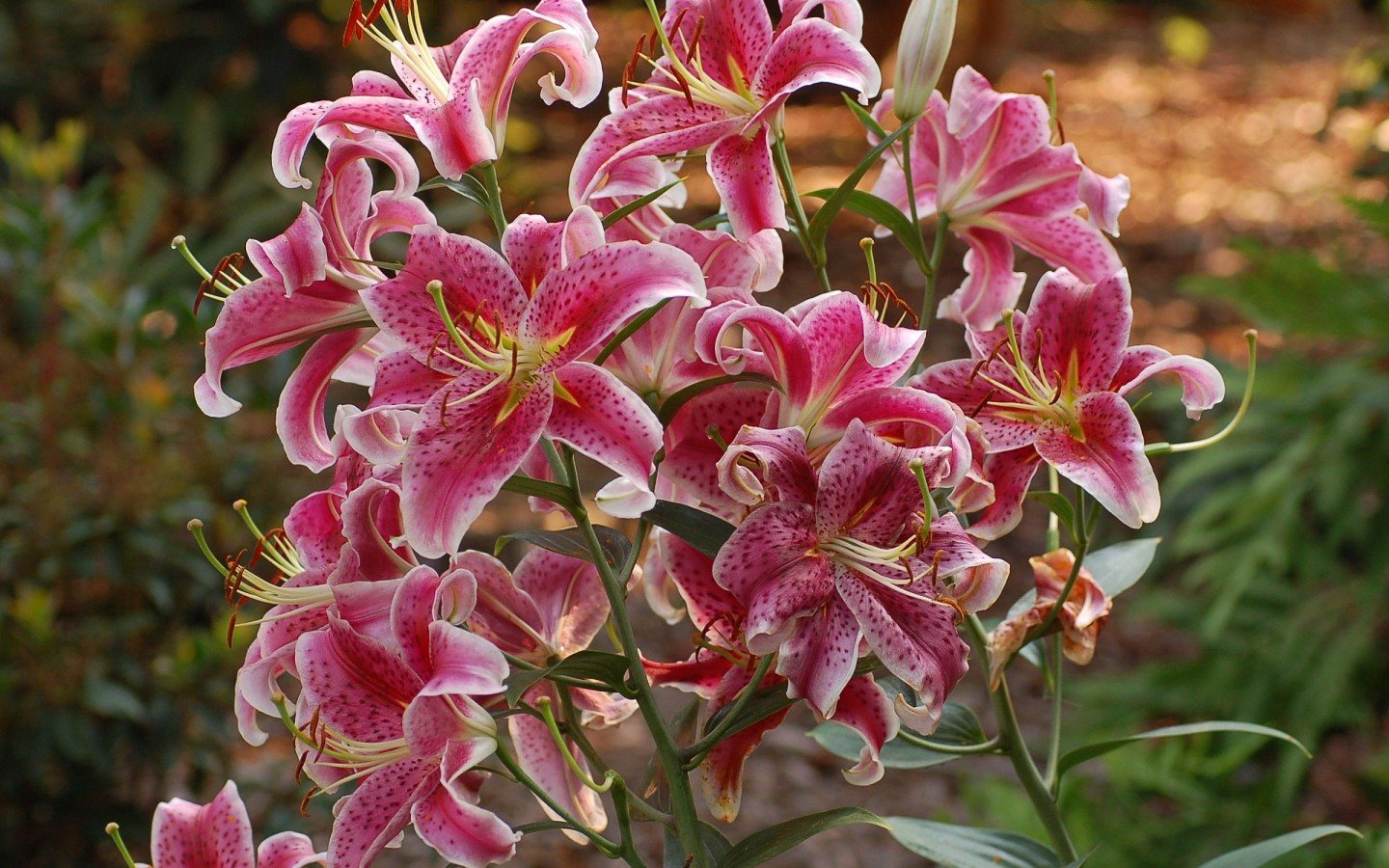
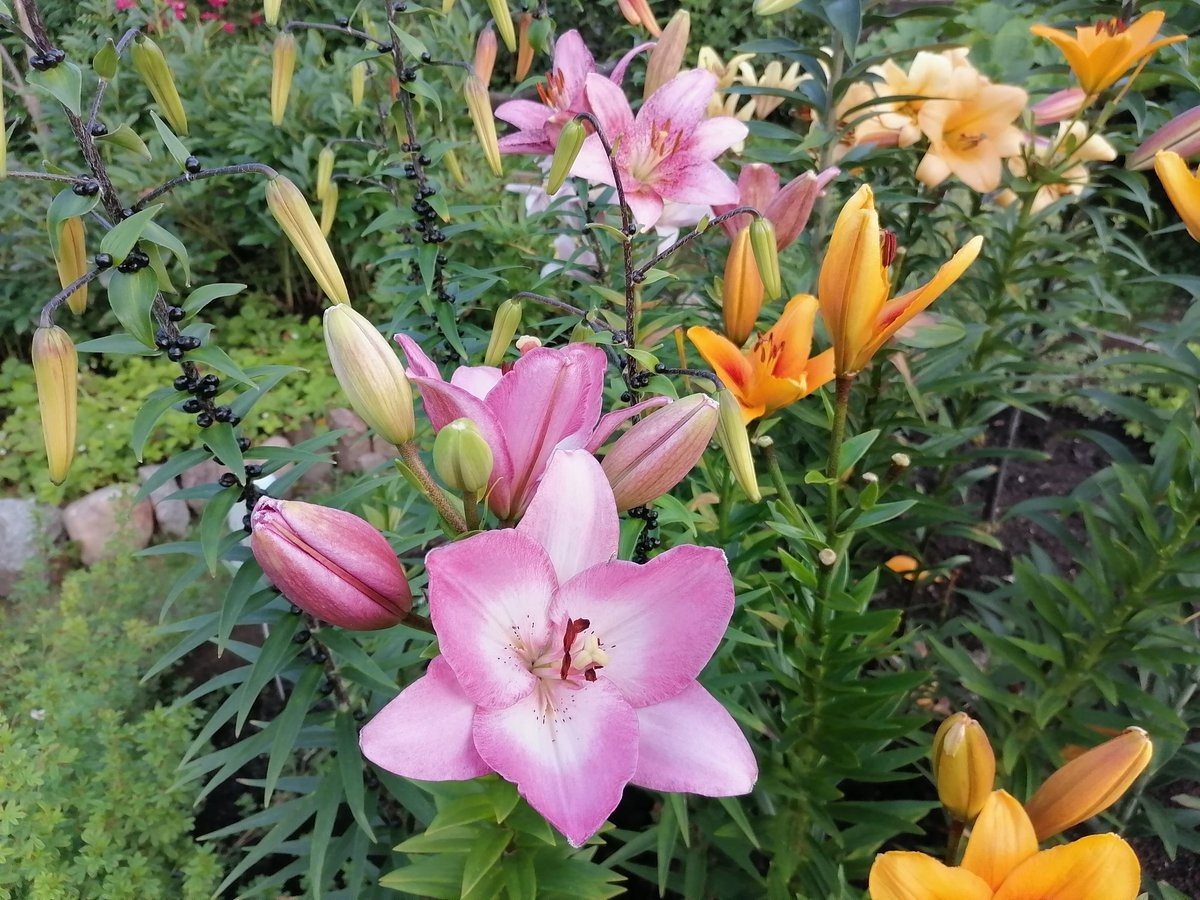
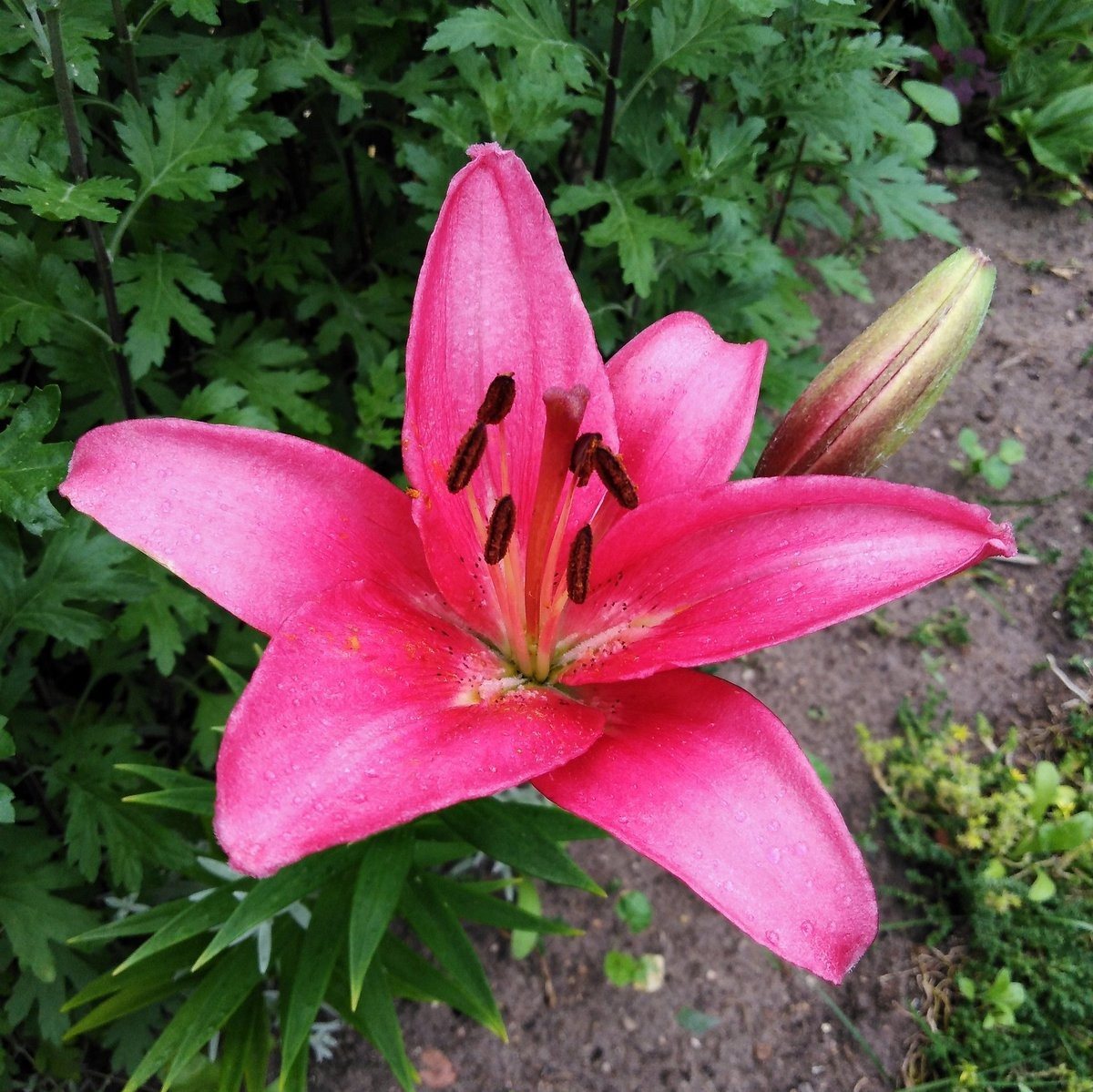
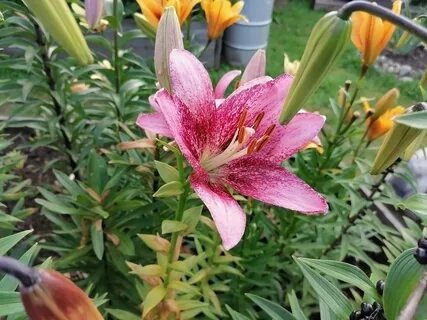
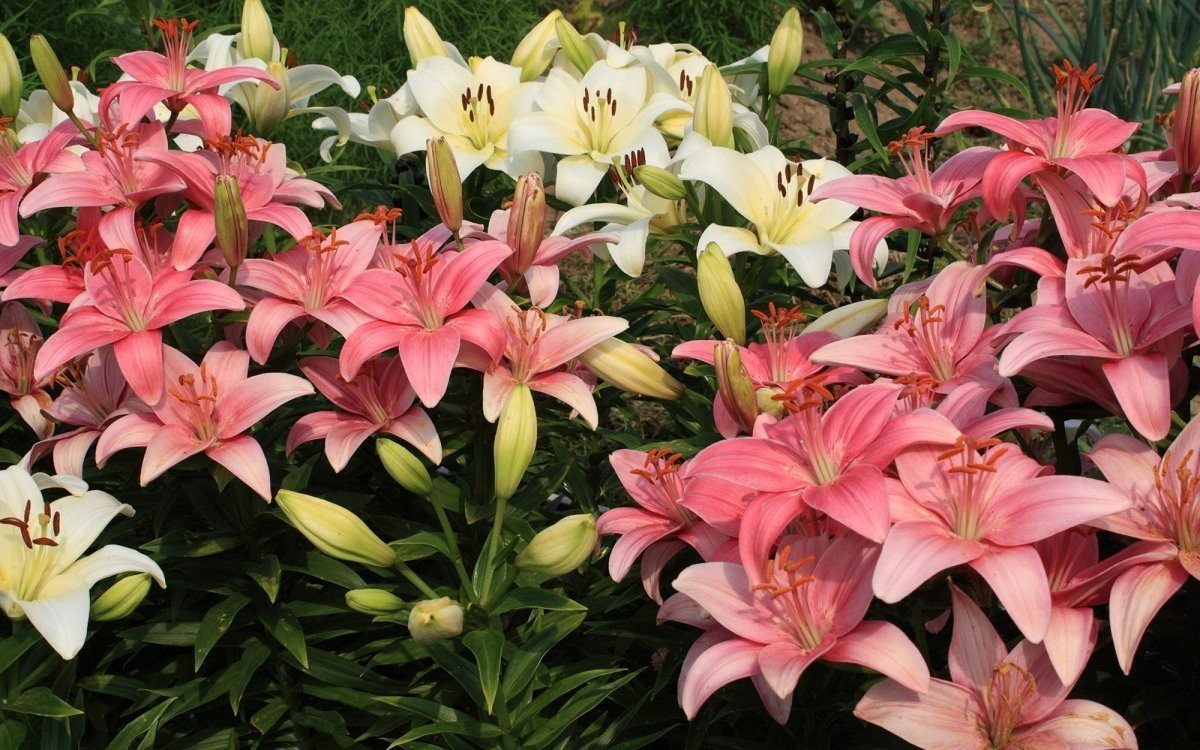





Afterglow
Tall variety of lily. Its flowers are turban-shaped, directed downward, and the petals are curved upward. The shade of the buds is raspberry. There are yellow-brown spots in the central part of the flowers.
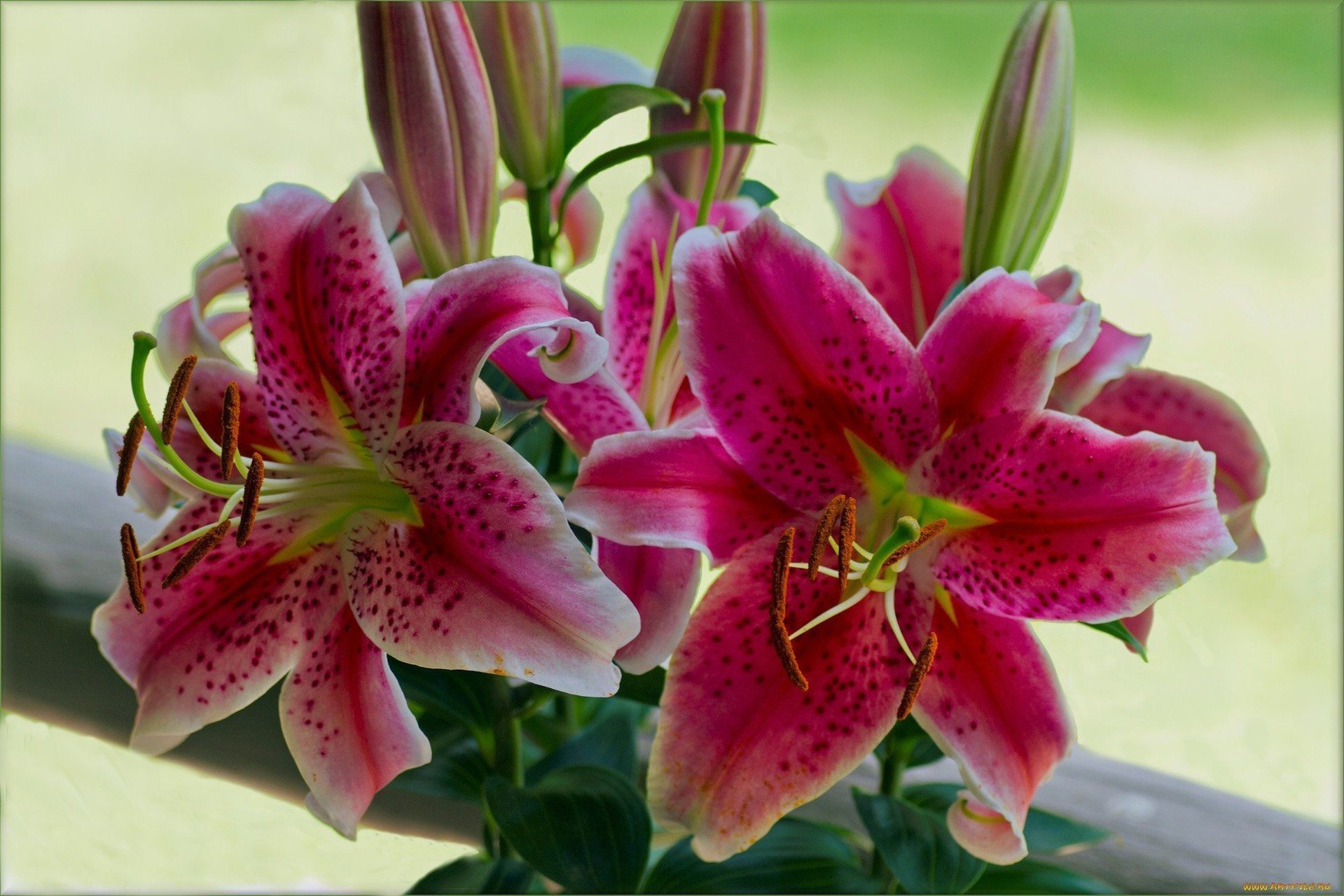

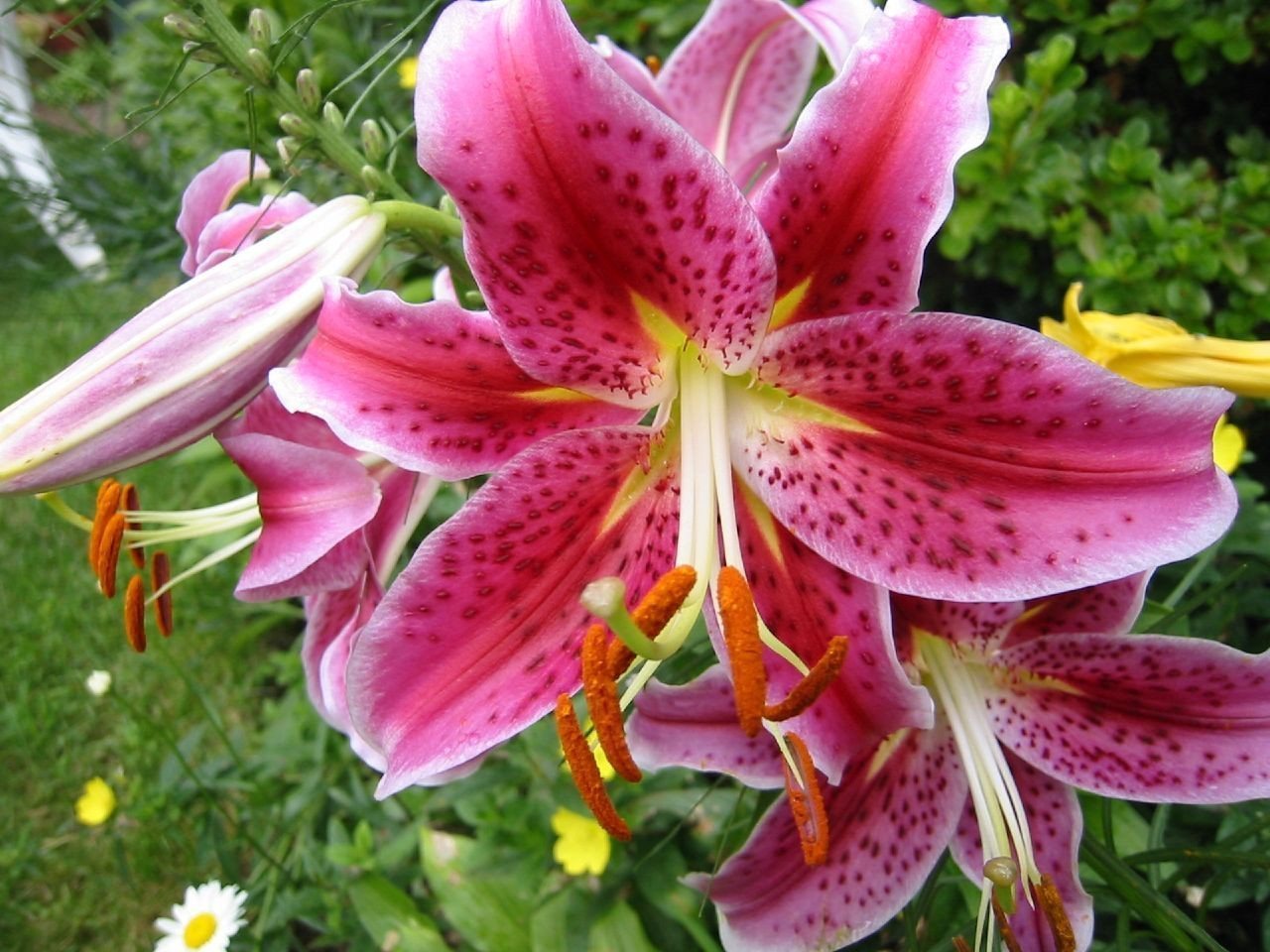
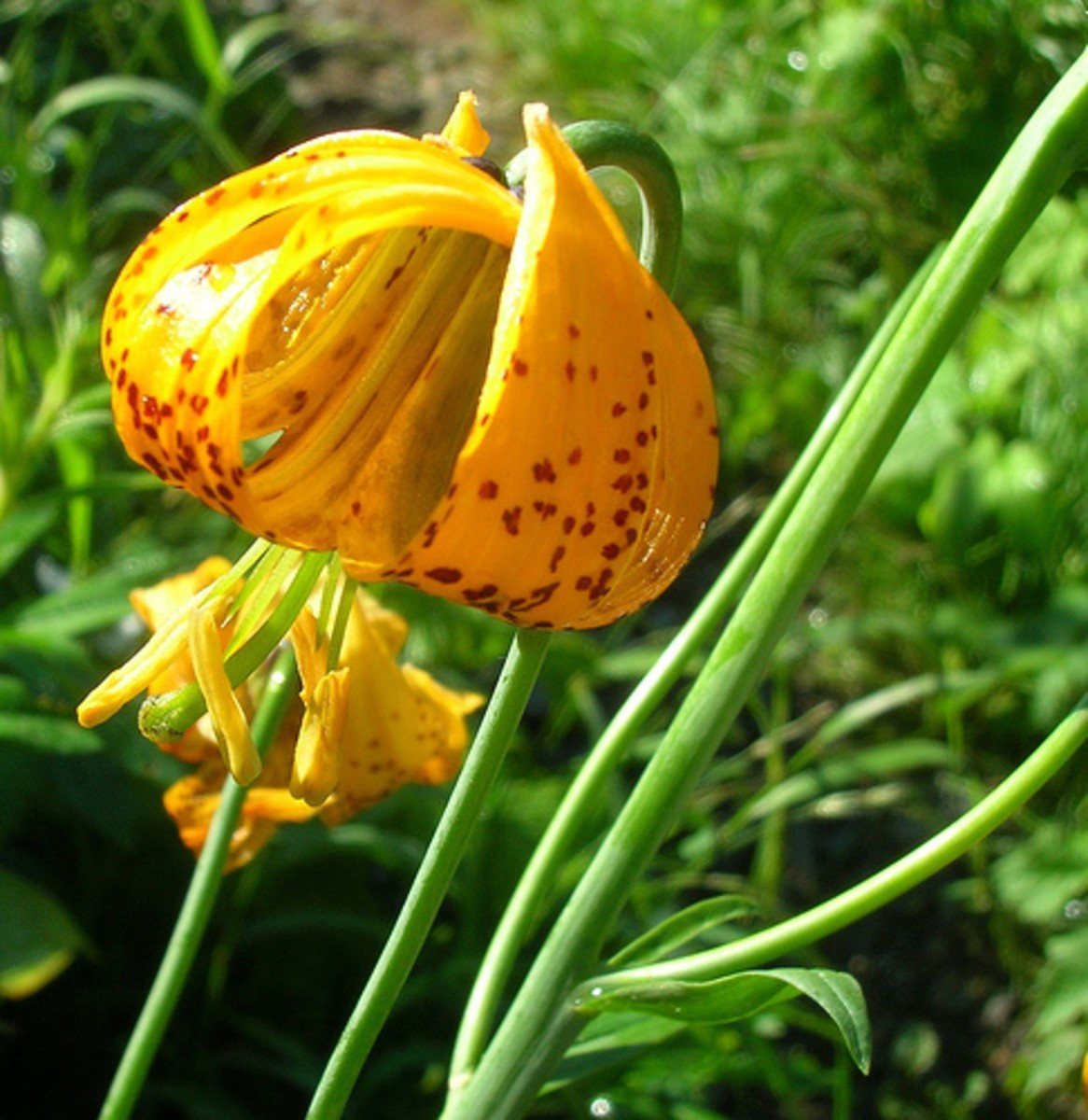
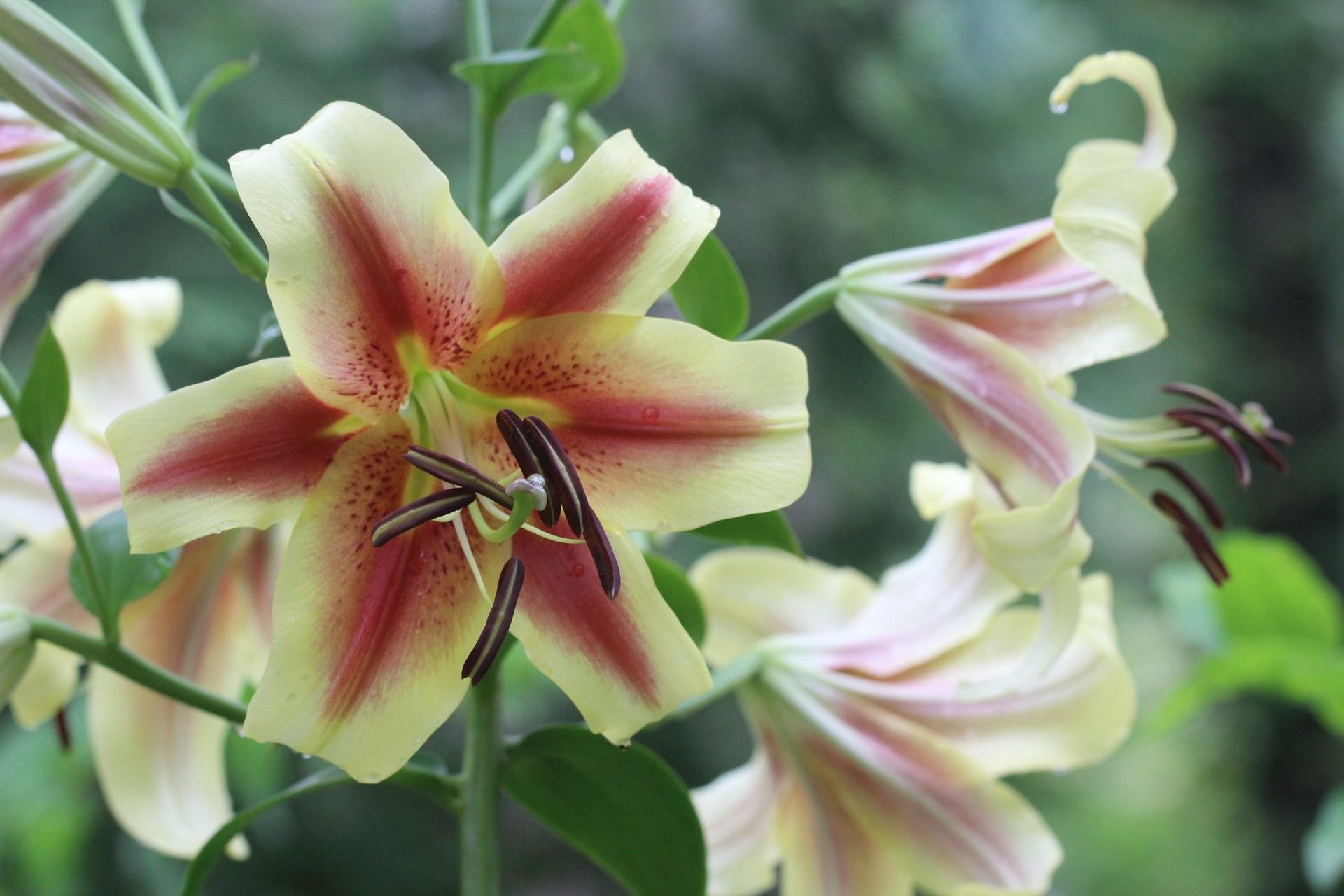





Shuksan
A distinctive feature of the hybrid is orange-yellow flowers with large black or red spots. When opened, the buds emit a pleasant aroma. Lily prefers planting in acidic soil and placement in partial shade.
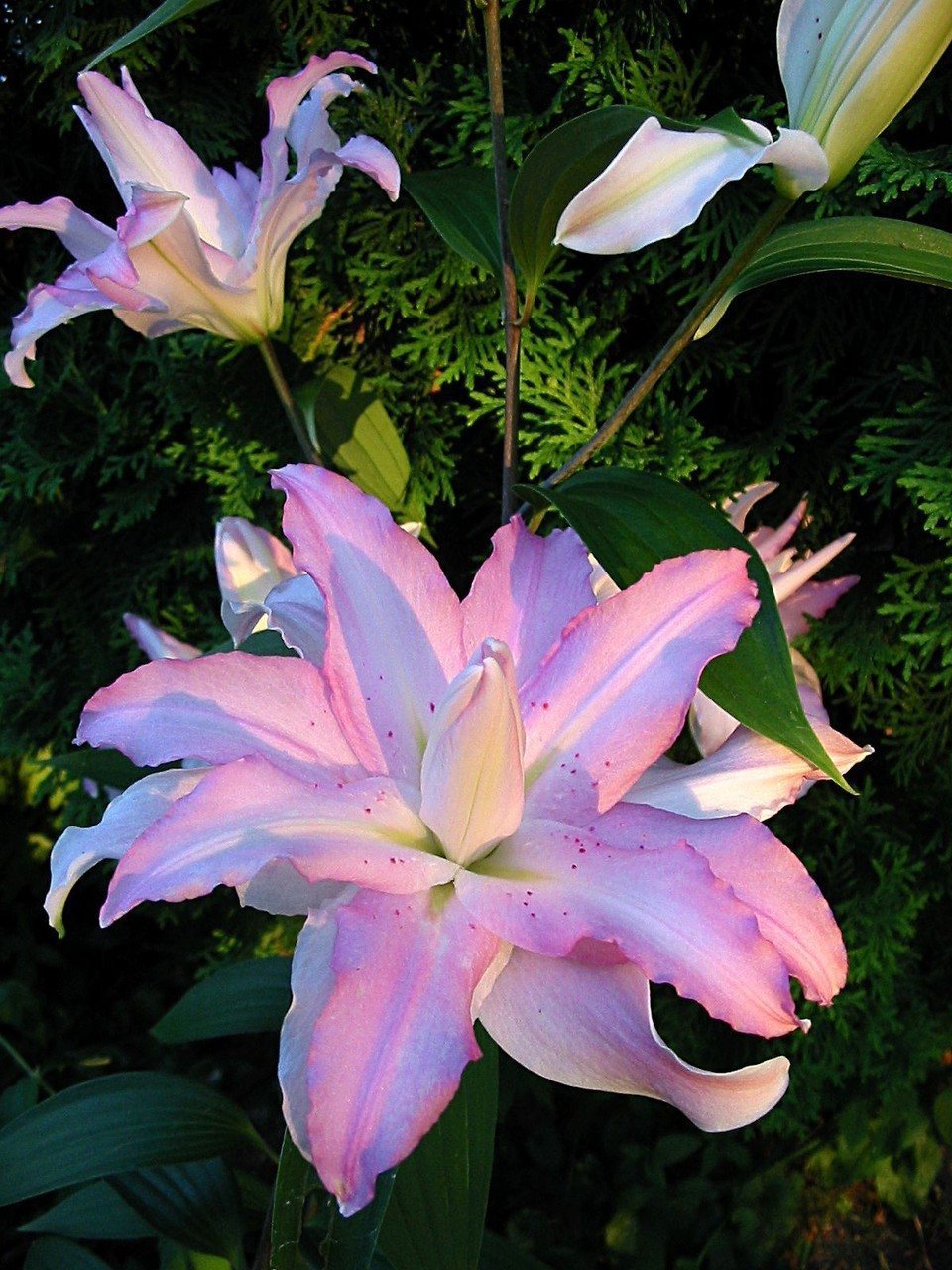


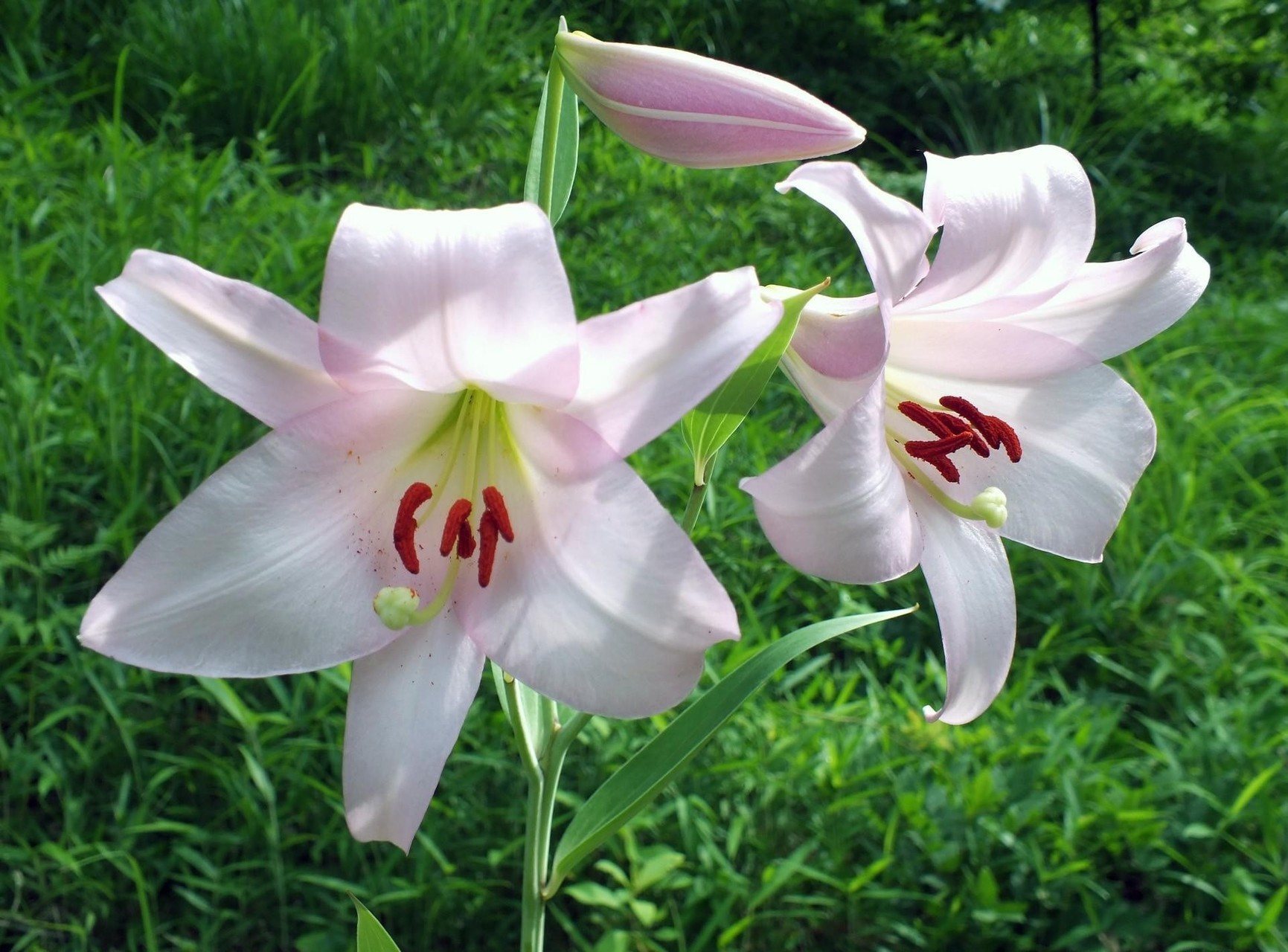
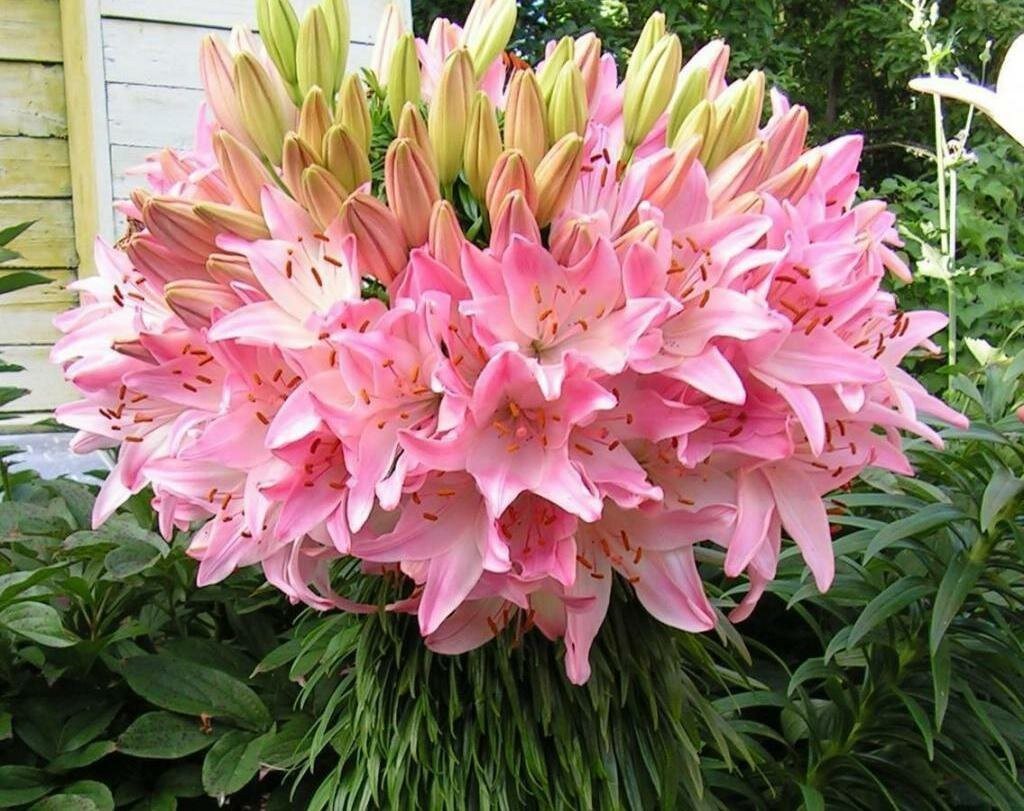





Cherrywood
The flowers are red, elongated. The height of the shoot reaches 180 cm. There are dark specks on the petals of the lily. Inflorescences consist of 10-15 buds.
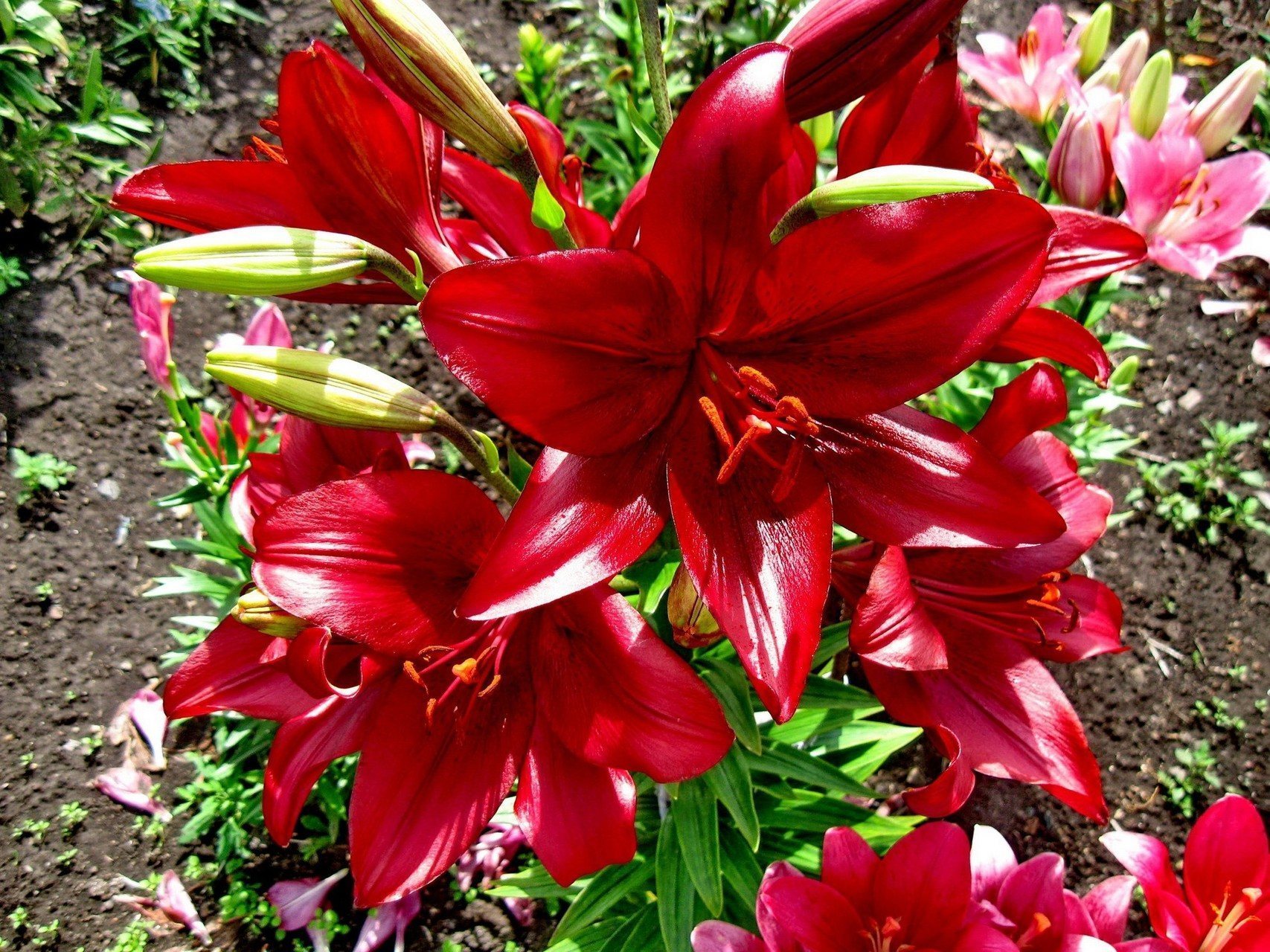
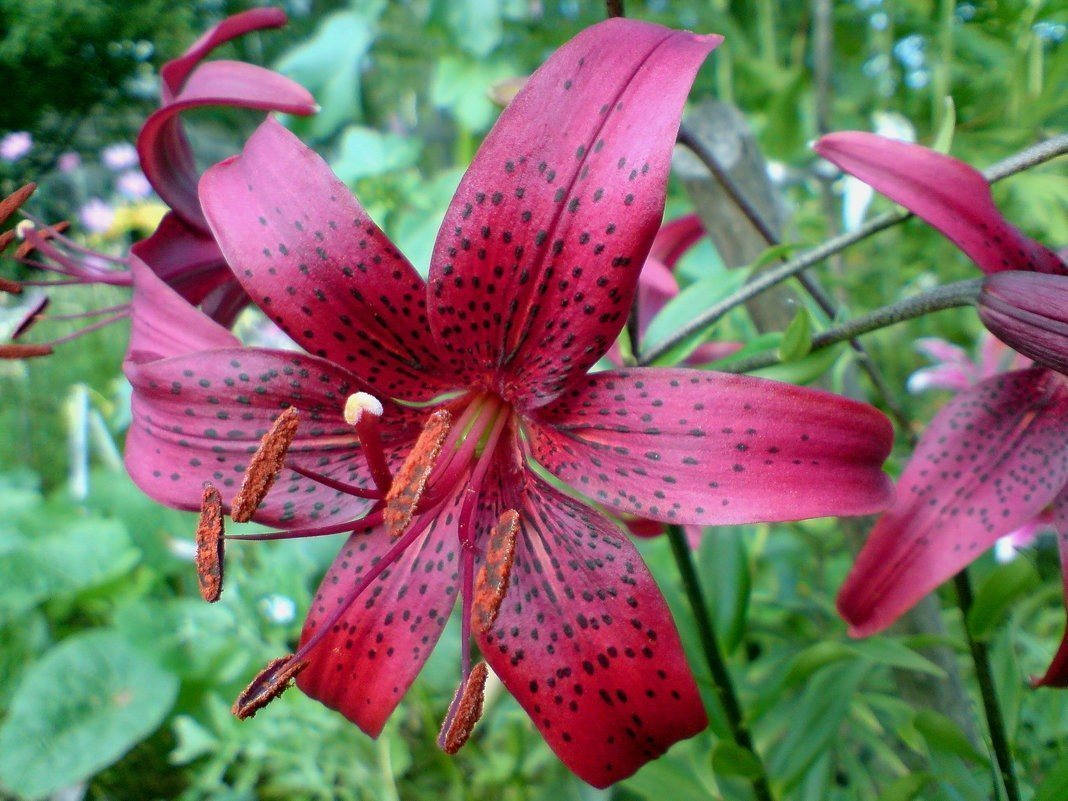
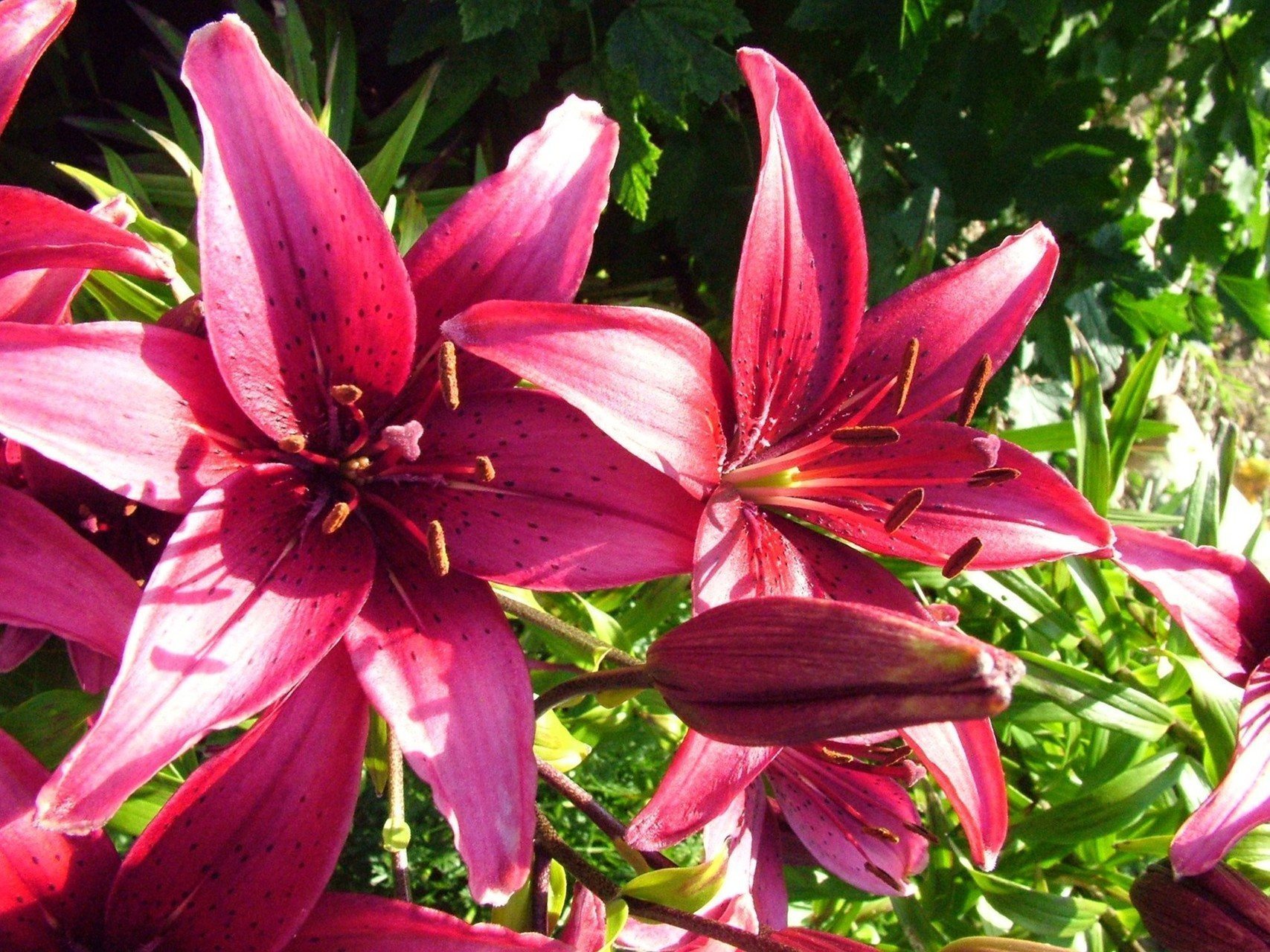
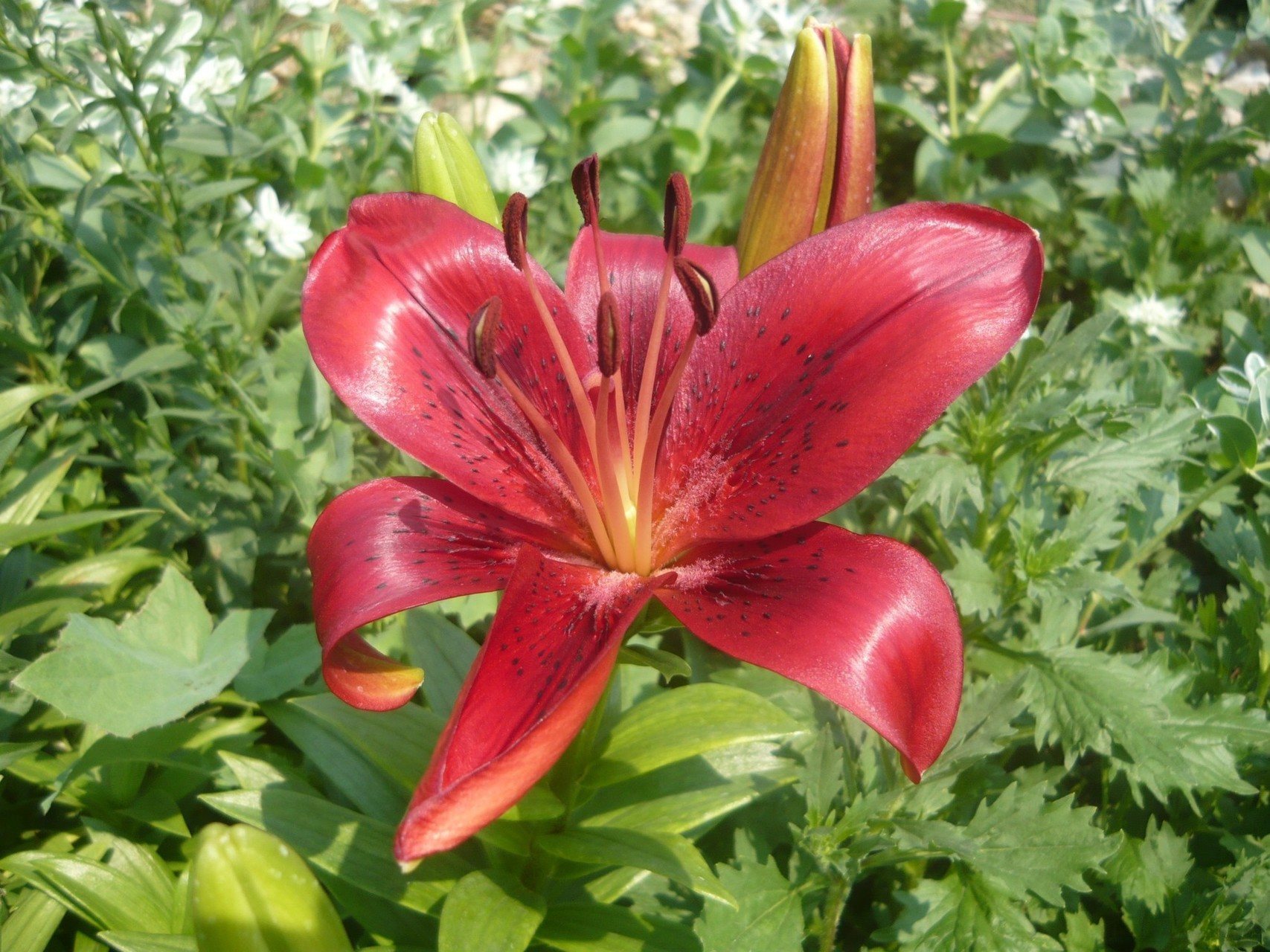
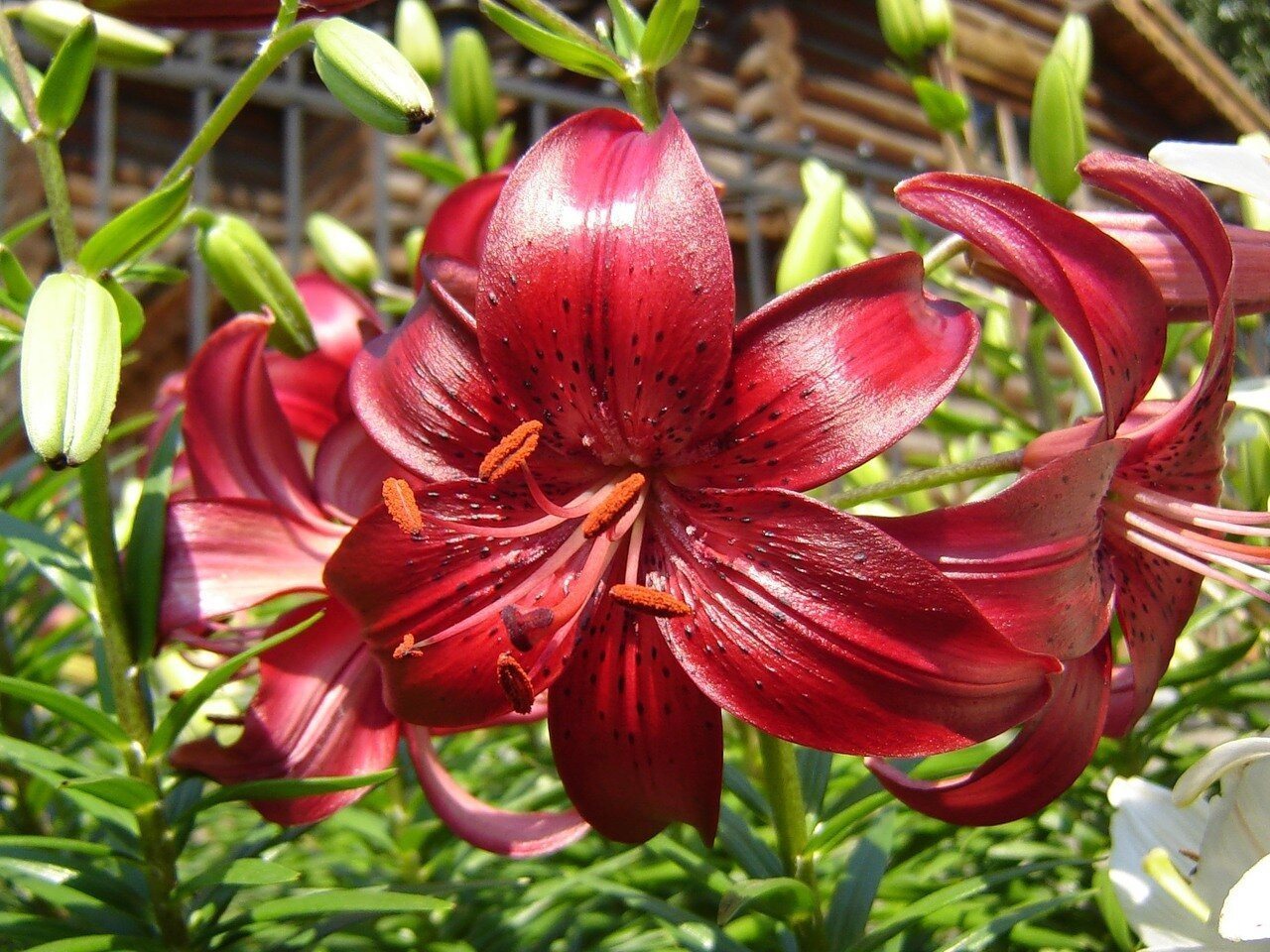





Buttercup
A distinctive feature of the variety is bright yellow flowers with burgundy markings. The height of the lily reaches 120 cm. It blooms in August. Inflorescences can include up to 15 buds.

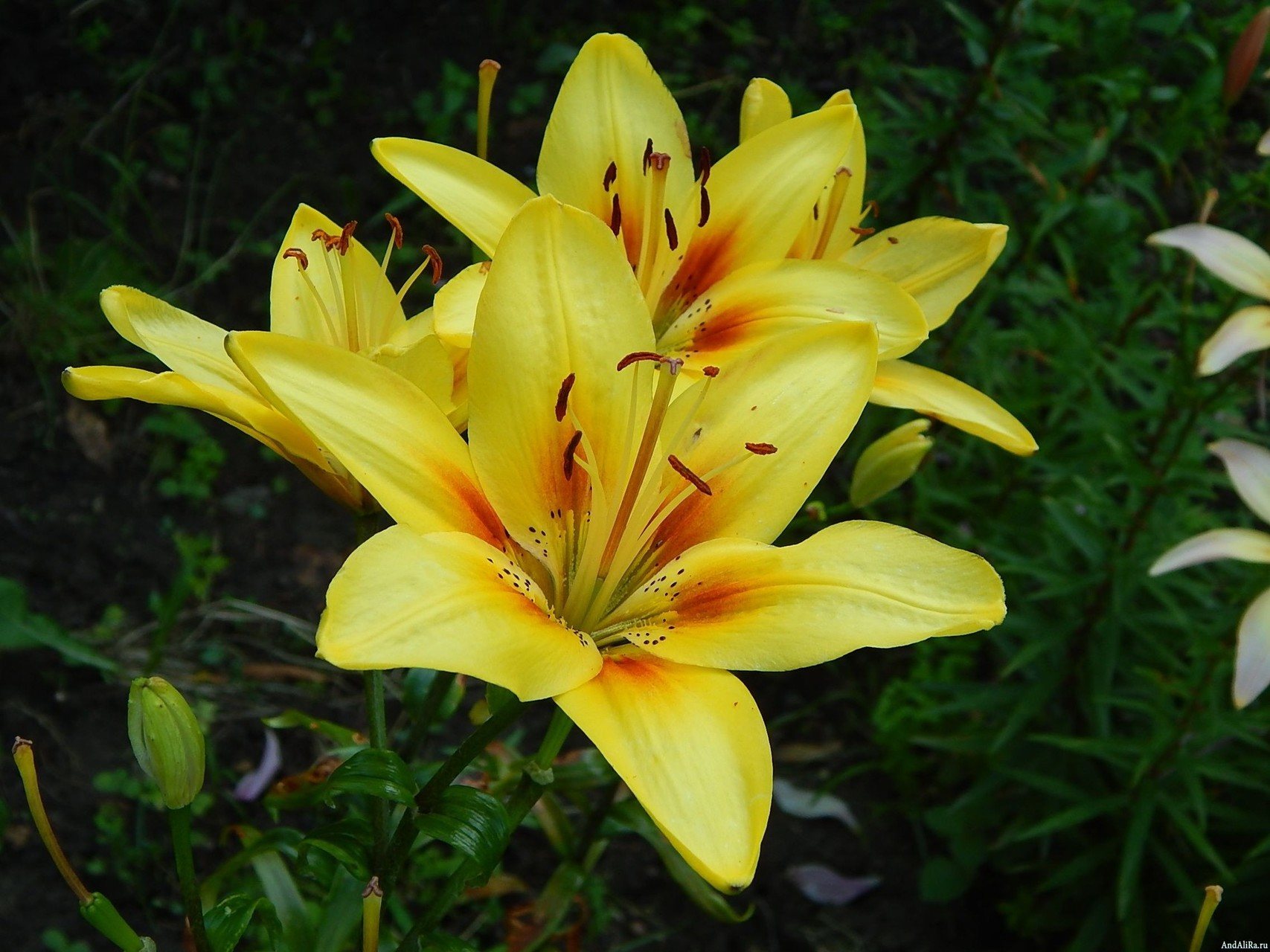
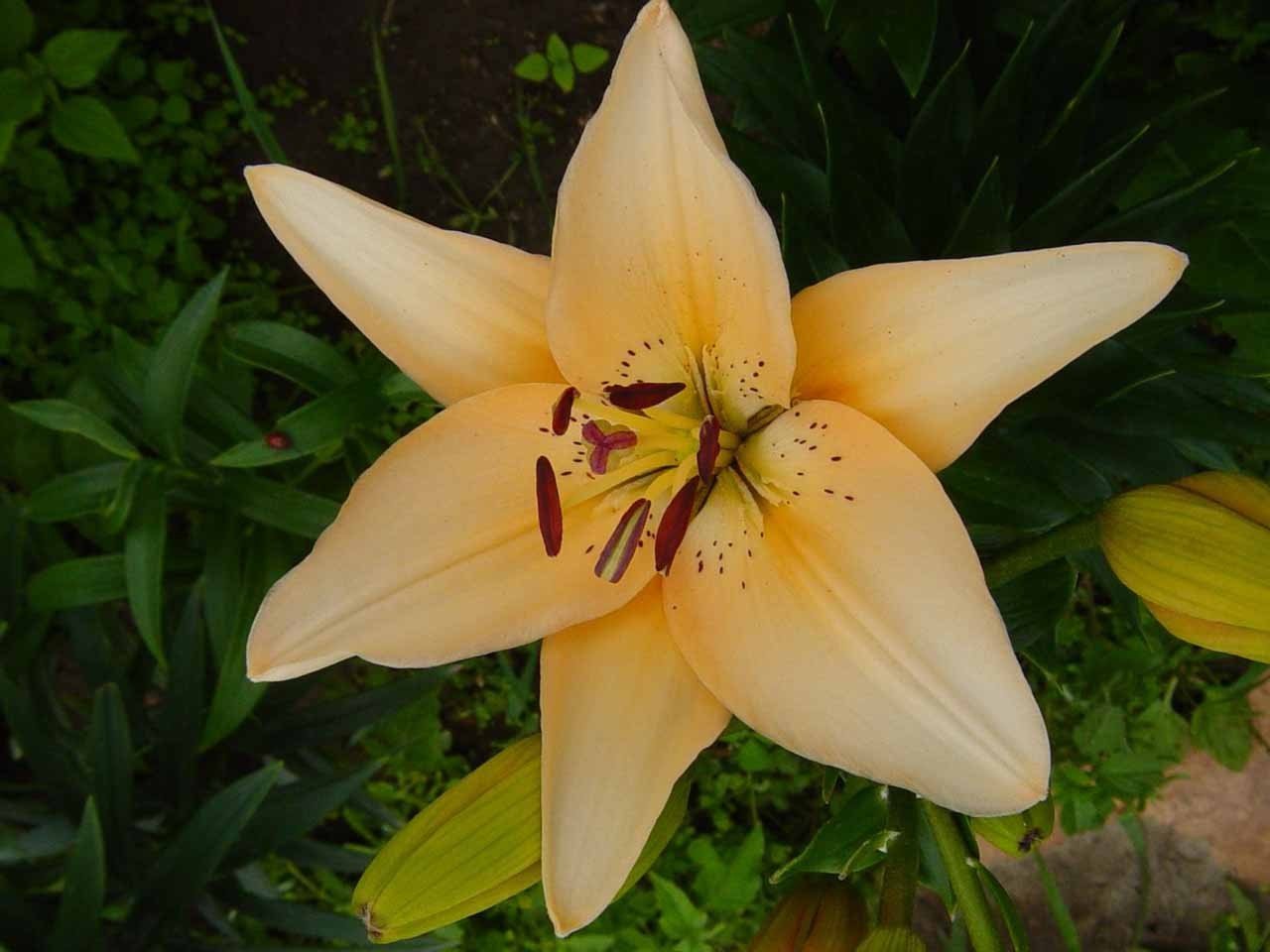
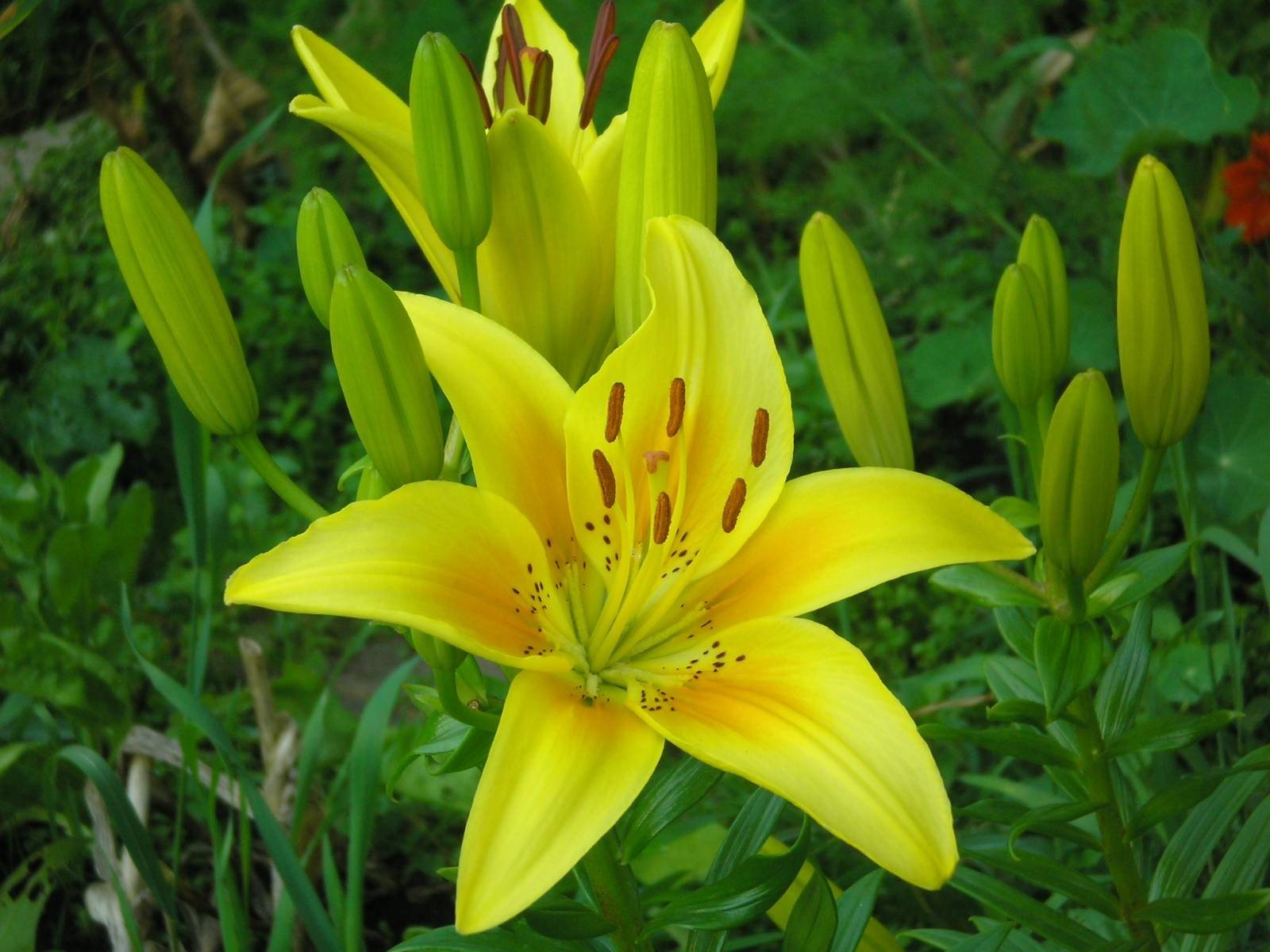






The Longiflorum Hybrids
A variety series that is not frost-resistant. It is based on subtropical and tropical species of lilies. Long-flowered lily hybrids were brought to European countries from Japan. They are characterized by an average shoot height of about 1 m. The diameter of the flowers can reach 20 cm. The buds are located perpendicular to the trunk and are bell-shaped. Long-flowered lilies exude a rich aroma that intensifies in the evening.
These hybrids must be grown as a houseplant in the middle zone and northern regions. It is also recommended to keep them in greenhouses and greenhouses. Given favorable conditions, these hybrids bloom twice a year: at the beginning of June and at the end of October. Reproduction of long-flowered species is possible only by vegetative methods.
Let's consider popular varieties of long-flowered lily hybrids.
White Elegance
The shade of the petals of this lily is snow-white and light green. The diameter of the flowers is 15 cm. It is characterized by strong shoots, up to 1.5 m high. It blooms at the end of June.
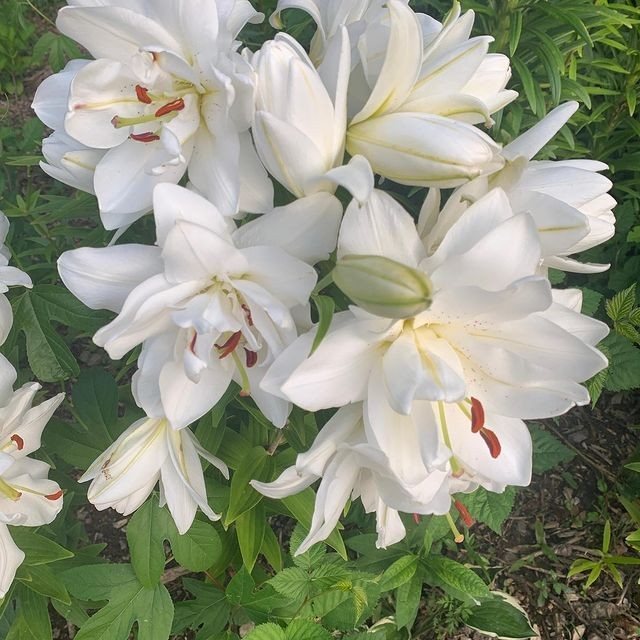
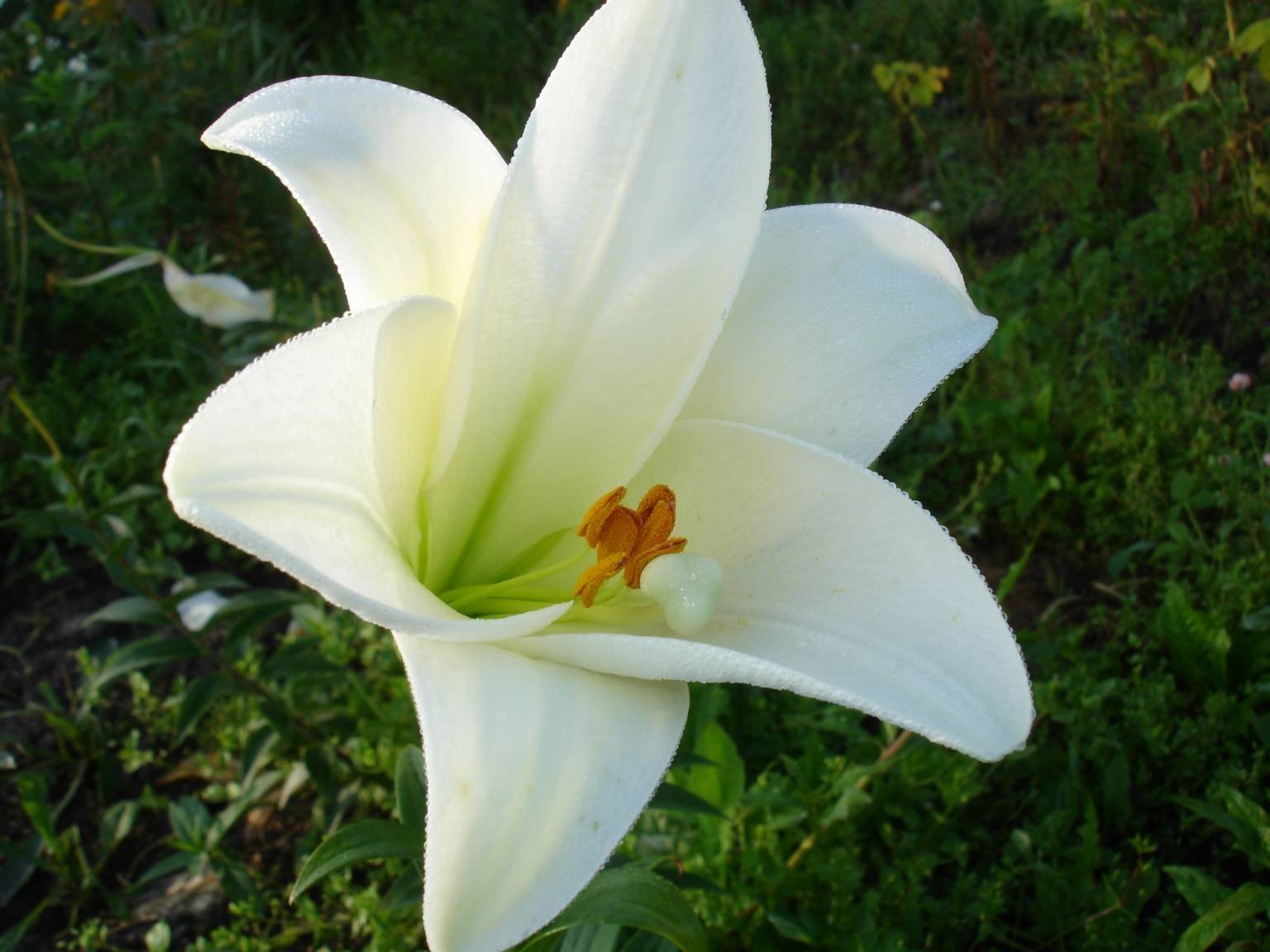
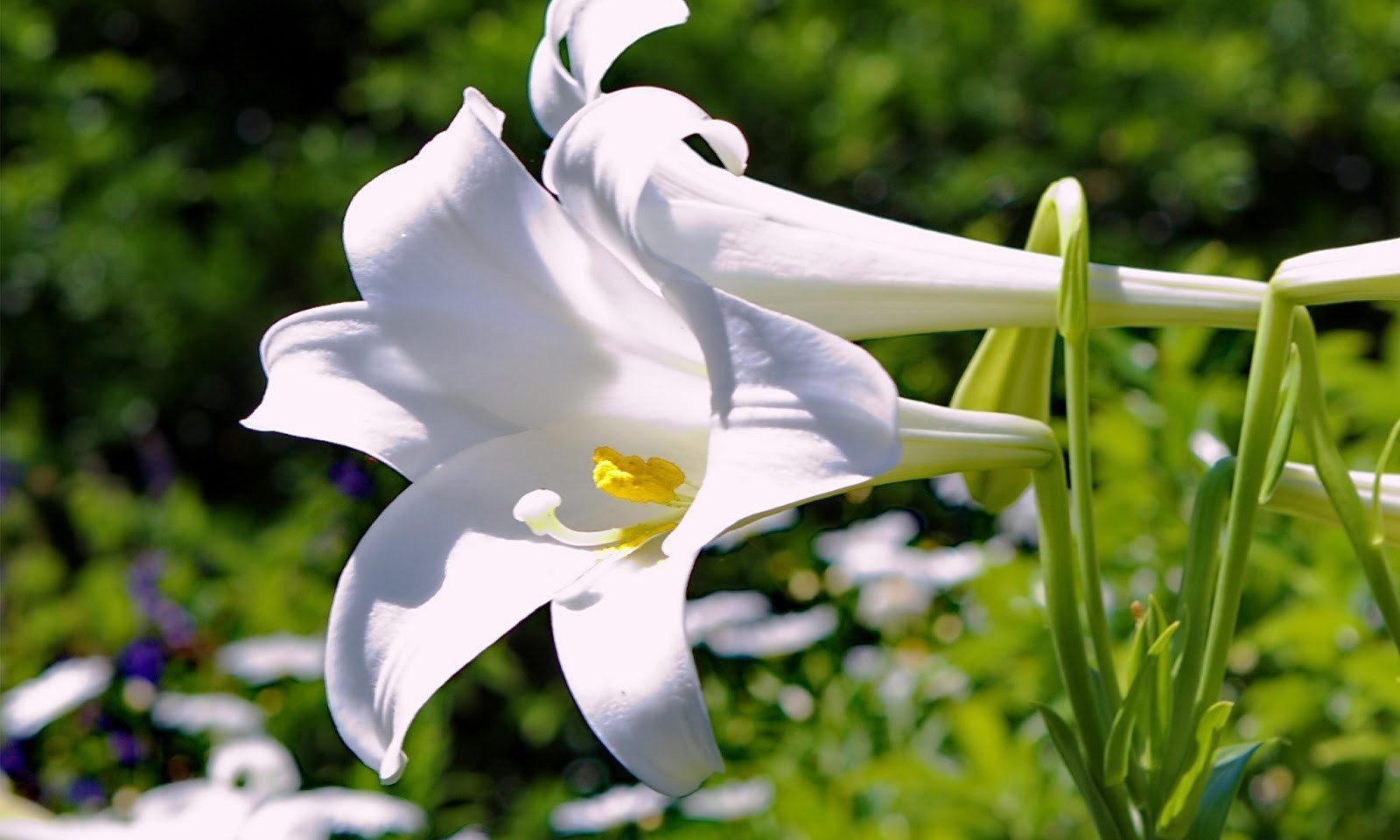
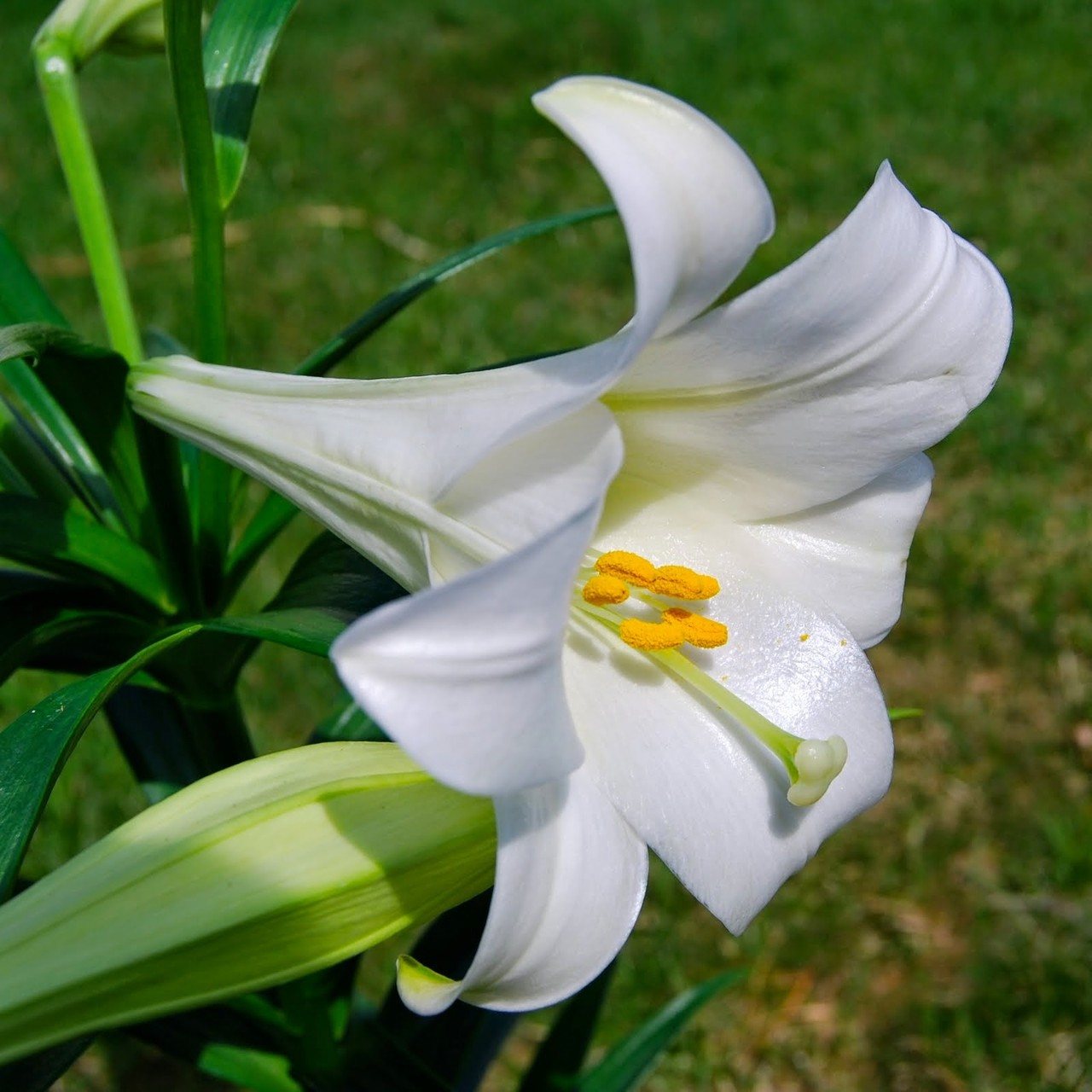
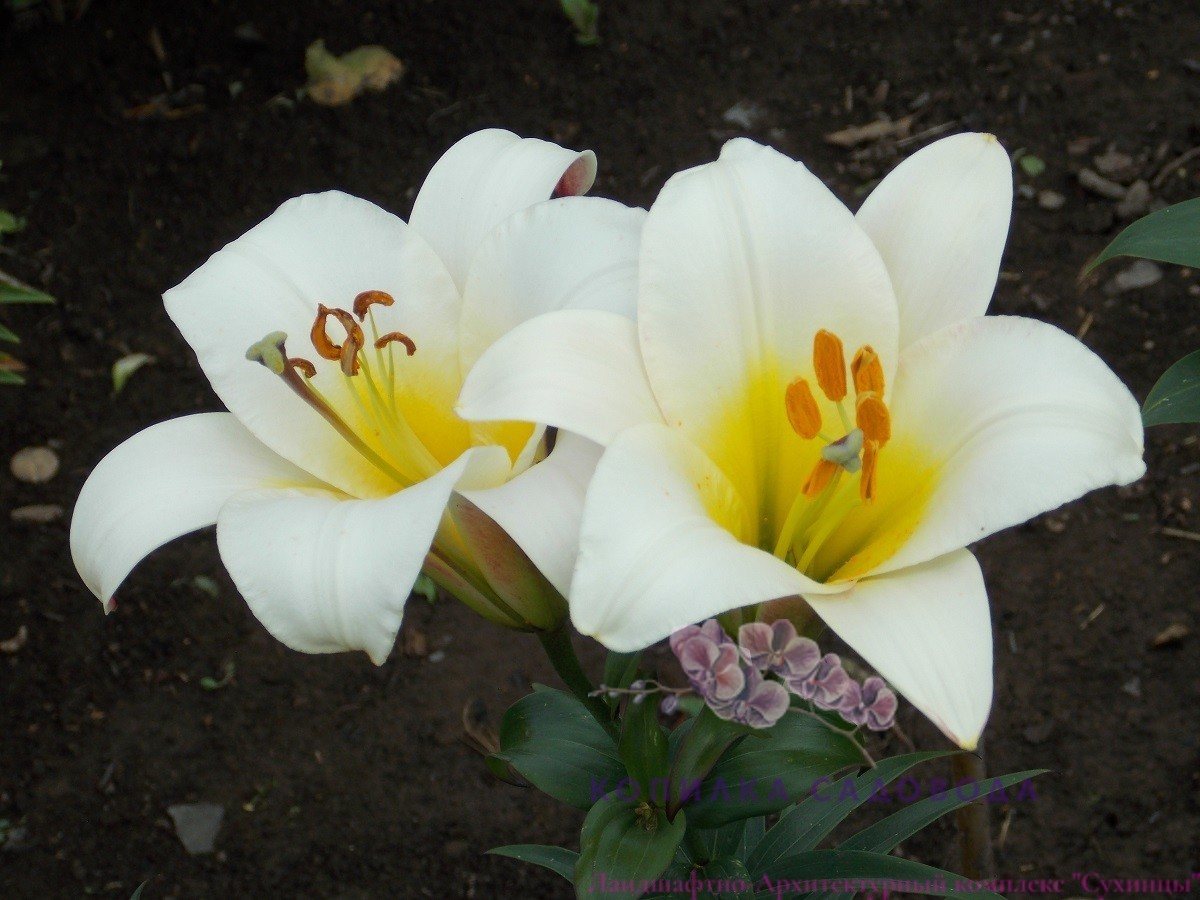





White Haven
The height of the lily reaches 1 m. The flowers are snow-white, elongated tubular in shape. Their diameter is 15 cm. The tops of the petals are slightly curled. Suitable for cutting, vase resistance for about 2 weeks. The lily blooms once in late June-early July.
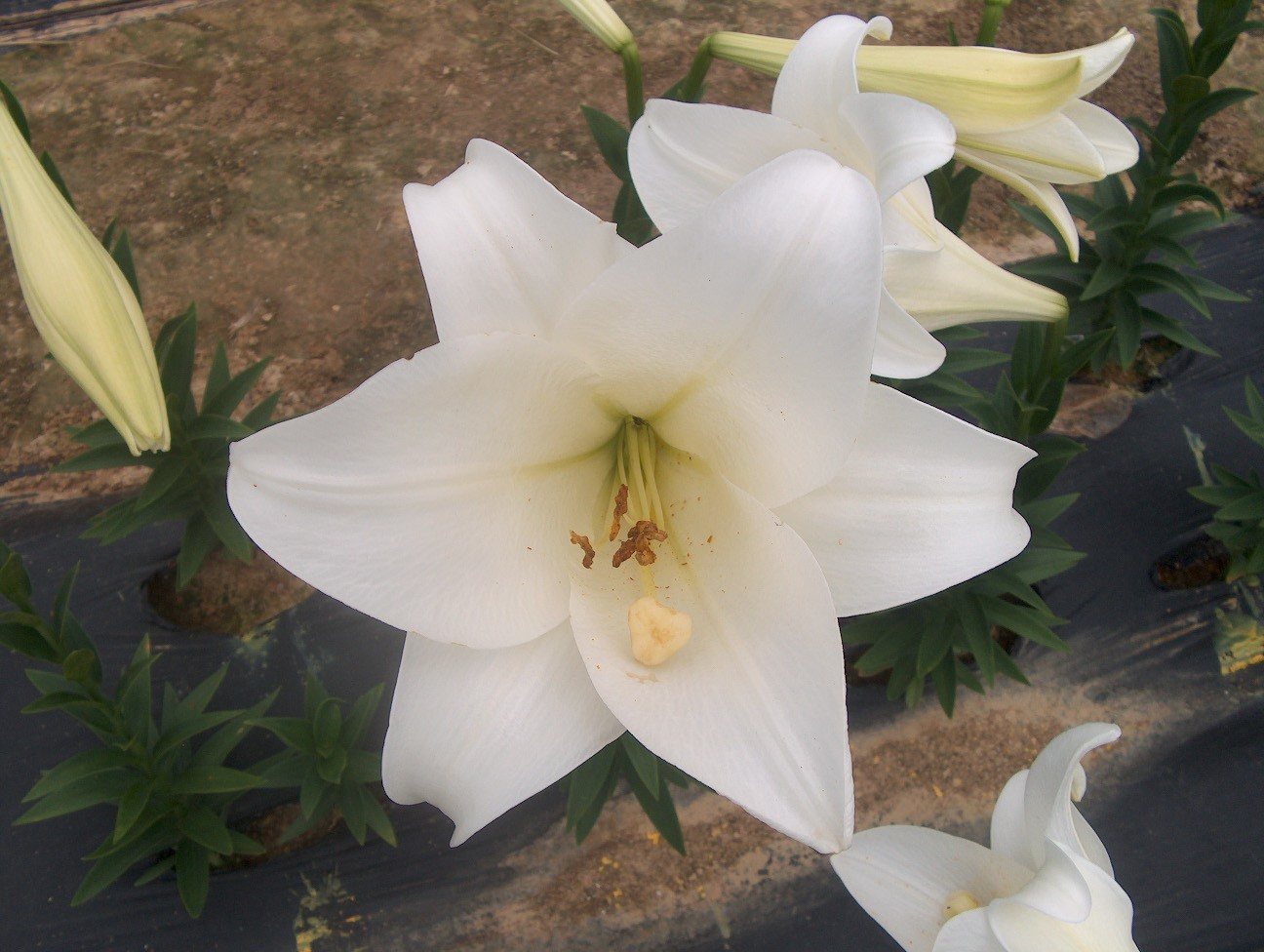
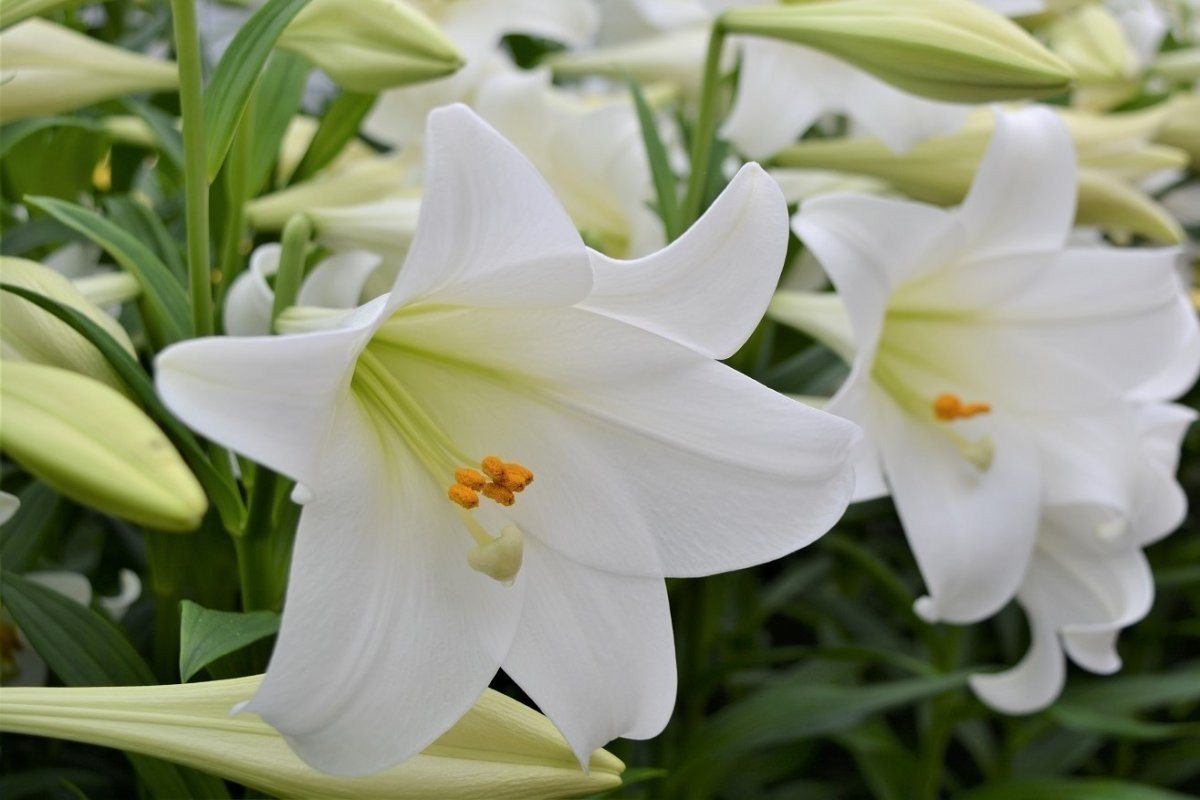
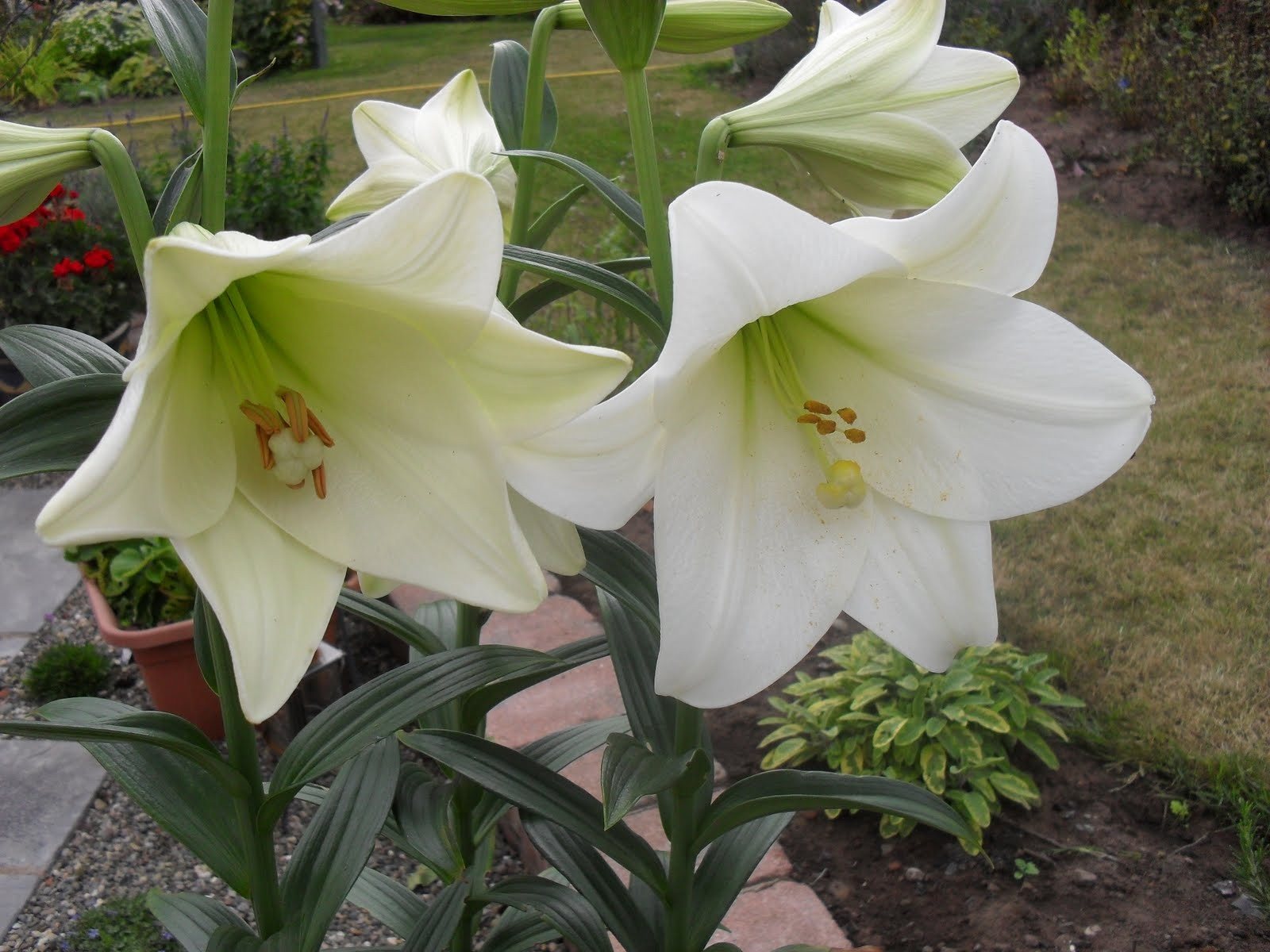
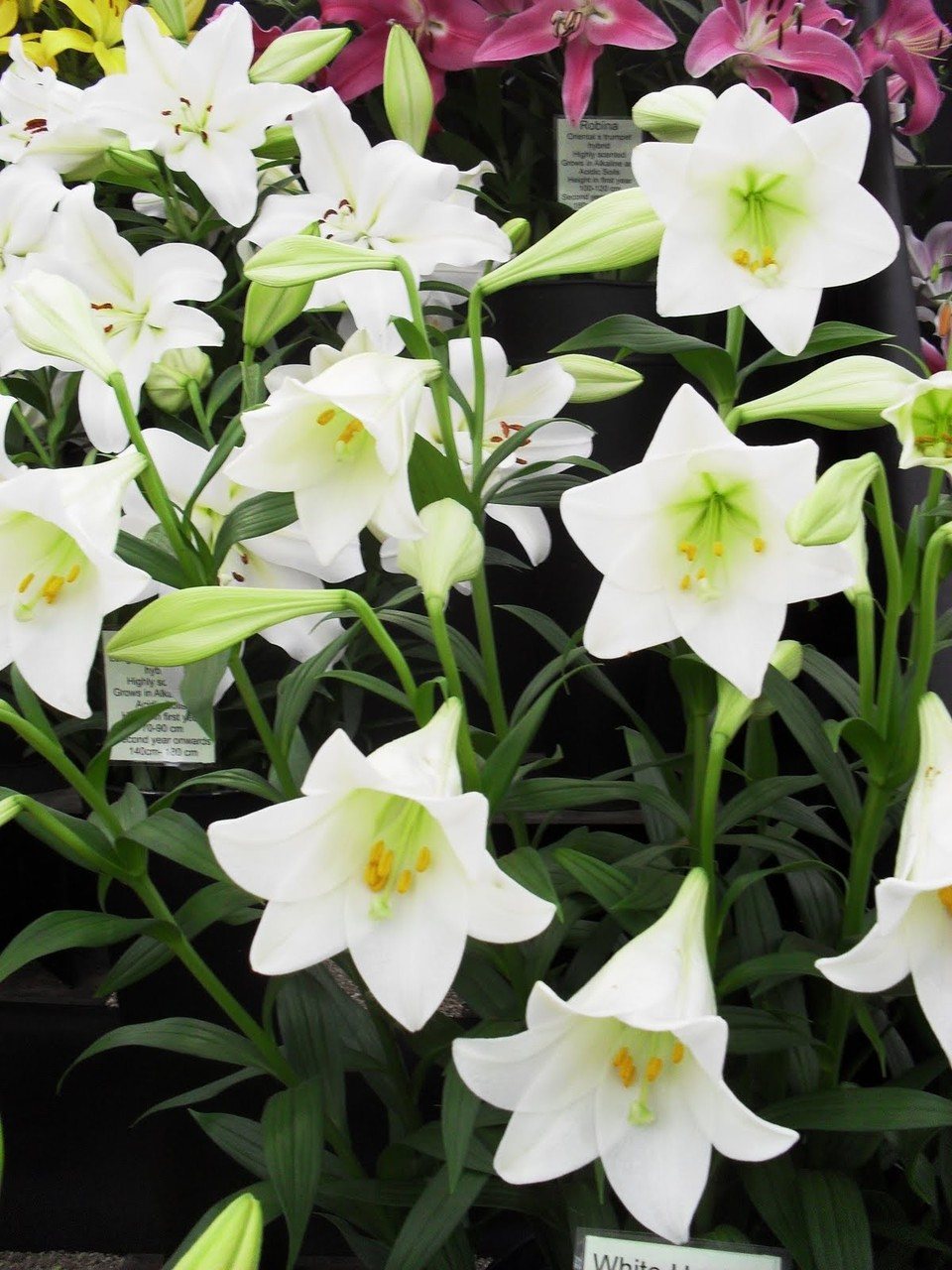






White Fox
The plant reaches a height of 120 cm. The length of the tubular flowers of this hybrid is 16 cm and the width is 12 cm. The shade of the petals is white, but sometimes there is a yellowish tint.
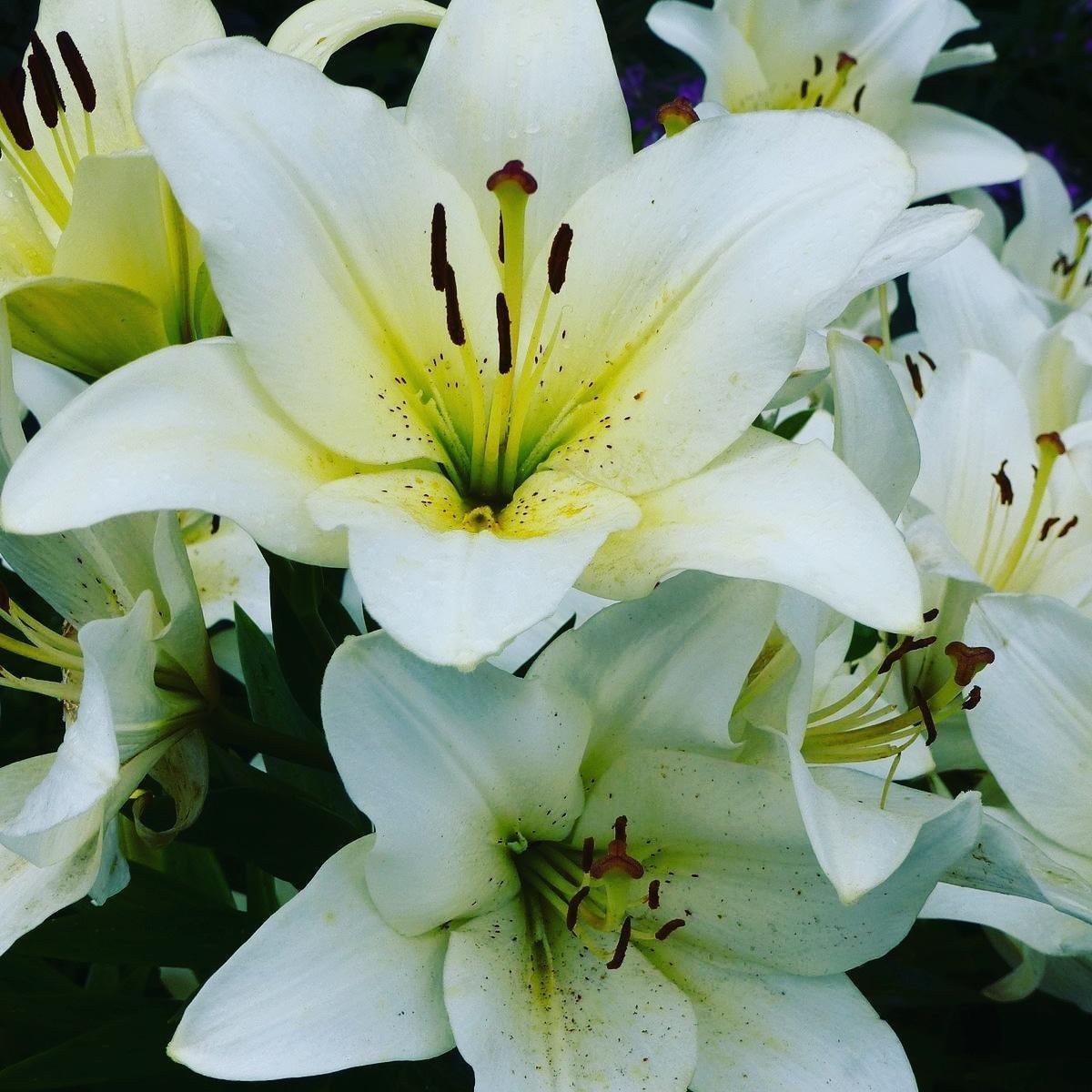
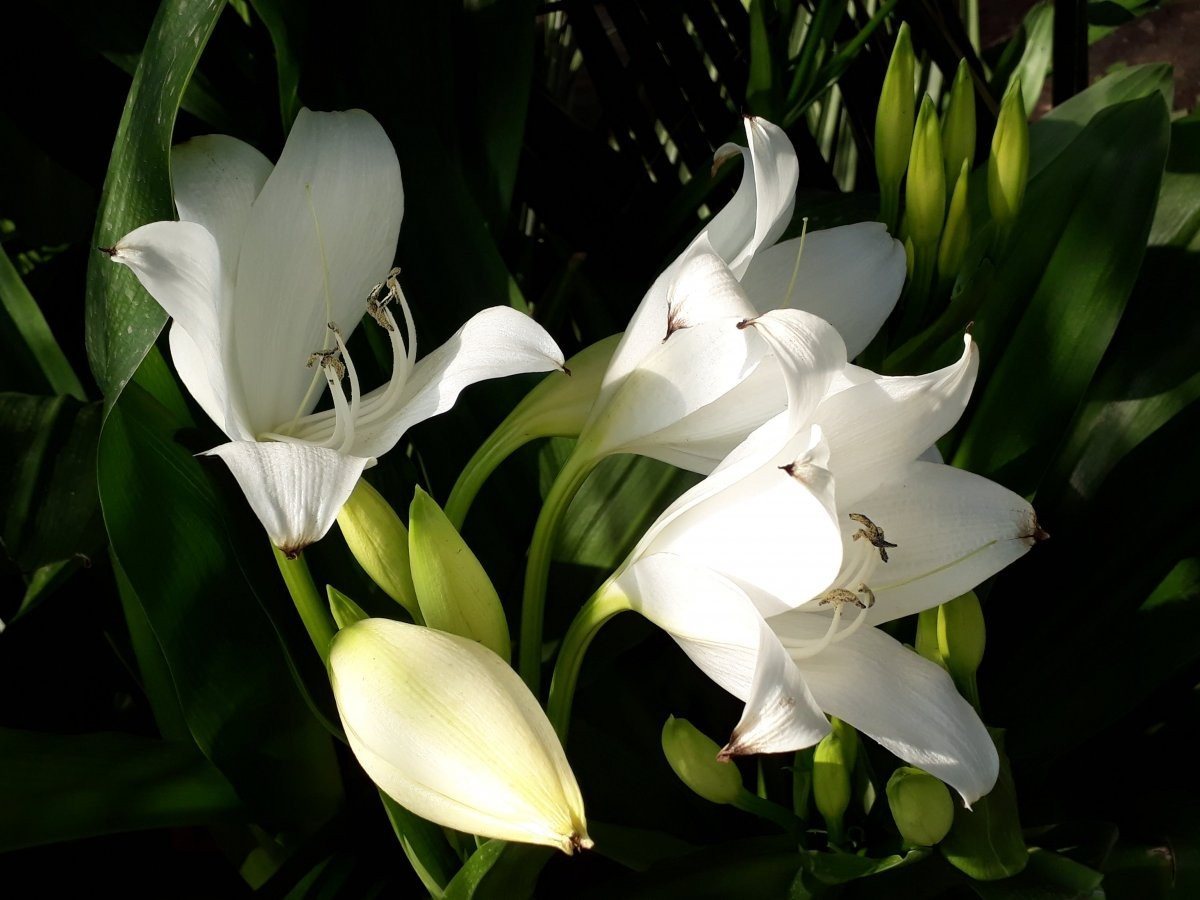
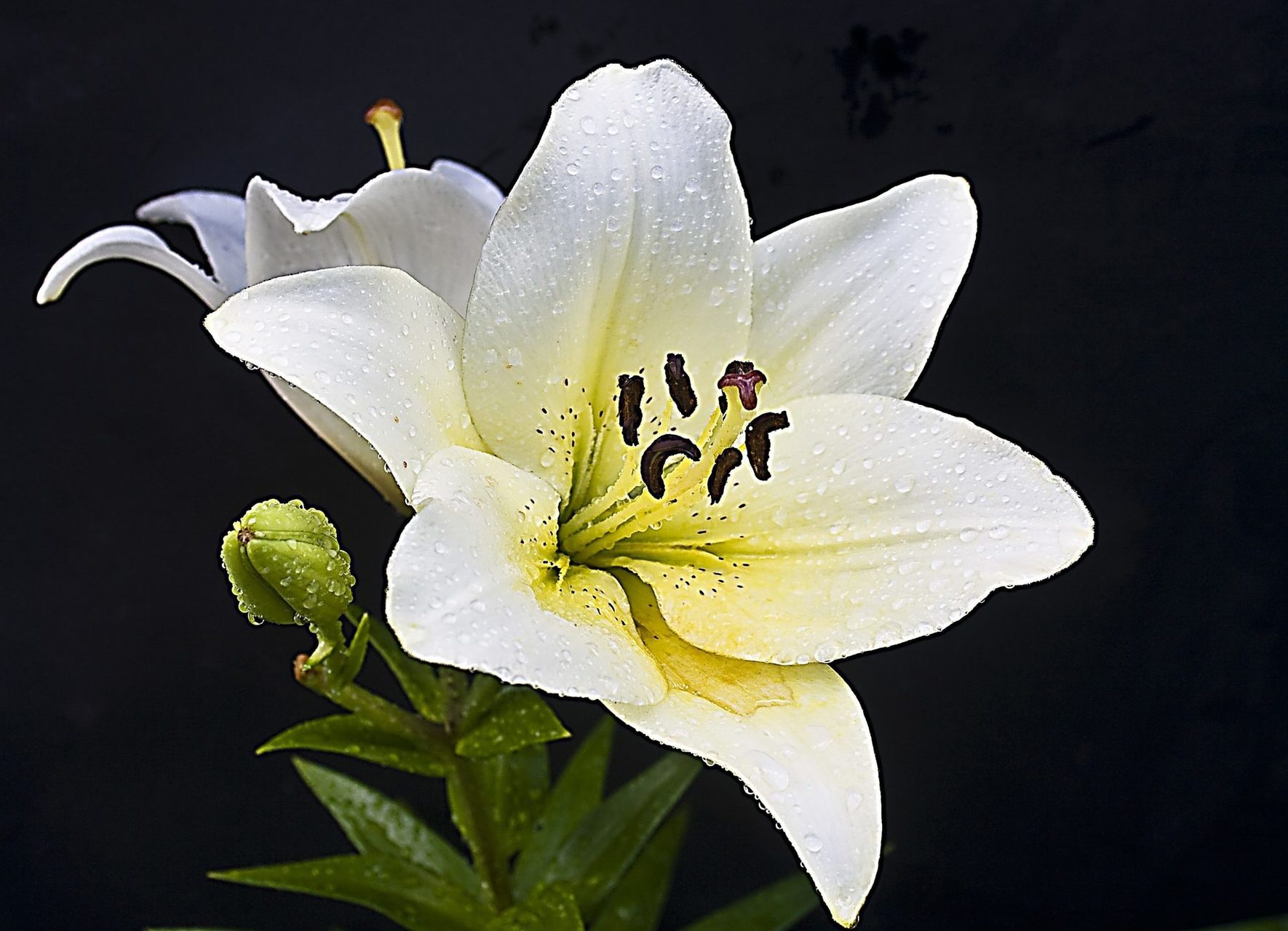

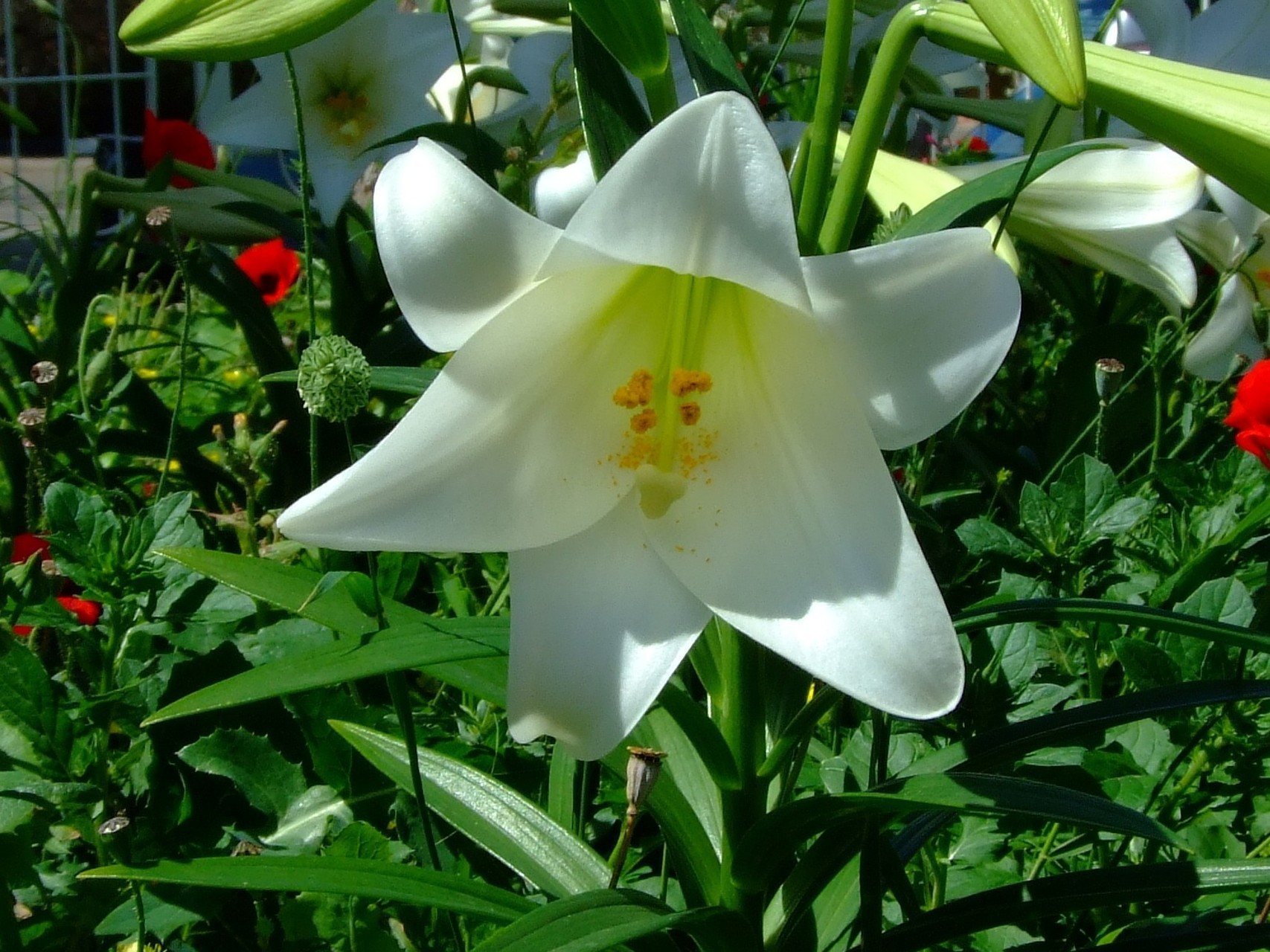





The Trumpet & Aurelian Hybrids
This variety of garden lily includes about one thousand varieties. The shape of their flowers can be tubular, star-shaped, drooping, cup-shaped. The color of the petals is varied, but the inner side of the blooming buds is always much darker. The height of such lilies varies from 120 to 190 cm. Moreover, it is possible that 2 shoots appear from one bulb and buds form on each of them.
Such hybrids are characterized by high frost resistance and viability. They easily adapt to any climatic conditions.
Consider the popular varieties of trumpet and Orleans lily hybrids.
African Queen
The hybrid is distinguished by huge apricot-orange flowers. Plant height 80-90 cm. Blooms in late June-early July. Remains highly decorative in partial shade and in direct sunlight.
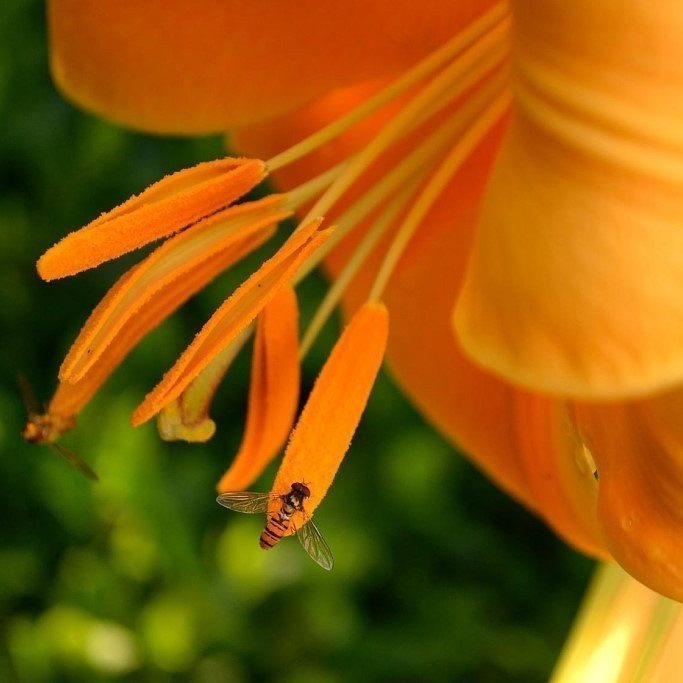
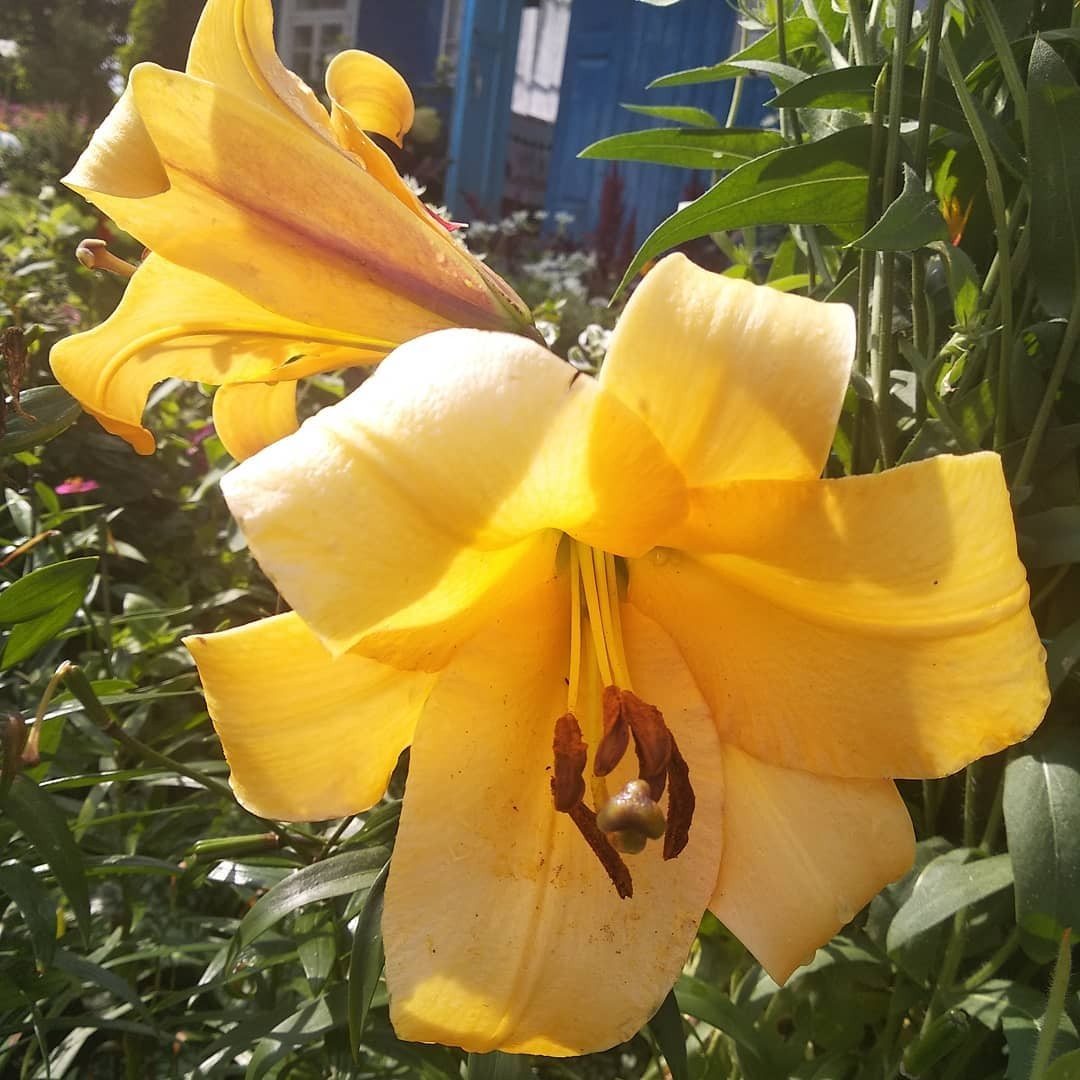

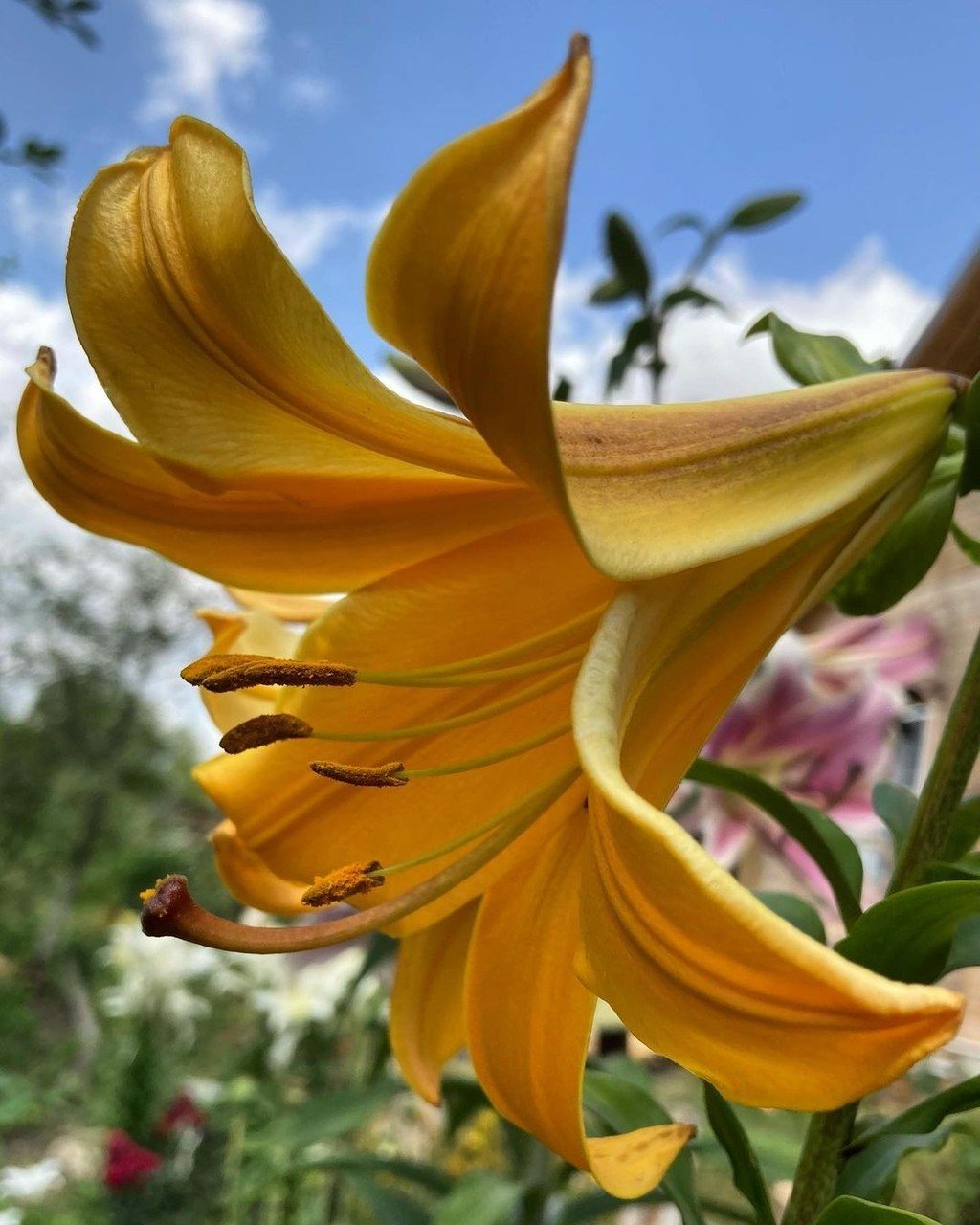
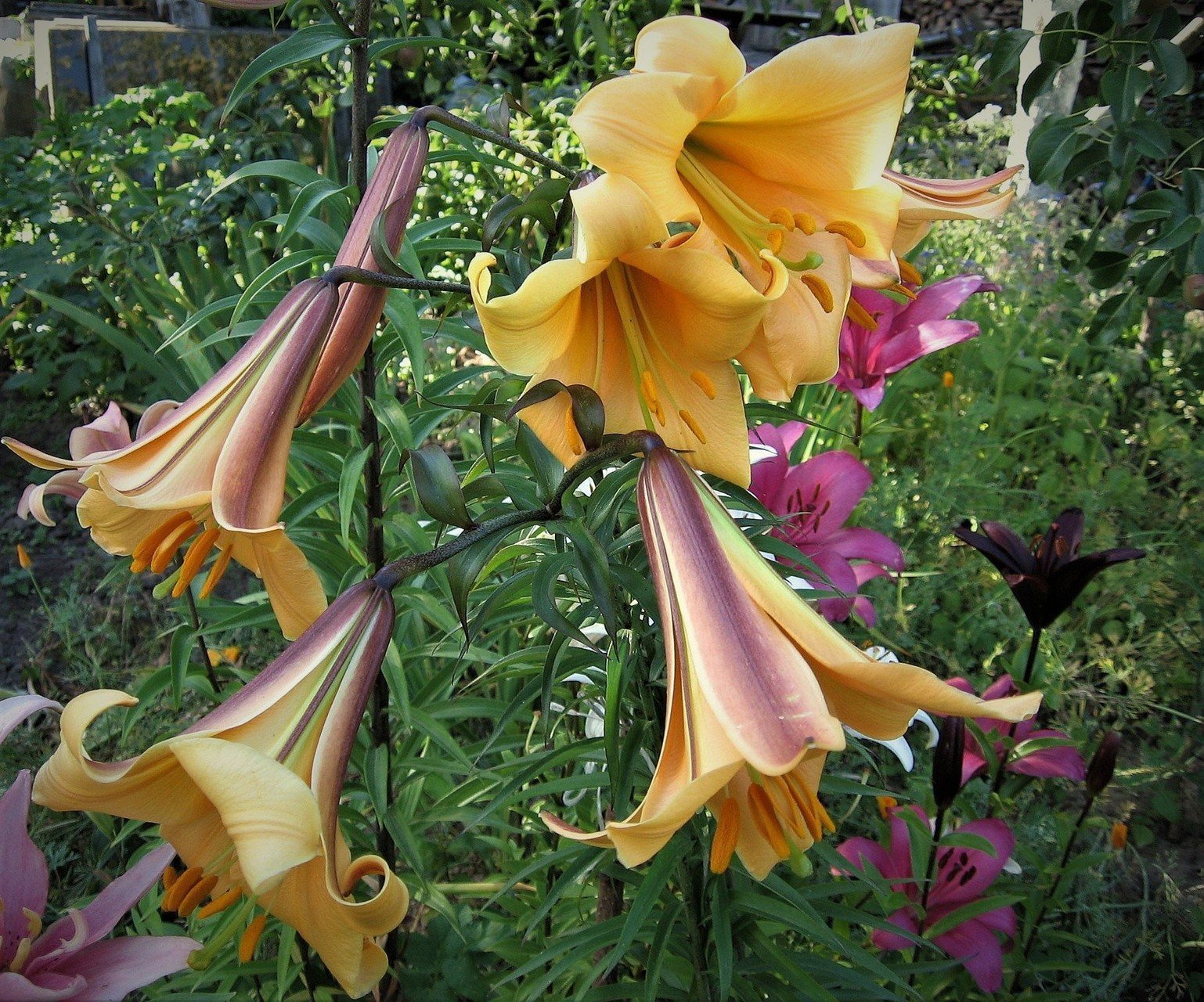





Regale
A hybrid with large tubular flowers of a snow-white hue. Moreover, the reverse side of its petals does not have dark veins. The height of the plant reaches 90 cm. The hybrid blooms in early July.
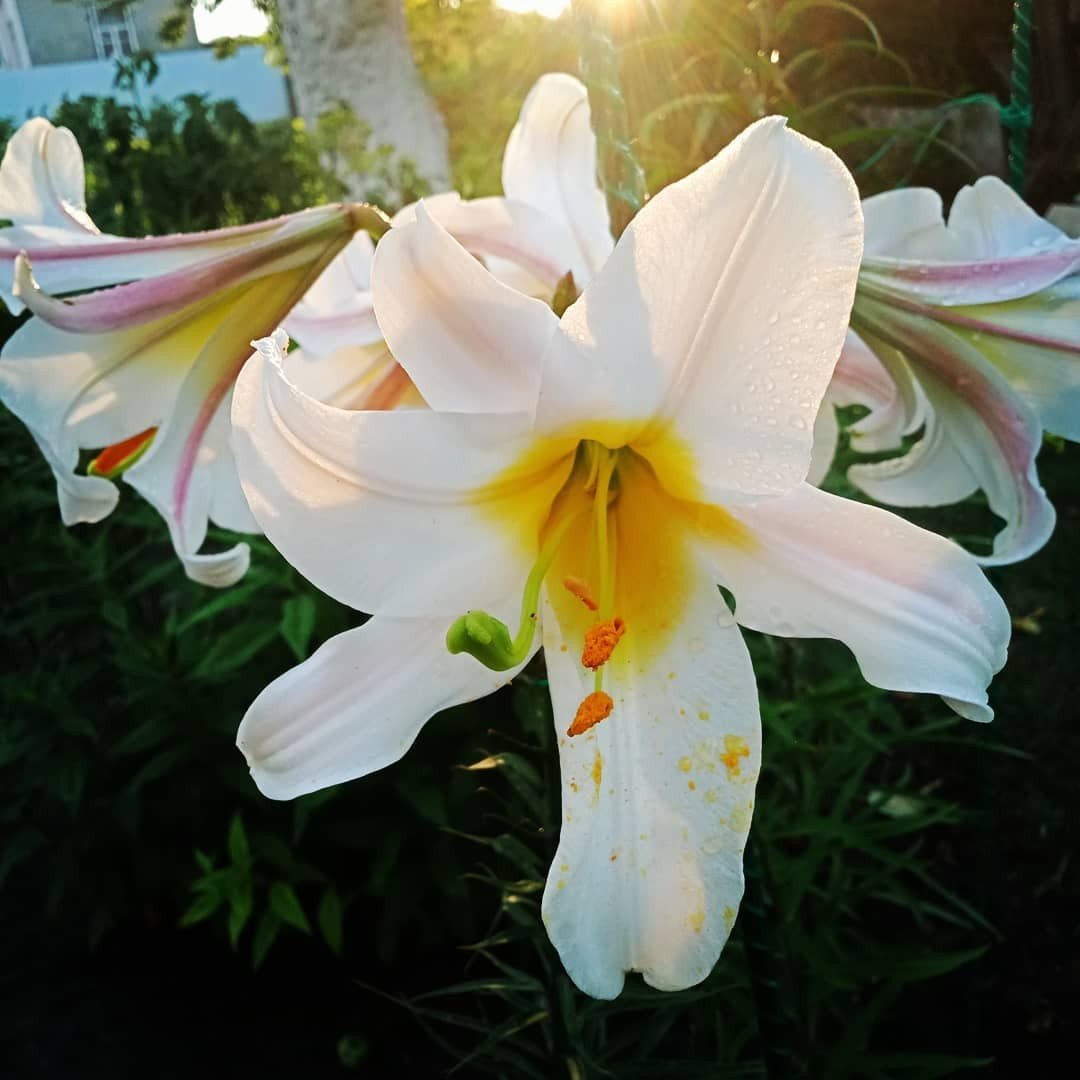
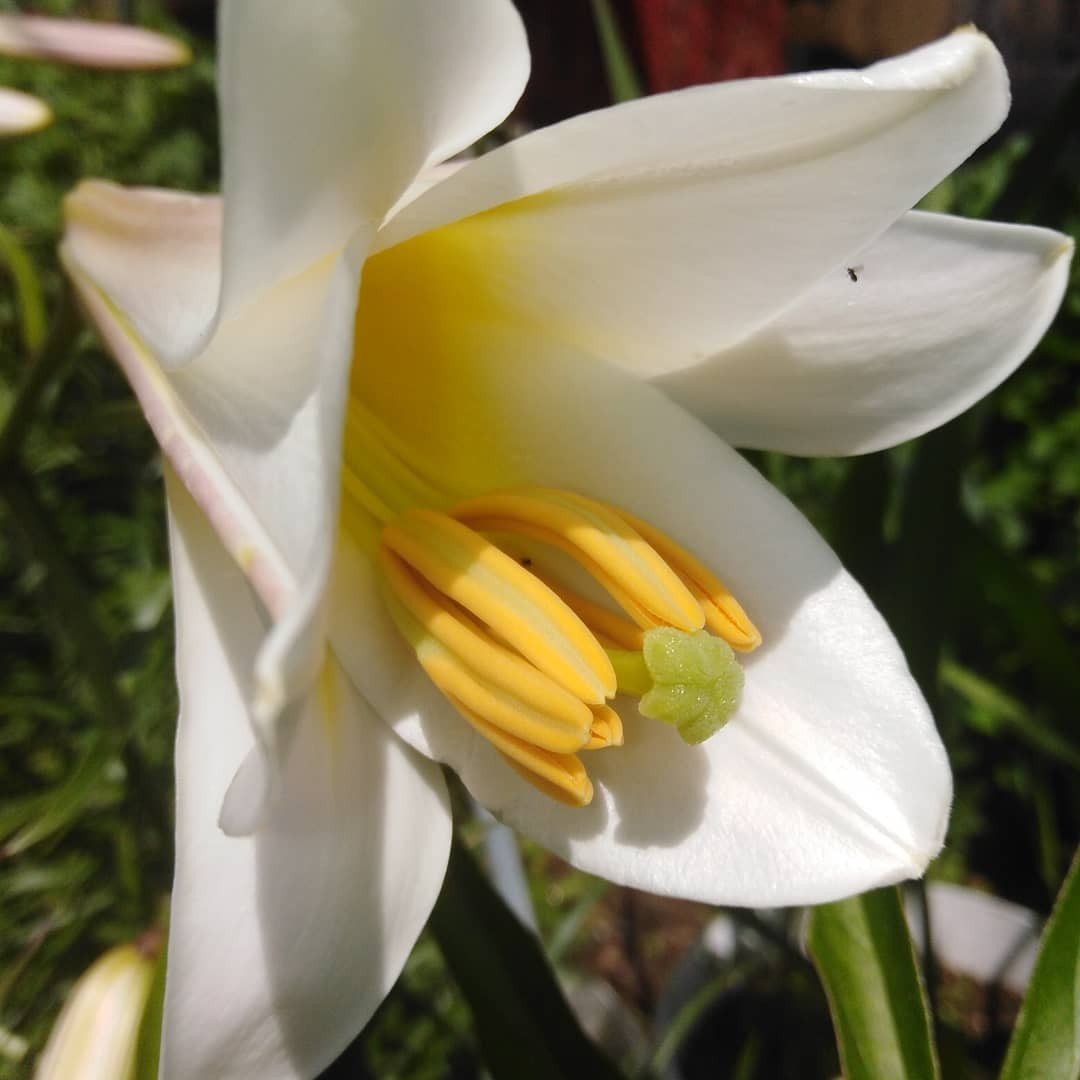
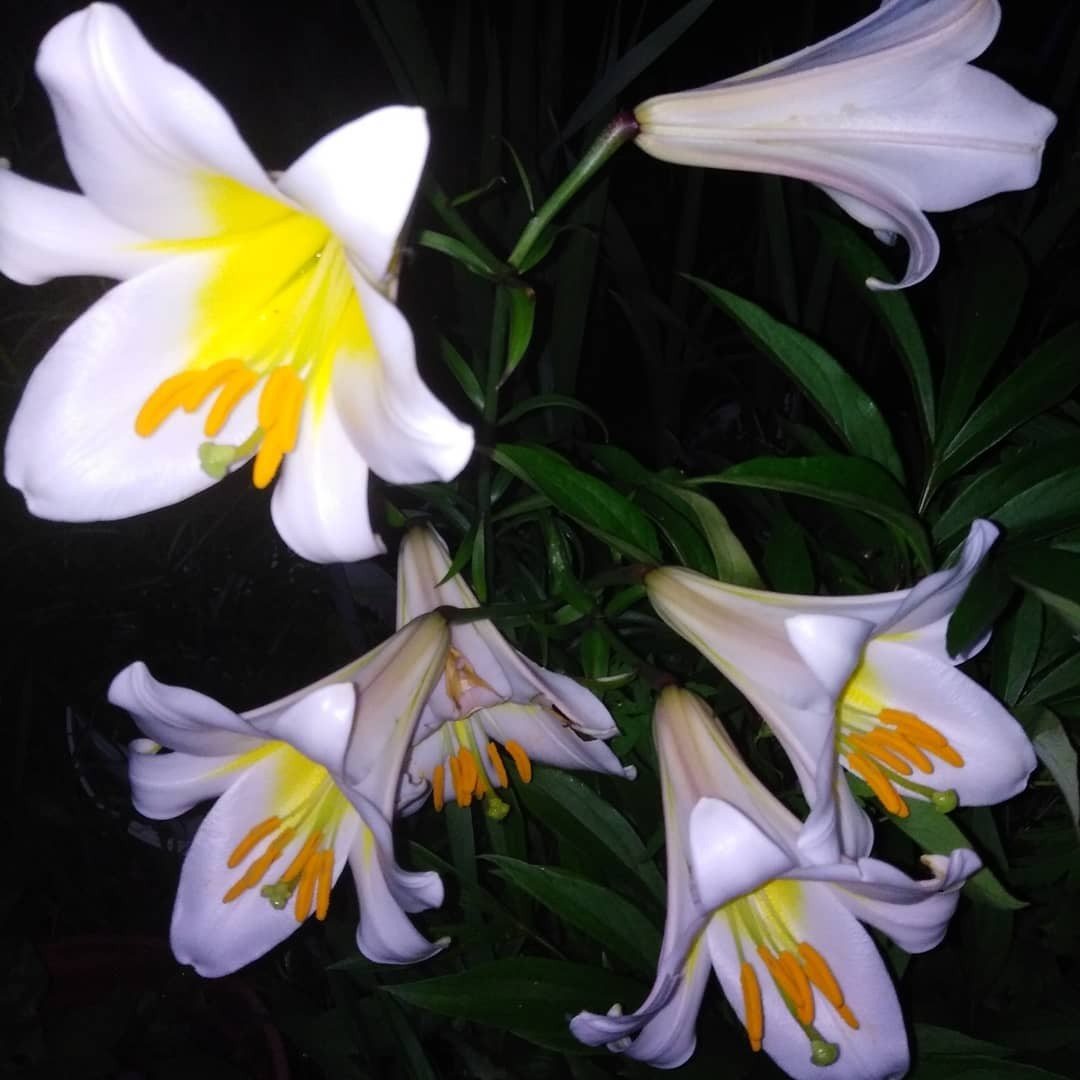
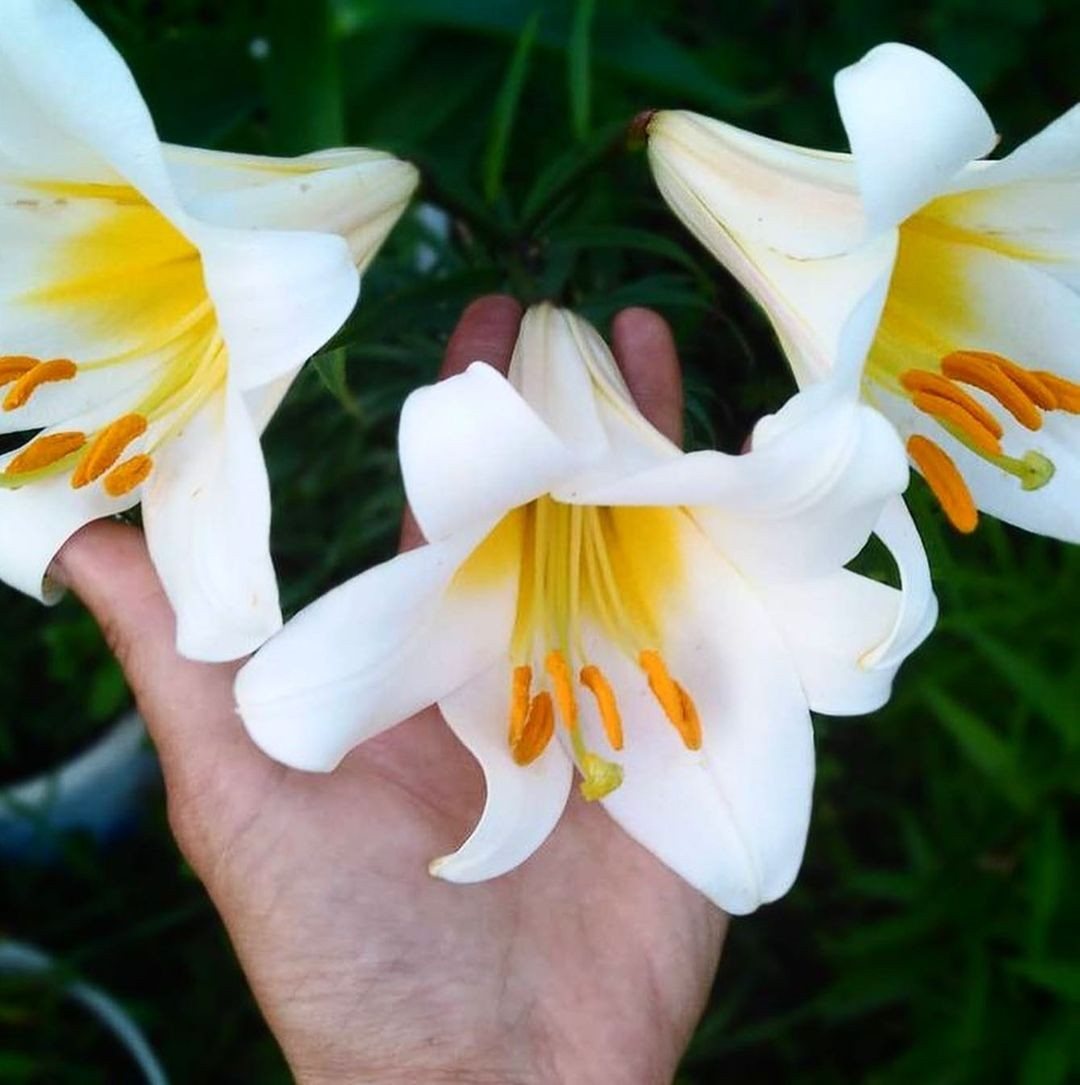
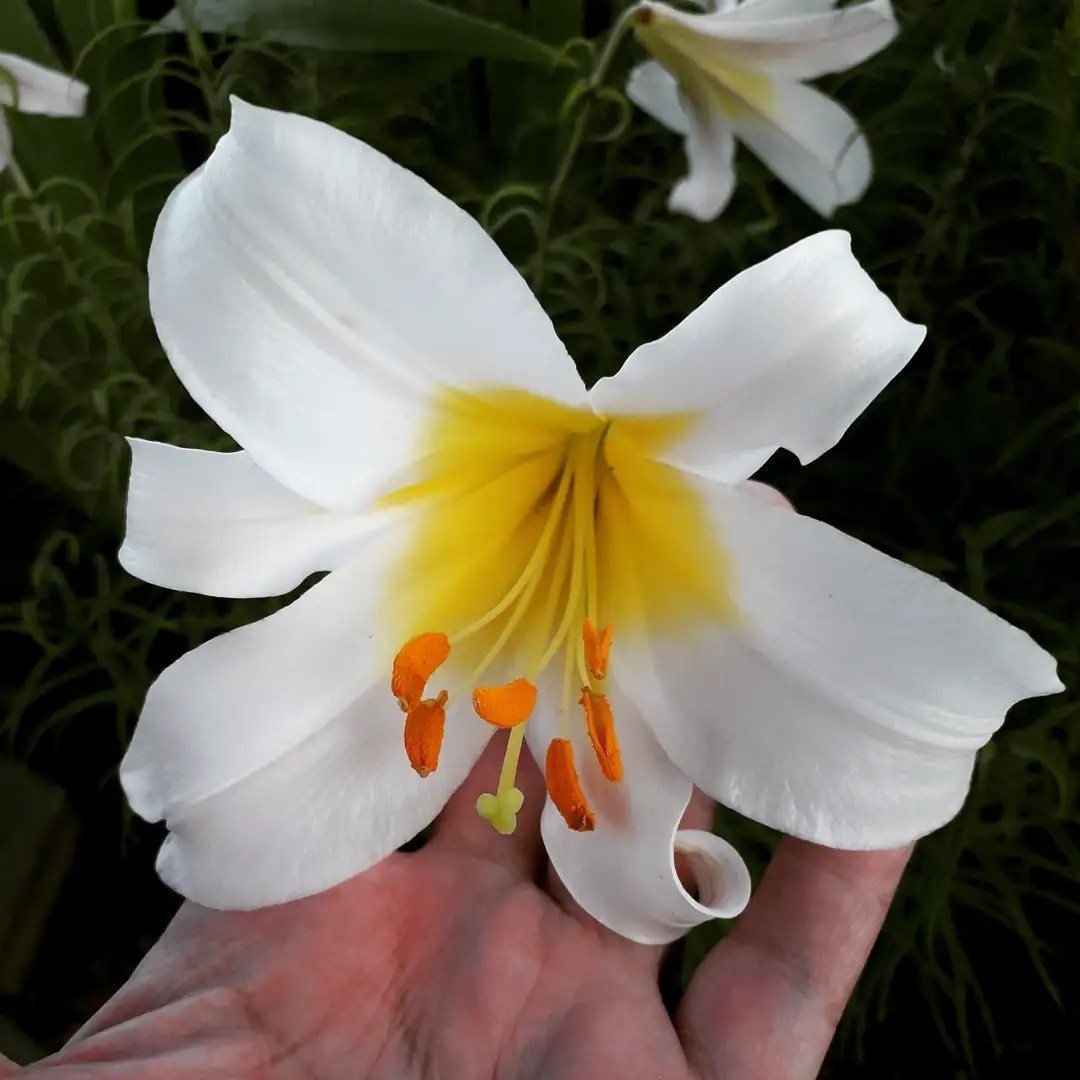





Pink perfection
The height of the lily is 80 cm. Its flowers are tubular and dark pink in color. The diameter of the buds when opened is 25 cm. The lily blooms at the end of June. Suitable for cutting.

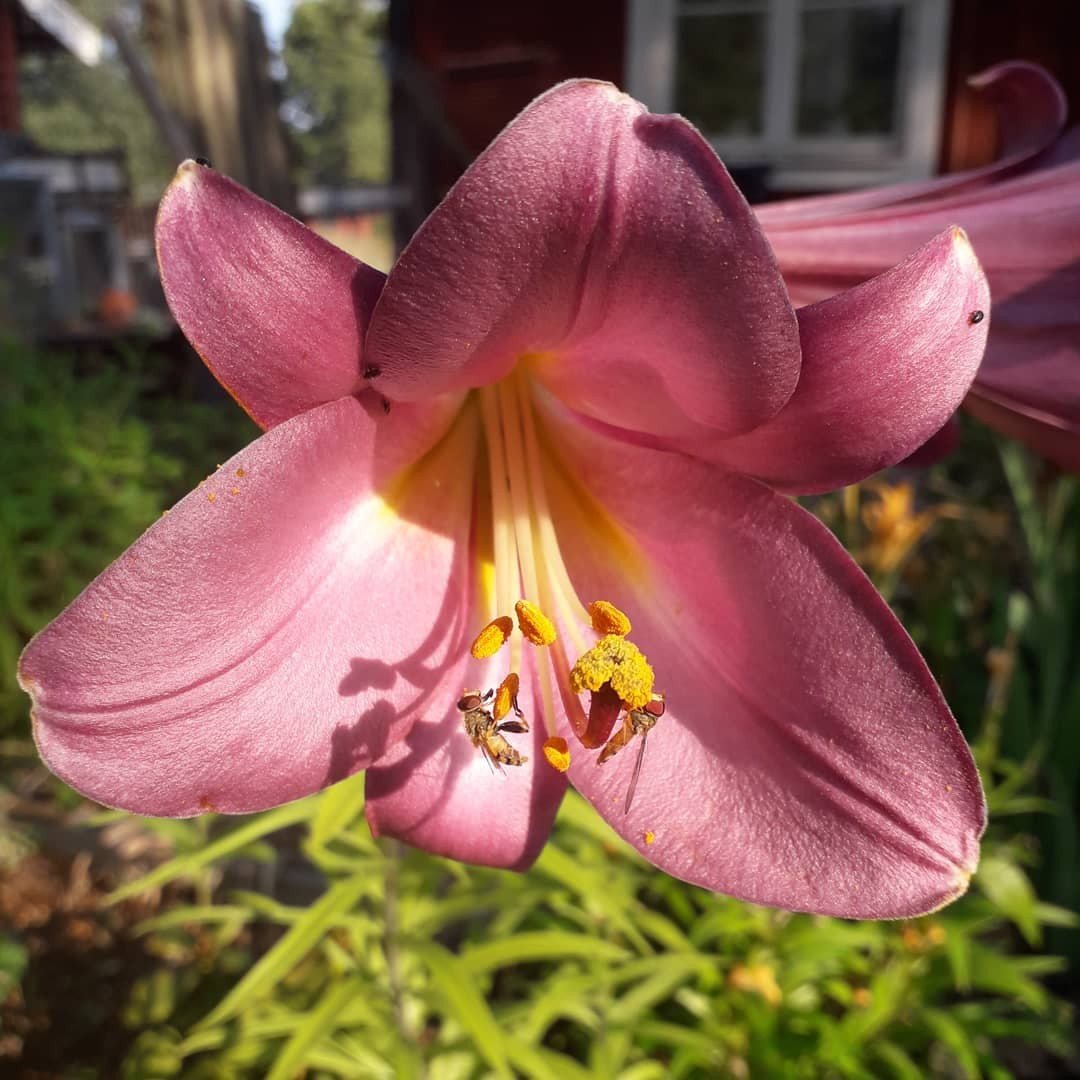
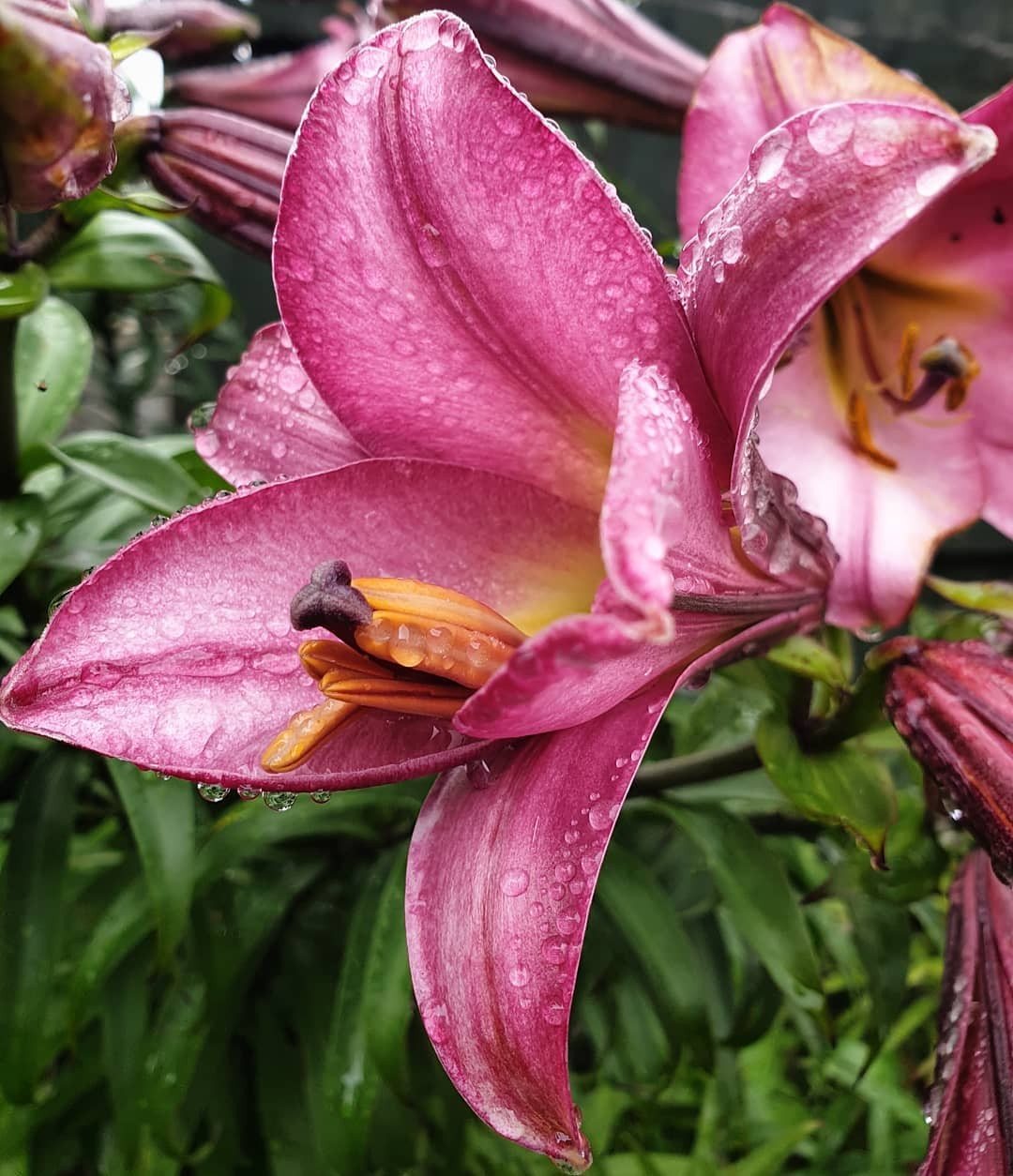
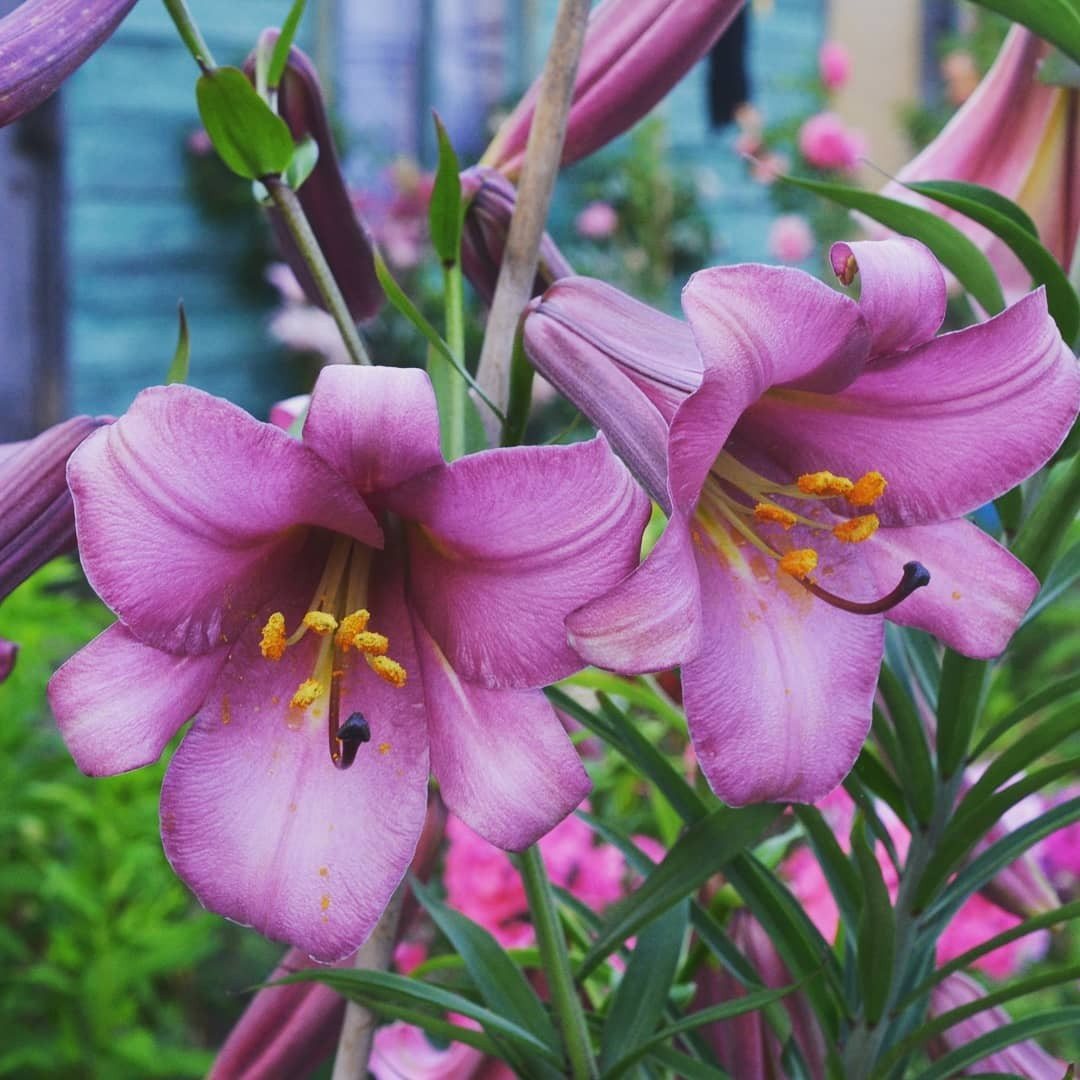
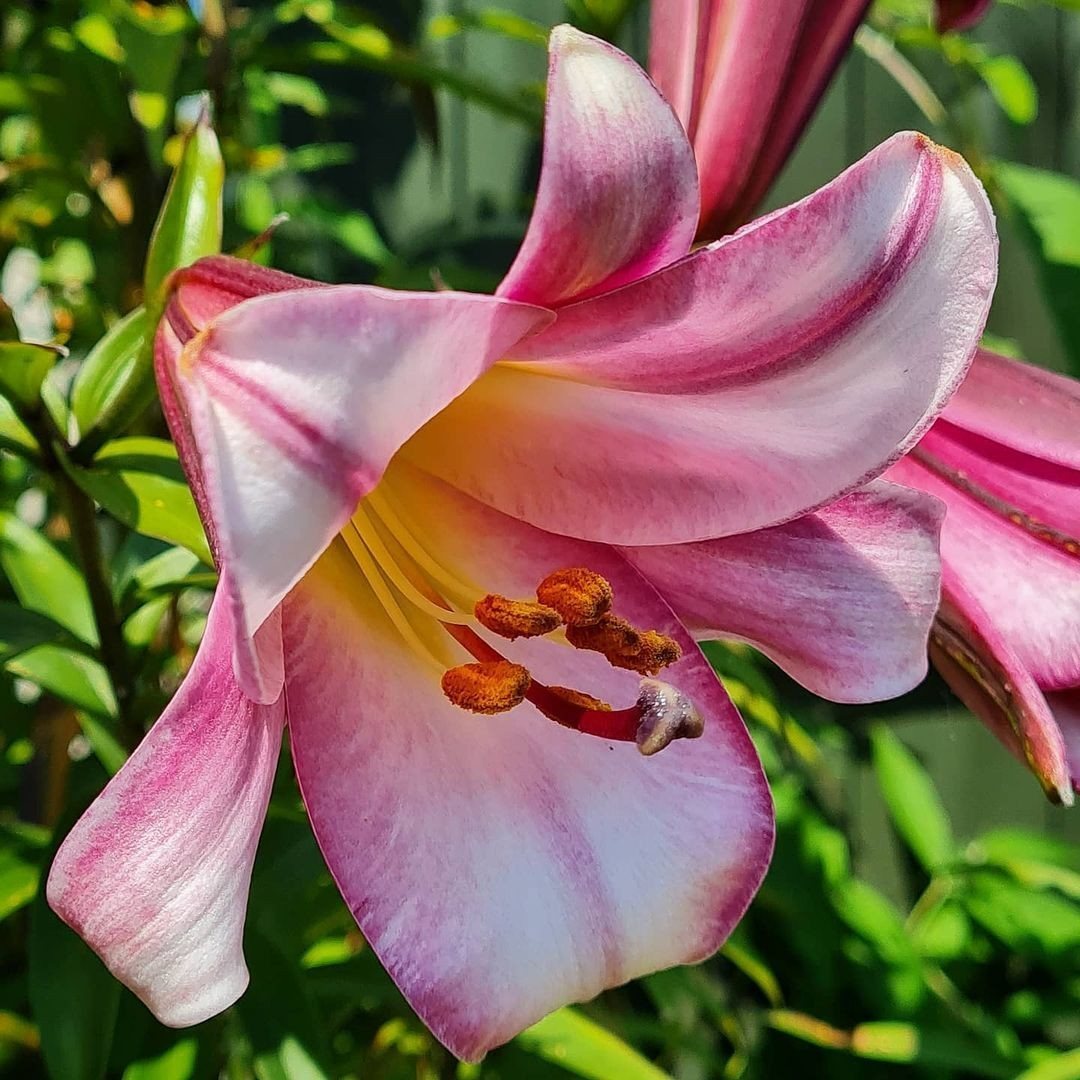





White Planet
The height of the shoot reaches 130 cm. The tubular flowers of the hybrid are large, with a diameter of 25 cm. The shade of the petals is cream, but they are yellow at the base. The hybrid blooms in July. The aroma is refined, not intrusive.
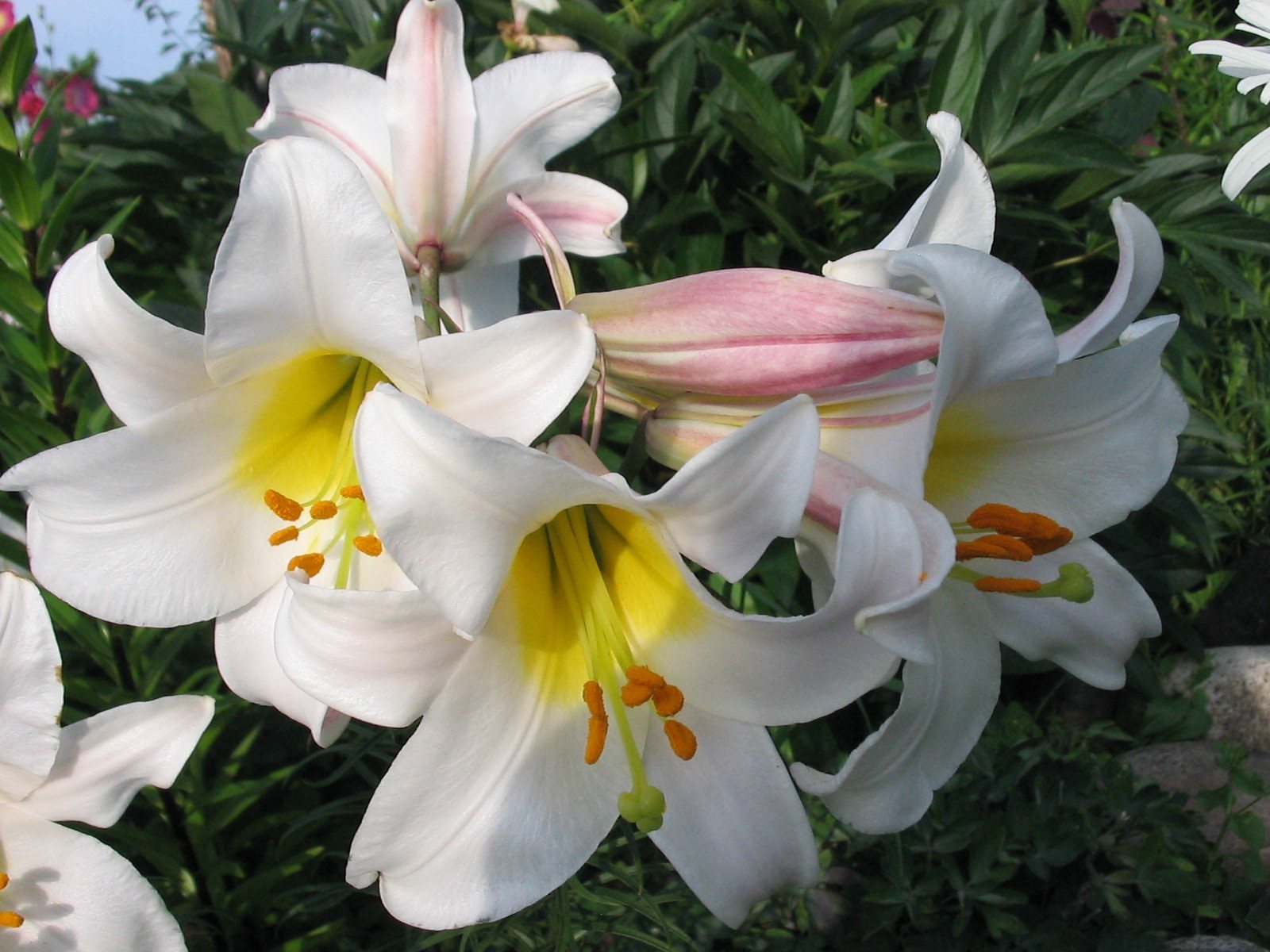
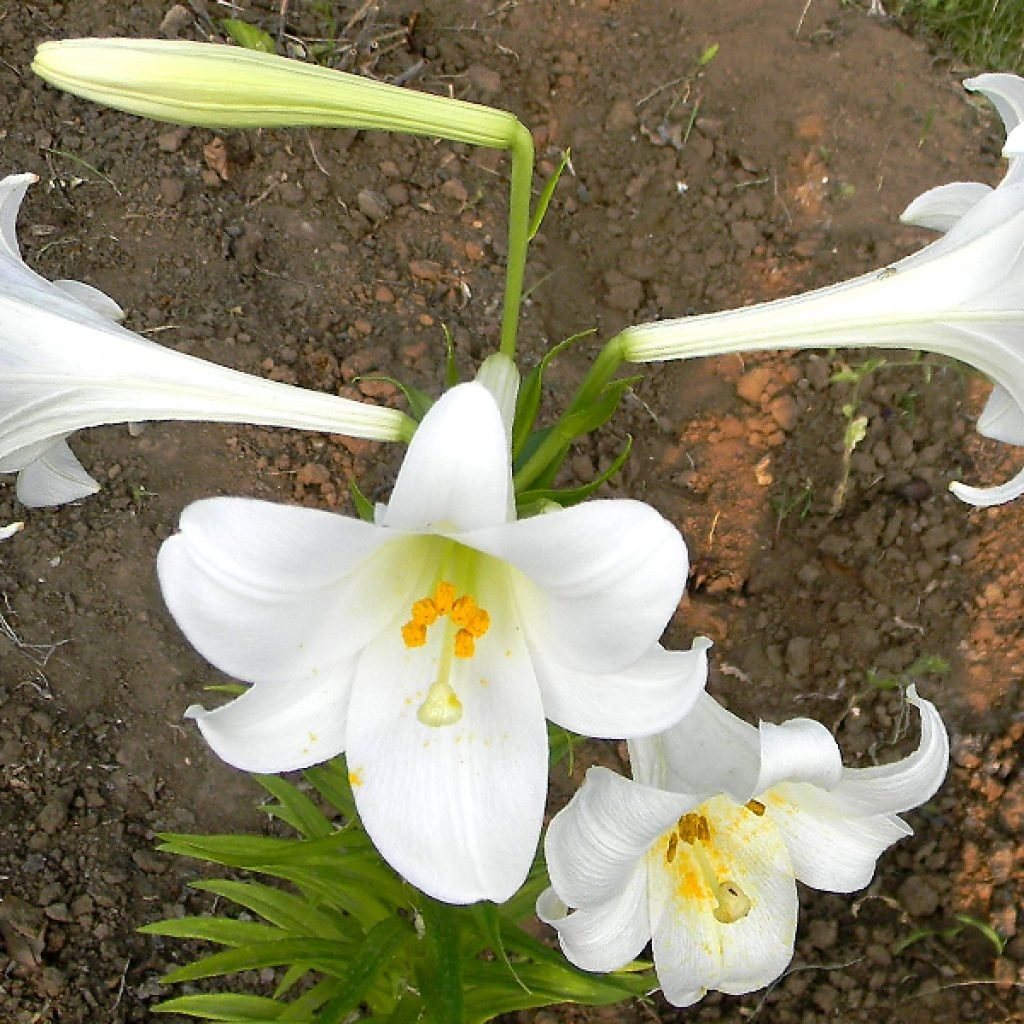
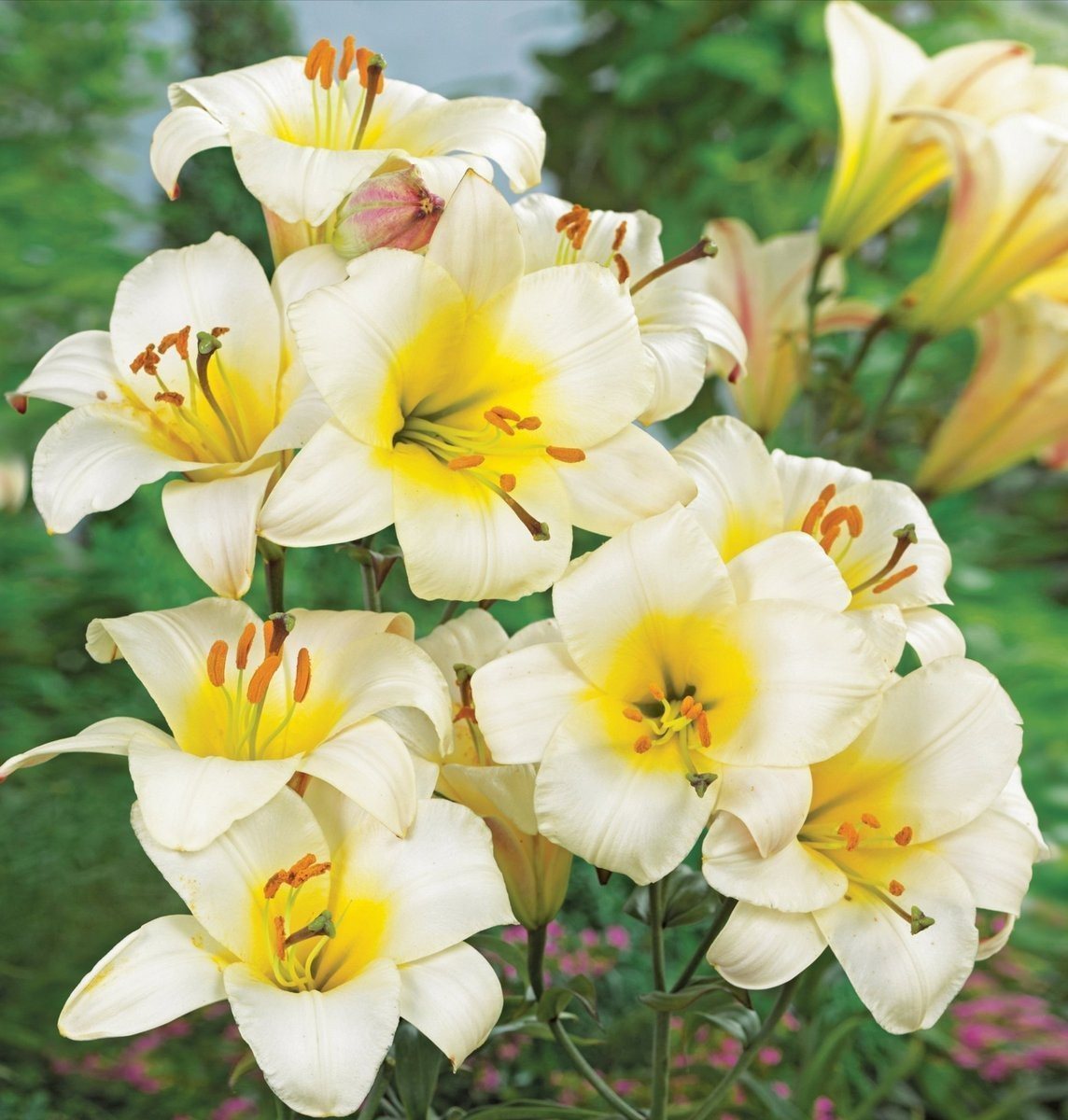
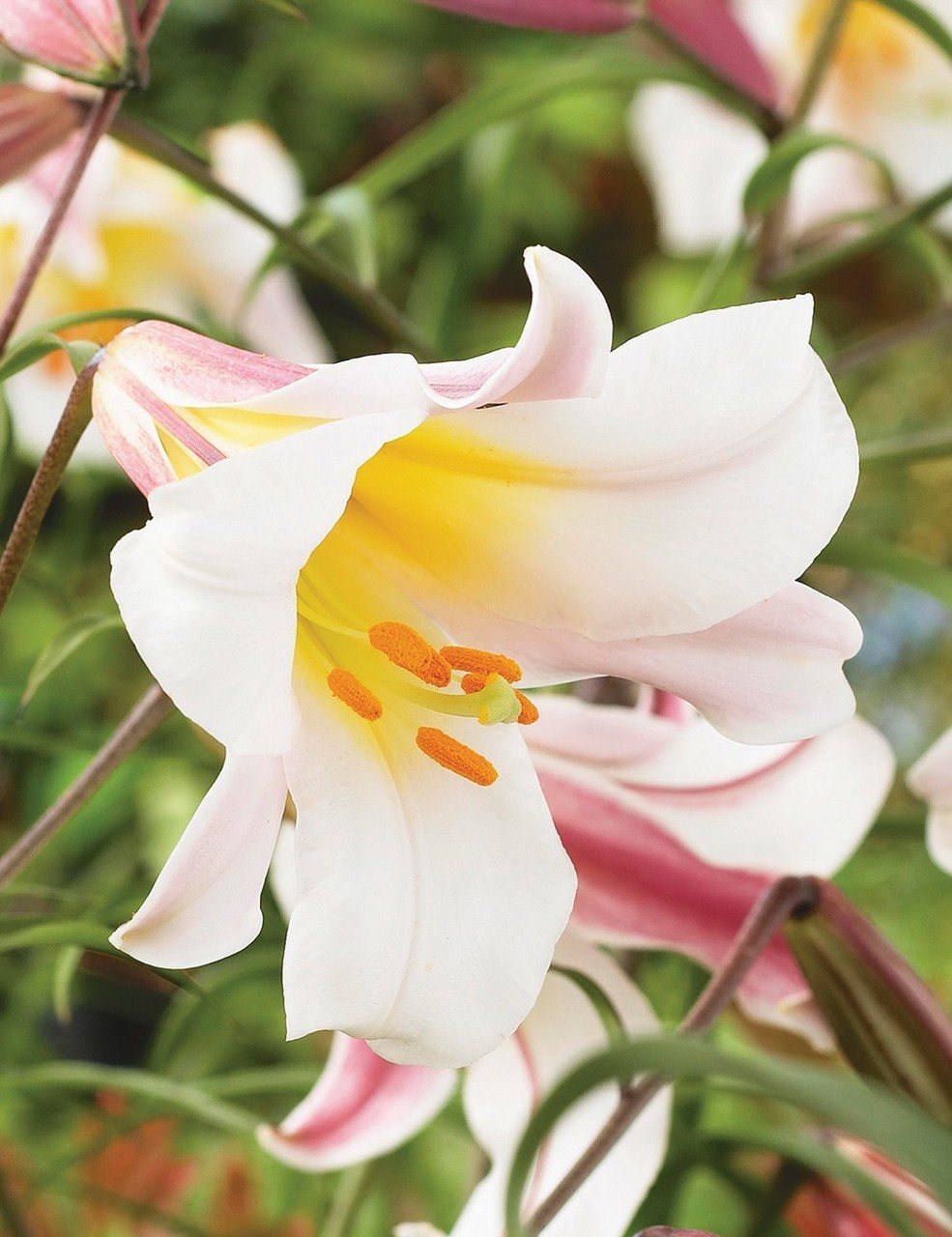
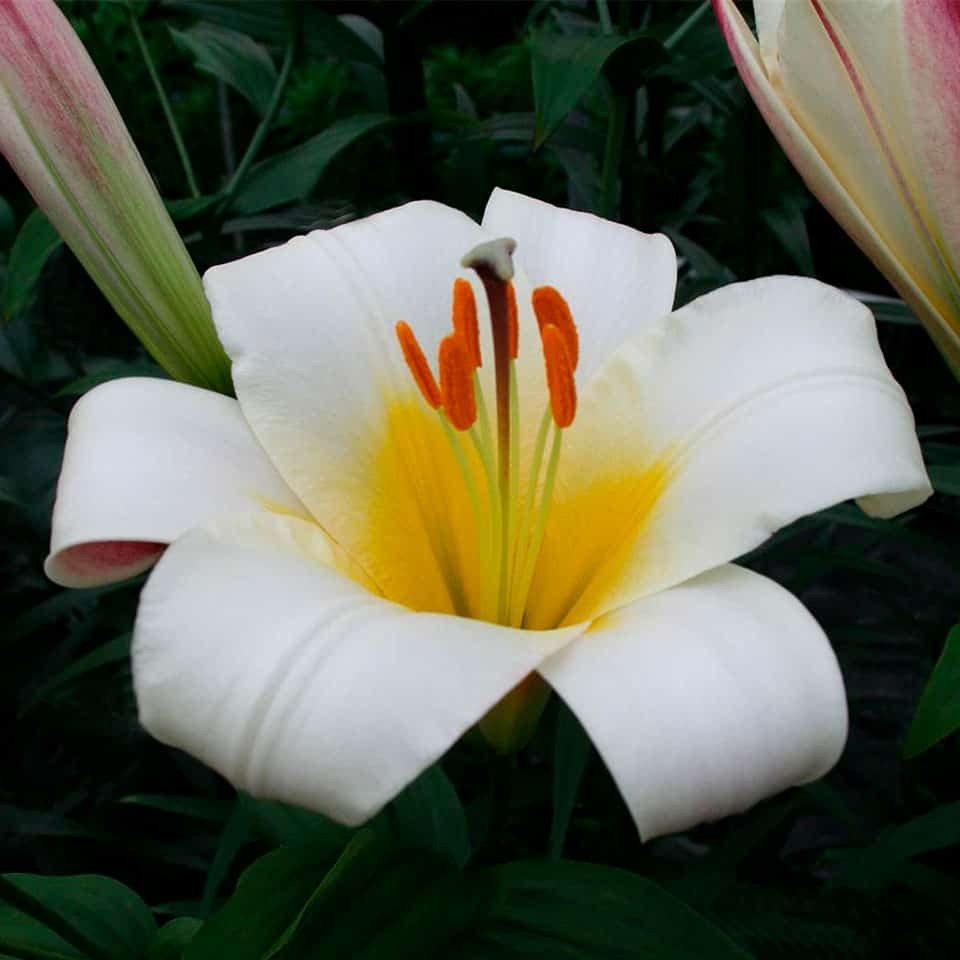





Golden Splendor
Tall hybrid with bright yellow flowers. The reverse side of its petals has dark veins. The diameter of the buds when opened is 13-15 cm. The lily blooms at the end of July.
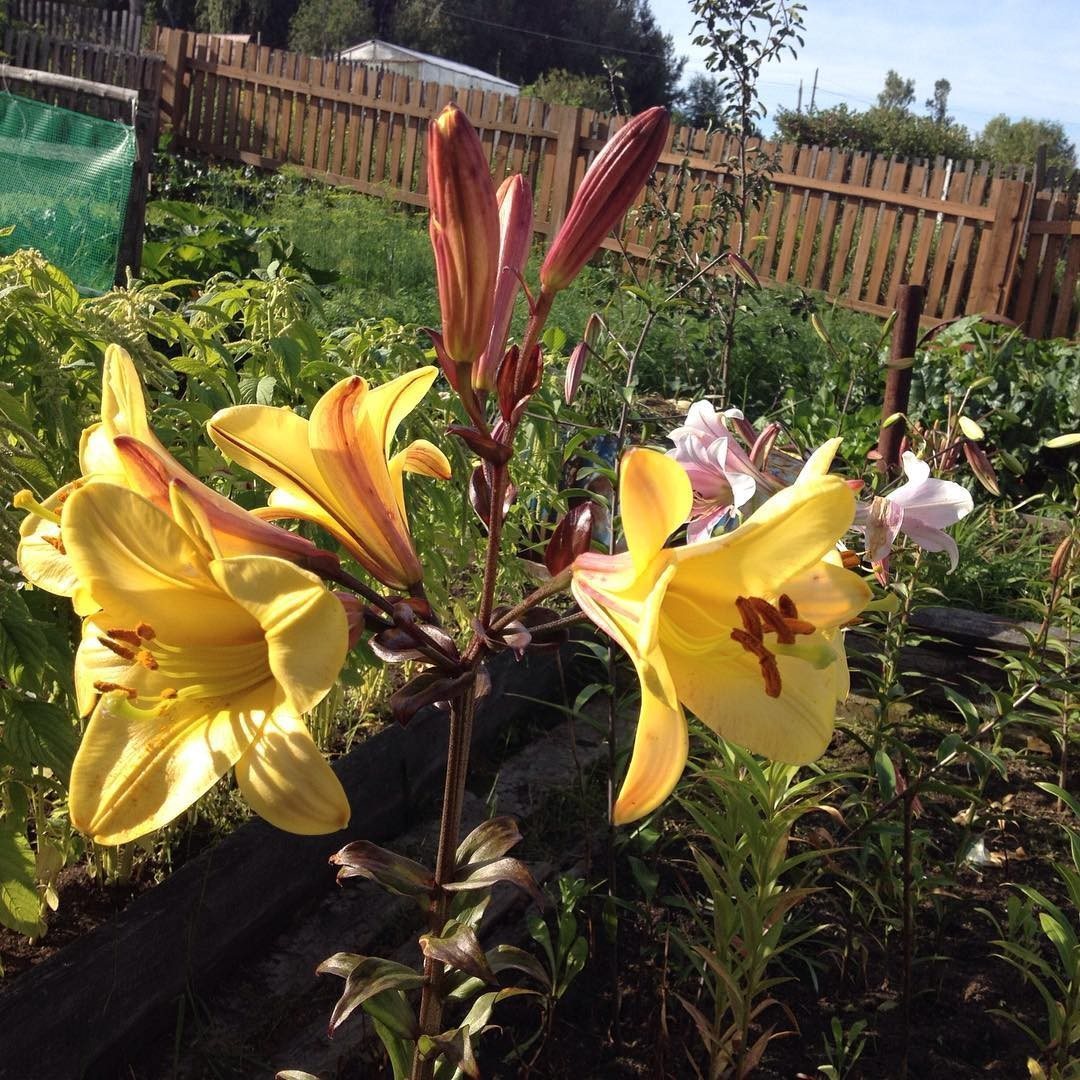
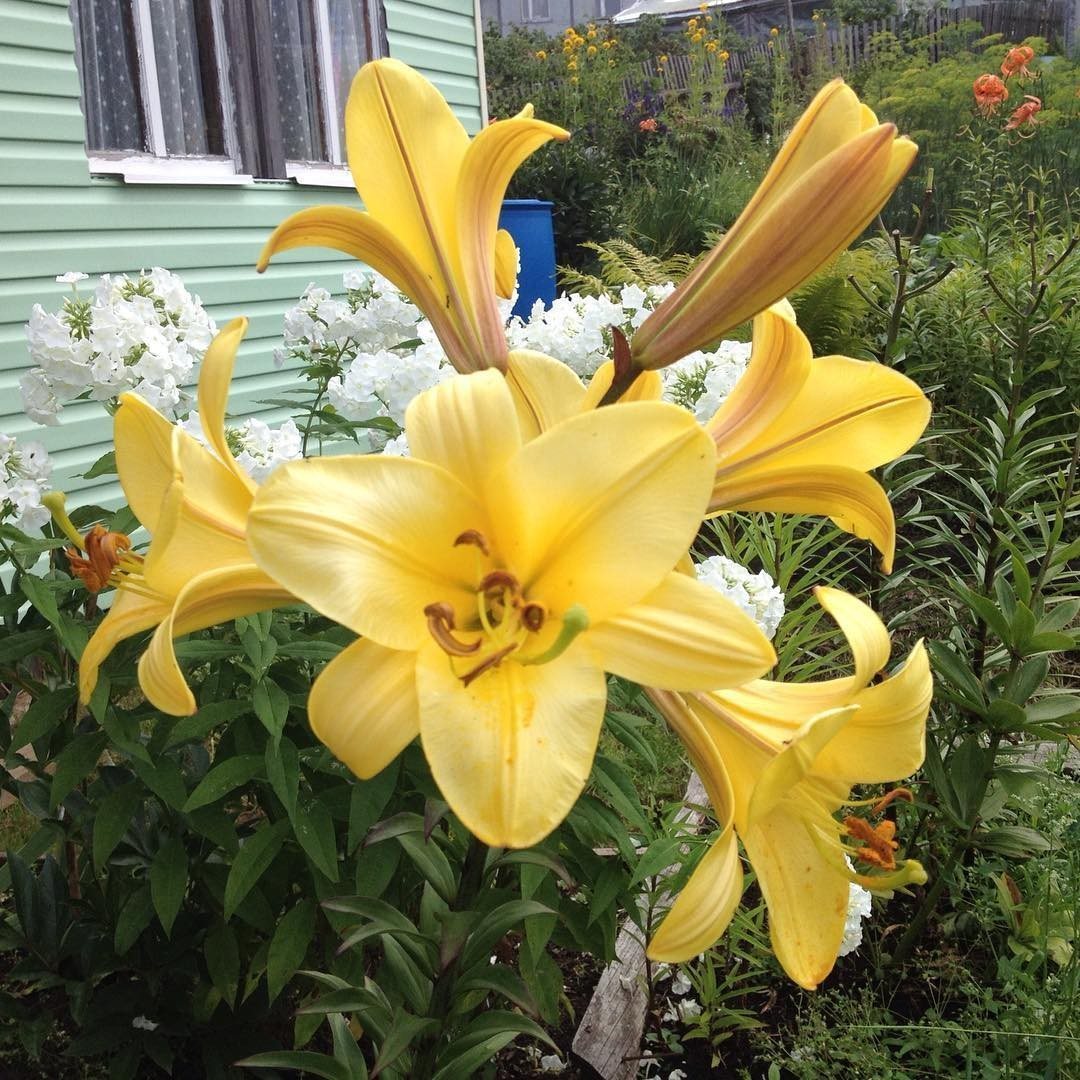
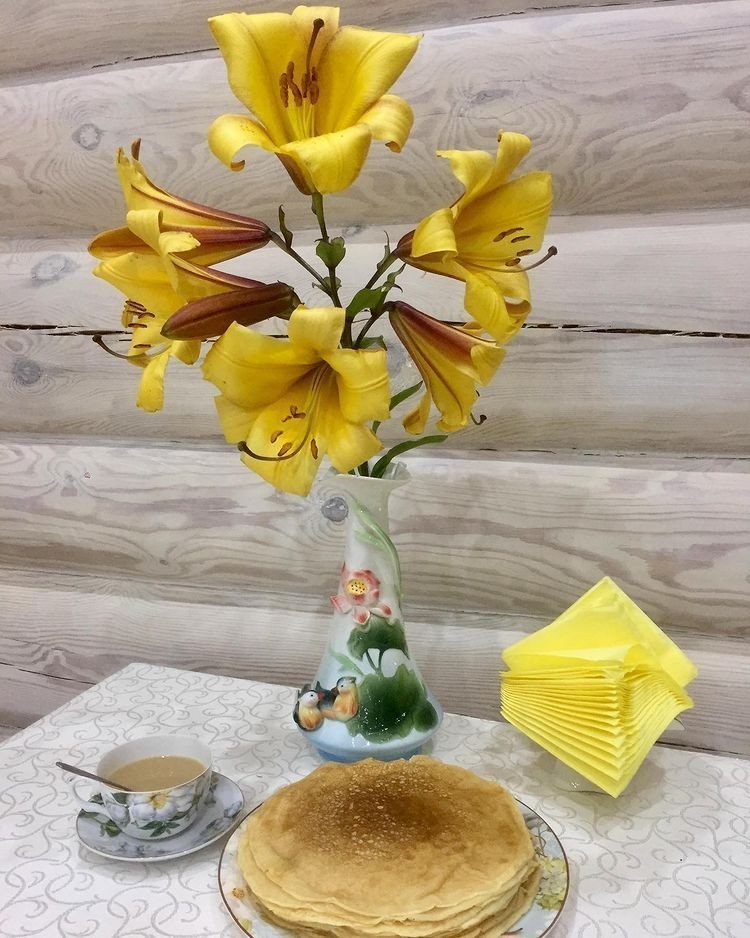
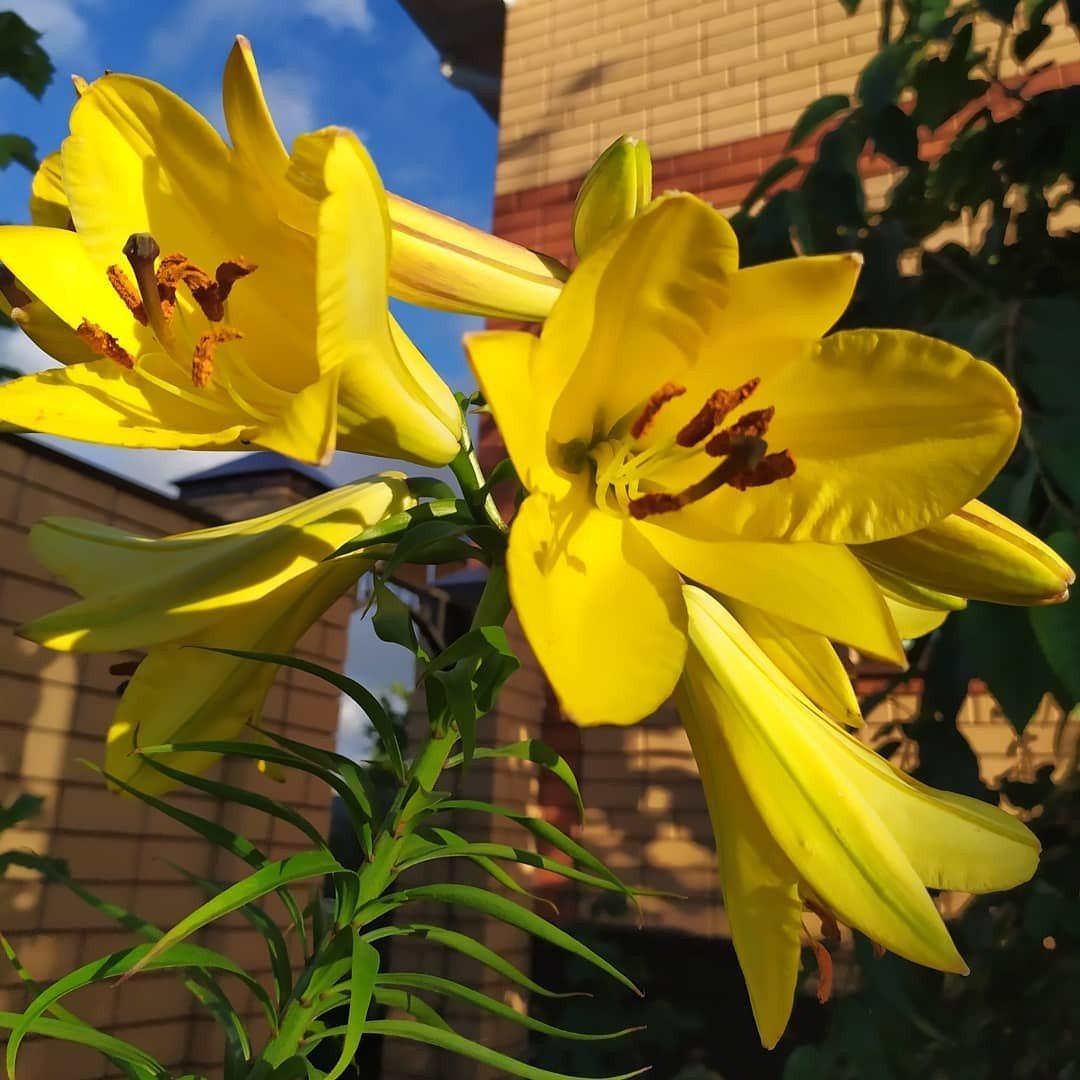






The Oriental Hybrids
This hybrid variety series is characterized by a variety of shades. Flowers are simple and double, turban-shaped, goblet-shaped. There are varieties with both a single color and with a border, stripes, and dots. The flowers are huge, up to 25 cm in diameter.
Tubular and Orleans hybrids of lilies are characterized by increased demands on growing conditions compared to other species. They are thermophilic. They are recommended to be grown in pots or kept in greenhouses.
Let's consider popular varieties of oriental lily hybrids.
Brazil
This lily hybrid reaches a height of 90-110 cm. Its flowers are large, up to 20 cm in diameter. 15-20 buds are formed on each shoot. The color of the flowers is white, but there is a pink edging along the edge of the petals. There is also a dark speck in the middle. The flowering period begins at the end of July and lasts about 4 weeks.
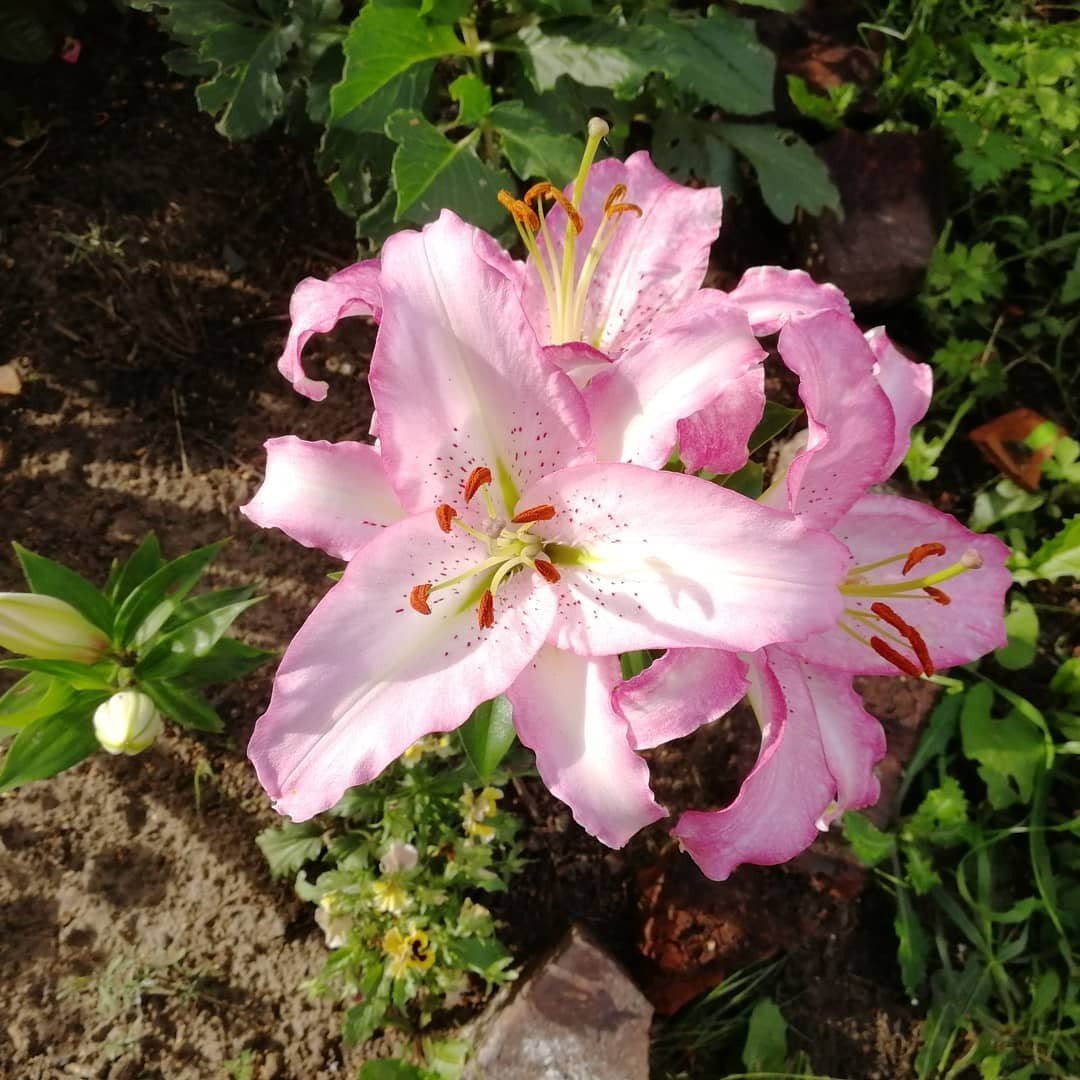
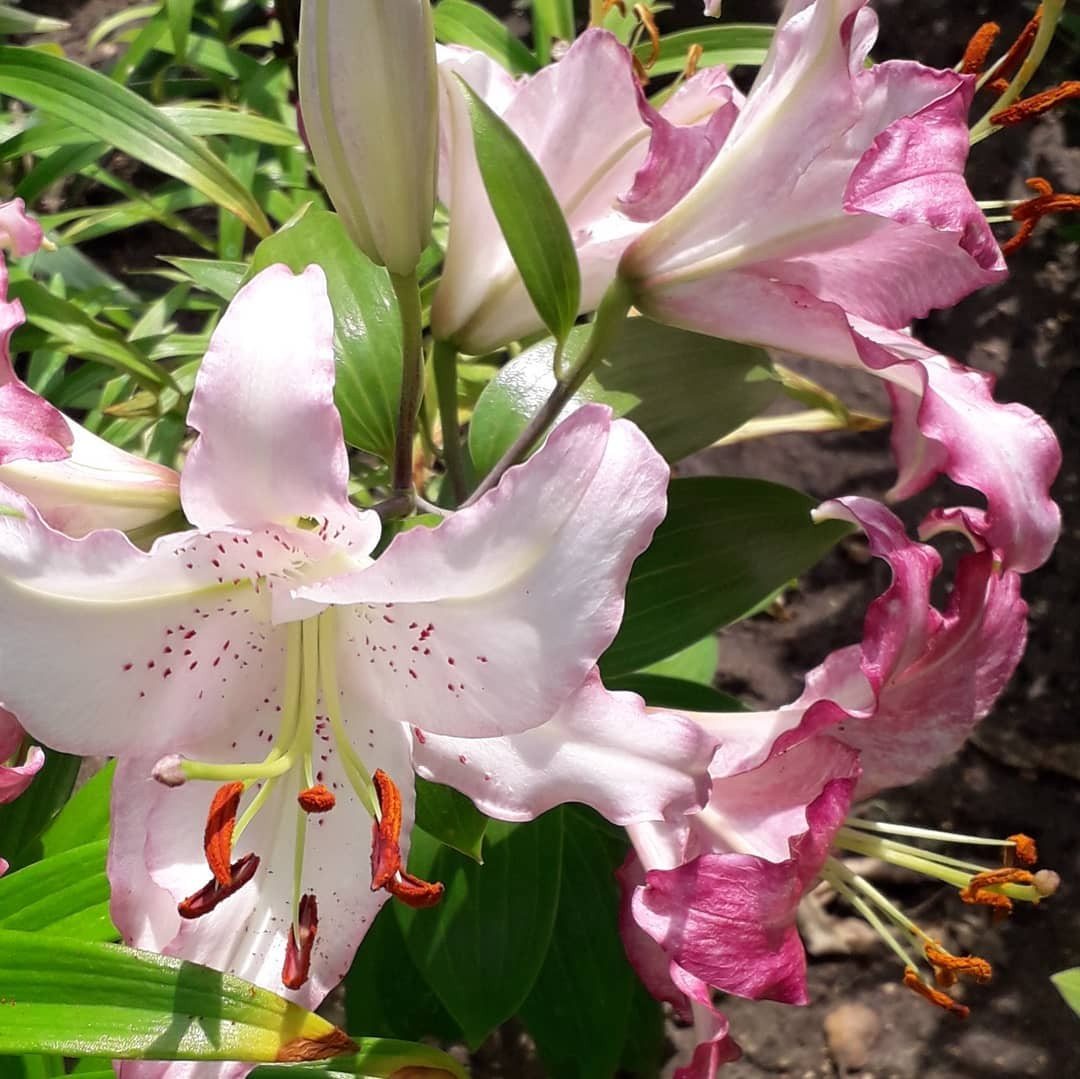
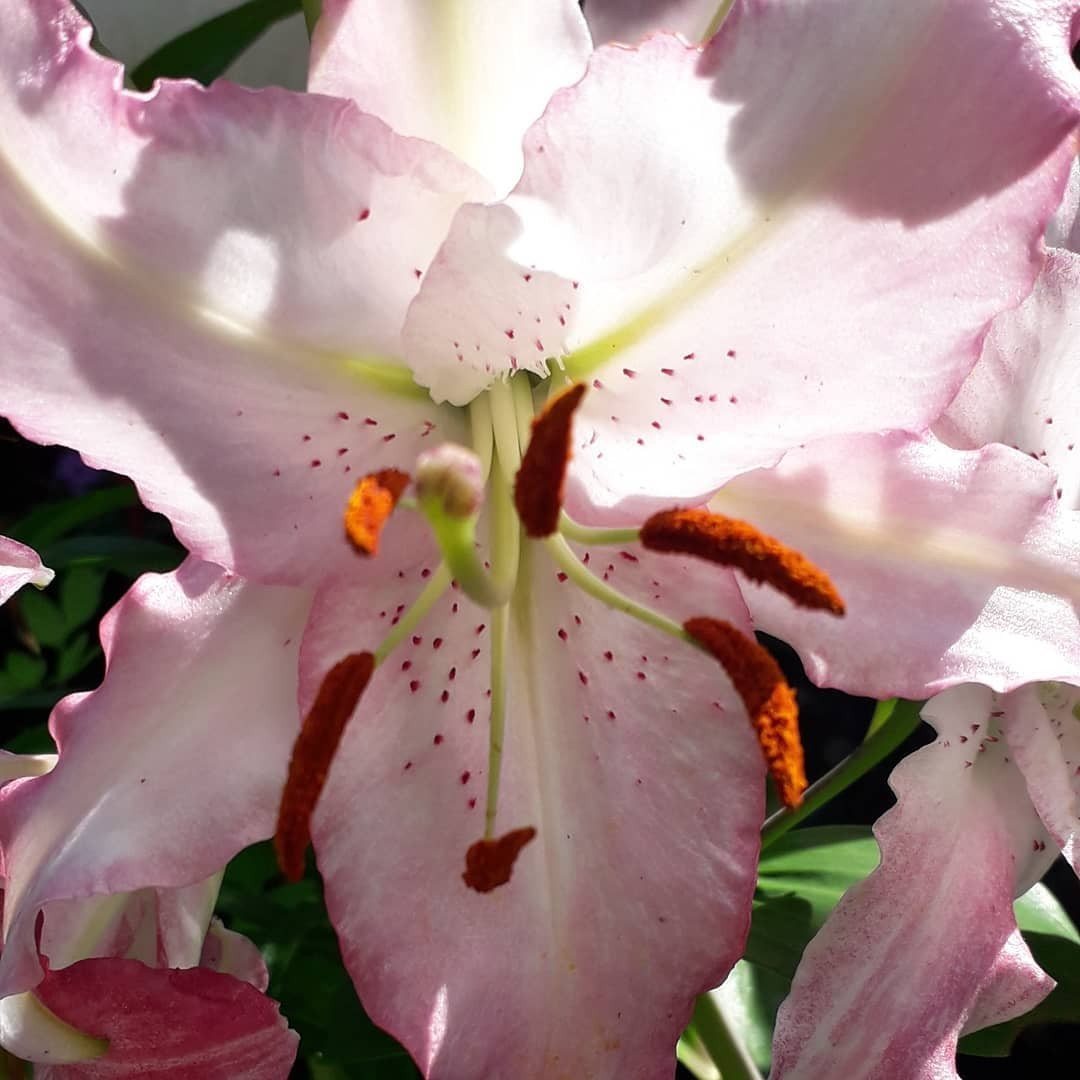
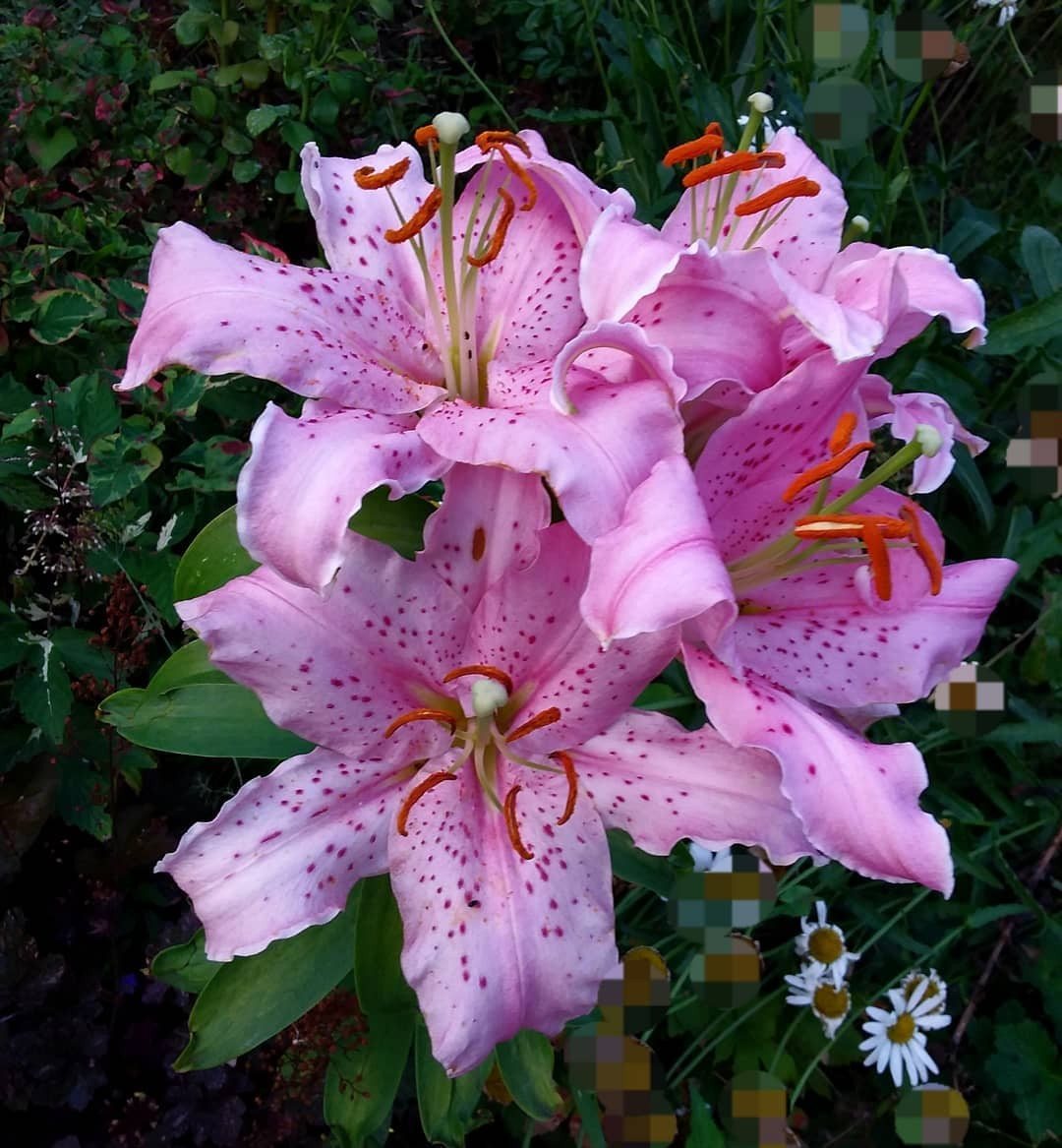
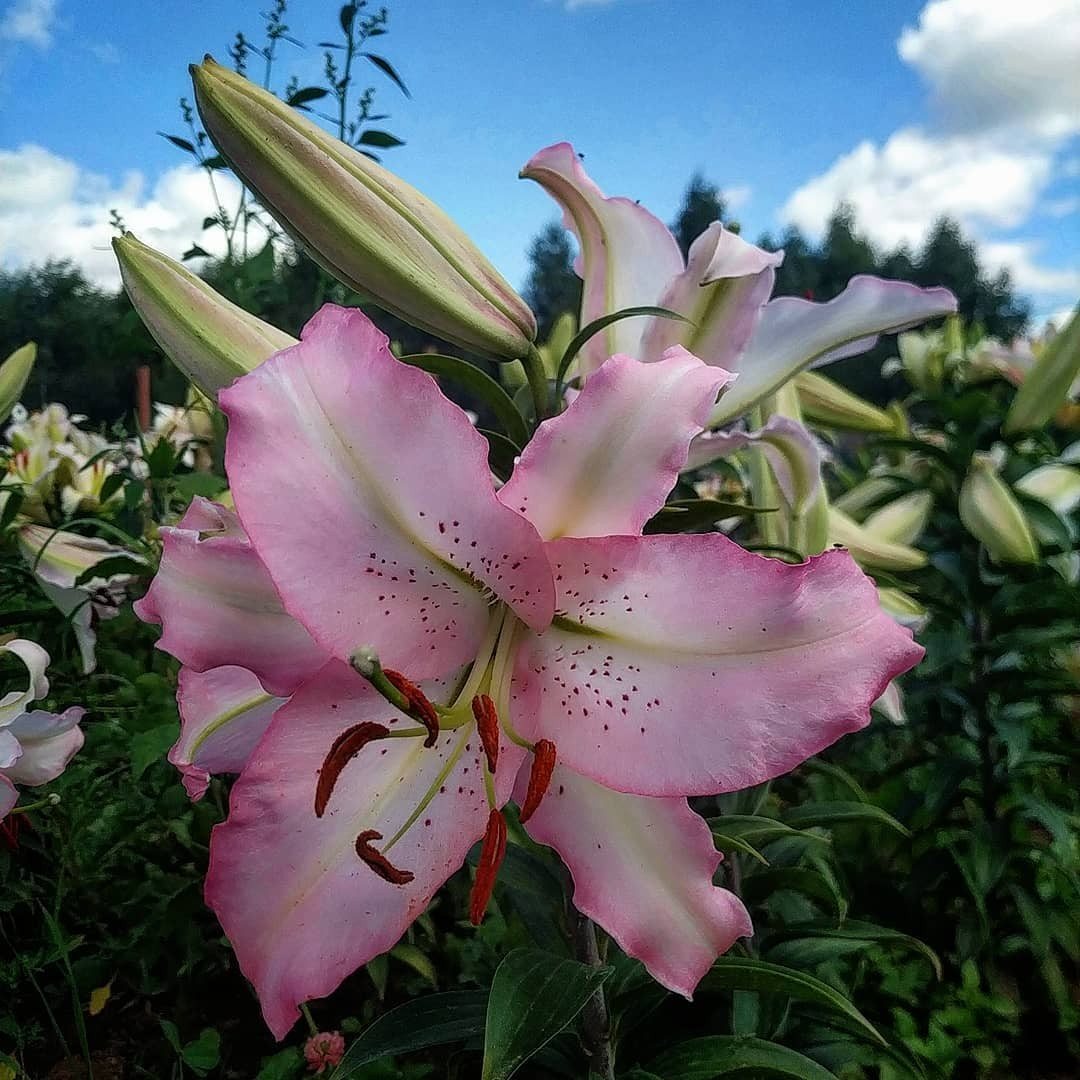





Muscadet
A distinctive feature of this hybrid lily is the funnel-shaped flowers of a white hue with brown specks and pink strokes on the petals. On a shoot 150-180 cm high, from 3 to 10 buds are formed. Flowering period is July-August.

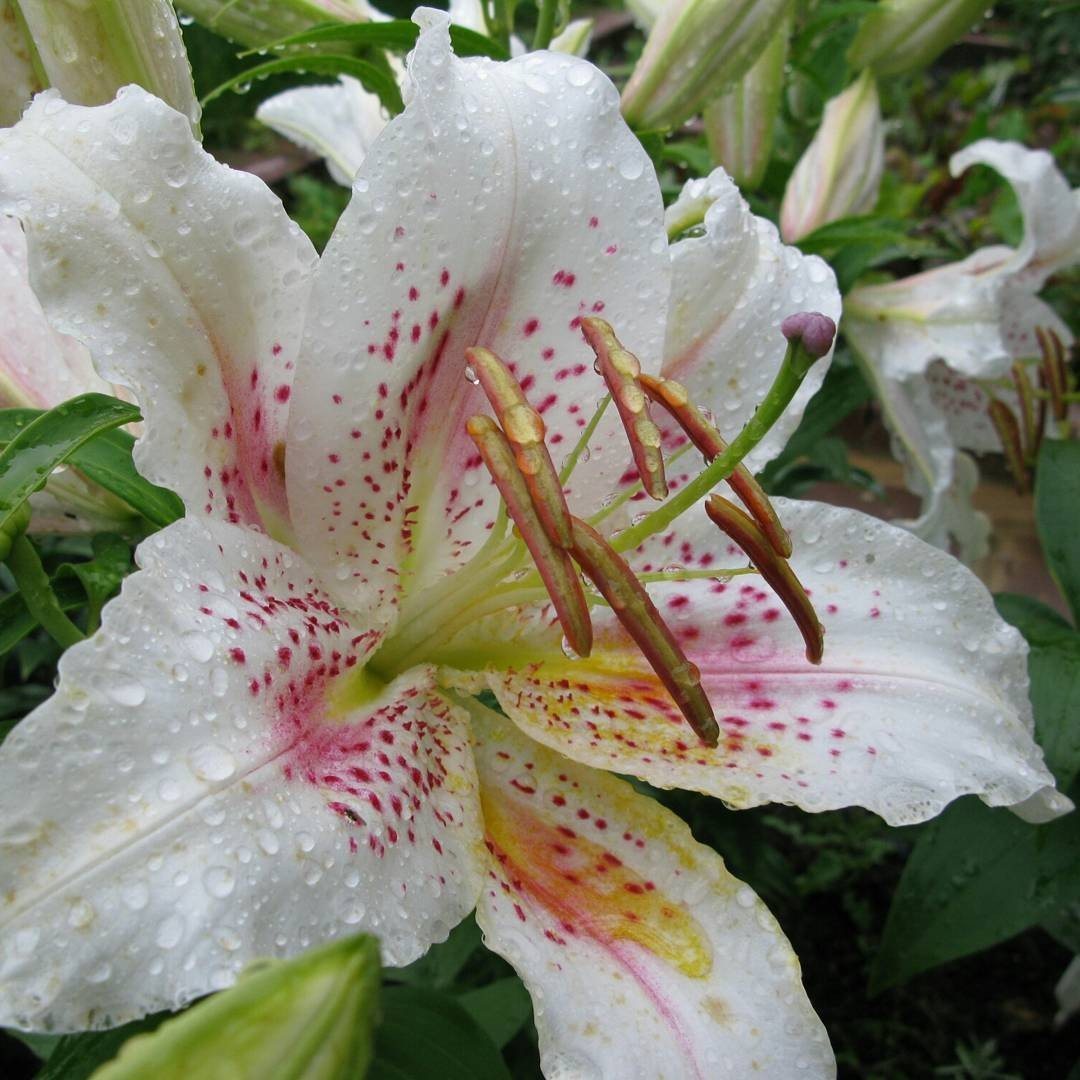

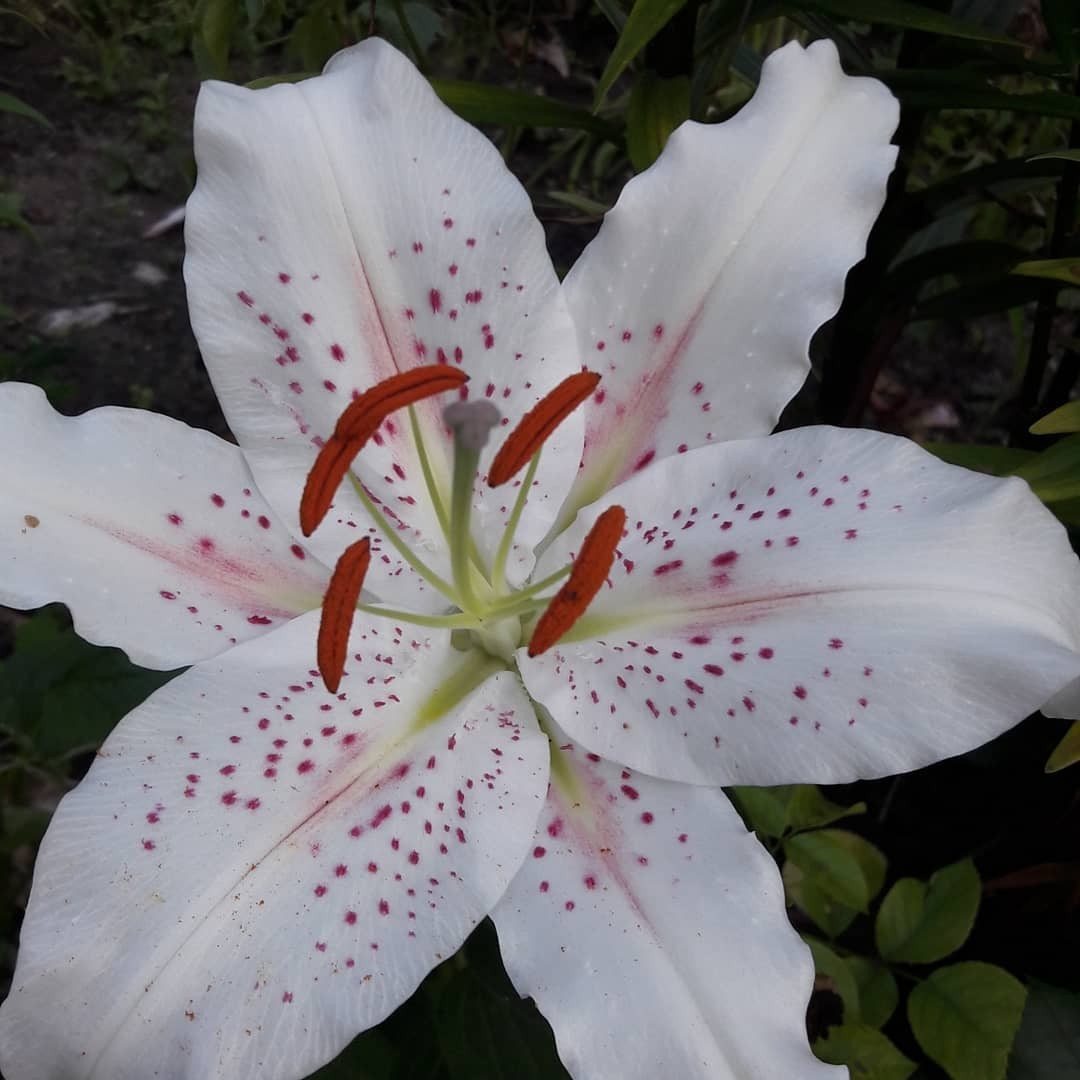






Salmon star
The height of this lily hybrid reaches 190-200 cm. Its flowers are large, with a diameter of 20 cm. The edges of the petals are corrugated. Their hue is light orange, but there is a bright speck in the center. The hybrid blooms in the third decade of June.
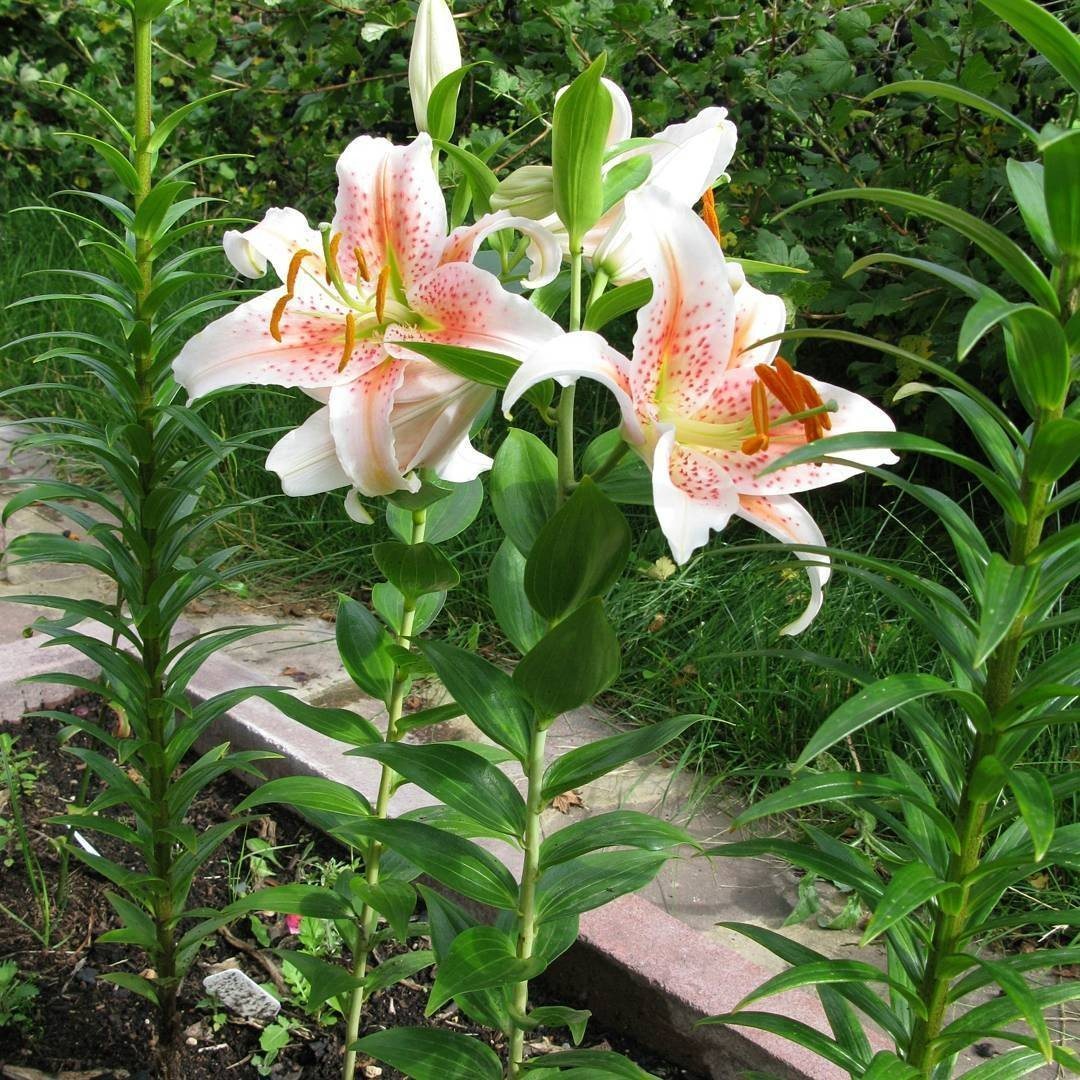
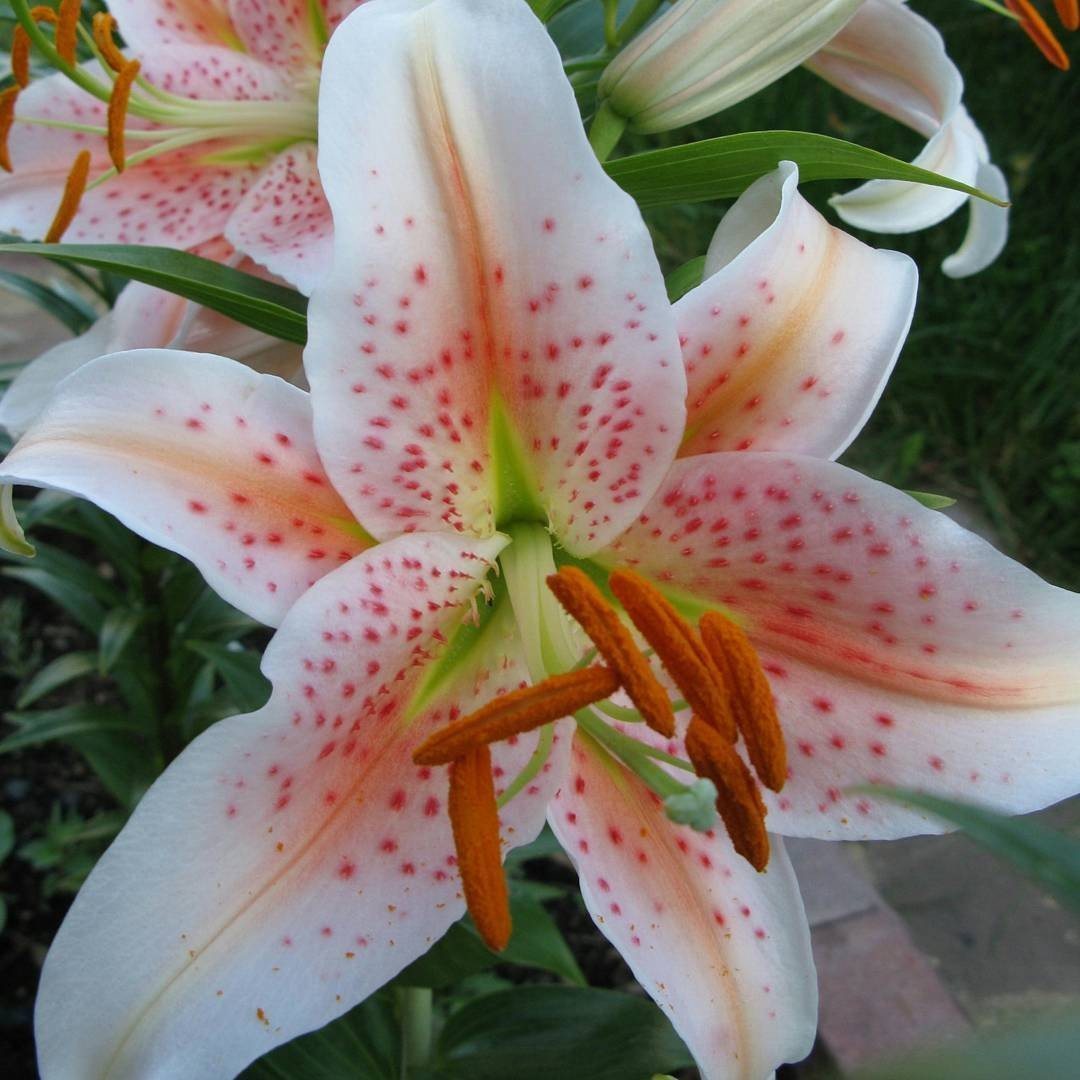
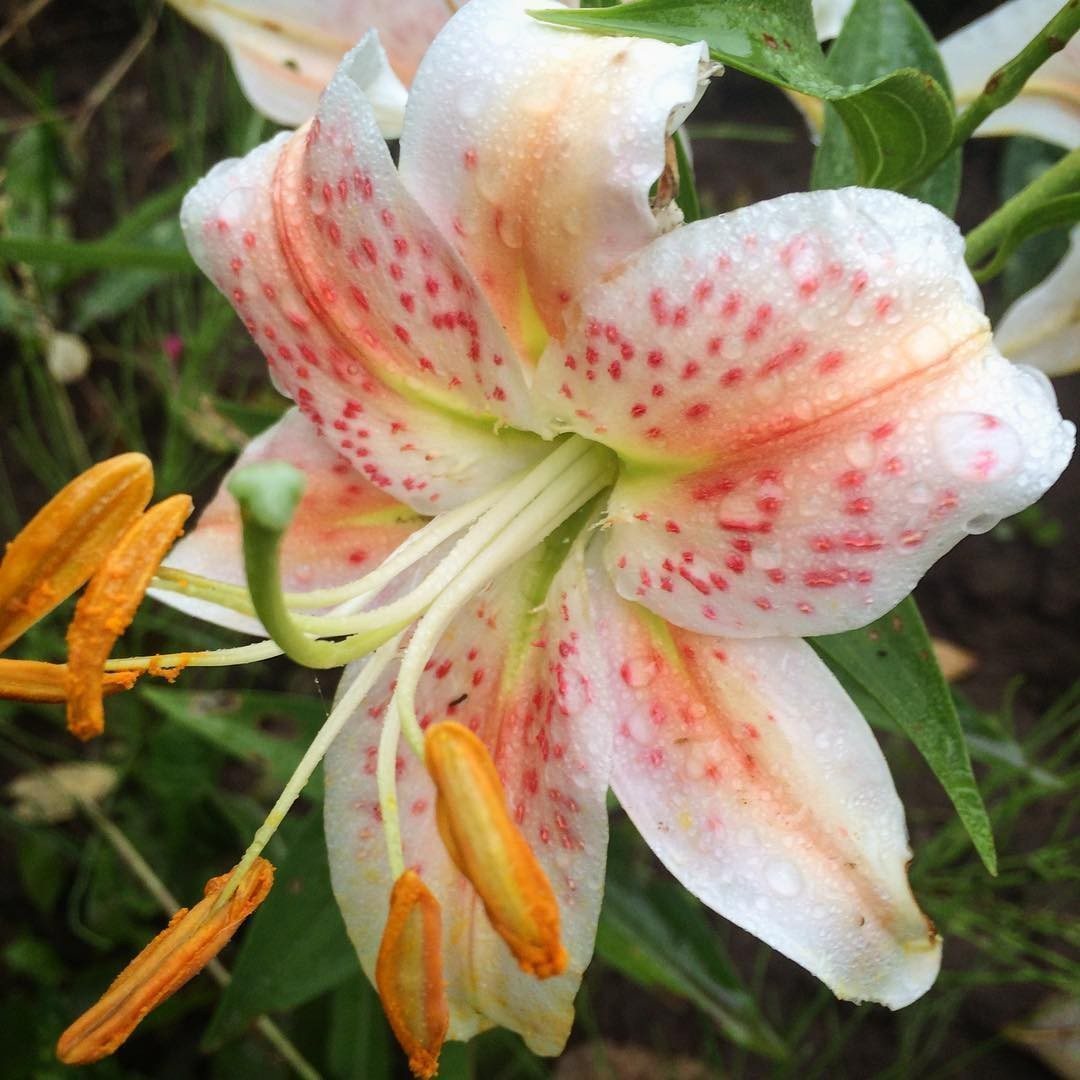
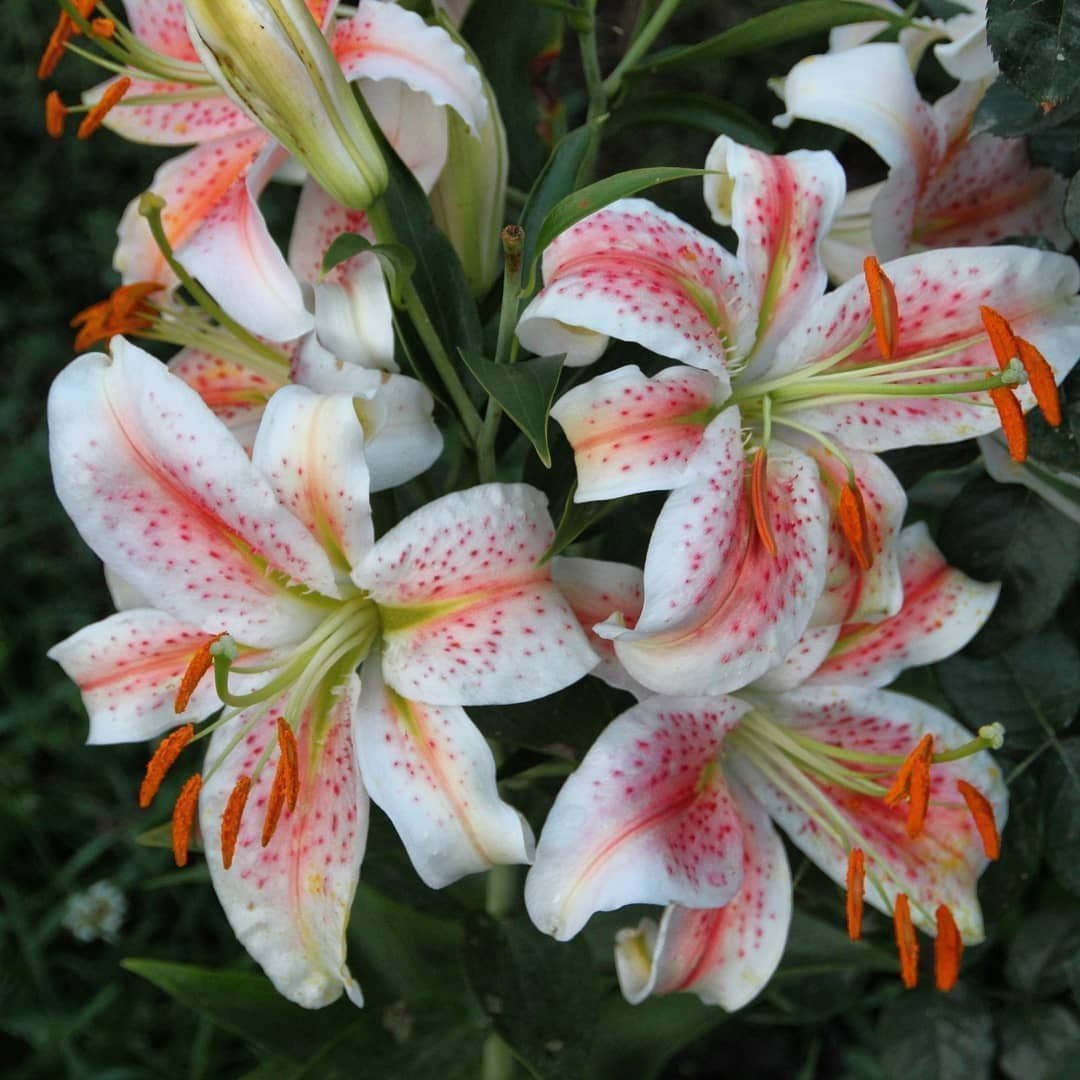






Casablanca
The hybrid is characterized by huge flowers, the diameter of which reaches 25 cm. From 8 to 14 of them are formed on the shoot. Star-shaped flowers. They have a snow-white or cream tint. Flowering lasts for a long time, occurs at the end of July. The aroma is rich. The height of the lily is 110-120 cm.
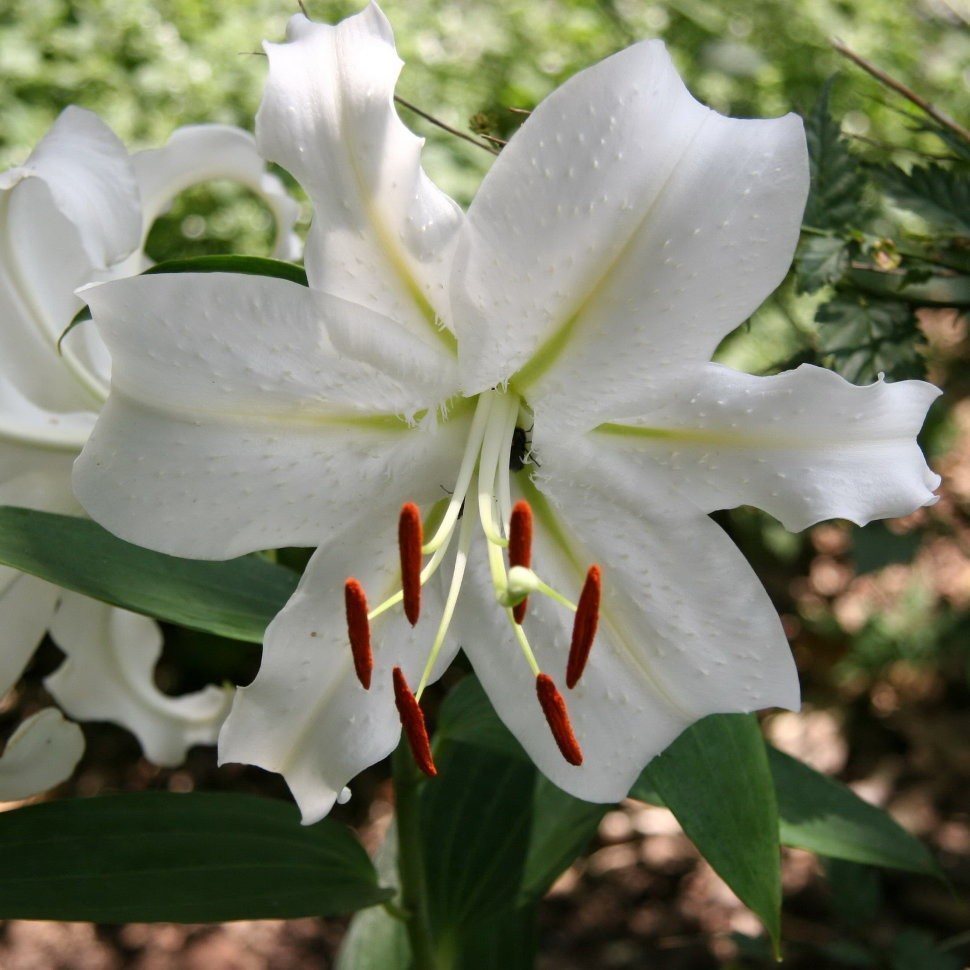
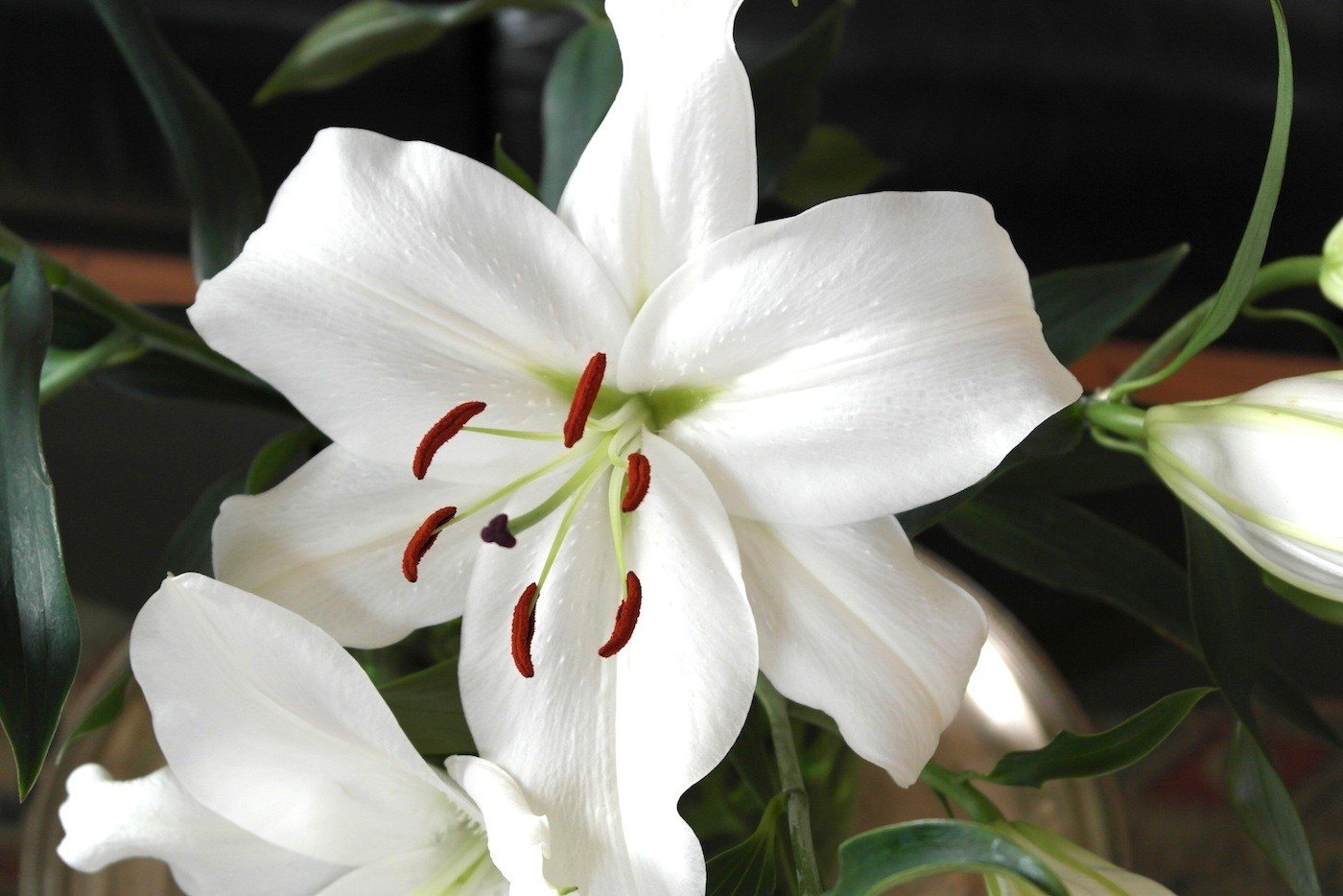
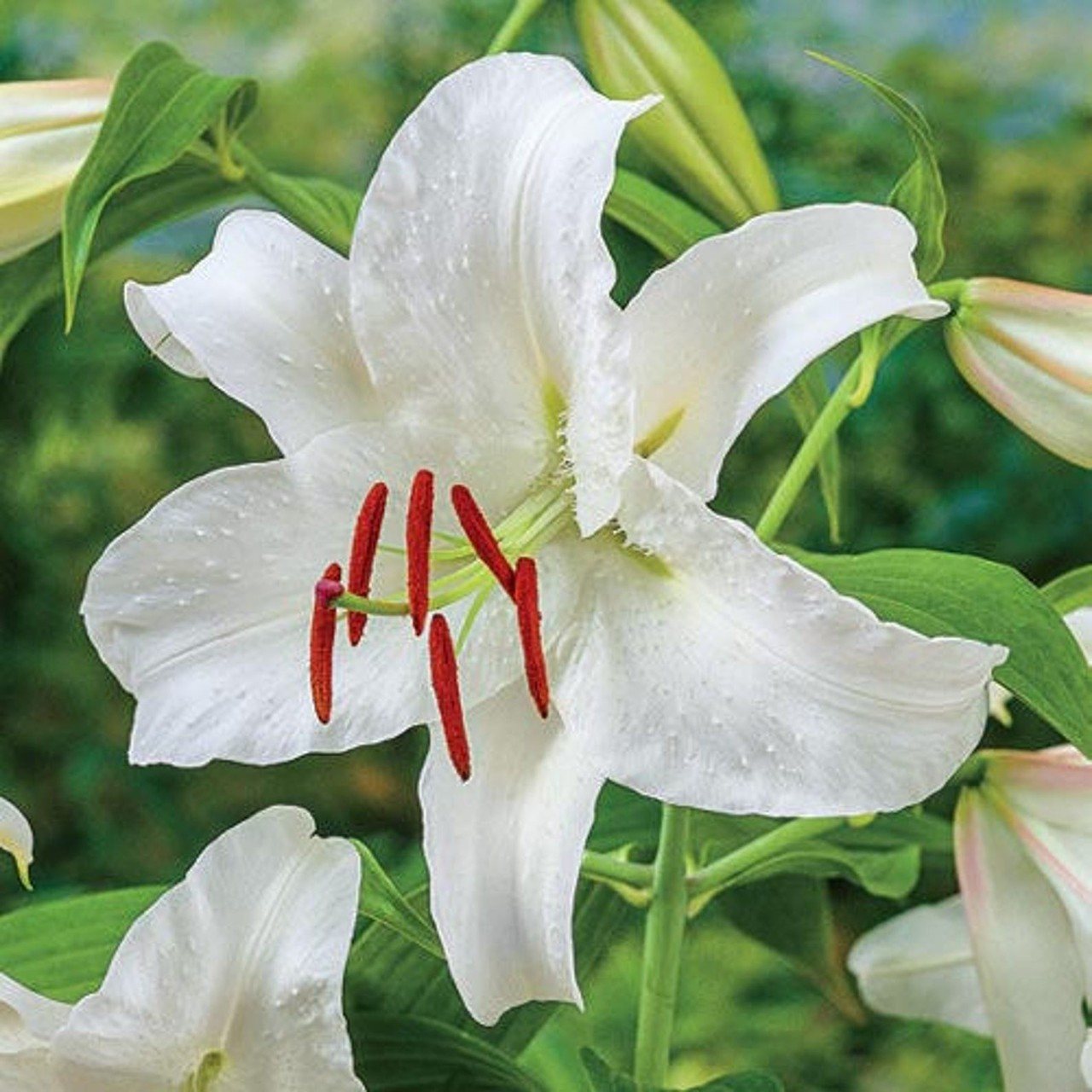
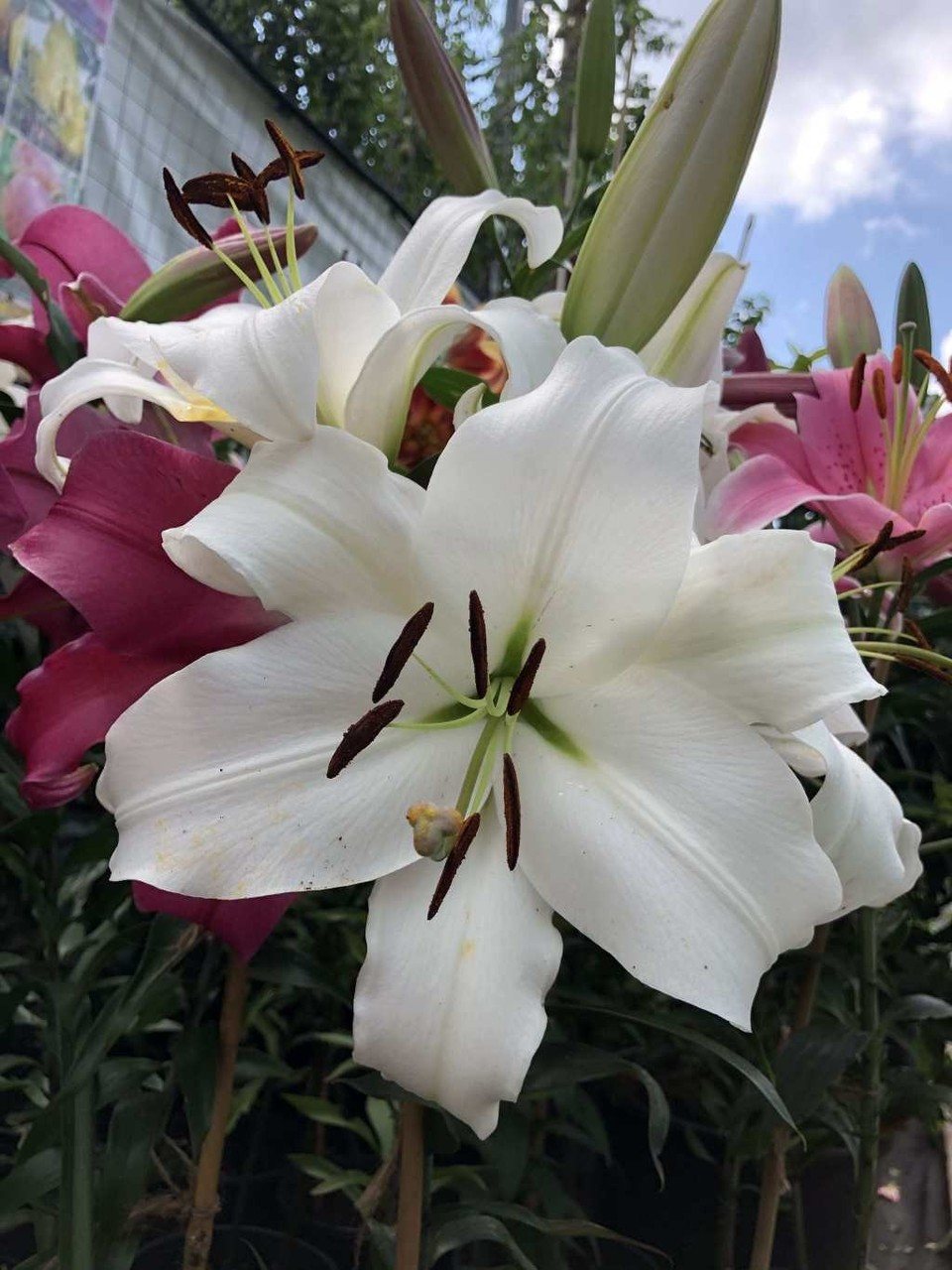
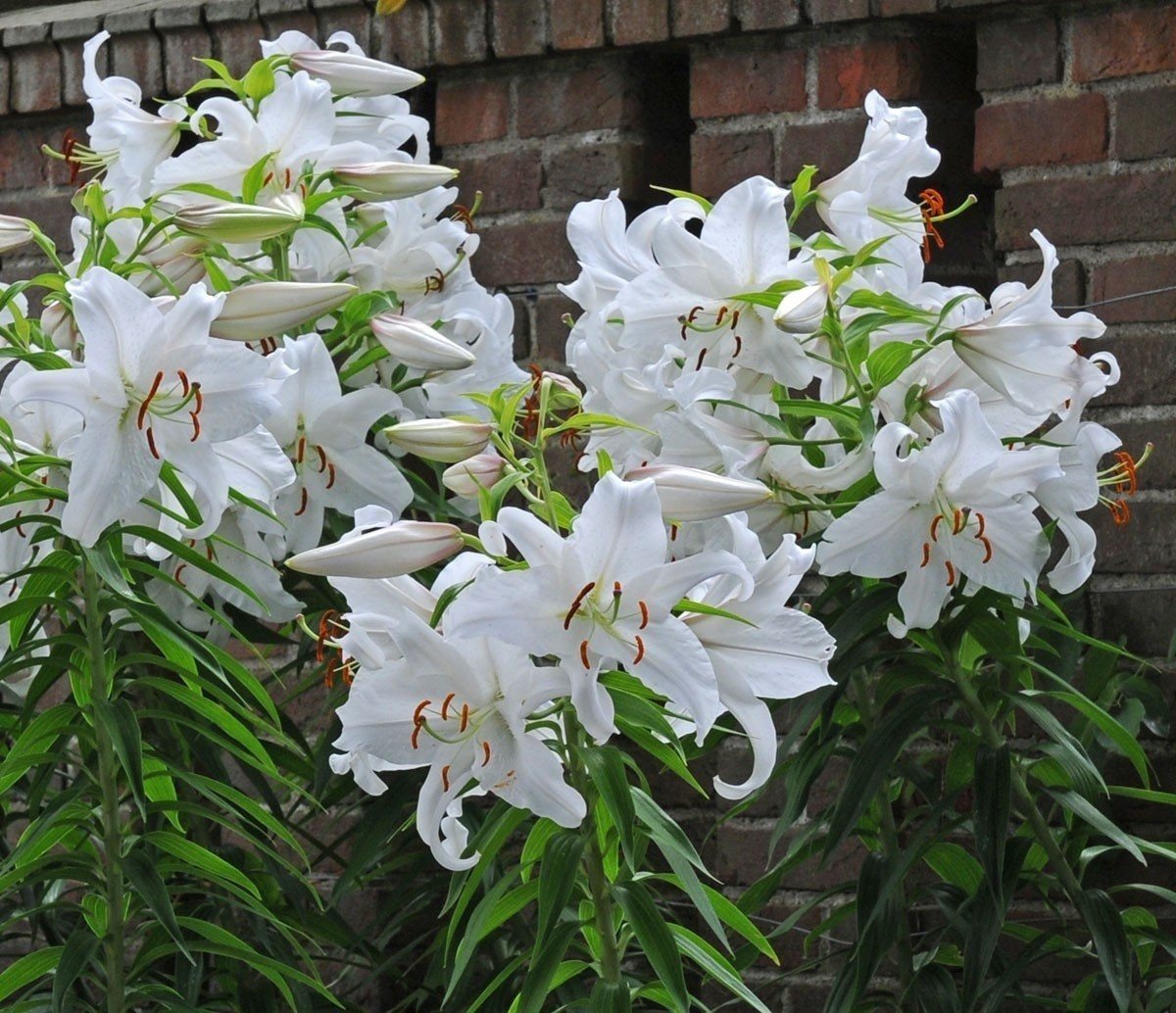





Canberra
The color of the flowers of this lily hybrid is deep pink.It has dense specks on its wavy petals. The height of the plant reaches 95-100 cm. The diameter of the flowers is 18-25 cm. The number of buds on the shoot is more than 8 pieces. Flowering occurs at the end of July and lasts a month.
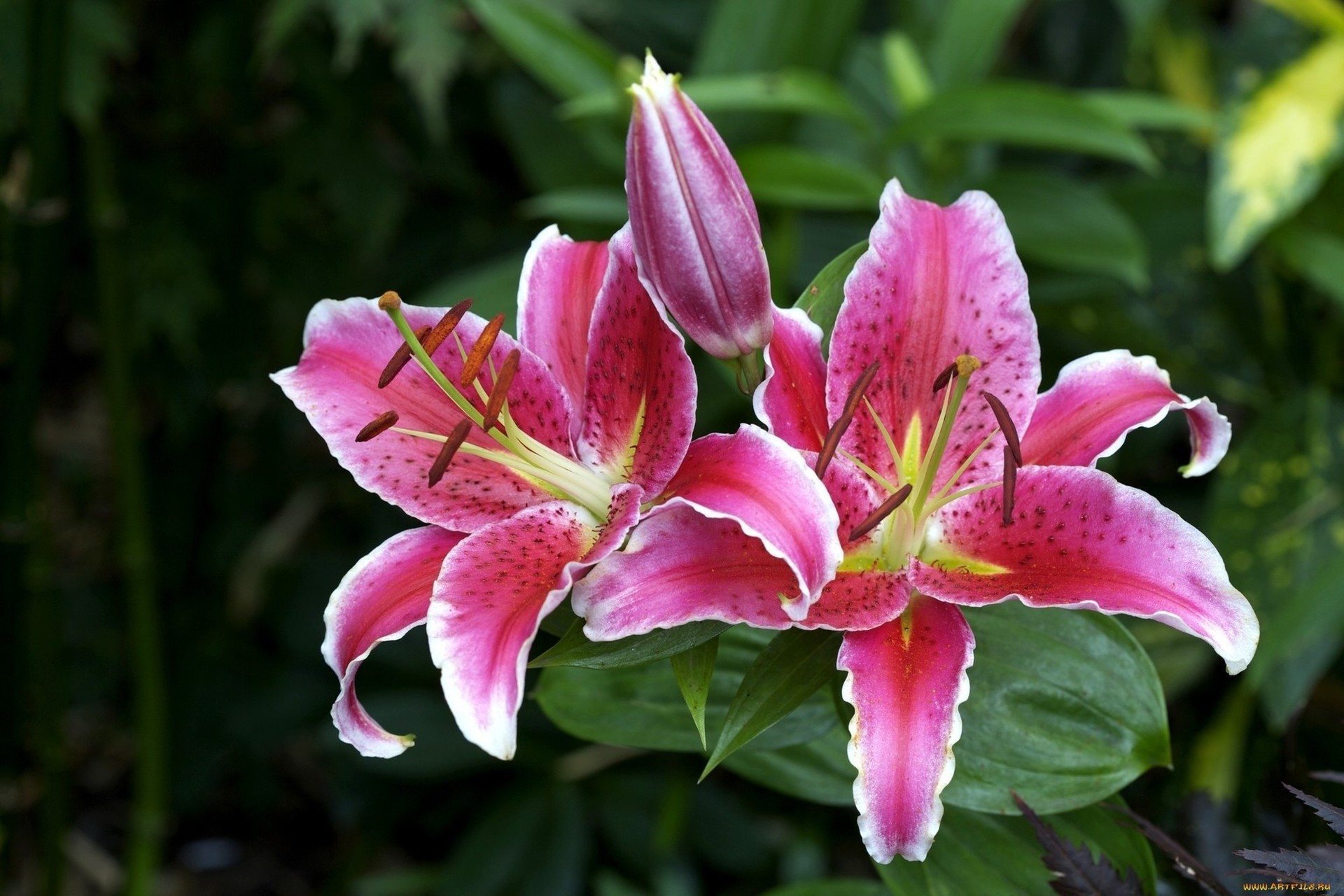
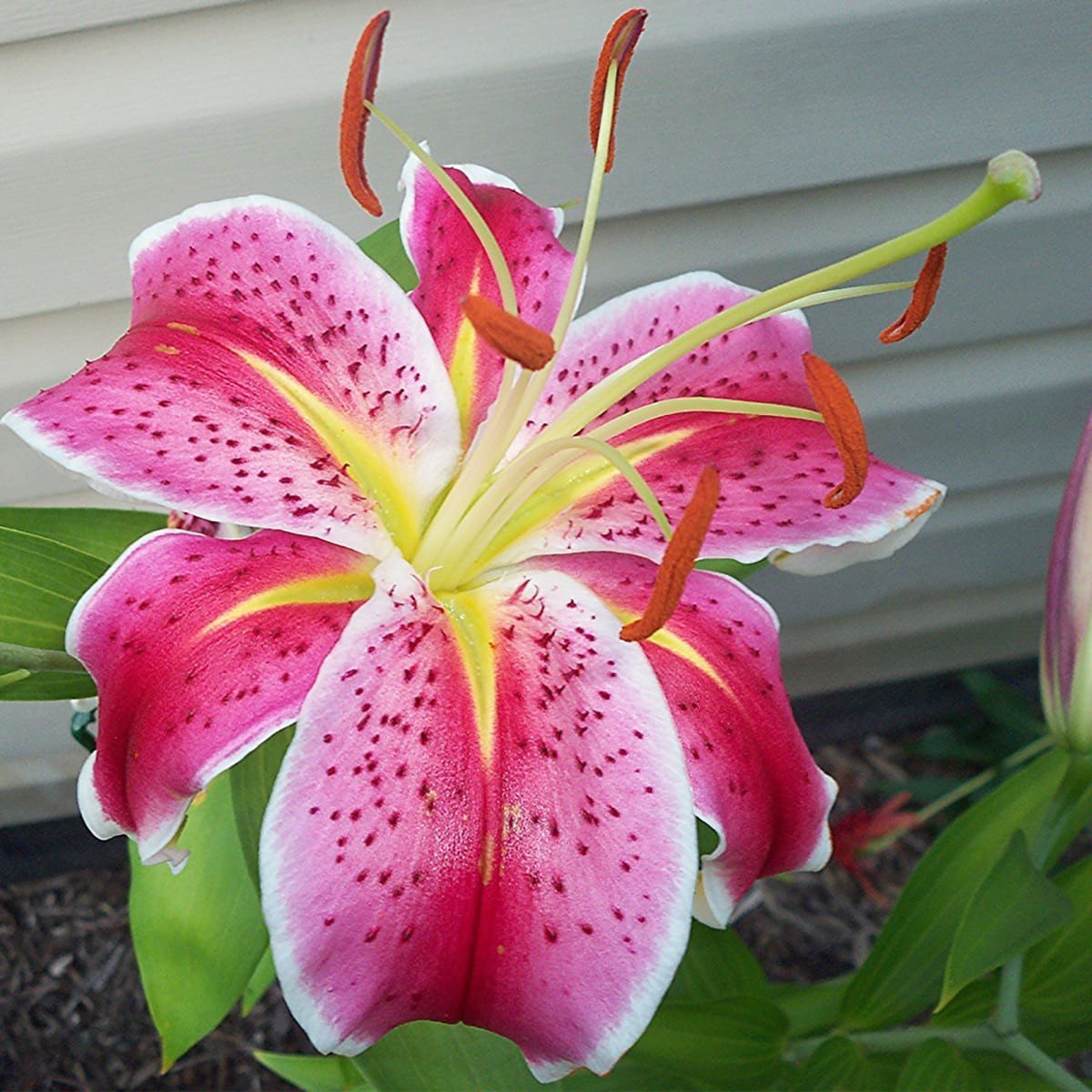
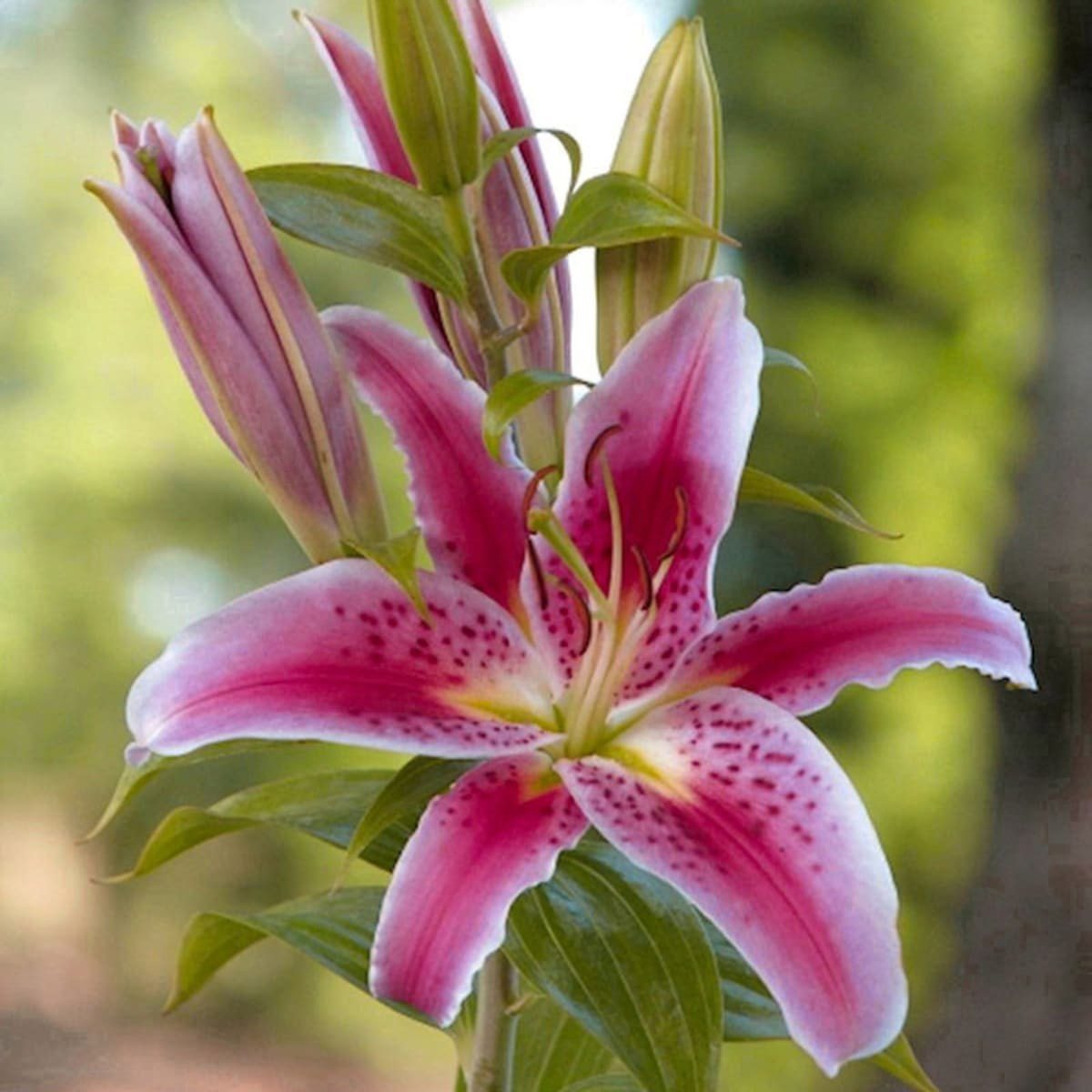

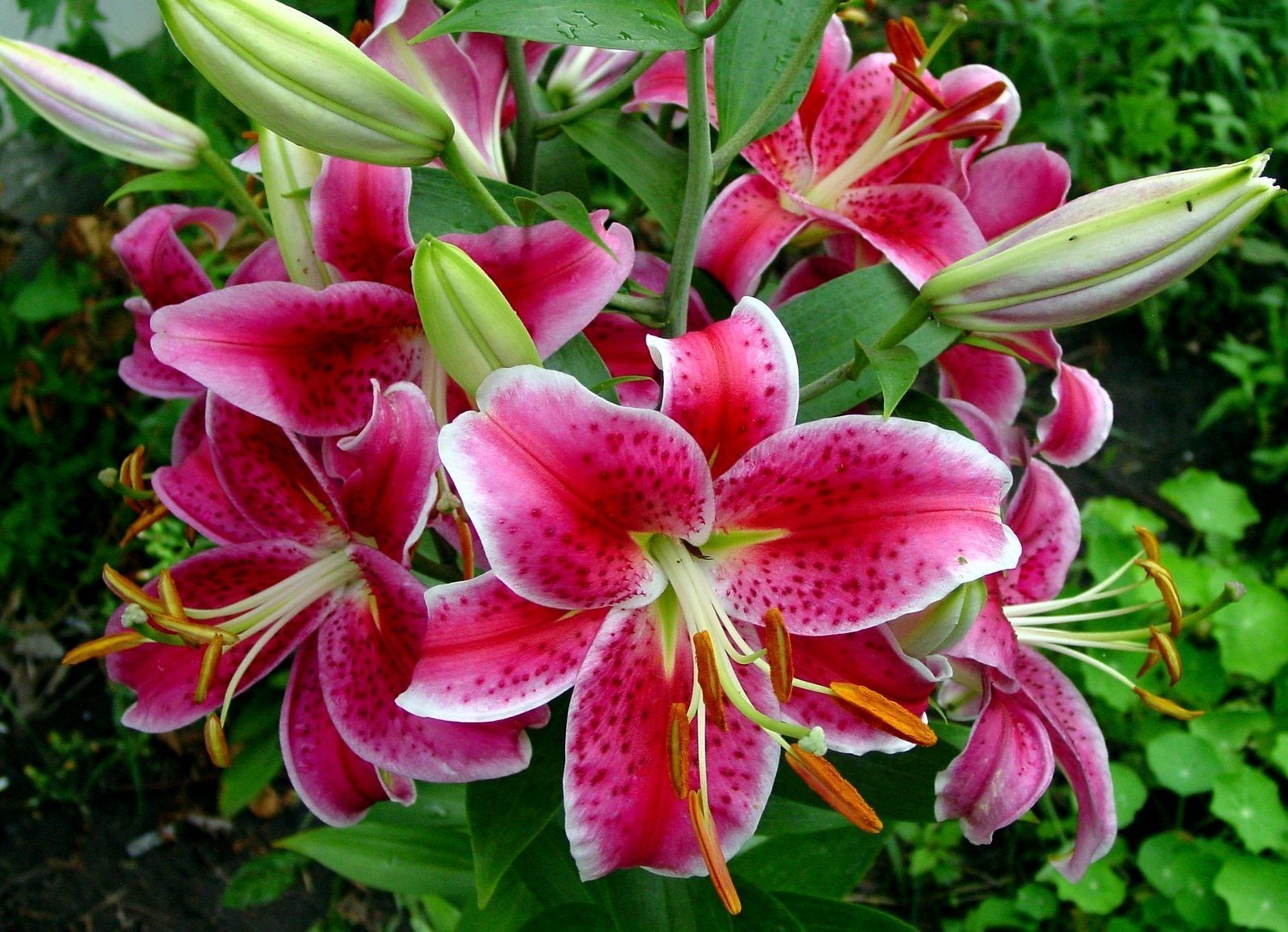





Other hybrids
There are also interspecific lily hybrids. The purpose of their creation was to improve the characteristics of varieties. These species were obtained as a result of crossing already hybrid forms of culture. Such lilies can be identified by a special code on the packaging, which consists of the first letters of the names of the variety mixtures that were used to create them.
LA (LA) - hybrids between long-flowered and Asian
A modern group of lilies resulting from complex hybridization. Its representatives first appeared in 1990 at the exhibition. La hybrids are characterized by large flowers, the diameter of which is 18-25 cm and a light, unobtrusive aroma. Plant height reaches 120 cm.
The most popular varieties:
- Samur - pink flowers with a white center;
- Indian Diamond – orange shade of petals;
- Original Live – red flowers;
- Yerkalano – white-lemon flowers;
- California – cherry shade of buds.
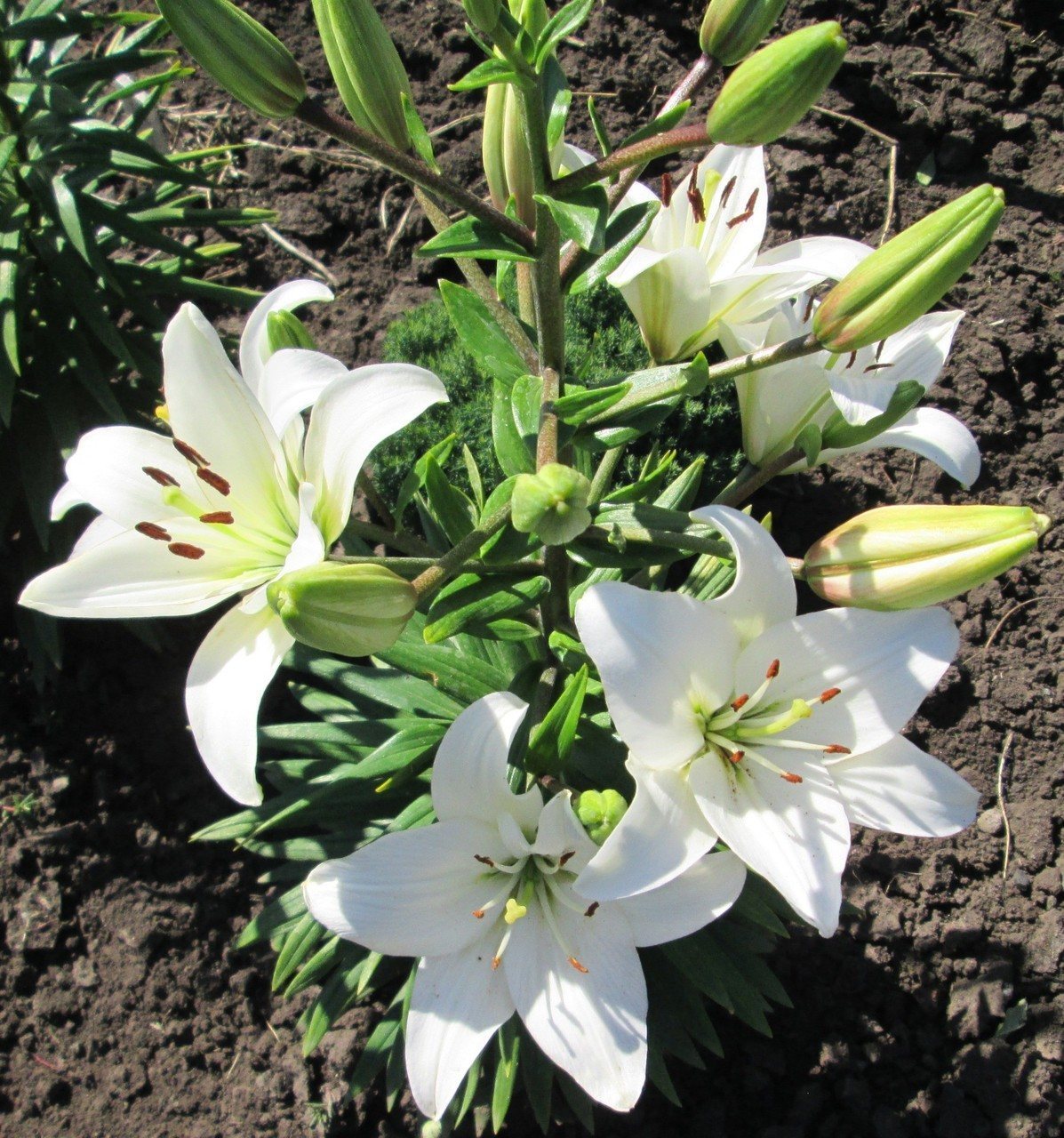
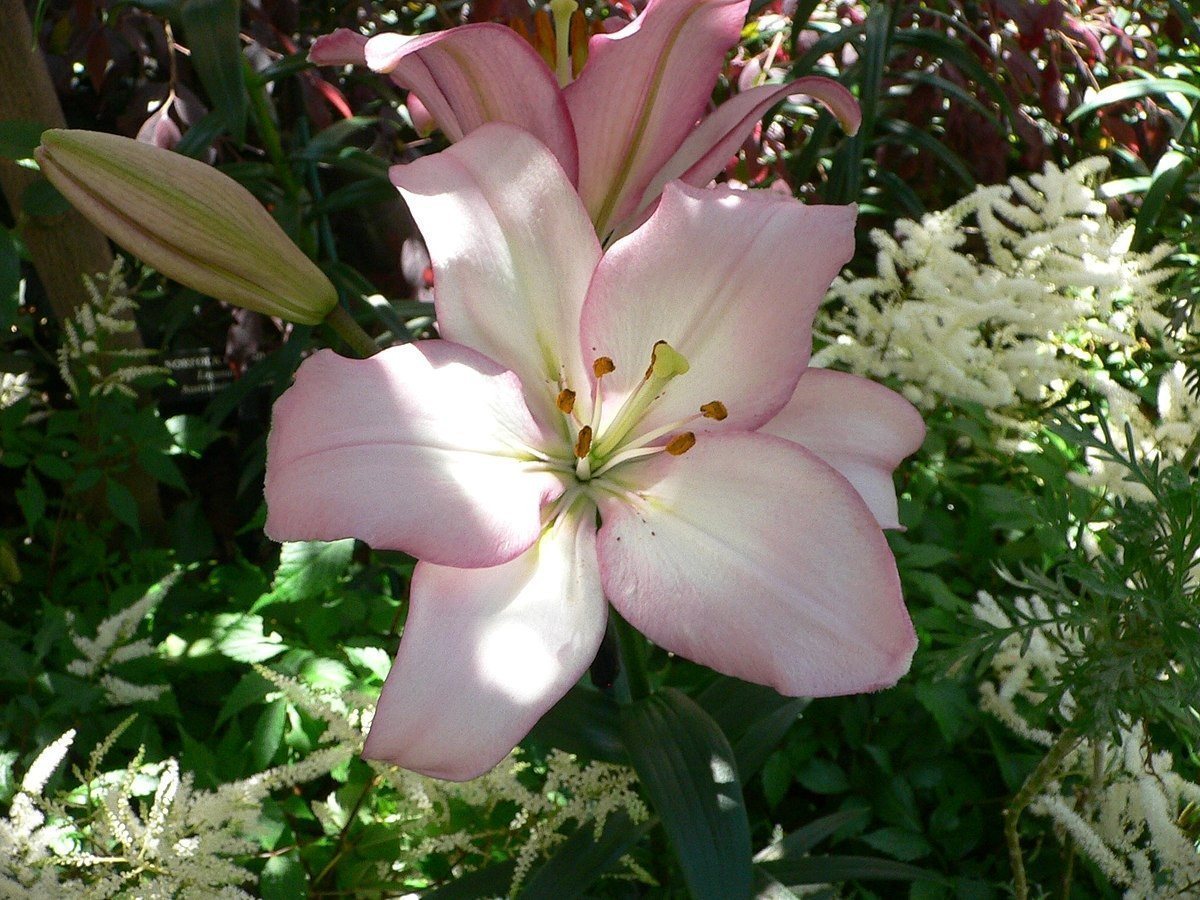
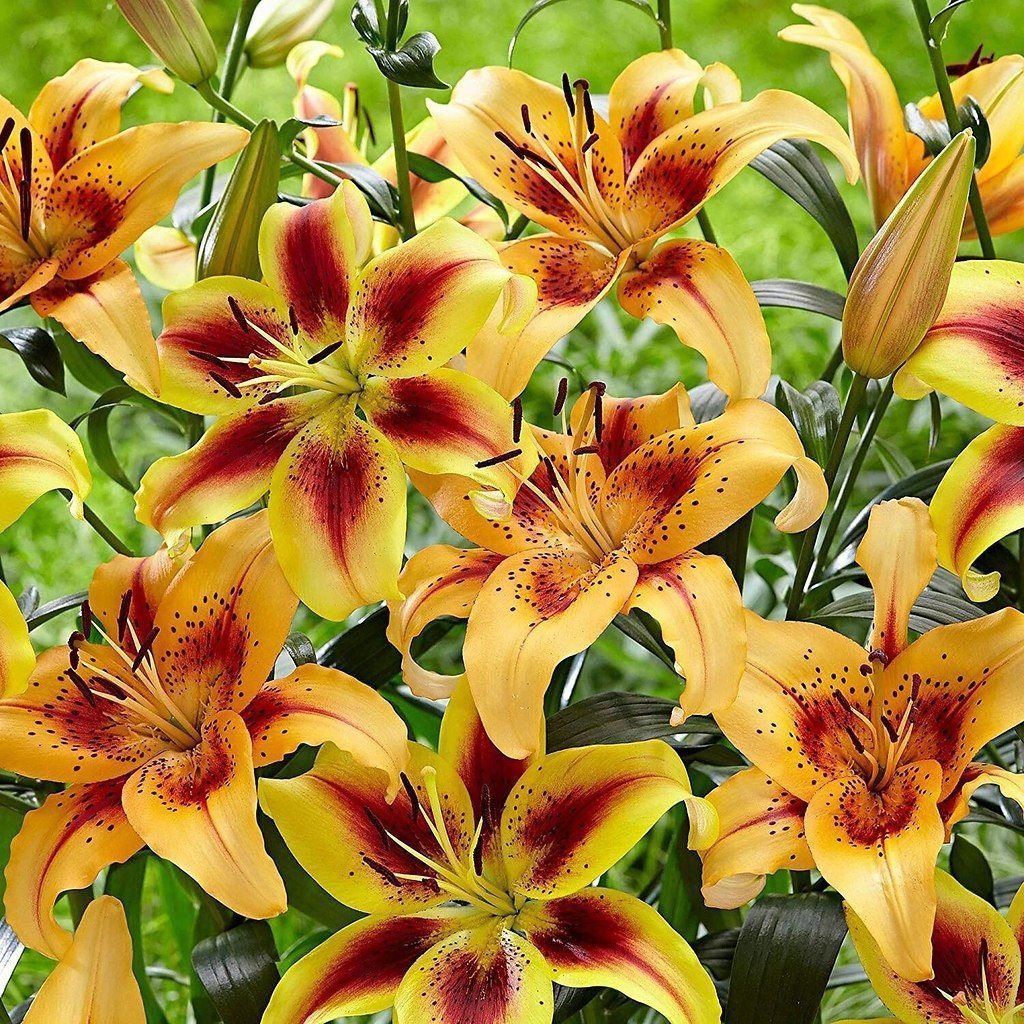
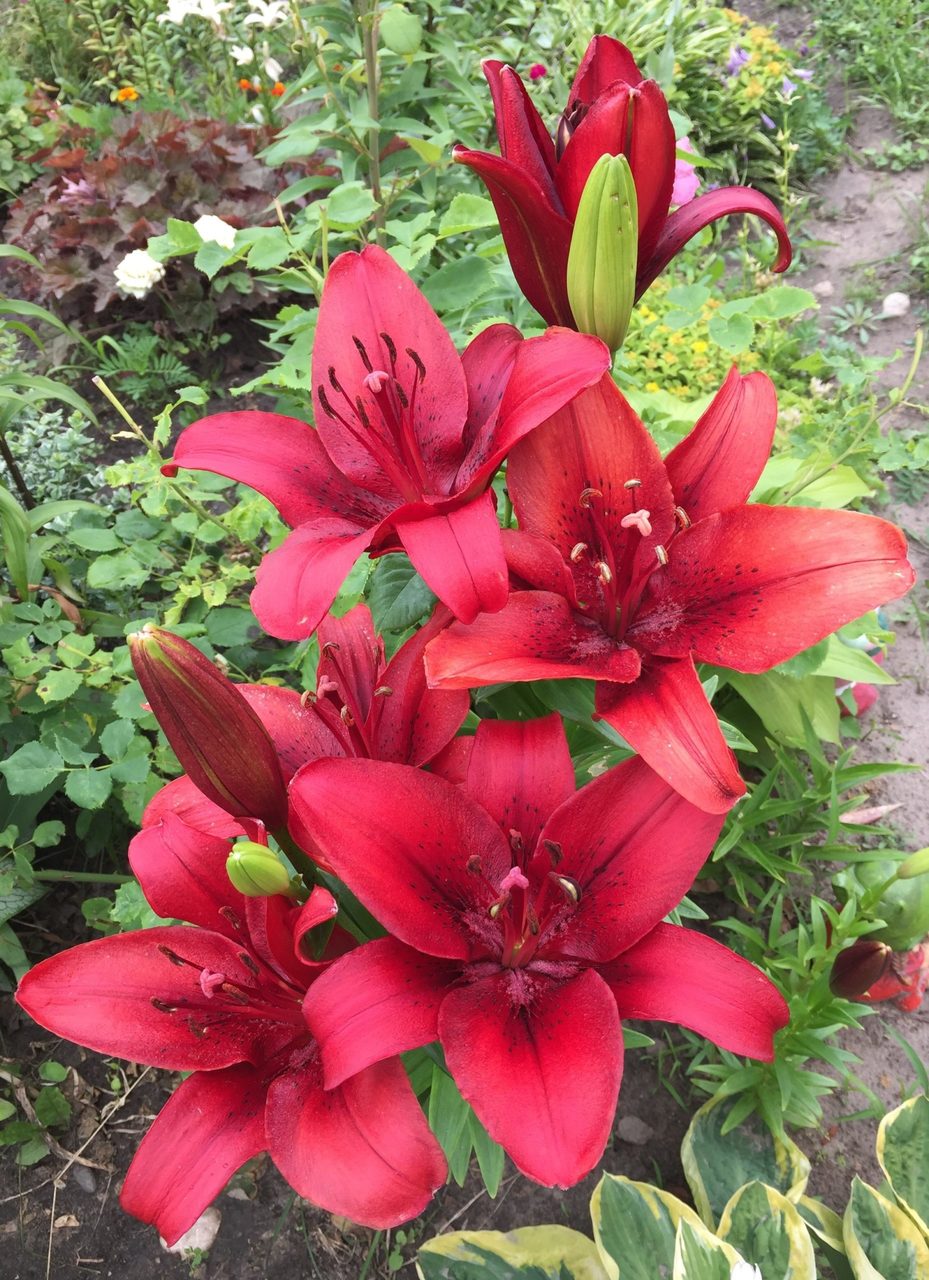
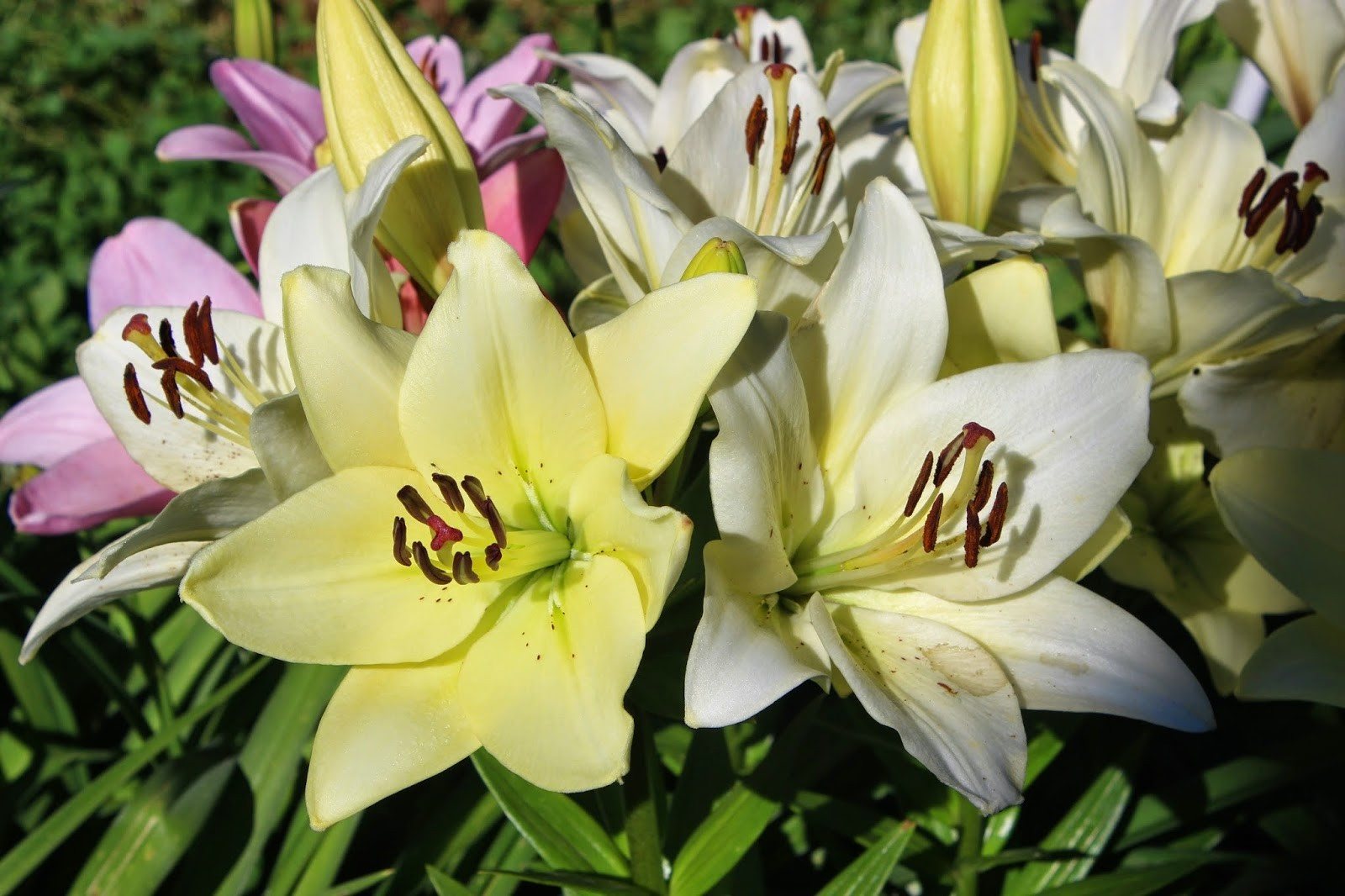





LO (LO), or longipet - lily hybrids between long-flowered and oriental
This group is one of the smallest. It includes lilies with tubular flowers in white or pink. Plants thrive in sunny areas and partial shade. They prefer loose, nutritious soil with a neutral or slightly acidic acidity level. Lilies of this species require dry shelter for the winter.
The most popular varieties:
- Triumphant - white flowers with a pink neck;
- Pink Haven – pink flowers;
- Prince Promise - pink center of flowers smoothly turning into white towards the edge of the petals;
- Queen Promise - uniform pink color of flowers;
- Si Traysur - white flowers with a pink stripe in the center of the petal.
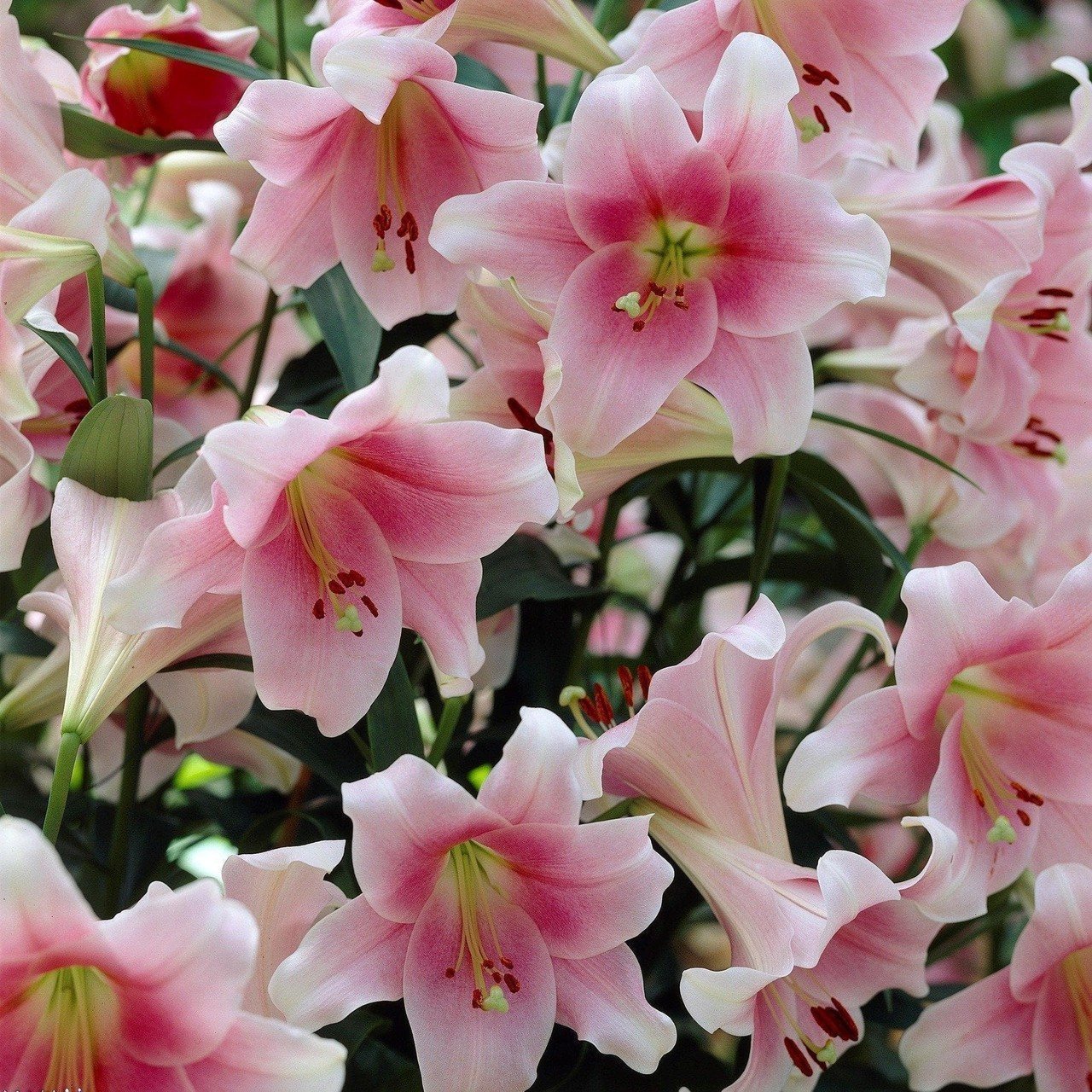

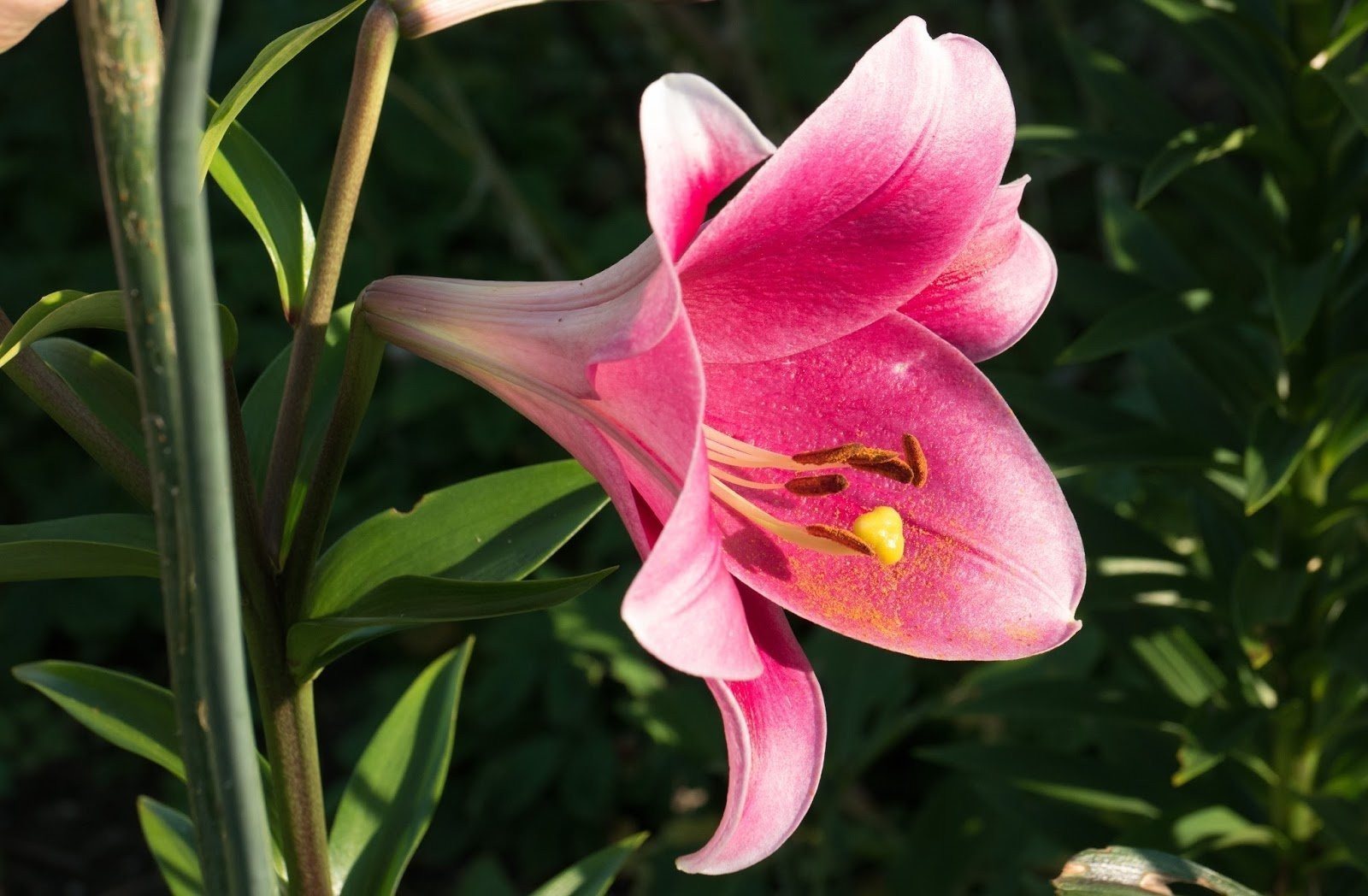
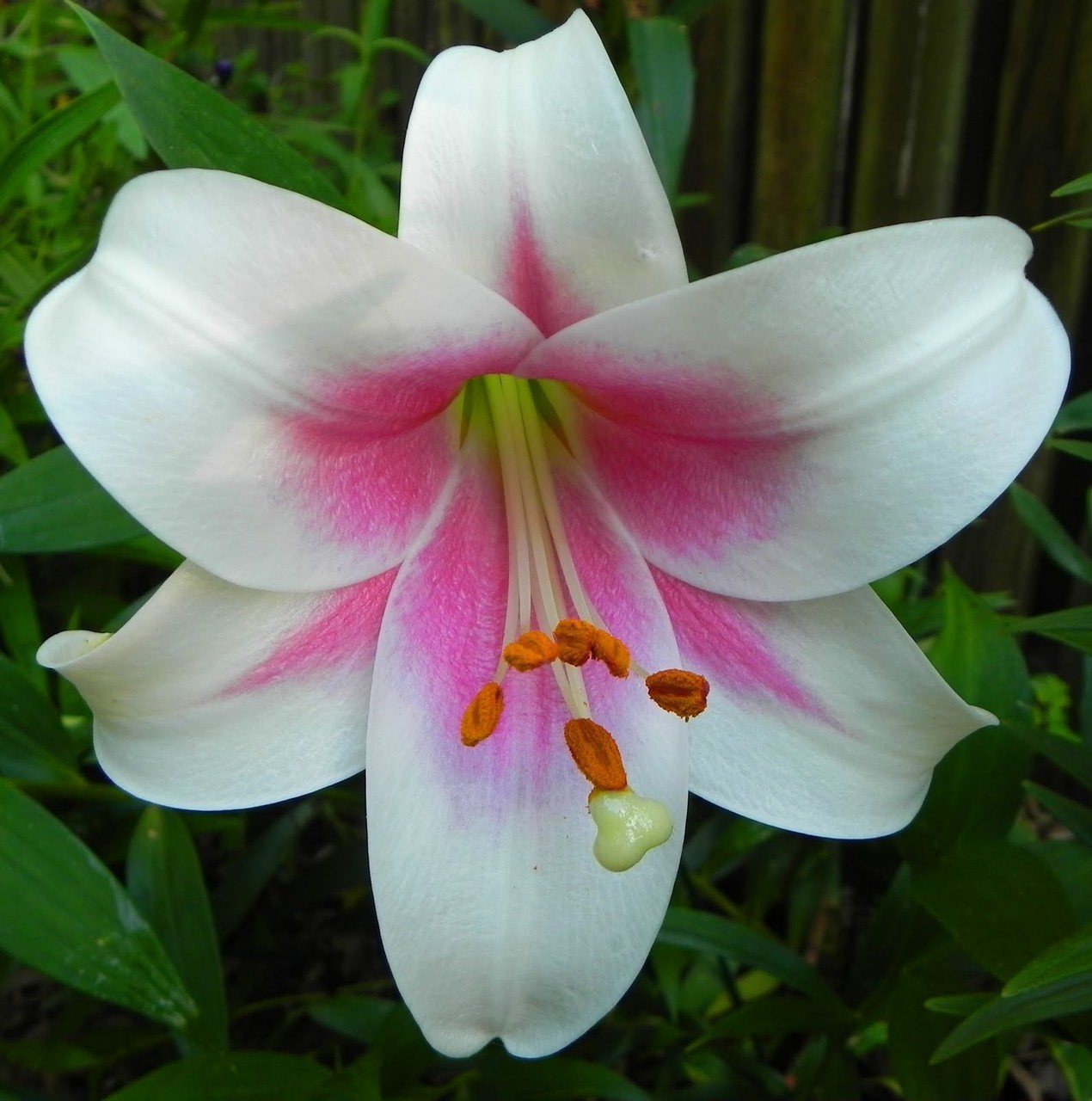
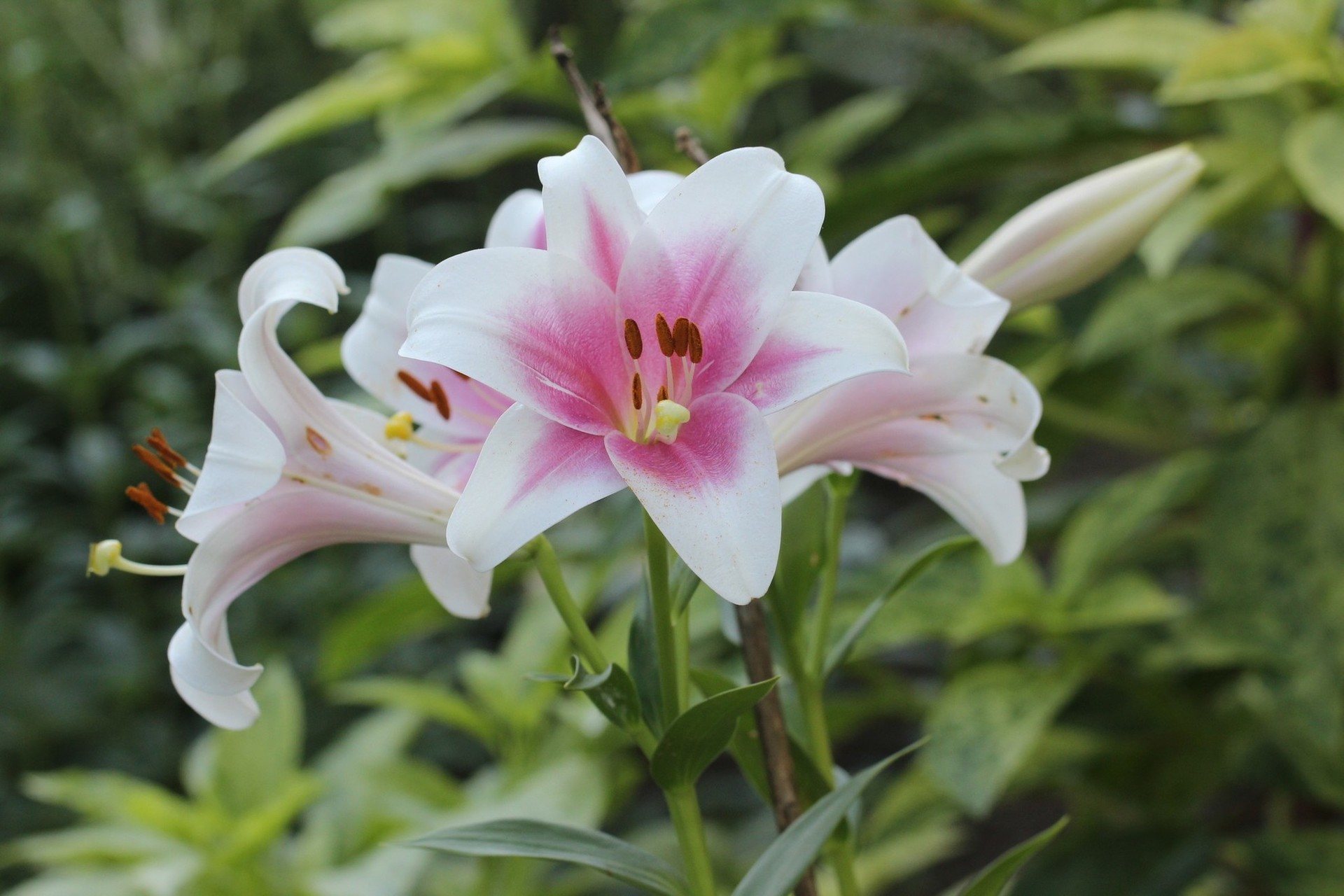





The development of this variety series continued in two more directions, resulting in the appearance of LOO and LLO hybrids. The former were obtained as a result of crossing oriental and LO lilies, and the latter - longipet with long-flowered species. This made it possible to increase the size of the flowers, but the color did not become more diverse.
Varieties of LOO and LLO hybrids:
- Belsans;
- Pink Diamond;
- Polar;
- Nuance.
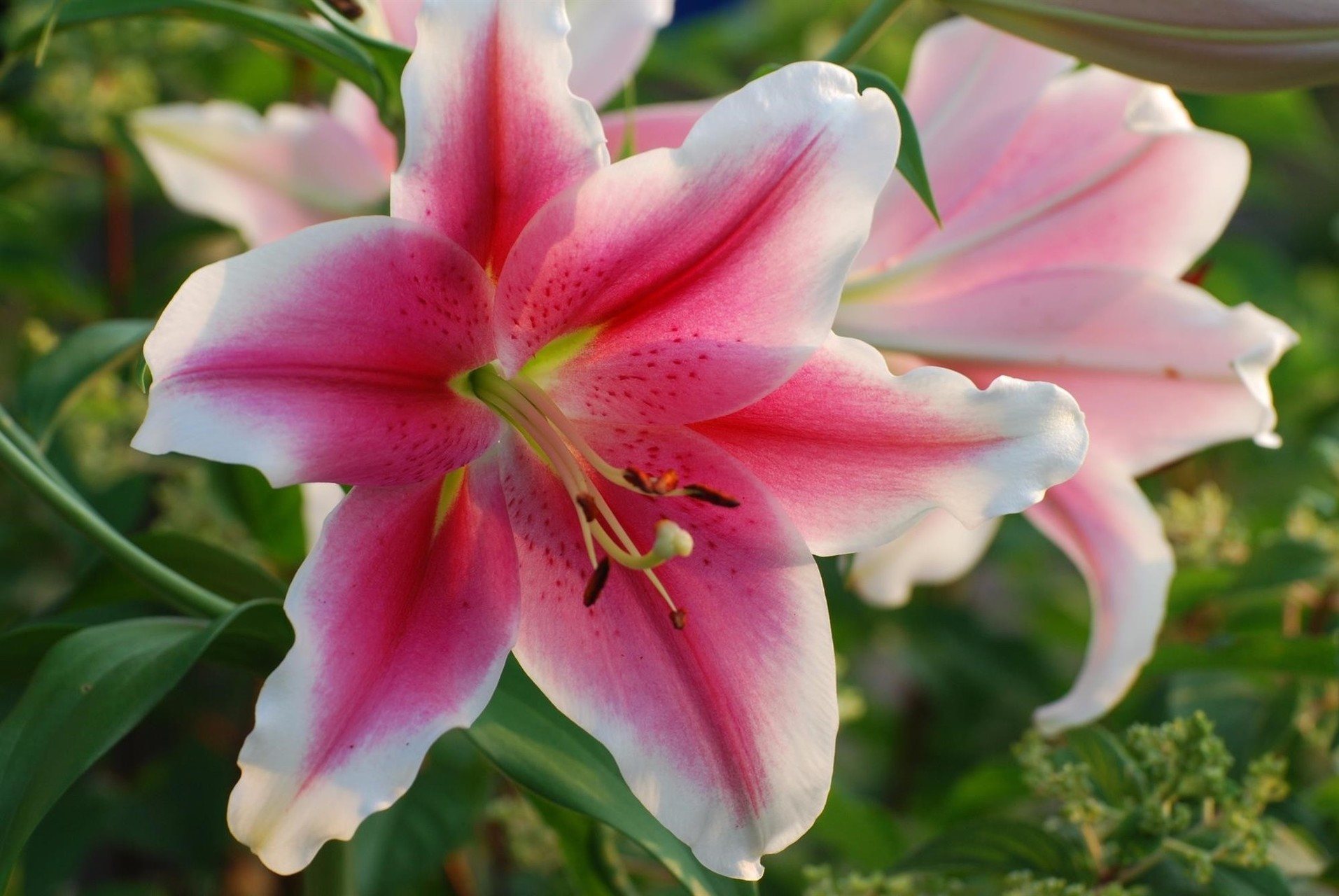
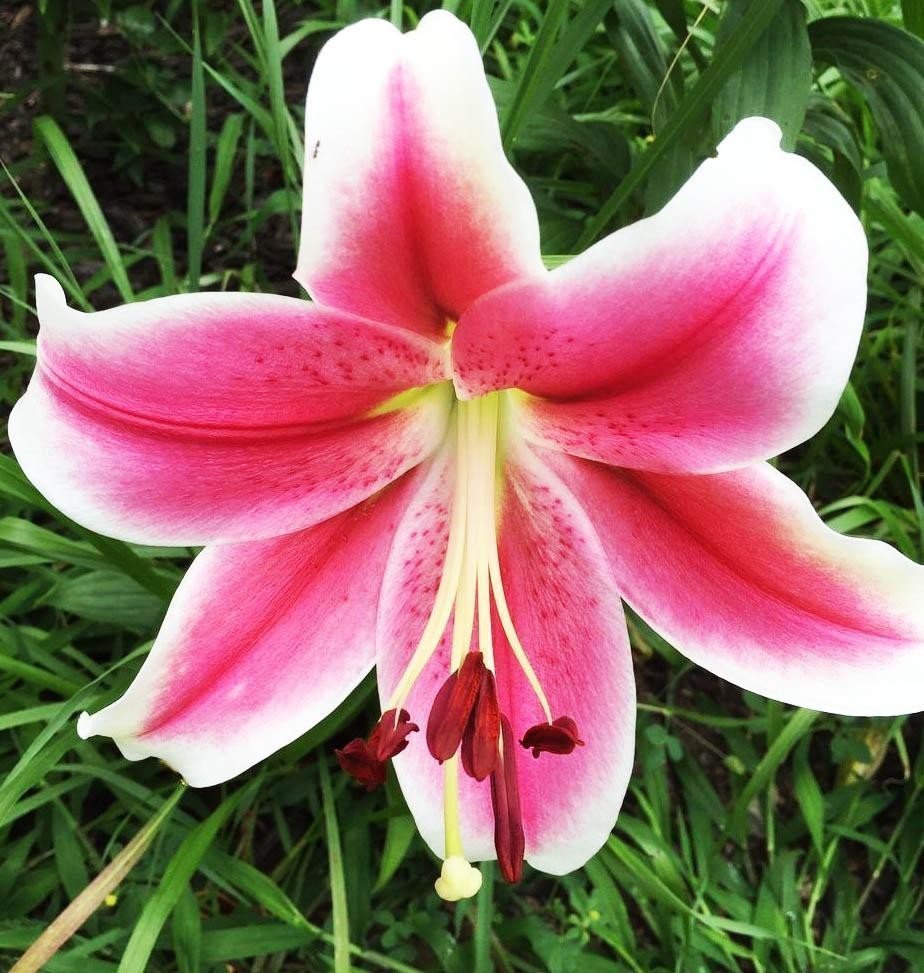
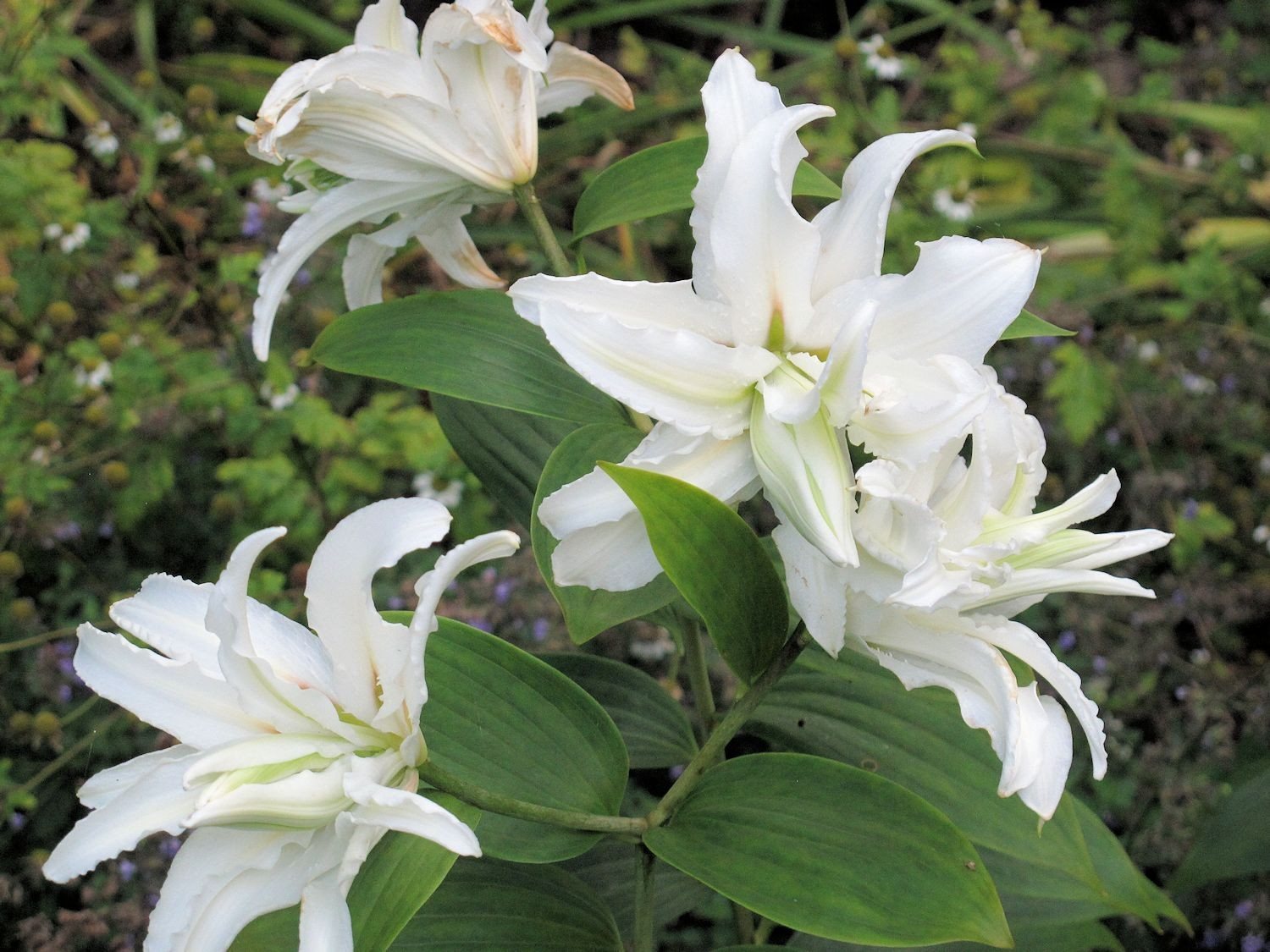
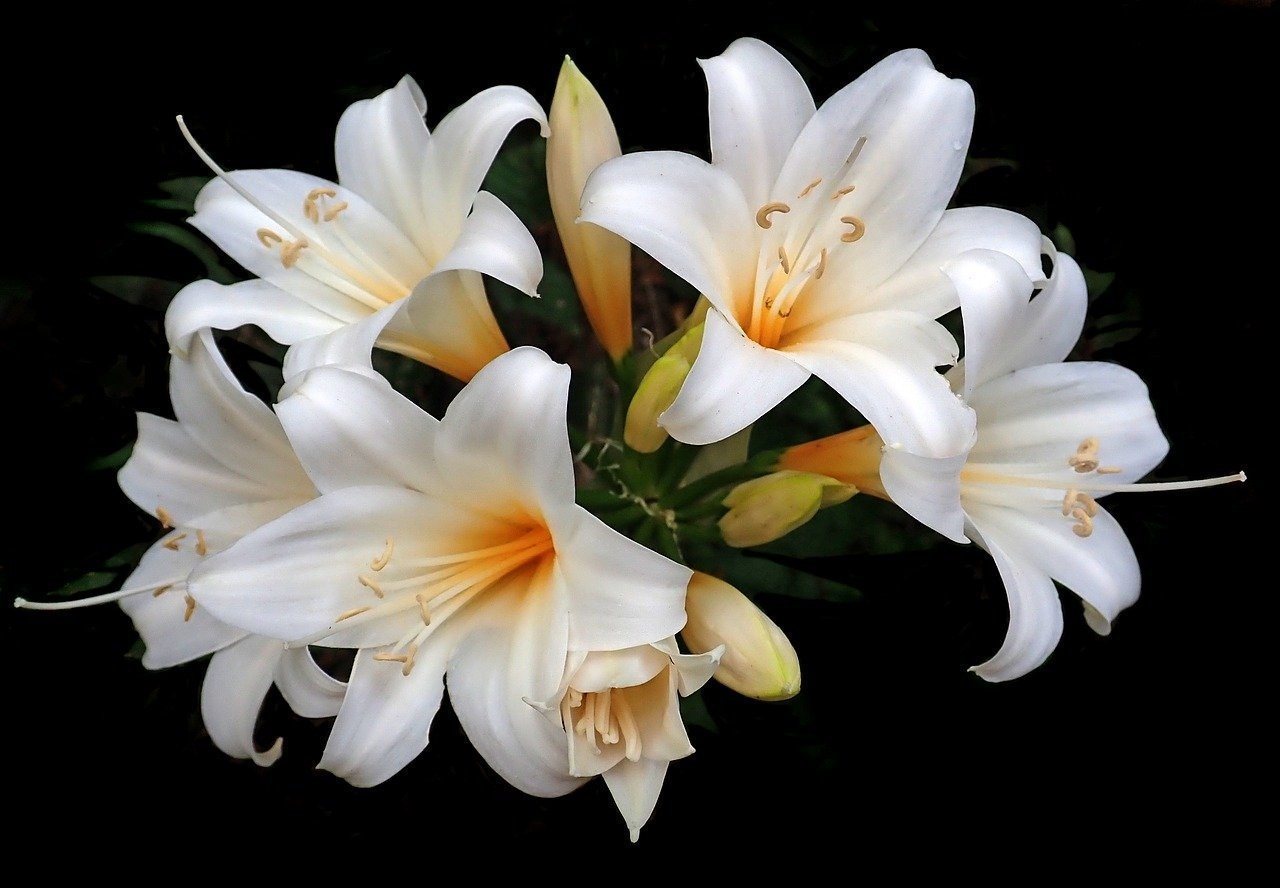
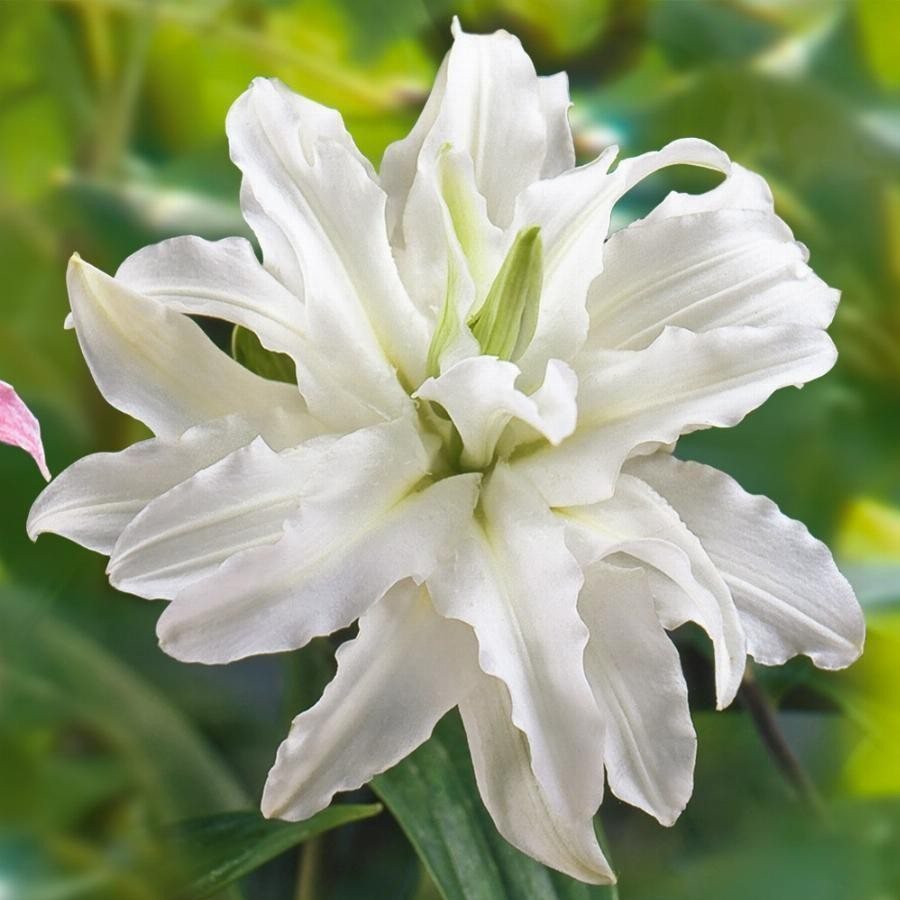





OA hybrids
These hybrids appeared almost at the same time as OT. The basis for them was Oriental and Asiatic lilies. The difficulty of hybridization lies in the significant difference between these two groups. However, the resulting varieties managed to combine the best qualities of their ancestors: the beauty of flowers from orientals and the endurance of Asiatic lilies.
Popular varieties in this series:
- Fest Crown - yellow flowers with a red star in the center;
- Elegance Crown - pink flowers with a beige border along the edge of the petals;
- Yellow Paver - bright yellow flowers;
- Kaveri - yellow with a bronze center;
- Fuego Crown - orange with a yellow center and brown specks.
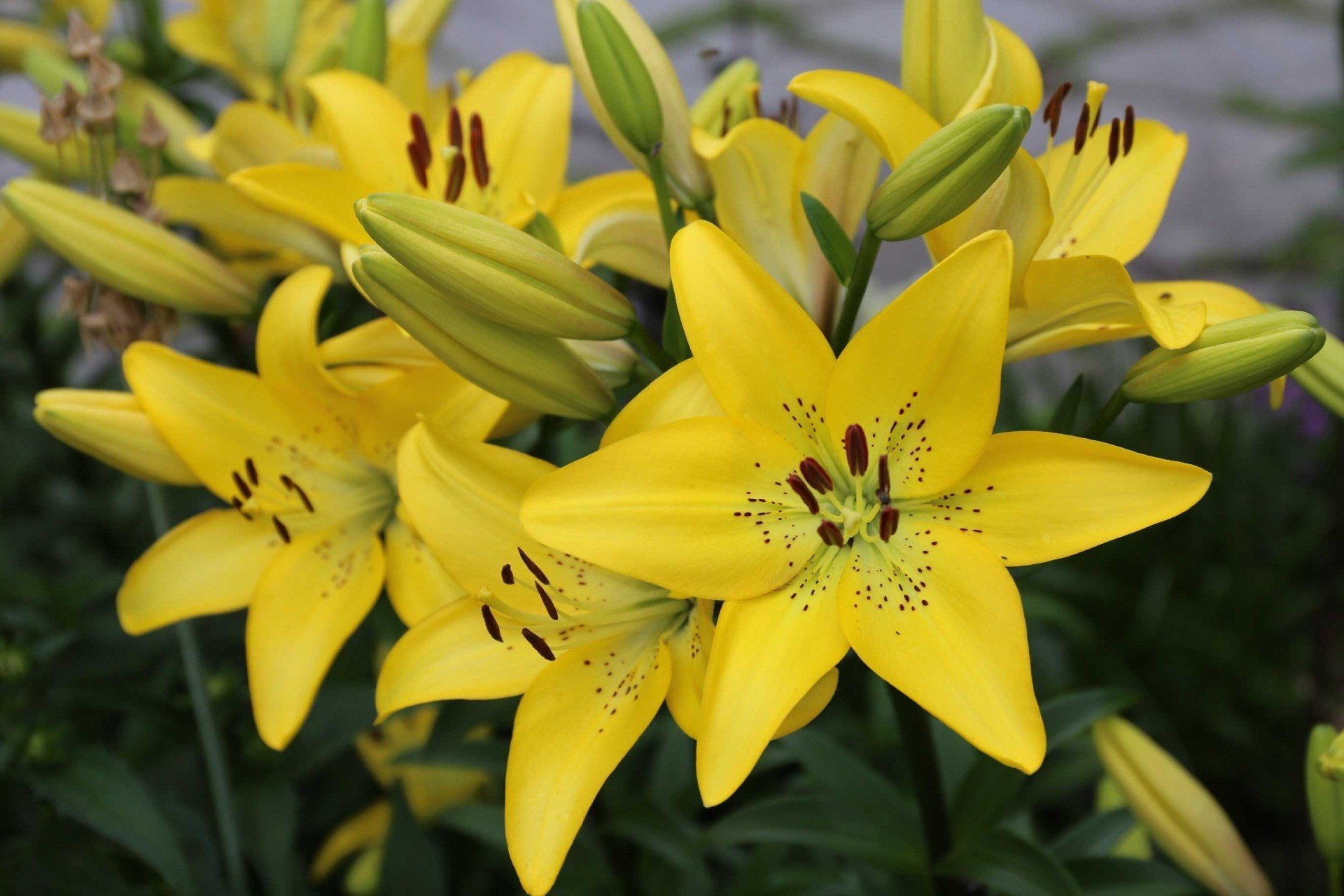
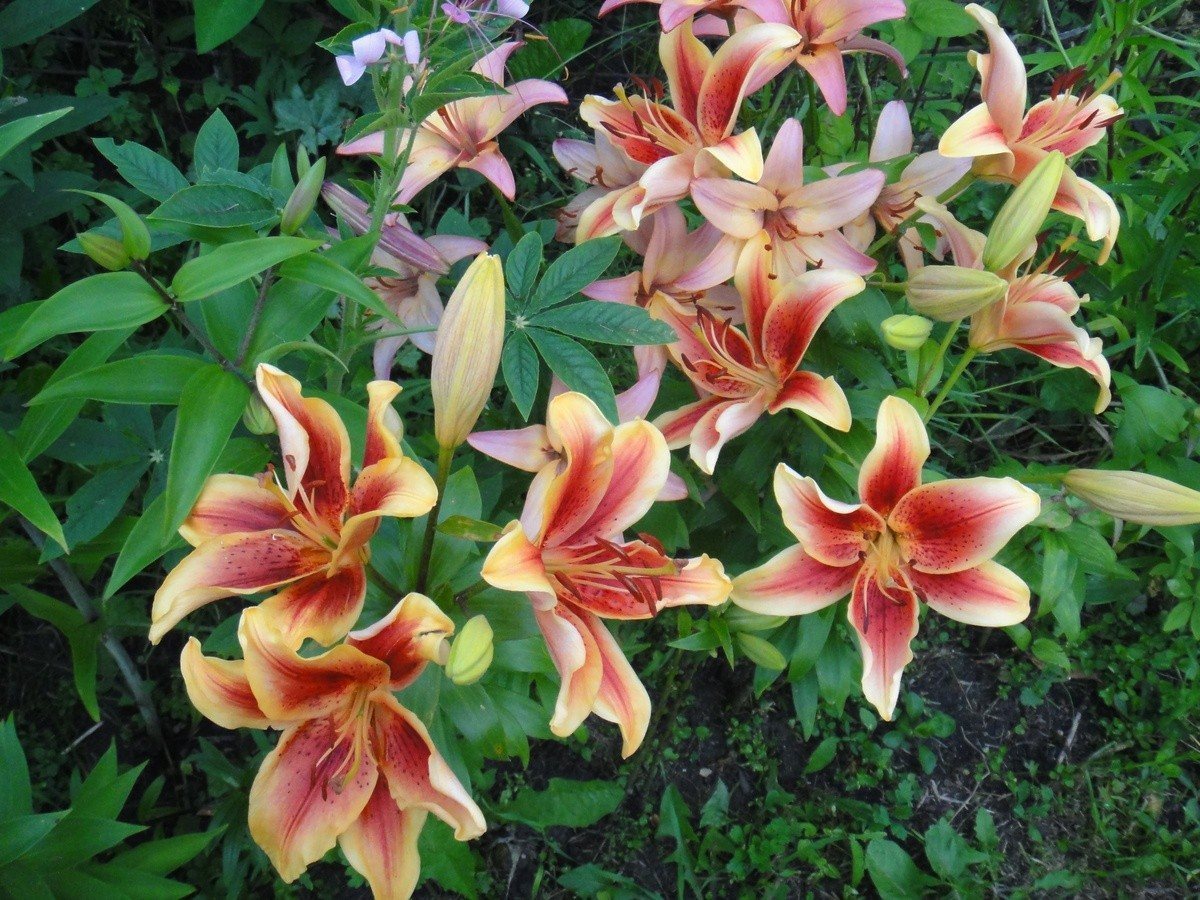

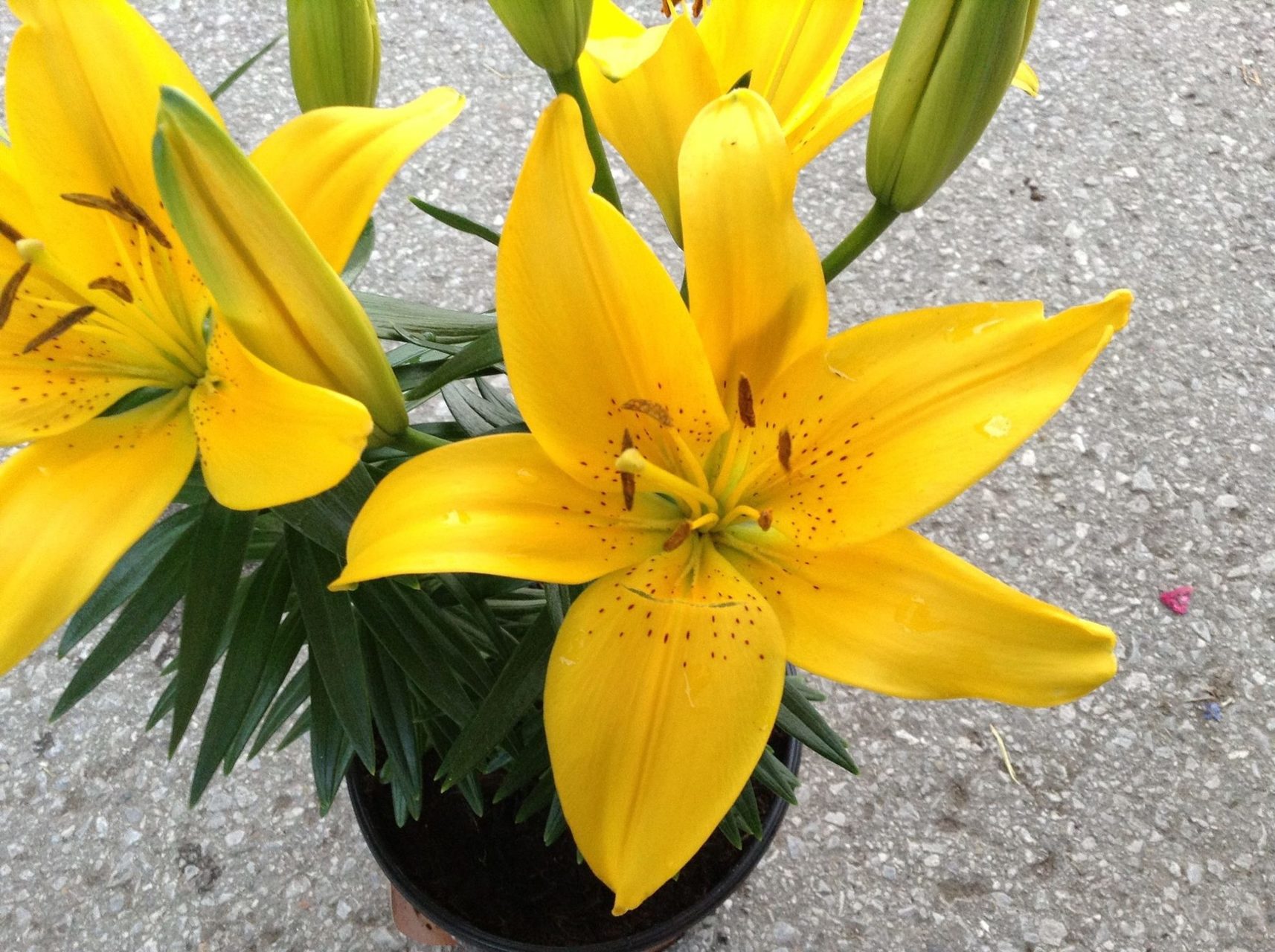
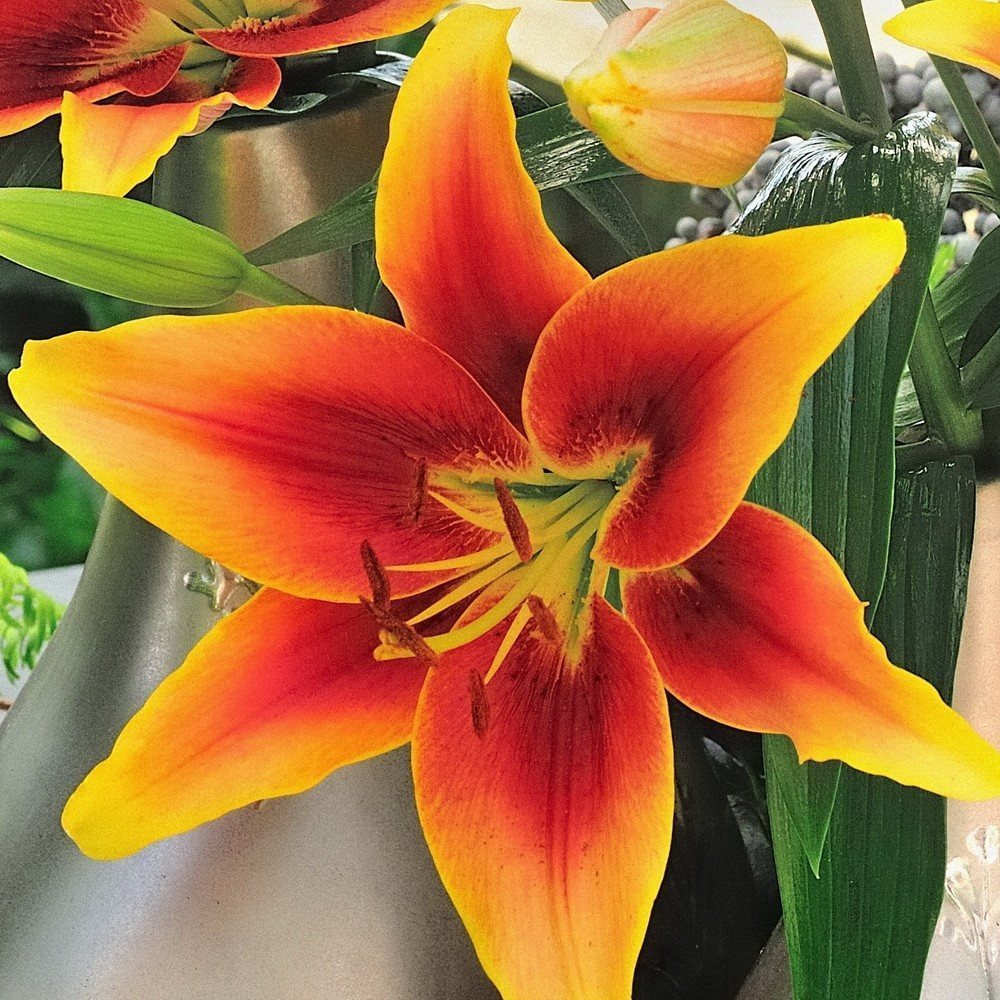





OT, Orienpet
These hybrids are obtained by crossing oriental and trumpet lilies. They first appeared in the 50s of the last century. They are characterized by large flowers, a pleasant aroma and high vitality. They bloom from mid-July. Prefer sunny open areas. They require shelter for the winter when grown in the central and northern regions.
Popular varieties:
- Albani - golden yellow edge of the petals and red center of the flowers;
- Holland Beauty - red-orange middle smoothly turns into a pastel yellow shade;
- Robina - crimson flowers with a white center;
- Visaverza is a pink flower with a small light green stroke in the middle;
- Manissa is a yellow center, turning into a white shade towards the edge of the petals.
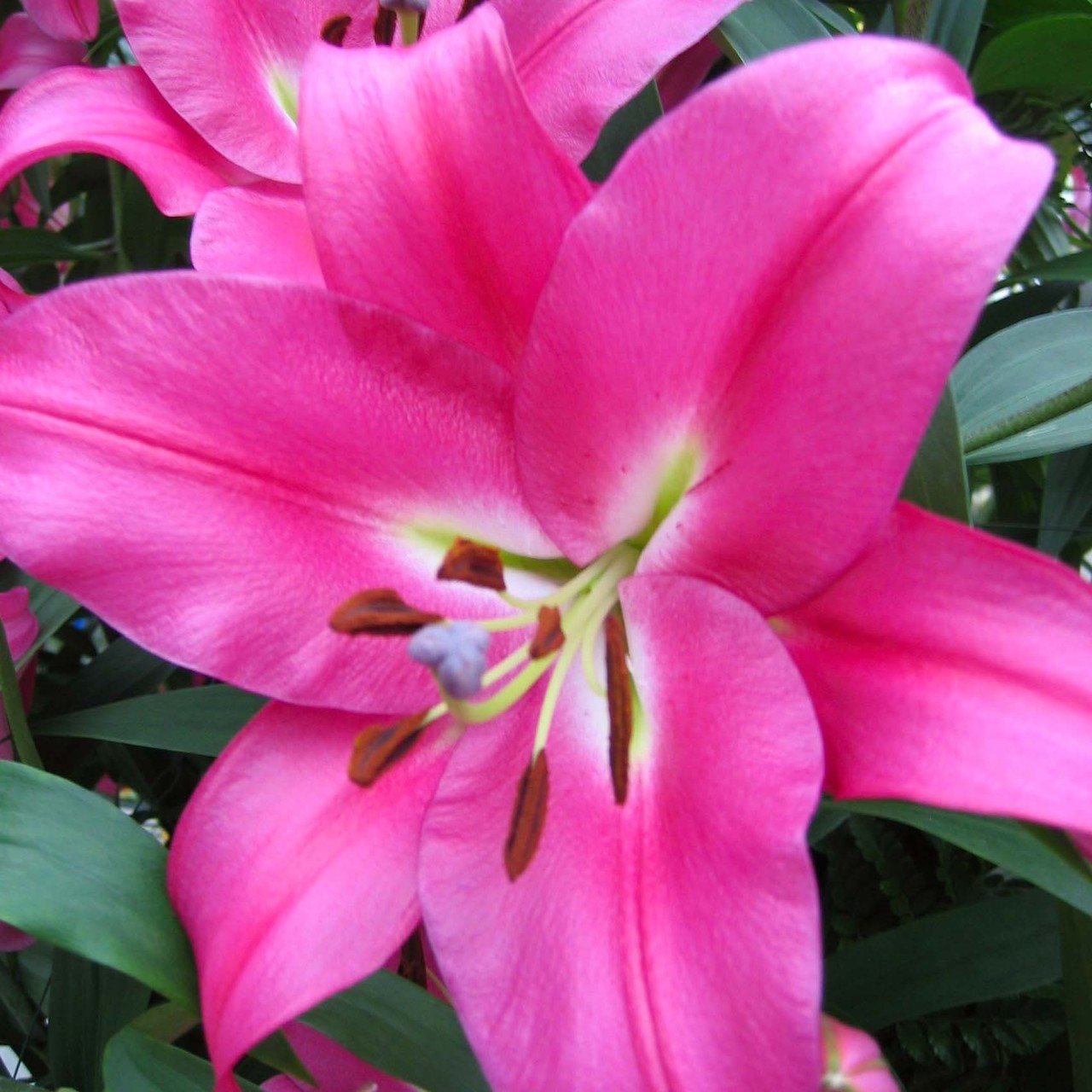
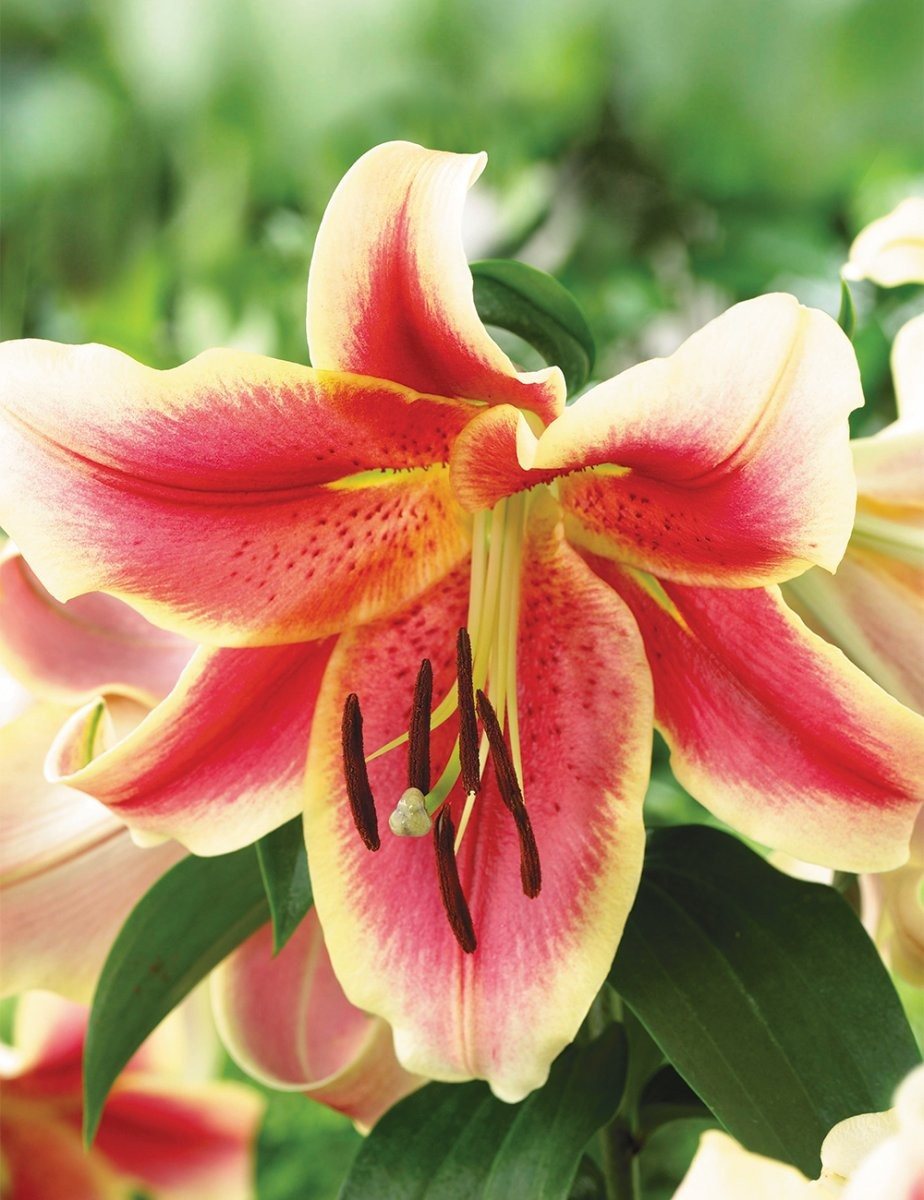
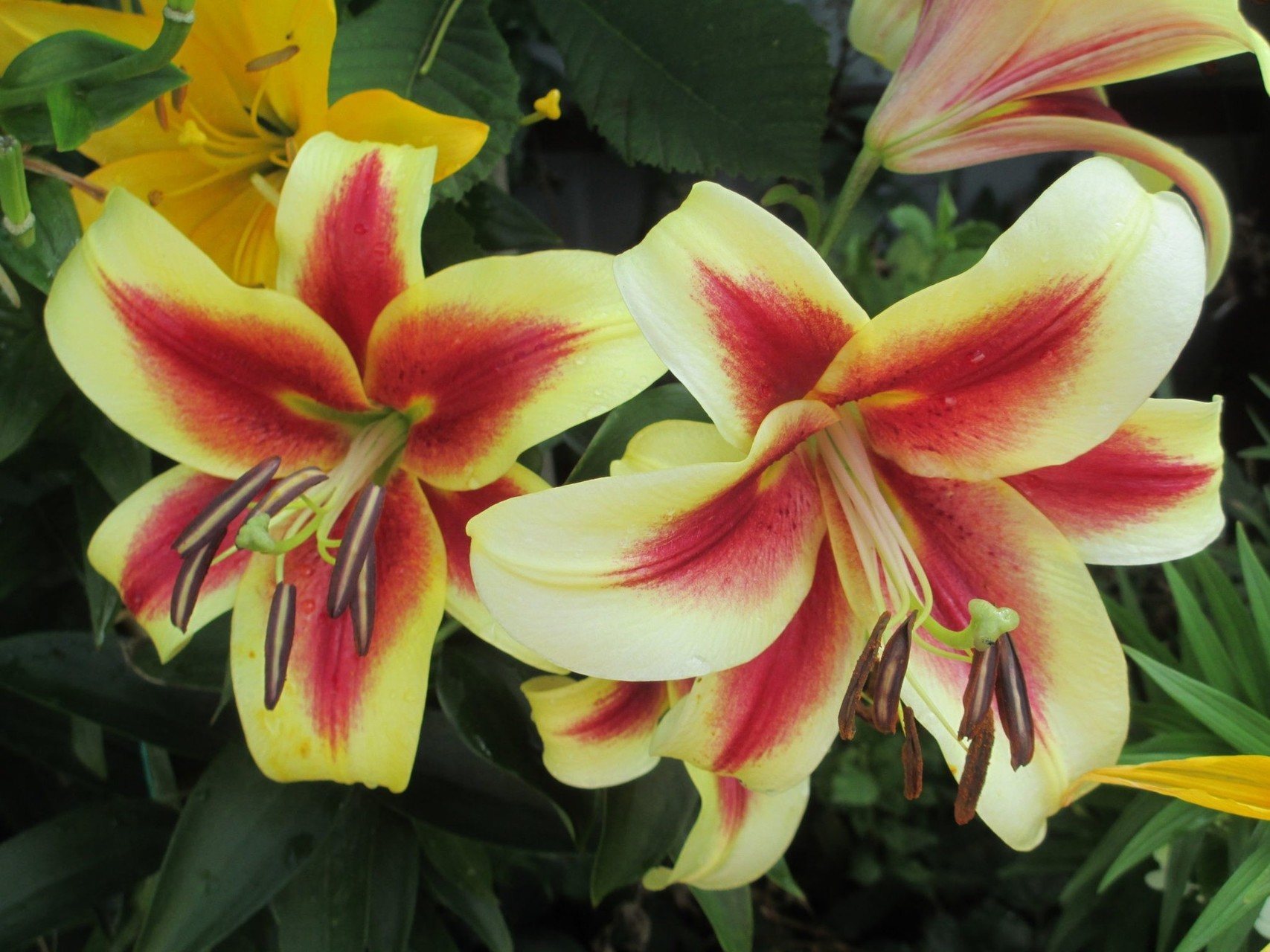
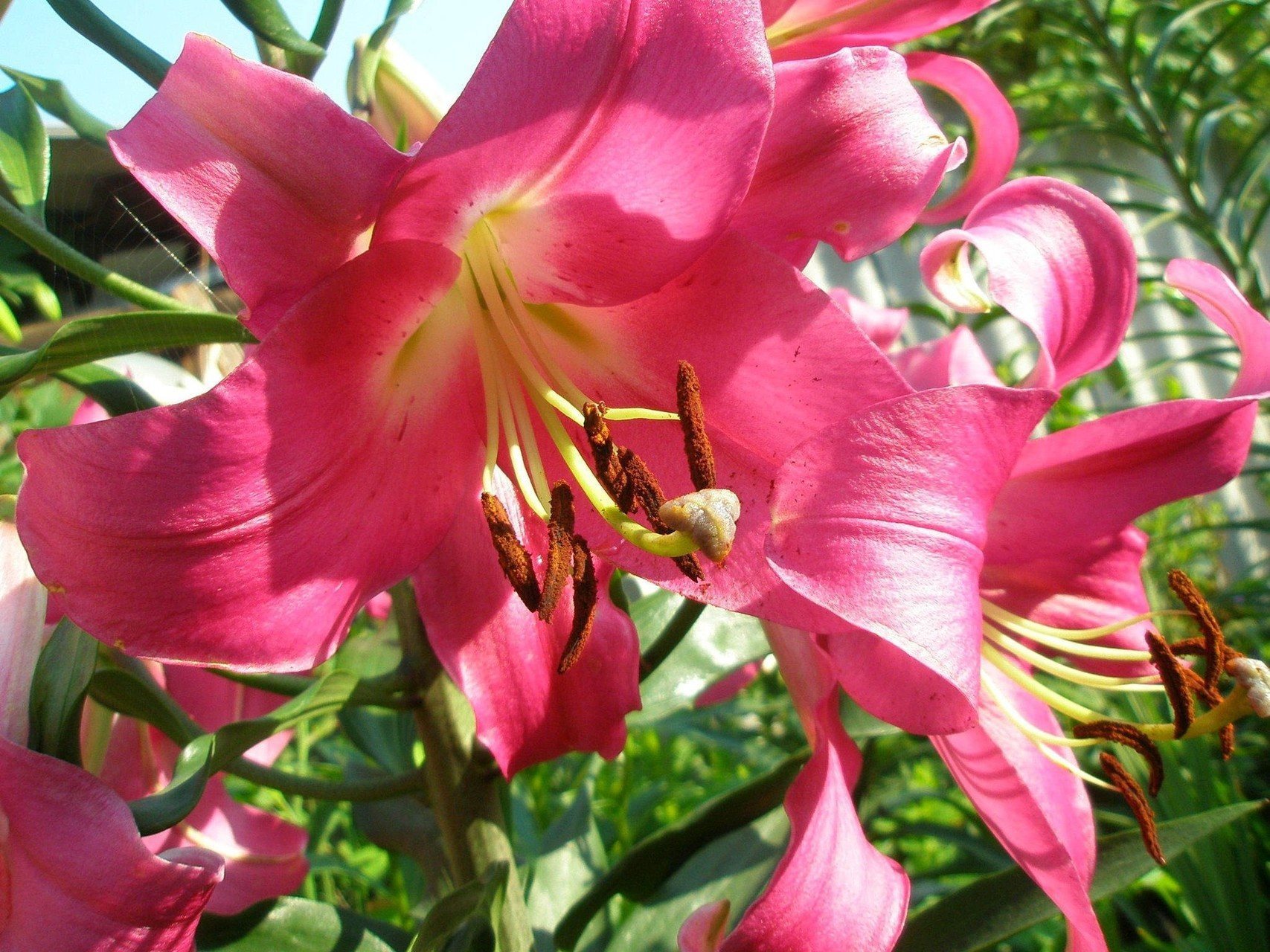
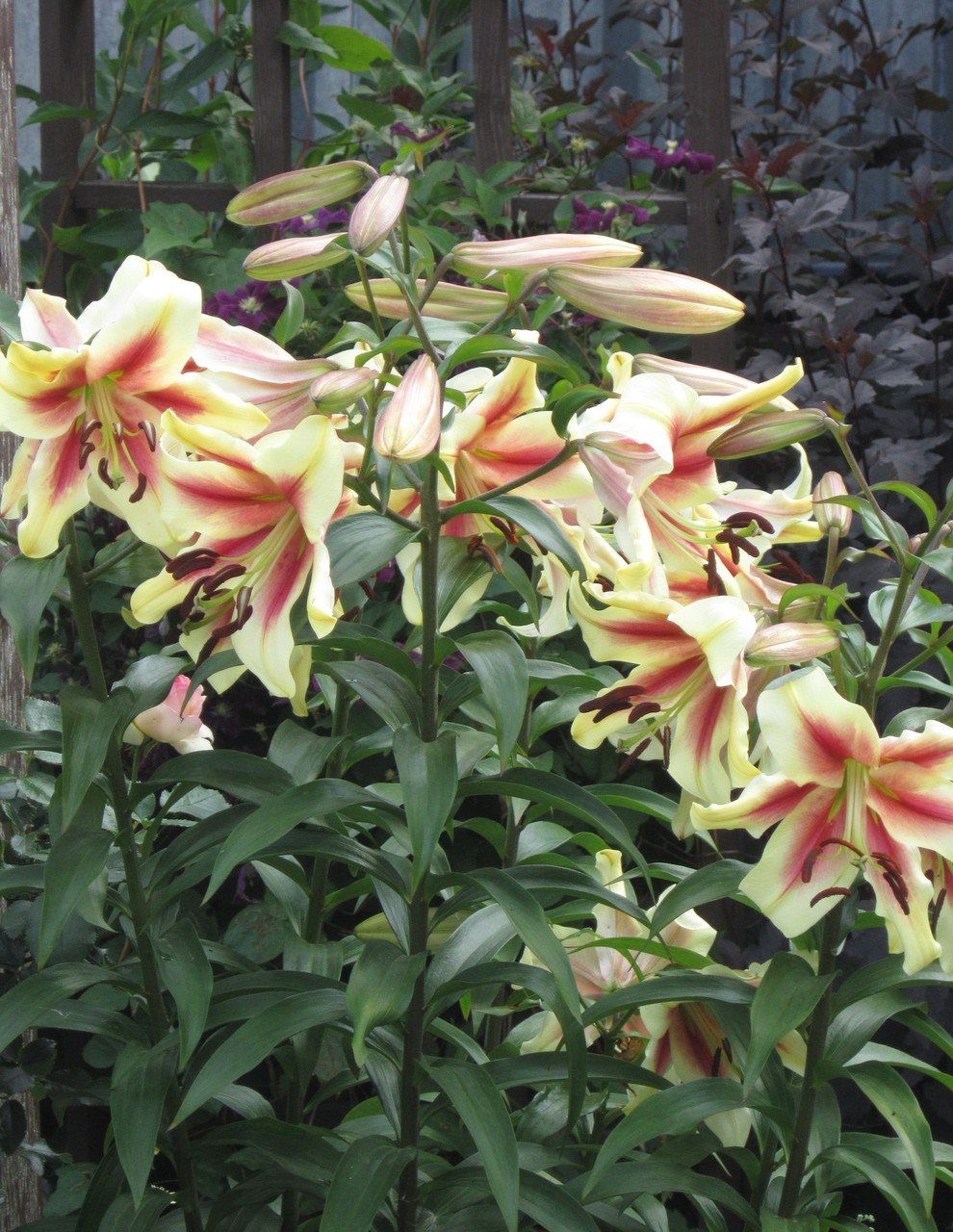





MA (MA), (Martasiat Hybrids) - lily hybrids between martagons and Asian
These hybrids were introduced in the late 20th century. American botanist David Simsom worked on their creation. They inherited turban-shaped flowers from Martagons, and hardiness from Asians. It is impossible to find these hybrids on the open market. Individual copies can be purchased in private collections.
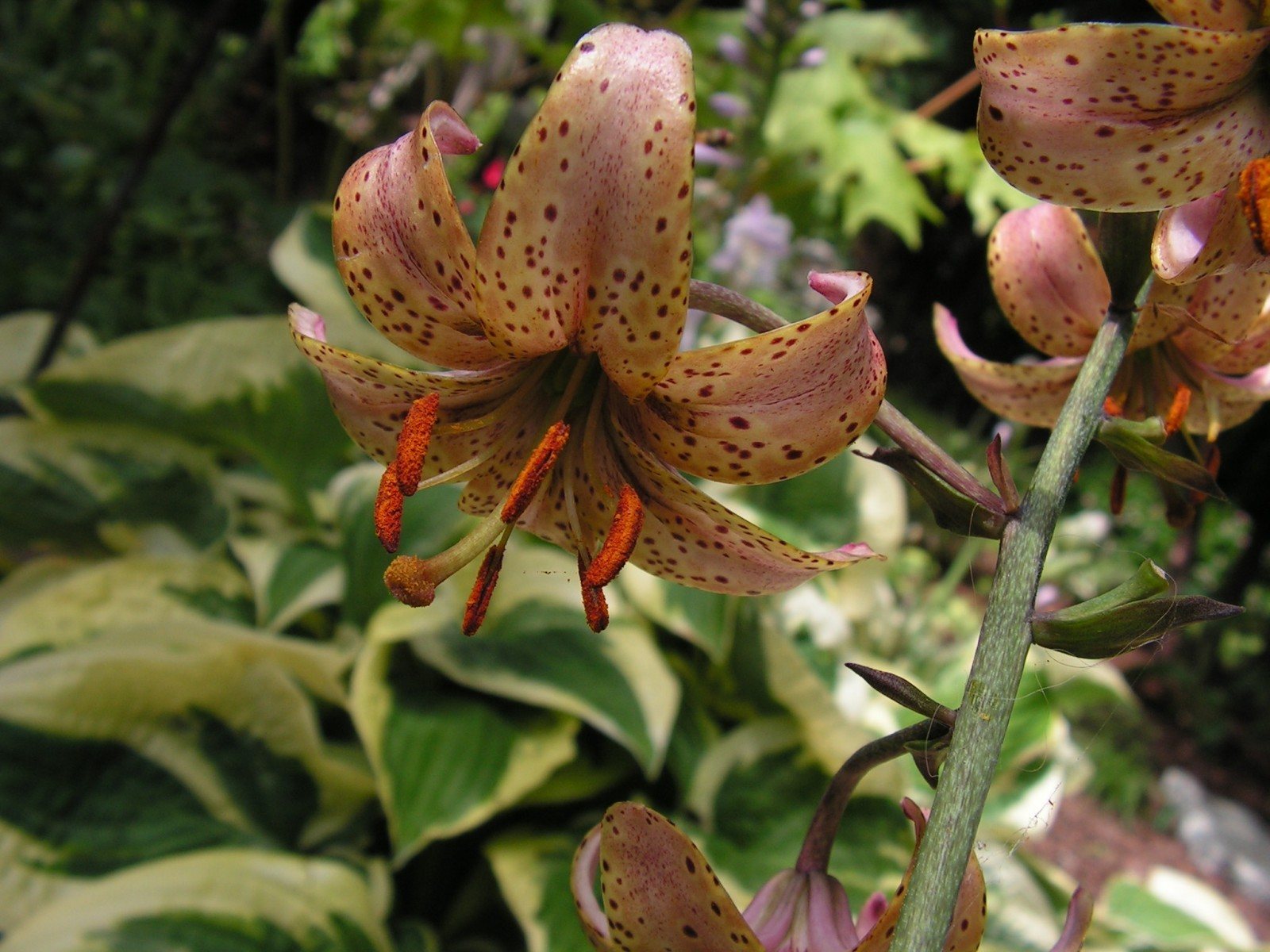
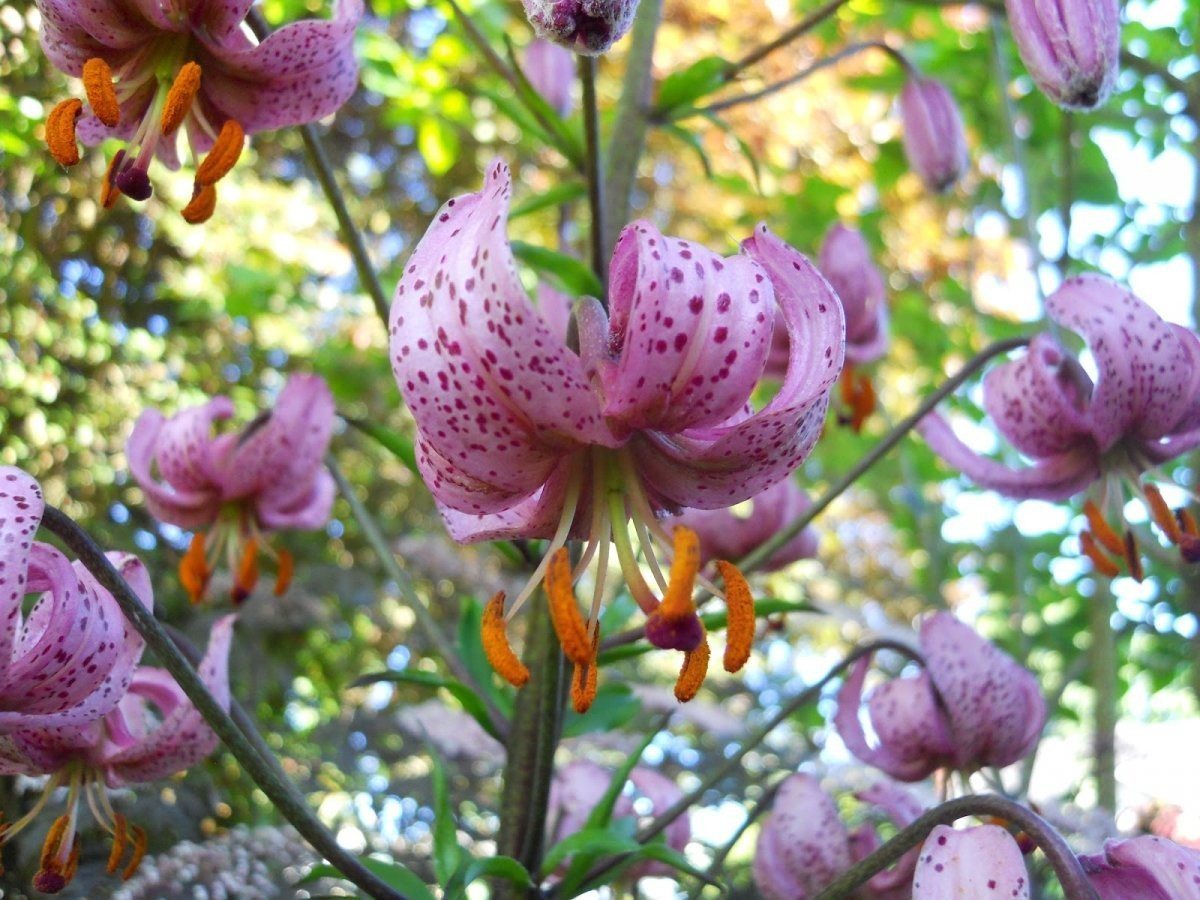
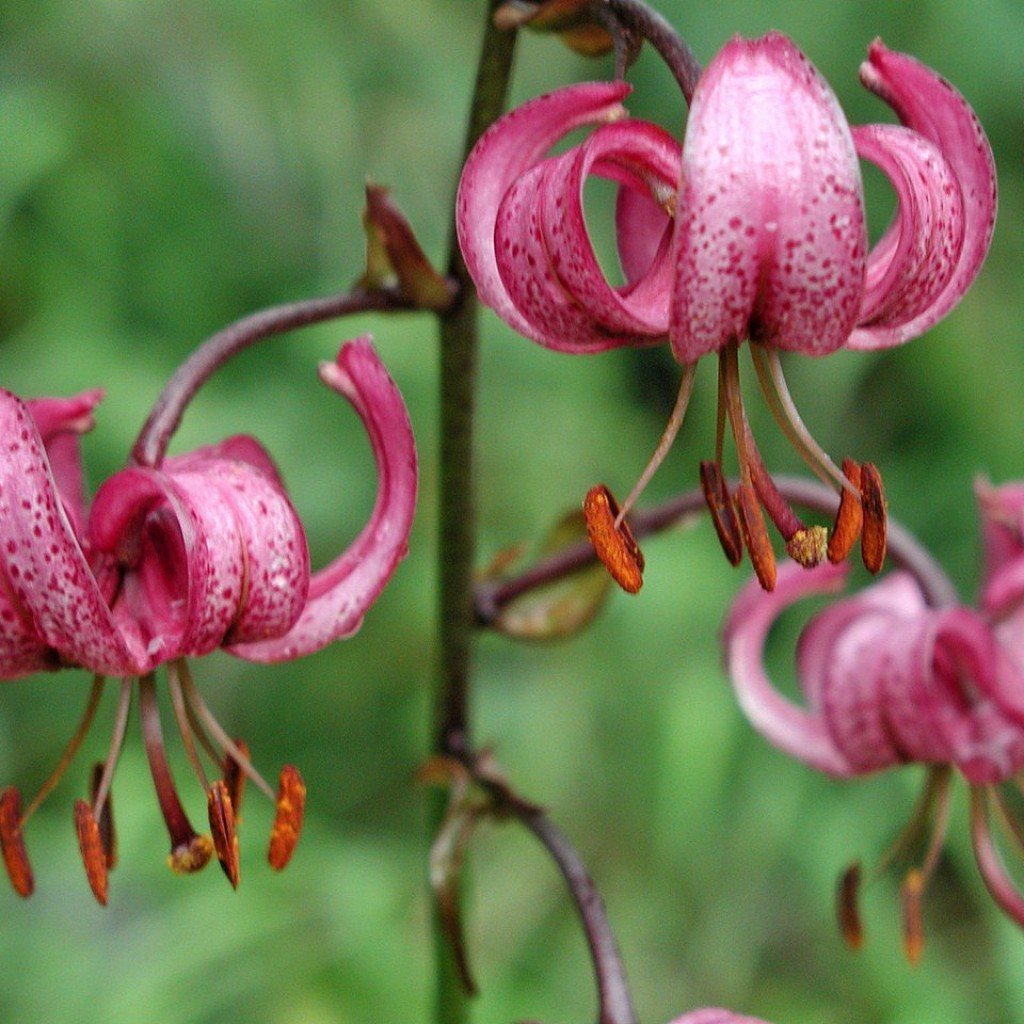
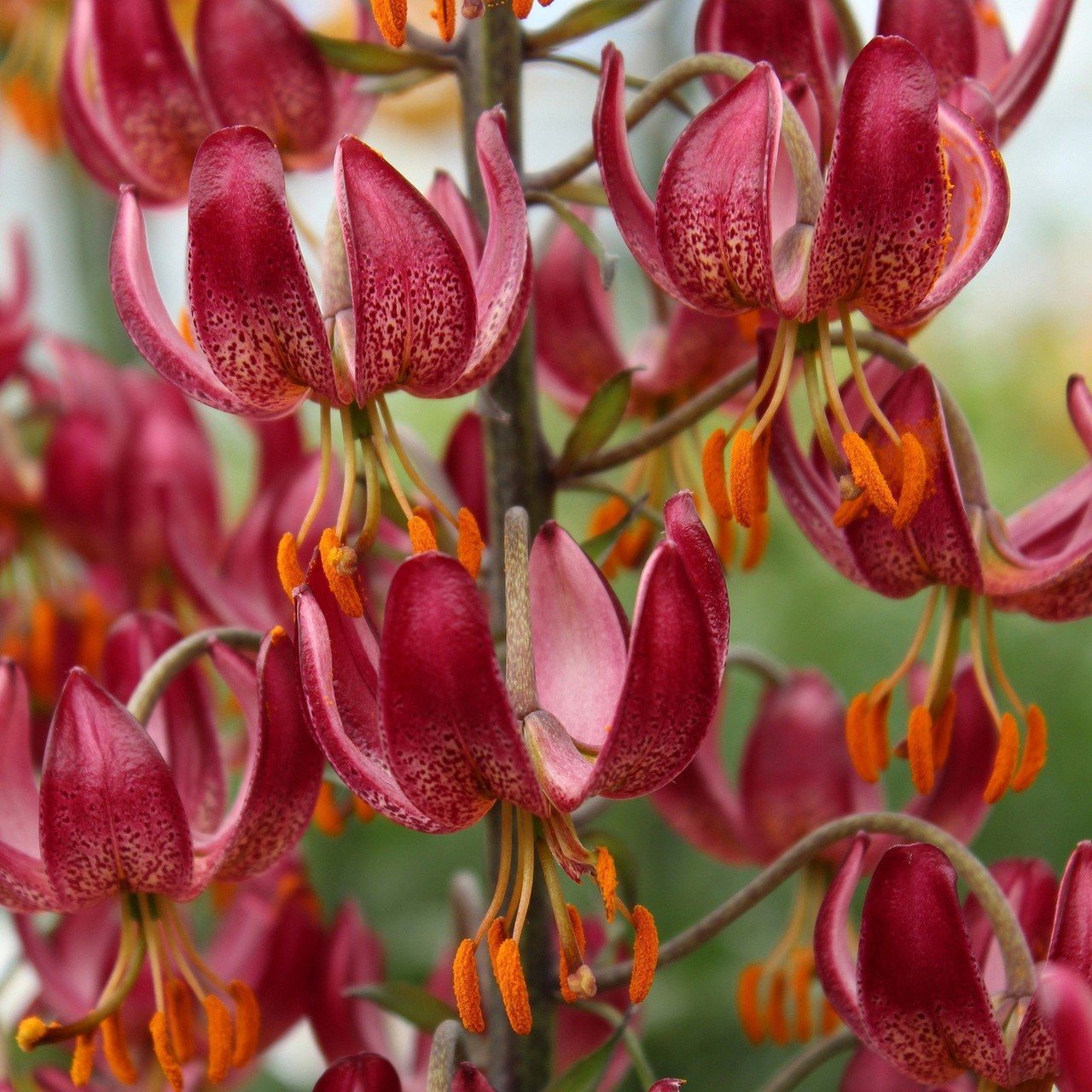
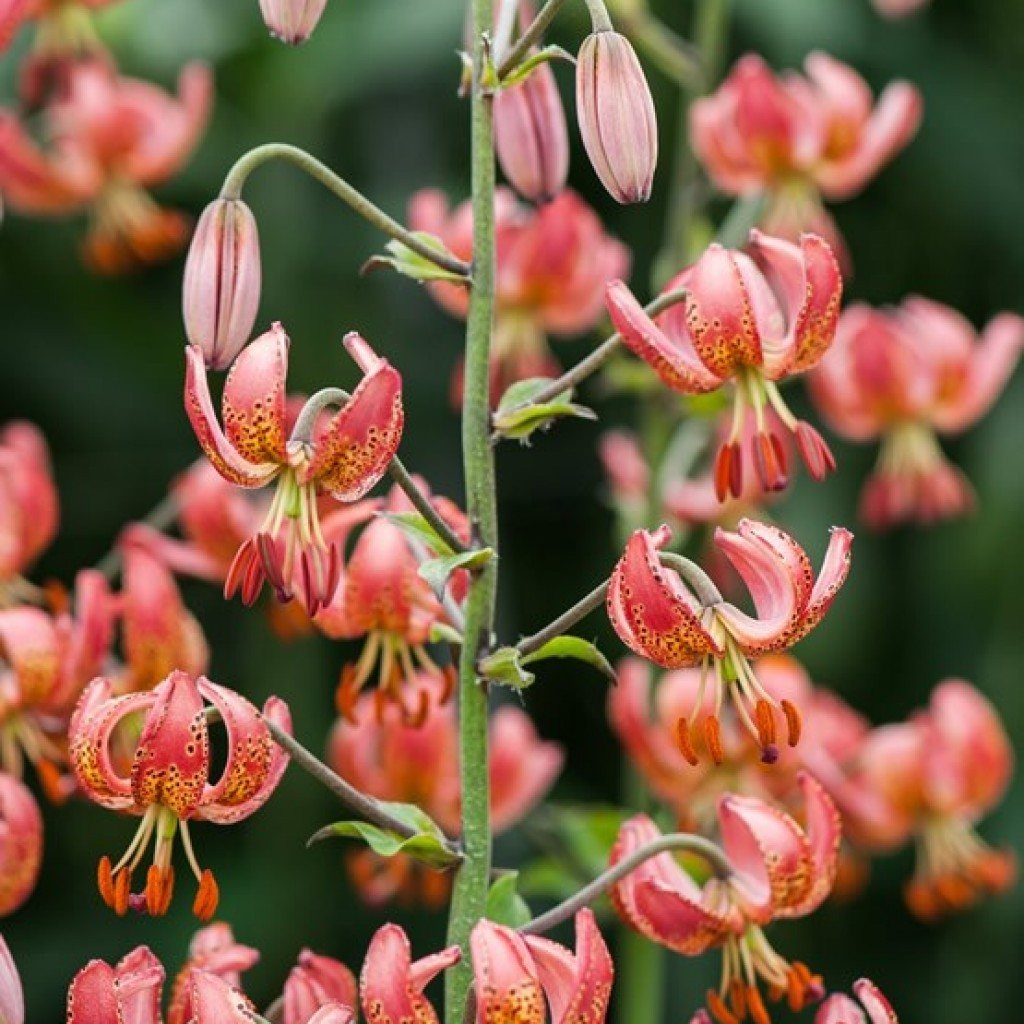





AA - lily hybrids from crossing Orleans and Asian hybrids
These hybrids are promising for growing in the middle zone. They are characterized by funnel-shaped flowers that emit a strong aroma. They have increased winter hardiness. In Russia they are extremely rare.
Popular varieties:
- Silk Belis - white flowers with a yellow center;
- Ivory Belis - white flowers with a crimson back side of the petals and a light border along the edge.
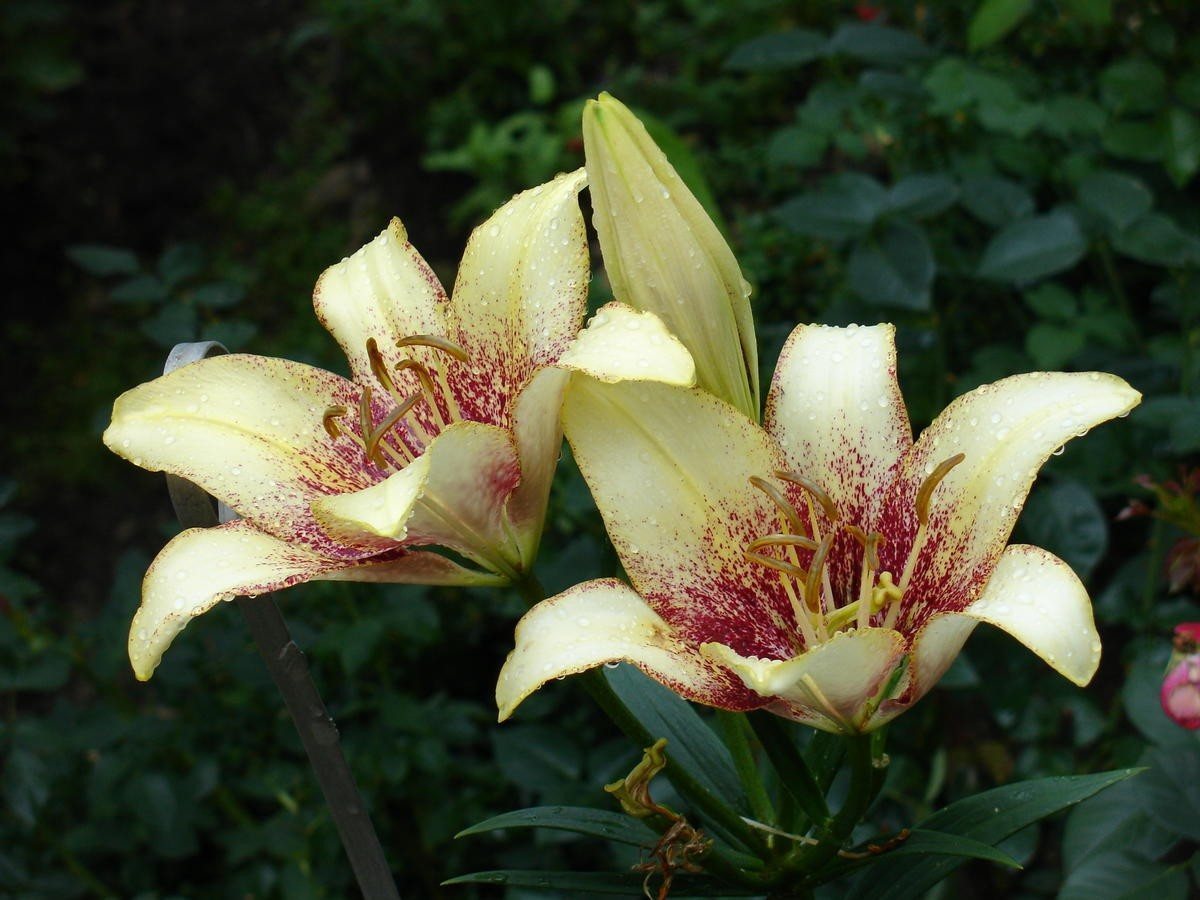
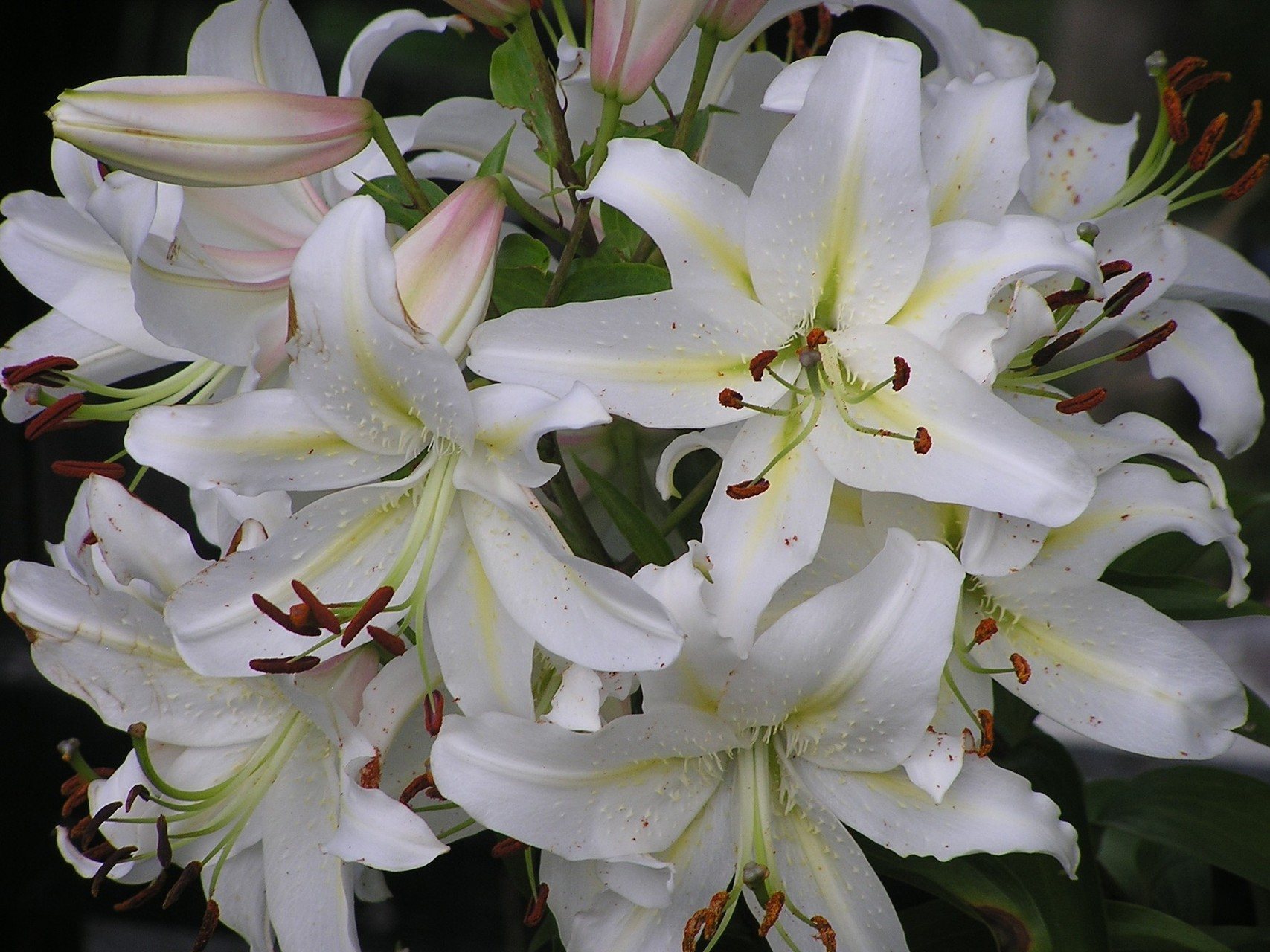
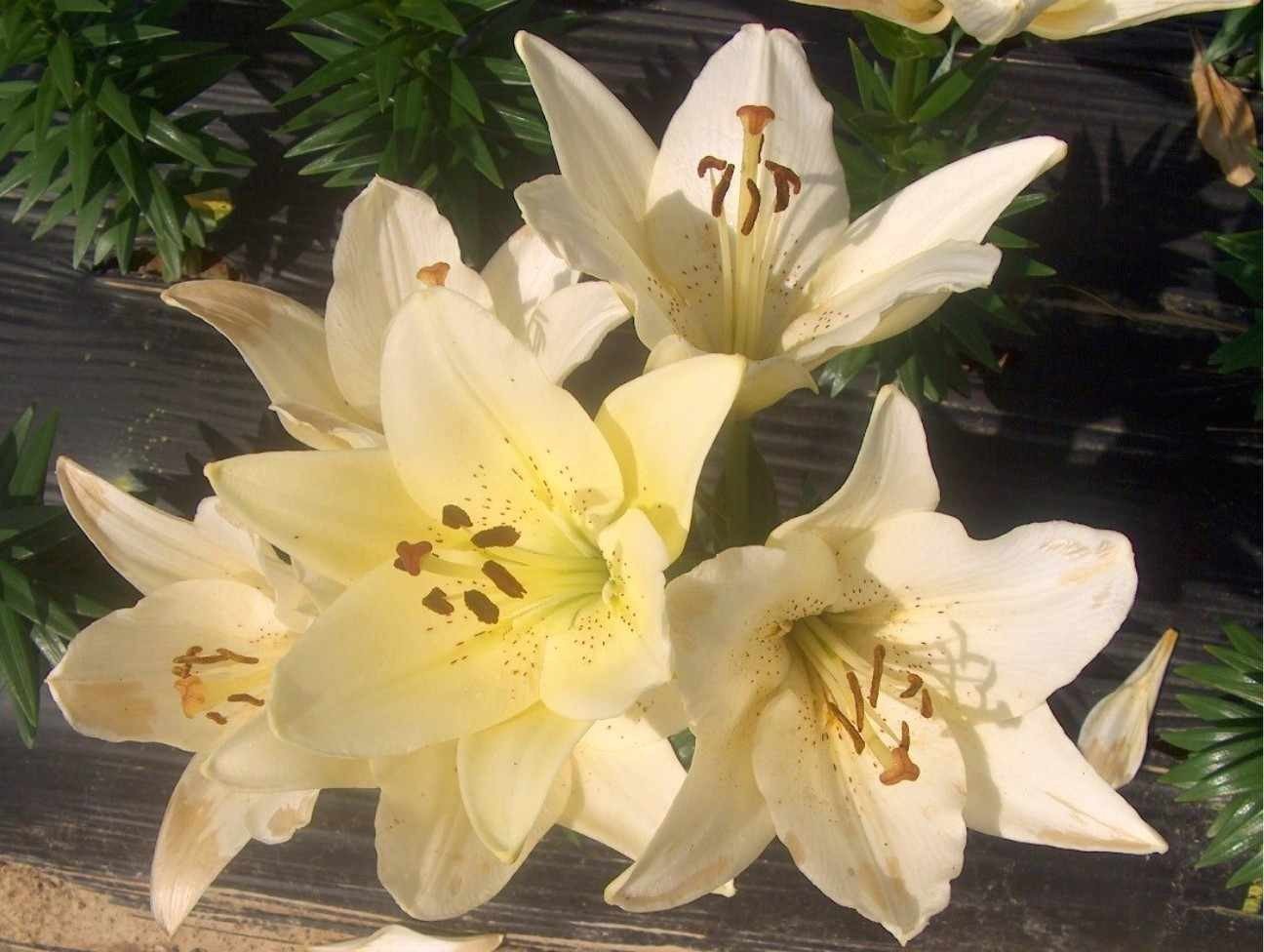
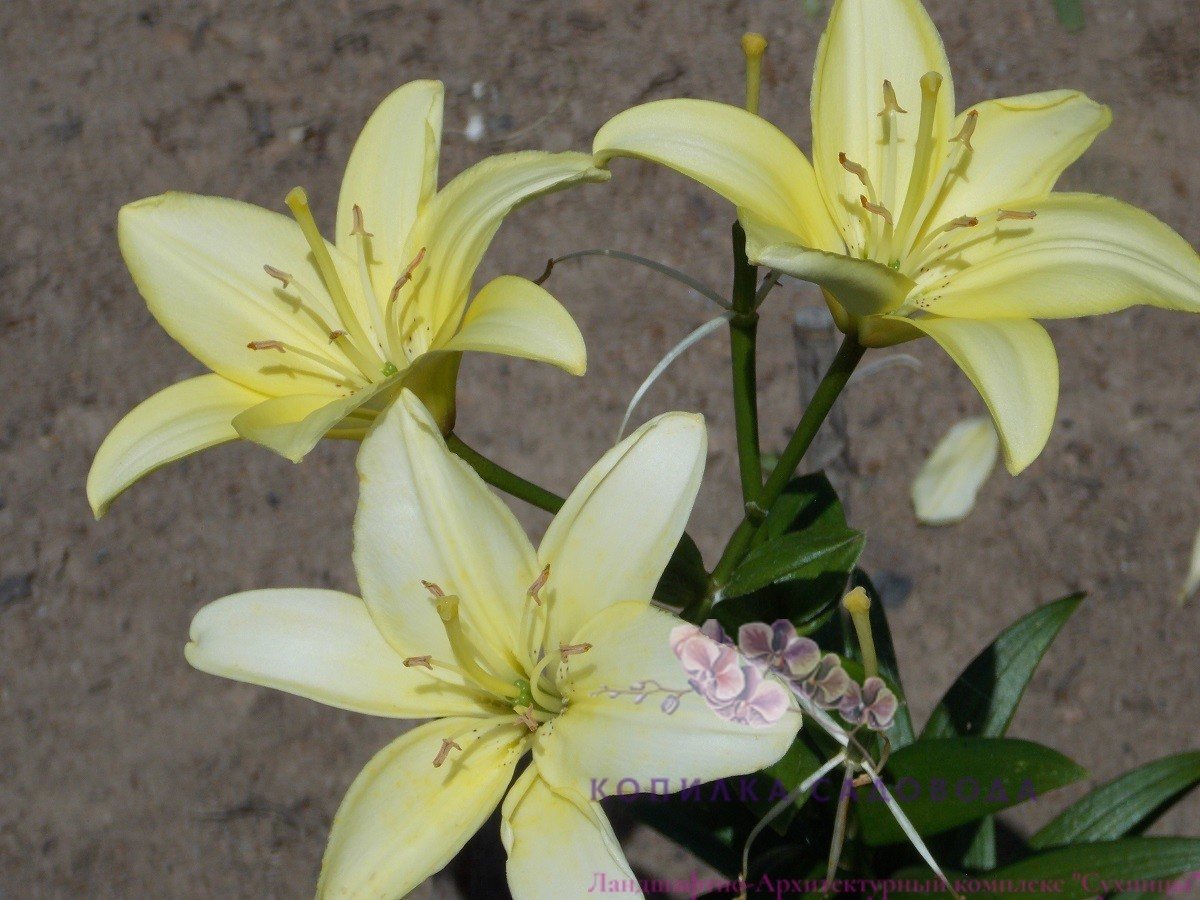
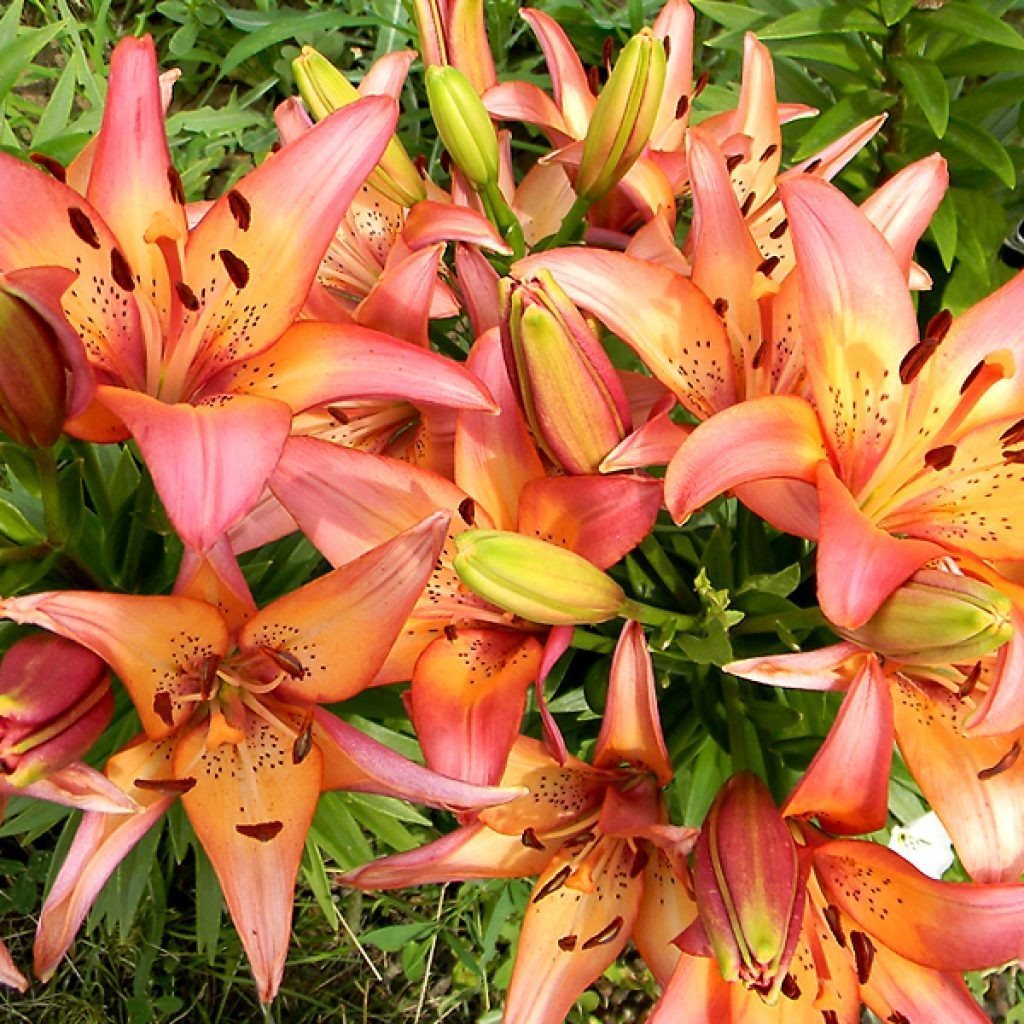





Species lilies
There are about 110 wild species of lilies found in nature. They are used as a basis for creating hybrid forms. To successfully grow such species in a personal plot or dacha, special conditions and care are required, so they are not popular with gardeners. After all, in terms of decorativeness they are significantly inferior to hybrids. However, some of them are able to grow in central Russia and still bloom annually.
Let's consider popular varieties of species lilies.
Henry
The flowers of the lily are turban-shaped, drooping type, their size in diameter is 8 cm. The color of the petals is yellow or orange.The shoots are thin, up to 2 m, and can bend under the weight of the flowers. The flowering period begins in August.
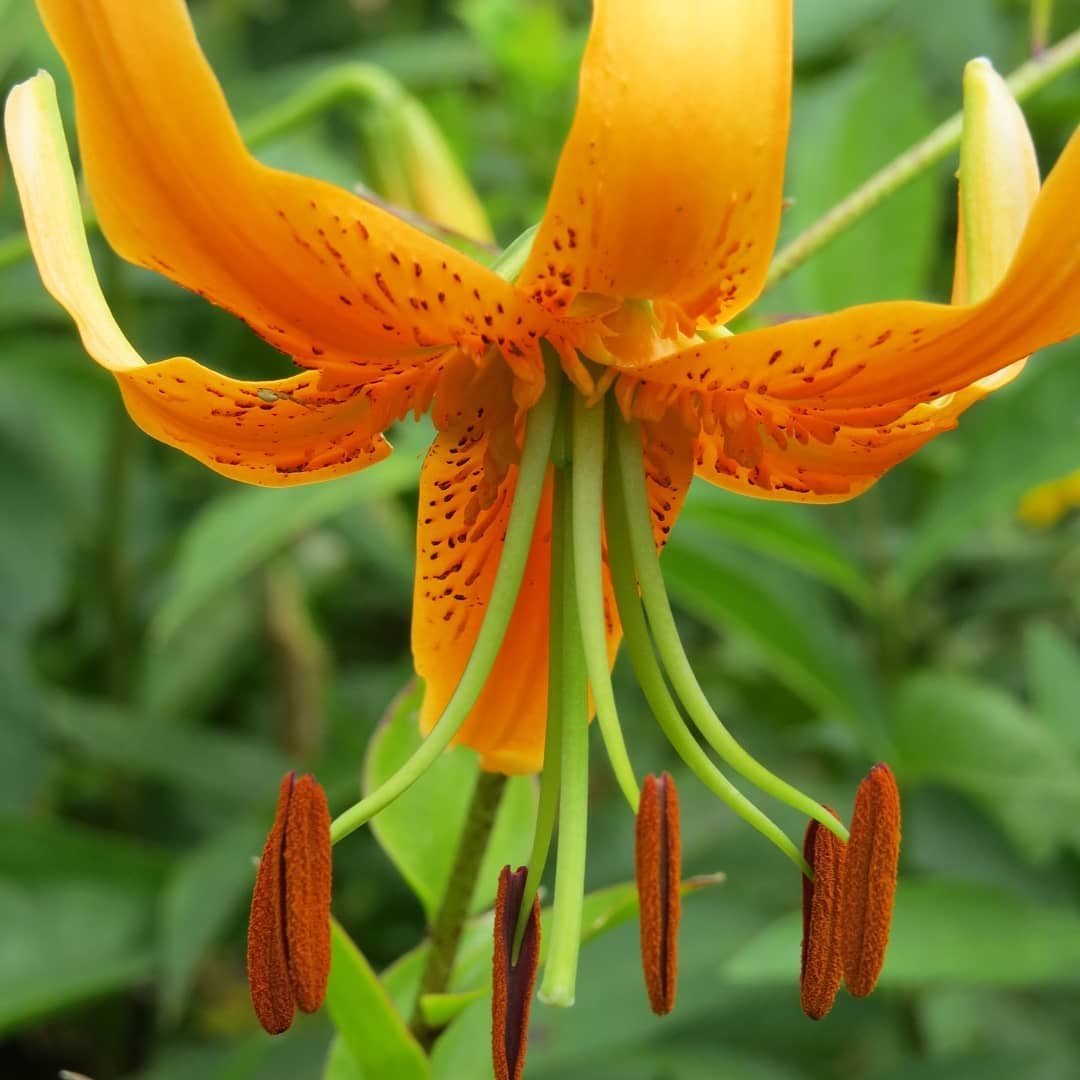
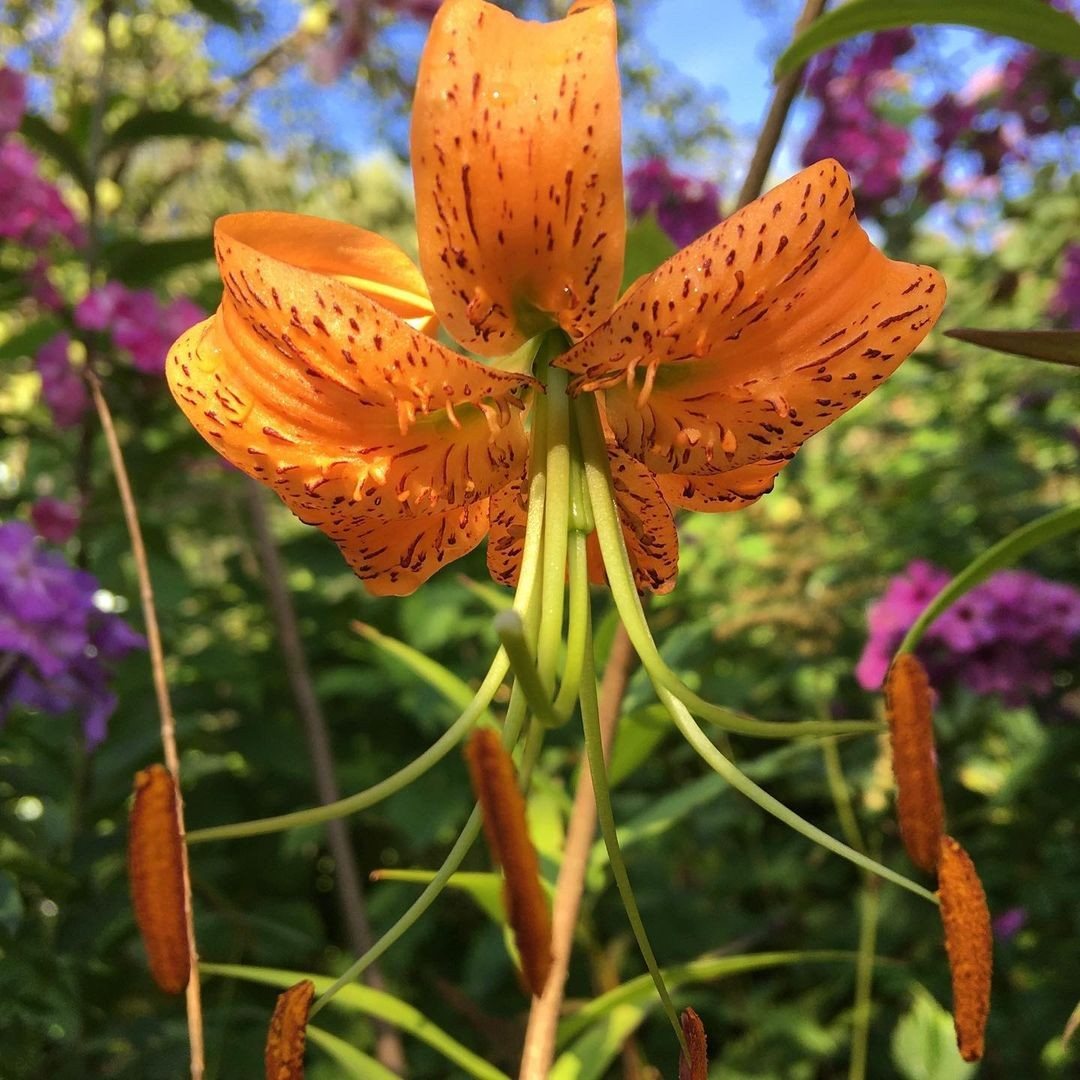
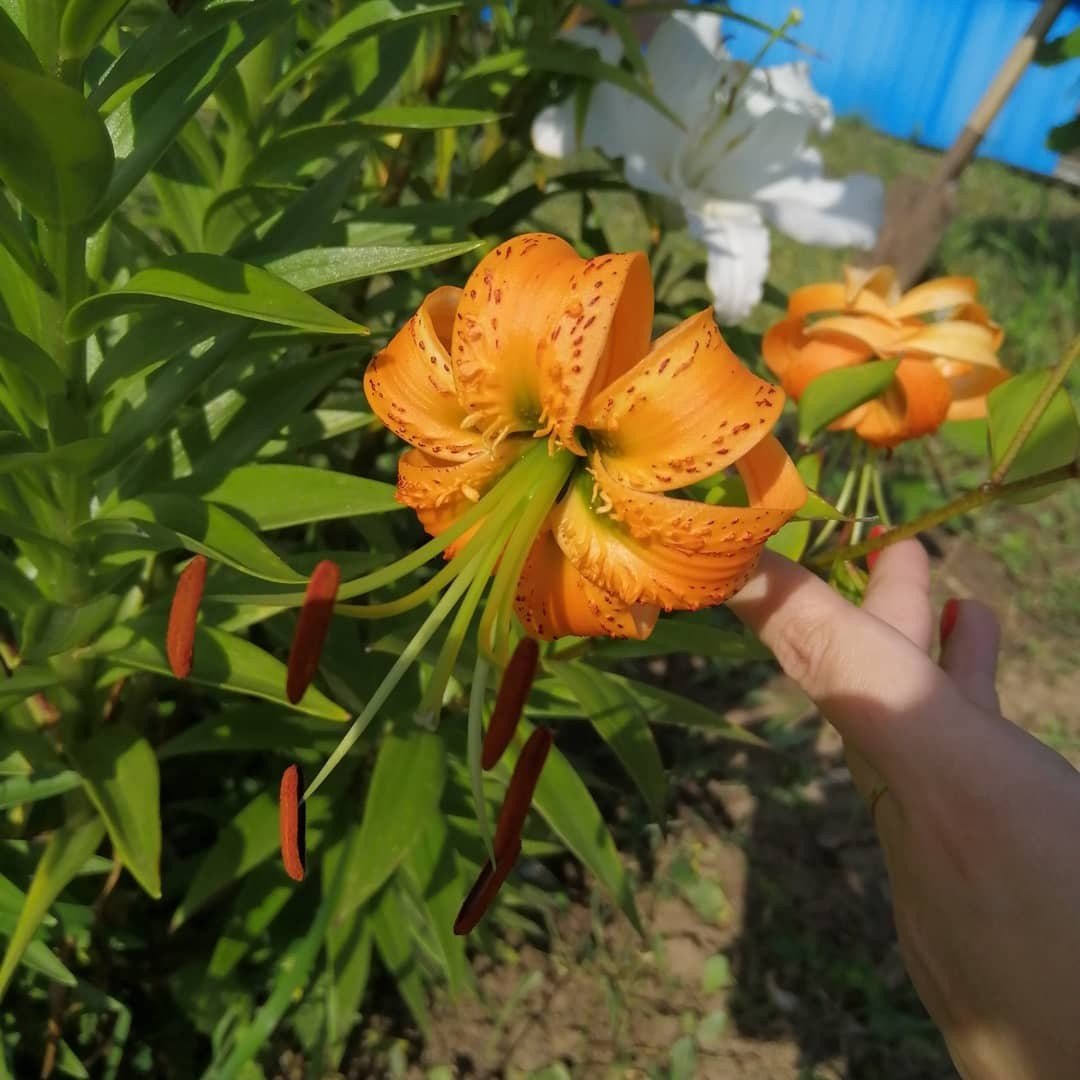
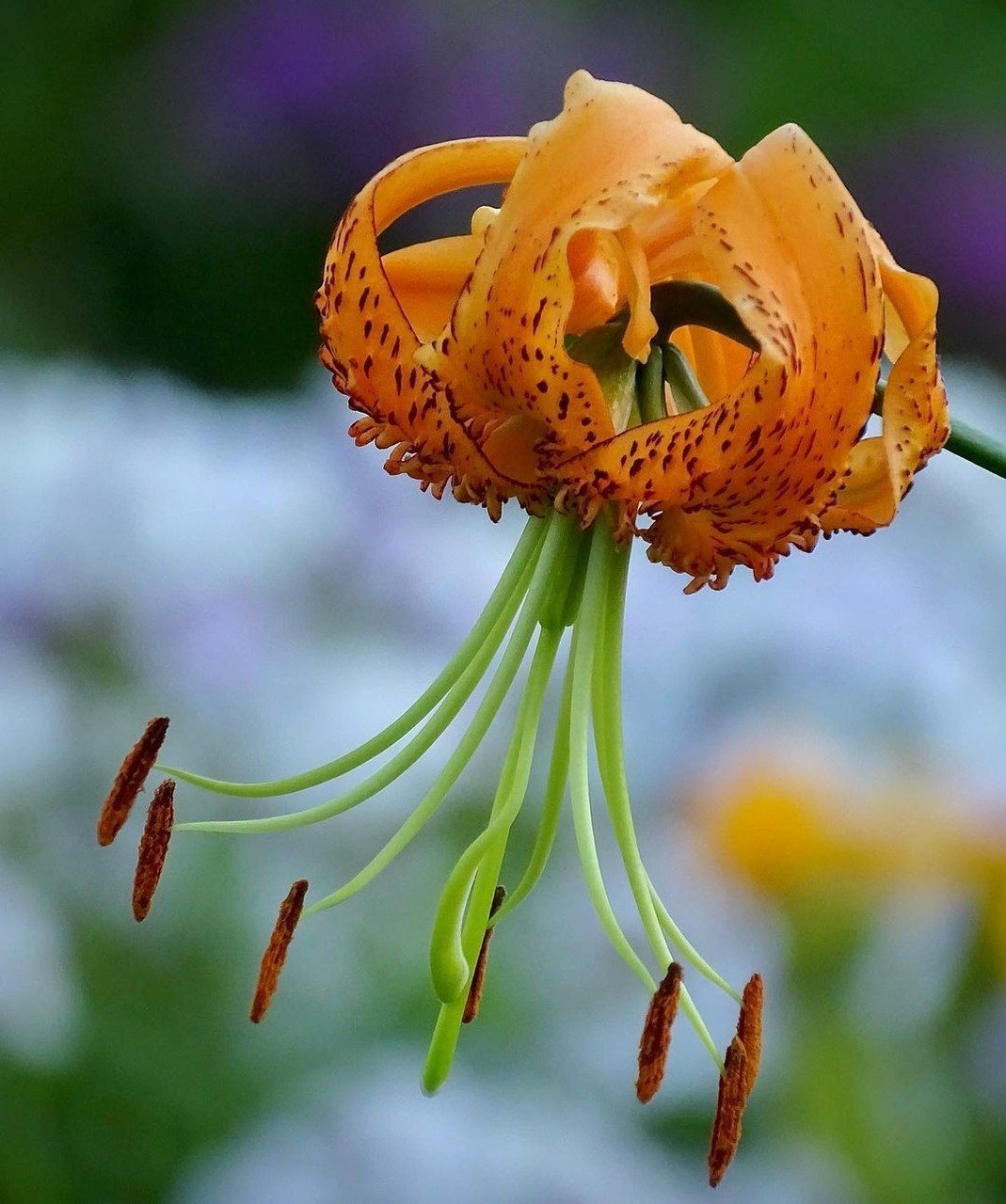
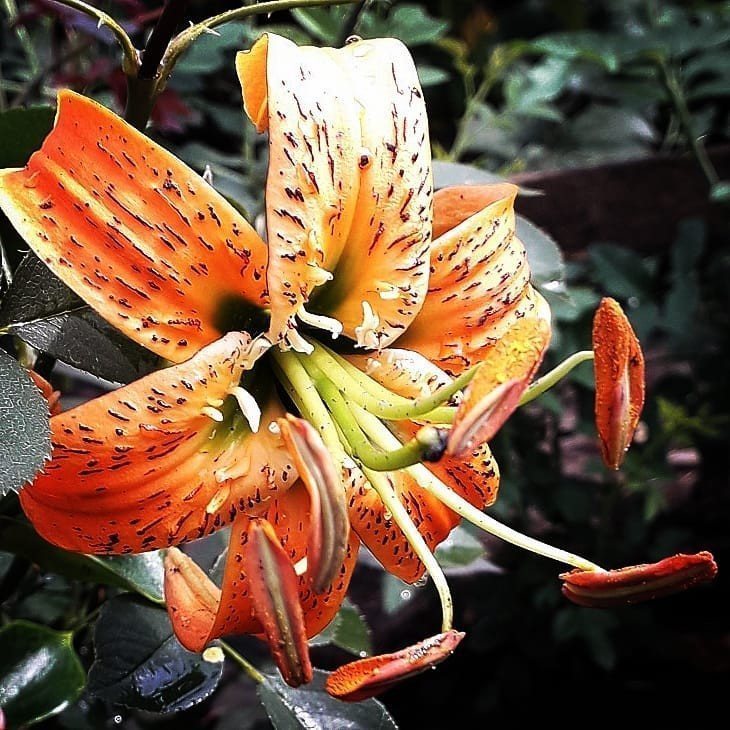





Leopard print
A heat-loving species that requires greenhouse and greenhouse growing conditions. The flowers are turban-shaped. Their color is yellow-red with thick, large specks. The height of the lily shoot is 90-150 cm; up to 10 buds are formed on it.
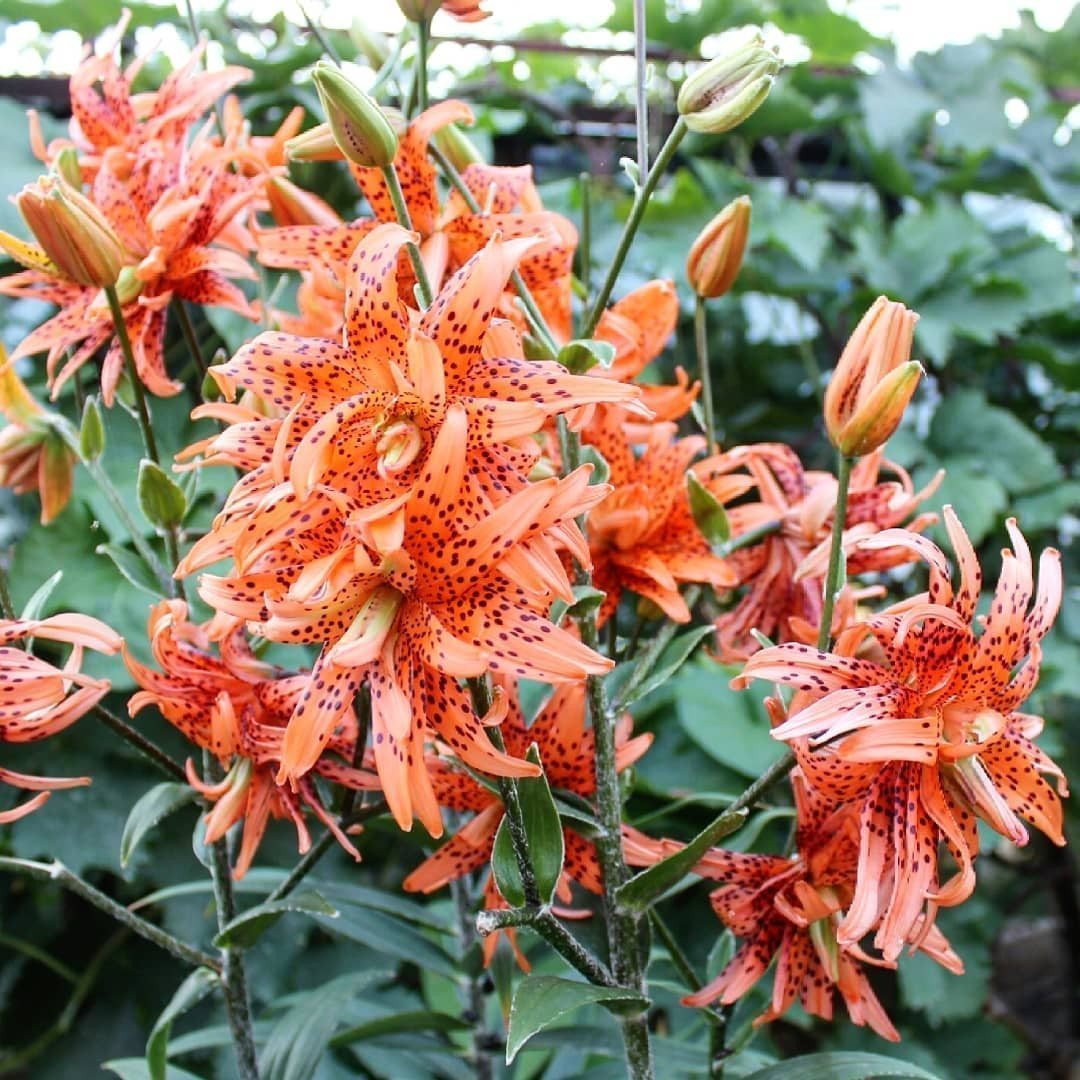
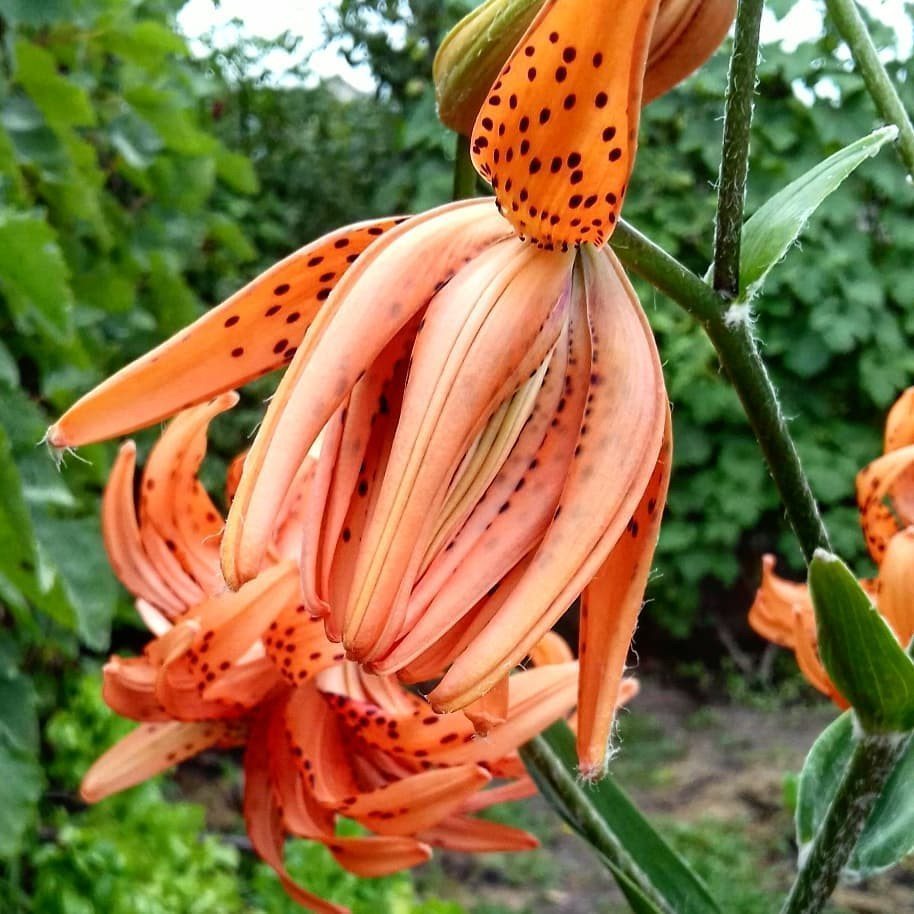
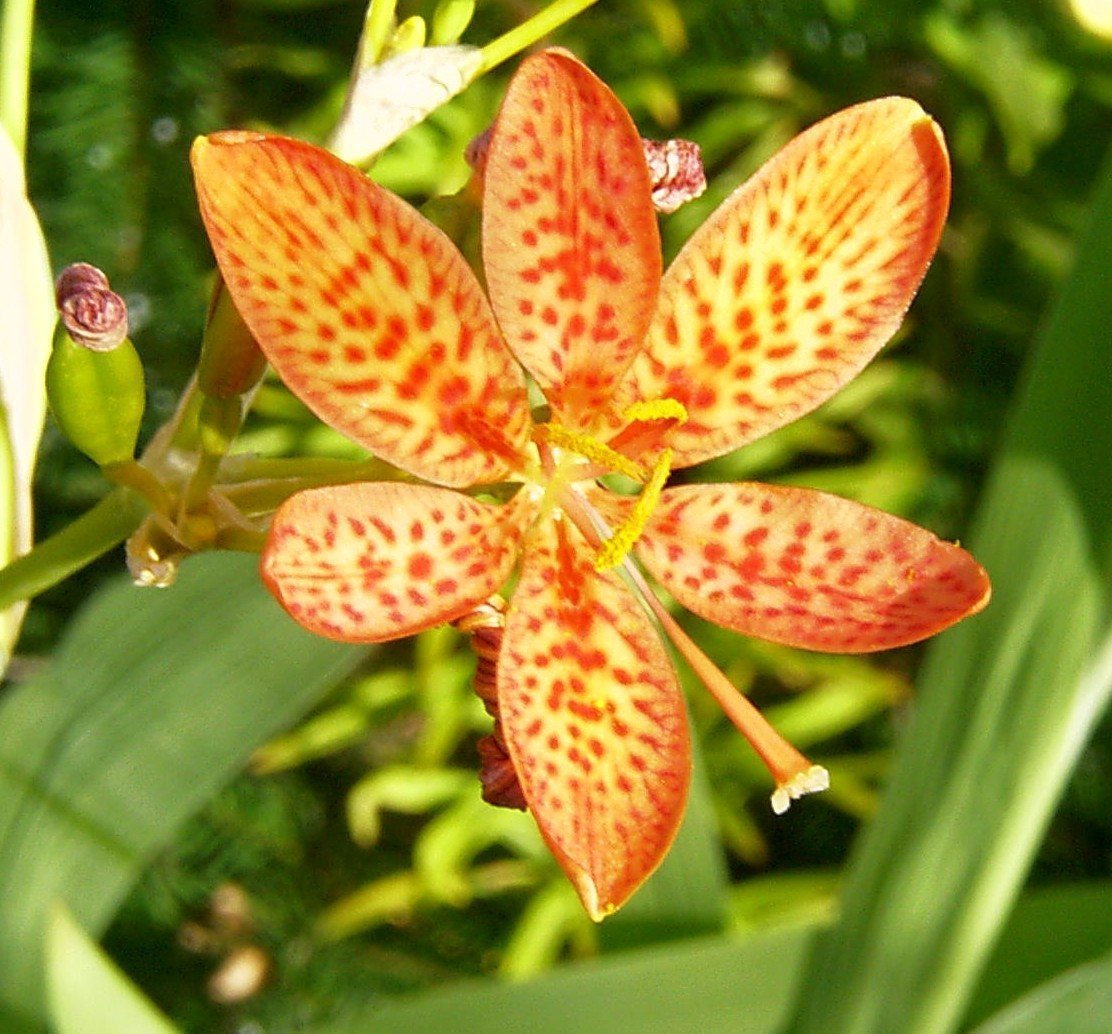
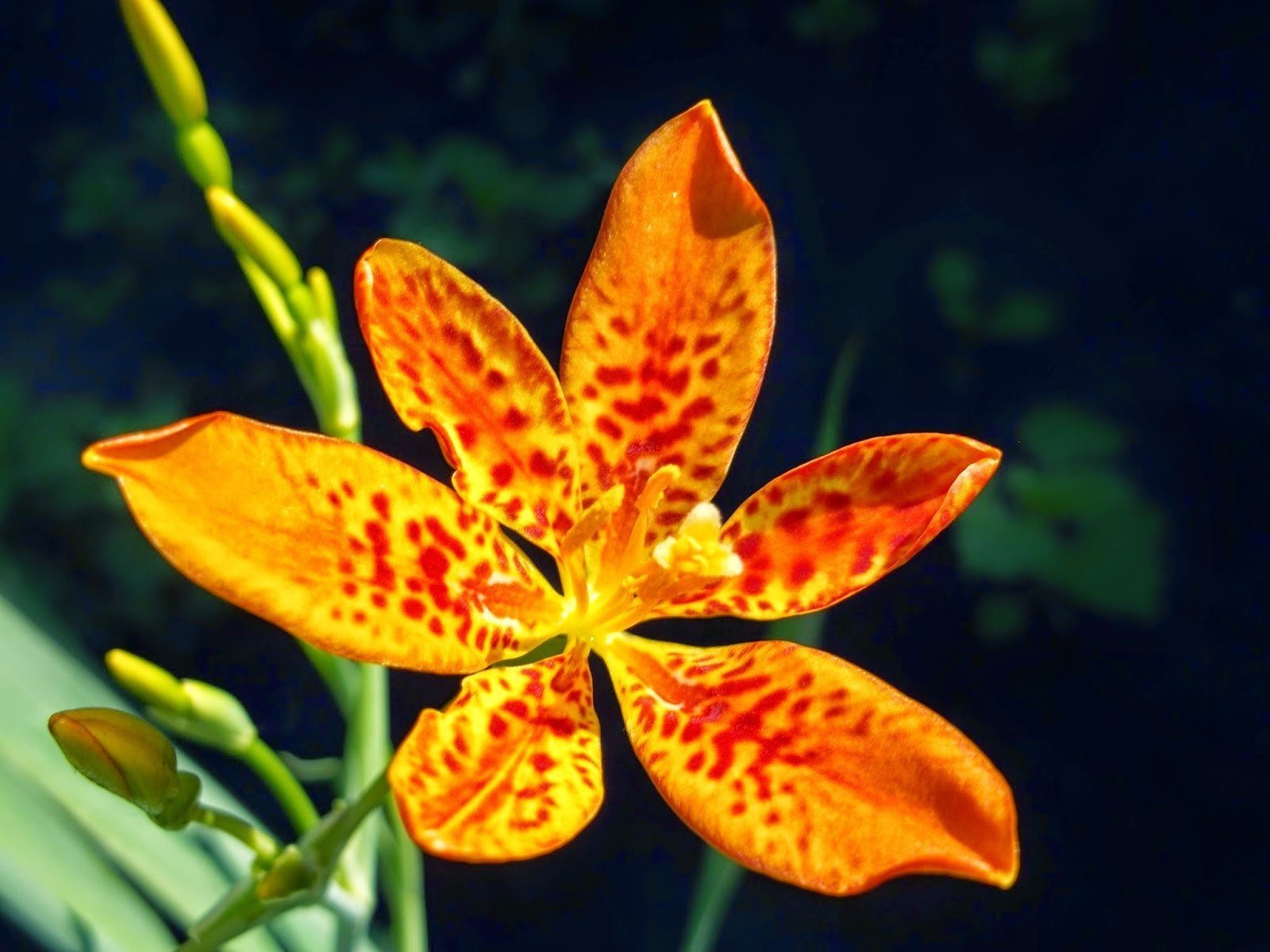
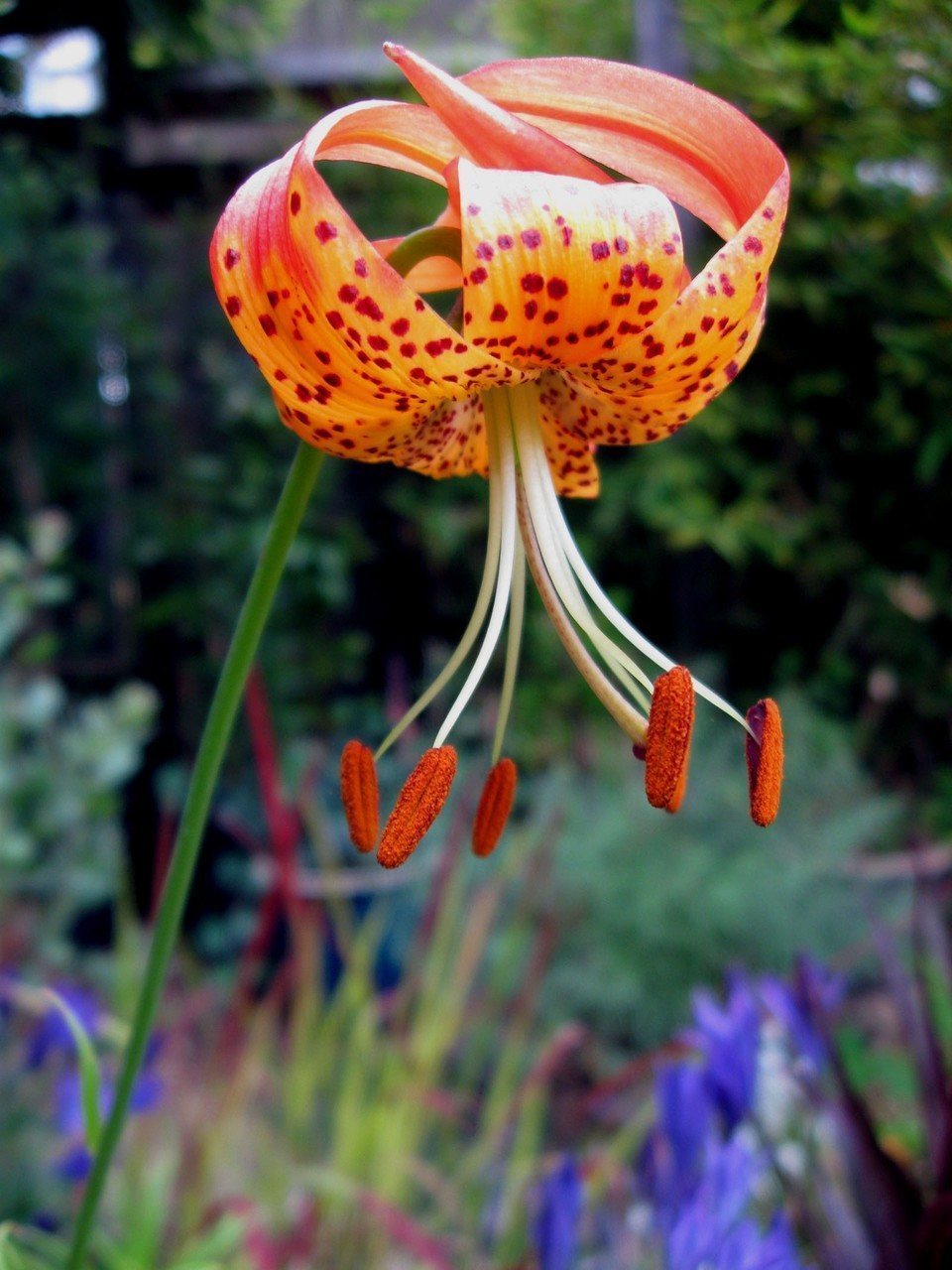





Tiger
A popular species crop characterized by a red-orange hue of flowers. The petals have large mottling. The height of the plant reaches 120 cm. Flowering occurs in the second half of summer.
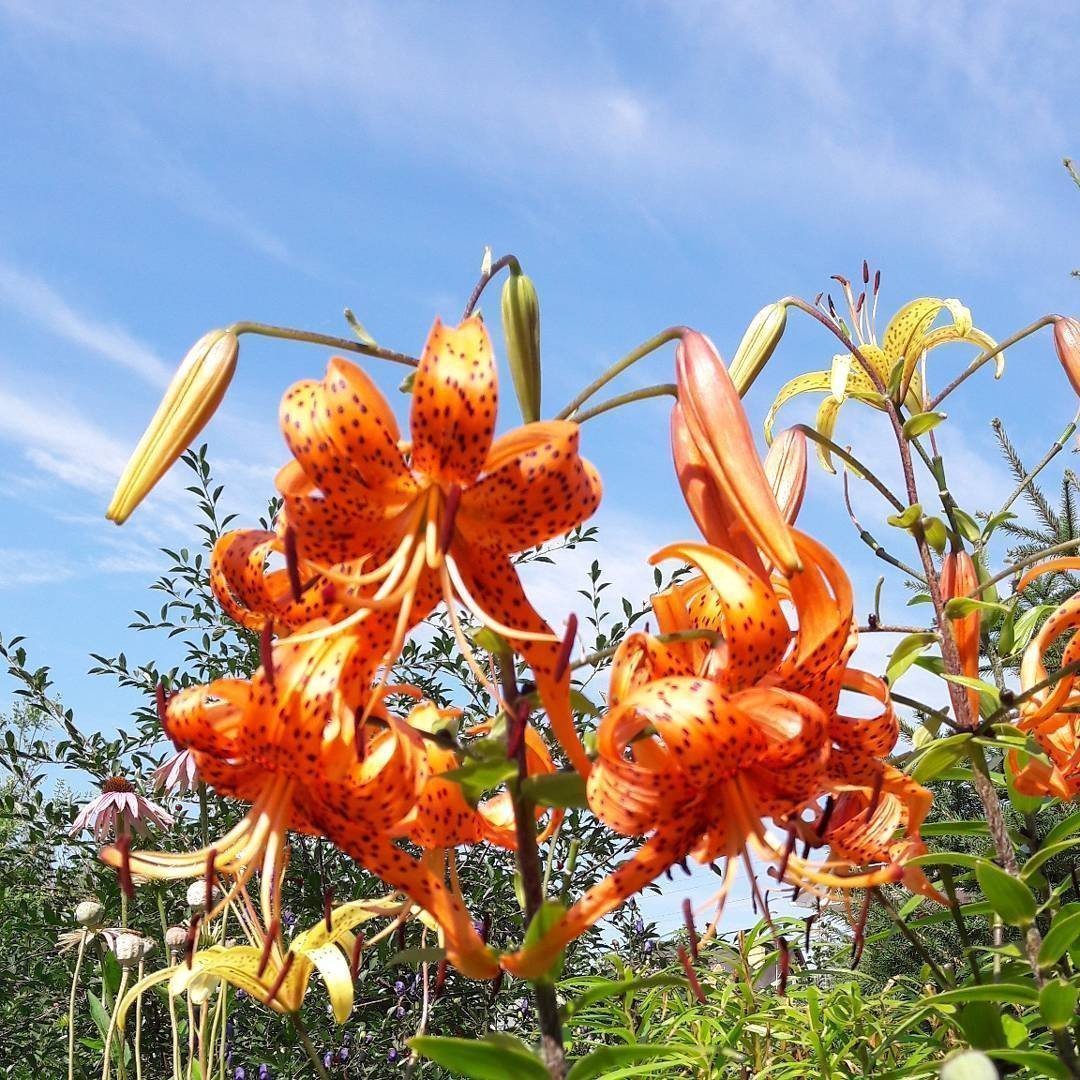


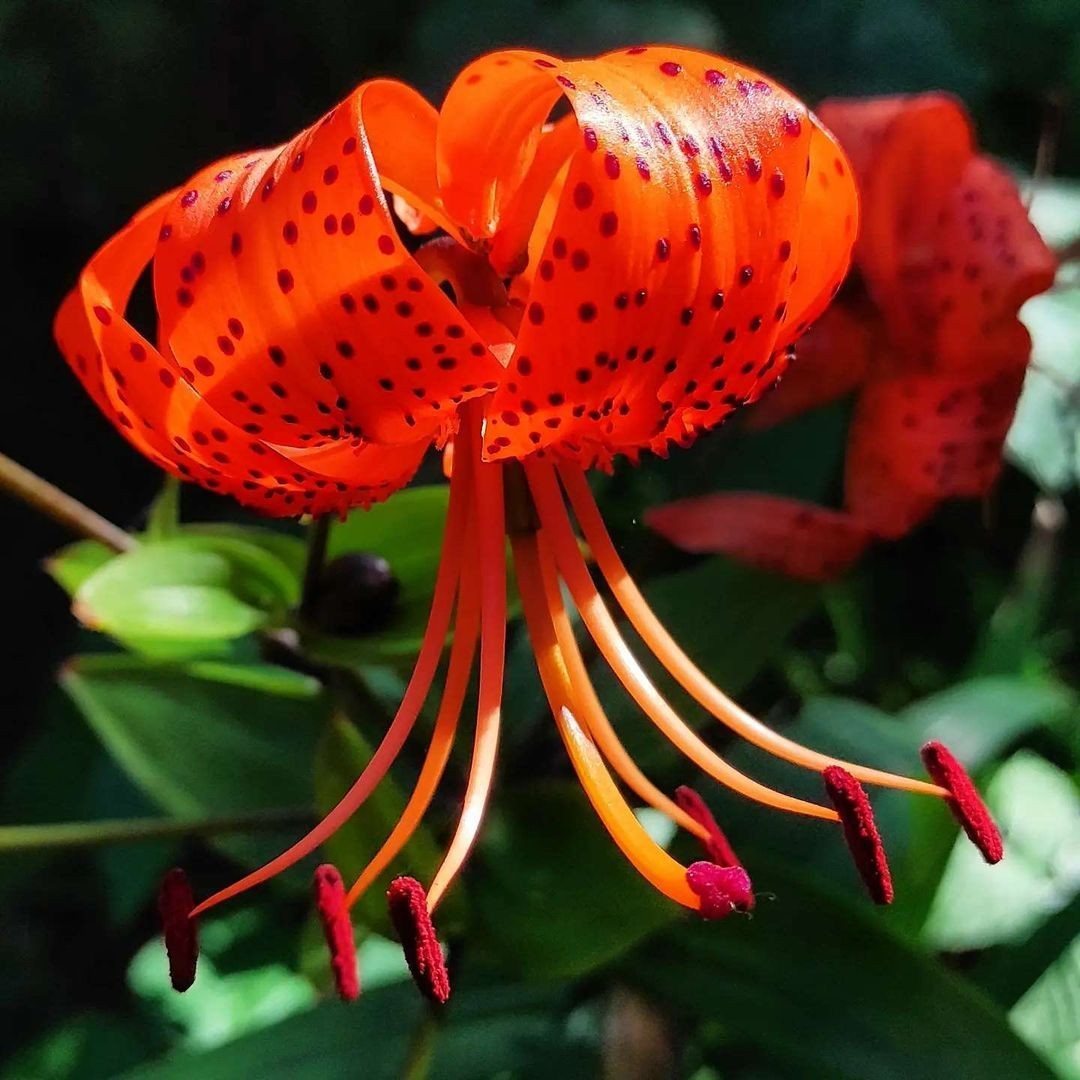
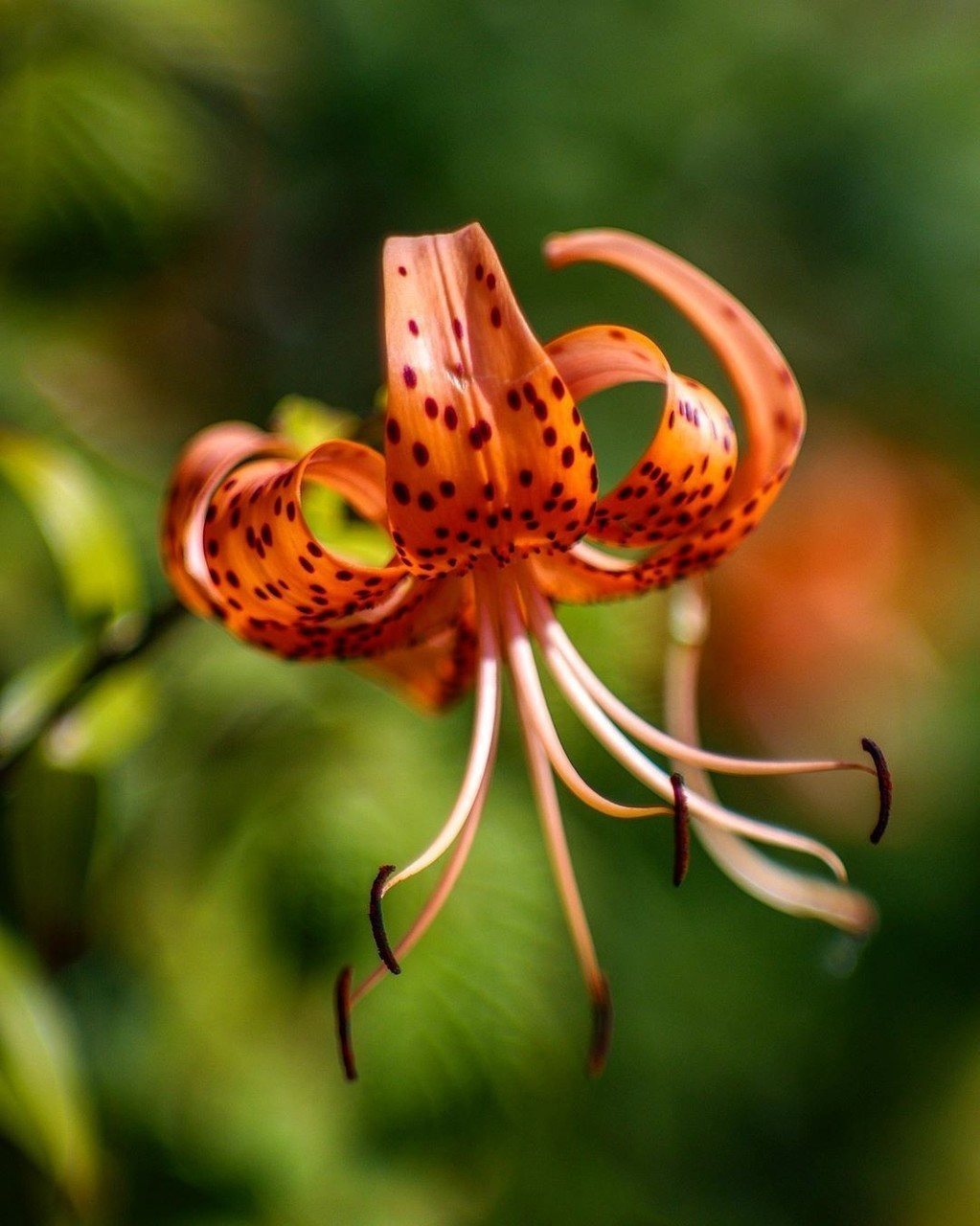





Golden
This species culture has cup-shaped flowers of a white hue. The petals have a yellow stripe and brown specks. The height of the lily reaches 1.5 m. Flowering begins in mid-August and lasts until the end of the first ten days of September.
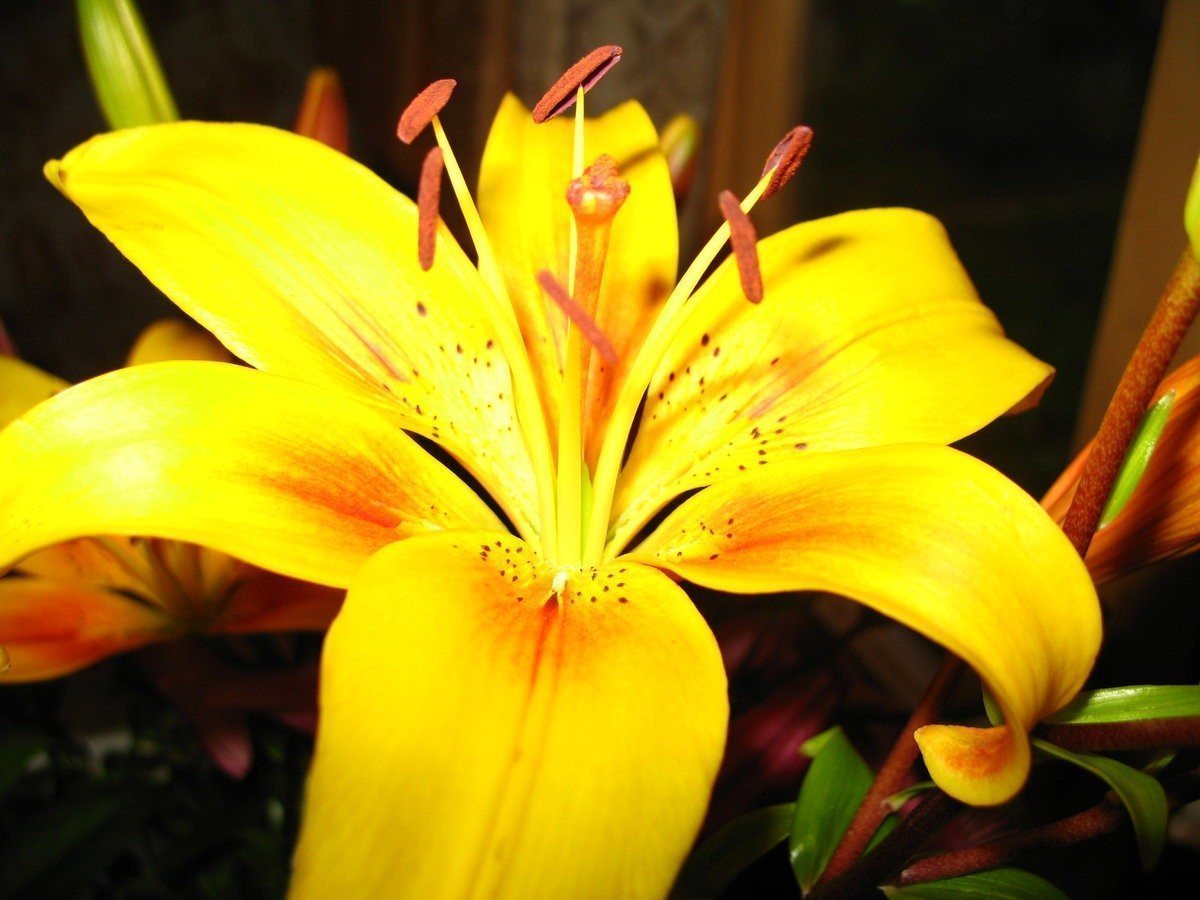
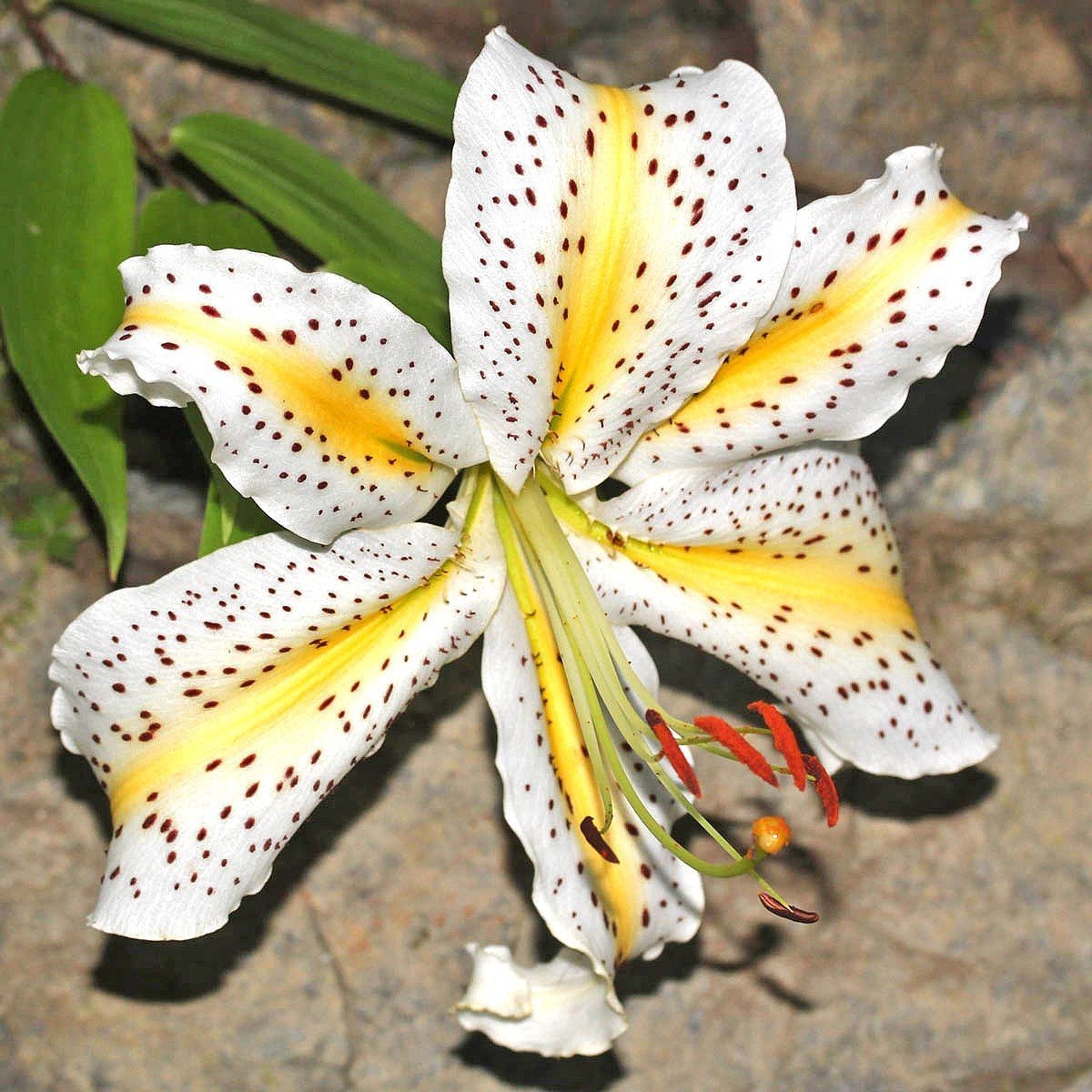

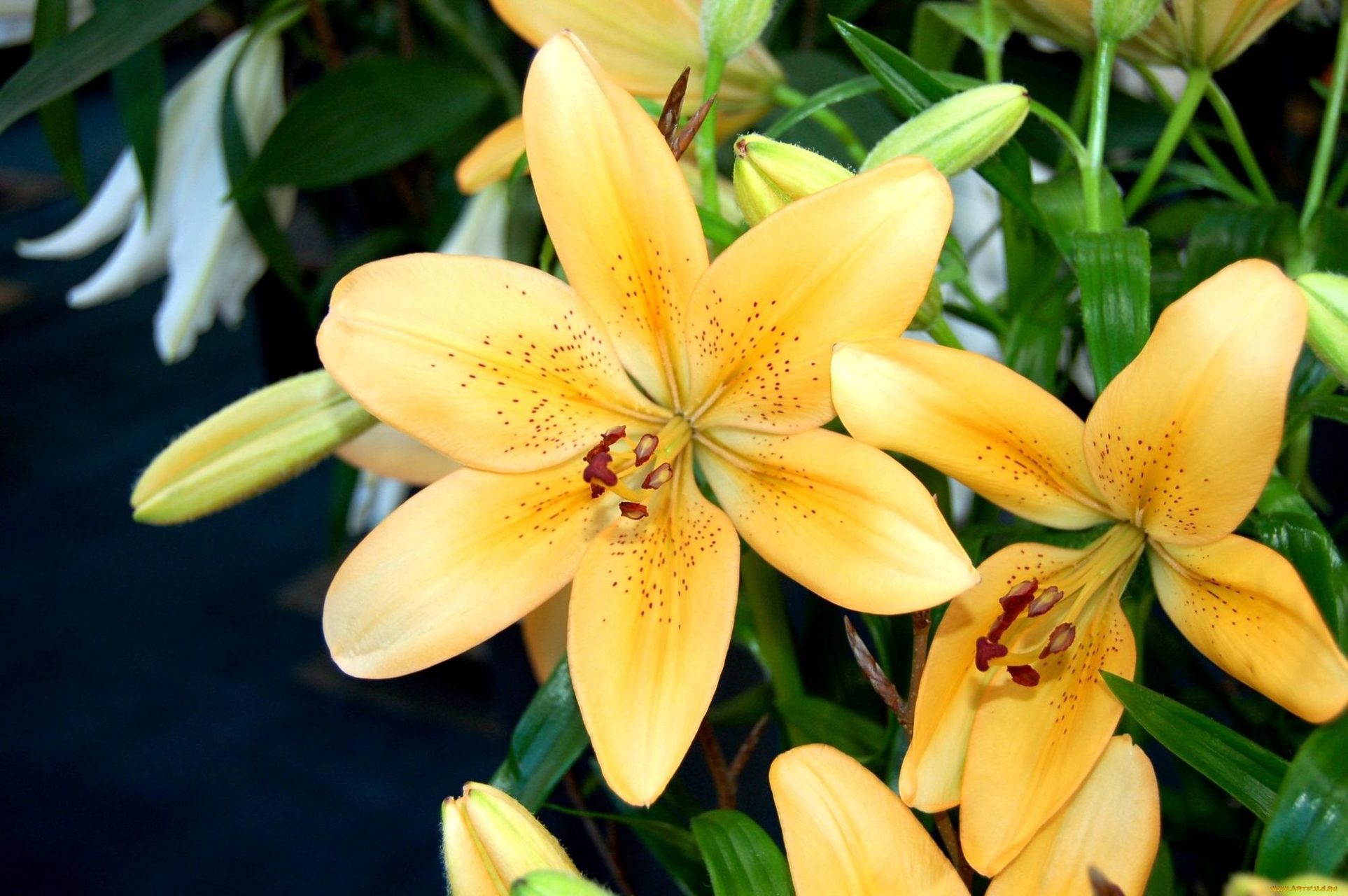
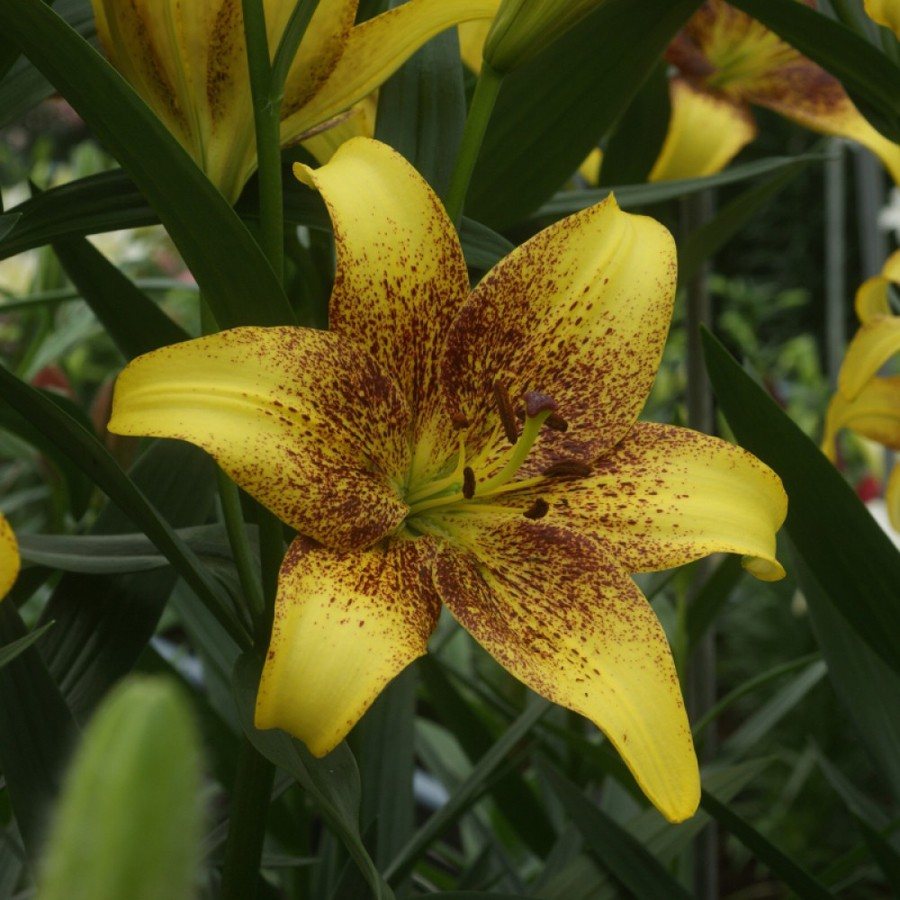





Daurskaya
The species is characterized by cup-shaped flowers, up to 14 cm in diameter. They have a red-orange color. The height of the stem reaches 120 cm. Up to 7 buds are formed on it. Flowering of the Dahurian lily begins in mid-June and lasts about 3 weeks.
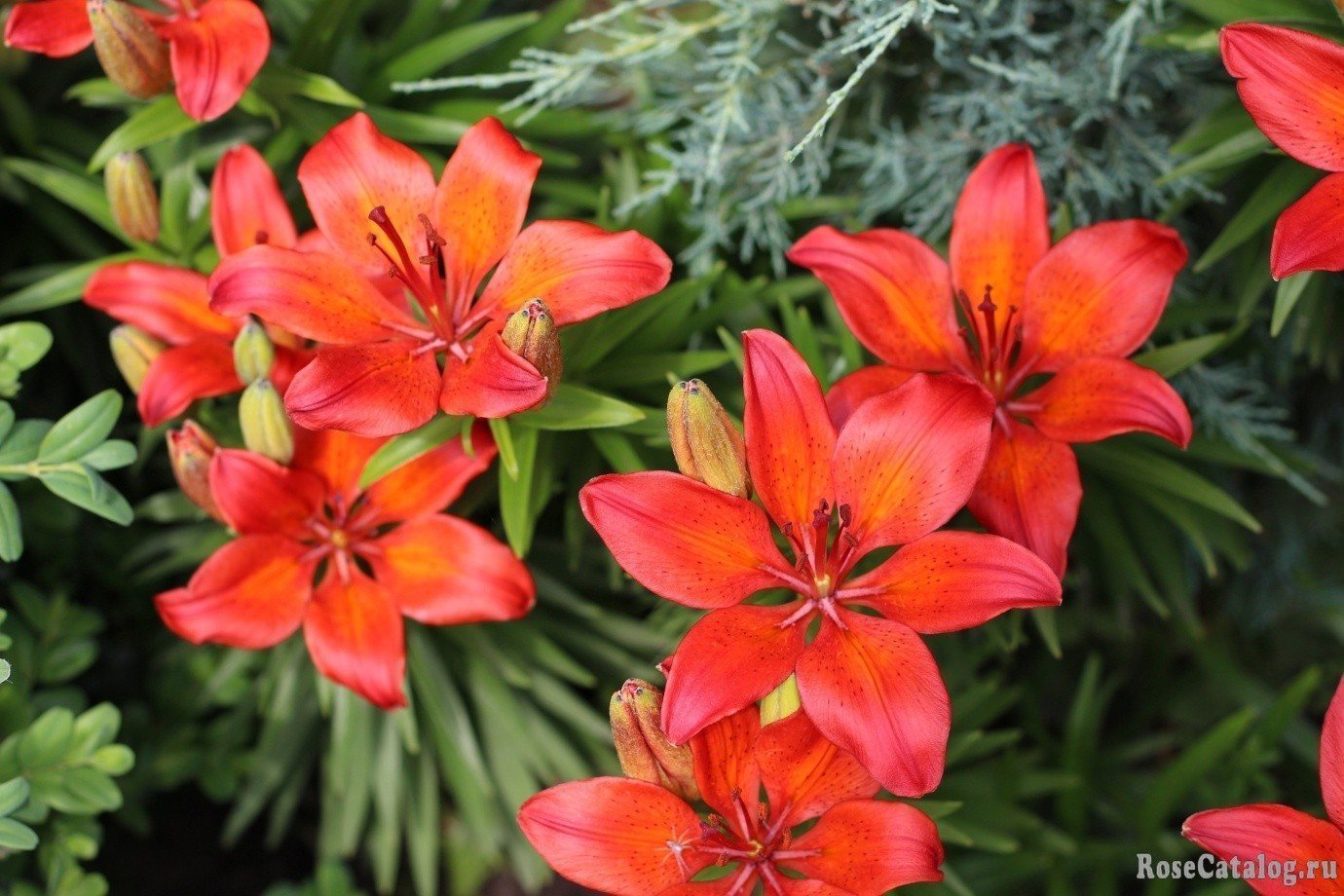
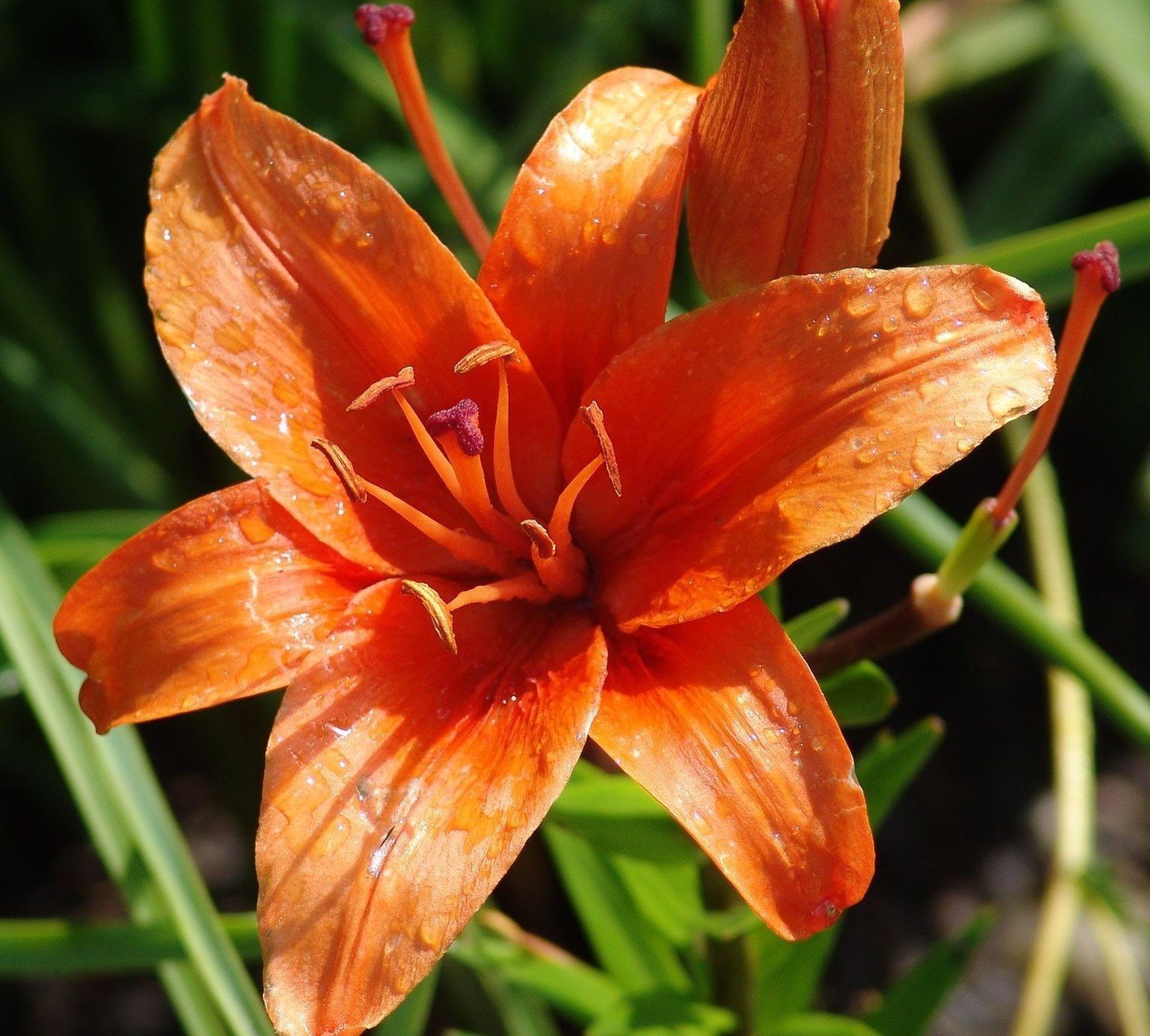
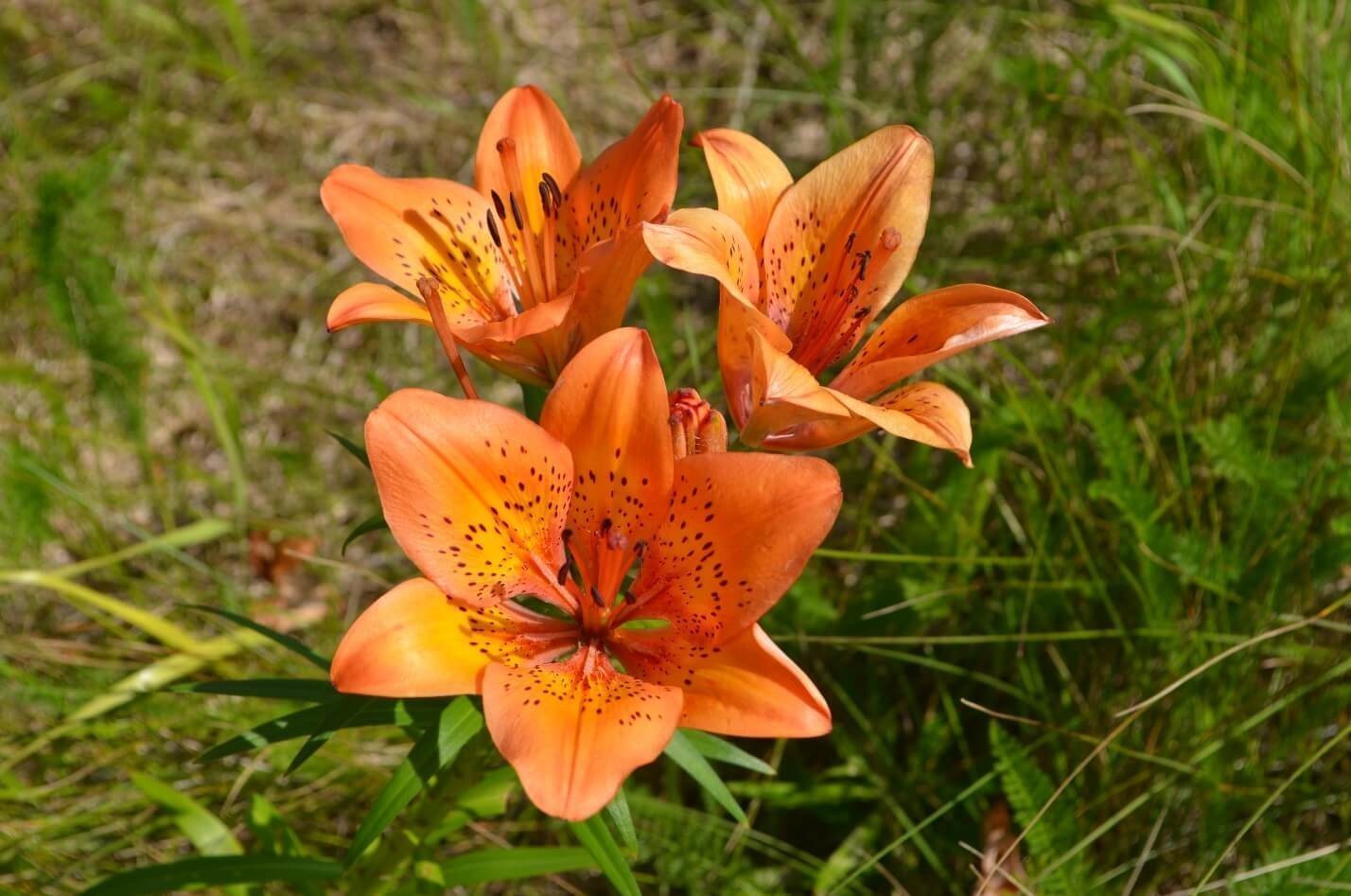
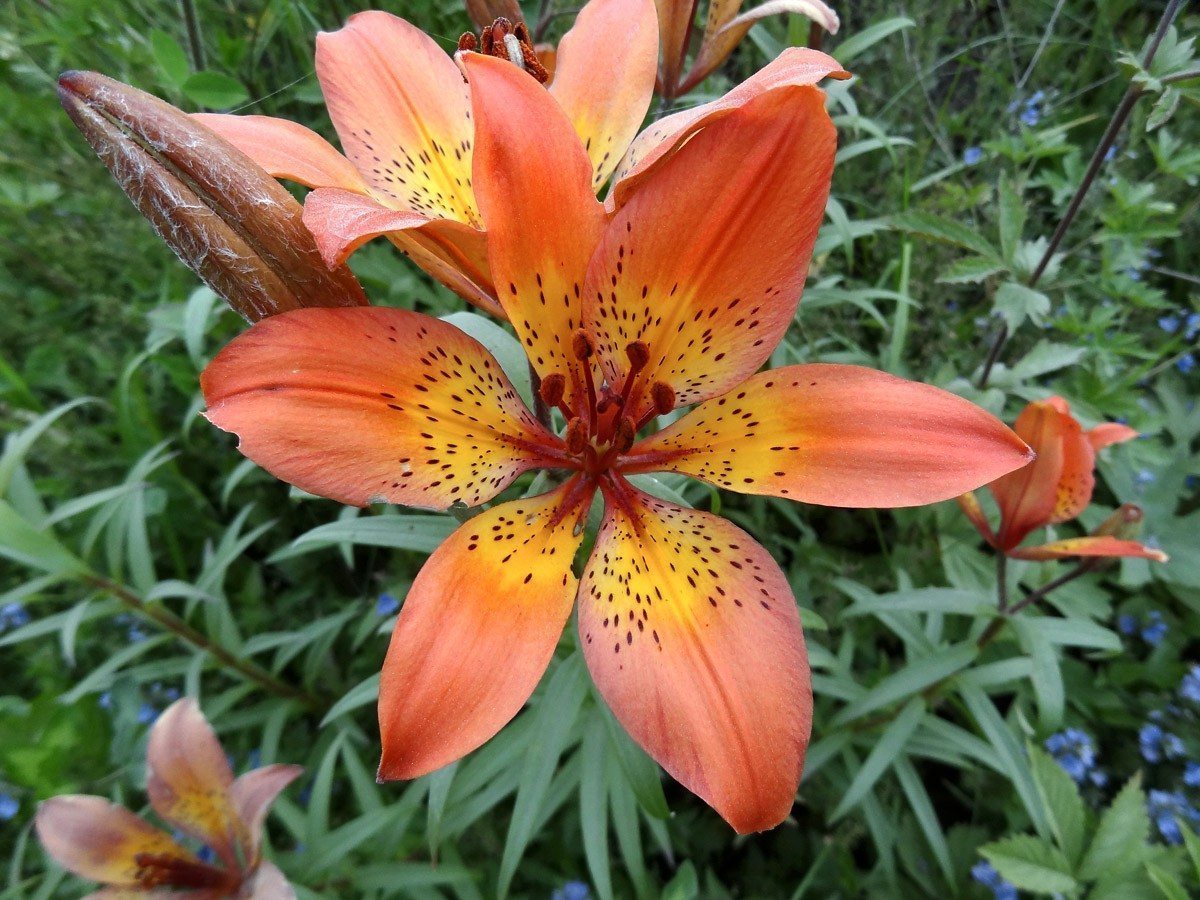
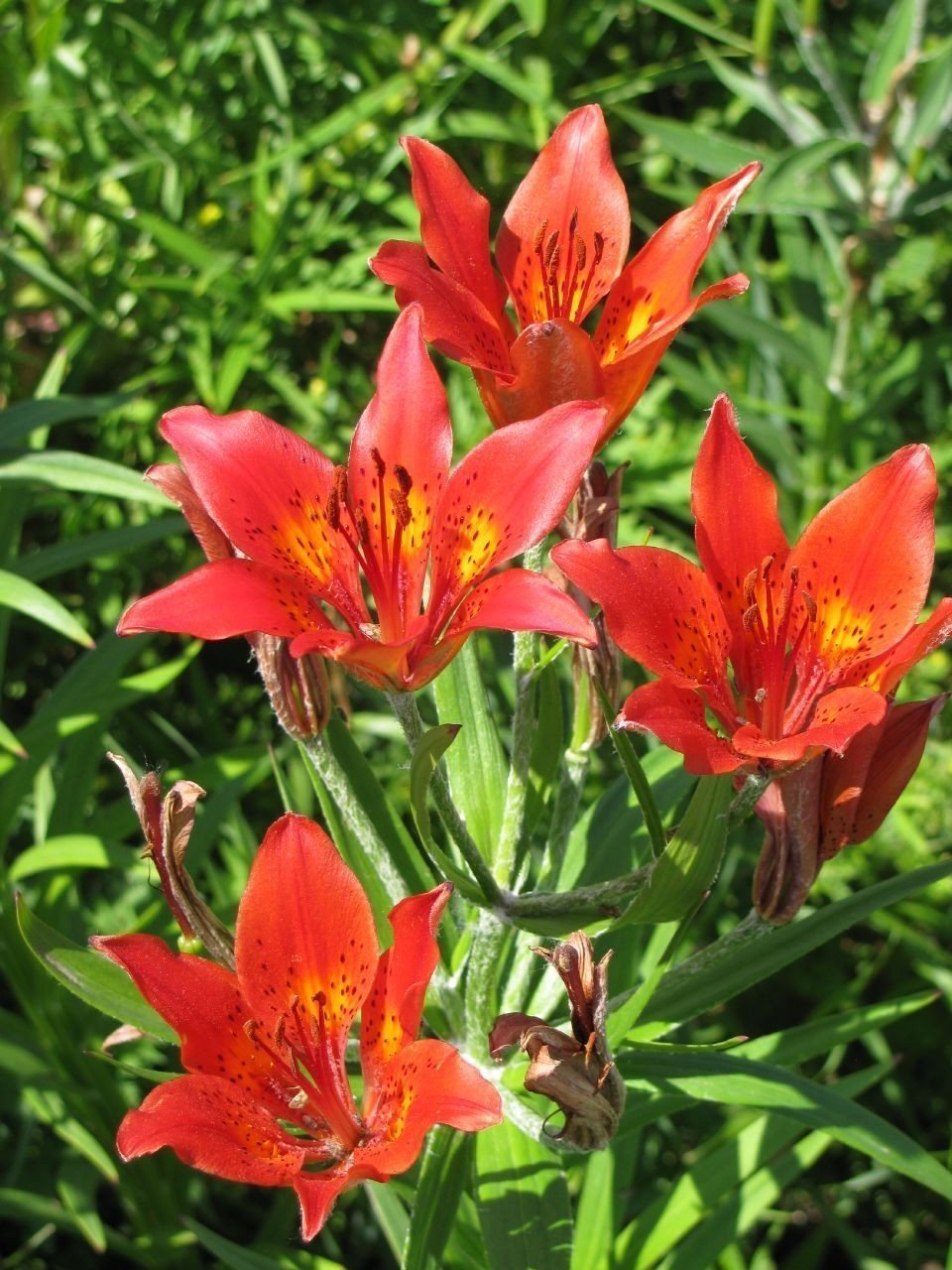





Water
There is also a water lily or nymphea. She is rightfully considered the queen of reservoirs. These plants bloom throughout the summer. They must first be planted in containers and then buried in a pond. Nymphaeas are recommended for decorating ponds. The lifespan of their flowers is 4 days. When purchasing a plant in a store, you must take into account whether it belongs to a specific species. This allows you to determine the optimal planting depth.
Main types of nymphs:
- Dwarf. They are considered the smallest. The recommended planting depth is 50 cm. The size of their flowers reaches 14 cm.
- Average. These varieties are suitable for ponds with a depth of 60 cm. The diameter of their flowers is 19 cm.
- Large. These species can be planted at a depth of 1 m. They are characterized by large flowers, the diameter of which reaches 25 cm.
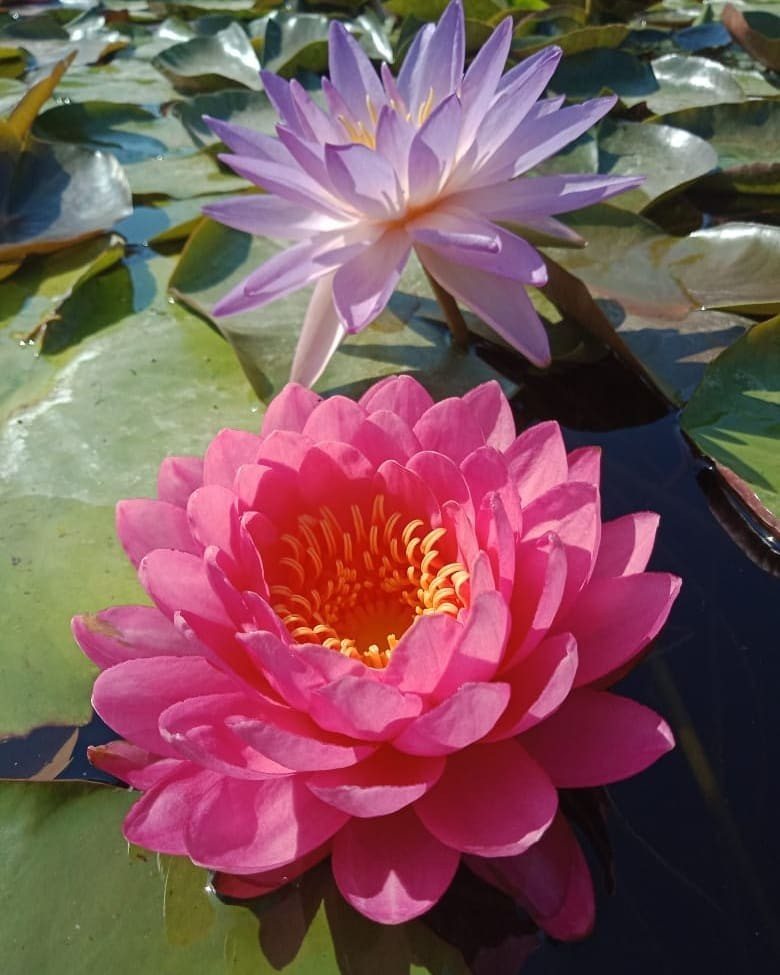
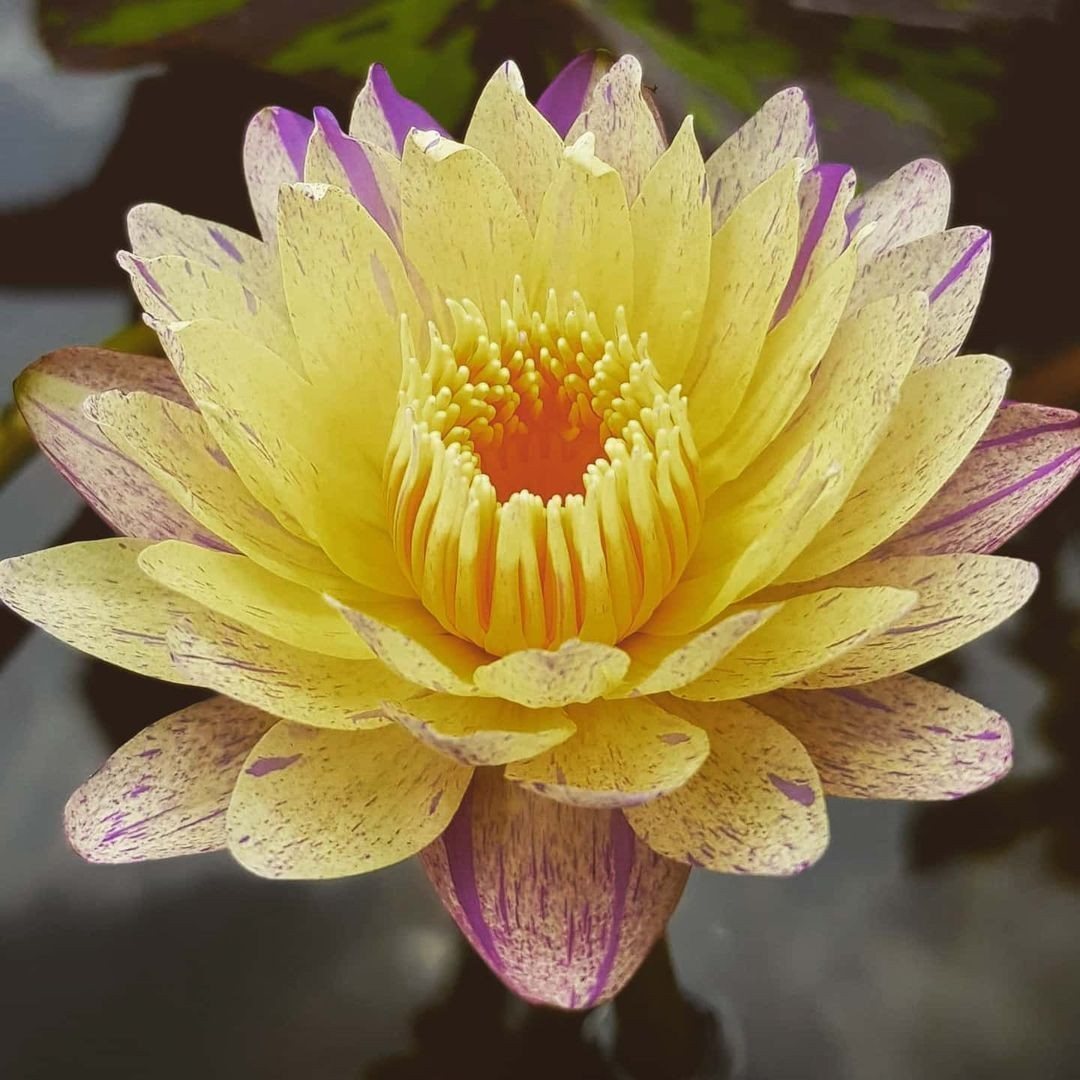
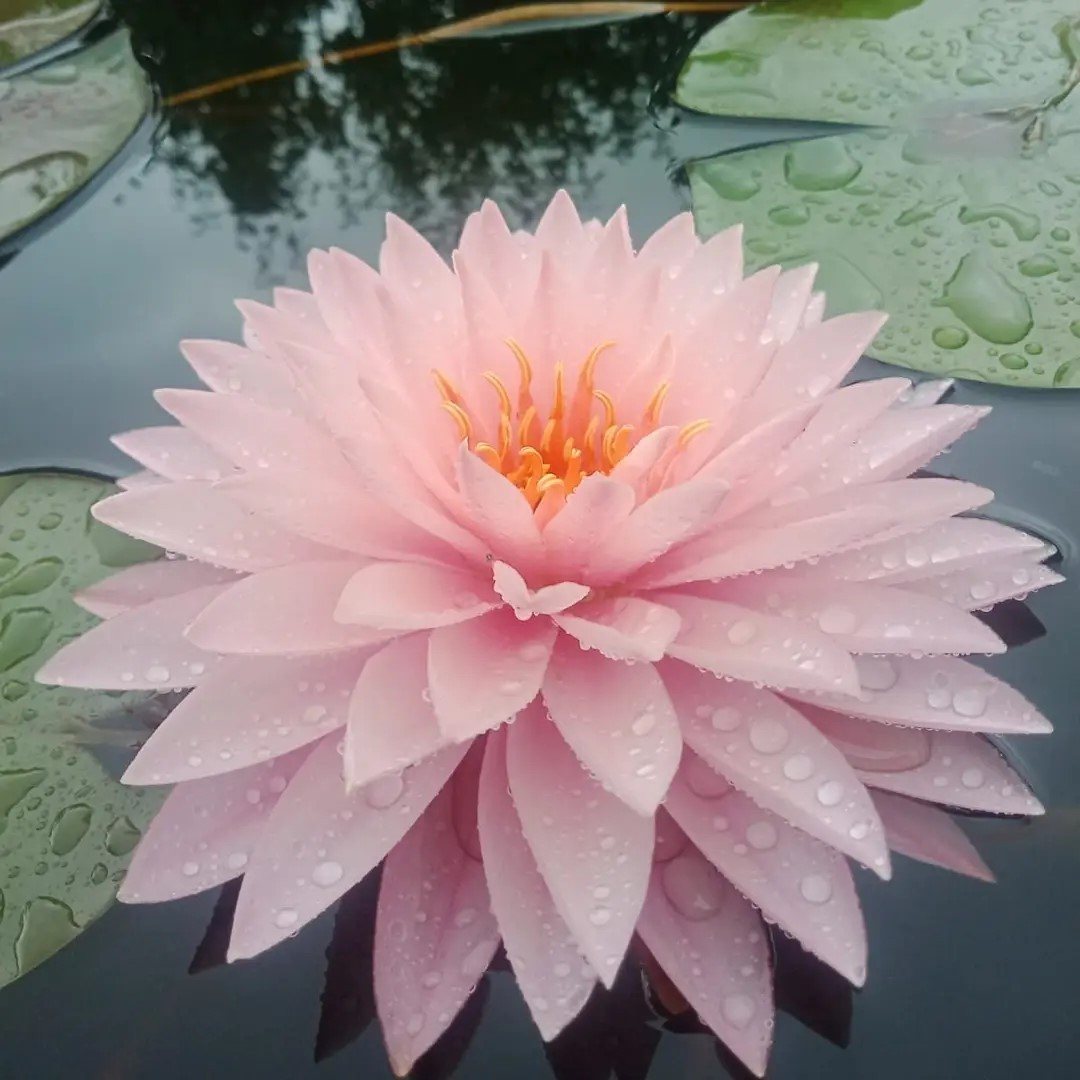
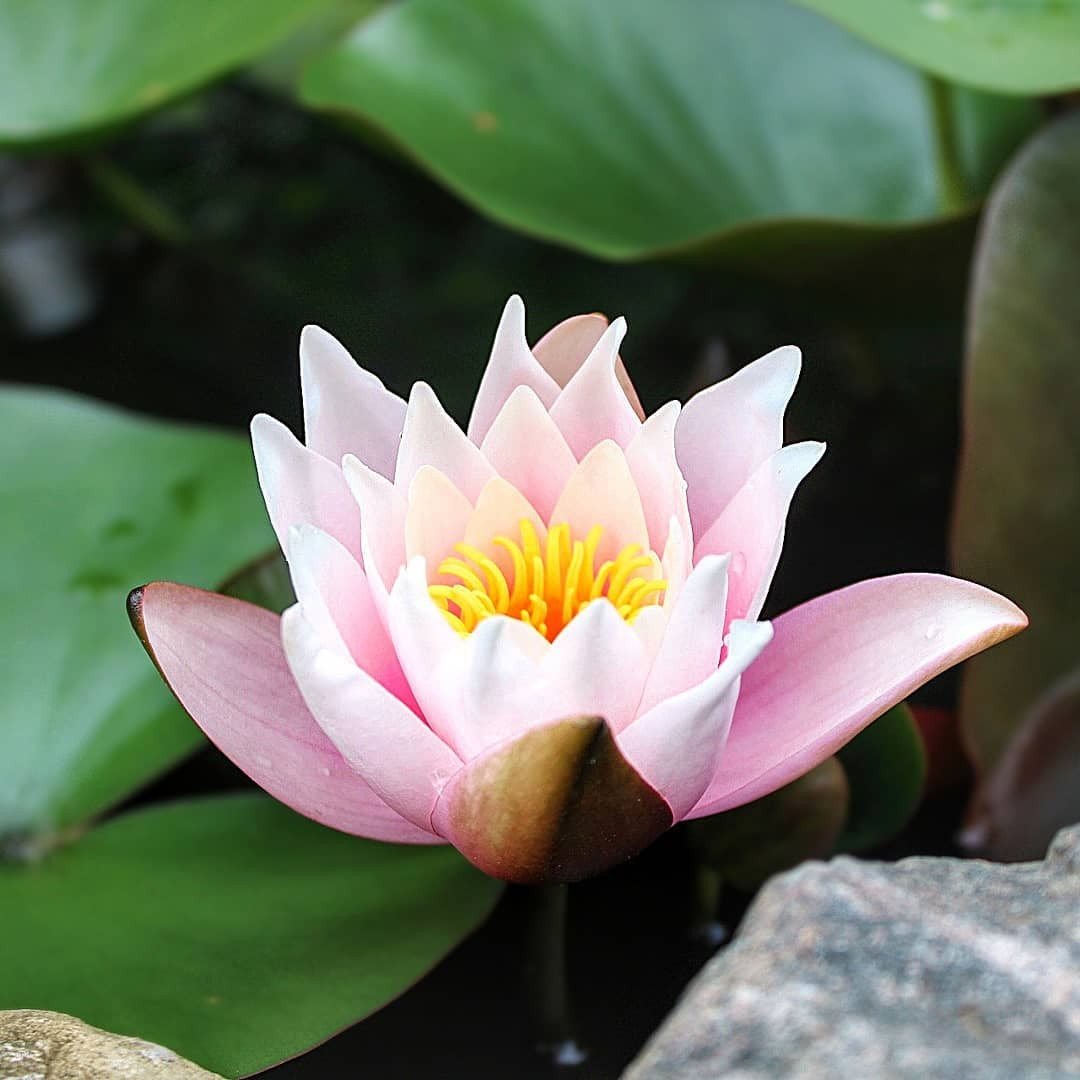

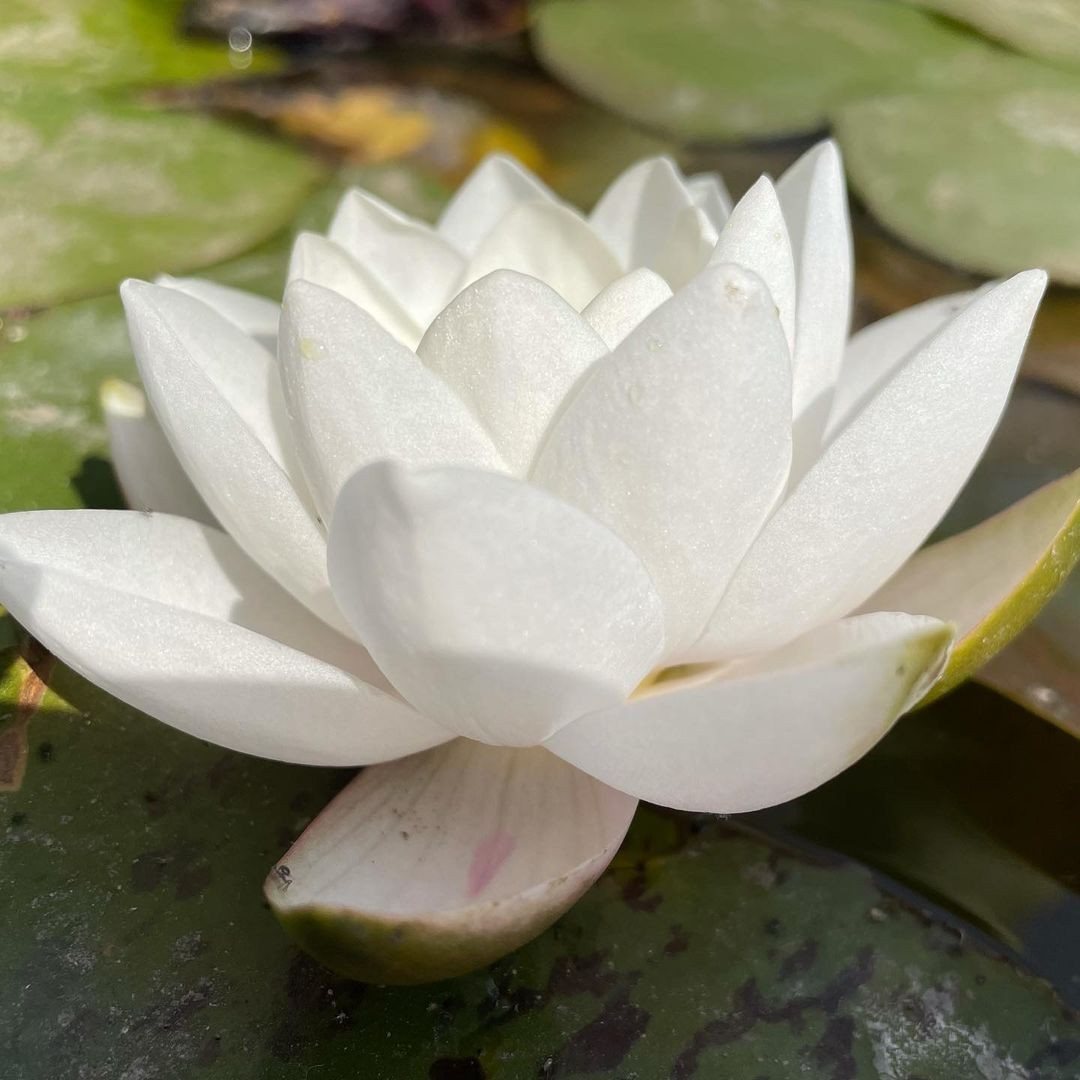

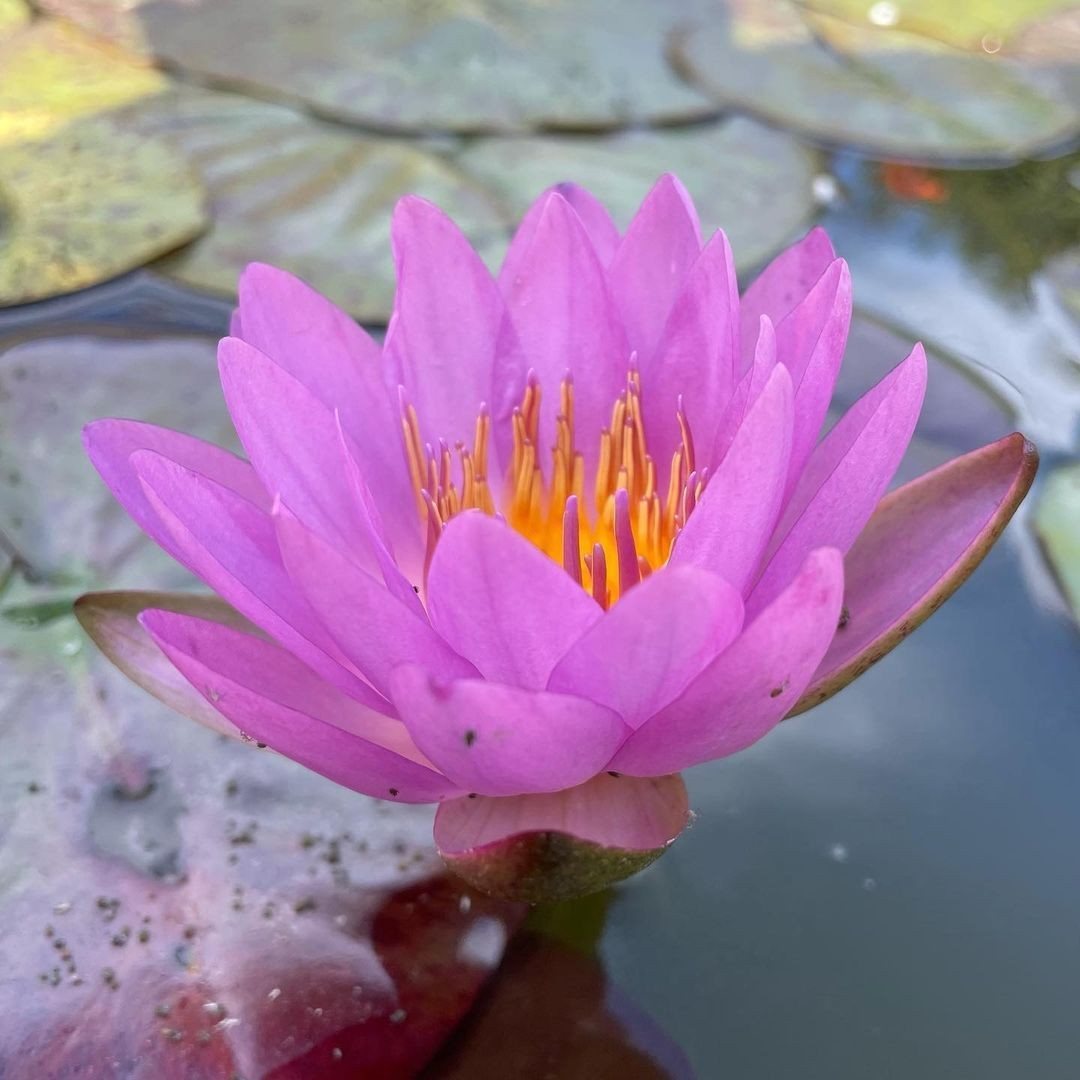
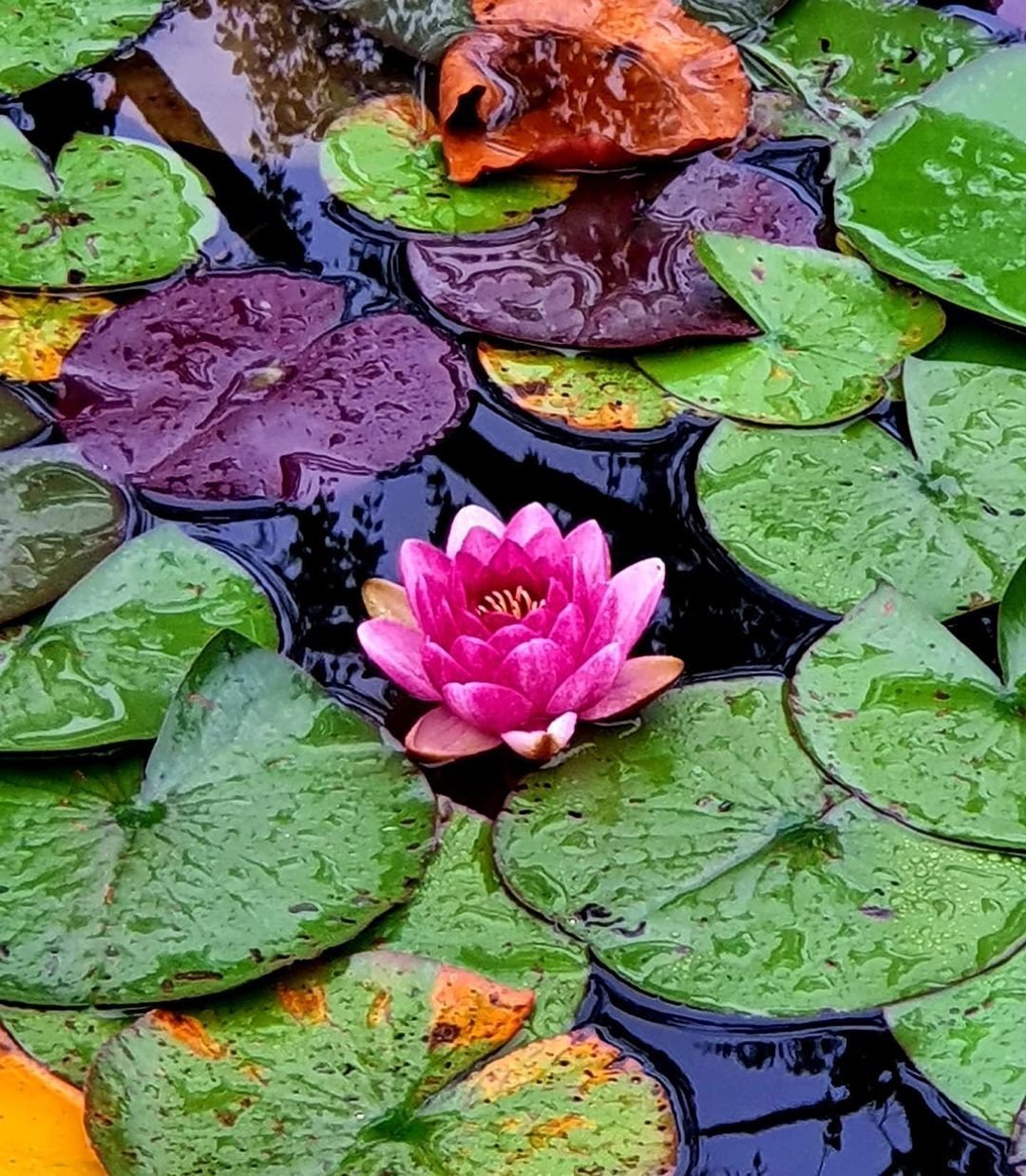
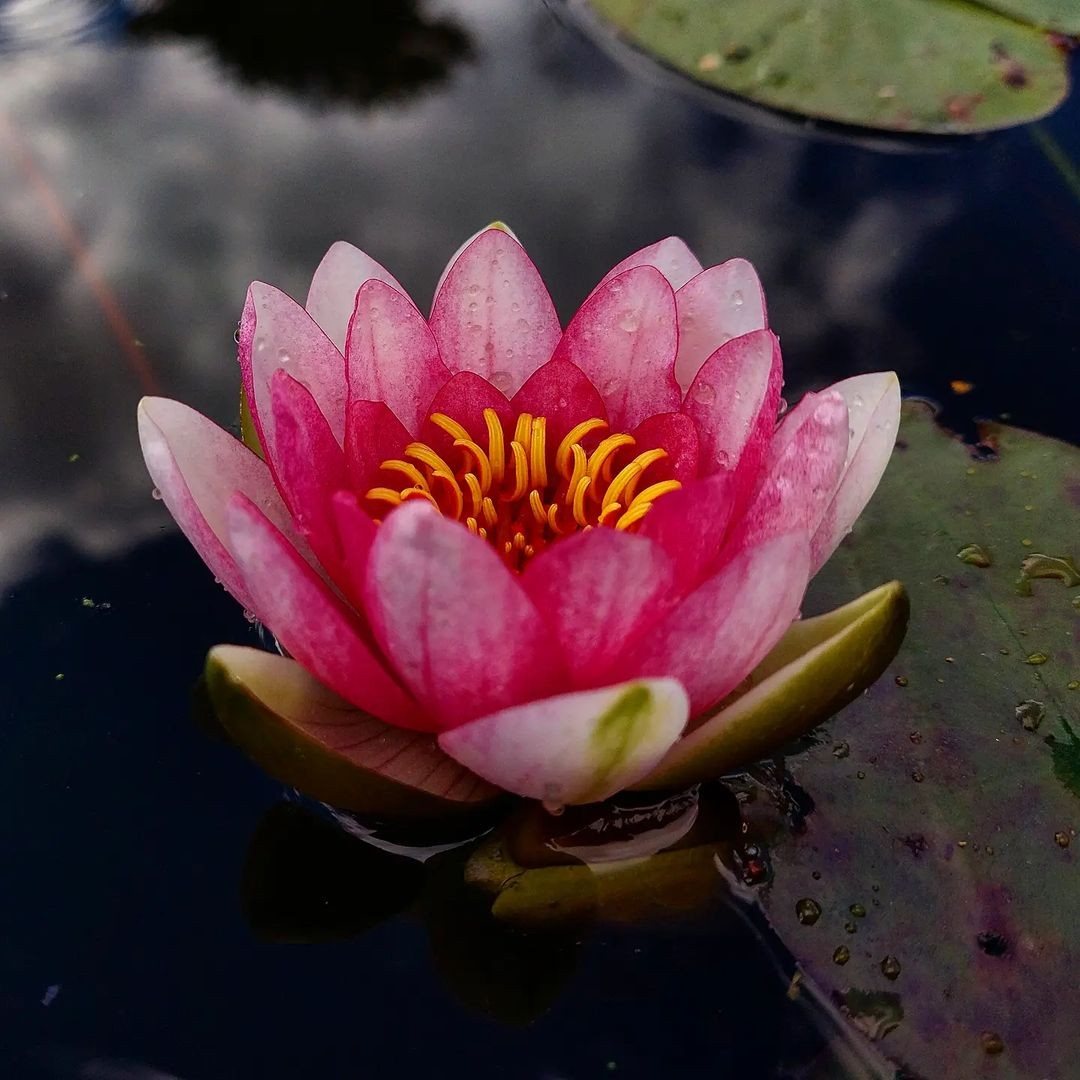










What colors are lilies
Hybrid lilies are distinguished by a variety of colors. Among them there are single-color and multi-color species, as well as with specks, strokes, and brushstrokes.
White
A large group of lilies, since this shade is found in each variety series. White lilies especially stand out against the background of other species.
The most popular of them are:
- Navona;
- White Elf;
- White Elegance;
- Regale;
- Madonna.
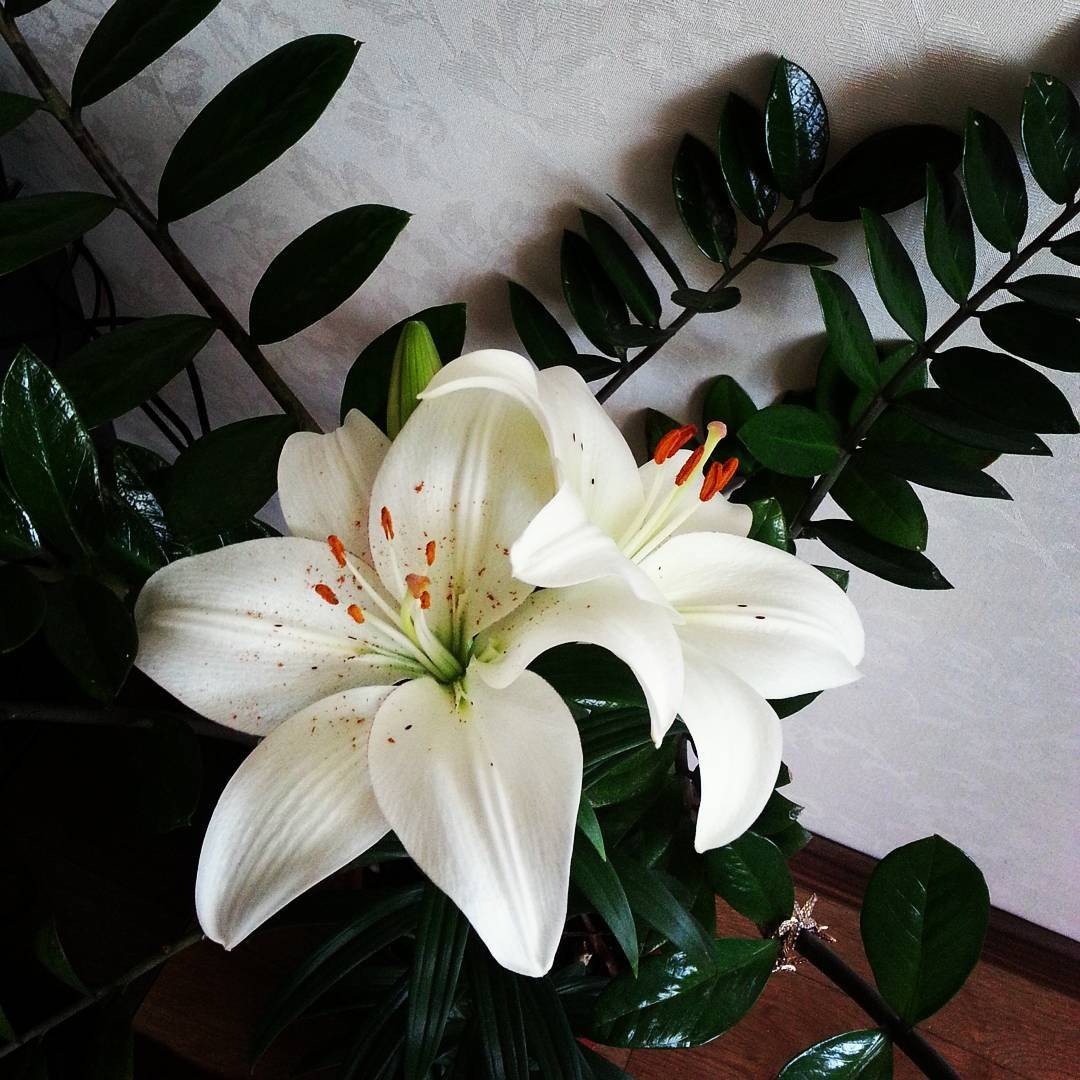
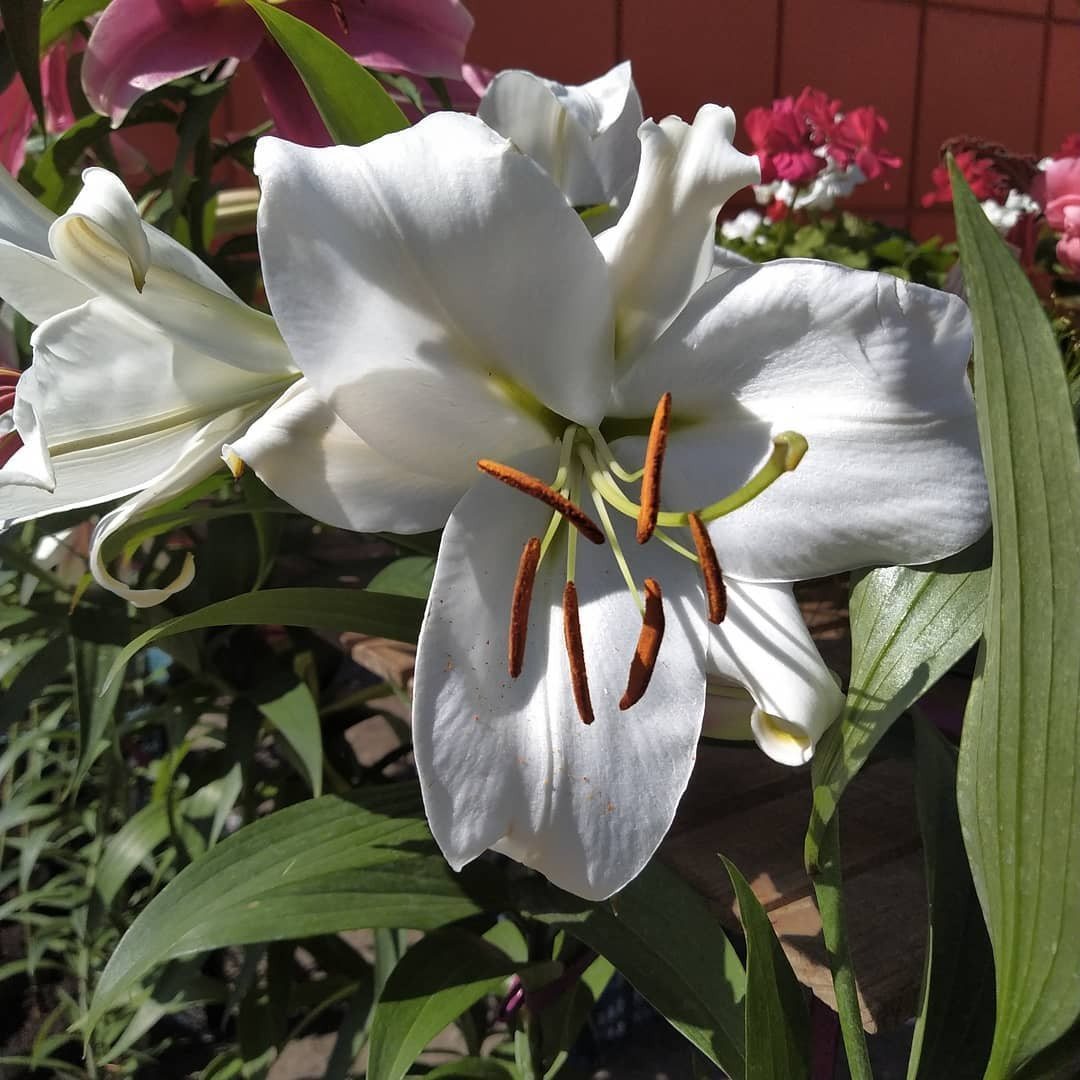
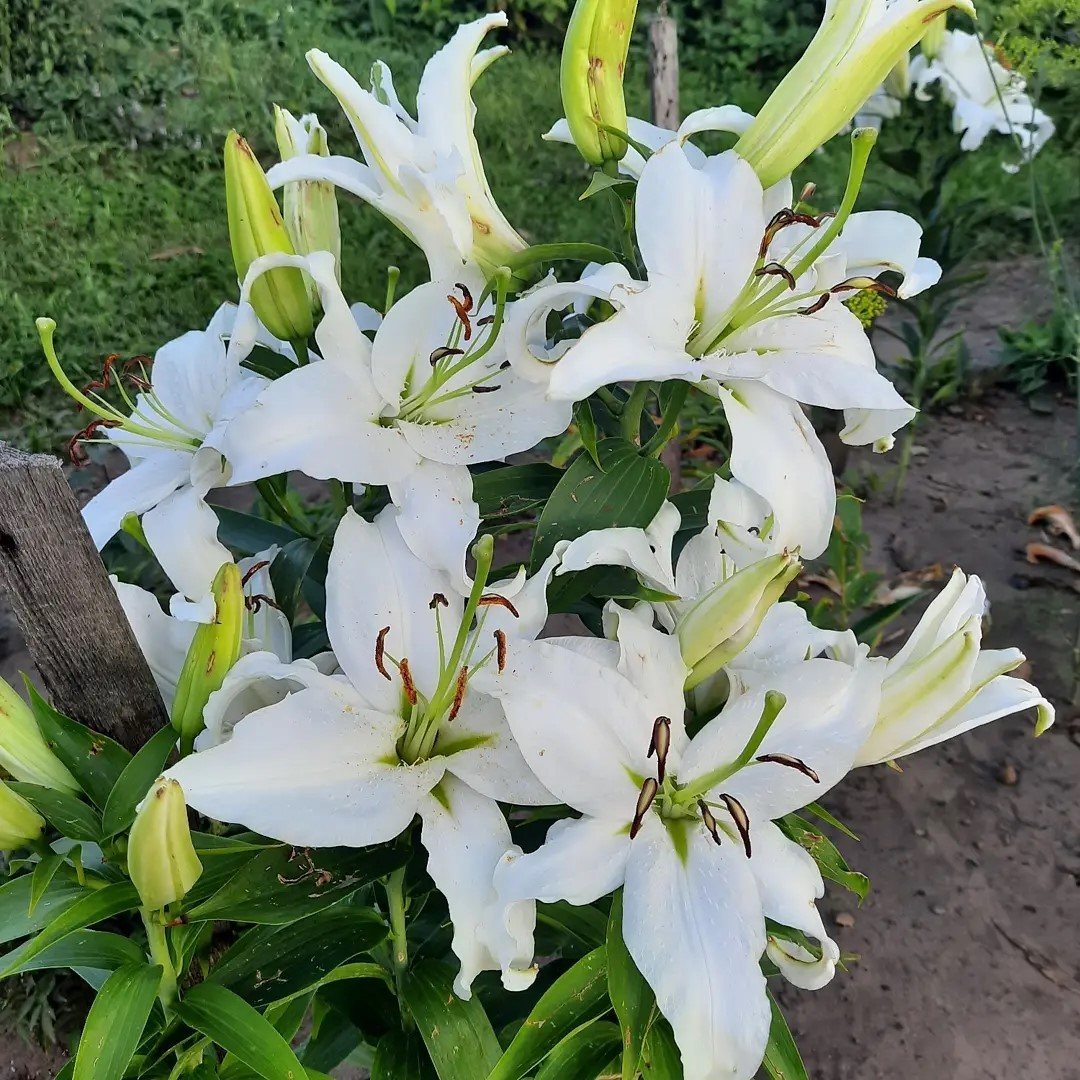
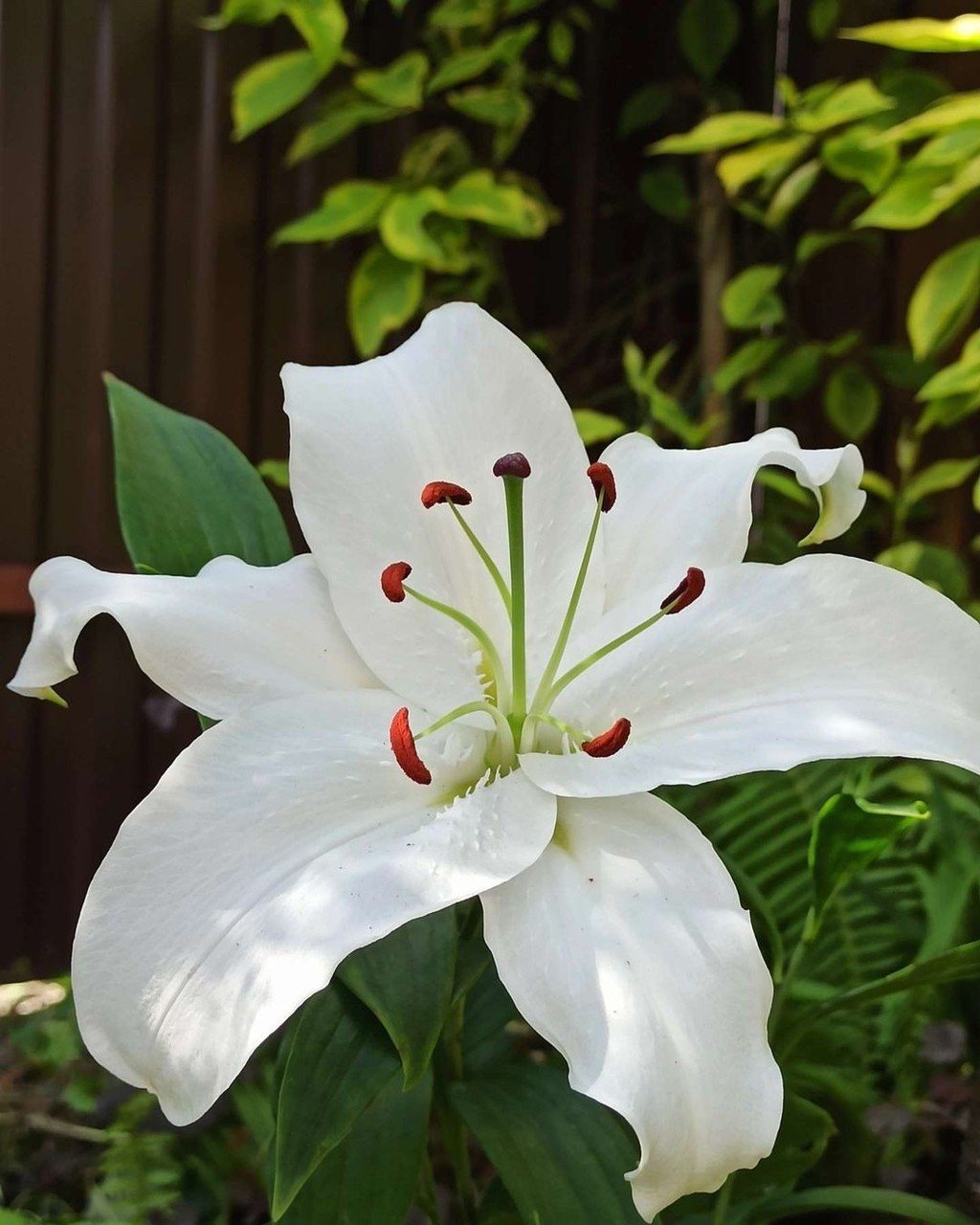
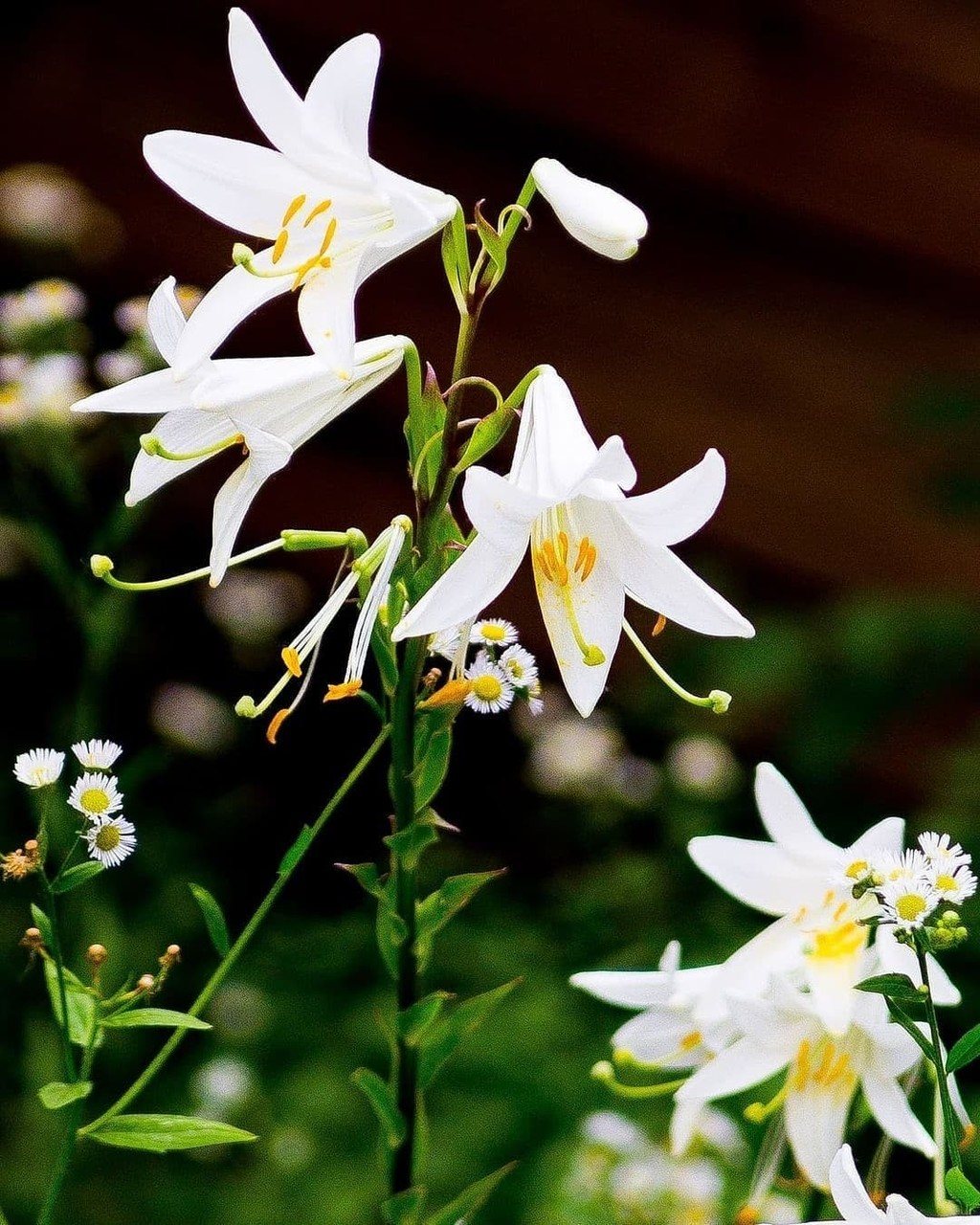





Red
In this case, the shade is not bright, but darker. Most often, such lilies also have dark specks.
The most popular of them are:
- Original Live;
- Black Out;
- Canary Wharf;
- Cherrywood;
- Arabian Night.

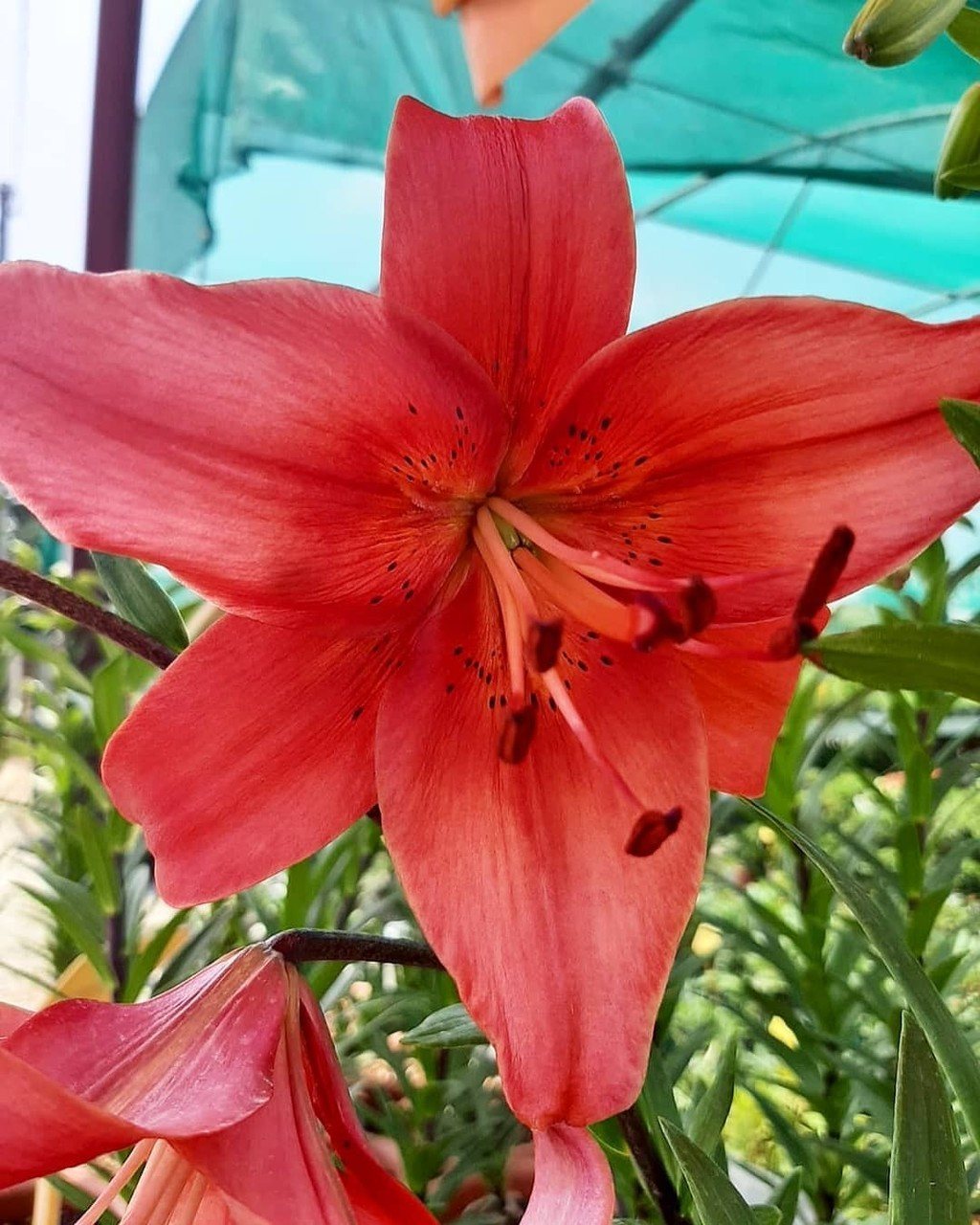
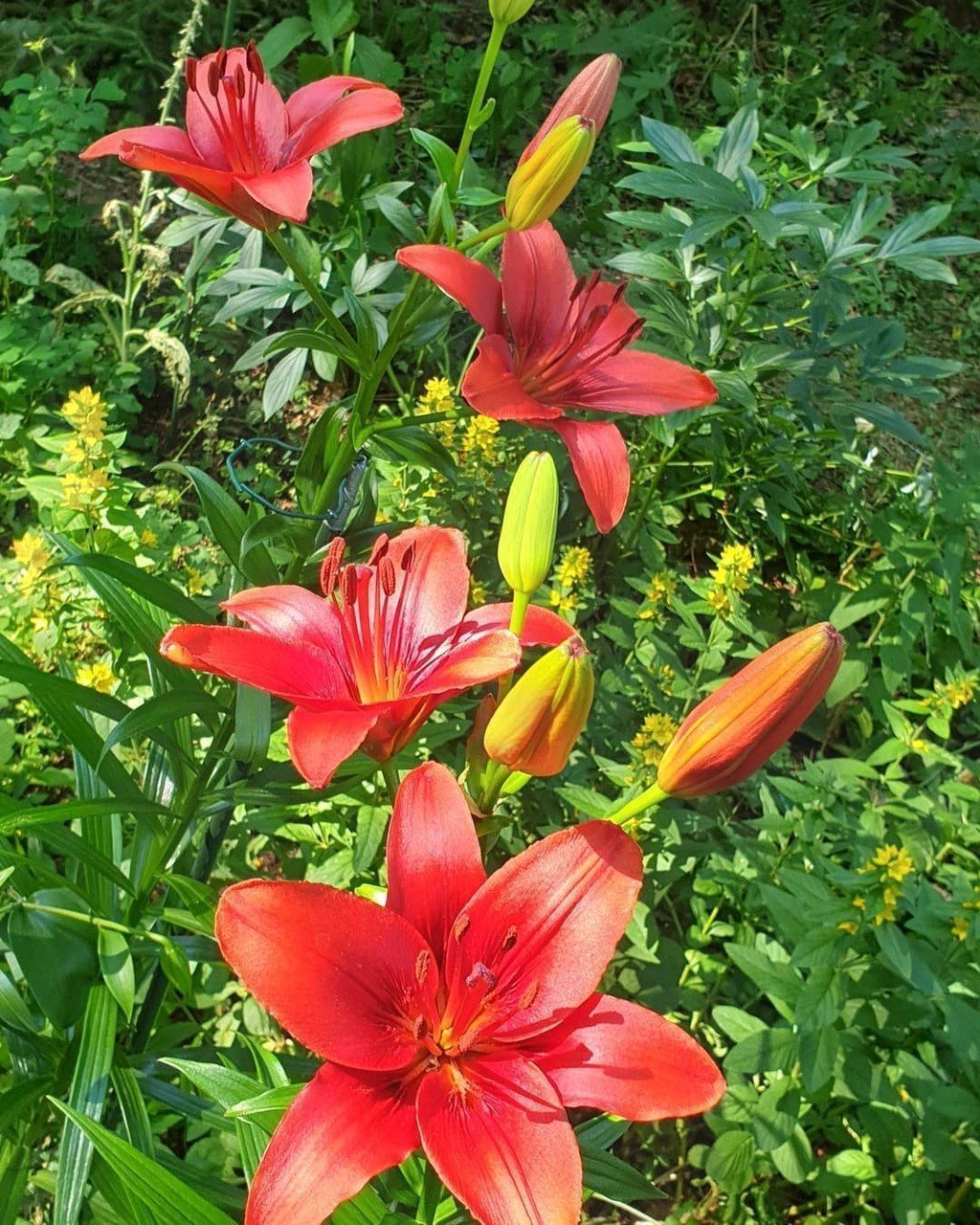
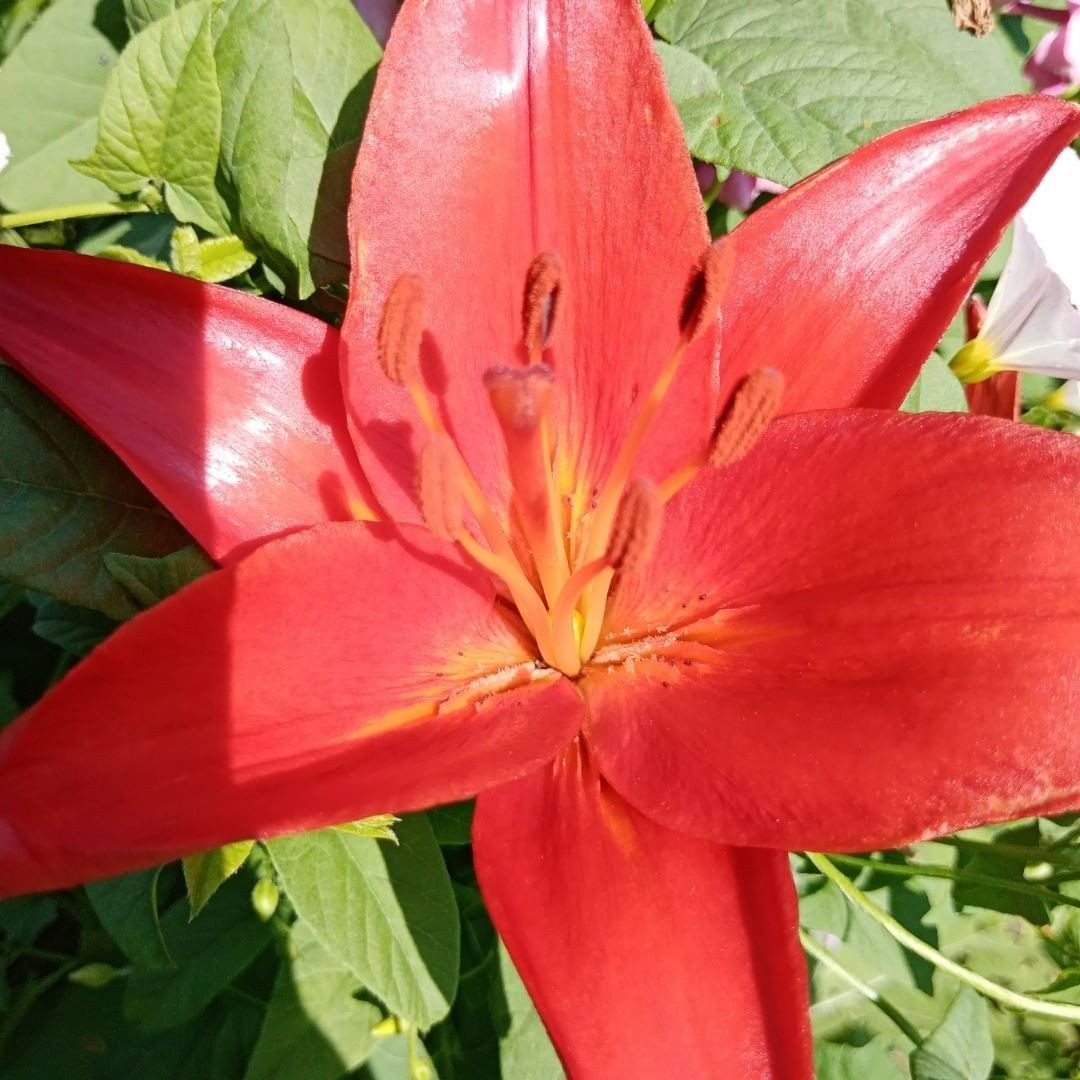






Yellow
This shade, like white, is also quite common among lilies. Yellow color attracts the eye, so such flowers can create bright accents in the garden.
- Popular varieties:
- Jive;
- Golden Splendor;


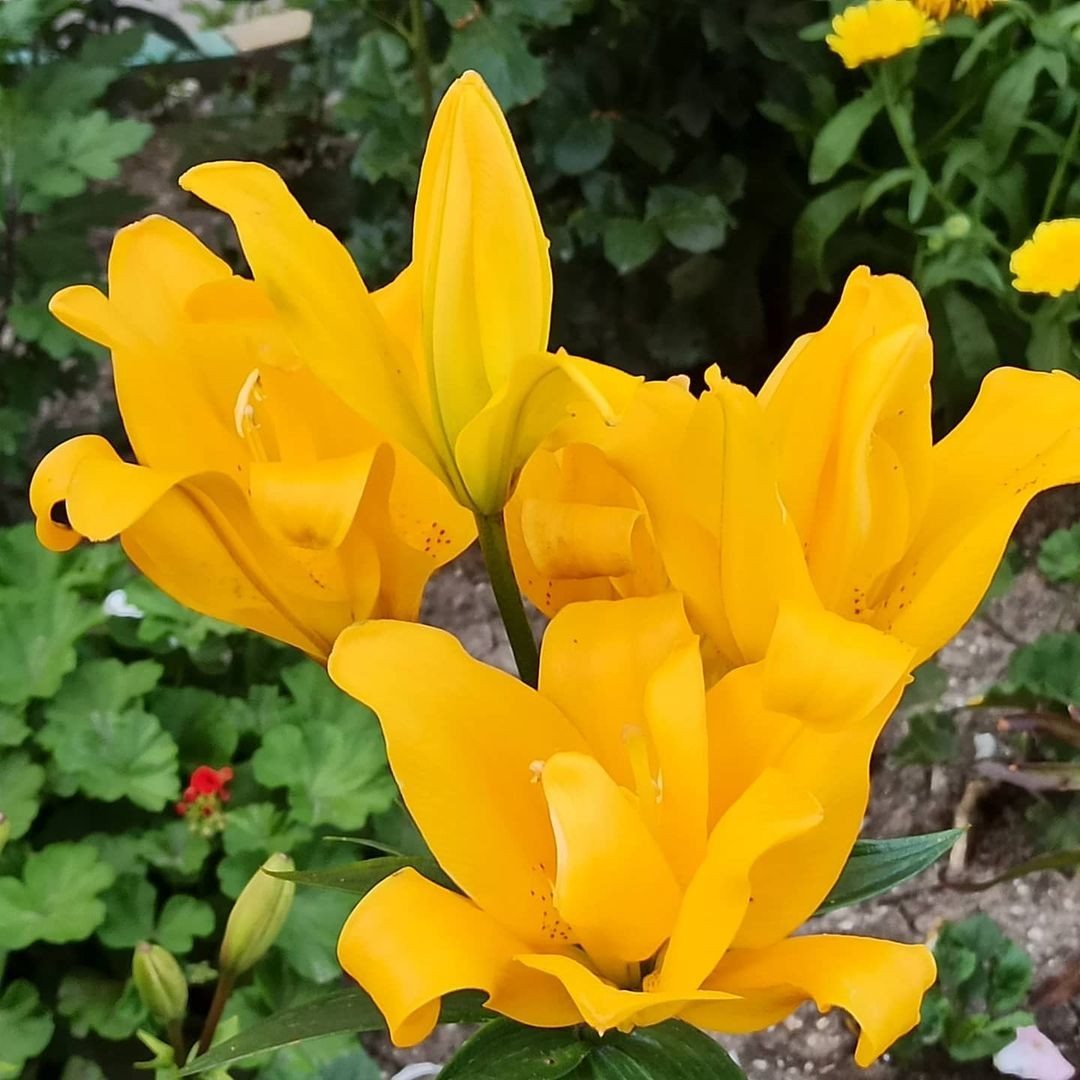
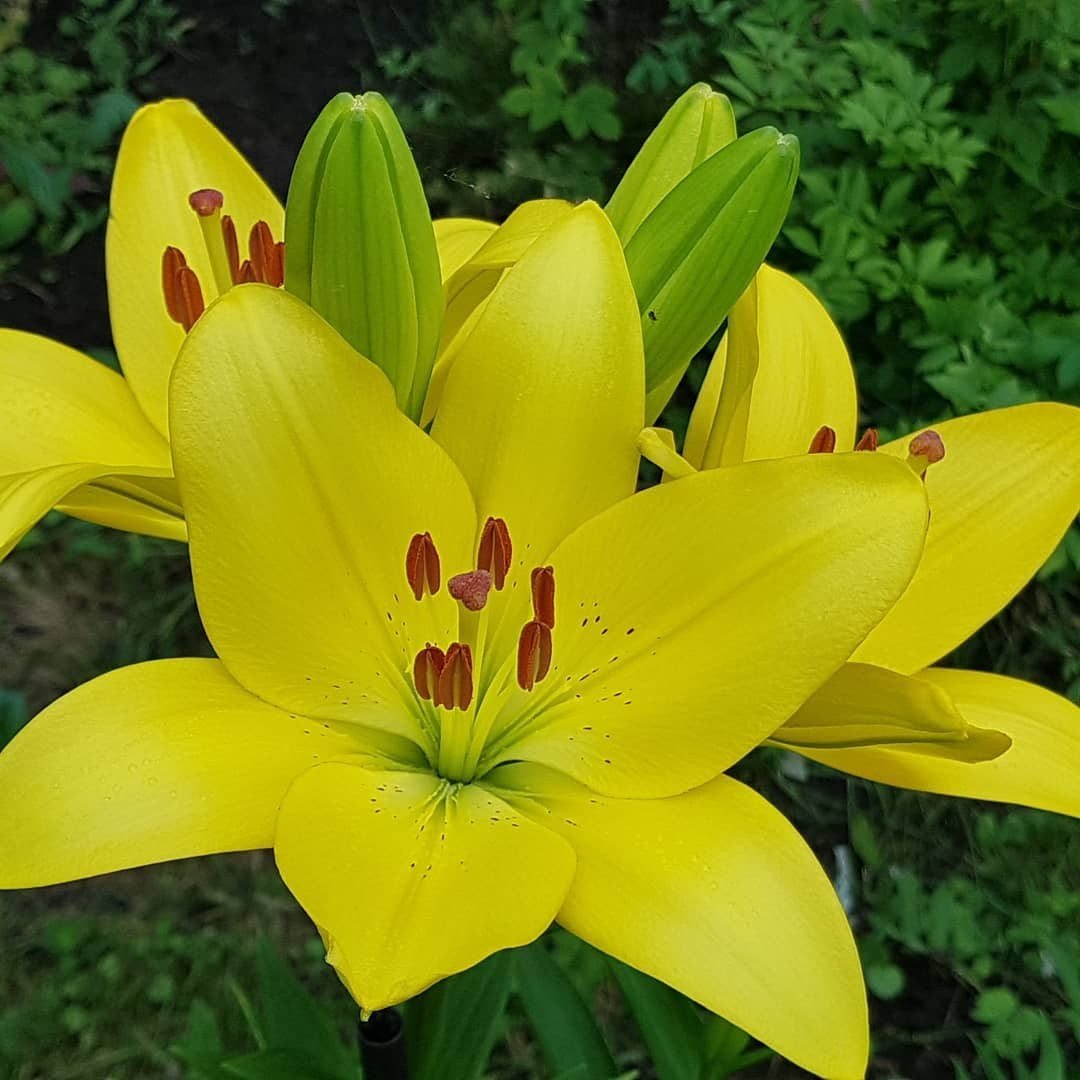
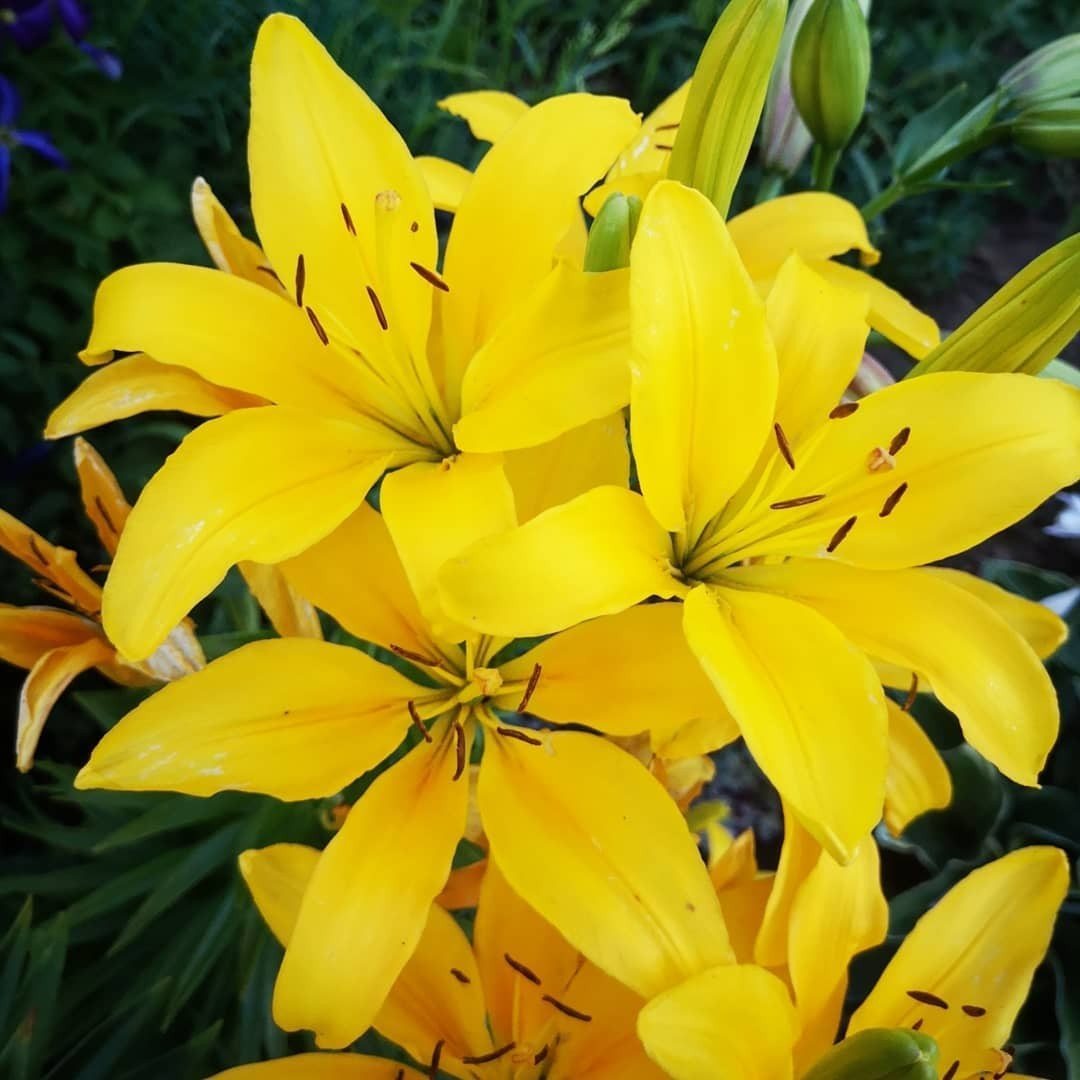





Caveri;
- First Crown;
- Manissa.
- Pink
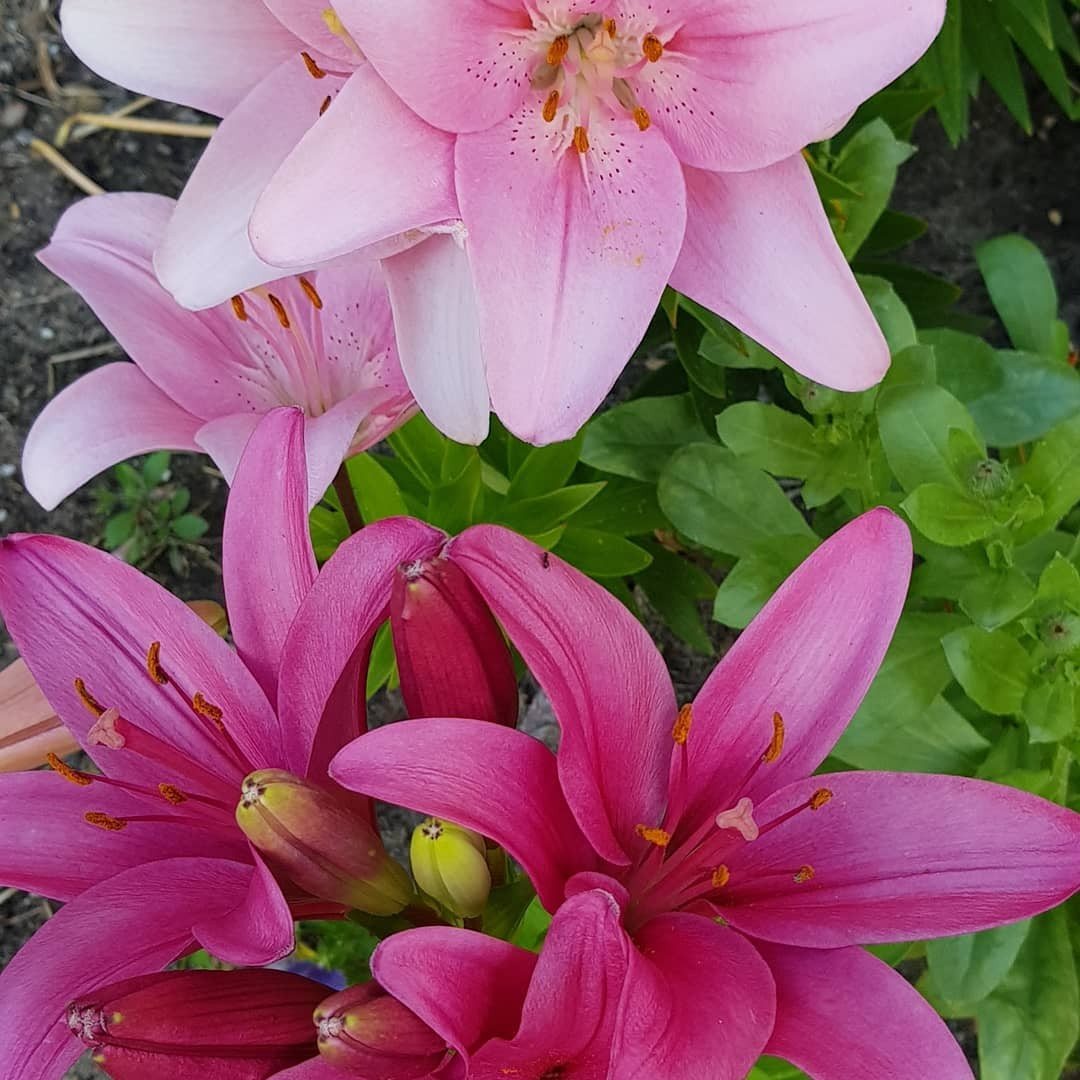
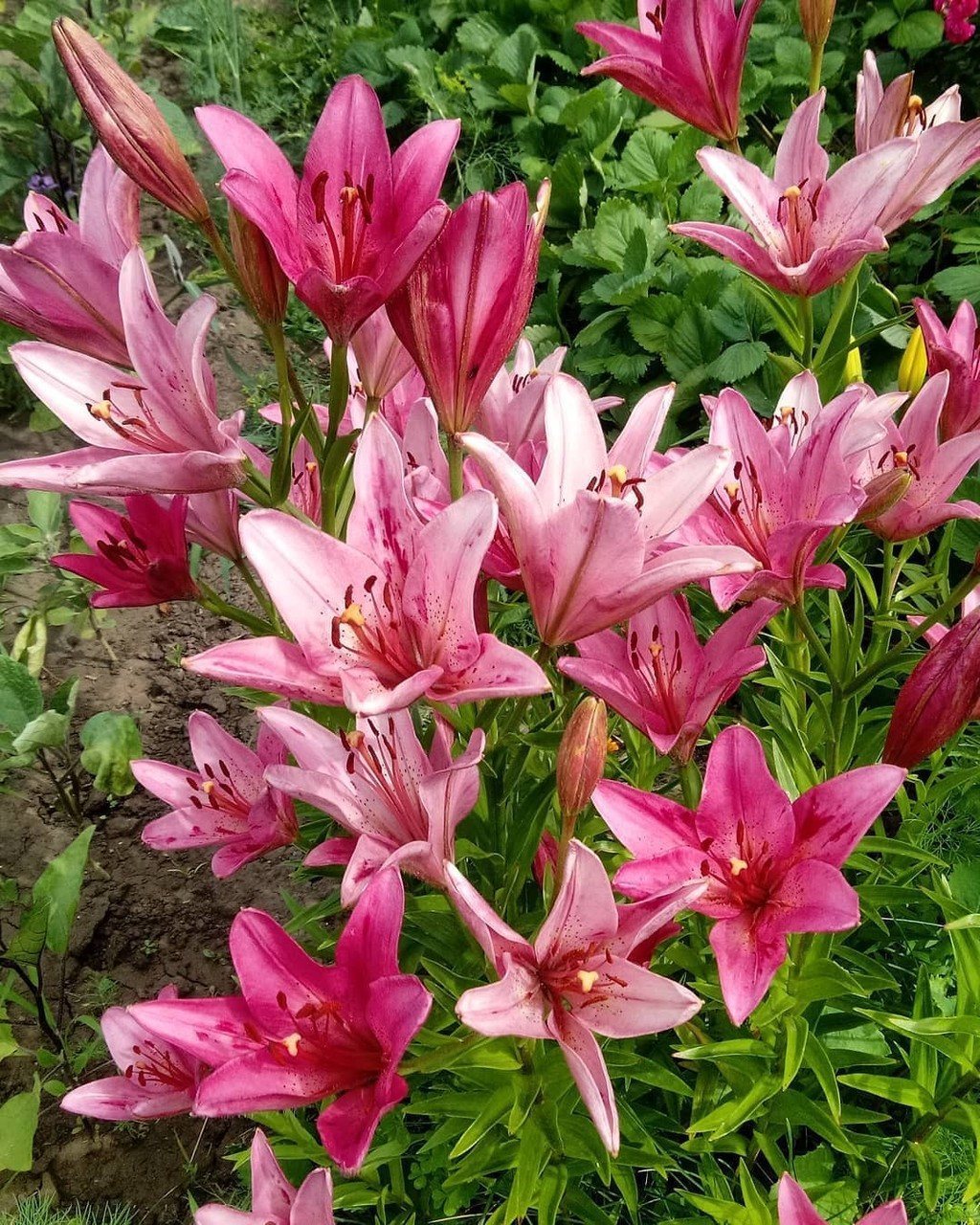
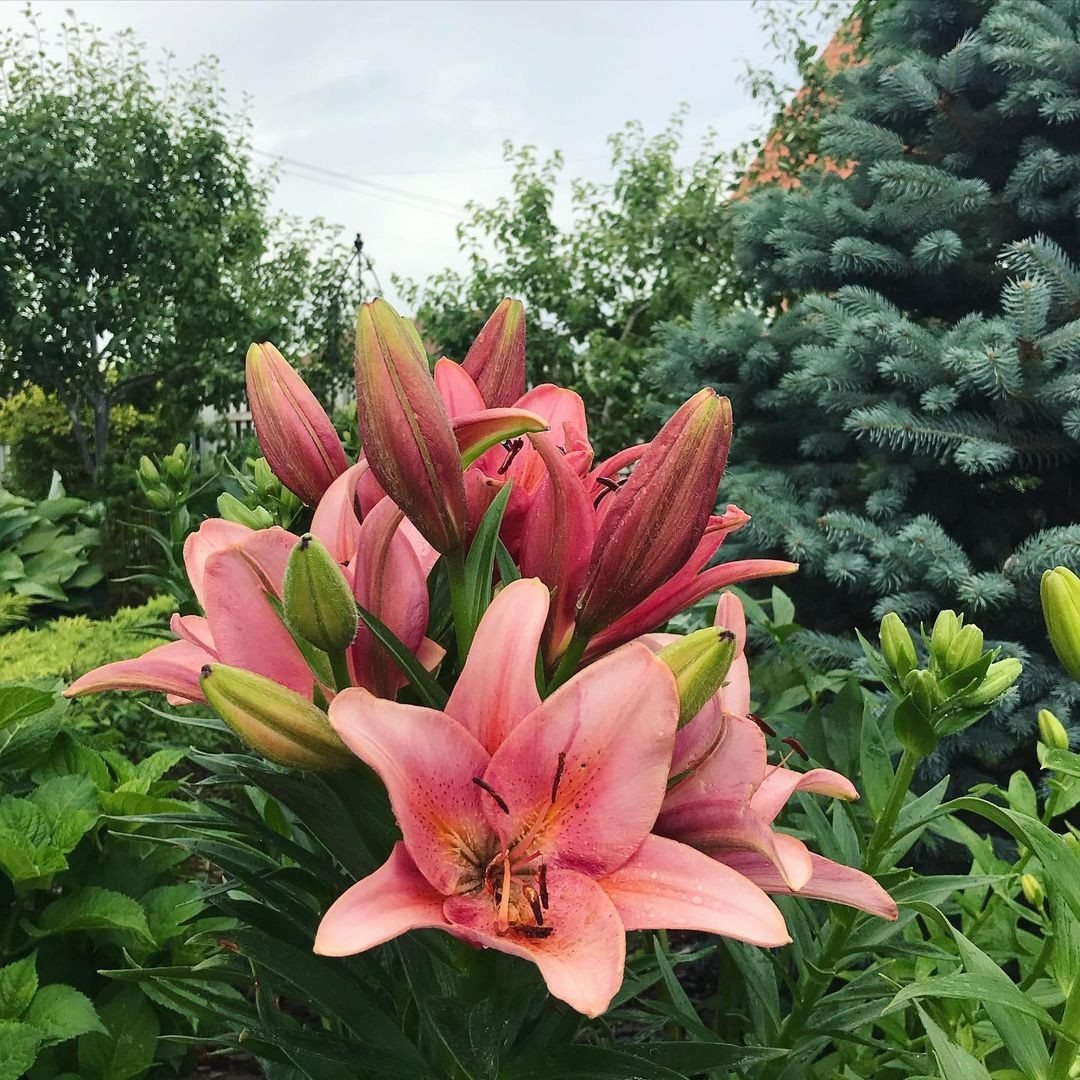
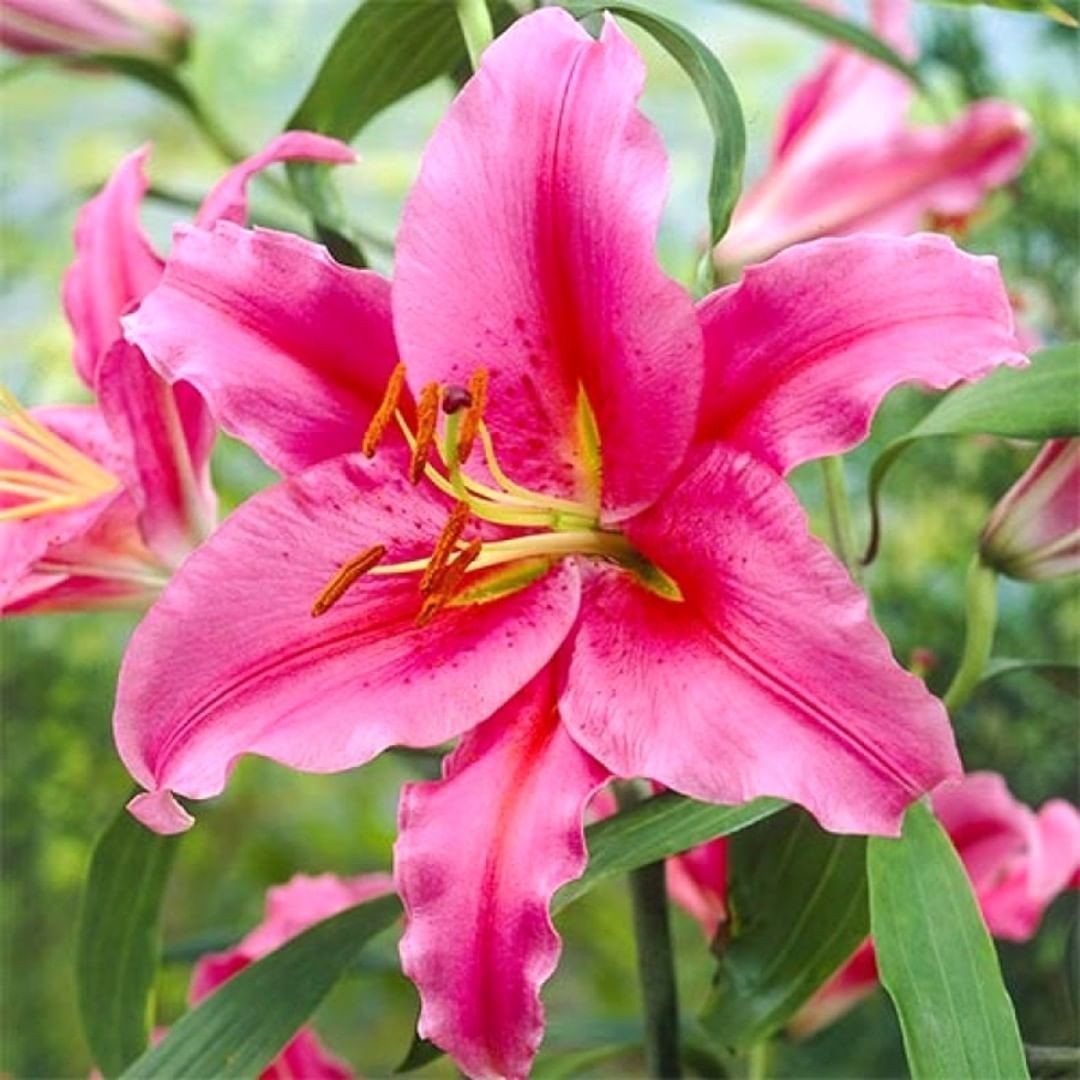






This shade is found in varying intensities. It represents freshness.
Popular pink varieties:
- Visaverza;
- Like Tulare;
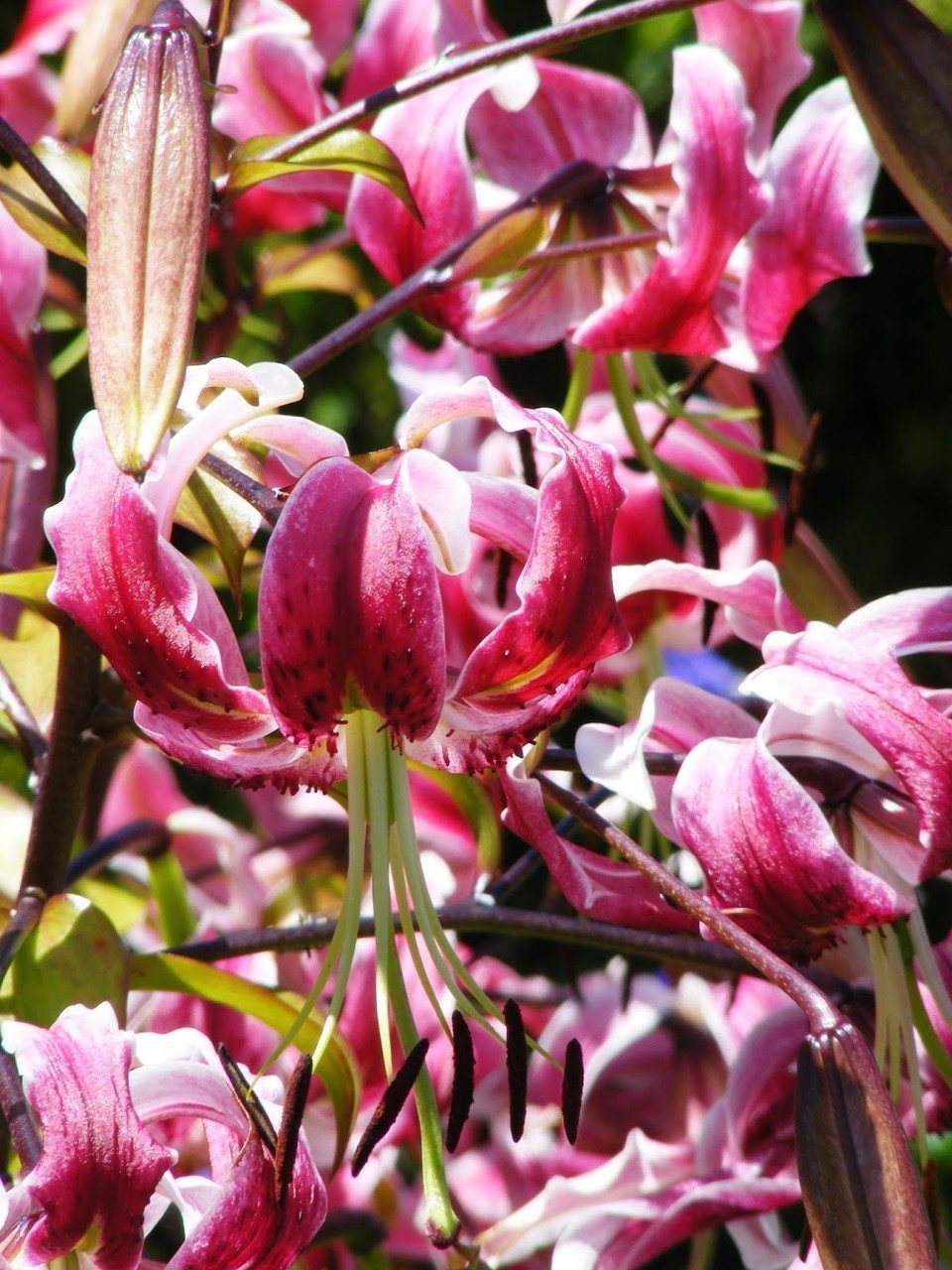
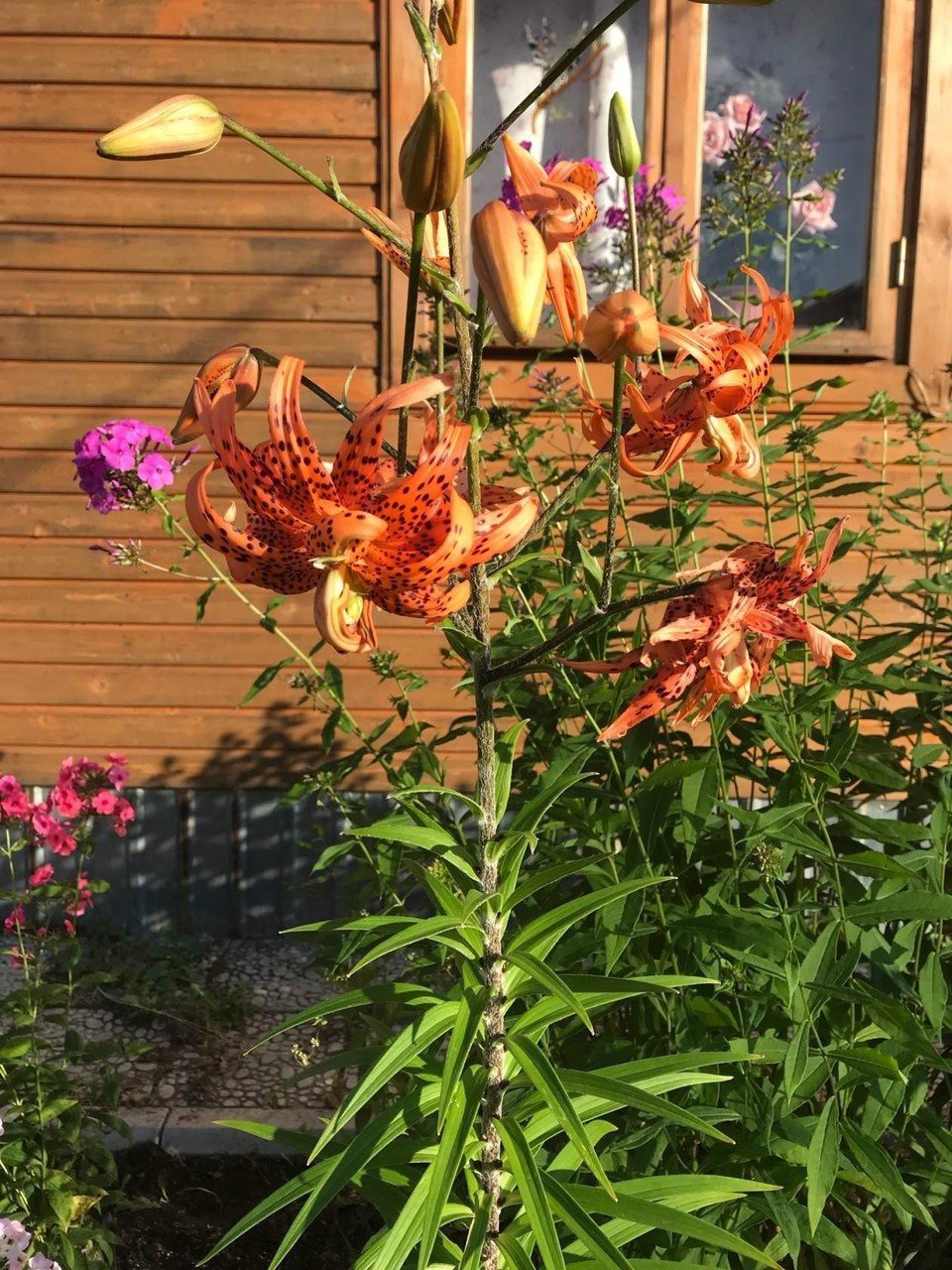
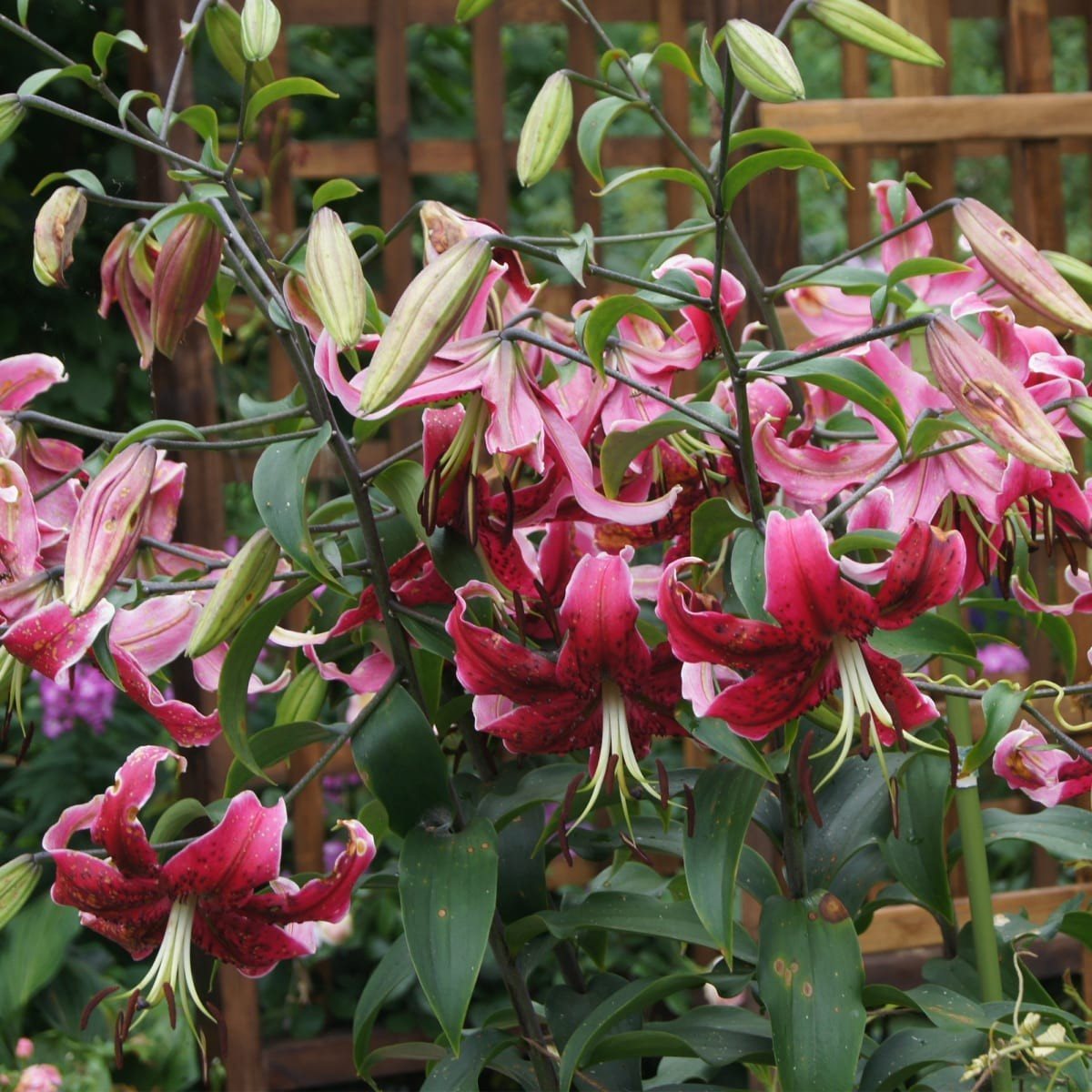
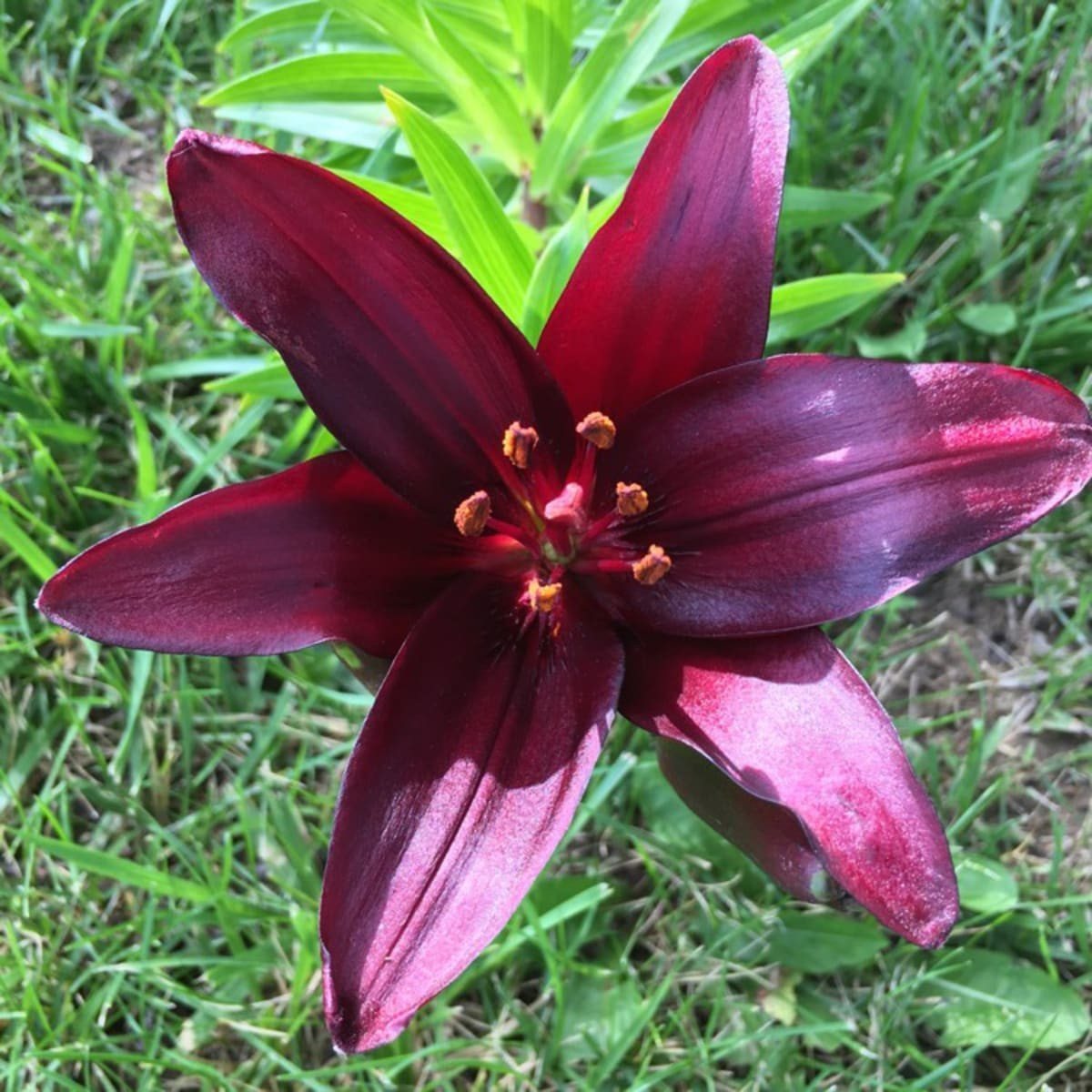

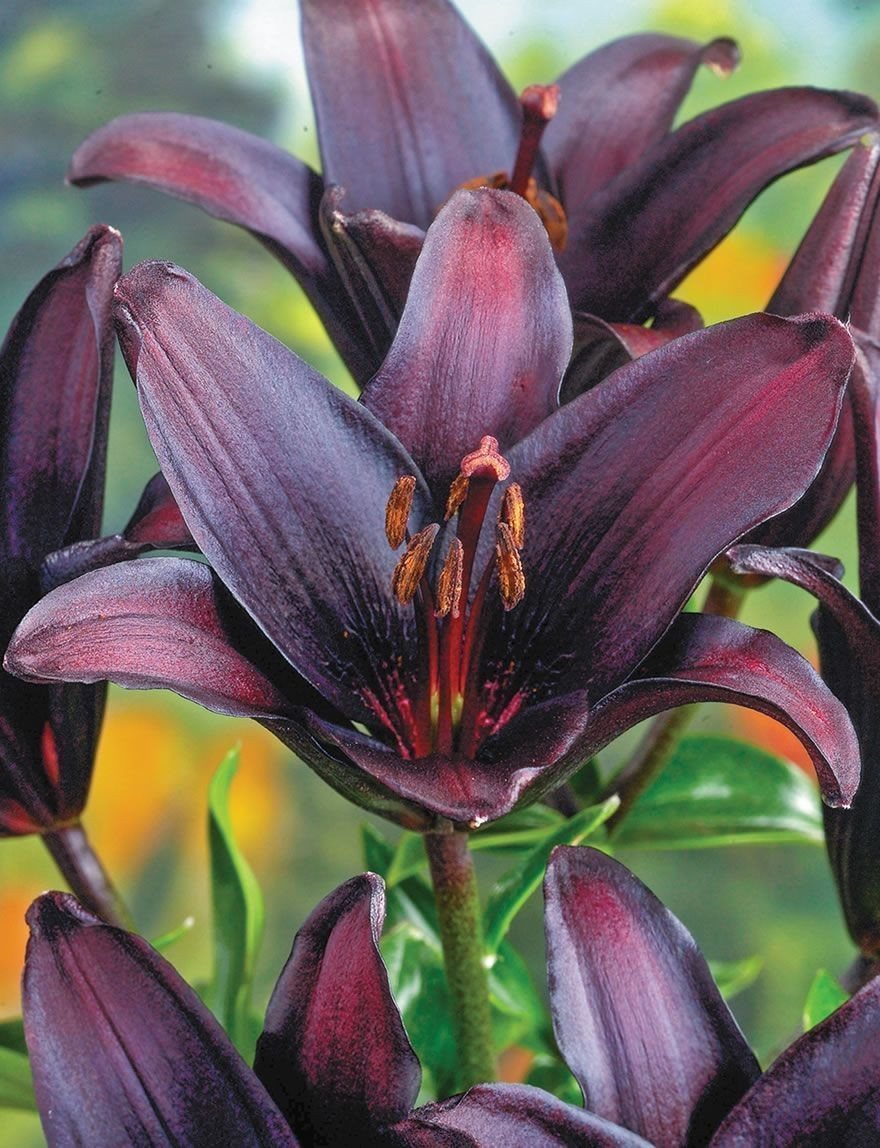

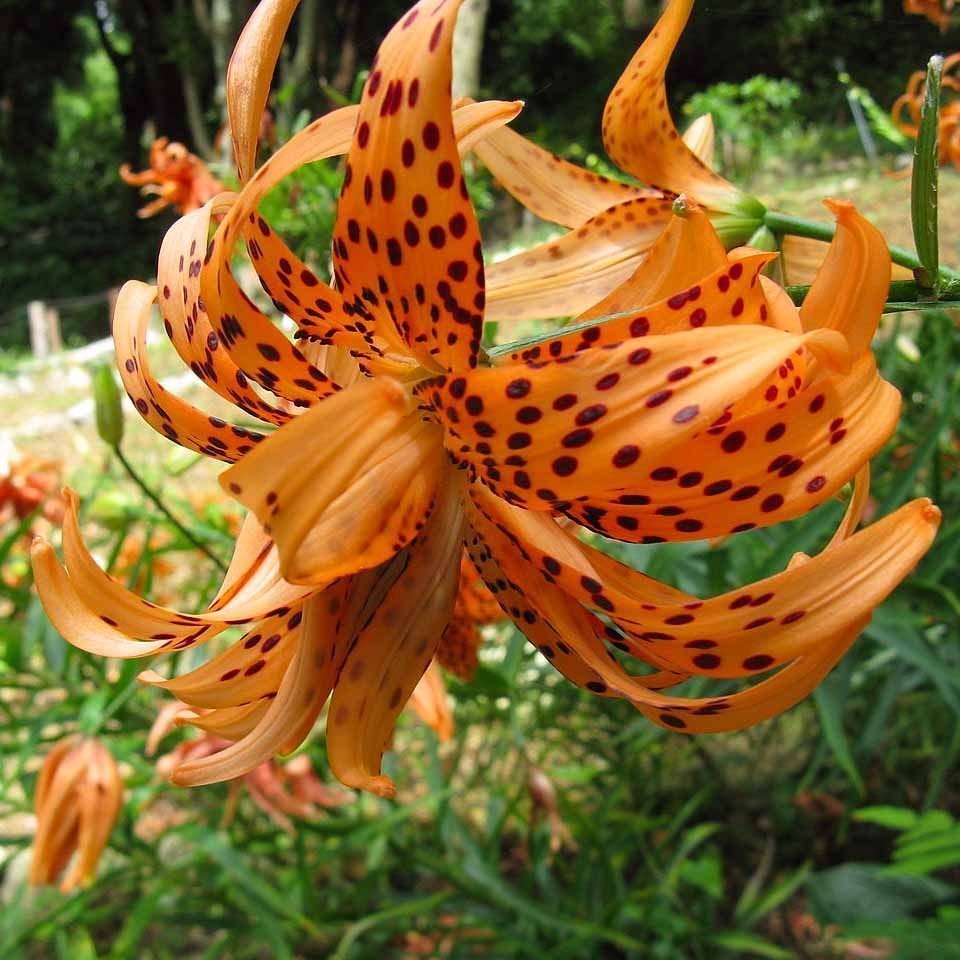
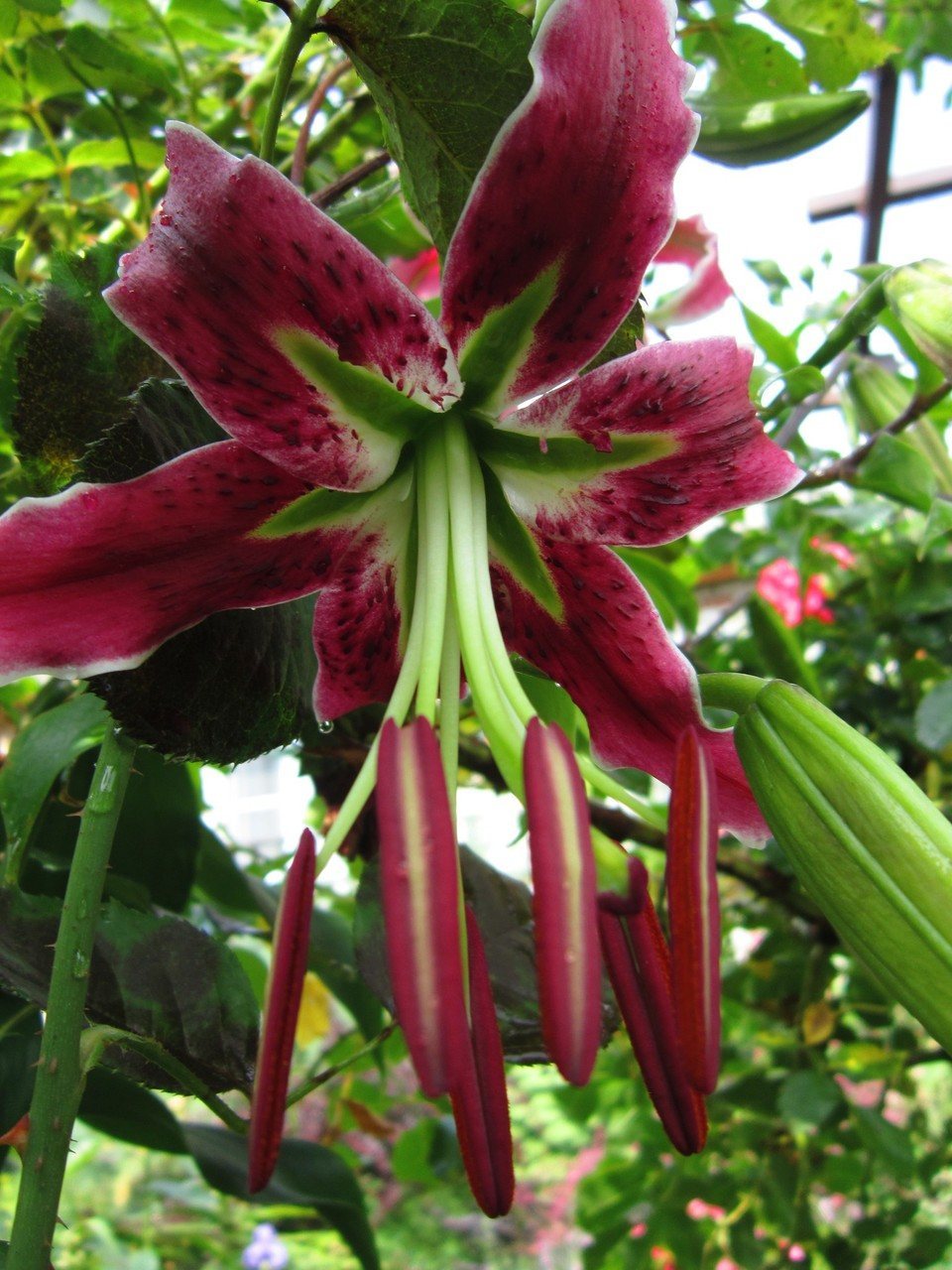
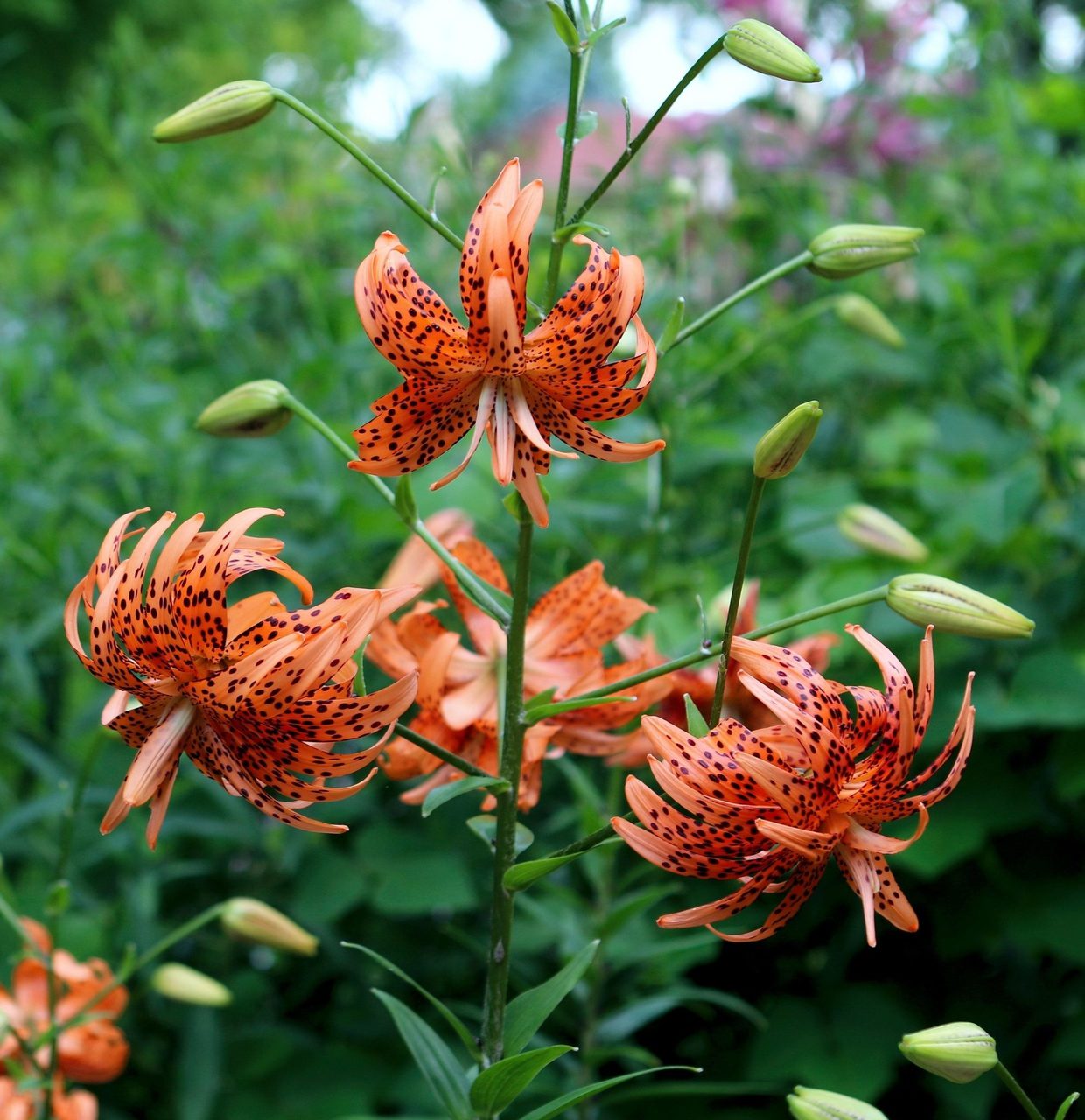










Pink Perfection;
Canberra;
- Samur.
- Other
- But there are also hybrids with a rarer color. Such specimens are valued much more highly.
- These include the following varieties:
- Purple Life - terracotta color with dark large specks and light stripes;
- Scarlet Delight - crimson flowers with a green star in the middle and rare large specks;
- Flore Pleno - bright orange color with brown speckles;
- Landini - dark cherry, almost black flowers;

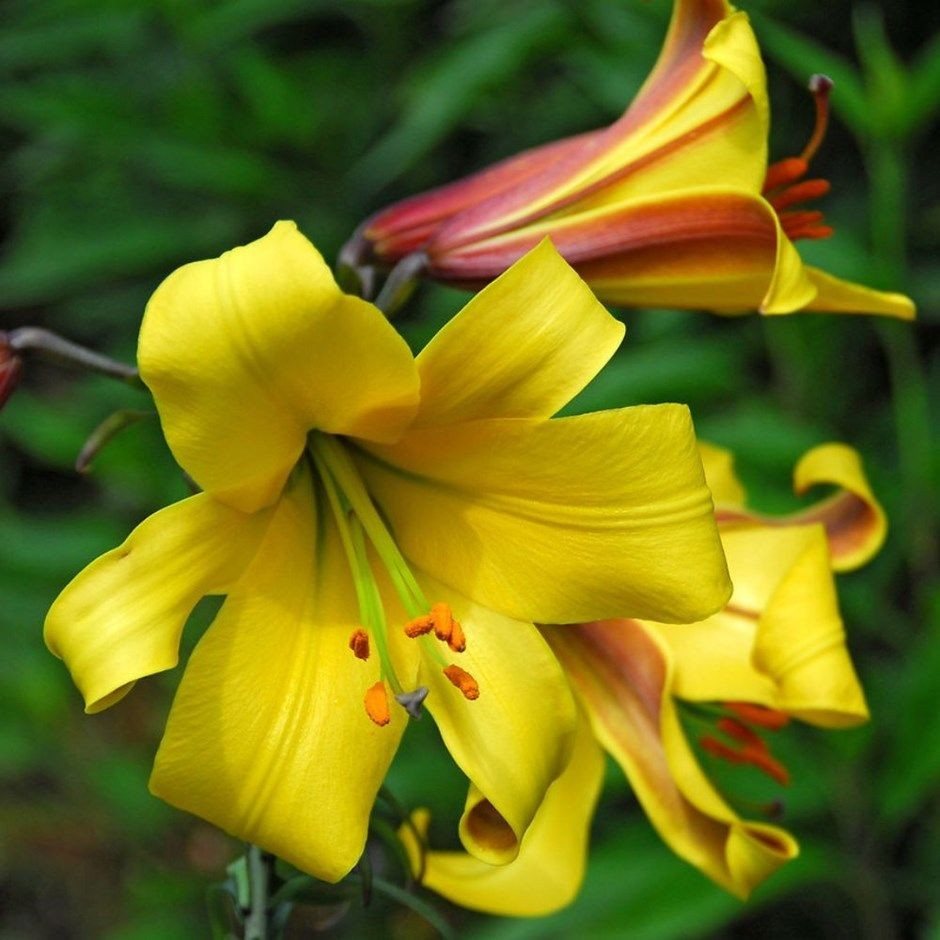
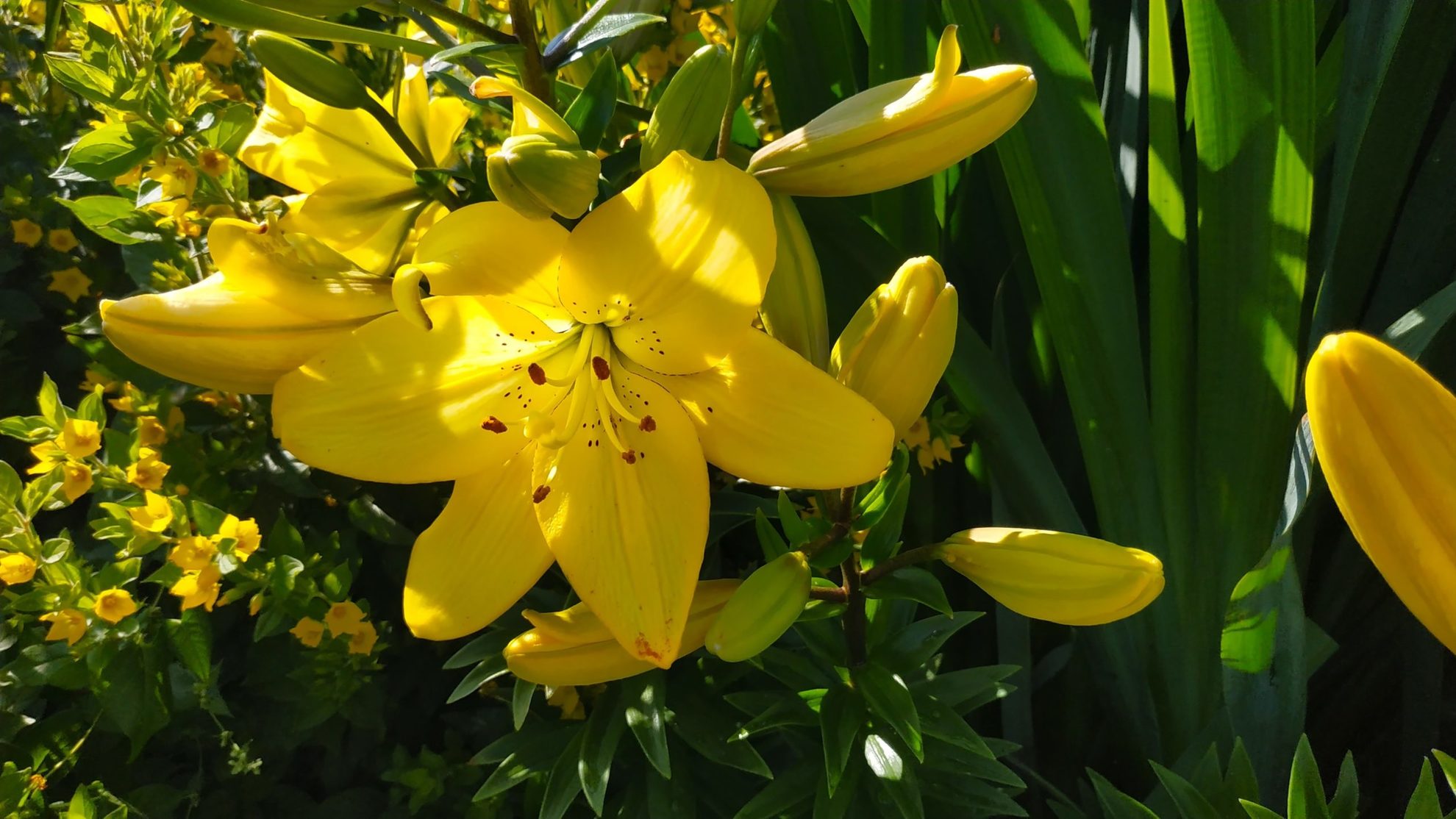
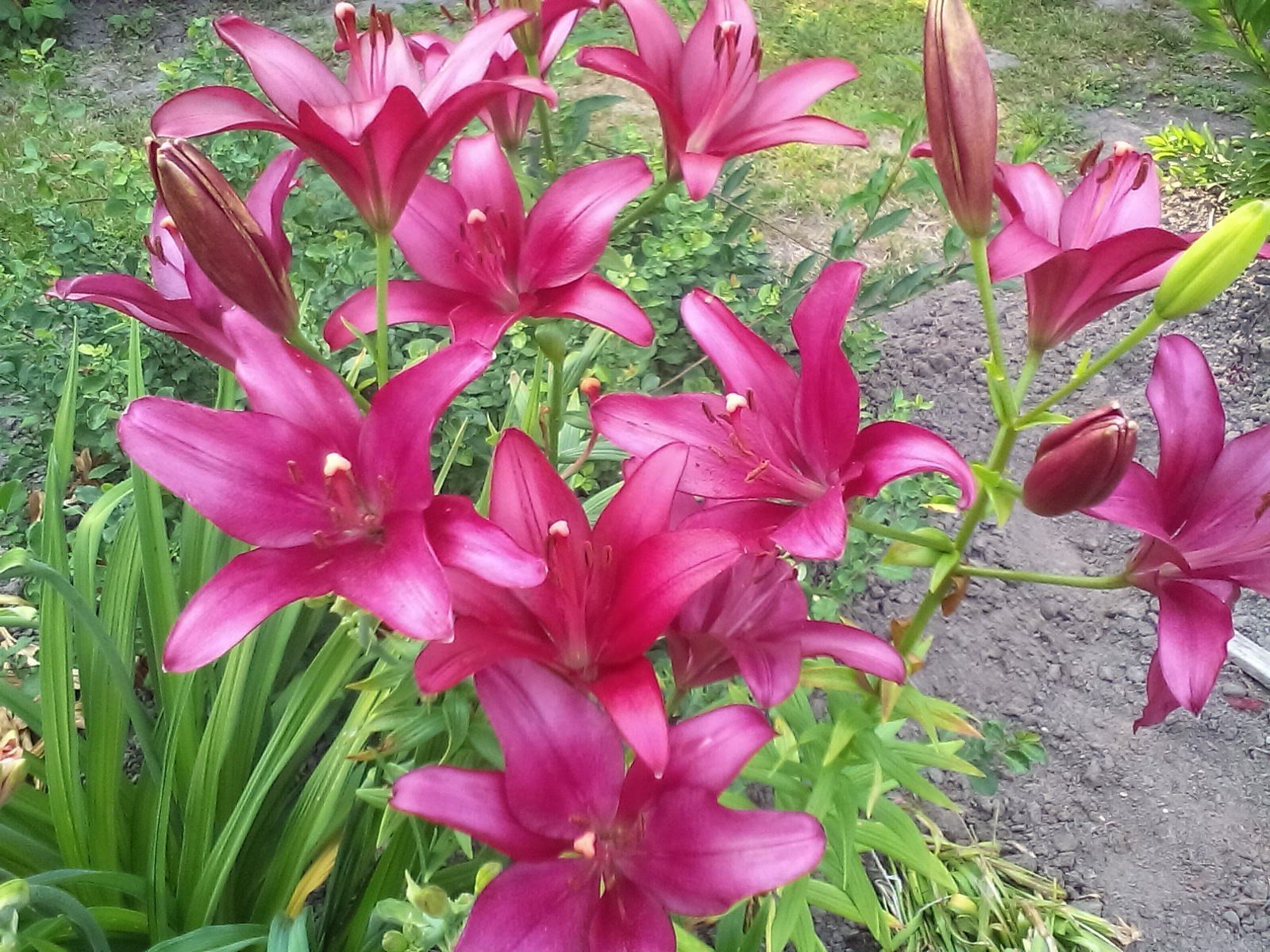

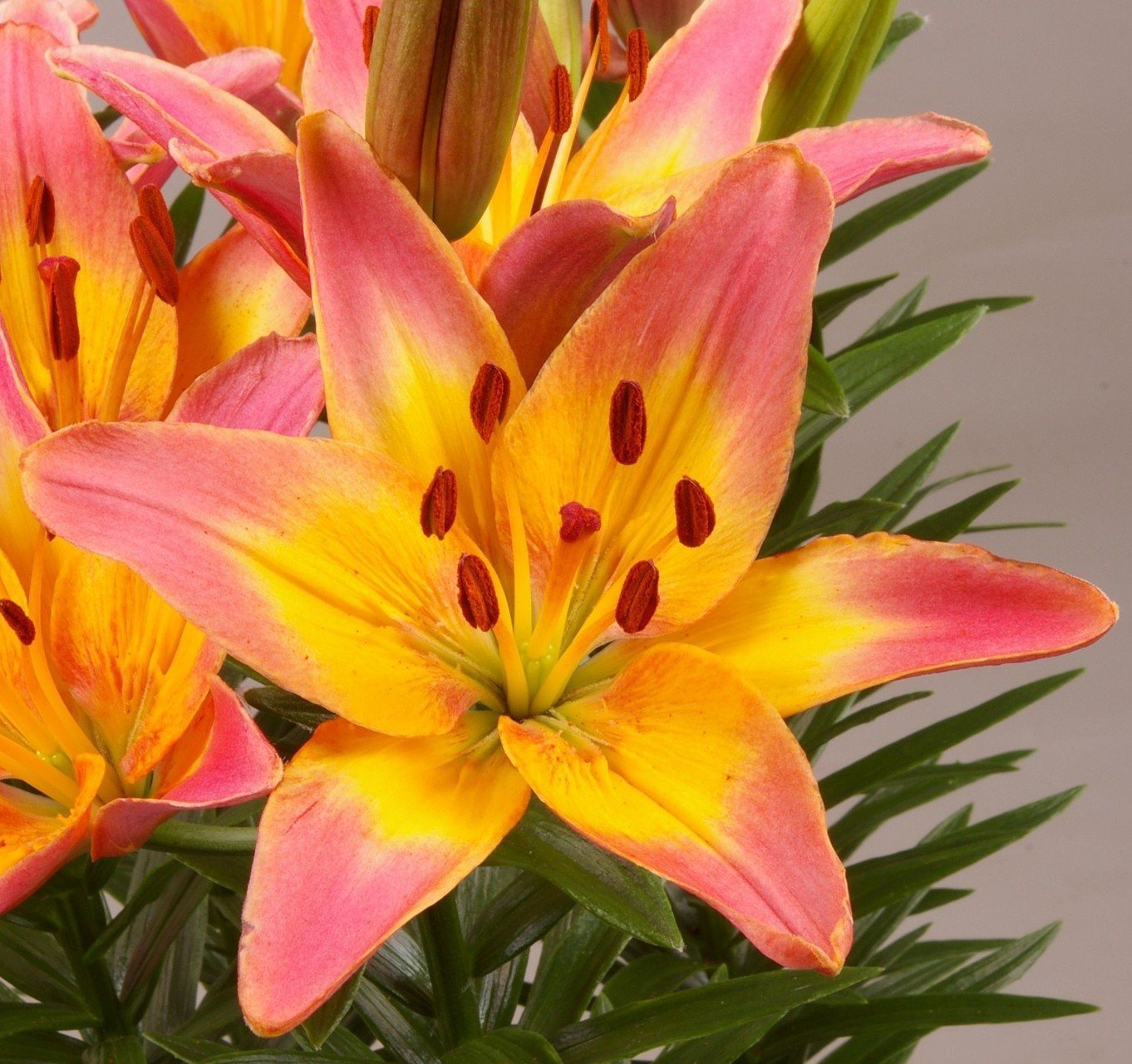
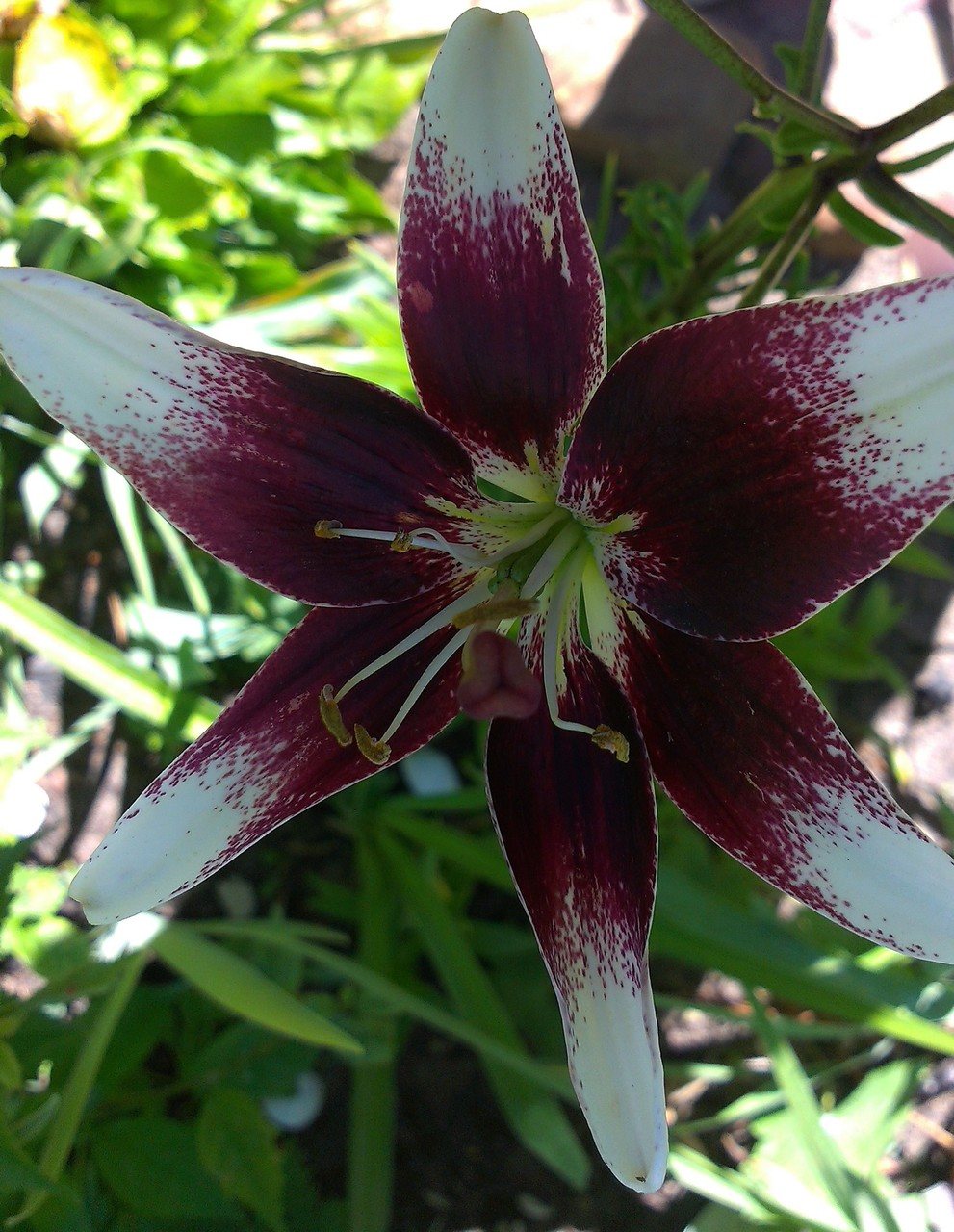
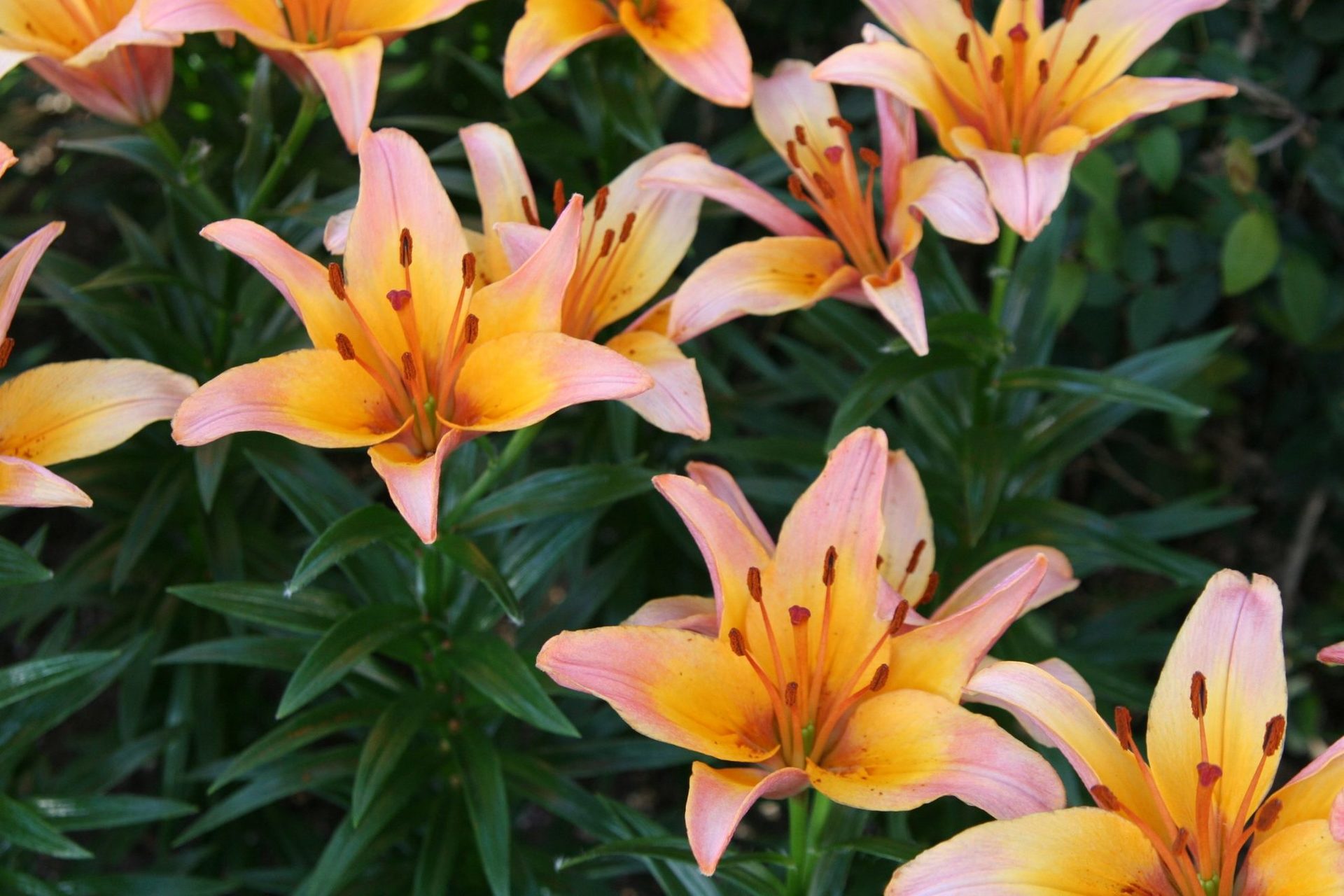
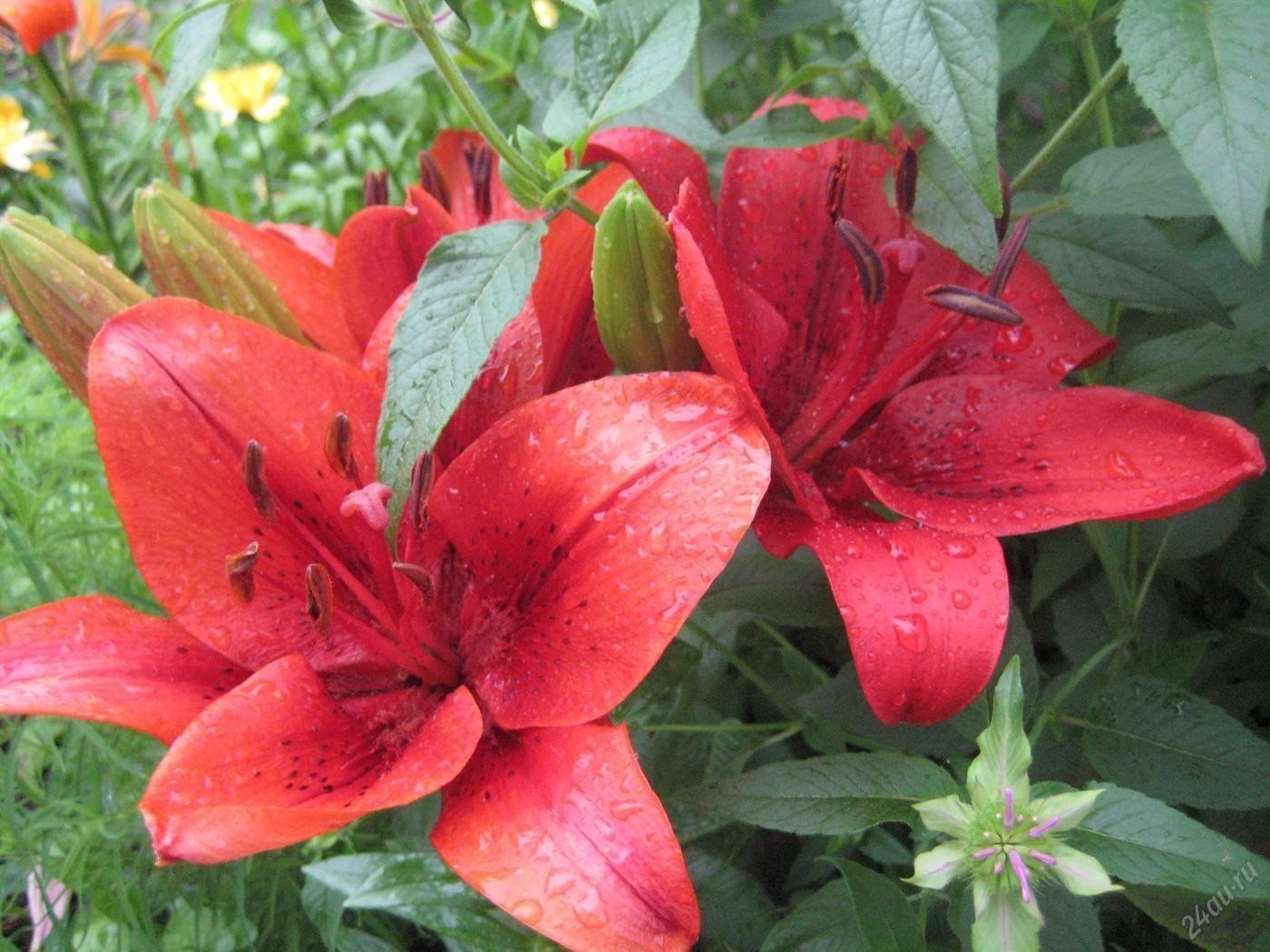
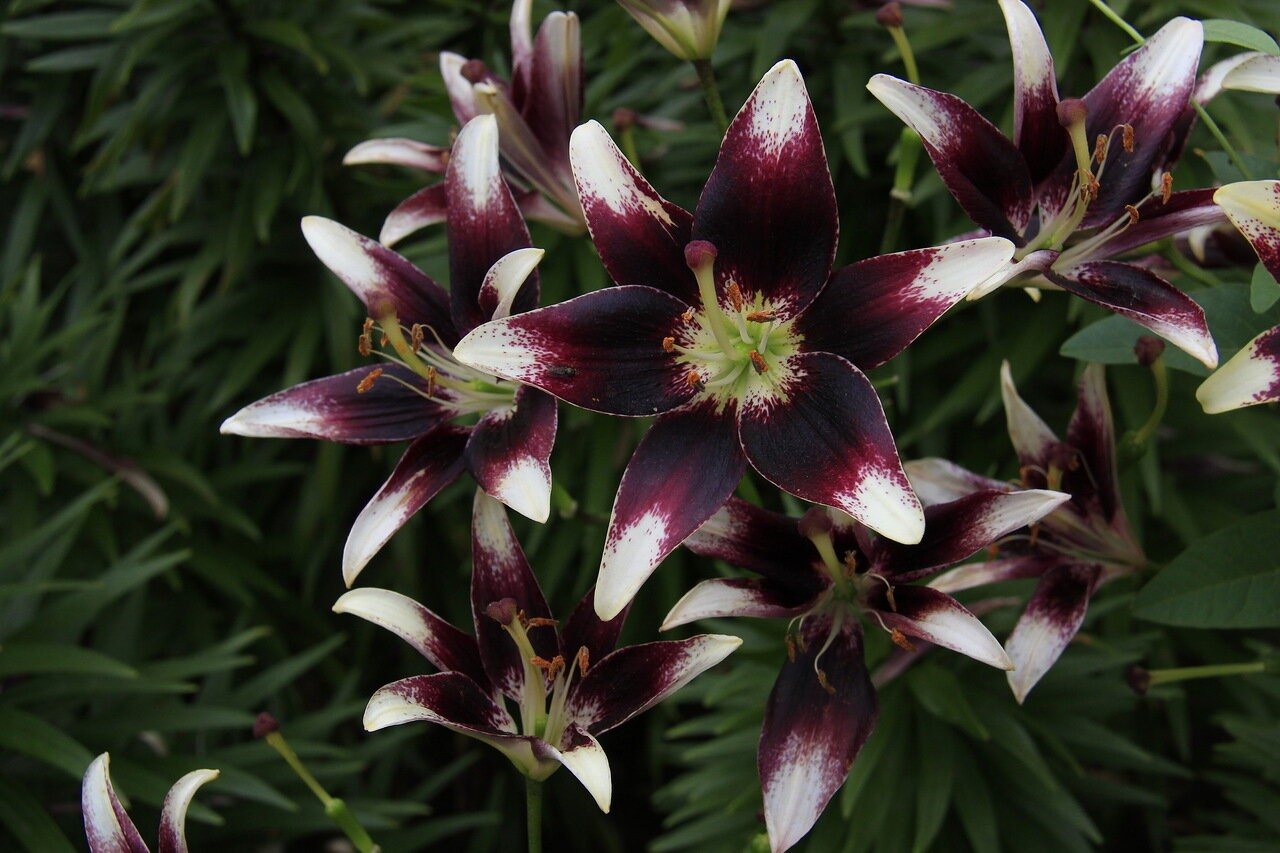










Henry - apricot shade of flowers.
Which varieties are popular in RussiaLarge ones. These species can be planted to a depth of 1 m. They are characterized by large flowers, the diameter of which reaches 25 cm.
What colors are lilies?
Hybrid lilies come in a variety of colors. Among them there are single-color and multi-color types, as well as with specks, strokes, and strokes.
White
A large group of lilies, since this shade is found in each variety series. White lilies especially stand out against the background of other species.
The most popular of them:
Navona;
White Elf;
White Elegance;
Madonna.
Reds
In this case, the shade is not bright, but darker. Most often, such lilies also have dark specks.
- The most popular of them:
- Original Live;
- Black Out;
- Canary Wharf;
- Cherrywood;
Arabian Knight.
Yellow
This shade, like white, is also very common among lilies. The yellow color attracts the eye, so such flowers can create bright accents in the garden.
Popular varieties:
Jive;
Golden Splendor;
Kaveri;
Fest Crown;
Manissa.
Pink
This shade is found in varying intensities. It represents freshness.
Popular pink varieties:
Visaverza;
Like Tulare;
Pink perfection;
Canberra;
Samur.
Others
But there are also hybrids with rarer colors. Such specimens are much more valuable.
These include the following varieties:
Purple Life - terracotta color with dark large specks and light stripes;
Scarlet Delight - crimson flowers with a green star in the middle and sparse large specks;
Flore Pleno - bright orange color with brown specks;
Landini - dark cherry, almost black flowers;
Henry - apricot shade of flowers.
What varieties are popular in Russia
Due to cold winters, lily hybrids, which are highly frost-resistant, are especially popular in Russia. This allows them to be grown in open ground without much shelter.
The most popular varieties in Russia:
Nettis Pride;
Lady Like;
Golden Tucson;
Original Live;
Indian Summerset;
Navona;
Regale;
Golden Splendor;
Tango;
Pink Perfection.
Growing lilies at home
To successfully grow lilies in the house, it is necessary to properly plant and provide maintenance conditions in accordance with the requirements of the culture. The best option for forcing is low-growing crop species characterized by a short growing season.
Soil preparation
To prepare the soil for planting lilies at home, you need to mix turf, sand, leaf soil and humus in equal quantities. You also need to additionally add charcoal ¼ of the total volume of the substrate.
A few days before planting, the soil should be watered with Fitosporin or Previkur Energy to decontaminate it. And then it is recommended to dry the substrate slightly until characteristic flowability appears.
Selecting a location
East and west windows are suitable for the plant. Lily needs bright, diffused light, so in hot afternoon hours it needs to be slightly shaded. When choosing a place for it in the house, you must take into account that the juice of the leaves of the plant is poisonous. Therefore, it cannot be placed in the nursery.
Choosing bulbs and pot
To force lilies at home, you need to choose strong, elastic bulbs without signs of disease or mechanical damage. If there are suspicious rotten spots, they need to be cut out to healthy tissue, and then sprinkle the wounds with charcoal.
The depth of the plant's root system is 15-20 cm. Therefore, when choosing a container for planting, this must be taken into account. The diameter of the pot depends on the number of plants planted. Each bulb should have up to 10 cm of free space around it. The lily is capable of fully developing and blooming for a long time both in a plastic container and in a ceramic flowerpot.
Caring for lilies at the end of summer: 5 timely measures to guarantee luxurious flowering in the new season
How to plant a lily in a pot
Before planting a lily, you must first prepare it. To do this, put the bulbs in a bag and fill it with wet perlite. In this form, you need to keep them in the vegetable section of the refrigerator for 2 months. Only with a cooling period will the plant be able to bloom.
Algorithm of actions during landing:
Place a 1 cm layer of drainage on the bottom of the pot.
Sprinkle it with nutrient substrate.
Sprinkle it with soil and compact the surface of the soil.
Finally, water thoroughly.
The depth of the bulb should be 3 times its size, which is approximately 12-15 cm.
Caring for lilies at home.
Caring for lilies at home is not difficult. You just need to take into account the requirements of the plant and strictly adhere to them.
Temperature
The optimal maintenance regime for the flower is +15-20 degrees. A significant decrease or increase in the regime leads to a slowdown in shoot growth. At the same time, it is important for the lily to have a regular flow of fresh air. Therefore, it is recommended to ventilate the room periodically.
Humidity
Lily prefers high air humidity in the range of 70-75%.Therefore, in hot periods it is necessary to spray it, but at the same time moisture should not get on the buds. This procedure should be carried out in the morning so that by evening the leaves have time to dry out.
Watering
During the period of active vegetation and flowering, the indoor lily needs abundant watering. Therefore, moistening should be carried out regularly when the top layer of soil in the pot dries out by 0.5 cm. For this, it is recommended to use settled water at a temperature of + 18-20 degrees.
The frequency of watering should be adjusted depending on the rate of moisture evaporation. It is recommended that the soil in the pot is always slightly damp.
Fertilizer
The lily responds well to fertilizing. They are important throughout the entire period of plant vegetation.
The first time it is recommended to fertilize 2 weeks after the emergence of sprouts. During this period, the plant needs nitrogen, so you need to use nitrogen nitrate at the rate of 30 g per 10 liters of water. The second feeding should be done at the stage of bud formation. This time it is recommended to use nitroammophoska at the rate of 30 g per bucket of water. And the third feeding should be done after the plant has bloomed. At this time, you can use superphosphate 30 g and potassium sulfide 25 g per 10 liters of water.
- Such a feeding scheme for indoor lilies will allow the plant not only to bloom abundantly and for a long time, but also to restore the spent energy, to grow a bulb.
- Pruning
- After flowering, it is necessary to cut off only the peduncle in the upper part of the shoot. During this period, the leaves are extremely important for the lily, since the bulb is fed by them. The stem can be removed only after it dries.
- What to do when a lily in a pot has bloomedTherefore, during hot periods it must be sprayed, but moisture should not get on the buds. This procedure should be carried out in the morning so that the leaves have time to dry by evening.
- Watering
- During the period of active growing and flowering, indoor lilies need abundant watering. Therefore, moistening should be carried out regularly when the top layer of soil in the pot dries 0.5 cm. For this, it is recommended to use settled water at a temperature of +18-20 degrees.
- The frequency of watering must be adjusted depending on the rate of moisture evaporation. It is recommended that the soil in the pot is always slightly moist.
- Fertilizer
Lily responds well to feeding. They are important throughout the entire growing season of the plant.
It is recommended to fertilize for the first time 2 weeks after the sprouts appear. During this period, the plant needs nitrogen, so you need to use nitrogen nitrate at the rate of 30 g per 10 liters of water.
The second feeding should be carried out at the stage of bud formation. This time it is recommended to use nitroammophoska at the rate of 30 g per bucket of water. And the third feeding should be done after the plant blooms. At this time, you can use superphosphate 30 g and potassium sulfide 25 g per 10 liters of water.
This scheme for feeding indoor lilies will not only allow the plant to bloom profusely and for a long time, but also restore spent energy and grow the bulb.
Trimming
After flowering, it is necessary to trim only the peduncle at the top of the shoot. During this period, leaves are extremely important for the lily, since the bulb feeds on them. The stem can only be removed after it has dried.
What to do when a lily in a pot has faded
At the end of flowering, you need to water the lily moderately until its leaves and shoots remain green. As soon as the above-ground part of the plant turns yellow and dries out, it is recommended to dig up the bulb, clean it of the substrate and dip it in Maxim’s solution for a couple of hours. After this, it needs to be slightly dried, put in a box filled with wet perlite, and stored in the basement or vegetable compartment of the refrigerator.
The recommended duration of stratification for lilies is at least 2 months. After this, the bulb must be planted in the ground again.
Growing lilies in open ground
All frost-resistant crop varieties can be grown in open ground. But in order for the plant to be as decorative as possible, it is necessary to follow the rules of planting and further care.
Choosing a site for growing lilies
For lilies, you need to choose open or slightly shaded areas, depending on the preferences of the species. Places flooded with rain and lowlands in which melt water accumulates are not suitable for them.
Soil preparation
Before planting the bulbs, you need to first prepare the soil. This must be done at least 2 weeks before planting.The soil must be dug up to the depth of a shovel and the roots of perennial weeds must be carefully removed.
The best option for the crop is loamy soil with good moisture and air permeability. If the plant is planted in sandy loam soil, you must first add humus to it at a rate of 4 kg per square meter. m, and in the clay one - add an additional 10 kg of sand for the same area size.
If the soil is rich in vermicompost, then it is recommended to replace organic matter with mineral fertilizers. In this case, you can use 40 g superphosphate and potassium sulfide per 1 sq. m. At the end, the area must be carefully leveled.
Landing dates
You can plant bulbs in open ground in autumn and spring. But each option has its own advantages and disadvantages that need to be taken into account.
Spring planting
Planting bulbs in open ground can be done when the snow has melted and the soil has thawed to a depth of 10 cm. Frost-resistant species are recommended to be planted at the end of March, and heat-loving species at the beginning of April.
The advantage of spring planting is that the likelihood of bulbs rotting is minimal. However, in this case, the plants begin to bloom later than expected, as they spend time rooting.
Autumn planting
Many gardeners prefer autumn planting of bulbs, since it can be done from mid-September until the end of the second ten days of October. The main thing is that there are at least 3 weeks left before the onset of permanent frosts.The advantage of autumn planting is that it saves time in the spring, which gardeners miss so much. Also, the plant is not threatened by pests, and there is no need to control soil moisture.
- When planted in autumn, lilies bloom earlier, since with the arrival of the first spring warmth they already begin the growing season. Its disadvantage is that the likelihood of rotting and soaking of the bulbs is much higher.
- Rules for caring for lilies in the open ground
- Caring for perennials involves following standard measures, taking into account the requirements of the culture. Therefore, to successfully grow it in open ground, you need to familiarize yourself with them in advance.
Watering
Lily does not react well to stagnation of moisture in the soil and drying out of the root system. Therefore, the plant must be watered regularly in the absence of seasonal rains. To do this, use settled water. In the spring, during the active growing season, watering is carried out 3 times, at the beginning of summer and during the formation of buds - 2 times, and after flowering - 3 times a week.
After each moistening, it is recommended to loosen the soil at the base of the lilies to maintain air access to the roots.
Fertilizer
It is recommended to feed perennials in open ground three times a season. The first time it is necessary to apply fertilizer to the site immediately after the snow melts. During this period, it is recommended to use ammonium nitrate at the rate of 30 g per 1 sq. m. m. The second feeding of lilies should be carried out at the beginning of summer.This time you can use nitroammophoska at the rate of 30 g per 10 liters of water, watering the perennial at the root.
It is recommended to fertilize lilies a third time at the end of flowering to restore strength and grow the bulb. To do this, you need to use 30 g of superphosphate and 25 g of potassium sulfide per 10 liters of water.
How to cut flowers correctly
After the buds wither, it is necessary to cut off the flower stalks at the top of the shoot with a sterile instrument. Carry out the procedure in the morning or evening. It is recommended to make the cut obliquely so that during rain drops of moisture do not get inside the stem.
The main stem of the lily cannot be removed. It is necessary to nourish the underground part of the plant. You can cut it only after it has completely dried out.
Transplant timing
Transplantation is necessary as daughter bulbs form in lilies. Therefore, it needs to be carried out for Asian and tubular hybrids once every 2-3 years, for martagons once per decade, and for other species - once every 3-5 years.
Transplantation can be done in spring and autumn, but the second option is considered preferable.
Features of cultivation after forcing
After forcing the bulbs, it is recommended to plant them in open ground and provide proper care. In this case, in the first year the plant may not bloom at all, which is the norm. This is due to the fact that the bulb has spent a lot of vitality. If buds form, it is recommended to cut them off, which will speed up its recovery.
Wintering
Frost-resistant crop types do not require special preparation for winter. You don't have to dig them up. They tolerate frost well under a 10 cm layer of snow. In the event of a snowless winter, it is recommended to lay mulch of pine needles or humus on the area with lilies. But it is necessary to remove the shelter in the spring immediately after the snow melts. Otherwise, due to lack of light, the sprouts will be thin and weak.
Autumn activities with lilies that will help them survive the winter without consequences
Spring treatment
At the beginning of the growing season in spring, it is recommended to carry out the first preventive treatment of lilies against diseases. This should be done in early to mid-May, when all the sprouts appear on the site. To do this, you can use Bordeaux mixture at a concentration of 1%. Spraying is recommended in the morning or during the day in cloudy weather.
Reproduction methods
There are several ways to propagate lilies. Each of them has some features that you need to pay attention to.
Bulbs
This is the easiest way to propagate lilies. It is recommended to use it 3-4 years after planting.
By dividing the nest
Daughter bulbs form in the top layer of soil at the base of the plant. Therefore, the deeper the main bulb is planted, the more children are formed above it.In the fall, you need to dig a nest and separate the daughter bulbs.
Raising children
Experienced gardeners recommend using the method of growing children, which will speed up their flowering. To do this, it is necessary to remove all the buds in order to redirect the plant’s forces to the development of daughter bulbs. At the end of the season, after the main stem has dried out, it is necessary to dig a nest and separate the babies. After this, they need to be planted in a row and grown for 2-3 years.
If necessary, you can use a more radical method of growing. In this case, it is recommended to carefully disconnect the main stem from the bulb with the upper tuft of roots after removing the buds. After this, plant it in partial shade and water regularly until the end of the season. By autumn, a large baby will form at the base of the shoot, which will bloom the next year.
Bulb storage
To preserve the bulbs until spring, you need to prepare them first. To do this, you need to follow the basic steps of the procedure.
Algorithm of actions:
Remove the main shoot.
Dig a nest and carefully remove the soil.
Wash the bulbs under running water.
If there are rotten scales, remove them.
Soak the bulbs for half an hour in the Fundazol solution.
Dry them slightly.
Place the planting material in a container filled with damp perlite or sphagnum moss.
Store in the vegetable department of the refrigerator or basement.
Stem cuttings
This propagation method is suitable for lily varieties that rarely produce daughters. It is recommended to use stem cuttings. It is recommended to cut the shoot at the beginning of summer, removing the peduncle. In this case, the stem must be cut at a height of 10-15 cm.
After this, you need to deepen it into the ditch so that only the top remains on top, and sprinkle it with sand. Throughout the summer, the cuttings need to be watered regularly. By the end of the season, daughter bulbs will appear on it.
Airy bulbs
Air bulbs that form in the axils of the leaves are also suitable for propagating lilies. They usually appear in Asian hybrids. It is necessary to collect planting material in the second half of September after it has ripened. Then you need to plant them in a row to a depth of 3-4 cm and grow them for 3 years.
Scales
To propagate lilies, you can also use lily scales, which are located closer to the bottom. You can take no more than 1/3 of them from one onion, so that this does not weaken it.
It is recommended to separate the scales in the fall. After this, they must be kept in a solution of potassium permanganate for 15 minutes, and then washed with running water. Then dry slightly and sprinkle with charcoal. It is recommended to store the scales for 5 months in a cool place, and then plant them in boxes or open ground, burying them 2/3 deep.
After this, they need to be mulched with sphagnum moss and constantly monitor the soil moisture, preventing it from drying out.In autumn, small daughter bulbs will appear at the base of the scales. They need growing for 4 years.
- Seeds
- This method is not particularly popular among flower growers, since it is labor-intensive and time-consuming, and the grown seedlings do not retain their varietal properties. It is usually used by breeders to develop new crop hybrids.
- Seed collection should be carried out when the lily fruits turn brown. This cannot be done later, as they may spill out onto the ground. Seeds of frost-resistant species can be sown immediately in open ground, and heat-loving species can be planted at home in April. After they have sprouted, standard care must be provided. You can transplant seedlings to a permanent place only when the seedlings are strong enough, which usually happens after 2 years.
- What are lily pollen grains and how many of them are formed on a flower?
- For fruit and seed to set, pollination and then fertilization must occur. In lilies, male reproductive cells - sperm - develop from pollen grains, which are contained in anthers located on the stamens. And the eggs are located inside the embryo sac.
- When the wind blows or with the help of insects, pollen grains fall to the top of the pistil, which leads to pollination. This is the beginning of an irreversible process, subsequently of which a fruit is formed, and seeds inside it.One lily flower produces 4.5 thousand pollen grains.
- Growing and caring for water lilies
- Nymphs are not among the capricious garden crops, but their cultivation requires compliance with the basic requirements of the culture. The duration of flowering of the plant and its lifespan directly depend on proper care.
- Planting water nymphs
- It is necessary to plant a water lily immediately after purchase. Wide containers with drainage holes with a volume of 5-12 liters are suitable for the plant, depending on the type of nymph chosen.
- The soil for the plant should consist of turf, clay and humus, taken in equal quantities. The substrate must be thoroughly mixed and filled into the container. It is necessary to plant the nymph with its roots down, placing it on the side of the container so that nothing interferes with its growth process. It is important that the growth point remains on the surface.
After planting, you need to secure the rhizome with an aluminum bracket so that it does not float up later. Finally, compact the soil and water the lily generously. Before plunging into a pond, you need to sprinkle the soil in the pot with gravel to prevent it from being washed out. And only then lower the plant into the pond.
Wintering and care difficulties
At the end of autumn, when the air temperature drops to zero degrees, it is necessary to begin preparing the nymphs for wintering.
- The main ways to store water lilies during the cold season:
- In the vegetable section of the refrigerator.Before planting, it is necessary to thoroughly clean the rhizome from the substrate, and then bury it in a bag with wet perlite.
- In the basement. Before storing the plant, you must drain the water from the planting container and then wrap the plant and it with film.
In a pond. In this case, it is necessary to lower the plant below the freezing point of water, that is, 1.5 m. This must be done before frost sets in.
Diseases
If the growing conditions do not match, the lily is affected by diseases. In this case, if urgent measures are not taken, the plant may die. Therefore, you need to be able to recognize warning signs in order to respond to them in a timely manner.
Botrytis
This disease is also called gray mold. It is considered the most dangerous for lilies. Initially, signs appear on the lower leaves, but since the disease progresses quickly, it soon covers the entire plant.
The lesion can be recognized by rounded brown spots, which subsequently turn into gray tissue. When they appear, it is necessary to treat with a 1% solution of Bordeaux mixture or Hom.
- Fusarium
- The disease affects the bottom of the bulb and causes it to rot. The provoking factor is high humidity and excessive addition of organic matter to the soil. When the disease appears, it is necessary to water the area with a 3% solution of copper sulfate, and treat the bulbs themselves with Maxim.
- Cercospora
- The disease manifests itself as drying of the tips of the leaves. The provoking factor is the neglect of plantings, which interferes with ventilation. Necrotic areas may be light or brown in color. For treatment, it is necessary to spray the plants with 1% Bordeaux mixture or Topaz.
- Anthracnose
- The lesion can be recognized by rusty spots on the leaves, around which a black border subsequently appears. Before spraying the plant with a fungicide, it is recommended to remove all affected areas. For treatment you need to use Agrolekar or Chistoftor.
- Rhizoctoniosis
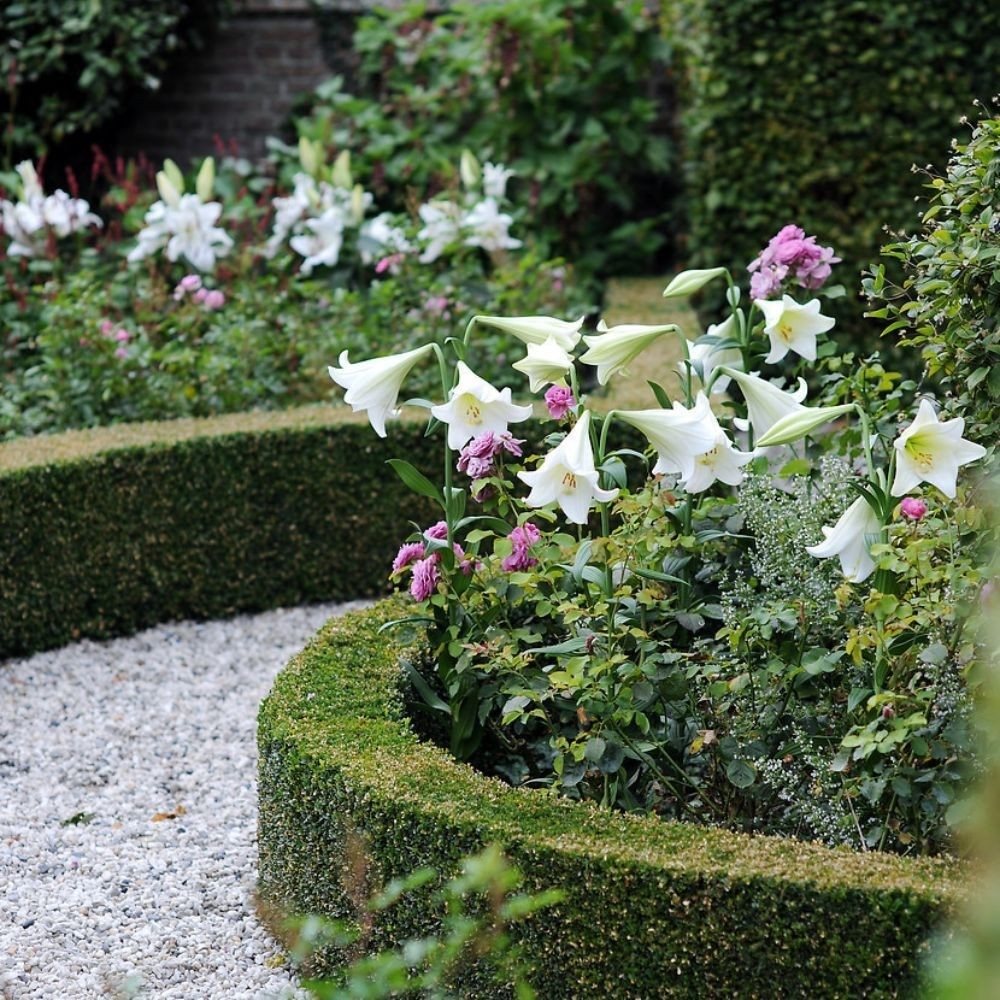
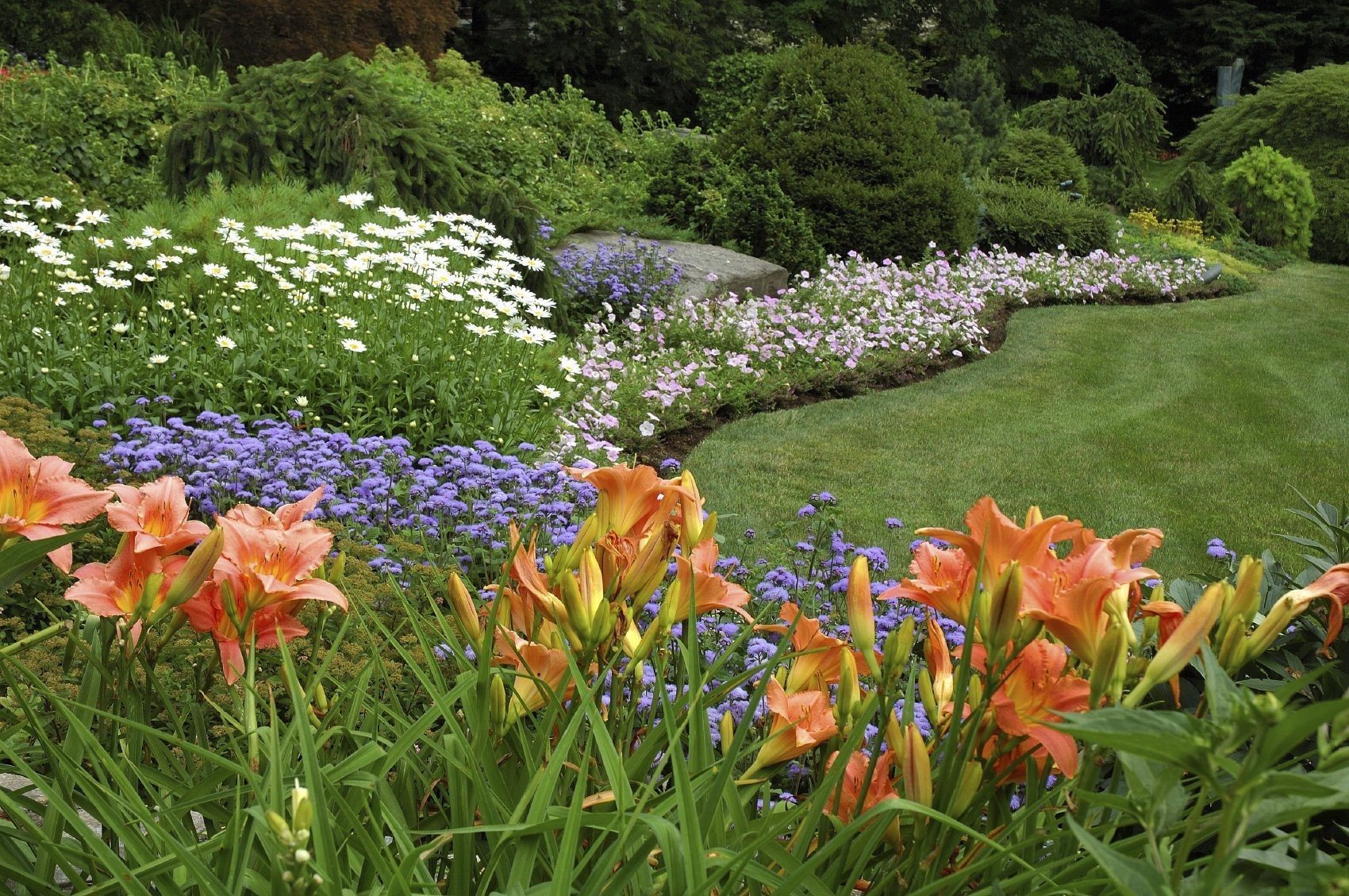

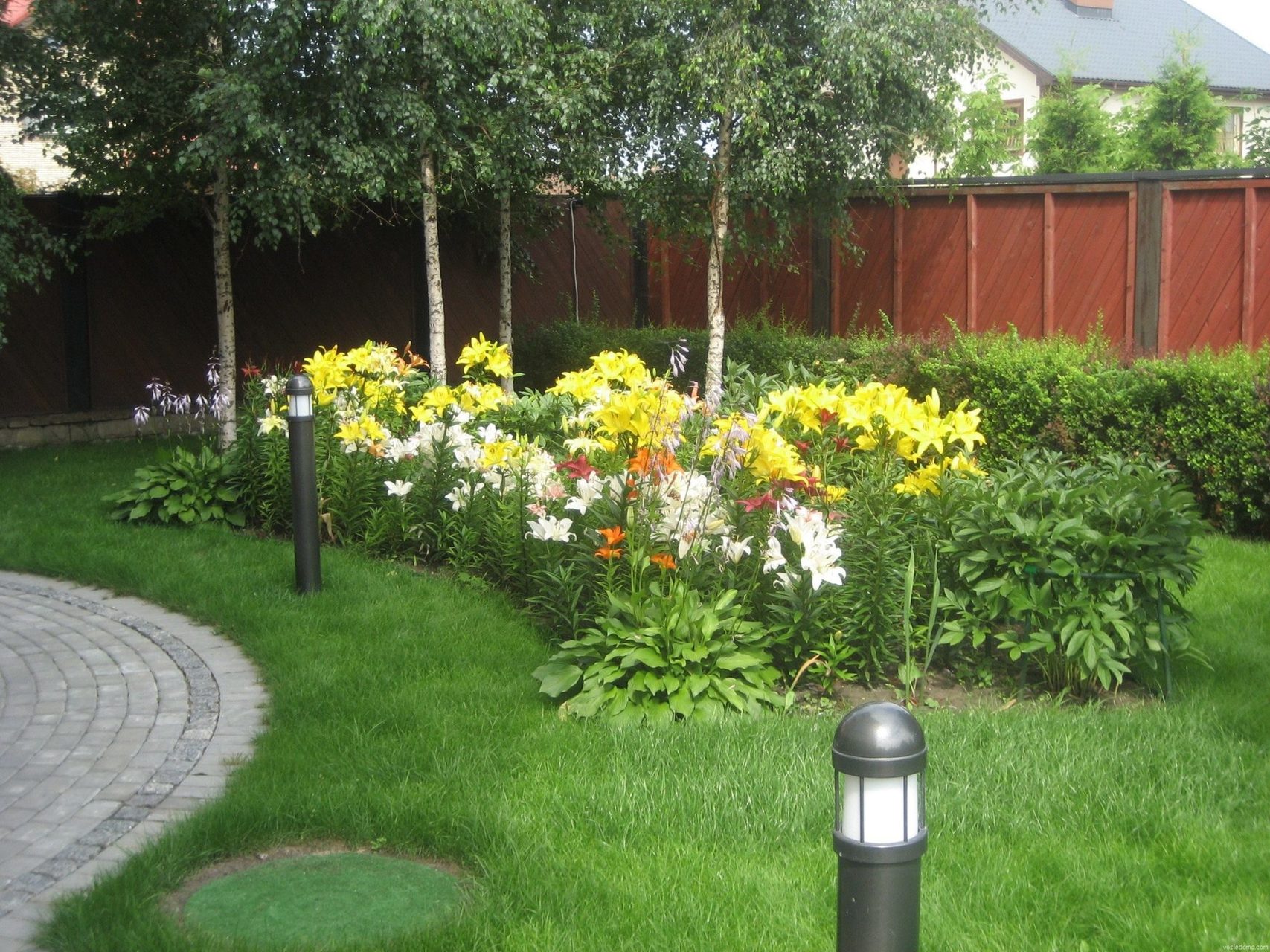
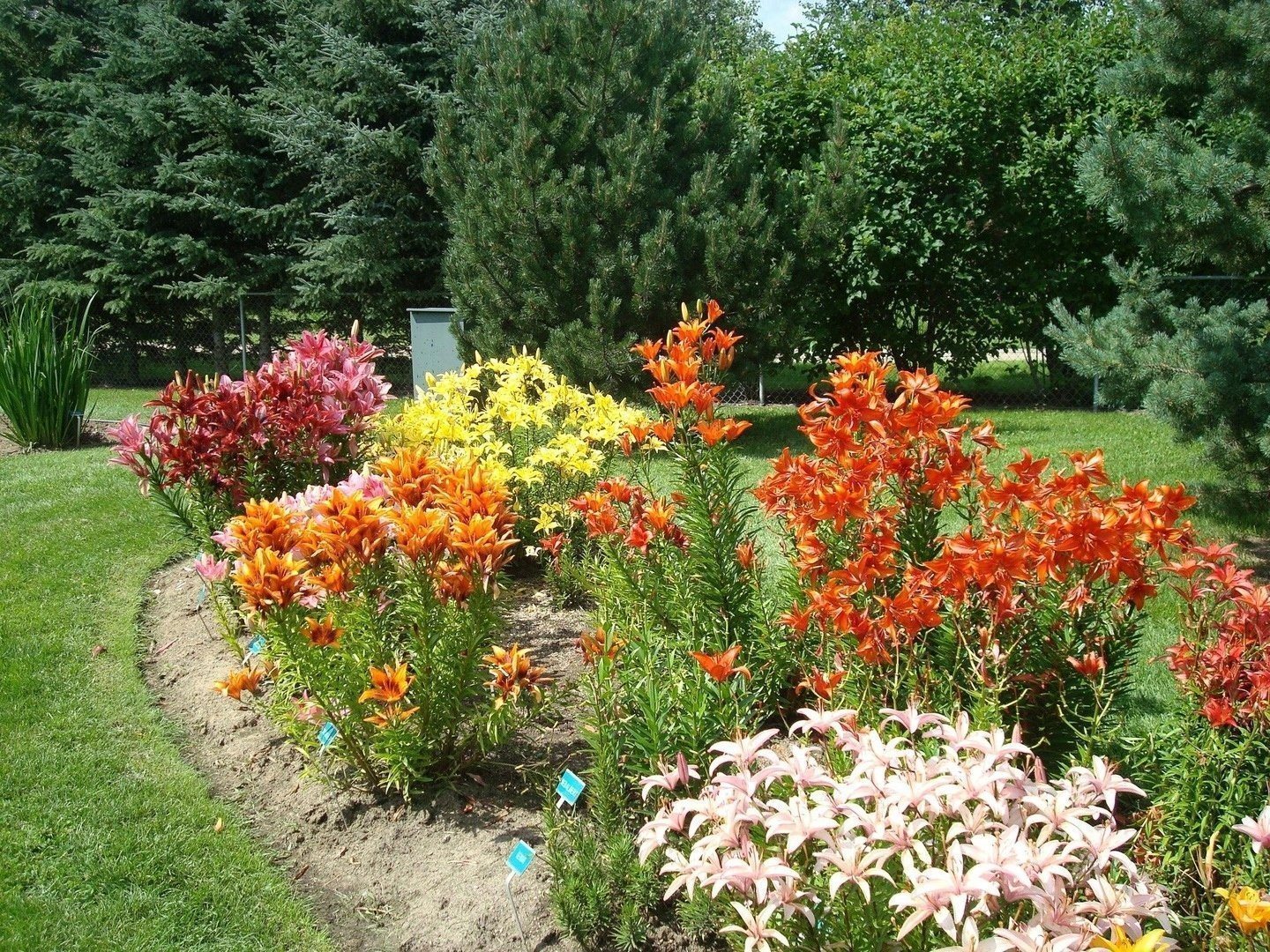
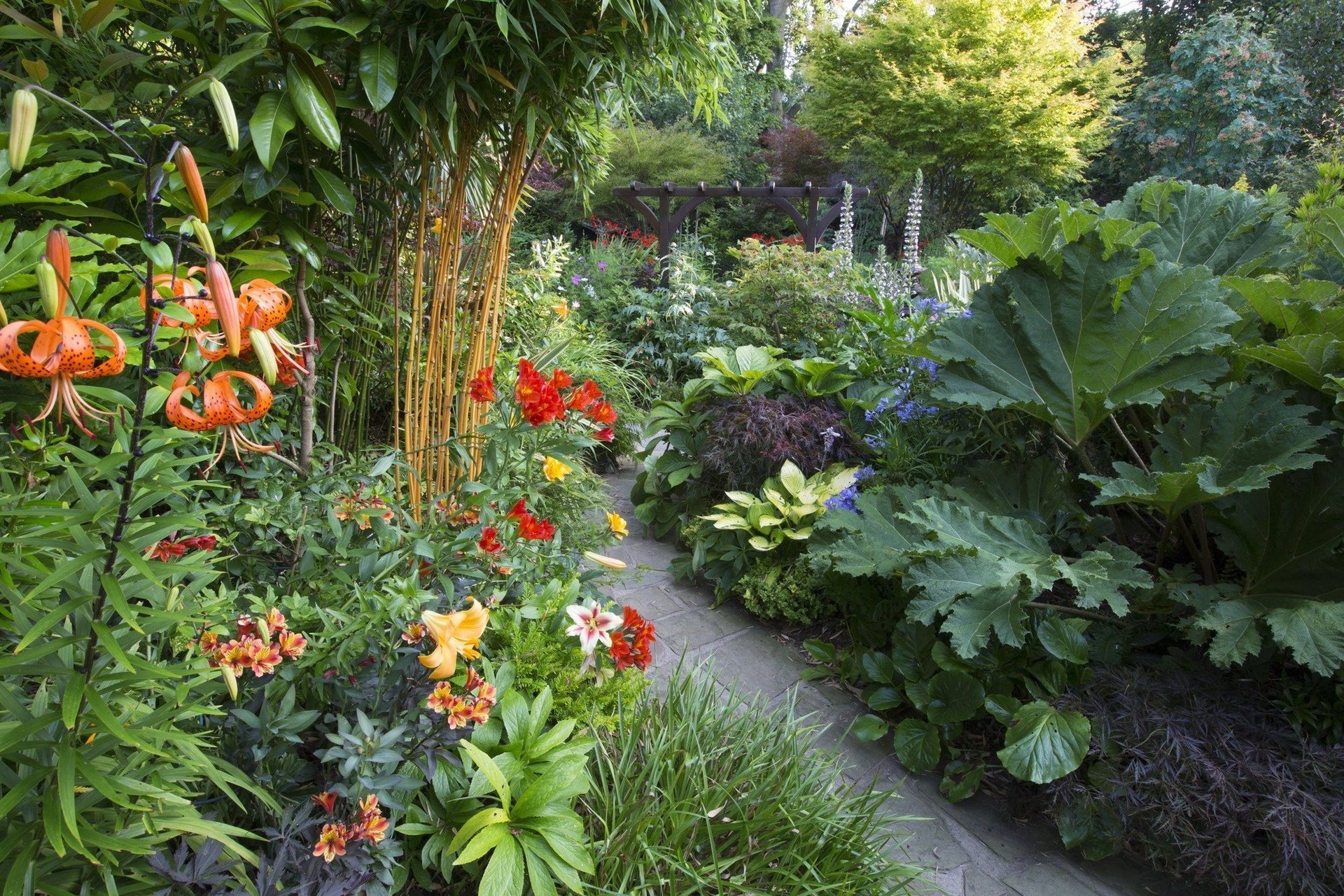

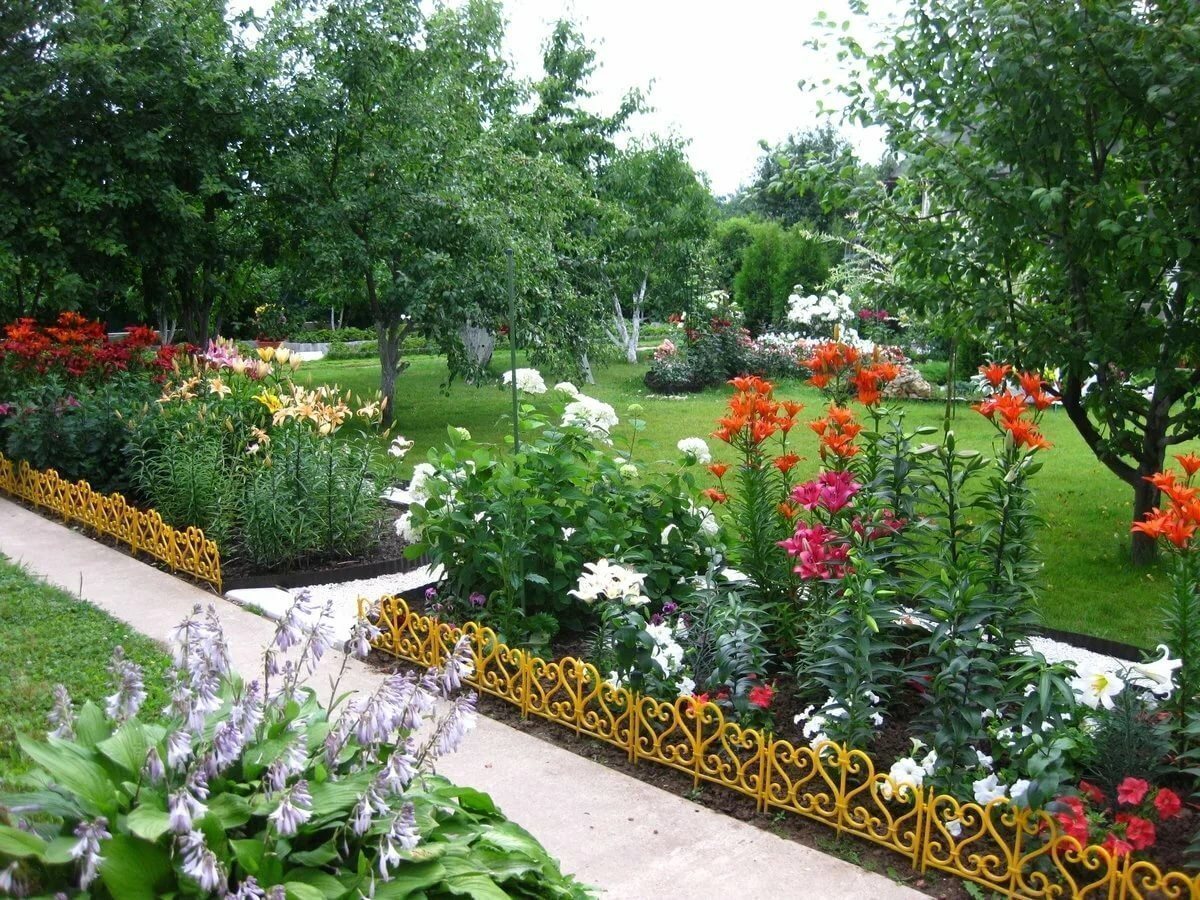
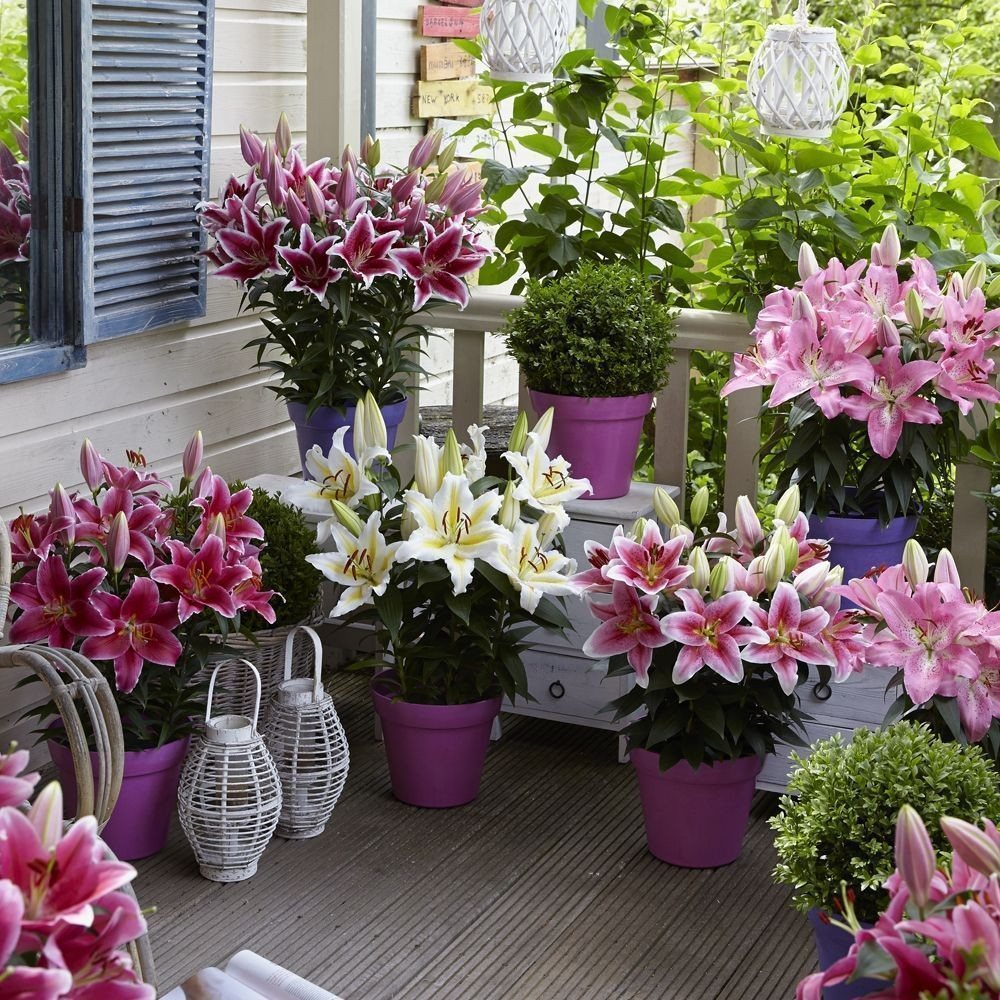
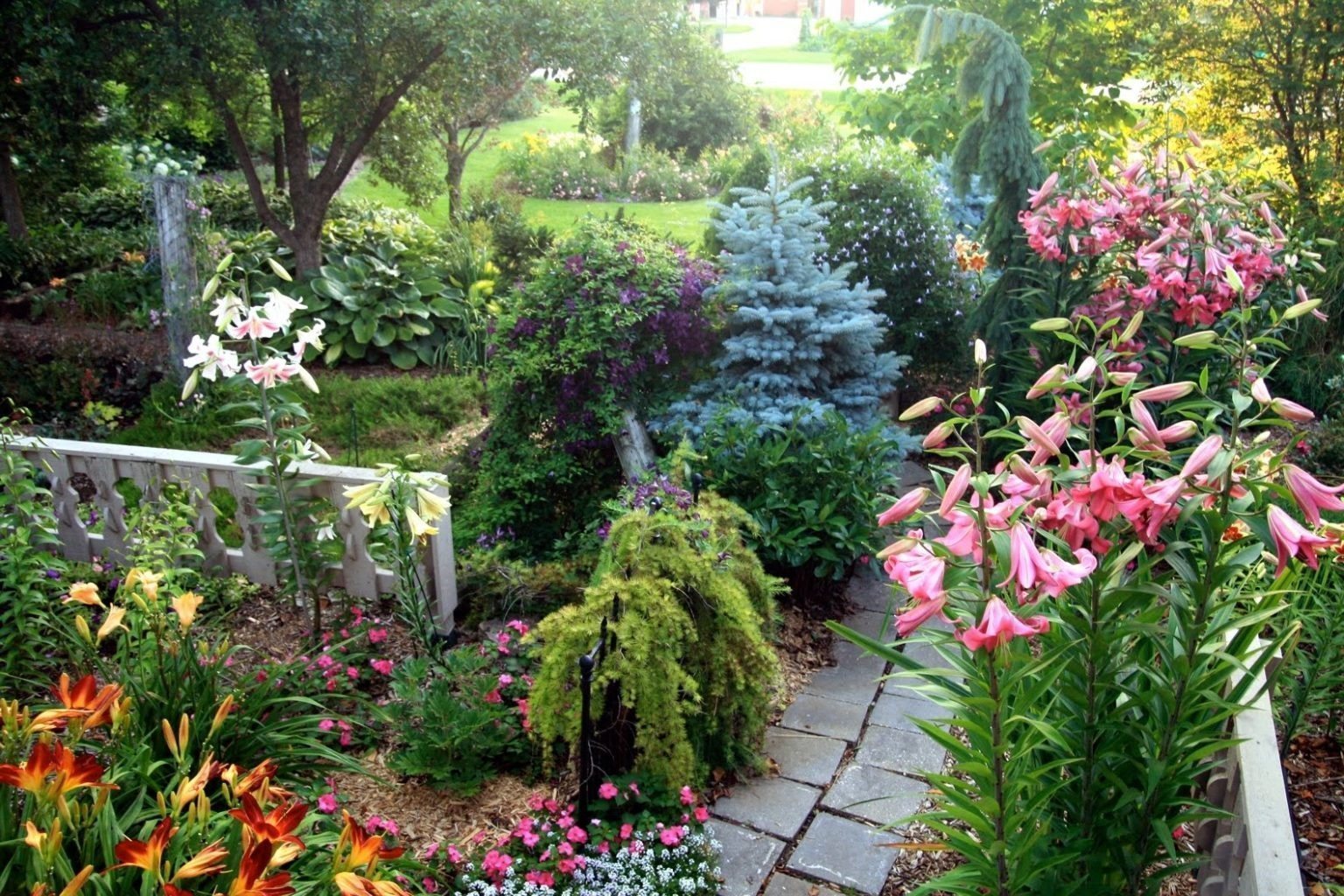










The disease has another name - sclerotial rot. It affects the bulbs, resulting in a moldy coating inside them between the scales. For treatment, it is necessary to soak the affected specimens in a solution of Maxima or Previkur Energy. Lilies can only be replanted in their original location after 5 years.
Phythium
The disease causes rotting of the root system. As a result, the above-ground part does not receive nutrition and dries out. For treatment, it is necessary to water the soil with a 0.4% solution of colloidal sulfur, and soak the bulbs in Vitaros.
- Blue mold
- The disease affects the bulbs during storage. White necrotic spots with a greenish coating appear on them. For treatment, it is necessary to soak the bulbs in Maxim's solution.
- Transplanting lilies in the fall: 5 useful tips for good flowering in the new season
- Penicillosis
This disease causes rotting of all parts of the lily. The affected areas are covered with a greenish coating. For treatment, you need to dig up the bulbs and soak them in a solution of potassium permanganate for 15 minutes.
Cucumber and tobacco mosaic viruses
A sign of the disease are light streaks and rings that appear on shoots and flowers. In this case, the plant stops developing. Affected specimens must be destroyed. The disease is transmitted by aphids.
Tulip variegation virus
The virus can be recognized by light streaks and spots on the petals. The disease cannot be cured. When damaged, the bulb becomes depleted and degenerates. Affected lilies must be destroyed.
Rust
With this fungal disease, light spots initially appear on the leaves, which are subsequently covered with a rusty coating. This leads to the gradual drying out of the plant. For treatment, it is necessary to remove and burn all affected areas, and then spray the perennial with Karbofos.
Rosette disease


